Gambro Dasco RFMOD GAMBRO RF MODULE User Manual Start ENG
Gambro Dasco GAMBRO RF MODULE Start ENG
Users Manual
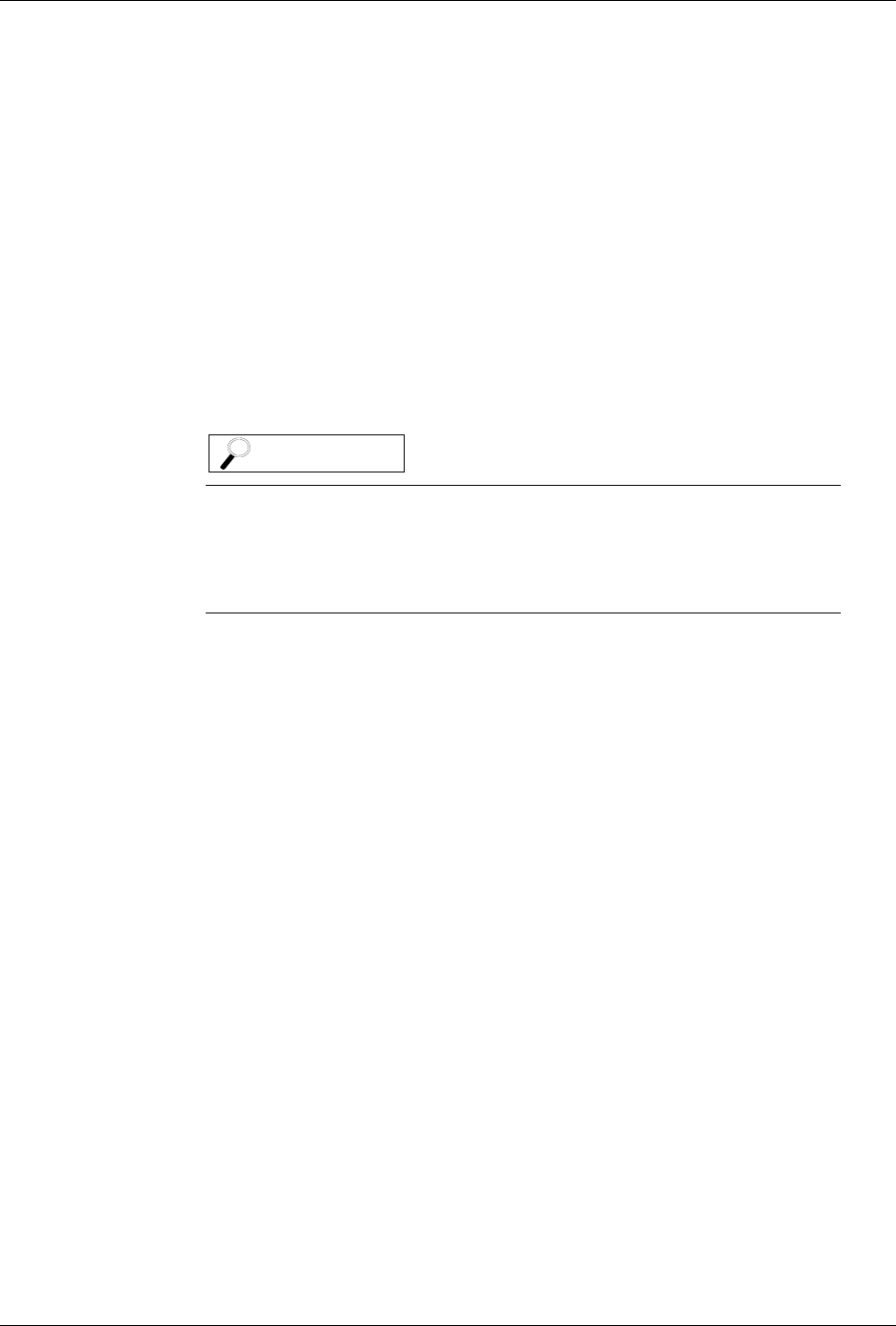
15-1
Chapter 15: Alarms and Troubleshooting
15.1 Alarm System
The machine has been designed to recognize and control various types of
malfunctions and faults. There are three ways in which the operator is
advised of an alarm condition:
• An Audible alarm signal;
• A Visual alarm signal with a flashing light at the top of the machine;
• An Alarm Message, displayed in the Alarm Area on the left bottom
side of the Touch Screen. The alarms are referenced by number,
located on the left side of the alarm message.
15.2 Alarm Classification
15.2.1 Classes of alarms
The alarms are classified according to their triggering cause, the part of
the machine affected and the type of intervention required from the
operator. Each alarm class is characterized by a specific visual and
audible alarm signal. The classes of Alarms will be described in
decreasing order of importance, i.e. the first is the most serious type of
alarm.
Class A: Alarms related to the safety of the patient, caused by internal
machine processes, requiring operator intervention to remove the cause,
returning the process data to the operating limits. They may be identified
by:
• A Visual alarm signal with a flashing Red light of 4-4 modulation (one
flash of 4/8 second, followed by a 4/8 second pause).
• An Audible alarm signal with a 4-4 modulation.
• An Alarm Message on the top of the Alarm Area.
Class B: Alarms not related to the safety of the patient, caused directly by
an operator error on the machine controls or caused by machine
conditions requiring operator intervention. These require operator
intervention. They may be recognized by:
If more than one alarm occurs at the same time, they are
automatically prioritized by the system.
The machine will restart the interrupted action only after all the
alarms have been solved.
NOTE

ARTIS Operator’s Manual
Cod. 6992200 - Rev. / 15-2
• A Visual alarm signal with a flashing Yellow light of 1-7 modulation (a
flash of 1/8 of a second, followed by a pause of 7/8 second).
• An Audible alarm signal with a 1-7 modulation.
• An Alarm Message on the top of the Alarm Area.
Class E: Alarms not related to the safety of the patient, caused by control
errors that may revert to normal without the need for operator intervention.
They usually require the intervention of a Service technician. They may be
identified by:
• A Visual alarm signal with a flashing Yellow light of 1-7 modulation (a
flash of 1/8 second, followed by a pause of 7/8 second).
• An Audible alarm signal with a 1-7 modulation.
• An Alarm Message on the top of the Alarm Area.
Class D: Alarms not related to the safety of the patient or to an error
condition, caused by machine state requiring the attention of the operator.
They may be identified by:
• A Visual alarm signal with a flashing Yellow light of 1-7 modulation (a
flash of 1/8 second, followed by a pause of 7/8 second).
• An Audible alarm signal with a 1-7 modulation.
• An Alarm Message on the top of the Alarm Area.
Class C: Alarms not related to the safety of the patient, caused due to
transitory control errors which usually revert to normal without operator
intervention. If these errors persist, the machine is probably not functioning
properly and a Service technician must be notified. They may be identified
by:
• A Visual alarm signal with a flashing Yellow light of 1-7 modulation (a
flash of 1/8 second, followed by a pause of 7/8 second).
• An Alarm Message on the top of the Alarm Area.
The operator can therefore identify the class of alarm with the aid of the
three types of indicators available and then take an appropriate action.
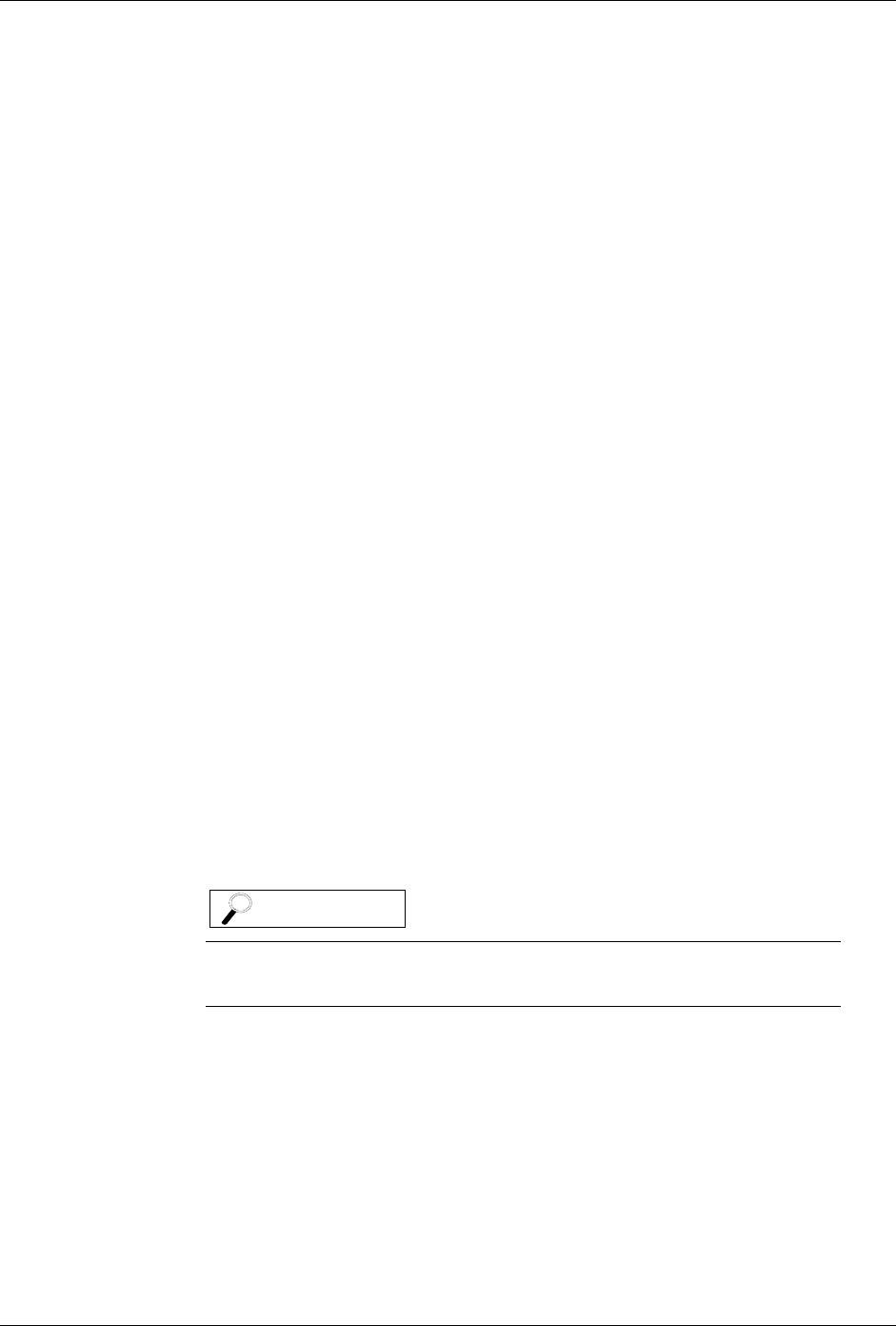
Chapter 15: Alarms and Troubleshooting
15-3 Cod. 6992200 - Rev. /
15.3 Levels of operator intervention
When an alarm condition occurs, the operator may be able to manually
deal with the problem, depending on its class.
The specific actions to take are described for each individual alarm. Four
types of intervention are possible:
• MUTE
• CONFIRM
• OVERRIDE
• RESET
15.3.1 Mute
It is possible to temporarily (for about 2 minutes) deactivate the audible
alarm signal, by pressing the MUTE key on the Hard Key Panel.
It is important to consider that during the MUTE status:
• The LED on the MUTE key switches ON.
• The Audible alarm is deactivated.
• The Visual alarm remains.
• The Alarm Message remains in the Alarm Area with the description of
each alarm.
It is possible to remove the MUTE status:
• Automatically: when the time has elapsed.
• Manually: by pressing the MUTE key.
15.3.1.1 Confirm
The CONFIRM operation forces a removing of the alarm, it clears the
audible and visible feedbacks as well as the time counters used to
generate the alarm. Therefore, the Confirm condition restores the
functionalities which has been previously stopped, bringing back the
machine as before the alarm generation.
After having solved the alarm causes, the operator can confirm the alarm
by pressing the CONFIRM button, displayed on the right top side of the
Alarm Area.
If a new alarm is triggered, different from the previous one, during
a MUTE status, the MUTE status will be automatically removed.
NOTE
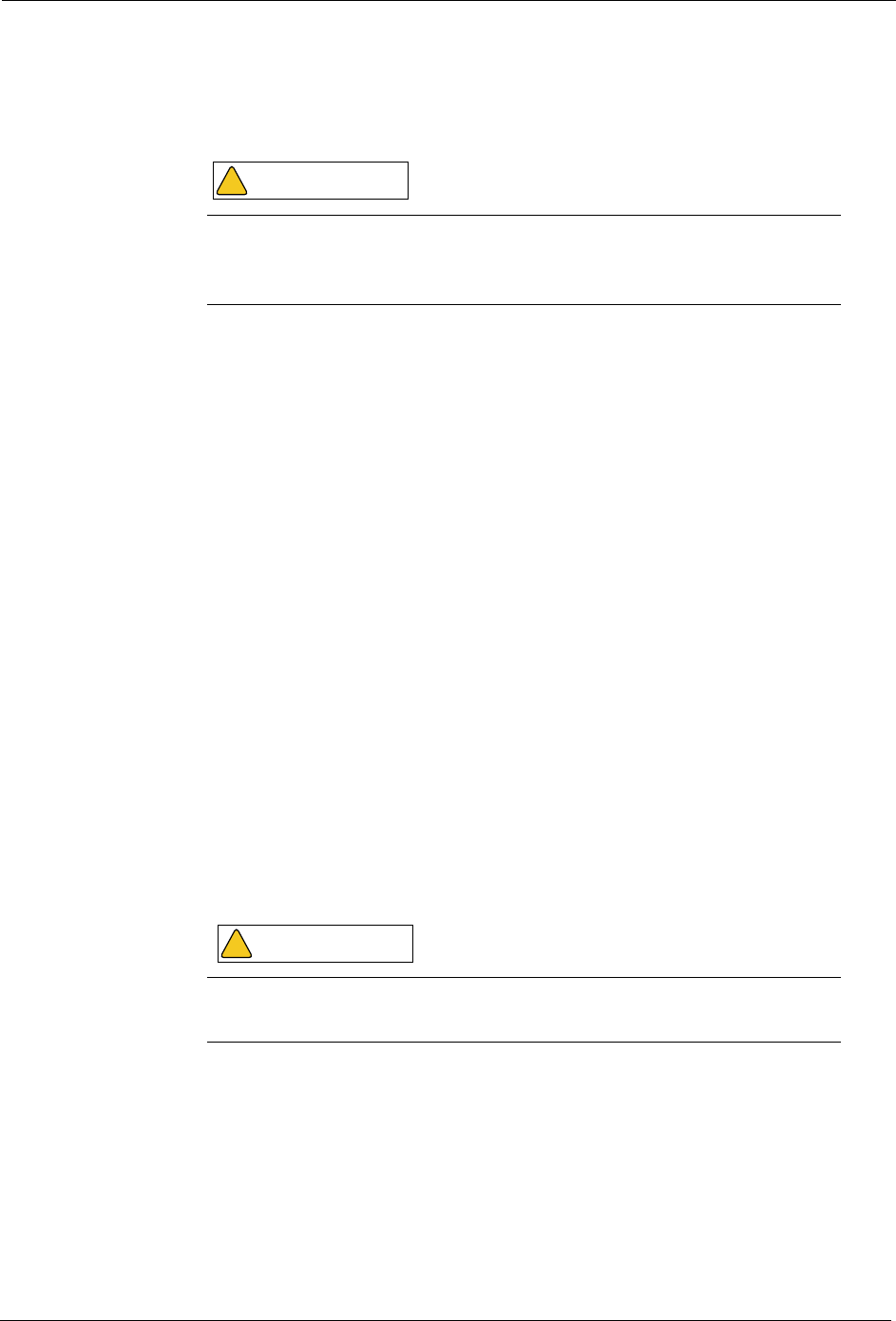
ARTIS Operator’s Manual
Cod. 6992200 - Rev. / 15-4
When the fault has been removed and the CONFIRM button pressed, the
conditions that have generated the alarm will be cleared and the previous
process will be resumed. However, if the safety conditions aren't still
satisfied, the alarm will reappear again.
15.3.2 Override
The Artis Dialysis System allows to OVERRIDE only the alarm related to a
Blood Leak Detection.
The OVERRIDE of this alarm can be performed to give the possibility to
ignore it and to continue the treatment. It is useful every time a recovery of
a dangerous situation requires the machine working, to reactivate some
functionality that was stopped due to the alarm presence.
To override the alarm, press the OVERRIDE button displayed in the Alarm
Area when the Blood in Dialysate alarm is triggered.
It is important to consider that during an override period:
• Some of the safety mechanisms are disabled for a limited period of
time (about 2 minutes);
• The Audible and the Visual alarm signals are maintained;
• The Alarm Message is still displayed in the Alarm Area.
If one or more additional faults cause an alarm during the OVERRIDE
state, the description relative to each fault is displayed in the Alarm Area.
15.3.3 Reset
Some alarms can be automatically RESET by the machine when there are
no more failures. In this cases, the confirm option is not available.
The RESET operation foresees an automatic removing of the alarm after
that the conditions that weren’t previously satisfied and that consequently
have generated an alarm, are satisfied again for a specified time interval,
dependent on the alarm itself.
Press the CONFIRM button to clear the alarm only after having
removed the causes of the alarm, as described on the message
displayed on the Alarm Area.
During an OVERRIDE status, the operator is responsible for
monitoring of the parameters that have been overridden.
WARNING
!
WARNING
!
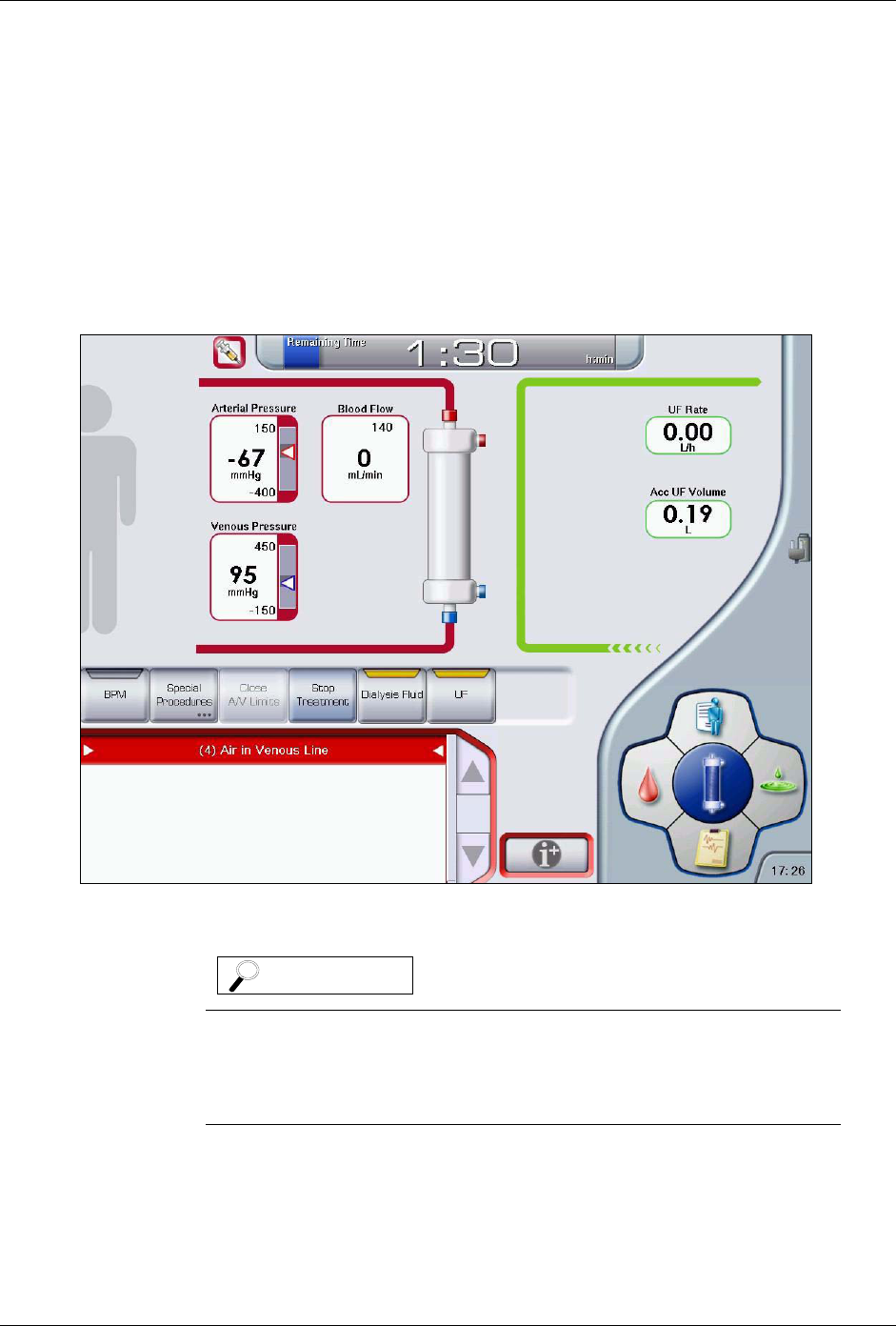
Chapter 15: Alarms and Troubleshooting
15-5 Cod. 6992200 - Rev. /
After an automatic alarm reset, the audible and visible feedbacks are
cleared and the functionalities, which have been stopped by the machine
at the start of the alarm, are restored again.
15.4 Guidelines to respond to an alarm situation
In case of an alarm condition, the operator should perform the following
actions:
1. Press the MUTE key to silence the Audible Alarm, if desired.
2. Observe the Alarm Message in the Alarm Area on the left bottom of
the Touch Screen.
Figure 15-1. Alarm Area
3. If more than five alarms are triggered, it is possible to scroll the Alarm
window up and down using the Scroll Buttons.
4. Determine the cause of the alarm. If uncertain about the cause or the
appropriate response to the alarm, refer to the “15.6 Alarm
The alarm message can be marked in:
• blue, if the alarm is intended to notify or remind the operator
about specific machine condition/end of procedures.
• red, in all the other conditions.
NOTE

ARTIS Operator’s Manual
Cod. 6992200 - Rev. / 15-6
Troubleshooting” Section in this Chapter, for possible causes and
solutions. If a Help window is available, the “I+” button is displayed.
5. Correct the cause of the alarm as described in “15.6 Alarm
Troubleshooting”.
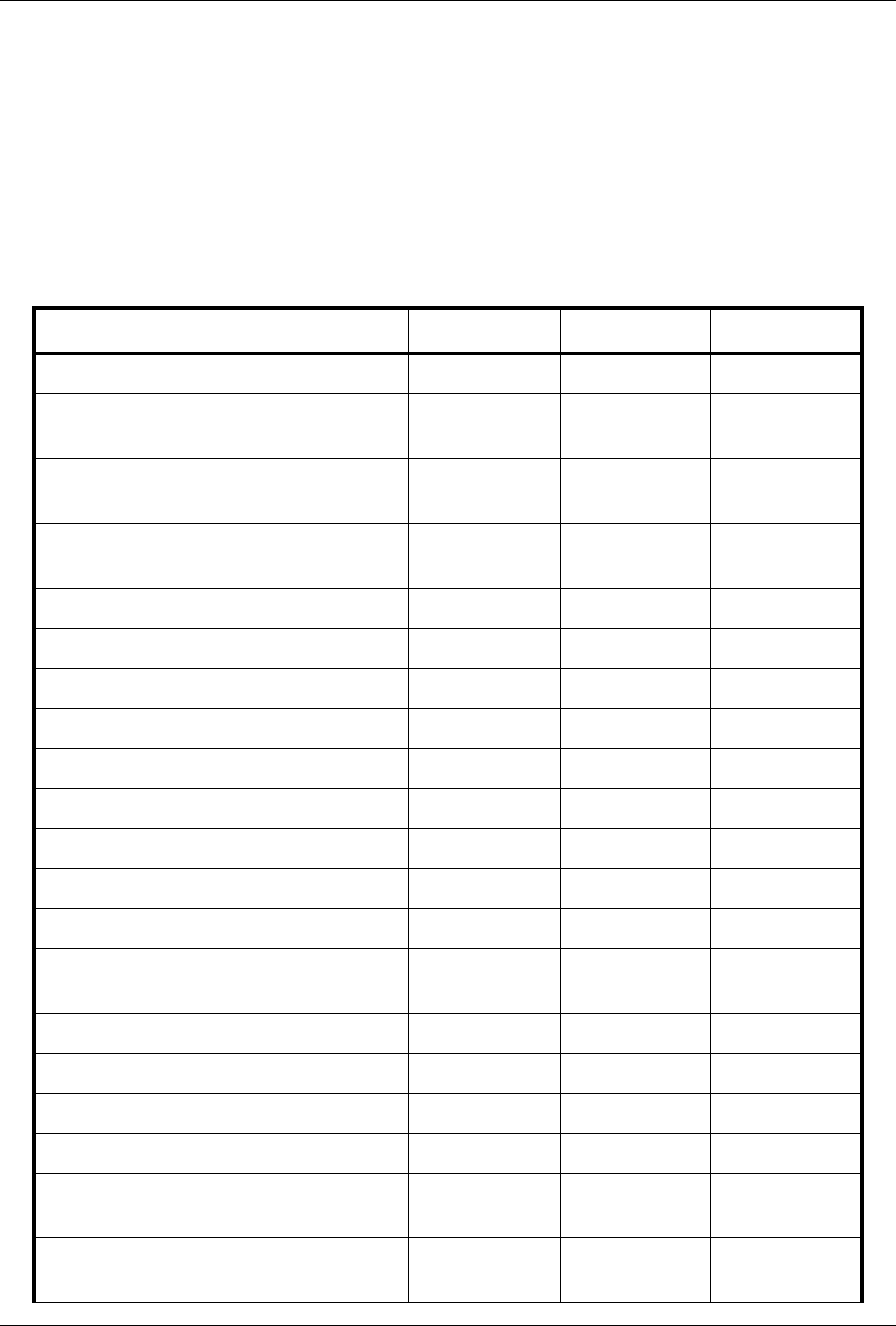
Chapter 15: Alarms and Troubleshooting
15-7 Cod. 6992200 - Rev. /
15.5 Alphabetic List of Alarms
The table below contains a list of all the alarms in alphabetical order,
indicating:
• The message that appears on the Touch Screen;
• The Technical Code;
• The Class;
• The possibility or not to CONFIRM the alarm.
ALARM MESSAGE CODE CLASS CONFIRM
<< GENERAL SYSTEM FAILURE>> XXX A NO
80% Maximum Substitution Volume
Reached 551 E YES
90% Maximum Substitution Volume
Reached 552 E YES
Acid/Acetate Concentrate Container
Empty 1AYES
Acid/Acetate Concentrate Error 369 A NO
Air Detector Cleaning Required 583 A YES
Air Detector Inspection Required 584 A YES
Air in Blood T0 Failure 385 A YES
Air in Hydraulic Pathway (LD1) 33 E NO
Air in Hydraulic Pathway (LD2) 35 E NO
Air in Venous Line 4 A NO
Arterial Infusion Line Open 519 E YES
Arterial Line Clamped 517 E YES
Arterial Pressure Below Treatment
Min. Limit 306 A YES
Arterial pressure high 305 A YES
Arterial pressure high 457 A YES
Arterial pressure low 384 A YES
Arterial pressure out of range 11 A YES
Arterial Pump Segment Not Correctly
Loaded 586 E YES
Autoscheduled Disinfection/Rinse
Program not Performed 562 A YES
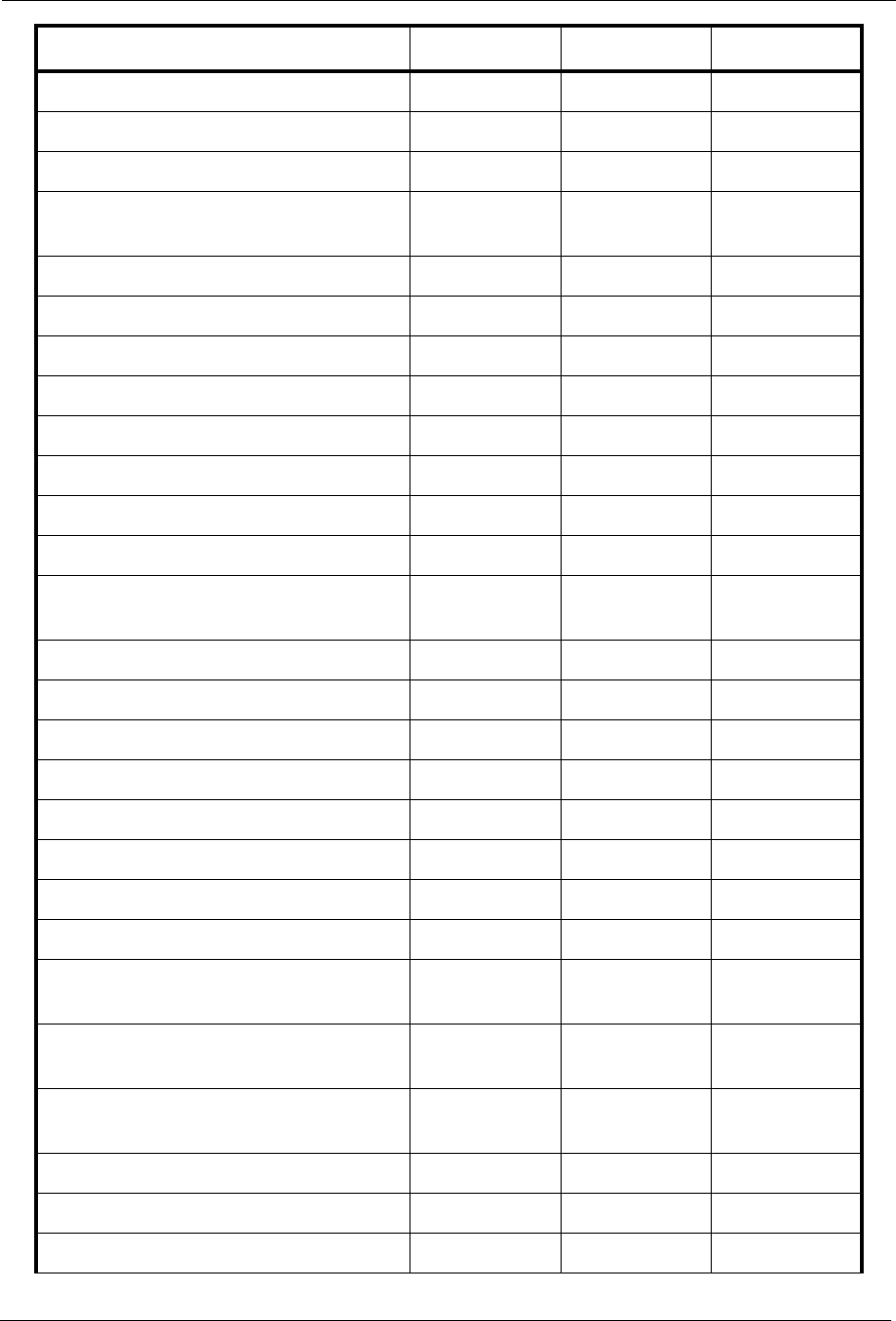
ARTIS Operator’s Manual
Cod. 6992200 - Rev. / 15-8
Backup battery failure 183 E YES
Bicarbonate Concentrate Error 370 A NO
BiCart cartridge empty 21 A YES
Bioslave Subsystem Communication
Error 296 E NO
BLD Sensitivity Loss 170 E YES
Blood Cassette presence required 507 A NO
Blood in Dialysate 28 A NO
Blood Lines Clamped 509 A YES
Blood pump cover open 8 B NO
Blood pump rotor error 13 B YES
Blood Pump Rotor Error 363 A YES
Blood pump speed error 12 B YES
Blue Dialysis Fluid Tube Incorrect
Position 330 B NO
BPM Diastolic pressure alarm 46 A YES
BPM failure 30 A YES
BPM Heart rate alarm 66 A YES
BPM Measurement failure 31 A YES
BPM Systolic pressure alarm 132 A YES
Cassette Repositioning Failed 557 E YES
CDF1 Ultrafilter Lower Switch Error 61 E NO
CDF2 Ultrafilter Lower Switch Error 563 E NO
Chemical Process Not Properly
Performed: Disinfectant Tank Empty 533 A YES
Communication Protective Cond. Cell
Stopped 449 A YES
Communication Select Cond. Cell
Stopped 450 A YES
Conductivity too high 463 A NO
Conductivity too low 462 A NO
Dialysate pH high 40 A NO
ALARM MESSAGE CODE CLASS CONFIRM
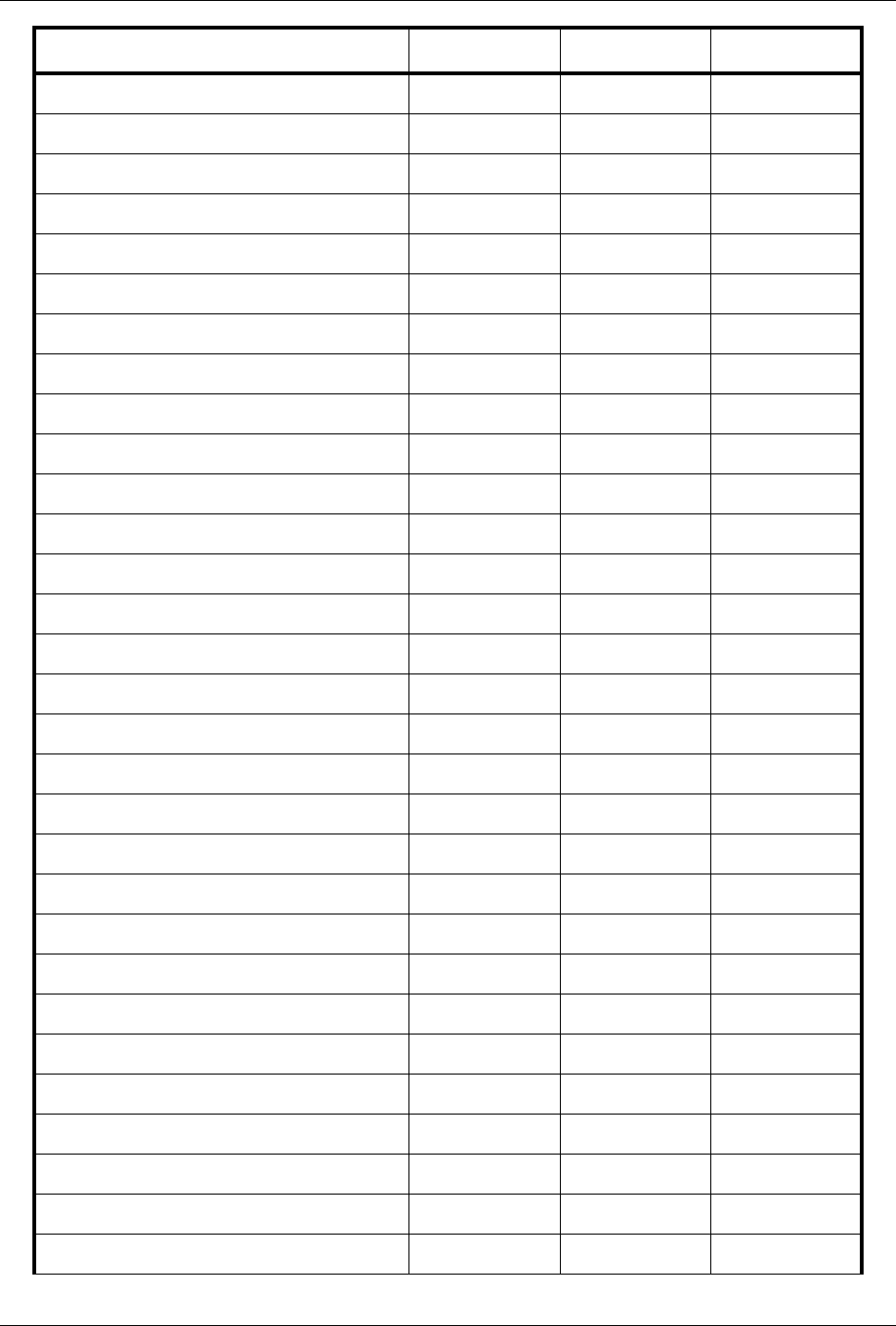
Chapter 15: Alarms and Troubleshooting
15-9 Cod. 6992200 - Rev. /
Dialysate pH low 368 A NO
Dialysate Pressure High 146 B YES
Dialysate Pressure Low 540 B YES
Dialysis fluid flow high 44 A NO
Dialysis fluid flow low 373 A NO
Dialysis fluid flow too low 425 A YES
Dialysis fluid temp high 134 A NO
Dialysis fluid temp low 377 A NO
Dialysis fluid temp too high 460 A NO
Dialysis fluid temp too low 461 A NO
Dialyzer Inlet Pressure High 87 A YES
Dialyzer Inlet Pressure Low 94 A YES
Dialyzer Outlet Pressure High 88 A YES
Dialyzer Outlet Pressure Low 95 A YES
Dialyzer Pressure Maximum 114 A NO
Dialyzer Pressure Minimum 115 A NO
Diascan measurement error 536 A YES
Diascan: Autocalibration Failure 528 B NO
Diascan: Low Clearance 530 D YES
Diascan: Low Kt/V 531 D YES
Diascan: Measurement Failure 529 B YES
Disinfection not Properly Performed 534 B YES
Flowmeter Alignment Failed 506 A YES
Fluid path obstruction 206 A YES
Fluid Removal Complete 53 B YES
Hemoconcentration Risk 524 E YES
Hemocontrol Error 554 A YES
Hemocontrol: BV% not available 234 B YES
Hemocontrol: Early on Prescription 230 B YES
Hemocontrol: High Na Concentration 231 B YES
ALARM MESSAGE CODE CLASS CONFIRM
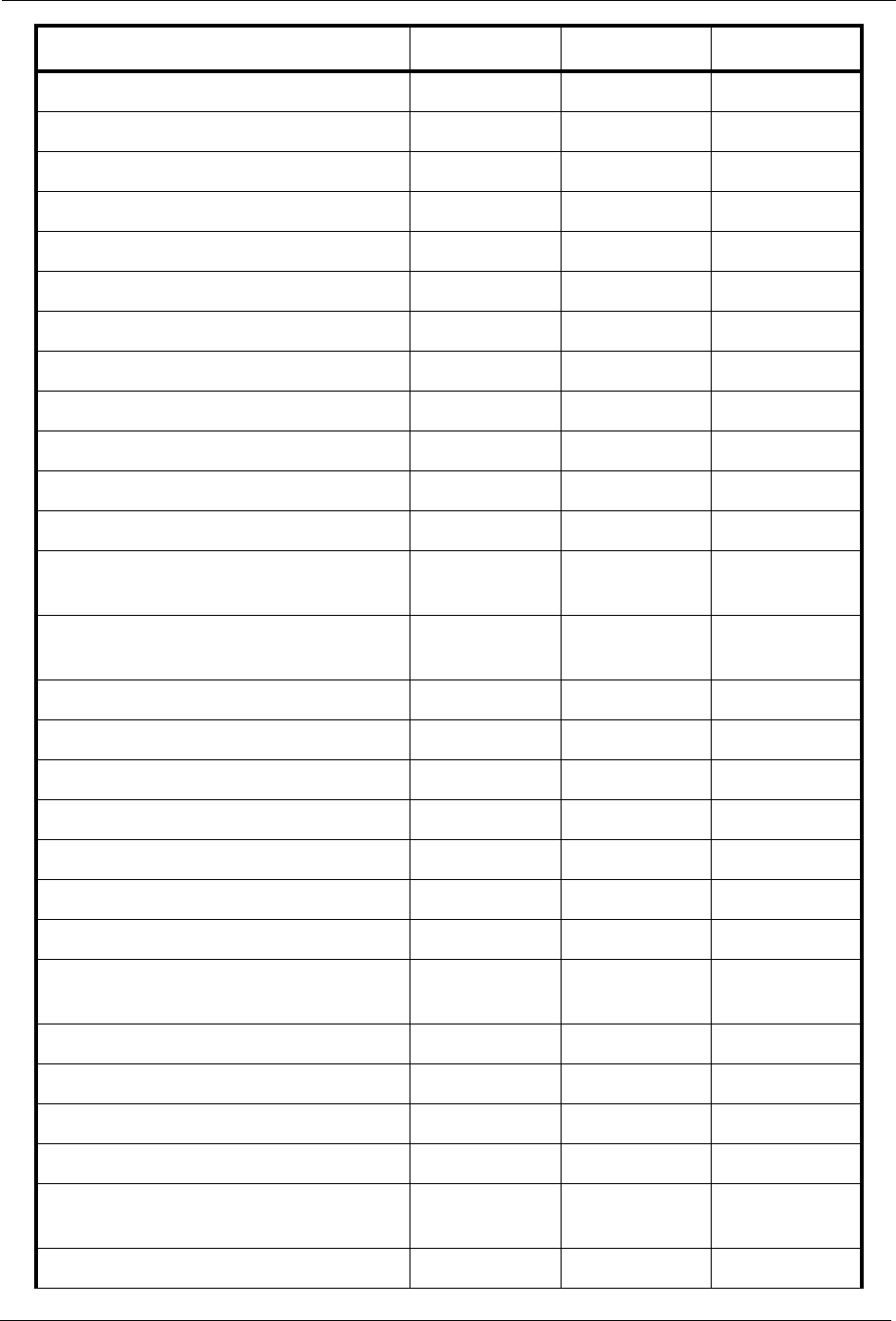
ARTIS Operator’s Manual
Cod. 6992200 - Rev. / 15-10
Hemocontrol: Late On Prescription 229 B YES
Hemocontrol: Low Na Concentration 232 B YES
HEMOSCAN Autocalibration Failure 473 B NO
HEMOSCAN: DARK Out of Range 223 C NO
HEMOSCAN: L/H Out of Range 226 C NO
HEMOSCAN: Minimum Blood Volume 191 E NO
HEMOSCAN: TEST Out of Range 225 C NO
Heparin infusion complete 58 B YES
Heparin pump lower limit reached 69 E NO
Heparin pump overload 55 A NO
Heparin pump speed error 70 B YES
Heparinization Not Initiated 71 B YES
Hydraulic Centralise Acetate
Connector Type One 565 E NO
Hydraulic Centralise Acetate
Connector Type Two 566 E NO
Hydraulic Sensor Dirty (LP) 34 E NO
Incorrect bicarbonate concentrate 18 B NO
Incorrect bicarbonate concentration 23 A NO
Incorrect bicarbonate concentration 366 A NO
Incorrect bicarbonate concentration 464 A NO
Incorrect bicarbonate concentration 465 A NO
Incorrect BiCart Holder Arms Position 22 B NO
Incorrect Cassette line connections or
clamps status 542 A YES
Incorrect concentrate connector 2 B NO
Incorrect conductivity measured 62 A NO
Incorrect conductivity measured 375 A NO
Incorrect fluid conductivity detected 496 A NO
Incorrect venous or arterial line
position in clamp 205 A NO
Insert the HEMOSCAN cuvette 454 B NO
ALARM MESSAGE CODE CLASS CONFIRM
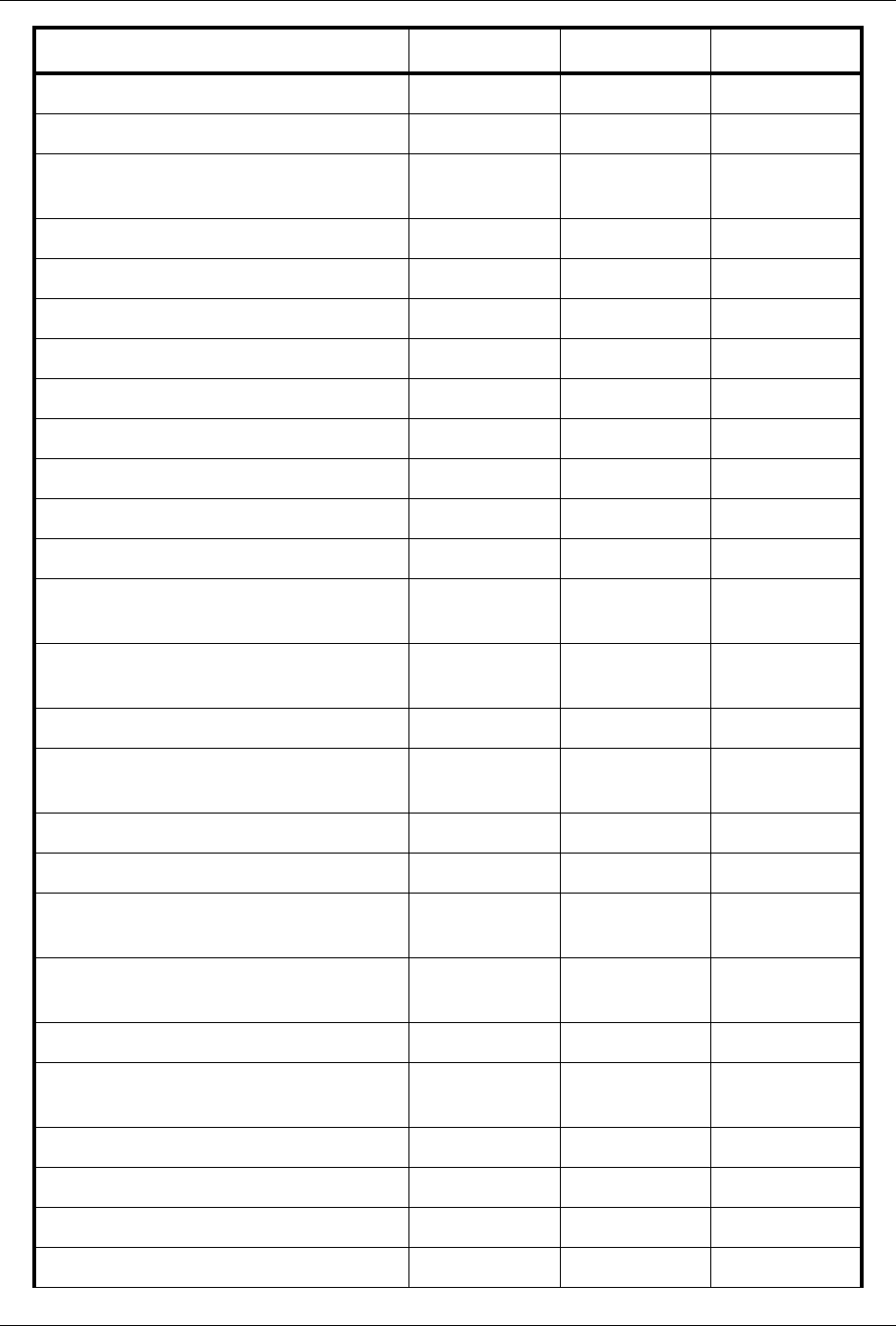
Chapter 15: Alarms and Troubleshooting
15-11 Cod. 6992200 - Rev. /
Insufficient water supply 100 A NO
Isolated UF Completed 570 D YES
Isolated UF target loss will not be
achieved 581 E NO
Leakages H 548 E YES
Leakages I 549 E YES
Leakages Test (A) Failure 467 E YES
Leakages Test (B) Failure 468 E YES
Leakages Test (C) Failure 469 E YES
Leakages Test (D) Failure 470 E YES
Leakages Test (E) Failure 498 E YES
Leakages Test (F) Failure 499 E YES
Leakages Test (G) Failure 500 E YES
Left Blue EvaClean door incorrect
position 416 B NO
Line Not Connected in EvaClean Port
or Access Line Open 518 E YES
Low blood pump speed 204 A YES
Low Disinfectant Level in last Clean
Cart Process 504 E YES
Low Heparinization 573 A YES
Low Temperature 81 D NO
Maximum Substitution Volume
reached 546 A YES
Maximum Substitution Volume
reached 553 E YES
MAXIMUM TEMPERATURE LIMIT 90 A NO
Na or Bic Settings result in
conductivity out of range 401 E NO
New Ultra Scan is suggested 545 E YES
No power - Using battery backup 353 A NO
No Power - Using Battery Backup 415 A YES
Not Performing UF 443 E YES
ALARM MESSAGE CODE CLASS CONFIRM
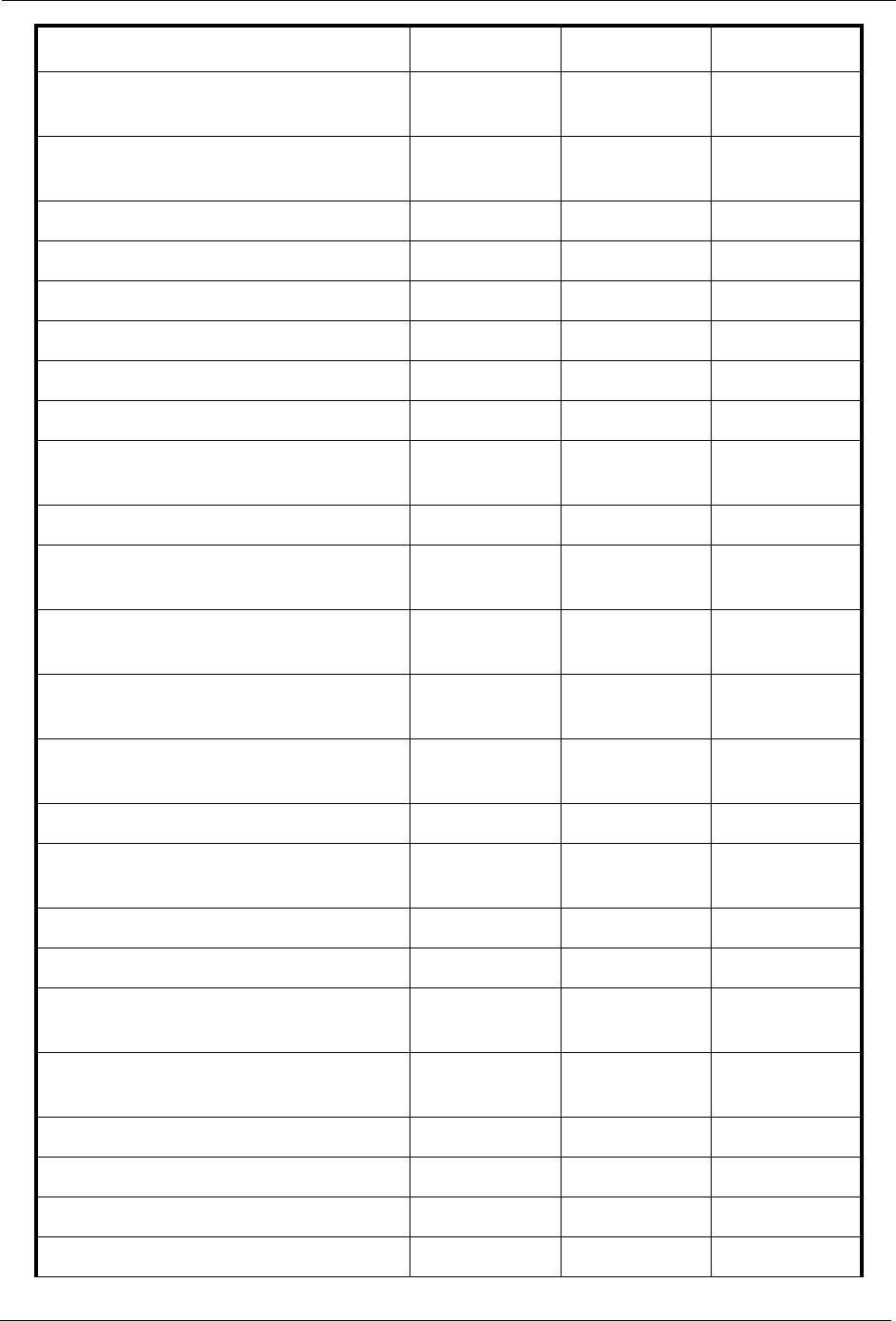
ARTIS Operator’s Manual
Cod. 6992200 - Rev. / 15-12
On line blood restitution: wrong Ultra
Cassette configuration 579 A YES
On line Prime - Incorrect Ultra or
Blood cassette configuration 580 A YES
On-line door incorrect position 423 E NO
Patient Venous Line Incorrect Position 547 E YES
PDr Pressure High 452 A YES
PDr Pressure Low 453 A YES
Power Failure: Check Power Supply 550 E YES
Pre Filter Pressure High 541 A YES
Preparation can not proceed until
dressing is complete 576 E NO
Preparation Completed 559 E YES
Preparation not Completed - Incorrect
Condition on Acetate Distribution 476 A YES
Preparation not Completed - Incorrect
Condition on Bicarbonate Distribution 477 A YES
Preparation not Completed - Incorrect
Condition on D1 Flow Rate 474 A YES
Preparation not Completed - Incorrect
Condition on TcA 475 A YES
Pressure Alarm Limits Still Expanded 525 E NO
Priming Completed
(See NOTE 1)560 E YES
Pump speed too high 10 A YES
Pump speed too low 362 A YES
Red Dialysis Fluid Tube Incorrect
Position 331 B NO
Reminder - HDF Substitution Still
Disabled 526 E YES
Reminder - Still In Isolated UF 479 E YES
Reminder - Still in Pause Therapy 329 E YES
Reminder - Wrong Dip Switches 502 E YES
Reminder: 558 E YES
ALARM MESSAGE CODE CLASS CONFIRM
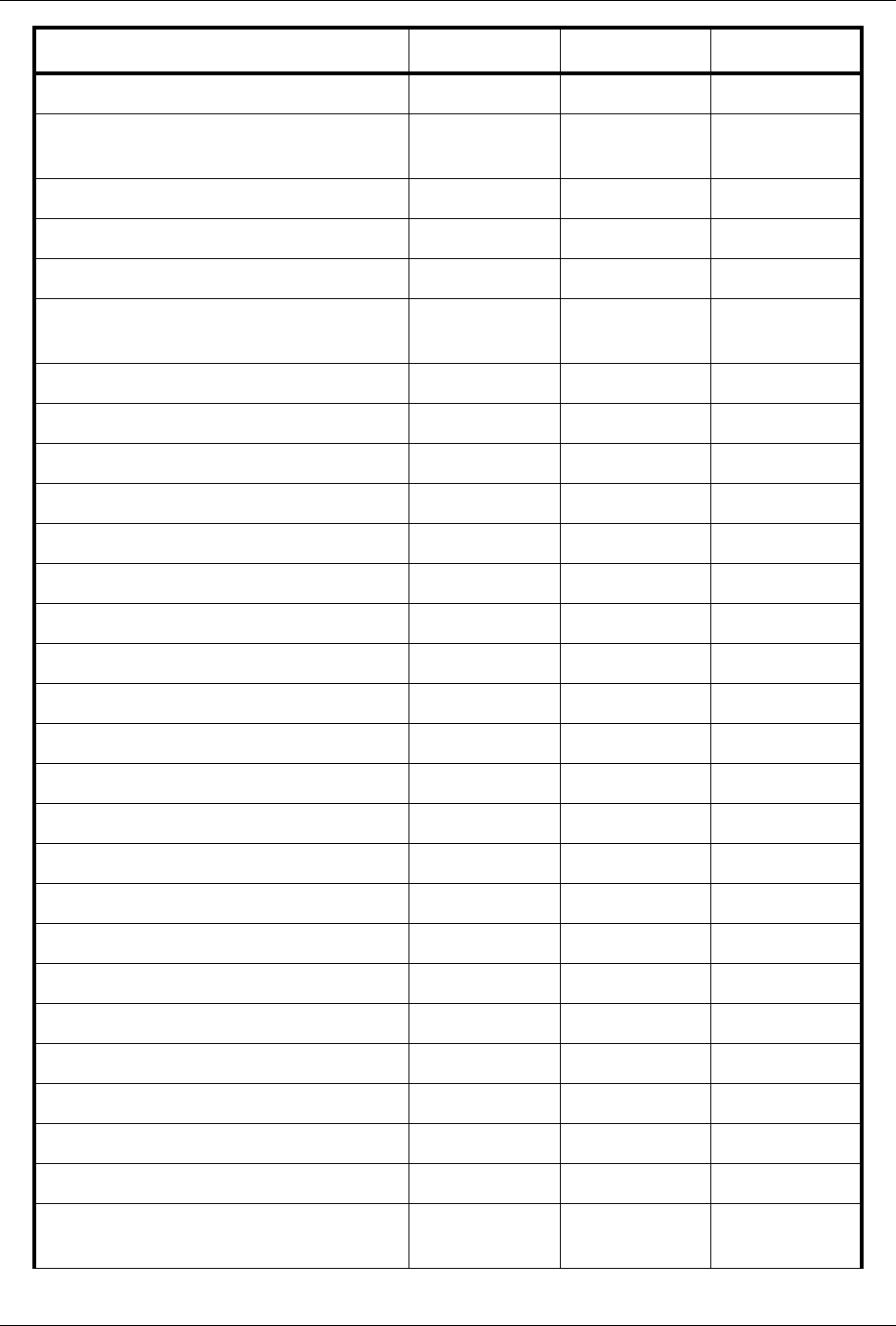
Chapter 15: Alarms and Troubleshooting
15-13 Cod. 6992200 - Rev. /
Residual Check Reminder 582 E YES
Right Red EvaClean door incorrect
position 417 A NO
Saline Bag Not Connected 515 E YES
Saline Bag Empty 585 E YES
Select Bag Holder Incorrect Position 411 D NO
Select Cart Holder Arms Incorrect
Position 3BNO
Sensor Bar Door Open 424 E NO
Smart Scan - High QD 514 D YES
Smart Scan - Low QB 512 D YES
Smart Scan - Low QD 513 D YES
Smart Scan – Low Real QB 577 D YES
Still in bypass 302 E YES
SUPPLY VOLTAGE INCORRECT 187 E NO
System Pressure out of range 522 A YES
T1 Test Arterial Pressure 447 E YES
T1 Test Arterial Pump/ABD 419 E YES
T1 Test Conductivity Cells Failed 445 E YES
T1 Test Flow Meters 422 E YES
T1 Test Pre Filter Pressure 418 E YES
T1 Test Temperature Failed 444 E YES
T1 Test Venous Pressure 446 E YES
Timeout on Data Reception 532 D YES
TMP High 68 A YES
TMP Low 142 A YES
TMP Set too Low 567 E NO
TMP Maximum Limit 527 E NO
Tool not Connected 561 E YES
Treatment can not begin until the
ultrafilters have been replaced 571 A NO
ALARM MESSAGE CODE CLASS CONFIRM
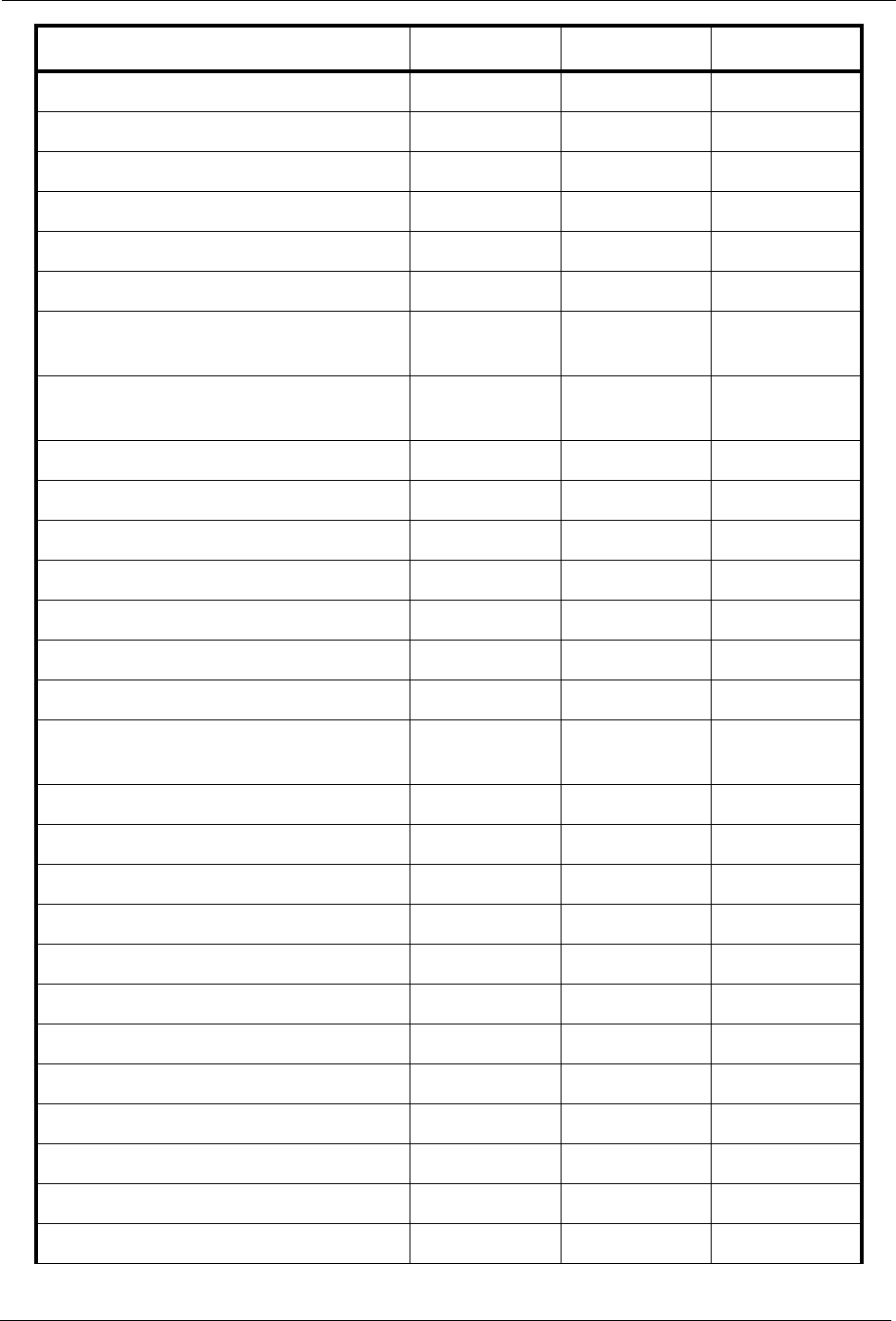
ARTIS Operator’s Manual
Cod. 6992200 - Rev. / 15-14
Treatment Time Complete 51 B YES
UF Deviation 505 A NO
UF rate higher than expected 145 A YES
UF rate lower than expected 379 A YES
UF target will not be achieved 60 B NO
Ultra Inlet Tube Clamped 556 A YES
Ultra Scan aborted: TMP Set and
Upper Limit Updated 543 E YES
Ultra Scan completed: TMP Set and
Upper Limit Updated 544 E YES
Ultrafilter Cover Error 564 E NO
Ultrafilter Replacement Reminder 402 D YES
Venous Flow Maximum 413 A YES
Venous Flow Minimum 412 A YES
Venous Infusion Line Open 587 A YES
Venous Line Clamped 516 E YES
Venous line not in patient sensor 364 A NO
Venous Pressure Below Treatment
Min. Limit 459 A YES
Venous pressure high 155 A YES
Venous pressure low 382 A YES
Venous Pressure Not Decreasing 472 A YES
Venous Pressure Not Increasing 351 A YES
Venous pressure out of range 153 A YES
Venous pressure too high 154 A YES
Venous pump cover is open 149 B NO
Venous pump rotor error 158 B YES
Venous pump rotor error 521 A YES
Venous pump speed error 157 B YES
Water Leakage 539 A NO
Wrong A/V or System Pressure Offset 319 E YES
ALARM MESSAGE CODE CLASS CONFIRM
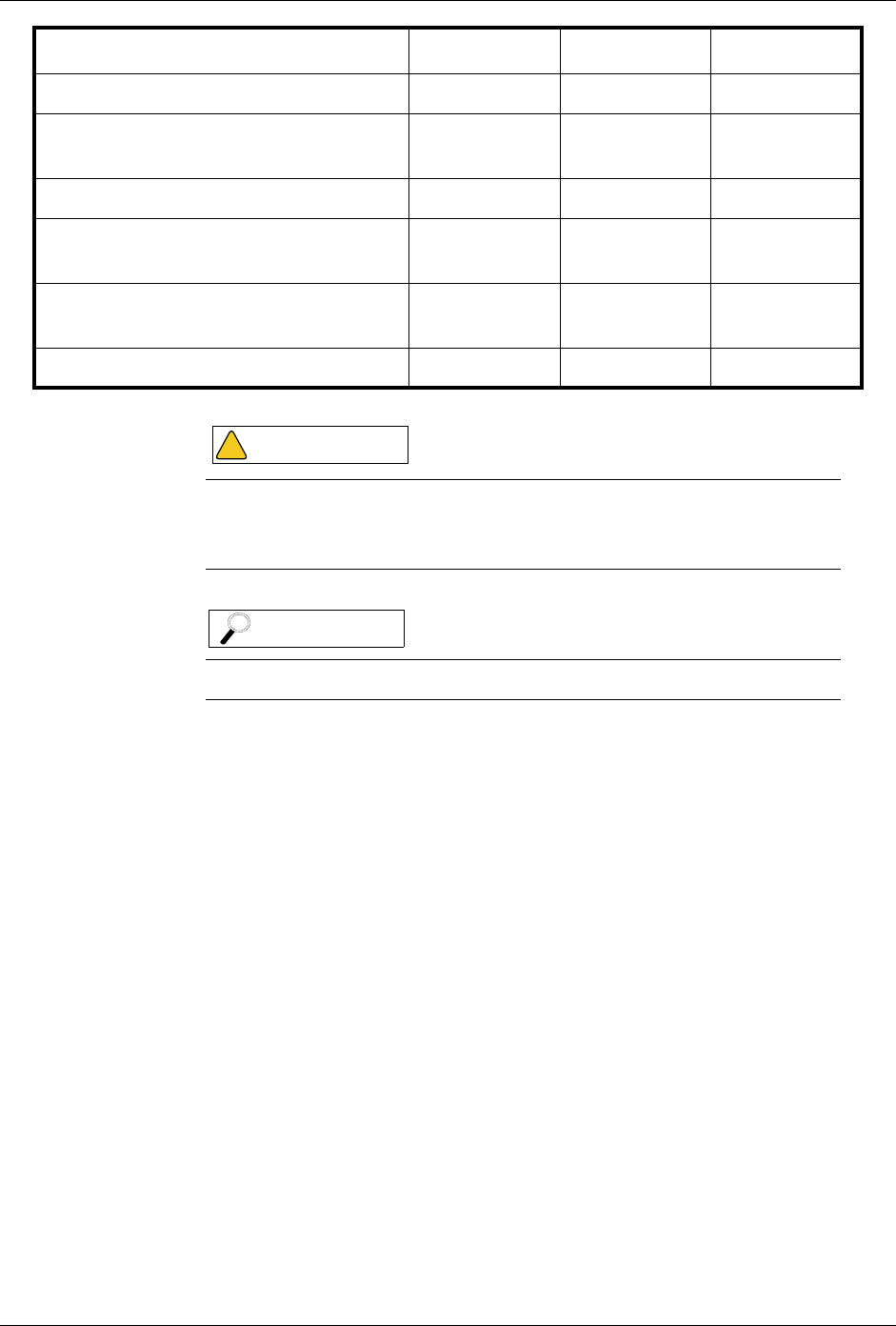
Chapter 15: Alarms and Troubleshooting
15-15 Cod. 6992200 - Rev. /
Wrong Acid/Acetate Connector 568 E NO
Wrong Arterial and Venous Treatment
Limits 503 A YES
Wrong Bicarbonate Connector 569 E NO
Wrong Disinfectant used in Chemical
Disinf. 578 A YES
Wrong disposable configuration on
Ultra Cassette holder 508 A NO
Wrong Single Needle Clamps Position 574 A YES
The use of Remote Alarm device does not release the operator
from the responsibility to observe the alarms triggered by the
machine.
For this alarm, the audible signal is not triggered.
ALARM MESSAGE CODE CLASS CONFIRM
WARNING
!
NOTE 1
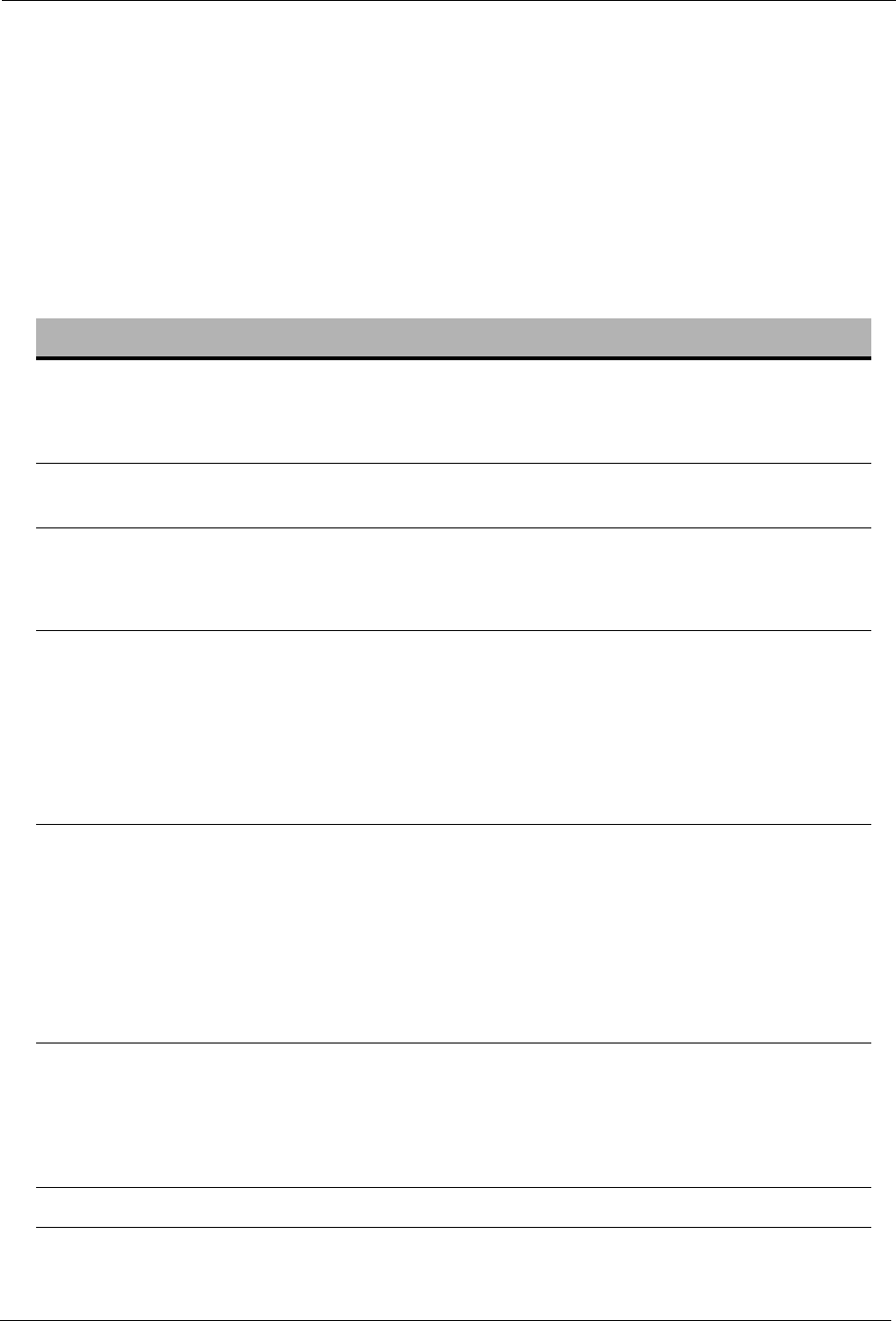
ARTIS Operator’s Manual
Cod. 6992200 - Rev. / 15-16
15.6 Alarm Troubleshooting
The Alarm Area gives all the necessary instructions to respond to most of
the alarm situations. Under certain circumstances, however, the alarm
system could not give detailed information.
Therefore, additional information are provided in this section for each of
the alarms listed in the previous table.
The alarms below are listed according to their technical code number.
ACID/ACETATE CONCENTRATE CONTAINER EMPTY 1
Reason
for Alarm The Acid Pump cannot reach the set conductivity value.
Machine
Actions • The dialysis fluid goes into Bypass;
• The Acid Pump (PA) is stopped.
Possible Cause Suggested Action
1. The Acid concentrate canister is empty. 1. Replace the empty Acid canister with a
new one. Refer to the “Section 7.6:
Change Acid” of this Operator’s Manual
for detailed information on the special
procedure.
Press the CONFIRM button to
continue.
2. Massive air leak from the Acid
concentrate canister. 2. Check and if necessary replace the
Acid concentrate canister with a new
one. Refer to the “Section 7.6: Change
Acid” of this Operator’s Manual for
detailed information on the special
procedure.
Press the CONFIRM button to
continue.
3. The Acid pick-up tube connector is not
connected to the concentrate canister. 3. Verify that the Acid pick-up tube
connector is properly connected to the
concentrate canister.
Press the CONFIRM button to
continue.
Call for Service if the alarm persists.

Chapter 15: Alarms and Troubleshooting
15-17 Cod. 6992200 - Rev. /
INCORRECT CONCENTRATE CONNECTOR 2
Reason
for Alarm The Acid Concentrate Connector is not in the proper position, or it is not
fully inserted into its Concentrate Connector Port.
Machine
Actions In DIALYSIS:
• The phase currently running stops;
• The concentrate pump PA is stopped;
• The dialysis fluid goes into Bypass.
In ADR:
• The phase currently running stops;
• All the pumps are stopped.
Possible Cause Suggested Action
1. The Acid Concentrate Connector is in
the wrong position, or not fully inserted
into its Concentrate Connector port.
1. Verify the right connector position in
relation to the machine phase.
Call for Service if the alarm persists.
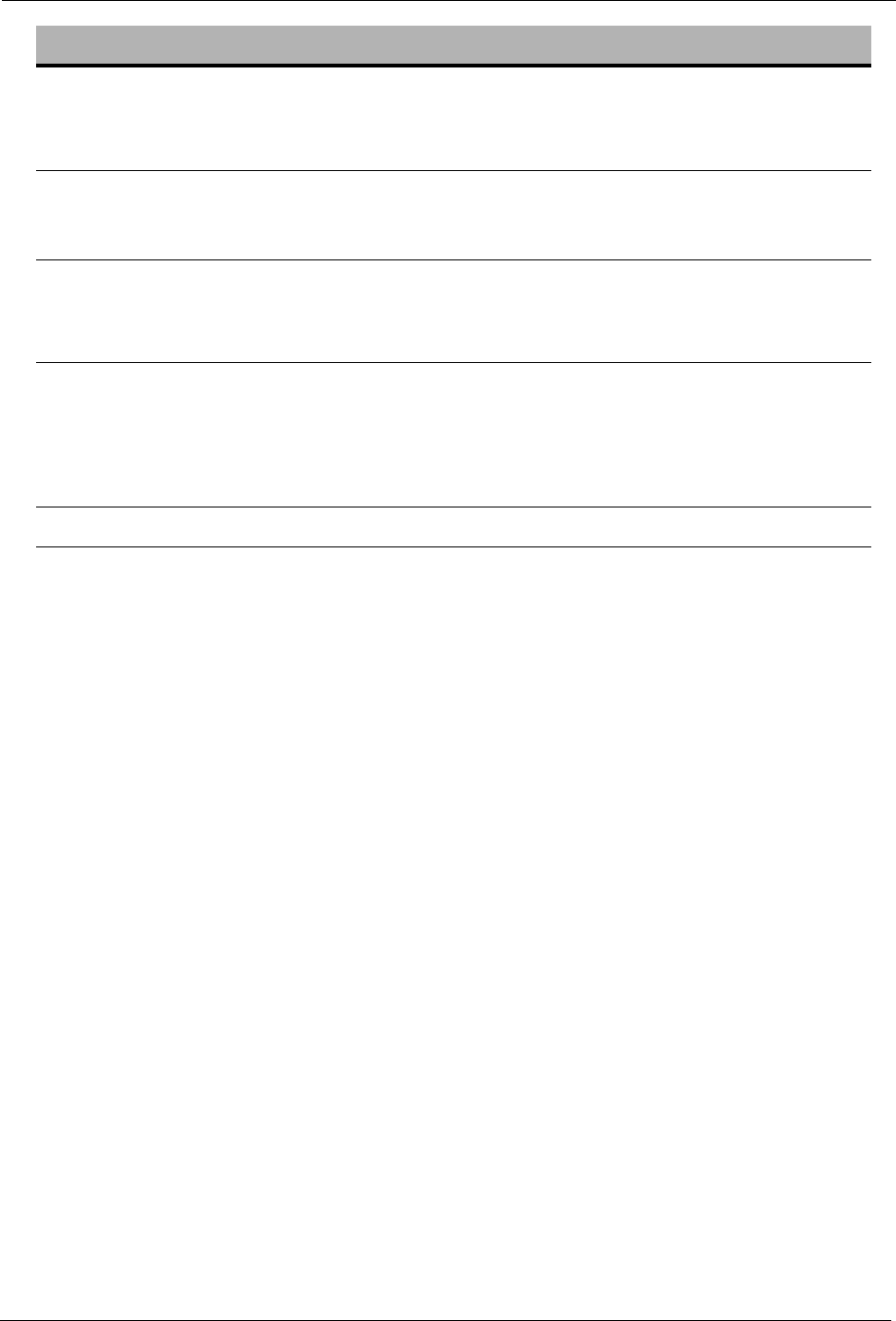
ARTIS Operator’s Manual
Cod. 6992200 - Rev. / 15-18
SELECT CART HOLDER ARMS INCORRECT POSITION 3
Reason
for Alarm The Select Cart Holder Arms are in the wrong position or not closed
securely.
Machine
Actions • The phase currently running stops;
• All the pumps are stopped;
• The dialysis fluid goes into Bypass.
Possible Cause Suggested Action
1. The Select Cart Holder Arms are in the
wrong position, or not closed securely. 1. Verify the correct position of the Select
Cart Holder Arms in relation to the
machine phase.
In Dialysis, Rinsing and Disinfection:
Position the connector correctly.
Call for Service if the alarm persists.

Chapter 15: Alarms and Troubleshooting
15-19 Cod. 6992200 - Rev. /
AIR IN VENOUS LINE 4
Reason
for Alarm Air has been detected in the Venous Patient Line.
Machine
Actions • The Arterial and the Venous Pumps are stopped;
• The Venous Line Clamp is closed;
• The UF Rate is automatically set to zero;
• The dialysis fluid goes into Bypass.
Possible Cause Suggested Action
1. Air in the Venous Patient Line. 1. Clamp the Venous Patient Line under
the Venous Line Clamp;
2. Clamp the venous dialyzer line;
3. Attach a sterile luer-lock syringe to the
venous infusion line;
4. Unclamp the venous infusion line and
create a negative venous pressure (-50
mmHg) with the syringe (See NOTE 1);
5. When the machine opens the Venous
Line Clamp, clamp the venous infusion
line, unclamp the Venous Patient Line
and unclamp the venous dialyzer line
(See NOTE 2);
6. If bubbles are still present, repeat the
procedure;
7. Start the Arterial pump by pressing the
“Blood Pump On/Off” key on the hard
key panel;
8. If needed, adjust the chamber levels
(See NOTE 3).
Call for service if the alarm persists.
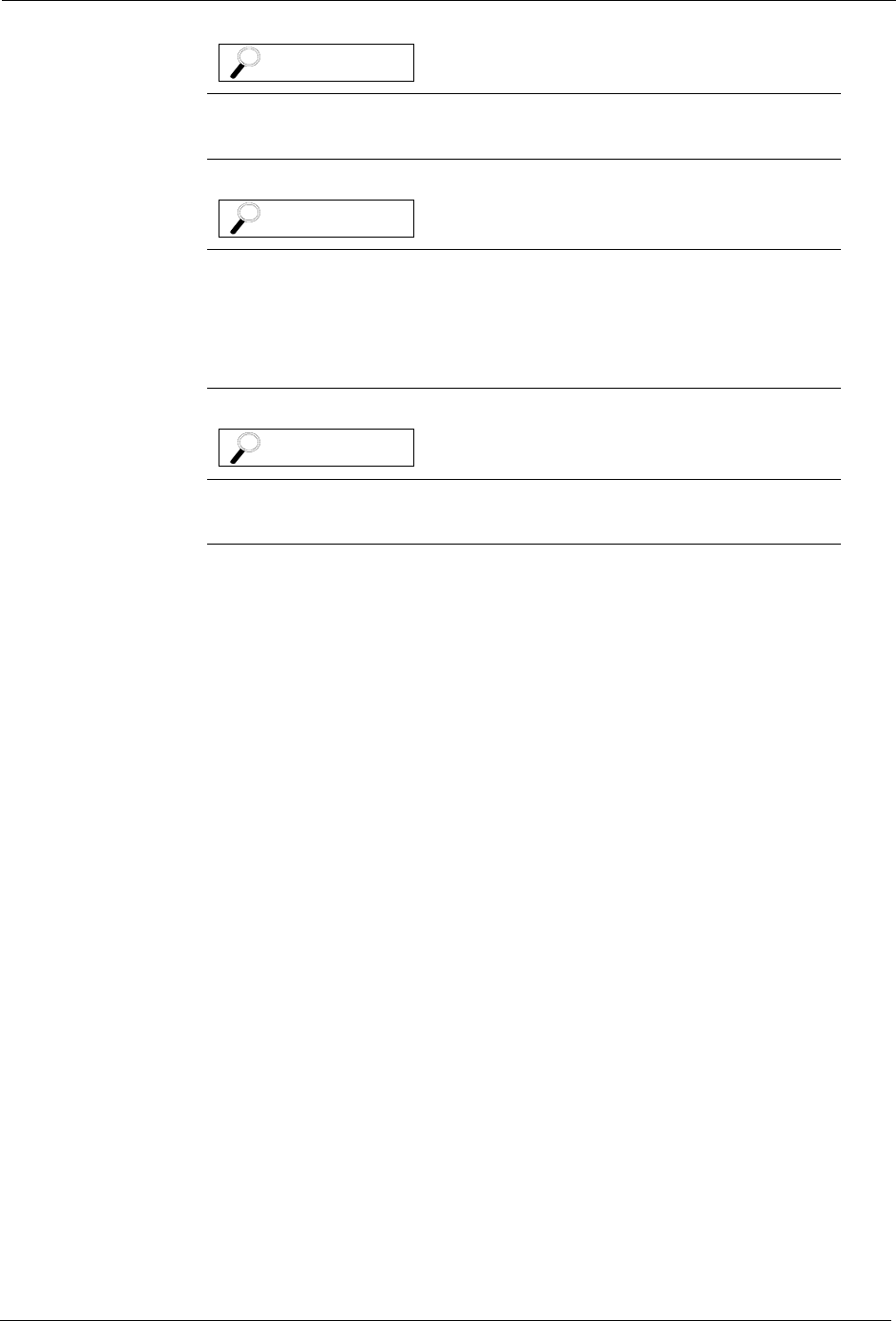
ARTIS Operator’s Manual
Cod. 6992200 - Rev. / 15-20
Do not allow the venous pressure inside the venous chamber to
decrease below -150 mmHg.
After unclamping the venous dialyzer line, the Venous Line Clamp
will close again if:
• The venous pressure reaches 60 mmHg
• The venous pressure exceeds 40 mmHg for more than 5
seconds.
Refer to "Chapter 7: Special Procedures" for better explanations
on the adjust chamber levels procedure.
NOTE 1
NOTE 2
NOTE 3
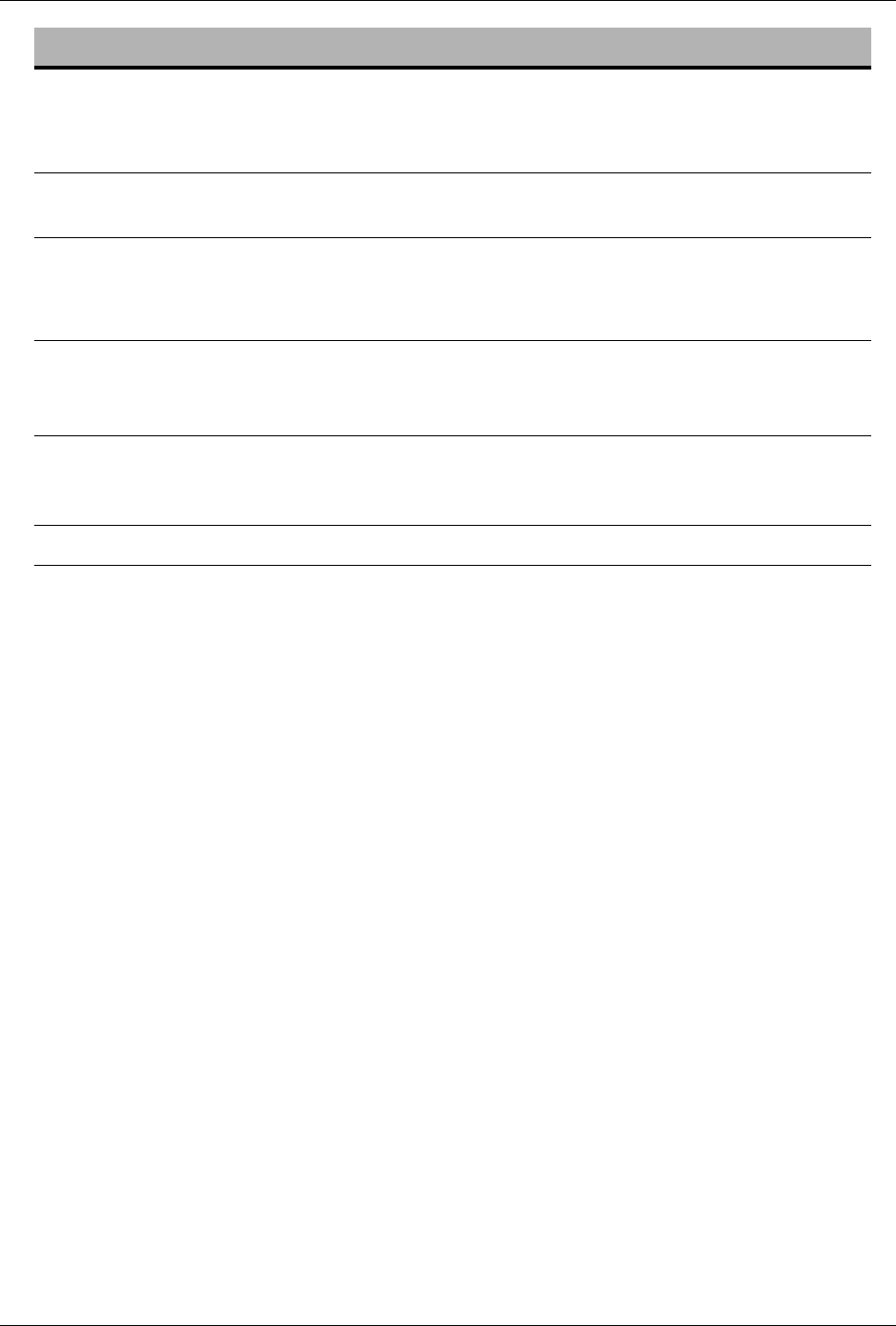
Chapter 15: Alarms and Troubleshooting
15-21 Cod. 6992200 - Rev. /
BLOOD PUMP COVER OPEN 8
Reason
for Alarm The Arterial pump cover is open.
Machine
Actions • The Arterial Pump is stopped;
• The UF Rate is automatically set to zero.
Possible Cause Suggested Action
1. The Arterial pump cover is open. 1. Close the Arterial pump cover.
Be sure the Arterial pump cover is
securely latched.
2. The magnet is dirty. 2. Carefully clean the magnet placed
behind the Arterial pump cover with a
cloth dipped in a disinfectant solution.
Call for Service if the alarm persists.
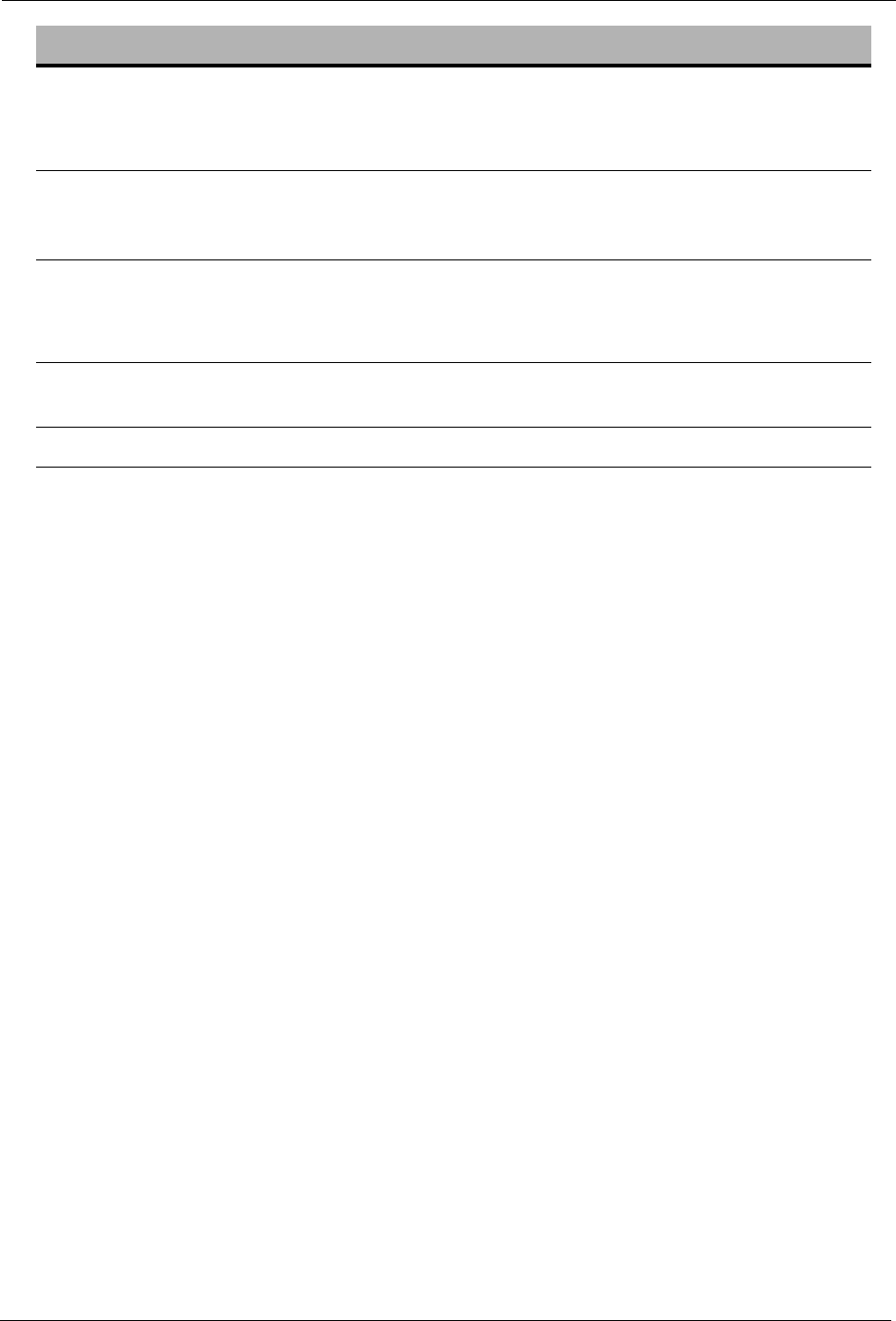
ARTIS Operator’s Manual
Cod. 6992200 - Rev. / 15-22
PUMP SPEED TOO HIGH 10
Reason
for Alarm The Blood flow is higher than the Pump speed set value or than the
maximum permitted value.
Machine
Actions • The Arterial and the Venous Pumps are stopped;
• The Venous Line Clamp is closed;
• The UF Rate is automatically set to zero.
Possible Cause Suggested Action
1. The Blood Pump speed is different from
the set value. 1. Press the CONFIRM button to restart
the Blood Pump.
Call for Service if the alarm persists.

Chapter 15: Alarms and Troubleshooting
15-23 Cod. 6992200 - Rev. /
ARTERIAL PRESSURE OUT OF RANGE 11
Reason
for Alarm The arterial pressure is beyond the upper or lower limit of the sensor.
Machine
Actions • The Blood Pump is stopped;
• The UF Rate is automatically set to minimum.
Possible Cause Suggested Action
1. Restriction of blood flow from the
Patient’s Vascular Access or in the
Arterial Patient Line.
1. Check for restriction of blood flow in the
Arterial Patient Line, i.e. kinks, clamps,
clotted arterial needle, poor flow from
the Patient’s Vascular Access; The
alarm clears when the arterial pressure
is in the proper range.
When the pressure stabilizes, select the
alarm in the Alarm Area and press the
CONFIRM button to restart the blood
pump.
2. Arterial pressure decreased somewhat
during a treatment due to
hemoconcentration and/or inadequate
heparin delivery to the patient and a
resulting pressure drop increase for a
given needle at a fixed blood flow rate.
2. Attention should be given to revaluation
of the needle size, the blood flow rate
and the heparin dosage;
When the pressure stabilizes, select the
alarm in the Alarm Area and press the
CONFIRM button to restart the blood
pump.
Call for Service if the alarm persists.
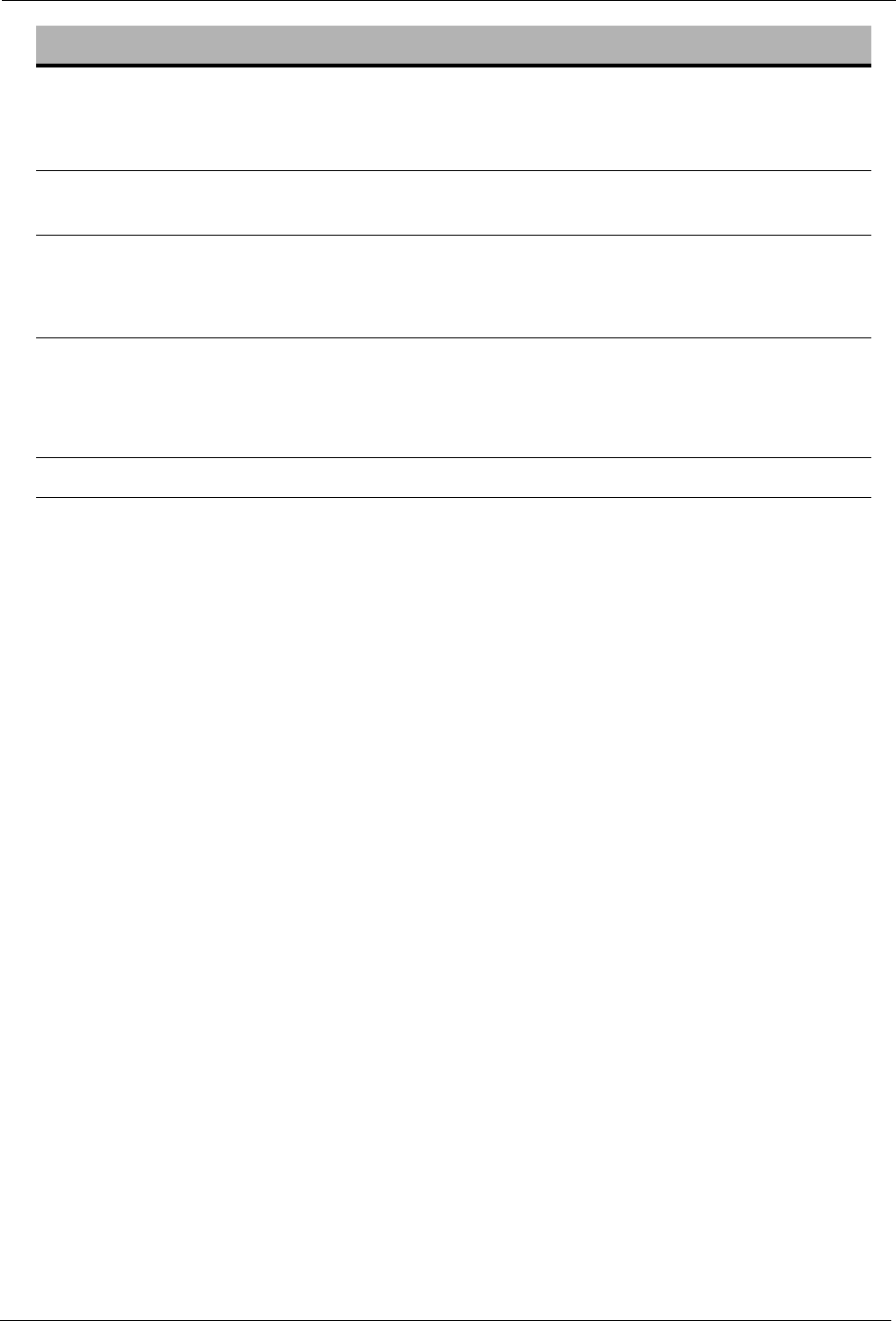
ARTIS Operator’s Manual
Cod. 6992200 - Rev. / 15-24
BLOOD PUMP SPEED ERROR 12
Reason
for Alarm The Blood Pump is not turning at the requested speed.
Machine
Actions • The Blood Pump is stopped;
• The UF Rate is automatically set to zero.
Possible Cause Suggested Action
1. The pump segment is jamming the rotor
of the blood pump. 1. Verify the correct placement of the
pump segment into the rotor.
Press the CONFIRM button to restart
the blood pump.
Call for Service if the alarm persists.
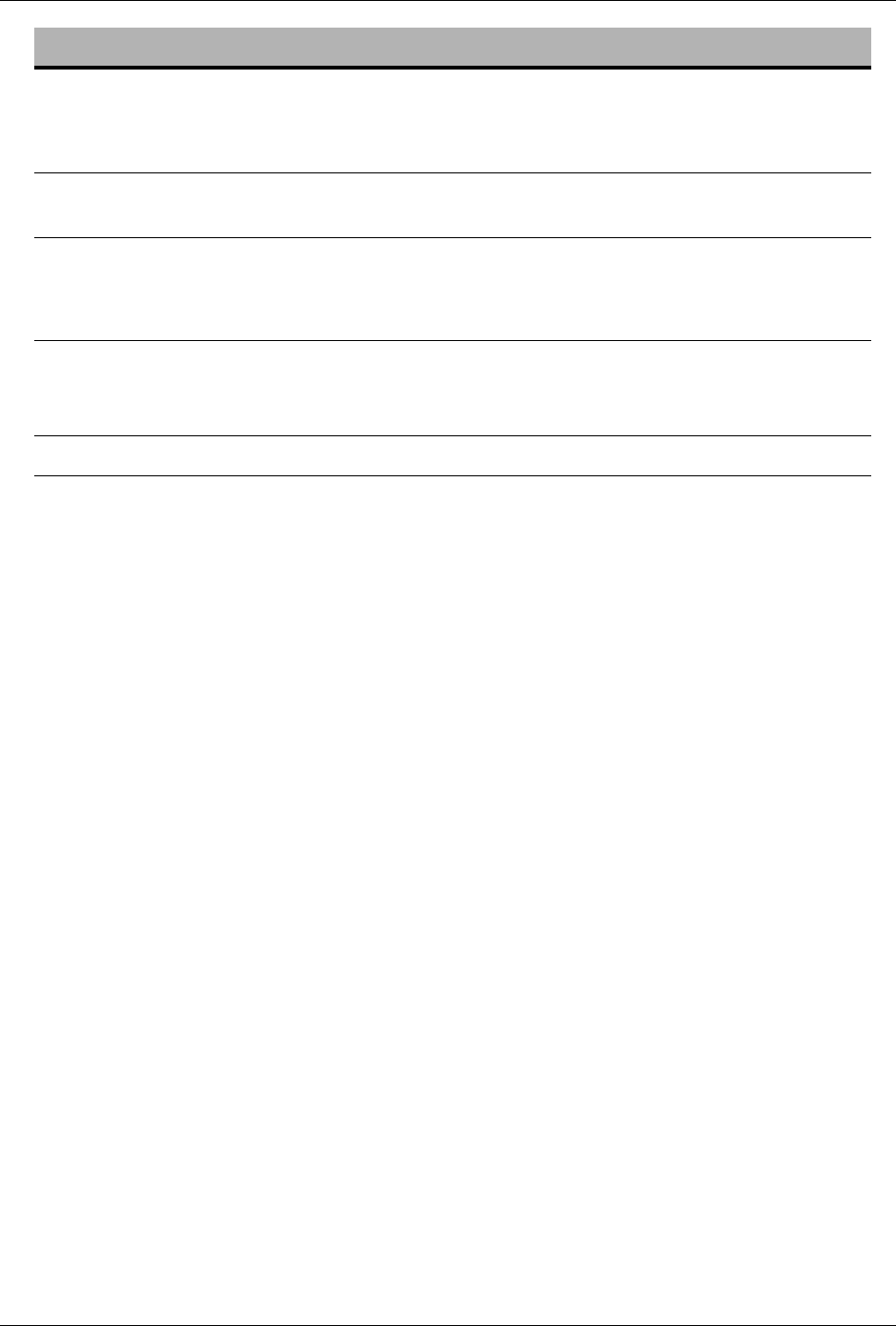
Chapter 15: Alarms and Troubleshooting
15-25 Cod. 6992200 - Rev. /
BLOOD PUMP ROTOR ERROR 13
Reason
for Alarm The arterial hall sensor is not detected properly.
Machine
Actions • None.
Possible Cause Suggested Action
1. The Arterial pump segment is not
correctly inserted into the rotor. 1. Verify that the Arterial pump segment is
correctly inserted into the rotor.
Press the CONFIRM button.
Call for Service if the alarm persists.
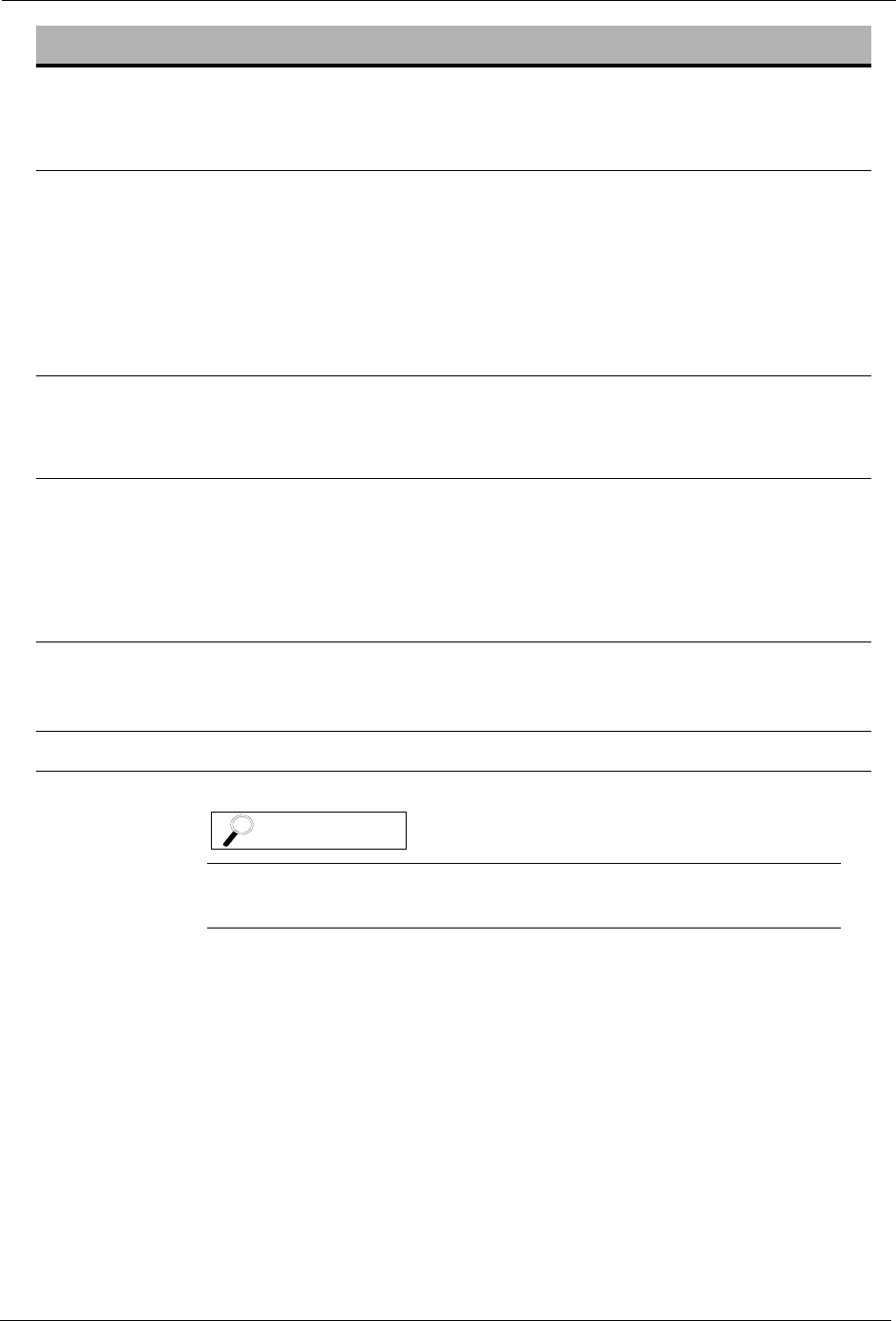
ARTIS Operator’s Manual
Cod. 6992200 - Rev. / 15-26
INCORRECT BICARBONATE CONCENTRATE 18
Reason
for Alarm The Bicarbonate Concentrate Connector is in the wrong position or not
fully inserted into its Concentrate Connector Port.
Machine
Actions In DIALYSIS:
• The concentrate pumps (PA, PB, PSel) shall be stopped;
• The phase currently running stops;
• The dialysis fluid goes into Bypass.
In ADR:
• The phase currently running stops;
• All the pumps are stopped.
Possible Cause Suggested Action
1. The Bicarbonate Concentrate
Connector is in the wrong position. 1. Dialysis: verify that the Bicarbonate
Concentrate Connector is connected to
its Concentrate Connector Port (BiCart
Treatment only), the Concentrate
Canister or the Central Bicarbonate
Port.
2. The Bicarbonate Concentrate
Connector is not fully inserted into its
Concentrate Connector Port.
2. ADR: verify that the Bicarbonate
Connector is connected securely to its
Concentrate Connector Port.
Call for Service if the alarm persists.
The use of liquid Bicarbonate concentrate is not currently
available.
NOTE
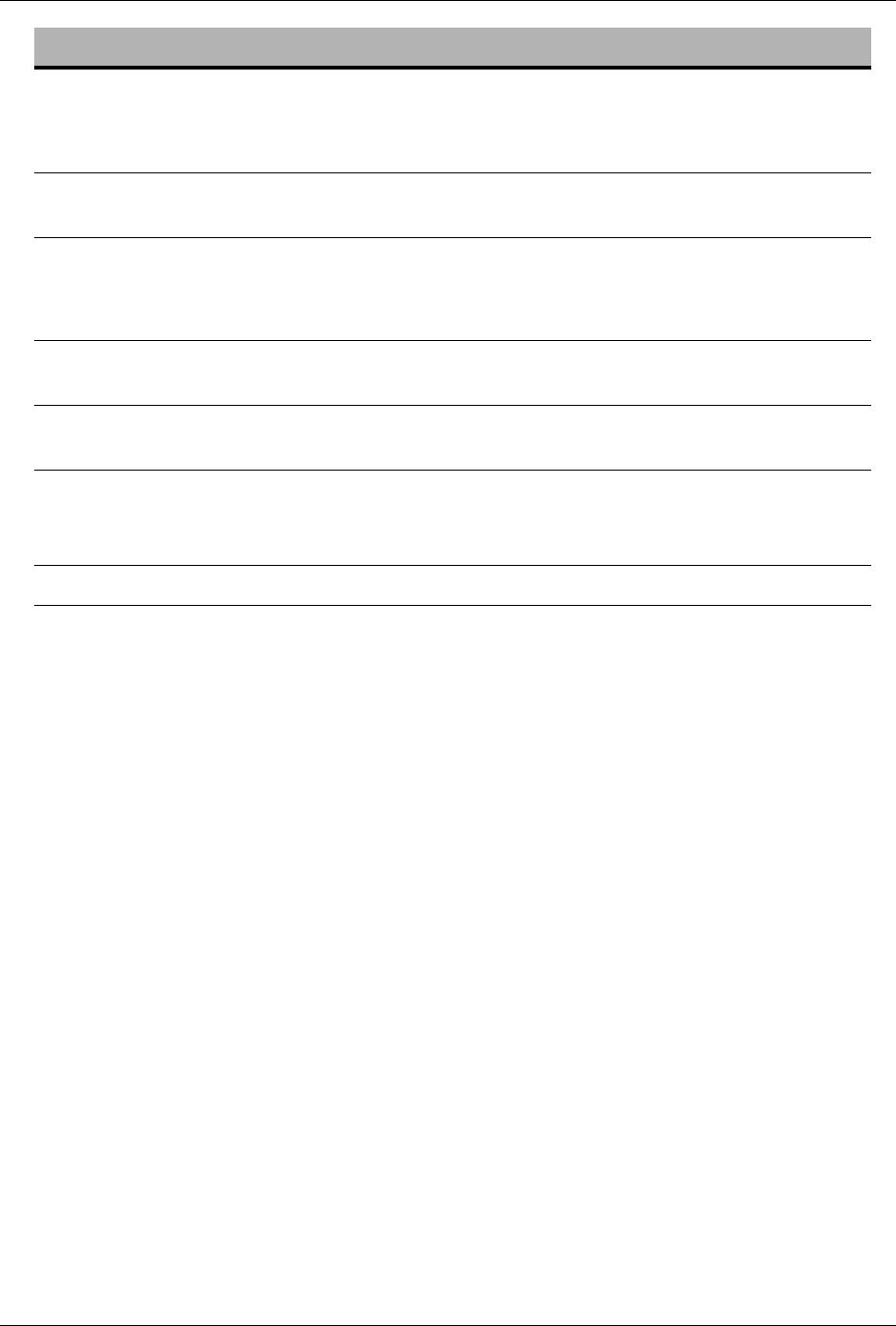
Chapter 15: Alarms and Troubleshooting
15-27 Cod. 6992200 - Rev. /
BICART CARTRIDGE EMPTY 21
Reason
for Alarm The BiCart Cartridge is either empty or not connected properly; as a result
the Bicarbonate Pump cannot reach the set conductivity value.
Machine
Actions • The Bicarbonate Concentrate Pump (PB) is stopped;
• The dialysis fluid goes into Bypass.
Possible Cause Suggested Action
1. The BiCart Cartridge is almost empty. 1. Replace the BiCart according to the
BiCart Change procedure.
2. The Bicarbonate powder is not well
distributed in the BiCart Cartridge. 2. Tap the bottom of the BiCart Cartridge
to evenly distribute the powder.
3. The BiCart Cartridge is in the wrong
position. 3. Verify the correct position of the BiCart
into its holder.
Repeat the BiCart Change procedure.
Call for Service if the alarm persists.
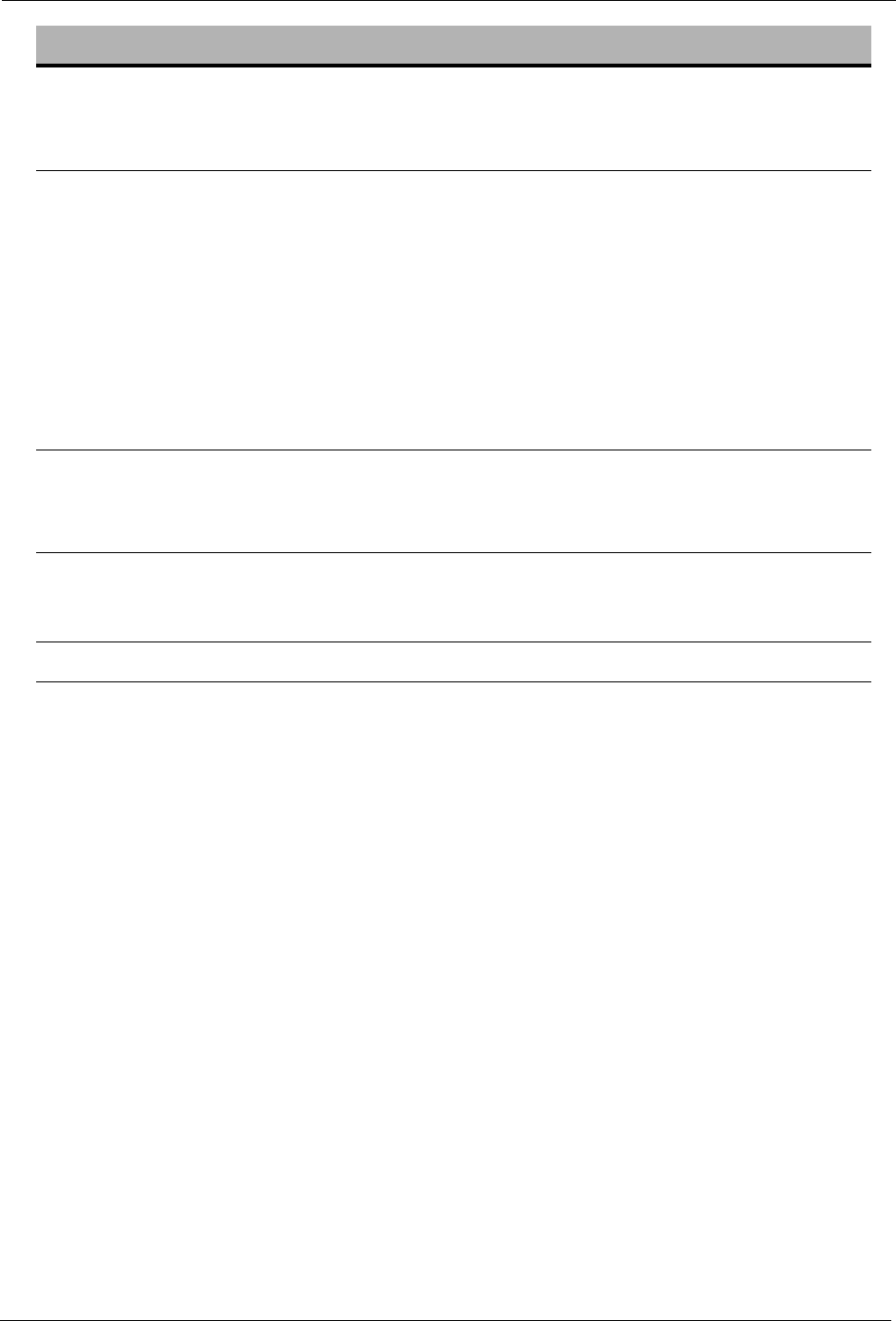
ARTIS Operator’s Manual
Cod. 6992200 - Rev. / 15-28
INCORRECT BICART HOLDER ARMS POSITION 22
Reason
for Alarm The BiCart Holder Arms are in the wrong position or not closed securely.
Machine
Actions In DIALYSIS:
During the dialysis fluid preparation phase:
• The phase currently running stops;
• The concentrate pump PB is stopped.
During treatment:
• The phase currently running stops;
• The dialysis fluid goes into Bypass.
In ADR:
• The phase currently running stops;
• All the pumps are stopped.
Possible Cause Suggested Action
1. The BiCart Holder Arms are in the
wrong position, or not closed securely. 1. Verify the correct position of the BiCart
Holder Arms in relation to the machine
phase.
Call for Service if alarm persists.
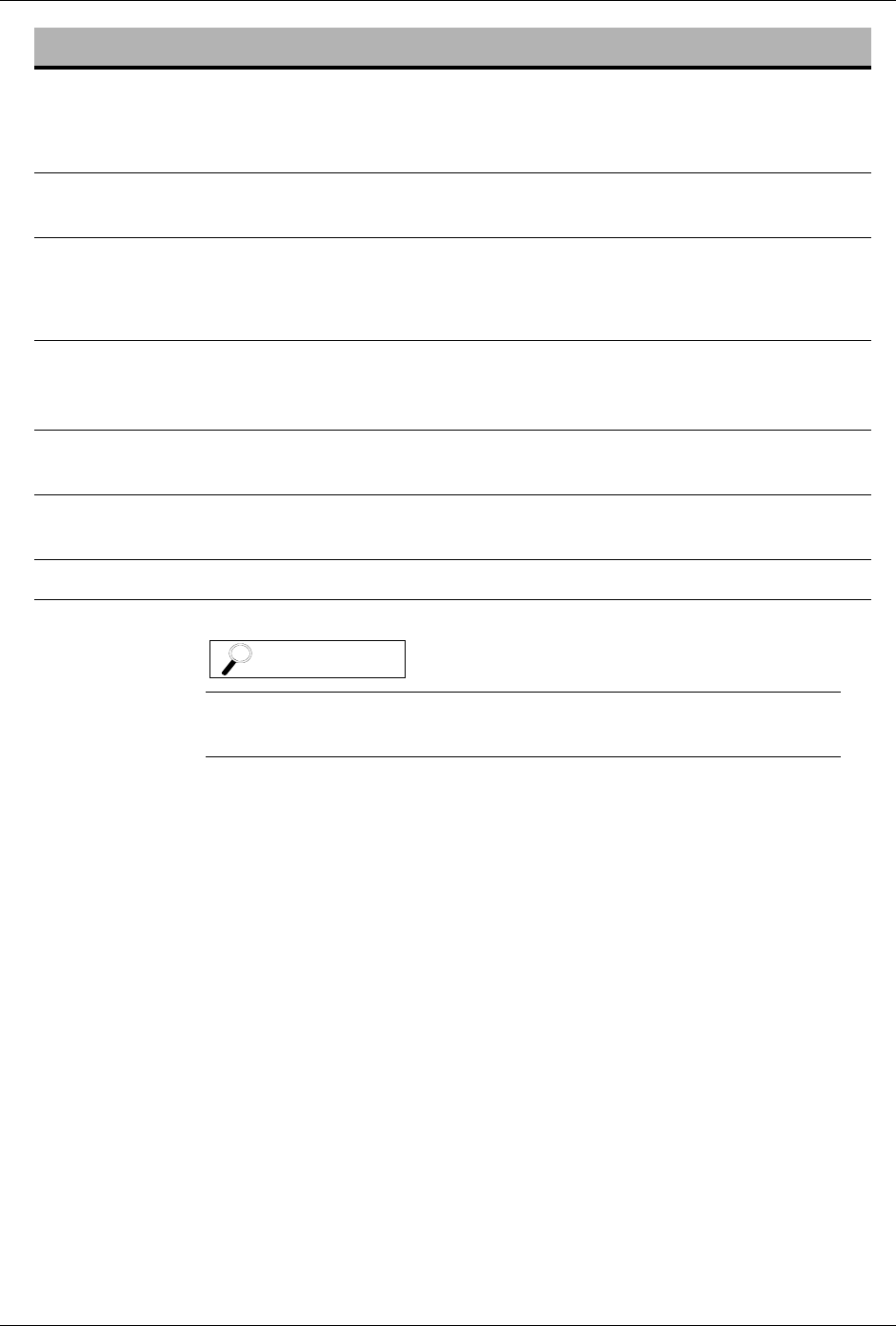
Chapter 15: Alarms and Troubleshooting
15-29 Cod. 6992200 - Rev. /
INCORRECT BICARBONATE CONCENTRATION 23
Reason
for Alarm The Bicarbonate Conductivity is beyond the set or permitted range.
Machine
Actions • The dialysis fluid goes into Bypass.
Possible Cause Suggested Action
1. The Bicarbonate pick-up tube
connector is not well fitted to the
Concentrate Canister.
1. Verify that the Bicarbonate pick-up tube
connector is properly connected to the
concentrate canister.
2. Massive air leak from the Bicarbonate
Concentrate Canister. 2. Replace the Bicarbonate Concentrate
Canister.
3. The BiCart is not well positioned in its
holder. 3. Ensure the BiCart is securely placed in
its holder.
Call for Service if alarm persists.
The use of liquid Bicarbonate concentrate is not currently
available.
NOTE

ARTIS Operator’s Manual
Cod. 6992200 - Rev. / 15-30
BLOOD IN DIALYSATE 28
Reason
for Alarm Blood has been detected in the dialysate by the Blood Leakage Detector.
Machine
Actions • The Arterial and the Venous Pumps are stopped;
• The Venous Line Clamp is closed;
• The dialysis fluid goes into Bypass.
Possible Cause Suggested Action
1. A break in the dialyzer membrane
caused a blood leakage into the
hydraulic circuit.
1. Press the OVERRIDE button. Some of
the safety mechanisms shall be
disabled for the subsequent 2 minutes.
Visually check the dialysate for blood
presence.
If the results are positive, replace the
dialyzer and the Blood Cassette. Follow
the correct procedure to replace the
extracorporeal circuit.
2. The blood leak sensor is dirty. 2. Press the OVERRIDE button. Some of
the safety mechanisms shall be
disabled for the subsequent 2 minutes.
Visually check the dialysate for blood
presence.
If the results are negative and the alarm
persists, stop the treatment.
As soon as possible perform a chemical
disinfection to clean the blood leak
sensor.

Chapter 15: Alarms and Troubleshooting
15-31 Cod. 6992200 - Rev. /
3. Massive air leak from the Red/Blue
dialysis fluid tube connectors, as the
BLD sensor could confuse air with
blood.
3. Press the OVERRIDE button. Some of
the safety mechanisms shall be
disabled for the subsequent 2 minutes.
Deactivate the dialysis fluid flow by
pressing the “Dialysis fluid” action
button.
• the dialysis fluid goes into bypass;
• the “Dialysis fluid” action indicator
switches to grey.
Verify that the Red/Blue dialysis fluid
tube connectors do not leak and are
securely fitted to the dialyzer.
Activate again the dialysis fluid flow by
pressing the deactivated “Dialysis fluid”
action button.
• the “Dialysis fluid” action indicator
switches to green.
Call for Service if the alarm persists.
Possible Cause (Continued) Suggested Action (Continued)

ARTIS Operator’s Manual
Cod. 6992200 - Rev. / 15-32
BPM FAILURE 30
Reason
for Alarm The BPM System was calibrated incorrectly, is malfunctioning or is
disconnected.
Machine
Actions • The Blood Pressure Monitoring system is stopped and the measurement
is not available.
Possible Cause Suggested Action
1. Temporary blockage of the device. 1. Press the CONFIRM button to remove
the alarm.
Do not perform any other Blood
Pressure measurements. If the BPM
Mode parameter is set to Auto, set it to
Manual. At the end of the treatment:
• switch the machine OFF, wait a few
seconds and then switch the machine
back ON;
• take a Blood Pressure to verify if the
BPM device is functioning correctly: if
the result is negative, a service
technician assistance is required.
Call for Service if the alarm persists.
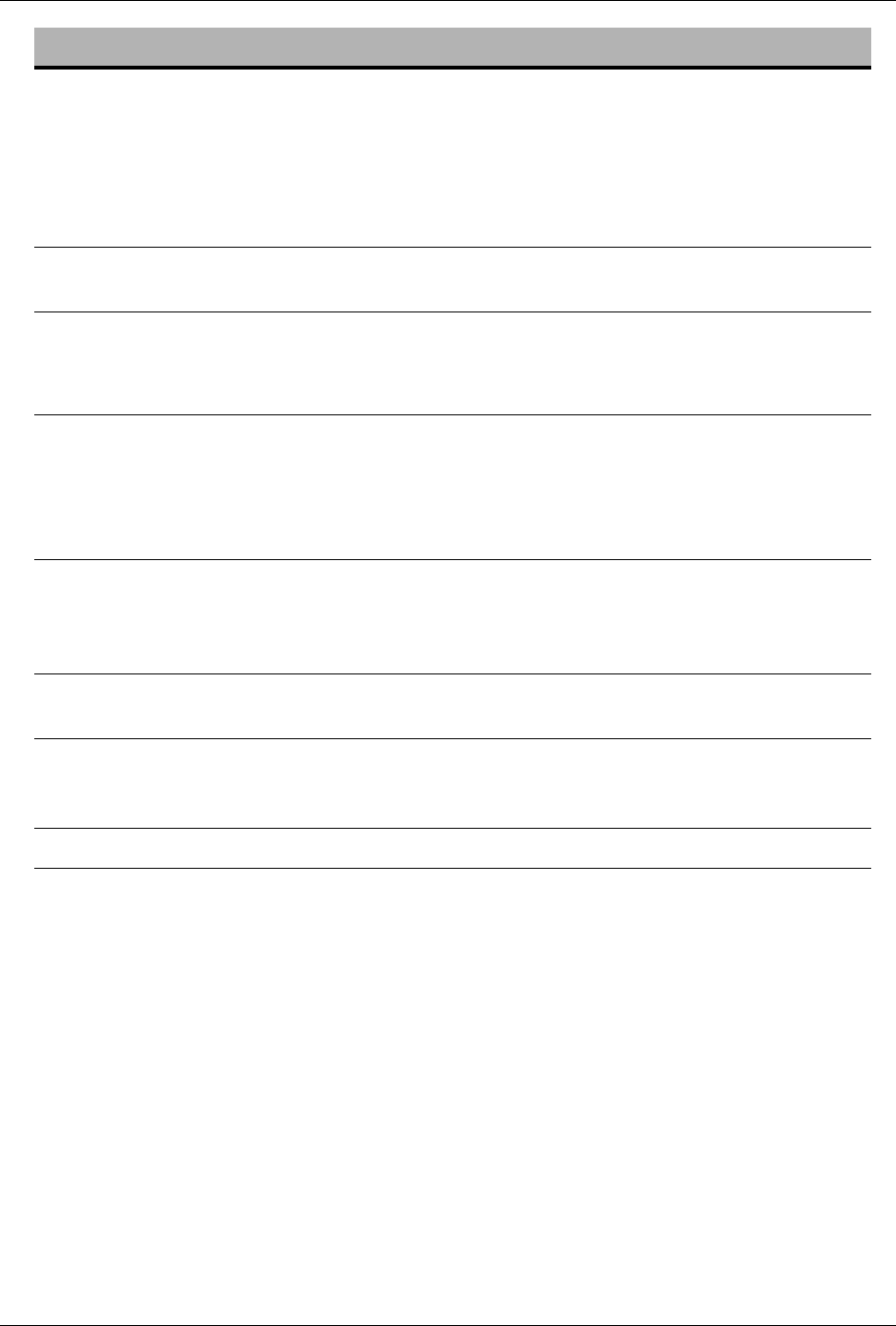
Chapter 15: Alarms and Troubleshooting
15-33 Cod. 6992200 - Rev. /
BPM: MEASUREMENT FAILURE 31
Reason
for Alarm • The BPM System may have been unable to record a blood pressure
measurement because of patient and/or Cuff conditions;
• The BPM Tubing may be kinked or disconnected;
• The BPM System may be leaking;
• There may be a Hardware/Communication failure on the BPM System.
Machine
Actions • The Blood Pressure Monitoring System is stopped and the measurement
is not available.
Possible Cause Suggested Action
1. The tubing of the BPM cuff is kinked or
disconnected. 1. Verify that the external tubing of the
BPM cuff is connected and that there
are no leaks or kinks.
Press the CONFIRM button and retry
the measurement.
2. The patient moved his arm too many
times during the measurement. The
BPM was unable to measure the blood
pressure.
2. Press the CONFIRM button and retry
the measurement.
3. The external tubing of the BPM cuff or
the BPM cuff itself is leaking. 3. Replace the tubing of the BPM cuff and
the BPM cuff with a new one.
4. There is a communication problem
between the BPM cuff and the
machine.
4. Repeat the blood pressure
measurement.
Call for Service if the alarm persists.
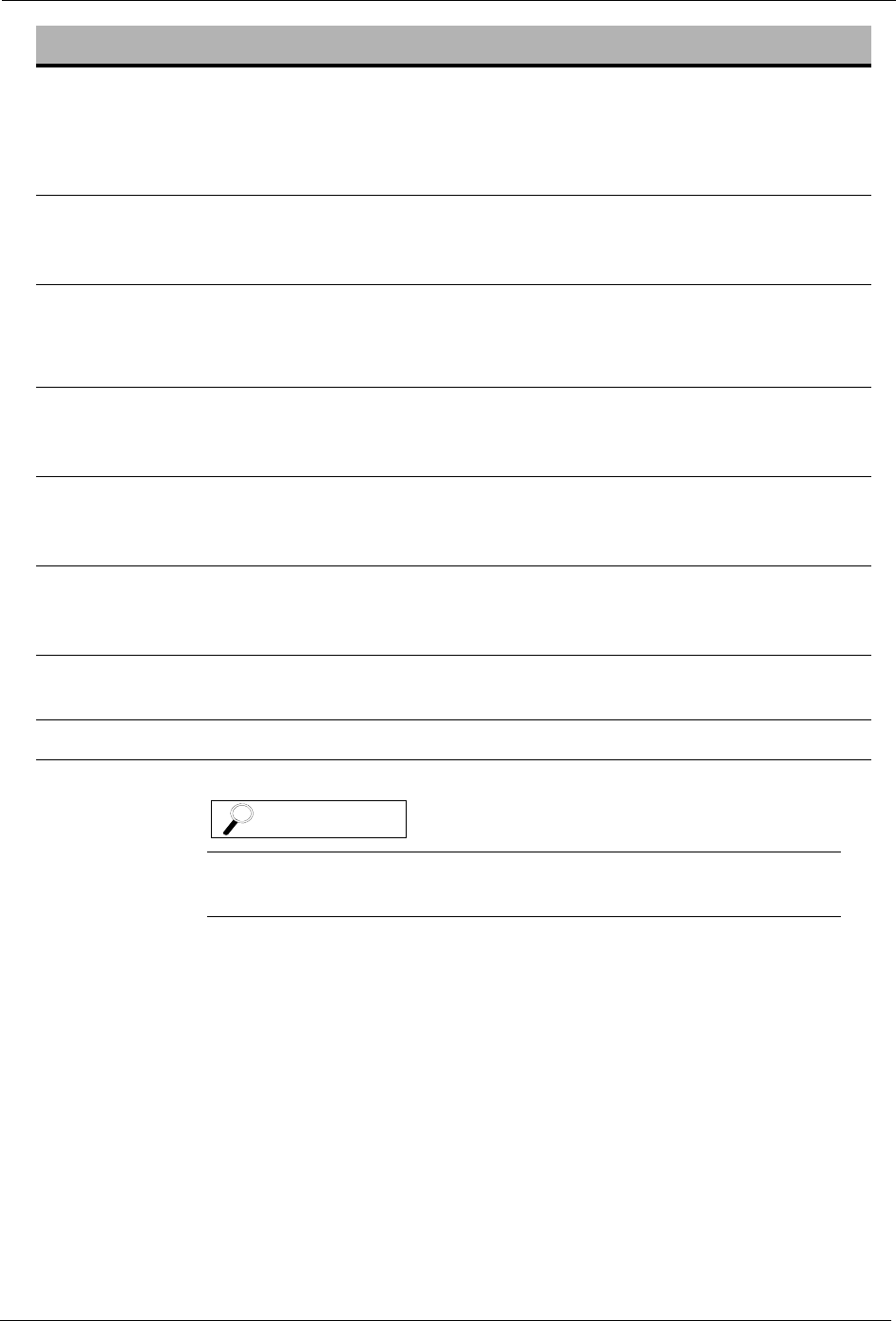
ARTIS Operator’s Manual
Cod. 6992200 - Rev. / 15-34
AIR IN HYDRAULIC PATHWAY (LD1) 33
Reason
for Alarm LD1 Level Sensor failed its test during dialysis preparation or an ADR
process. The level sensor may have detected air, failed or needs to be
cleaned.
Machine
Actions • The phase currently running stops;
• The dialysis fluid goes into bypass;
• All the pumps are stopped.
Possible Cause Suggested Action
1. Massive air leak from an empty
concentrate canister. 1. Check for empty Acid, BiCart or
Bicarbonate canister. The alarm clears
before patient connection.
2. Dirty LD1 level detector. 2. Perform a RINSE or a Chemical
Disinfection to clean the sensor from
deposits.
3. The concentrate tube is not in the
proper position for the current phase of
the machine.
3. Verify the proper placement of the
concentrate tube for the current phase
of the machine.
4. The BiCart holder arms are not in the
fully closed position. 4. Place the BiCart holder arms in the
closed position.
Call for Service if the alarm persists.
The use of liquid Bicarbonate concentrate is not currently
available.
NOTE

Chapter 15: Alarms and Troubleshooting
15-35 Cod. 6992200 - Rev. /
HYDRAULIC SENSOR DIRTY (LP) 34
Reason
for Alarm The LP Level Sensor failed its test during dialysis preparation or an ADR
process. The level sensor may have detected air, failed or needs to be
cleaned.
Machine
Actions • The phase currently running stops;
• The dialysis fluid goes into bypass;
• All the pumps are stopped.
Possible Cause Suggested Action
1. Dirty LP level detector. 1. Perform a RINSE or a Chemical
Disinfection to clean the sensor from
deposits.
Call for Service if the alarm persists.
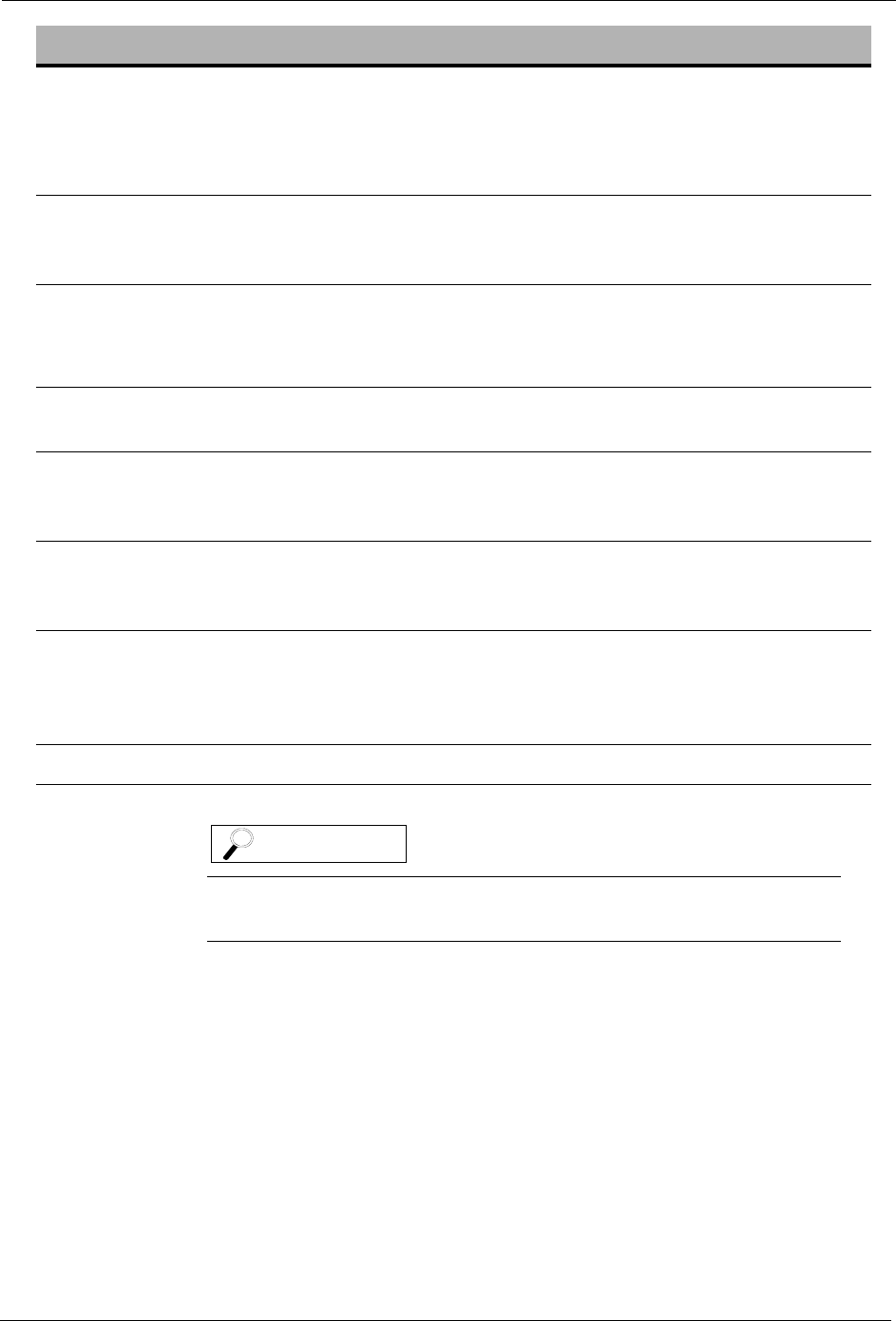
ARTIS Operator’s Manual
Cod. 6992200 - Rev. / 15-36
AIR IN HYDRAULIC PATHWAY (LD2) 35
Reason
for Alarm The LD2 Level Sensor failed its test during dialysis preparation or a
cleaning process. The Level Sensor may have detected air, failed or needs
to be cleaned.
Machine
Actions • The phase currently running stops;
• The dialysis fluid goes into bypass;
• All the pumps are stopped.
Possible Cause Suggested Action
1. Massive air leak from an empty
concentrate canister. 1. Check for empty Acid, BiCart or
Bicarbonate canister.
2. Dirty LD2 level detector. 2. Perform a RINSE or a Chemical
Disinfection to clean the sensor of
deposits.
3. The Concentrate tube is not in the
proper position for the current phase of
the machine.
3. Verify that the concentrate tubes are in
the proper position for the current
phase of the machine.
4. The BiCart holder arms are not in the
fully closed position. 4. Move the BiCart holder arms to the
closed position to remove the alarm
and to allow cleaning of the complete
circuit.
Call for Service if the alarm persists.
The use of liquid Bicarbonate concentrate is not currently
available.
NOTE
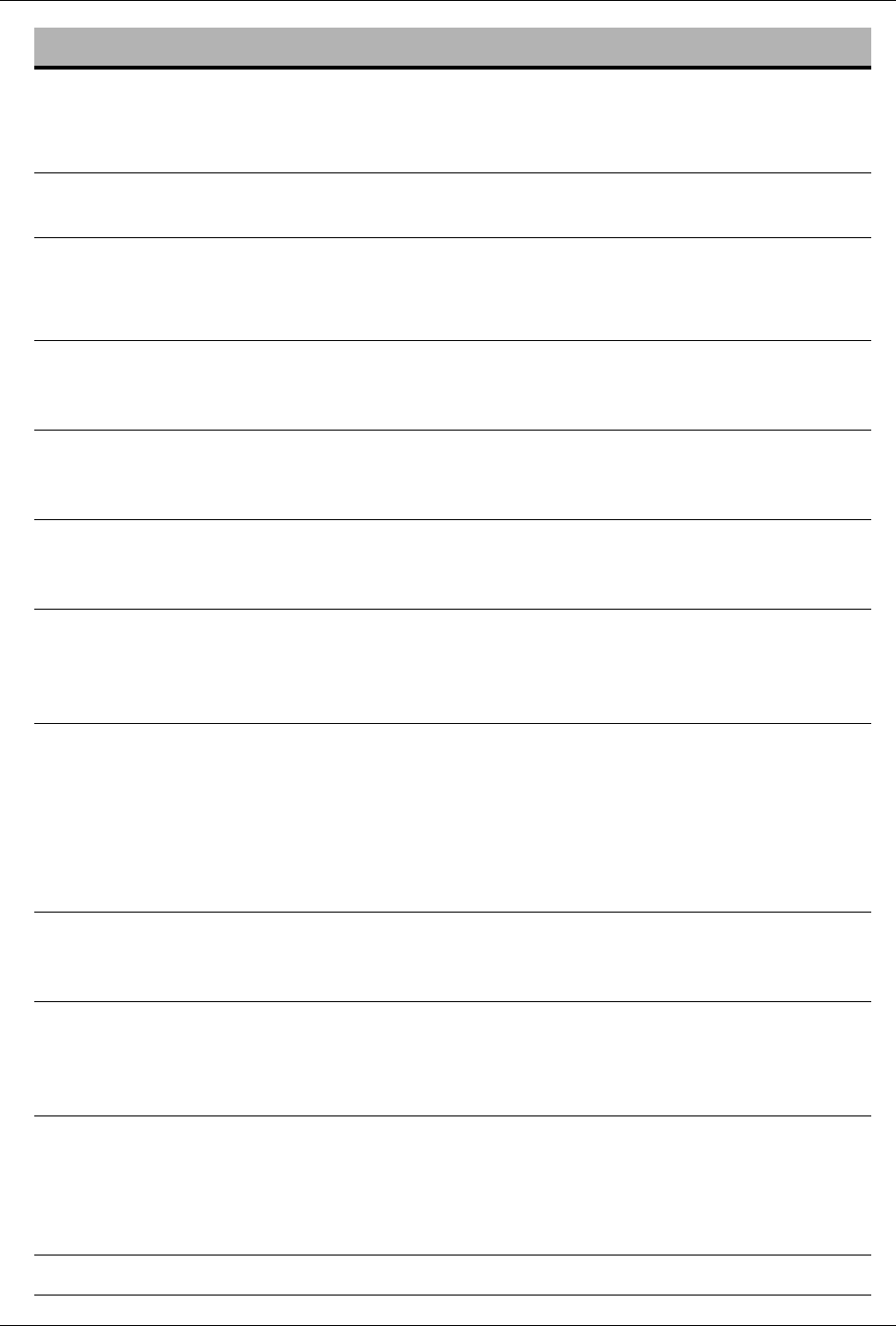
Chapter 15: Alarms and Troubleshooting
15-37 Cod. 6992200 - Rev. /
DIALYSATE PH HIGH 40
Reason
for Alarm The dialysis fluid pH value exceeds the alarm threshold.
Machine
Actions • The dialysis fluid goes into Bypass;
• The Venous Pump is stopped.
Possible Cause Suggested Action
1. The machine has run out of
concentrates. 1. Replace the empty canister, then wait a
few seconds for the machine to
stabilize.
2. There is an air leak from the Acid or
Bicarbonate Pick-up tube connector/
BiCart.
2. Verify there are no air leaks from the
the Acid and Bicarbonate Pick-up tube
connectors/BiCart.
3. The Acid or Bicarbonate Pick-up tube
connector has accumulated debris or
salt crystals.
3. Rinse the accumulated debris from the
Acid and Bicarbonate Pick-up tube
connector.
4. The Acid or Bicarbonate Pick-up tube is
not properly connected to the
concentrate canister.
4. Verify that the Acid and Bicarbonate
Pick-up tubes are securely connected
and that no air bubbles are being drawn
into the tube.
5. The solution in the concentrate canister
is not a solution correct for
hemodialysis treatments (Refer to the
"Chapter 16: Specifications", in this
Operator’s Manual).
5. Stop the dialysis preparation and
replace the Blood Cassette and the
dialyzer with a new Blood Cassette and
a new dialyzer. Run a complete RINSE
procedure. Replace the solution with
the correct solution and then restart the
dialysis preparation.
6. The solution in the concentrate canister
is not correct or diluted. 6. Verify that the solution concentration is
correct and if needed replace it with a
correct solution.
7. The Acid Pick-up tube connector is not
securely connected to its concentrate
connector port (if using concentrate
from a central delivery system).
7. Verify that the Acid Pick-up tube
connector is securely connected to its
concentrate connector port.
8. An incorrect type of dialysis fluid
concentrate could be selected on the
Fluid Settings sub-screen.
8. Verify that the correct type of dialysis
fluid concentrate has been selected on
the Fluid Settings sub-screen,
otherwise select the correct
concentrate combination.
Call for Service if the alarm persists.
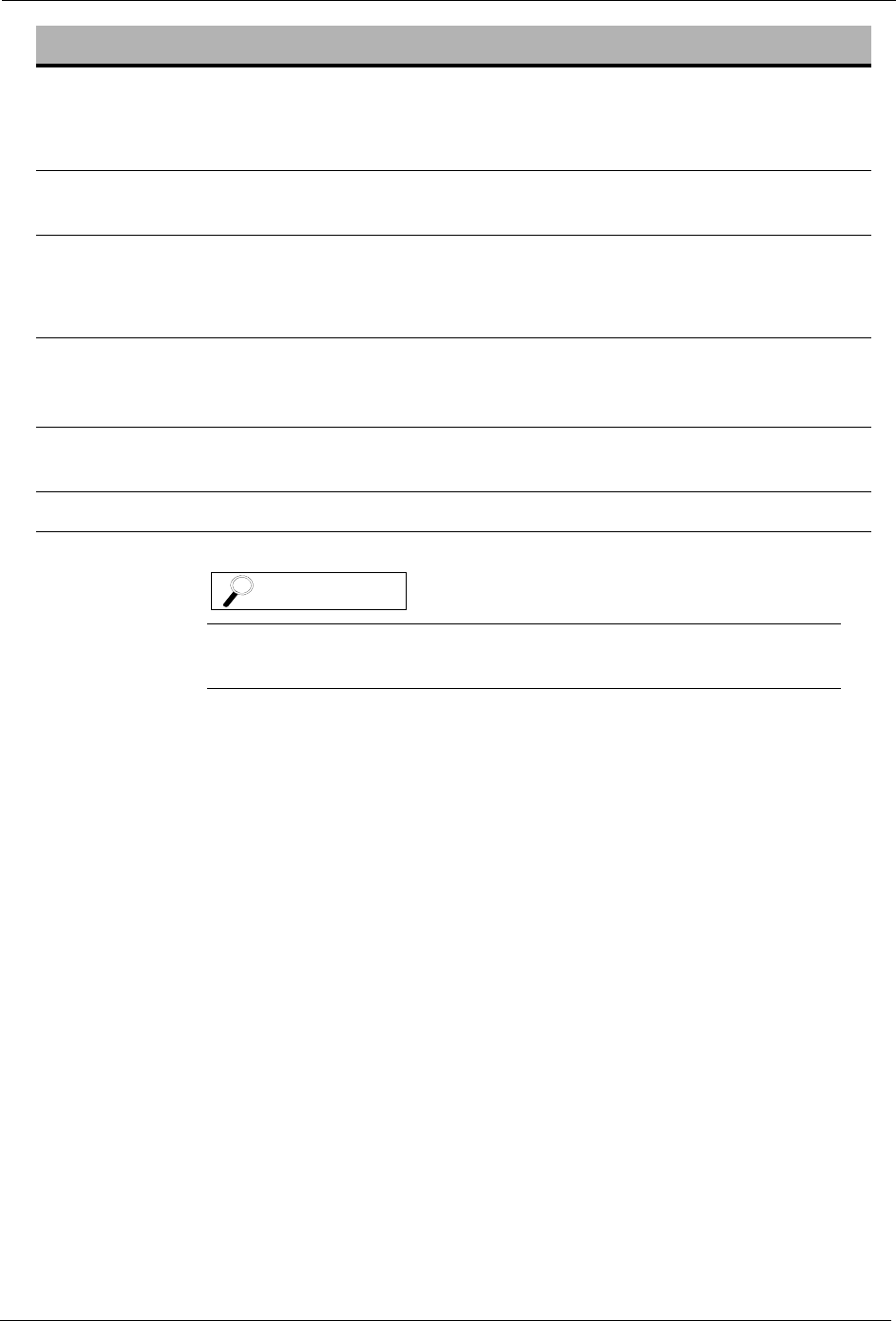
ARTIS Operator’s Manual
Cod. 6992200 - Rev. / 15-38
DIALYSIS FLUID FLOW HIGH 44
Reason
for Alarm The dialysis fluid flow is higher than the set value or than the maximum
permitted flow.
Machine
Actions • The dialysis fluid goes into Bypass;
• The Venous Pump is stopped.
Possible Cause Suggested Action
1. Unstable dialysis fluid flow has been
detected by the machine. 1. Wait for a while, if the problem persists
call for service for recalibration of the
flowmeter.
2. There are deposits or debris inside the
flowmeters of the machine. 2. Perform a Descaling or a Chemical
Disinfection.
Call for Service if the alarm persists.
The use of liquid Bicarbonate concentrate is not currently
available.
NOTE
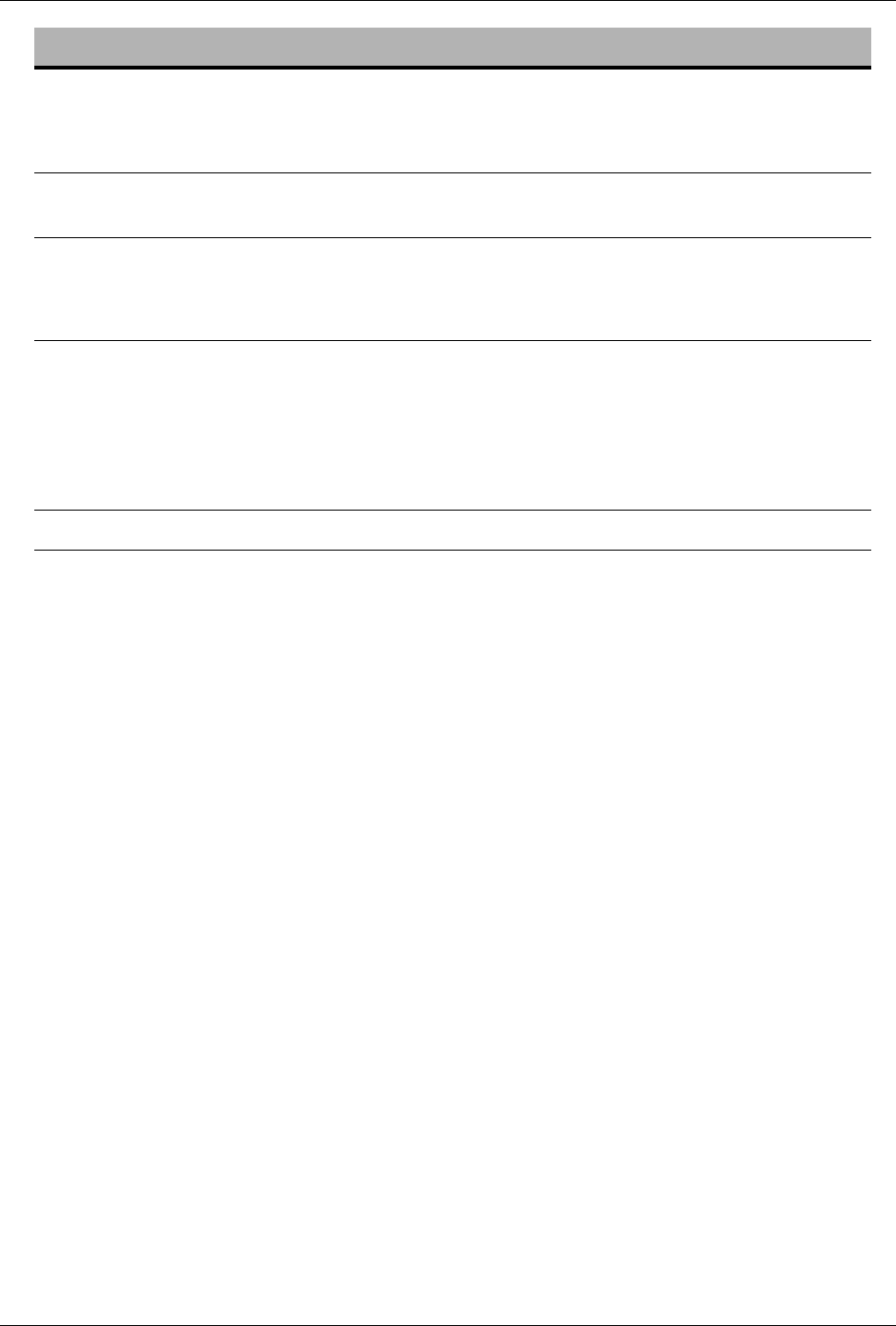
Chapter 15: Alarms and Troubleshooting
15-39 Cod. 6992200 - Rev. /
BPM: DIASTOLIC PRESSURE ALARM 46
Reason
for Alarm The diastolic pressure measurement made by the BPM device is outside
the configured limits.
Machine
Actions • The Blood Pressure Monitoring system is stopped and the measurement
is not available.
Possible Cause Suggested Action
1. The diastolic pressure measurement,
made by the BPM device, is outside the
alarm limits set by the operator in BPM
Settings sub-screen.
1. Press the CONFIRM button to remove
the alarm message.
Check in the BPM Settings sub-screen
that the “Diastolic upper” and ”Diastolic
lower” pressure limits are not too much
restrictive.
Call for Service if the alarm persists.
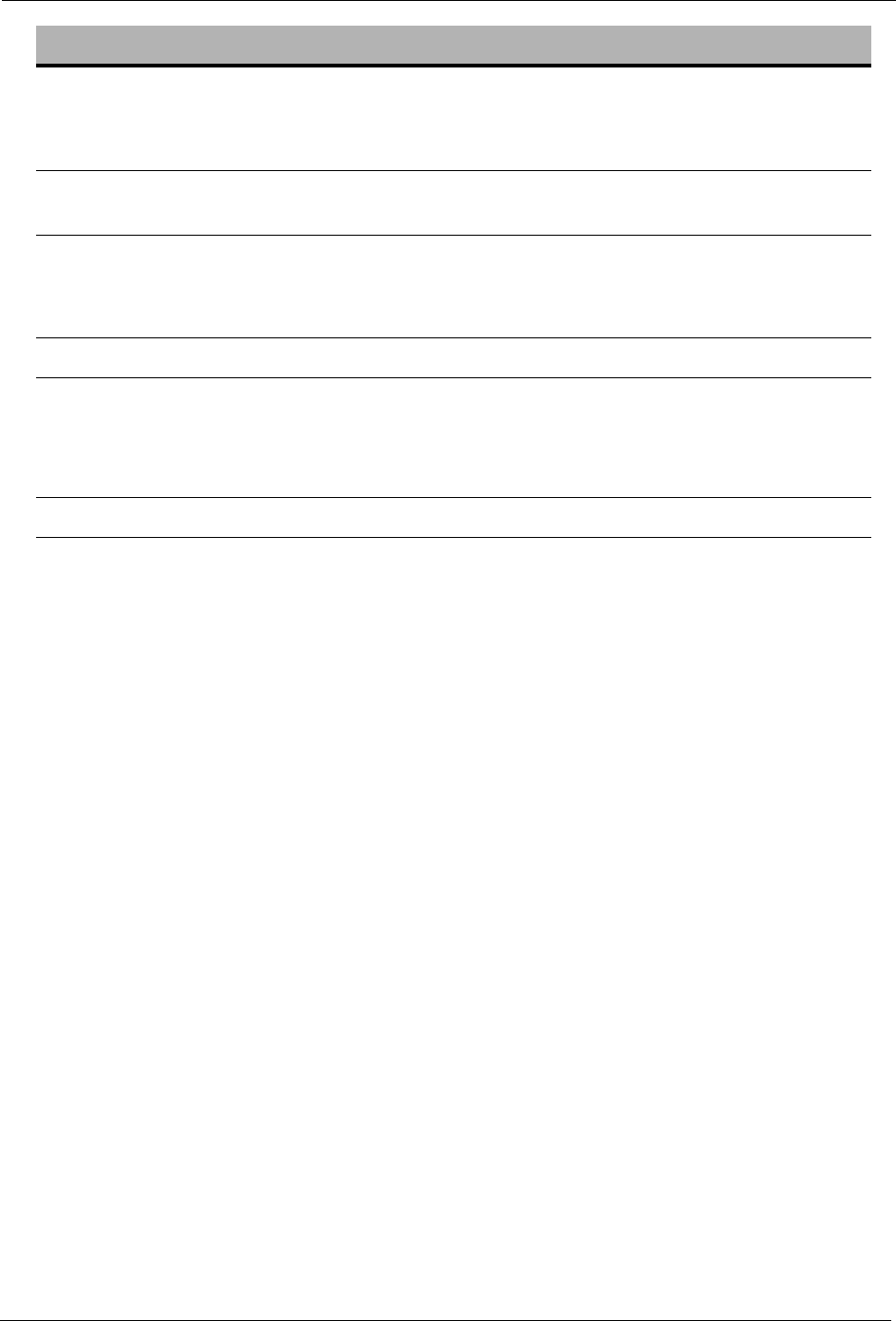
ARTIS Operator’s Manual
Cod. 6992200 - Rev. / 15-40
TREATMENT TIME COMPLETE 51
Reason
for Alarm Notification: the entered TREATMENT TIME has elapsed.
Machine
Actions • The UF Rate is automatically set to zero.
Possible Cause Suggested Action
1. The TREATMENT TIME is complete. 1. Disconnect the patient.
2. Additional TREATMENT TIME may be
needed. 2. Increase the set TREATMENT TIME to
lengthen the treatment.
Press the CONFIRM button to
continue.
Call for Service if the alarm persists.

Chapter 15: Alarms and Troubleshooting
15-41 Cod. 6992200 - Rev. /
FLUID REMOVAL COMPLETE 53
Reason
for Alarm Notification: the patient's weight removal is complete.
Machine
Actions • The UF Rate is automatically set to minimum.
Possible Cause Suggested Action
1. The programmed “TARGET UF
VOLUME” has been reached. 1. Disconnect the patient or increase the
set “TARGET UF VOLUME”, then
select the UF button.
Call for Service if the alarm persists.
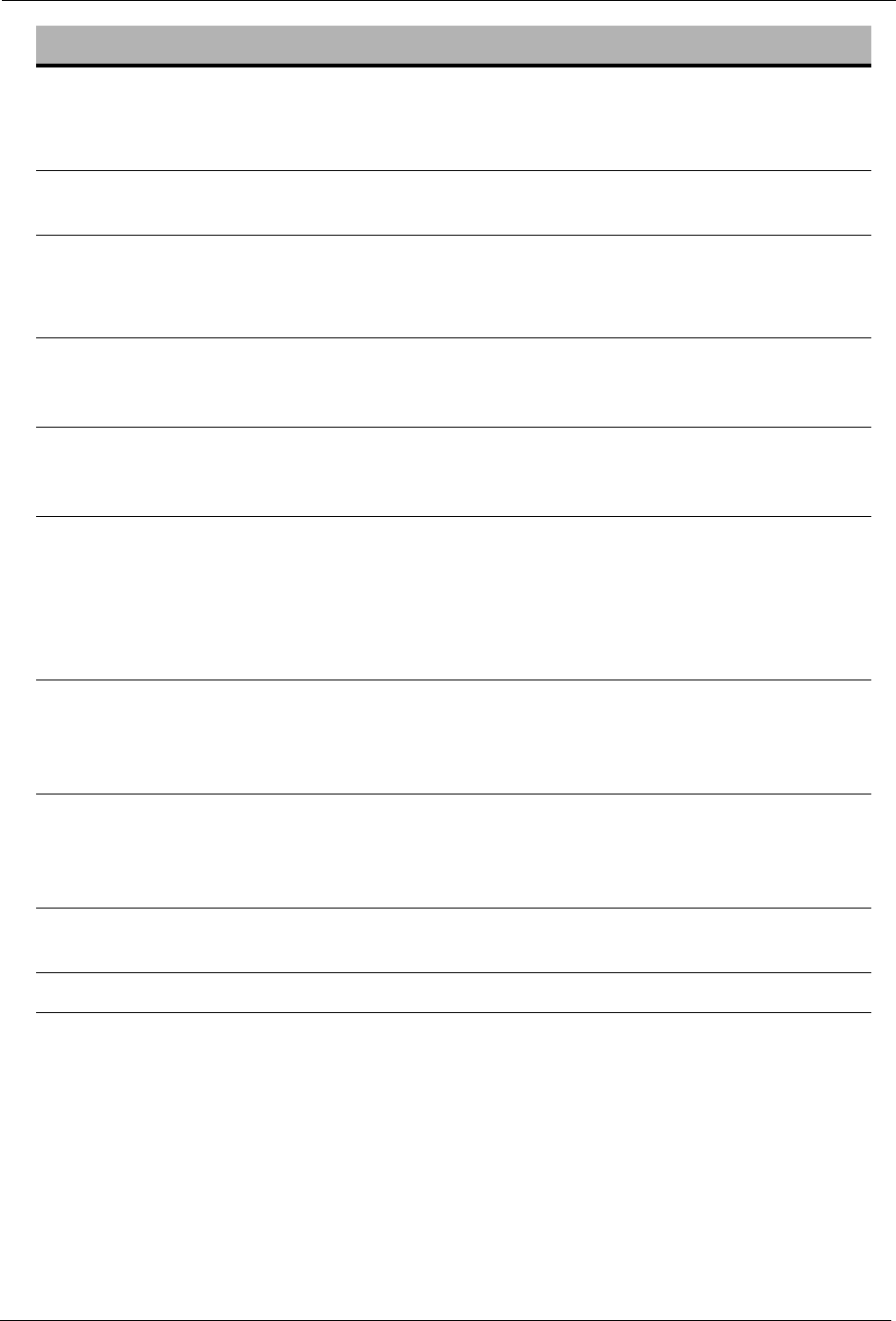
ARTIS Operator’s Manual
Cod. 6992200 - Rev. / 15-42
HEPARIN PUMP OVERLOAD 55
Reason
for Alarm The heparin syringe has reached the upper limit or the Heparin Line is
clamped.
Machine
Actions • The Heparin Pump is stopped.
Possible Cause Suggested Action
1. The syringe holder has reached the
upper hardware limit while the heparin
program is active.
1. Disable the heparin program and use
the down arrow key to exit from the
error situation.
2. The syringe holder has reached the
upper hardware limit while the heparin
program is not active.
2. Use the down arrow key to exit from the
error situation.
3. The syringe holder has reached the
upper hardware limit and the Heparin
syringe is empty.
3. Disable the heparin delivery program,
use the down arrow key to exit from the
error situation. Pull out the syringe from
the holder, refill the syringe and place it
back on the holder. Restart the
program.
4. Blocked heparin line. 4. Disable the heparin program, verify if
the heparin line is blocked and remove
the possible obstruction. Enable the
heparin delivery program.
5. The syringe is defective. 5. Disable the heparin delivery program,
pull out the defective syringe, prepare a
new filled one, place it back on the
holder. Restart the program.
6. Incorrect position of the syringe. 6. Ensure that the syringe is properly
placed into the syringe holder.
Call for Service if the alarm persists.
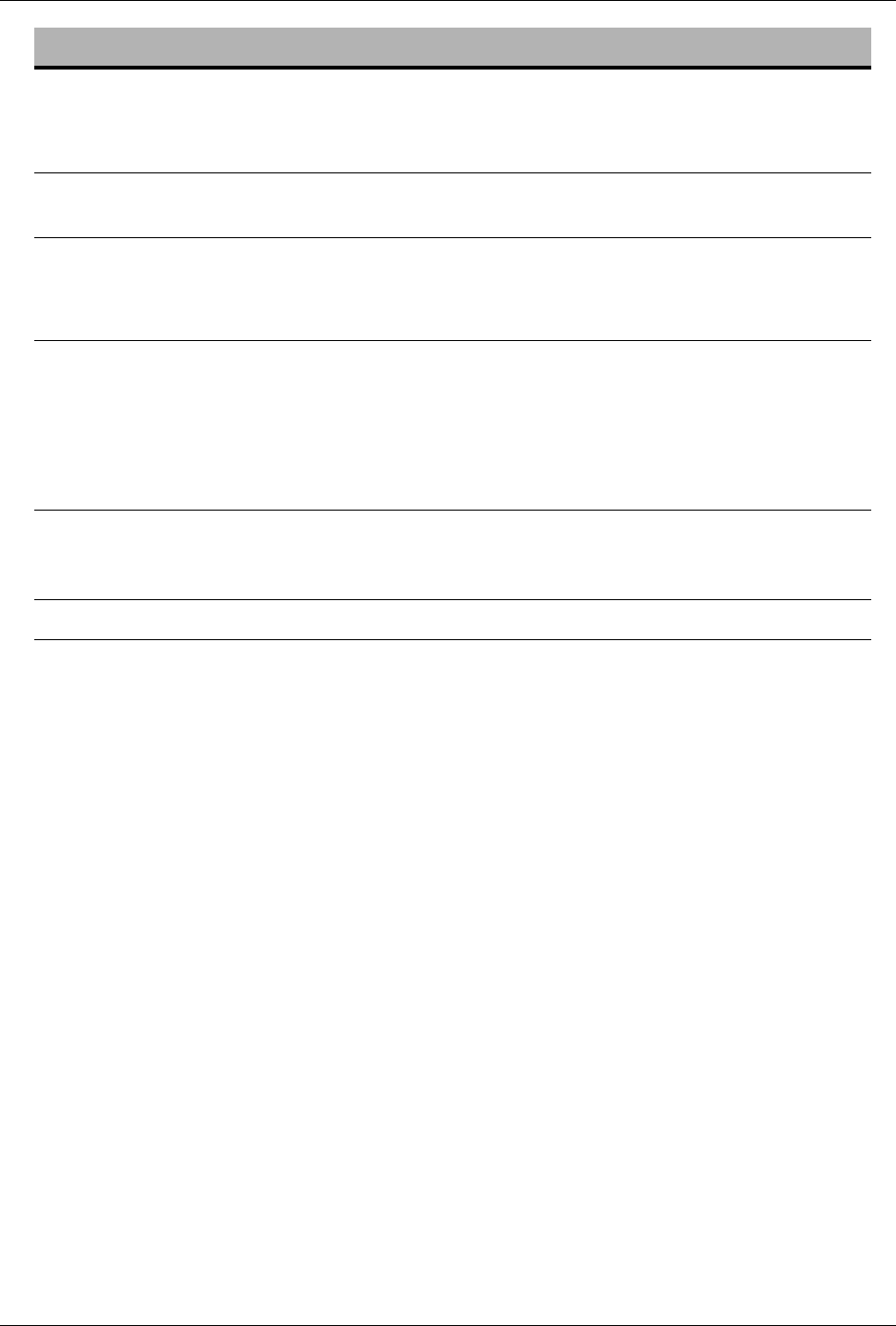
Chapter 15: Alarms and Troubleshooting
15-43 Cod. 6992200 - Rev. /
HEPARIN INFUSION COMPLETE 58
Reason
for Alarm The programmed heparin “Stop Time” has been reached.
Machine
Actions • The Heparin Pump is stopped.
Possible Cause Suggested Action
1. The Heparin delivery program is
complete. 1. Enter the Heparin Settings sub-screen.
Deactivate the heparin delivery
program to remove the alarm or in case
the patient needs more heparin, set a
new value for the heparin “Stop Time”,
lower than the previous one.
2. The programmed heparin “Stop Time” is
greater than the programmed
“Treatment Time”.
2. Set a new value either for the heparin
“Stop Time” or for the “Treatment Time”,
lower than the previous one.
Call for Service if the alarm persists.

ARTIS Operator’s Manual
Cod. 6992200 - Rev. / 15-44
UF TARGET WILL NOT BE ACHIEVED 60
Reason
for Alarm The remaining treatment time is not enough to reach the programmed
“Isolated UF Volume”.
Machine
Actions • None.
Possible Cause Suggested Action
1. The programmed Isolated UF volume
has not been achieved due to many
bypass conditions.
1. Press the “Isolated UF Settings” button
on the Fluid screen.
From the Isolated UF Settings sub-
screen, change the “Isolated UF Time”
and/or “Isolated UF Volume”
parameters.
2. The “UF” action button has been
deactivated for too long time, therefore
the time left after its activation is not
sufficient for the achievement of the set
“Isolated UF Volume”.
2. Press the “Isolated UF Settings” button
on the Fluid screen.
From the Isolated UF Settings sub-
screen, change the “Isolated UF Time”
and/or “Isolated UF Volume”
parameters.
Then select the “Isolated UF” action
button.
Call for Service if the alarm persists.

Chapter 15: Alarms and Troubleshooting
15-45 Cod. 6992200 - Rev. /
CDF1 ULTRAFILTER LOWER SWITCH ERROR 61
Reason
for Alarm The CDF1 first ultrafilter lower connector microswitch (SWLOWUF1) is
indicating an error condition.
Machine
Actions • In ADR: The phase currently running stops;
• In Dialysis fluid preparation: The machine will not continue until the
microprocessor receives the correct signal from the switch;
• In DIALYSIS: The dialysis fluid goes into Bypass.
Possible Cause Suggested Action
1. The CDF1 ultrafilter lower connector
microswitch is indicating an error
condition.
1. Check the correct position of the
ultrafilter.
Call for Service if the alarm persists.
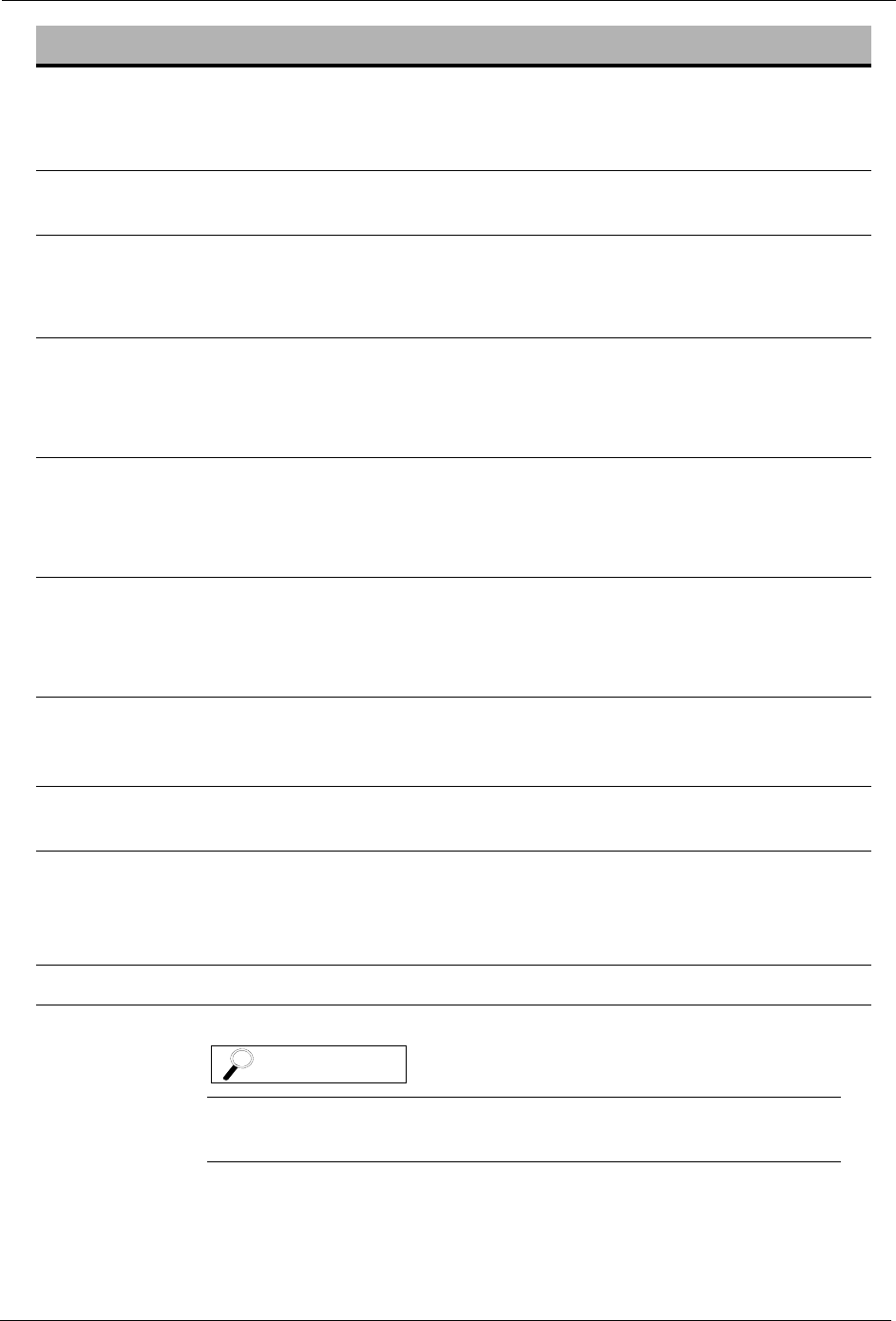
ARTIS Operator’s Manual
Cod. 6992200 - Rev. / 15-46
INCORRECT CONDUCTIVITY MEASURED 62
Reason
for Alarm The conductivity of the dialysis fluid is above the allowed limit.
Machine
Actions • The dialysis fluid goes into Bypass;
• The Venous Pump is stopped.
Possible Cause Suggested Action
1. The Acid or Bicarbonate concentrate
canister is empty. 1. Supply appropriate concentrate to the
relevant inlet connector.
Wait for stability of the dialysis fluid
flow.
2. The Acid or Bicarbonate pick-up tube
connector(s) are not properly
positioned into the concentrate
canister(s).
2. Verify that the connector(s) are properly
positioned into the proper canister(s).
Wait for stability of the dialysis fluid
flow.
3. Massive air leak from a concentrate
canister. 3. Check and replace the concentrate
canister.
Wait for stability of the dialysis fluid
flow.
4. The Acid or Bicarbonate pick-up tube
connector(s) has accumulated debris or
salt crystals.
4. Rinse the accumulated debris from the
connector(s).
5. Inappropriate solution in the Acid
concentrate canister. 5. Verify that appropriate concentrate has
been used.
6. When using acid central delivery, the
Acid or Bicarbonate pick-up tube
connector is not securely connected to
its concentrate connector port.
6. Verify that the Acid or Bicarbonate pick-
up tube connector is properly
positioned in its concentrate connector
port.
Call for Service if the alarm persists.
The use of liquid Bicarbonate concentrate is not currently
available.
NOTE
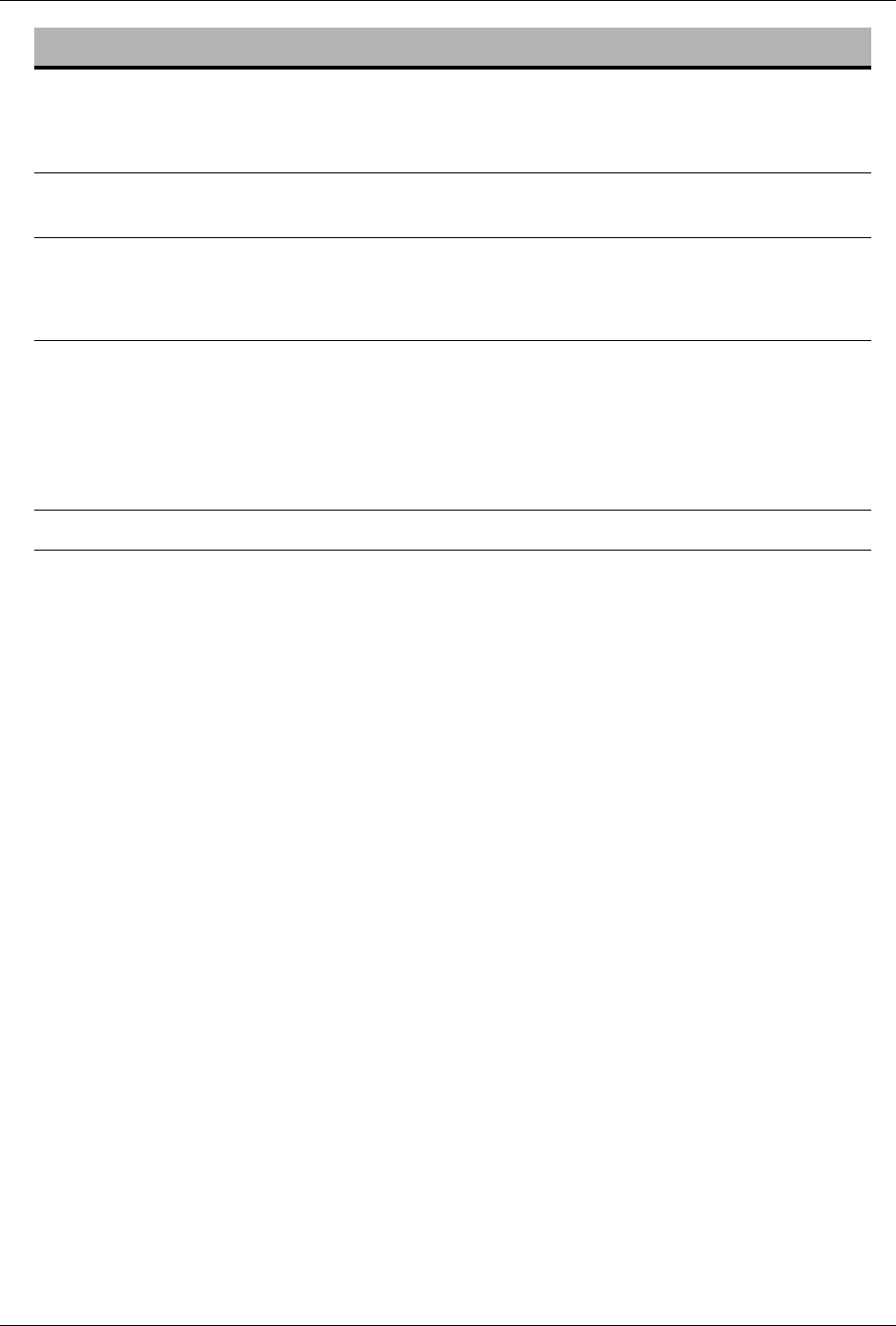
Chapter 15: Alarms and Troubleshooting
15-47 Cod. 6992200 - Rev. /
BPM HEART RATE ALARM 66
Reason
for Alarm The BPM heart rate measurement is outside the established limits.
Machine
Actions The Blood Pressure Monitoring system is stopped and the measurement is
not available.
Possible Cause Suggested Action
1. The BPM heart rate measurement is
outside the established limits. 1. Press the CONFIRM button to remove
the alarm message.
Check in the BPM Settings sub-screen
that the “Max Heart Rate” and “Min
Heart Rate” alarm limits are not too
much restrictive.
Call for Service if the alarm persists.
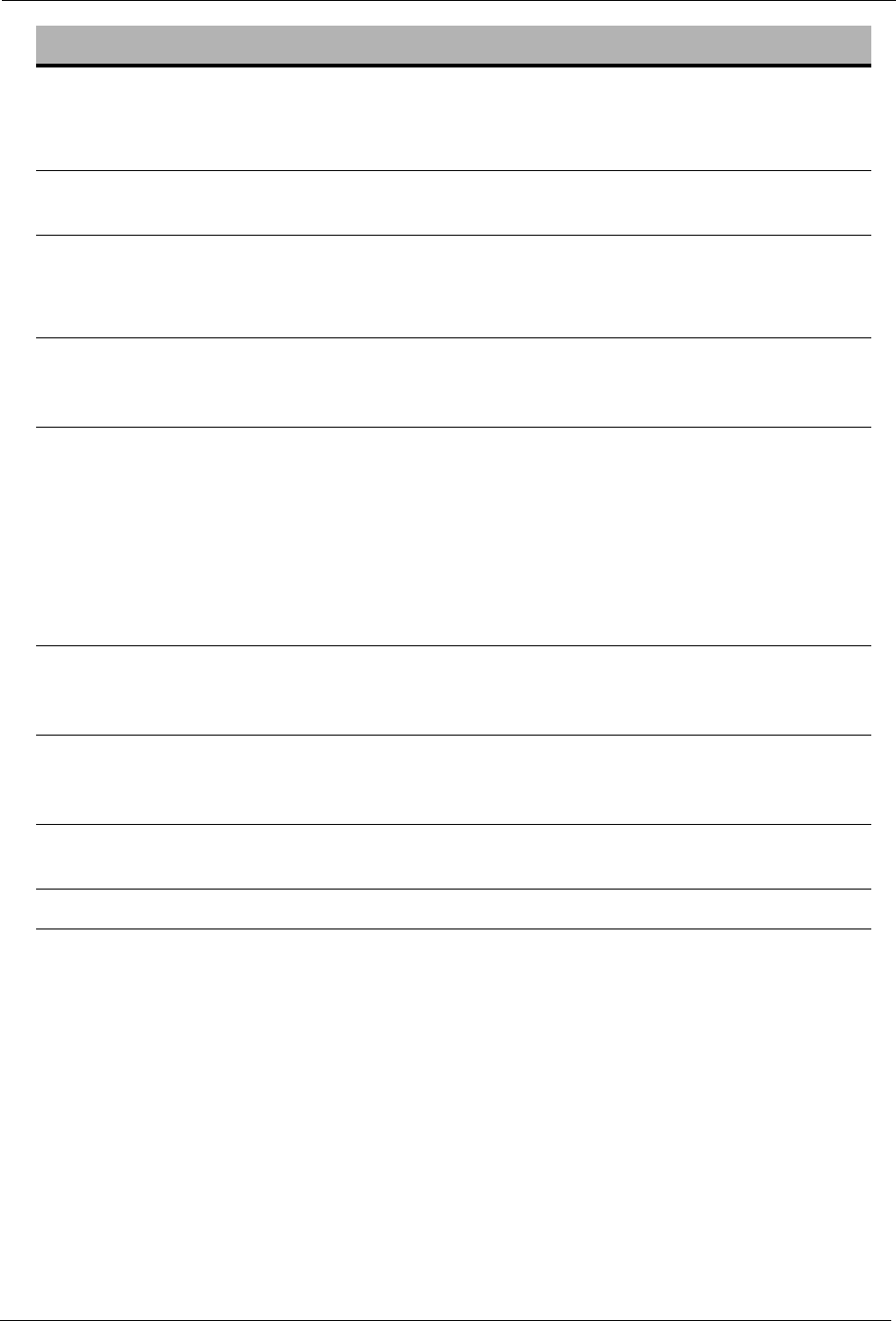
ARTIS Operator’s Manual
Cod. 6992200 - Rev. / 15-48
TMP HIGH 68
Reason
for Alarm The TMP Upper Limit value has been exceeded.
Machine
Actions • The UF Rate is automatically set to zero;
• The Venous Pump is stopped.
Possible Cause Suggested Action
1. The TMP Upper Limit value is incorrect
for the dialyzer used. 1. From the Fluid Settings sub-screen,
verify that the correct TMP Upper Limit
value was entered for the dialyzer used.
2. The blood flow rate is too high for the
dialyzer used in the current operating
condition.
2. Verify the correctness of the patient
prescription (ultrafiltration rate).
Decrease the blood flow, using the
blood flow decrease key, if this
operation is not in disagreement with
the patient prescription (to decrease the
venous pressure and avoid
hemoconcentration).
3. The ultrafiltration value is too high for
the dialyzer used in the current
operating condition.
3. Verify the correctness of the patient
prescription (ultrafiltration rate).
4. The transmembrane pressure is too
high. 4. Consider increasing the dialysis fluid
flow to increase the dialysis fluid
pressure.
5. The extracorporeal circuit is clotting. 5. Check the extracorporeal circuit for
clotting. Refer to your internal policy.
Call for Service if the alarm persists.

Chapter 15: Alarms and Troubleshooting
15-49 Cod. 6992200 - Rev. /
HEPARIN PUMP LOWER LIMIT REACHED 69
Reason
for Alarm The heparin pump has reached the lower limit.
Machine
Actions • The Heparin Pump is stopped.
Possible Cause Suggested Action
1. The syringe holder has reached the
lower hardware limit. 1. Use the up arrow key to exit from the
error situation.
Call for Service if the alarm persists.
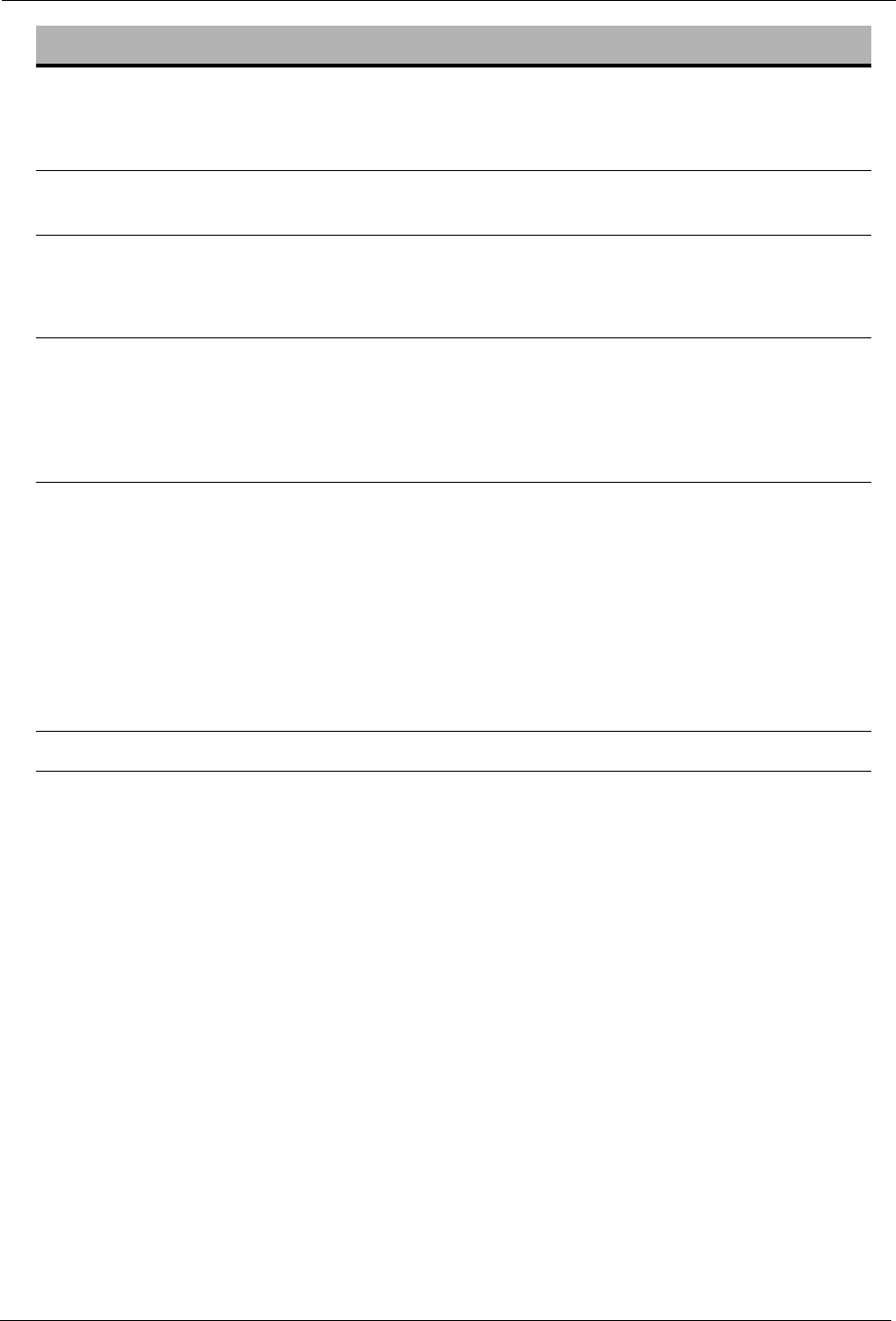
ARTIS Operator’s Manual
Cod. 6992200 - Rev. / 15-50
HEPARIN PUMP SPEED ERROR 70
Reason
for Alarm The Heparin Infusion Rate is different from the expected one.
Machine
Actions • The Heparin Pump is stopped.
Possible Cause Suggested Action
1. The actual heparin pump infusion rate
is incorrect. 1. Press the CONFIRM button to restart
the heparin pump.
If the problem does not occur anymore,
the heparin infusion will proceed
according to the settings.
2. The actual heparin pump infusion rate
is incorrect. 2. Press the CONFIRM button to restart
the heparin pump.
If the problem persists, the alarm will be
displayed and the pump will be stopped
again.
To proceed with the infusion, deactivate
the heparin program and infuse the
heparin manually or using the “Heparin
Syringe Positioning Keys”.
Call for Service if the alarm persists.

Chapter 15: Alarms and Troubleshooting
15-51 Cod. 6992200 - Rev. /
HEPARINIZATION NOT INITIATED 71
Reason
for Alarm The Heparin Delivery Program has not been activated.
Machine
Actions • None.
Possible Cause Suggested Action
1. The heparin infusion was not enabled
by the operator. 1. In Heparin settings sub-screen:
• Press the “Heparin” action button to
enable the heparin delivery program
and
• Press the CONFIRM button to remove
the alarm.
2. No heparin delivery program is needed. 2. Press the CONFIRM button to remove
the alarm.
Call for Service if the alarm persists.
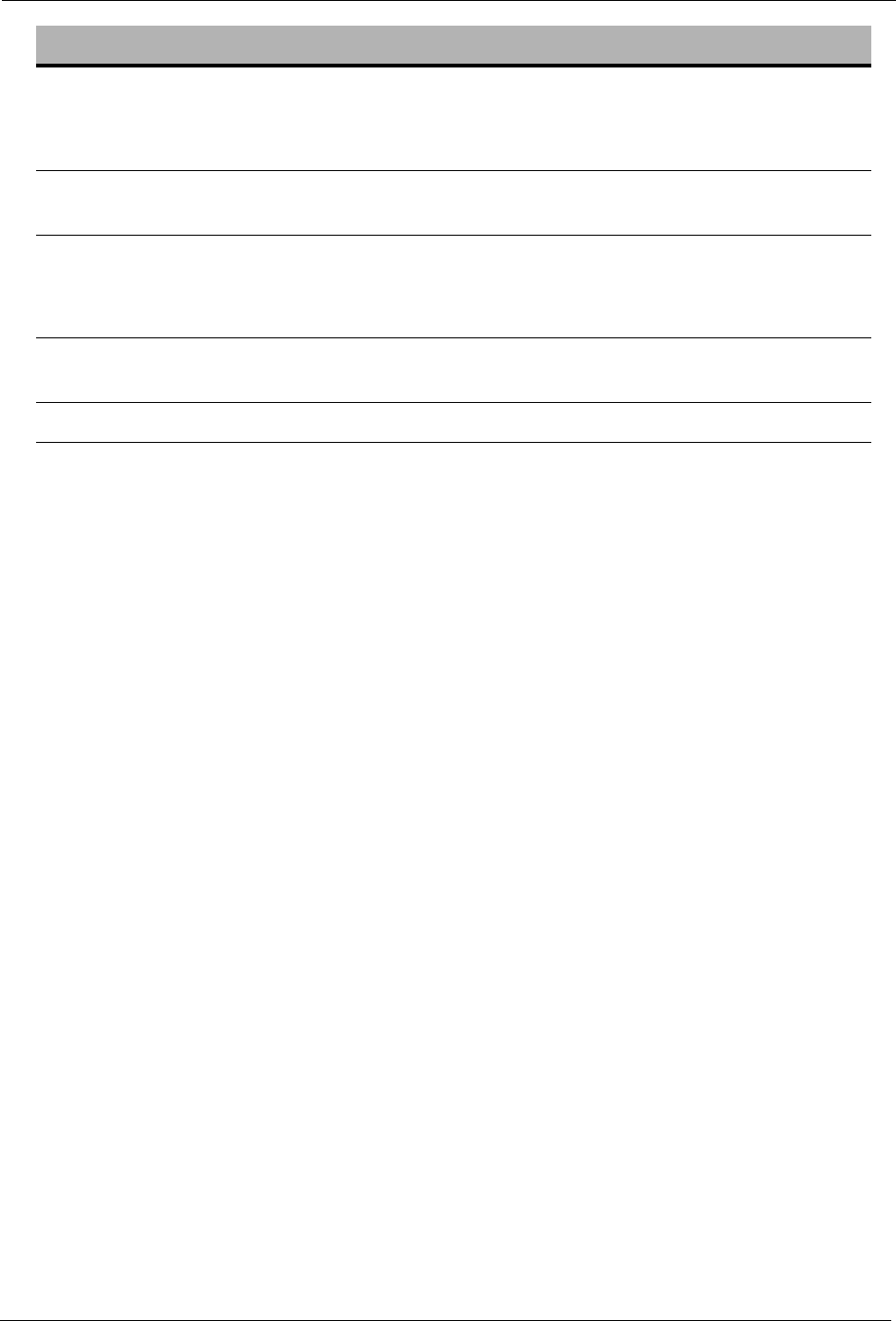
ARTIS Operator’s Manual
Cod. 6992200 - Rev. / 15-52
LOW TEMPERATURE 81
Reason
for Alarm This alarm appears if, in Chemical Disinfection with heating, the hydraulic
circuit temperature falls below 35,5°C.
Machine
Actions • The process time will stop until the temperature measured in the
hydraulic circuit reaches 36°C.
Possible Cause Suggested Action
1. Temporary drop of the temperature. 1. No Action is required. The machine
should heat automatically.
Call for Service if the alarm persists.
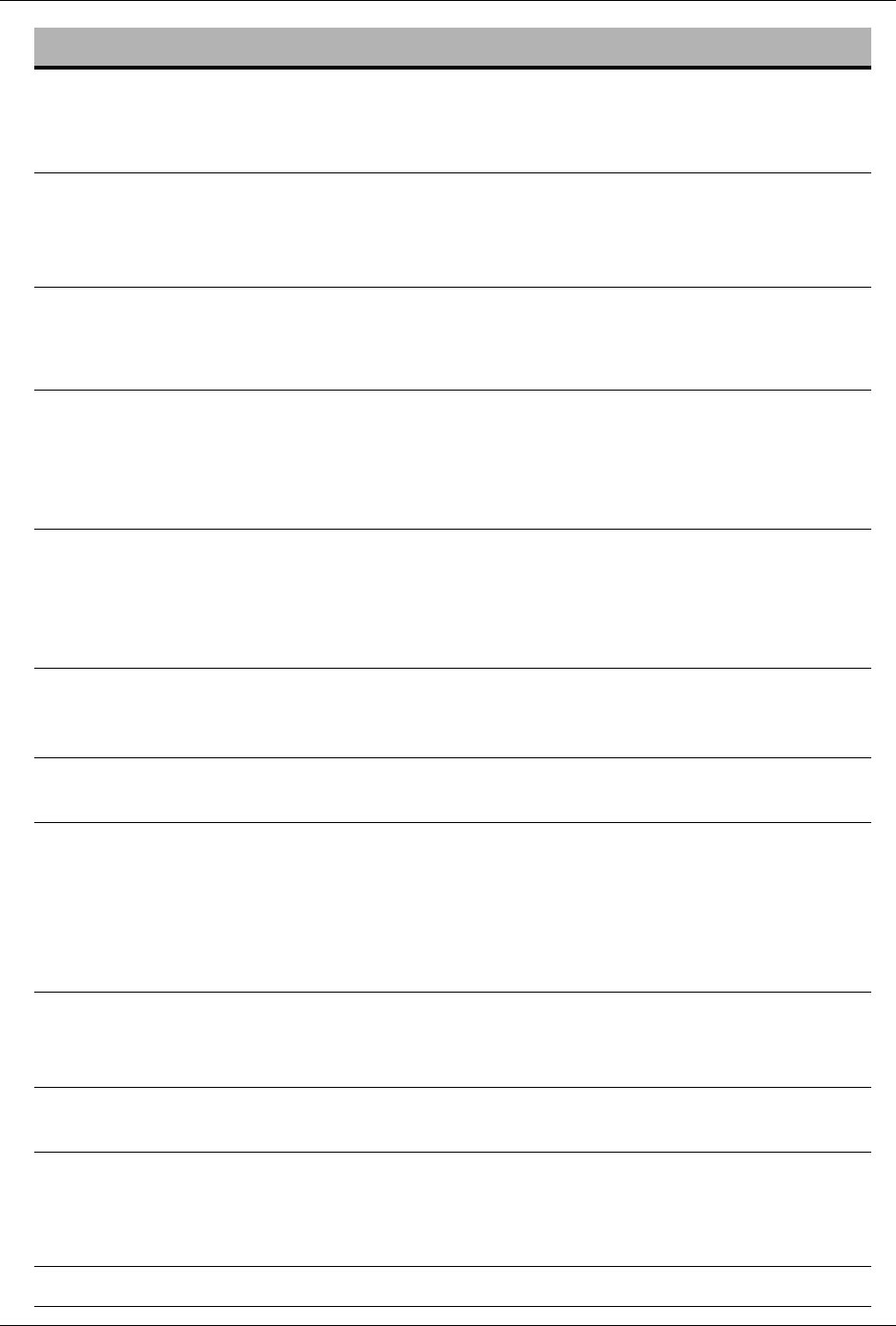
Chapter 15: Alarms and Troubleshooting
15-53 Cod. 6992200 - Rev. /
DIALYZER INLET PRESSURE HIGH 87
Reason
for Alarm Pressure higher than what is allowed has been detected at the Dialyzer
Inlet Connector.
Machine
Actions • The phase currently running stops;
• The P1 and P2 pumps are stopped;
• All the pumps are stopped;
• The dialysis fluid goes into Bypass.
Possible Cause Suggested Action
1. The Red and Blue dialysis fluid tube
connectors are in the wrong position. 1. Verify that the Red and Blue dialysis fluid
tube connectors are in the proper
position for the current phase of the
machine, then press the
CONFIRM
button.
2. The Red and Blue dialysis fluid tube
connectors are in the proper position, but
not well inserted.
2. Verify that the Red and Blue dialysis fluid
tube connectors are well fitted to the
dialyzer or to the machine, depending
upon the phase of the machine at that
time, then press the
CONFIRM
button.
3. The external dialysis fluid tubes are
kinked. 3. Verify that the external dialysis fluid
tubes are not kinked, then press the
CONFIRM
button.
4. Massive presence of air inside the
hydraulic circuit. 4. Verify the presence of air in the external
dialysis fluid tubes.
5. The blood flow is too high, producing an
overpressure within the hydraulic circuit. 5. Verify the correctness of the patient
prescription (ultrafiltration rate).
Decrease the blood flow, using the blood
flow decrease key, if this operation is not
in disagreement with the patient
prescription.
6. Clotting or clogging in the blood side of
the dialyzer. 6. Check for clotting or clogging in the blood
side of the dialyzer.
Replace the dialyzer if necessary.
7. The dialysis fluid flow rate is not correct
for the current dialyzer. 7. From the Fluid Settings sub-screen,
reduce the dialysis fluid flow rate.
8. Incorrect placement of the diaphragm
between the Blood Cassette and the
venous seal.
8. Perform a Cassette Repositioning
Procedure (Refer to the "Chapter 7:
Special Procedures", in this Operator’s
Manual).
Call for Service if the alarm persists.
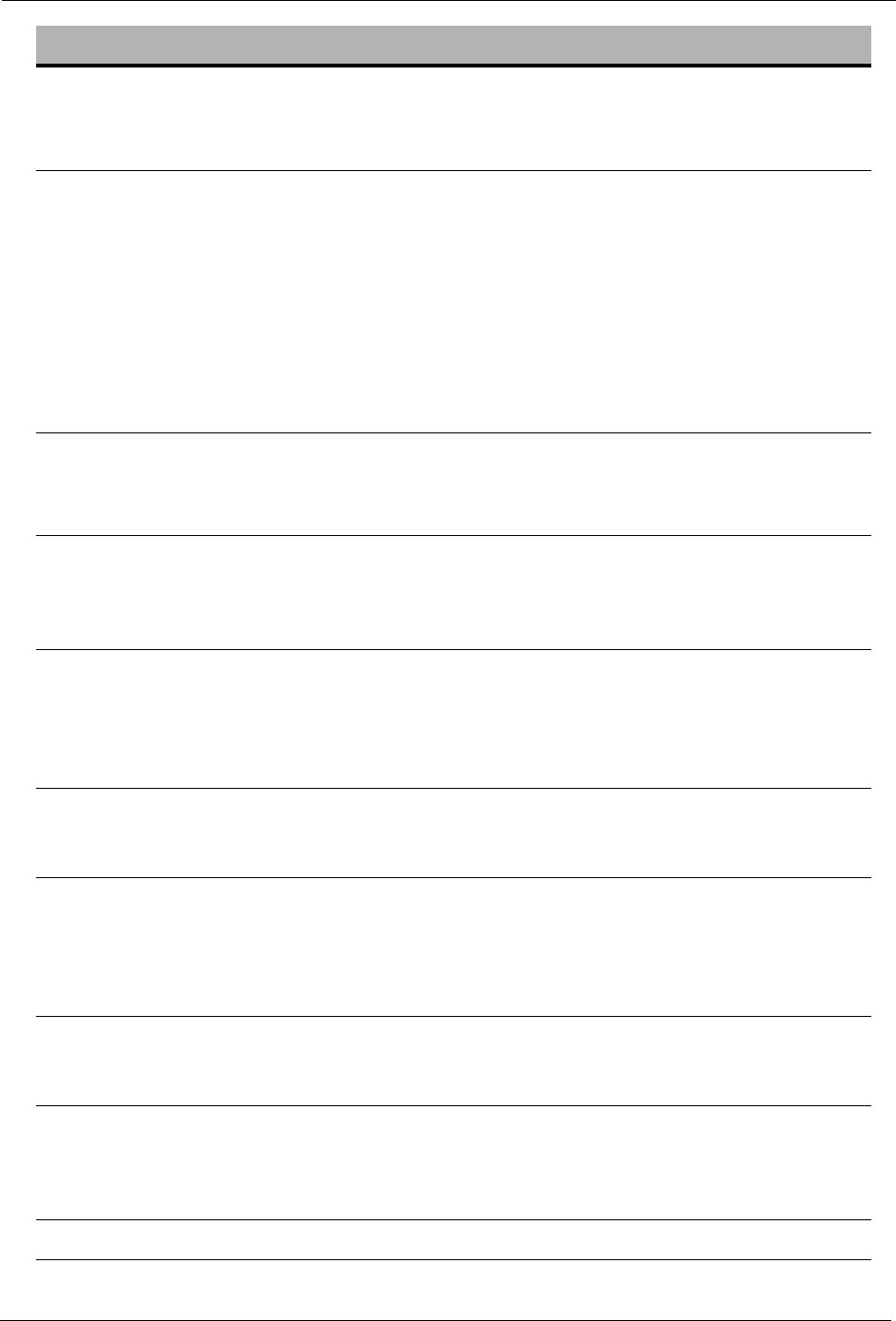
ARTIS Operator’s Manual
Cod. 6992200 - Rev. / 15-54
DIALYZER OUTLET PRESSURE HIGH 88
Reason
for Alarm Pressure higher than what is allowed has been detected at the Dialyzer
Outlet Connector.
Machine
Actions In DIALYSIS:
• If the pressure is greater than 450 mmHg, the UF pump is driven at the
current value and the phase currently running stops;
• If the pressure is greater than 500 mmHg, the UF pump is driven at the
current value and the phase currently running stops;
• All the pumps are stopped;
• The dialysis fluid goes into Bypass.
In ADR:
• The phase currently running stops;
• All the pumps are stopped.
Possible Cause Suggested Action
1. The dialysis fluid tube connectors are in
the wrong position. 1. Verify that the dialysis fluid tube
connectors are in the proper position for
the current phase of the machine, then
press the CONFIRM button.
2. The dialysis fluid tube connectors are in
the proper position, but not well
inserted.
2. Verify that the dialysis fluid tube
connectors are well fitted to the dialyzer
or to the machine, depending upon the
phase of the machine at that time, then
press the CONFIRM button.
3. The external dialysis fluid tubes are
kinked. 3. Verify that the external dialysis fluid
tubes are not kinked, then press the
CONFIRM button.
4. The blood flow is too high, producing an
overpressure on the hydraulic side of
the machine.
4. Verify the correctness of the patient
prescription (ultrafiltration rate).
Consider reducing the blood flow if this
operation is not in disagreement with
the patient prescription.
5. Clotting or clogging in the blood side of
the dialyzer. 5. Check for clotting or clogging in the
blood side of the dialyzer. Replace the
dialyzer if necessary.
6. Incorrect placement of the diaphragm
between the Blood Cassette and the
venous seal.
6. Perform a Cassette Repositioning
Procedure (Refer to the "Chapter 7:
Special Procedures", in this Operator’s
Manual).
Call for Service if the alarm persists.
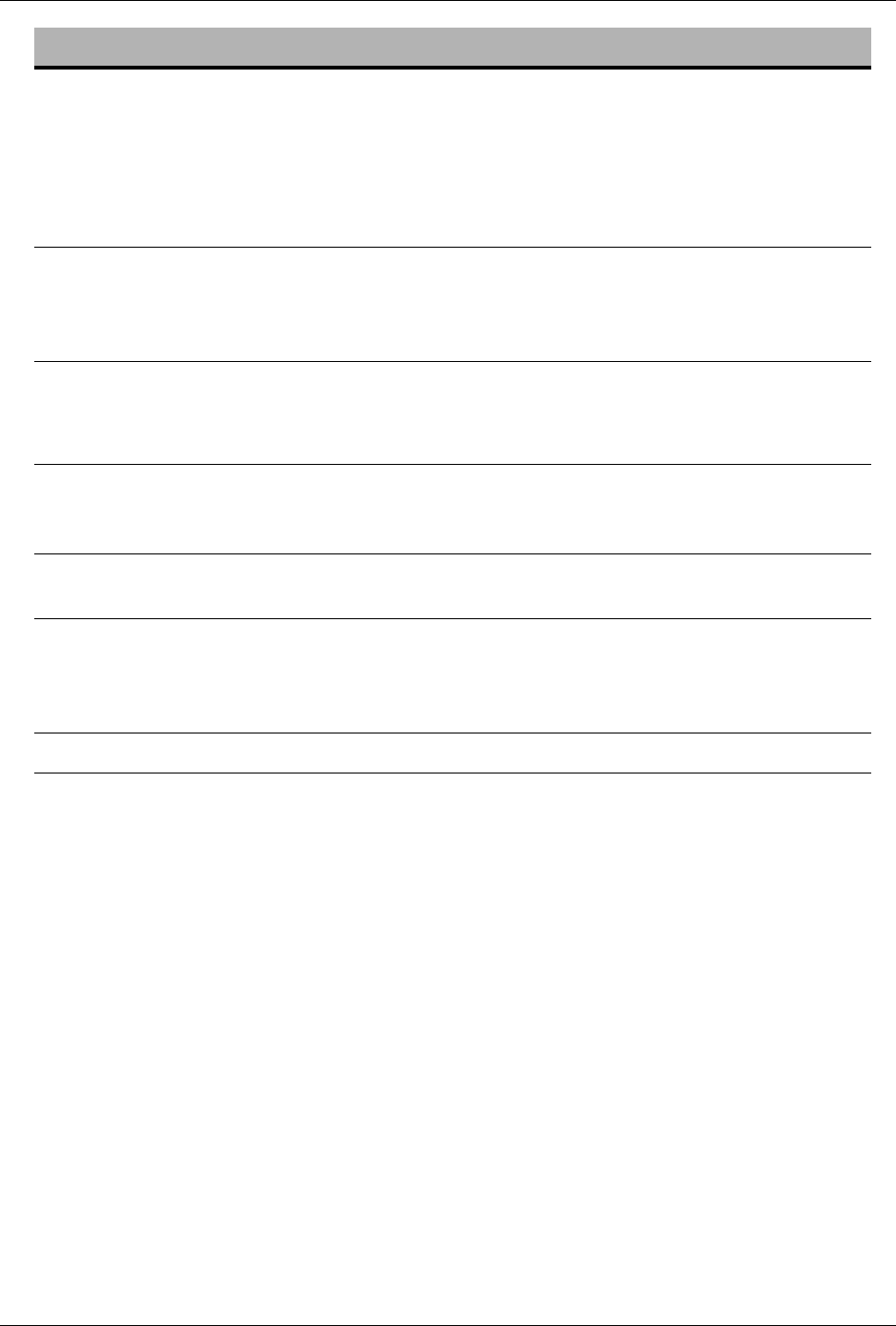
Chapter 15: Alarms and Troubleshooting
15-55 Cod. 6992200 - Rev. /
MAXIMUM TEMPERATURE LIMIT 90
Reason
for Alarm The temperature measured by TP is greater than the following maximum
values:
• In DIALYSIS: 60°C (114.8°F)
• In Chemical Disinfection: 42°C (107.6°F)
• In Heat or Heat Citric Disinfection: 110°C (230 °F)
Machine
Actions • The heater is turned off;
• The phase currently running stops;
• All the hydraulic pumps are stopped;
• The dialysis fluid goes into Bypass.
Possible Cause Suggested Action
1. The machine had a temporaneous
unstable condition. 1. Verify the patient safety. Wait for the
temperature to drop; the heater is
automatically turned on.
2. The machine has malfunctioned. 2. Discontinue the dialysis treatment and
call for Service.
3. The incoming water temperature is too
high. 3. Check the incoming water temperature
(Refer to the "Chapter 16:
Specifications" in this Operator’s
Manual).
Call for Service if the alarm persists.
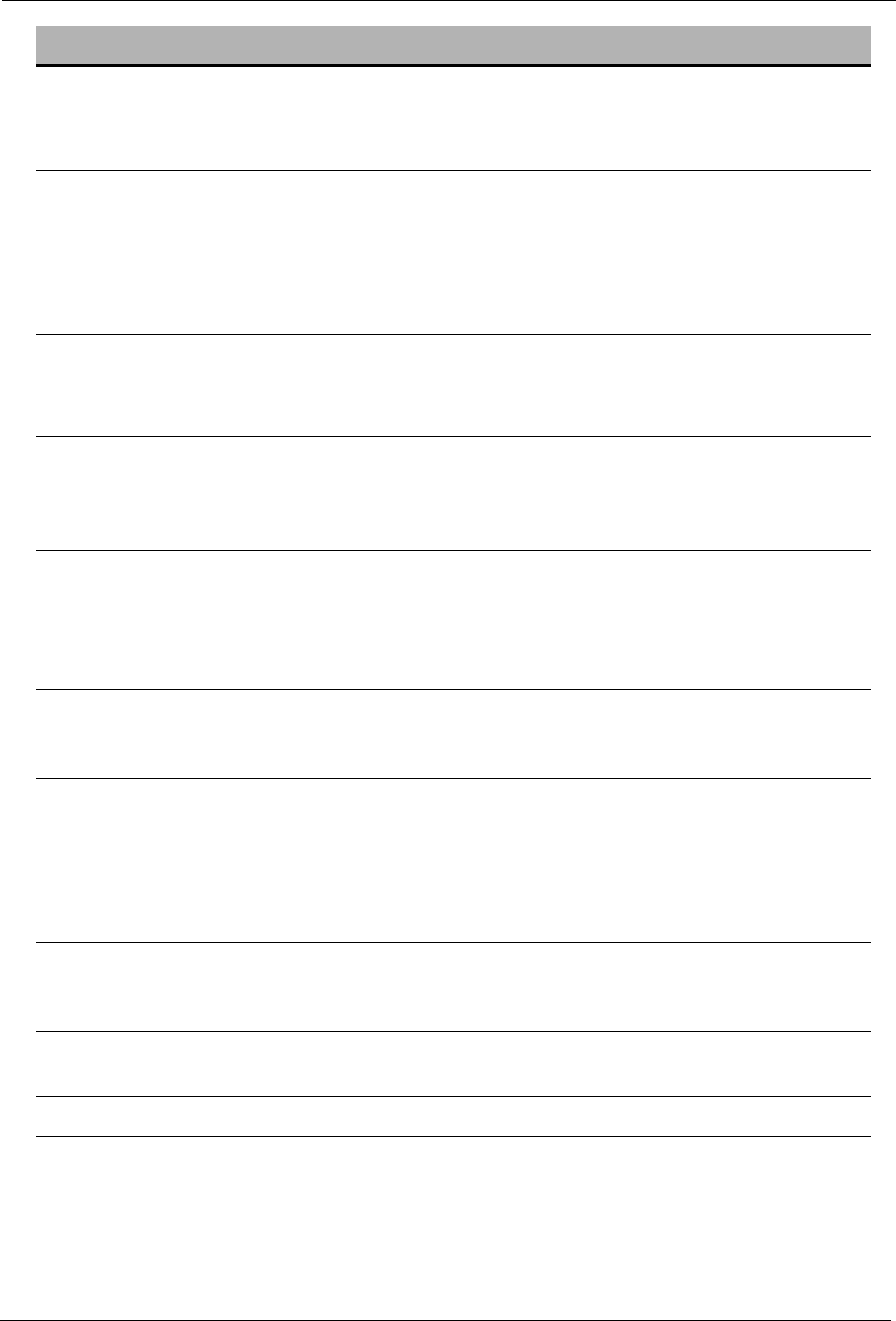
ARTIS Operator’s Manual
Cod. 6992200 - Rev. / 15-56
DIALYZER INLET PRESSURE LOW 94
Reason
for Alarm Pressure lower than what is allowed has been detected at the Dialyzer
Inlet Connector.
Machine
Actions In DIALYSIS:
• The P1 and P2 pumps are stopped;
• The dialysis fluid goes into Bypass.
In ADR:
• The phase currently running stops;
• All the pumps are stopped.
Possible Cause Suggested Action
1. Dialysis fluid tube connectors in the
wrong position. 1. Verify the dialysis fluid tube connectors
are in the proper position for the current
phase of the machine, then press the
CONFIRM button.
2. Dialysis fluid tube connectors in the
proper position, but not well inserted. 2. Verify the dialysis fluid tube connectors
are well fitted to the dialyzer or to the
machine, depending upon the phase of
the machine at that time, then press the
CONFIRM button.
3. The external dialysis fluid tubes are
kinked. 3. Verify the external dialysis fluid tubes
are not kinked, then press the
CONFIRM button.
4. The UF Rate is too high for the dialyzer
used. 4. Check the proper UF Rate for the
dialyzer used. Consider reducing the
blood flow if this operation is not in
disagreement with the patient
prescription, then press the CONFIRM
button.
5. Clotting or clogging in the blood side of
the dialyzer. 5. Check for clotting or clogging in the
blood side of the dialyzer. Replace the
dialyzer if necessary.
6. The dialysis fluid flow is not correct for
the current dialyzer. 6. Consider reducing the dialysis fluid flow
rate.
Call for Service if the alarm persists.
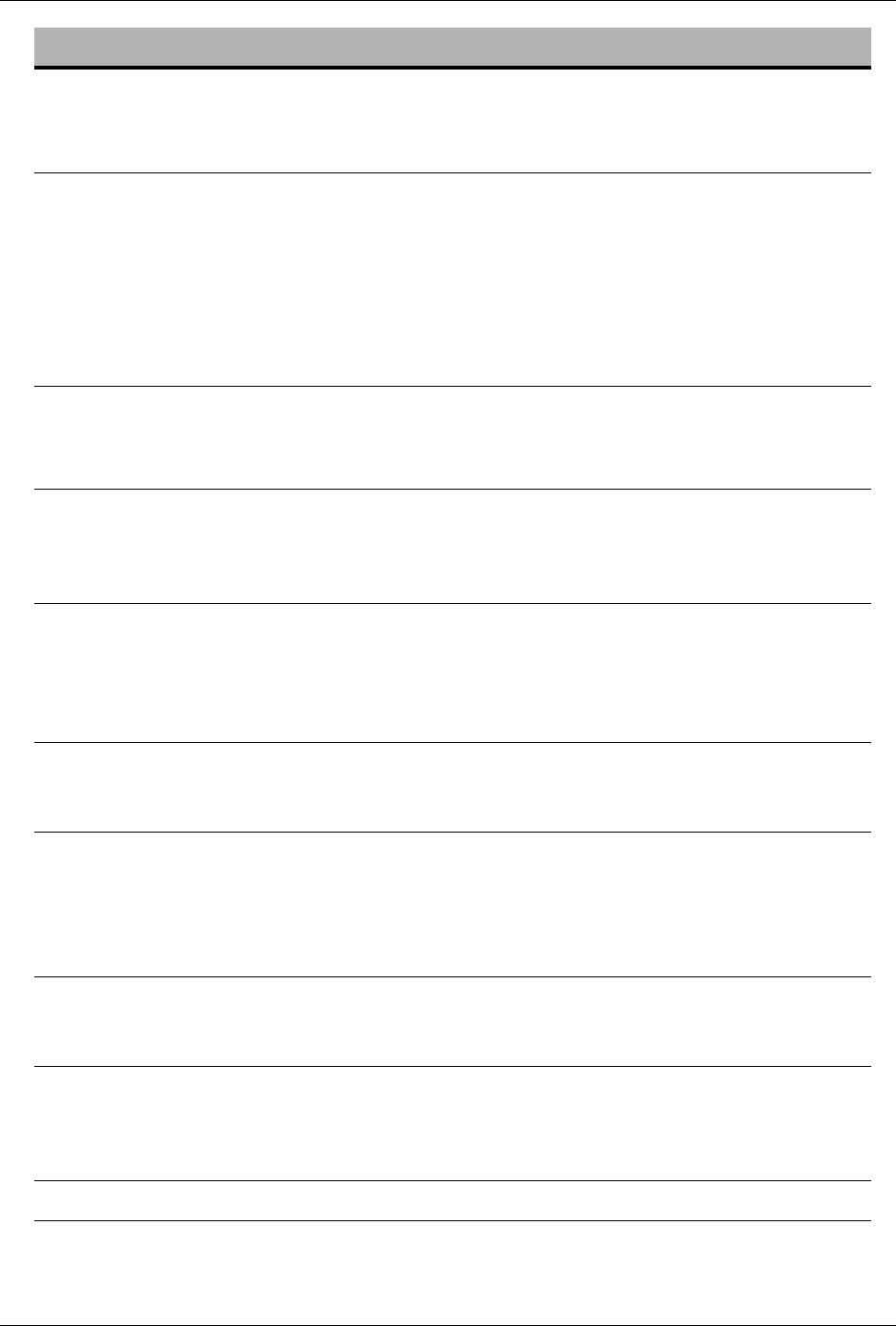
Chapter 15: Alarms and Troubleshooting
15-57 Cod. 6992200 - Rev. /
DIALYZER OUTLET PRESSURE LOW 95
Reason
for Alarm Pressure lower than what is allowed has been detected at the Dialyzer
Outlet Connector.
Machine
Actions In DIALYSIS:
• If the pressure is lower than -350 mmHg, the UF Pump is stopped;
• If the pressure is lower than -450 mmHg, the UF Pump is stopped;
• All the pumps are stopped;
• The dialysis fluid goes into Bypass.
In ADR:
• The phase currently running stops;
• All the pumps are stopped.
Possible Cause Suggested Action
1. The dialysis fluid tube connectors are in
the wrong position. 1. Verify that the dialysis fluid tube
connectors are in the proper position for
the current phase of the machine, then
press the CONFIRM button.
2. The dialysis fluid tube connectors are in
the proper position, but not well
inserted.
2. Verify that the dialysis fluid tube
connectors are well fitted to the dialyzer
or to the machine, depending upon the
phase of the machine at that time, then
press the CONFIRM button.
3. The external dialysis fluid tubes are
kinked. 3. Verify that the external dialysis fluid
tubes are not kinked, then press the
CONFIRM button.
4. The blood flow is too high, producing an
overpressure on the hydraulic side of
the machine.
4. Verify the correctness of the patient
prescription (ultrafiltration rate).
Consider reducing the blood flow if this
operation is not in disagreement with
the patient prescription.
5. Clotting or clogging in the blood side of
the dialyzer. 5. Check for clotting or clogging in the
blood side of the dialyzer. Replace the
dialyzer if necessary.
6. Incorrect placement of the diaphragm
between the Blood Cassette and the
venous seal.
6. Perform a Cassette Repositioning
Procedure (Refer to the "Chapter 7:
Special Procedures", in this Operator’s
Manual).
Call for Service if the alarm persists.
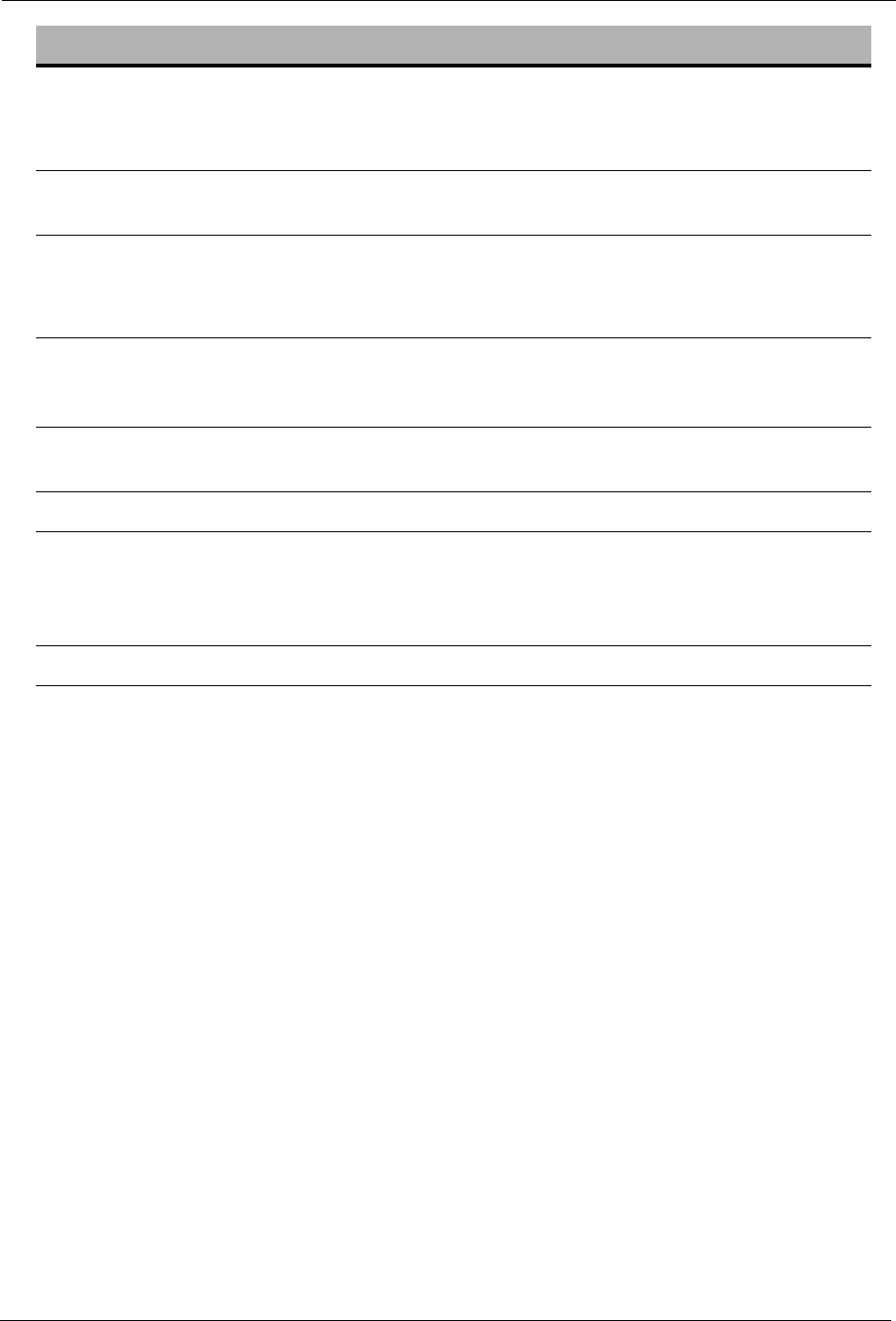
ARTIS Operator’s Manual
Cod. 6992200 - Rev. / 15-58
INSUFFICIENT WATER SUPPLY 100
Reason
for Alarm The Inlet Water pressure is low.
Machine
Actions • All the Hydraulic Pumps are stopped;
• The dialysis fluid goes into Bypass.
Possible Cause Suggested Action
1. Pressure drop in the water distribution
system. 1. Verify that there is adequate water
pressure in the water distribution
system.
2. The water inlet tube is disconnected. 2. Connect the water inlet tube to the
proper water valve.
3. The water valve is closed. 3. Verify the water valve is open.
4. The incoming water filter is clogging. 4. Check the water filter in the machine for
clogging. A clogged filter will decrease
the amount of water flowing through the
system.
Call for Service if the alarm persists.
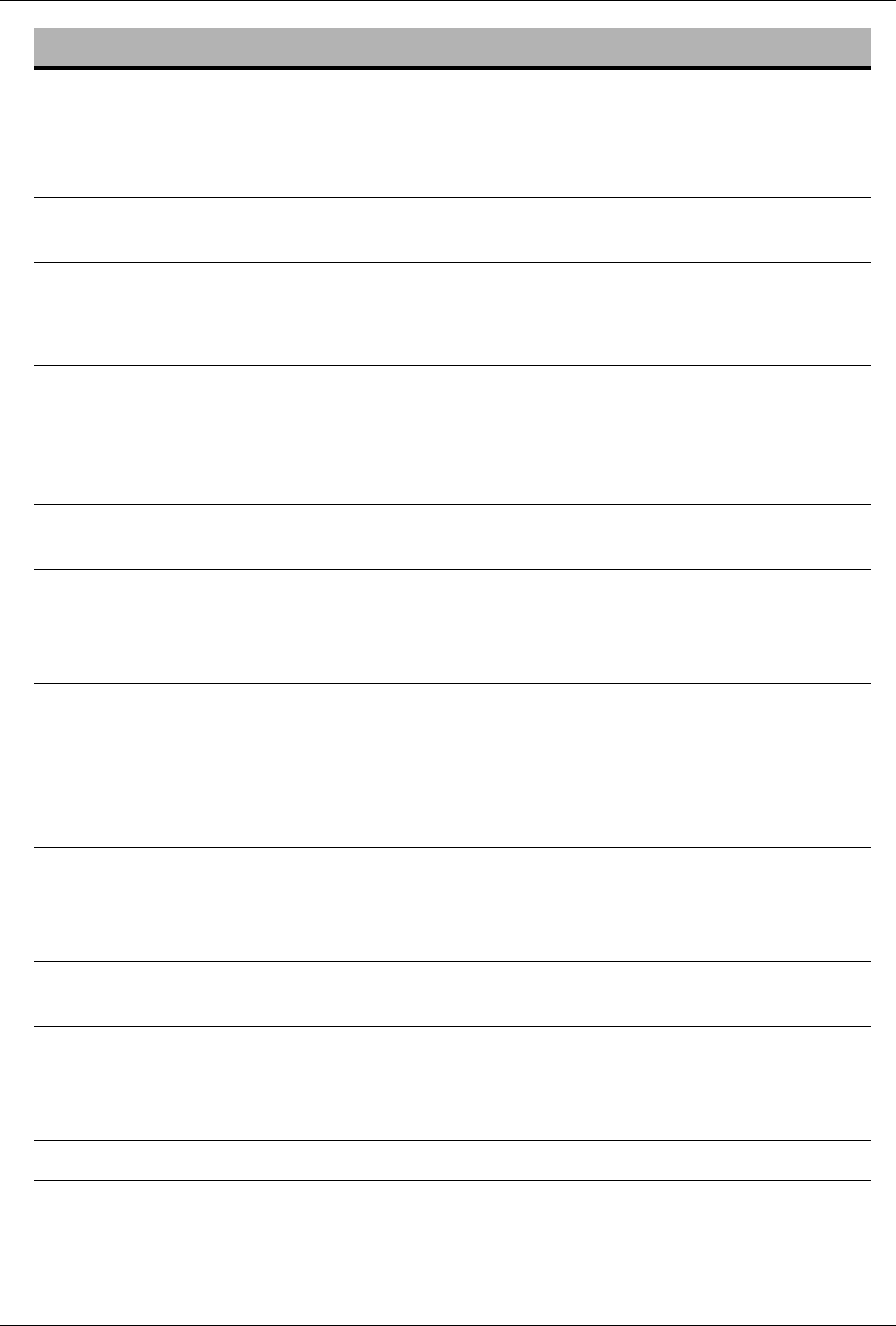
Chapter 15: Alarms and Troubleshooting
15-59 Cod. 6992200 - Rev. /
DIALYZER PRESSURE MAXIMUM 114
Reason
for Alarm The dialyzer inlet pressure, measured by the PI pressure sensor, OR the
dialyzer outlet pressure, measured by the PO pressure sensor, has
exceeded the maximum limit.
Machine
Actions • The dialysis fluid goes into Bypass.
Possible Cause Suggested Action
1. The dialysis fluid tube connectors are
not in the proper position or are not well
inserted.
1. Verify that the dialysis fluid tube
connectors are in the proper position
and are well fitted to the dialyzer or to
the machine, depending upon the
phase of the machine at that time.
2. The external dialysis fluid tubes are
kinked. 2. Verify that the external dialysis fluid
tubes are not kinked.
3. Massive presence of air inside the
hydraulic circuit. 3. Verify the presence of air into the
external dialysis fluid tube. Verify the
dialysis fluid connectors are well fitted
to the dialyzer or to the machine.
4. The UF Rate is too low. 4. Verify the correctness of the patient
prescription (ultrafiltration rate).
Consider reducing the Blood Pump
speed if this operation is not in
disagreement with the patient
prescription.
5. Clotting or clogging in the dialyzer and/
or Blood Cassette. 5. Check for clotting or clogging in the
blood side of the dialyzer or in the
Blood Cassette. Replace the dialyzer
and the Blood Cassette if necessary.
6. The dialysis fluid flow rate is not correct
for the current dialyzer. 6. Consider reducing the dialysis fluid flow
rate.
7. Incorrect placement of the diaphragm
between the Blood Cassette and the
venous seal.
7. Perform a Cassette Repositioning
Procedure (Refer to the "Chapter 7:
Special Procedures", in this Operator’s
Manual).
Call for Service if the alarm persists.
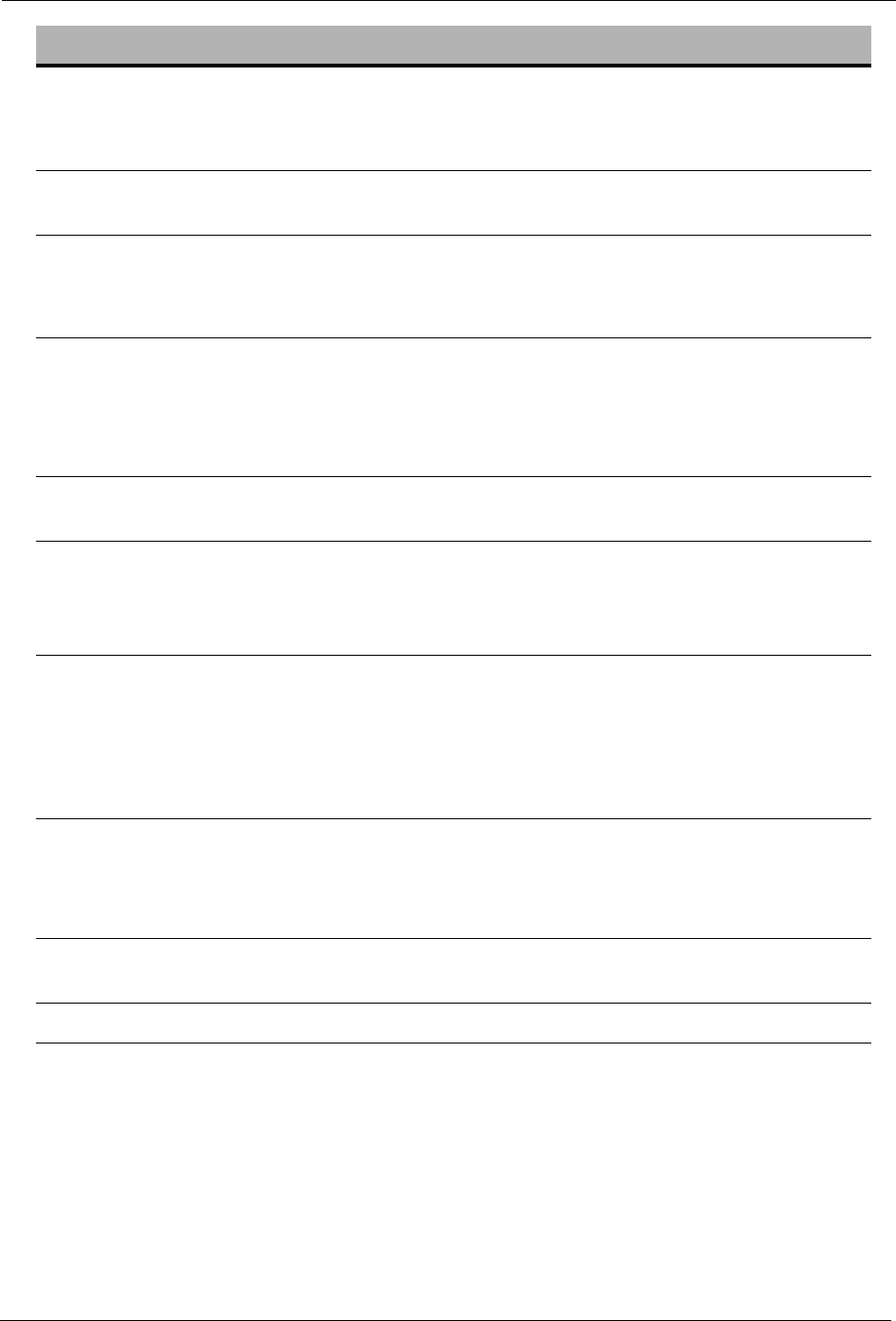
ARTIS Operator’s Manual
Cod. 6992200 - Rev. / 15-60
DIALYZER PRESSURE MINIMUM 115
Reason
for Alarm The dialyzer inlet pressure, measured by PI sensor, OR the dialyzer outlet
pressure, measured by PO sensor, are below the minimum limit.
Machine
Actions • The UF Rate is automatically set to zero.
Possible Cause Suggested Action
1. The dialysis fluid tube connectors not in
the proper position or are not inserted
well.
1. Verify that the dialysis fluid tube
connectors are in the proper position
and are well fitted to the dialyzer or to
the machine, depending upon the
phase of the machine at that time.
2. The external dialysis fluid tubes are
kinked. 2. Verify that the external dialysis fluid
tubes are not kinked.
3. Massive presence of air inside the
hydraulic circuit. 3. Verify the presence of air in the external
dialysis fluid tubes. Verify the dialysis
fluid connectors are well fitted to the
dialyzer or to the machine.
4. The UF Rate is too high for the dialyzer
used. 4. Verify the correctness of the patient
prescription (ultrafiltration rate).
Consider increasing the Blood Pump
speed if this operation is not in
disagreement with the patient
prescription.
5. Clotting or clogging in the dialyzer or
the Blood Cassette. 5. Check for clotting or clogging in the
blood side of the dialyzer or in the
Blood Cassette.
Replace if necessary.
6. The dialysis fluid flow rate is not correct
for the current dialyzer. 6. Consider increasing the dialysis fluid
flow rate.
Call for Service if the alarm persists.
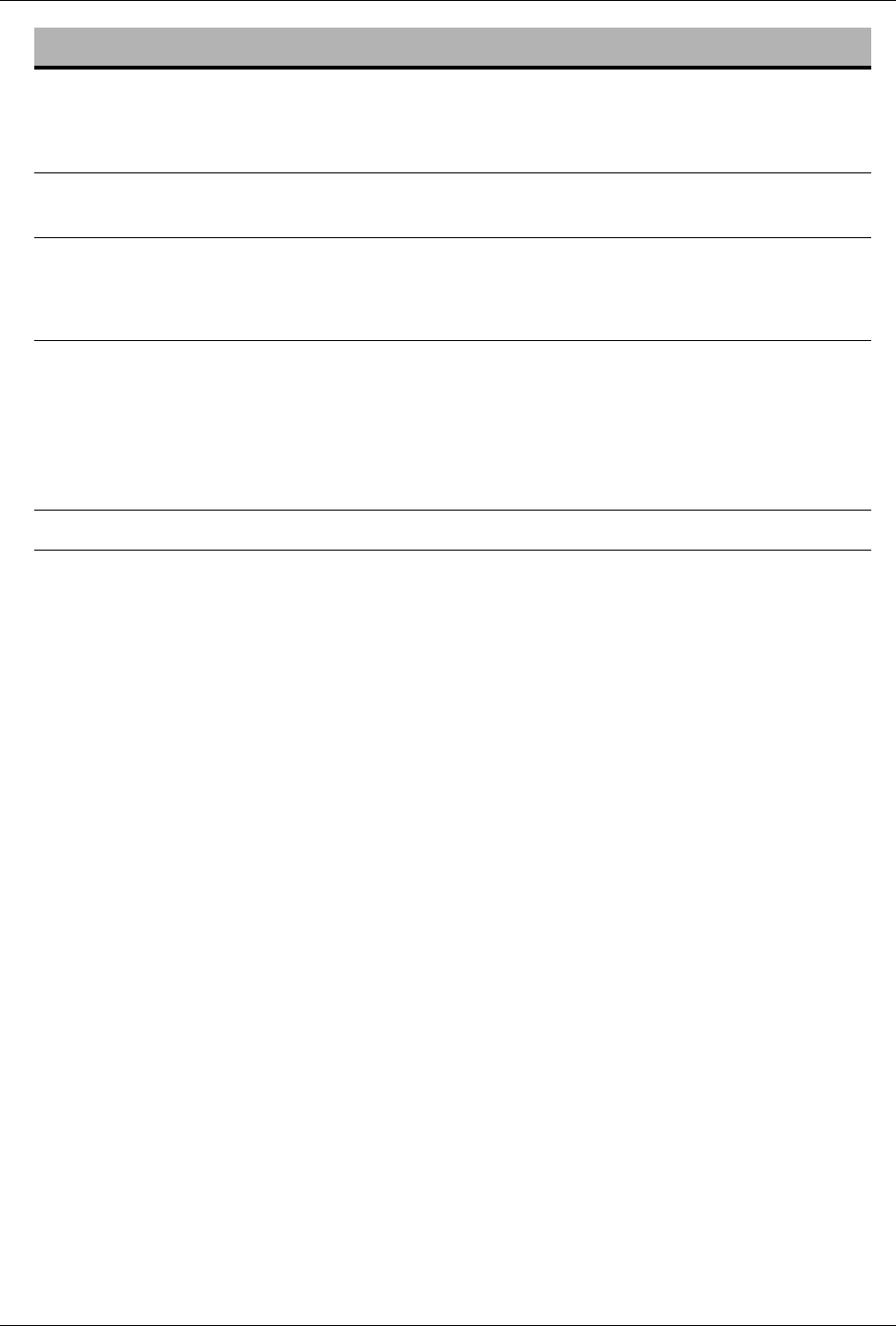
Chapter 15: Alarms and Troubleshooting
15-61 Cod. 6992200 - Rev. /
BPM SYSTOLIC PRESSURE ALARM 132
Reason
for Alarm The systolic pressure measurement made by the BPM device is outside
the configured limits.
Machine
Actions • The Blood Pressure Monitoring System is stopped and the measurement
is not available.
Possible Cause Suggested Action
1. The systolic pressure measurement
made by the BPM device is outside the
configured limits.
1. Press the CONFIRM button to remove
the alarm message.
Check in the BPM settings sub-screen
that the (“Systolic upper”/”Systolic
lower”) pressure limits are not too much
restrictive.
Call for Service if the alarm persists.
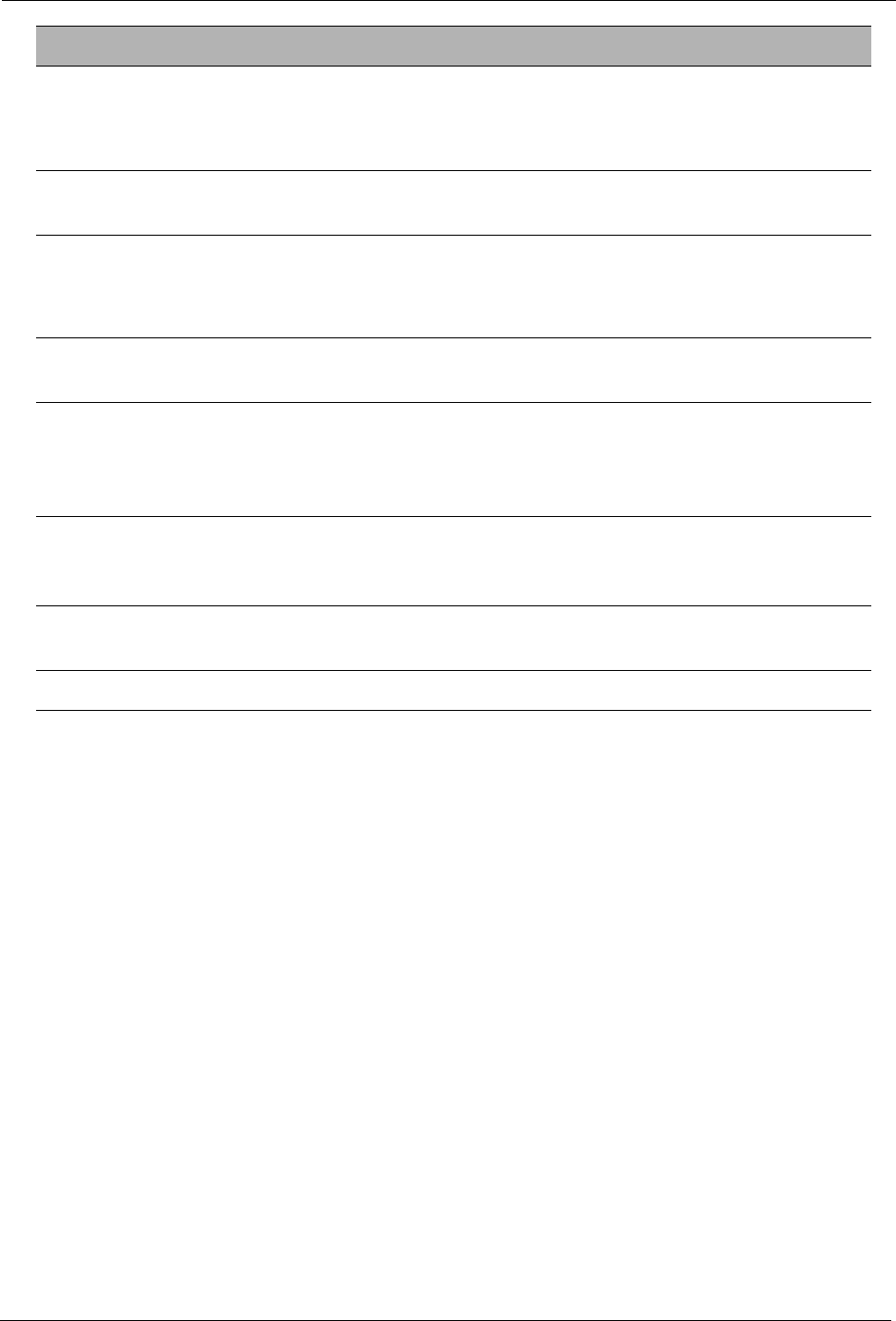
ARTIS Operator’s Manual
Cod. 6992200 - Rev. / 15-62
DIALYSIS FLUID TEMP HIGH 134
Reason
for Alarm The temperature of the dialysis fluid is 2°C above the value set by the
operator.
Machine
Actions • The dialysis fluid goes into Bypass;
• The Venous Pump is stopped.
Possible Cause Suggested Action
1. A temporary instability of the dialysis
fluid flow. 1. Wait for stability of the system.
2. The temperature of the dialysis fluid
has exceeded the safety limits. 2. Check the incoming water temperature
(Refer to the "Chapter 16:
Specifications" in this Operator’s
Manual).
3. The machine has recently been turned
on and has not yet reached the
operating temperature.
3. If the machine temperature remains
high or low for more than 10 minutes,
discontinue the dialysis treatment.
4. The machine has an internal
malfunction. 4. Discontinue the dialysis treatment.
Call for Service if the alarm persists.

Chapter 15: Alarms and Troubleshooting
15-63 Cod. 6992200 - Rev. /
TMP LOW 142
Reason
for Alarm The current TMP value is below the lowest TMP safety limit.
Machine
Actions • The UF Rate is automatically set to zero;
• The Venous pump is stopped.
Possible Cause Suggested Action
1. The dialyzer used is not correct for the
current treatment. 1. Verify the correctness of the patient
prescription (ultrafiltration rate).
Increase the blood flow, using the blood
flow increase key, if this operation is not in
disagreement with the patient
prescription
.
Comply with the specifications of the
dialyzer.
2. The Blood Pump is stopped. 2. Correct the action which caused the
Blood Pump to stop and restart the
Blood Pump.
3. The Red and Blue dialysis fluid tubes
are blocked. 3. Check that the Red and Blue dialysis
fluid tubes are not kinked or clamped.
4. The Blood Cassette is not well
positioned or a pressure pod
diaphragm has collapsed. The
Pressure Sensor cannot read properly.
4. If the alarm condition persists, verify the
Blood Cassette position.
Verify that the pressure pod diaphragm
is not collapsed.
If required, perform a Cassette
Repositioning Procedure (Refer to the
"Chapter 7: Special Procedures", of this
Operator’s Manual).
Call for Service if the alarm persists.
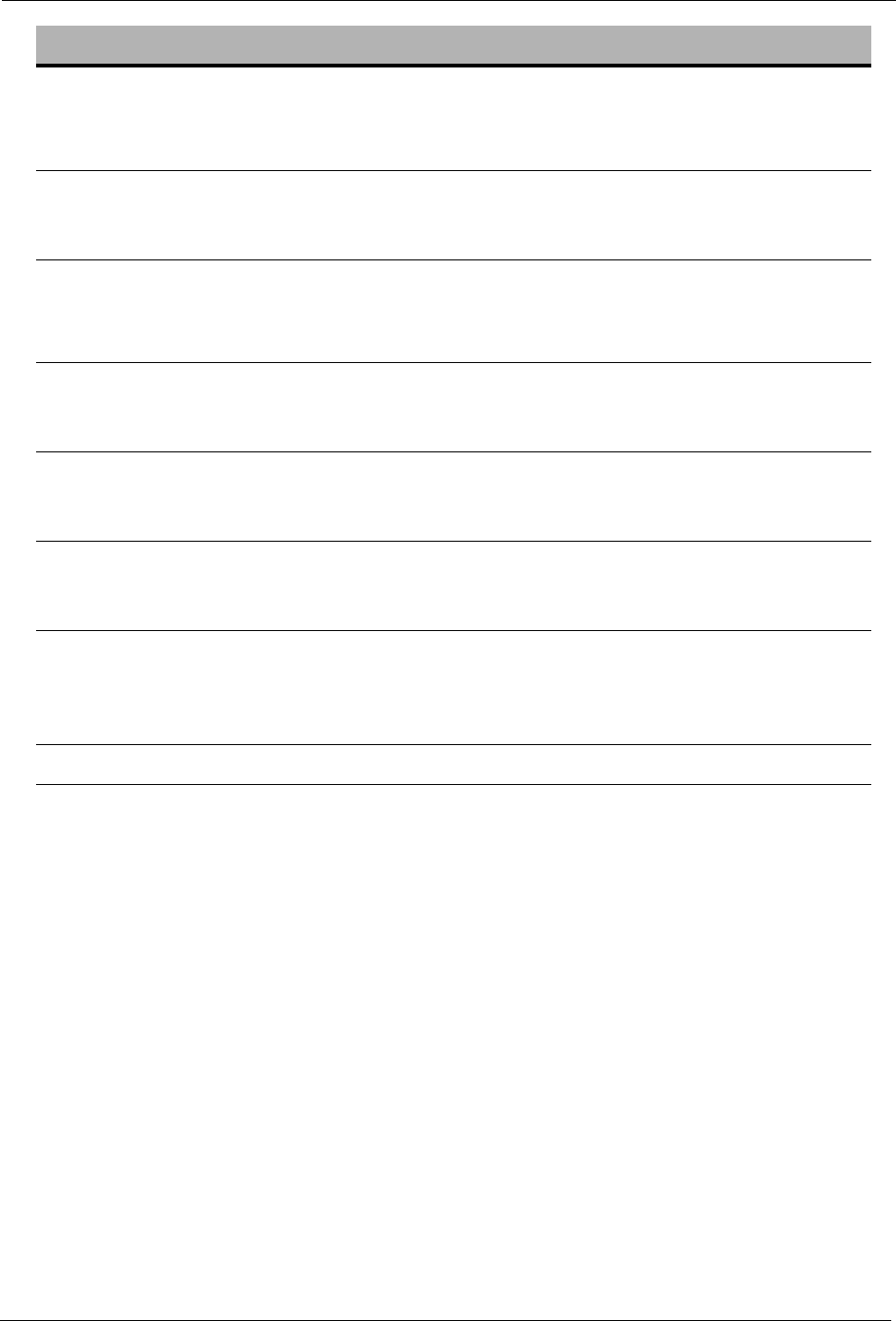
ARTIS Operator’s Manual
Cod. 6992200 - Rev. / 15-64
UF RATE HIGHER THAN EXPECTED 145
Reason
for Alarm The ultrafiltration rate (UFR) is above the value confirmed by the operator
or the maximum permitted value.
Machine
Actions • The Venous Pump is stopped;
• The dialysis fluid goes into Bypass;
• Calibration request.
Possible Cause Suggested Action
1. Error in the Ultrafiltration Mass Balance
in the Hydraulic Module, due to
incorrect valves control.
1. Press the CONFIRM button and
continue the treatment.
2. Error in the Ultrafiltration Mass Balance
in the Hydraulic Module, due to
incorrect flowmeter reading.
2. Press the CONFIRM button and
continue the treatment.
3. Error in the Ultrafiltration Mass Balance
in the Hydraulic Module, due to
incorrect P2 pump flow or P2 reading.
3. Press the CONFIRM button and
continue the treatment.
4. The machine could not perform an
alignment of the D2 flowmeter during
the treatment and the Ultrafiltration
Mass Balance could be incorrect.
4. Press the CONFIRM button and
continue the treatment.
Call for Service if the alarm persists.

Chapter 15: Alarms and Troubleshooting
15-65 Cod. 6992200 - Rev. /
DIALYSATE PRESSURE HIGH 146
Reason
for Alarm The pressure in the Ultrafilter is higher than the permitted limit.
Machine
Actions • The phase currently running stops;
• The dialysis fluid goes into Bypass;
• All the pumps are stopped.
Possible Causes Suggested Action
1. The Ultrafilter is clogged. 1.
During treatment: from the Fluid Settings
sub-screen, decrease
the dialysis fluid
flow rate to continue with the dialysis
process in progress.
When the treatment is complete,
replace the Ultrafilter according to the
procedure.
2. The Red and Blue dialysis fluid tube
connectors are not properly positioned. 2. Verify that the Red and Blue dialysis
fluid tube connectors are properly
positioned to the dialyzer or to the
machine, depending upon the current
machine phase.
Press the CONFIRM button to restart
the current operation of the machine.
Call for Service if the alarm persists.
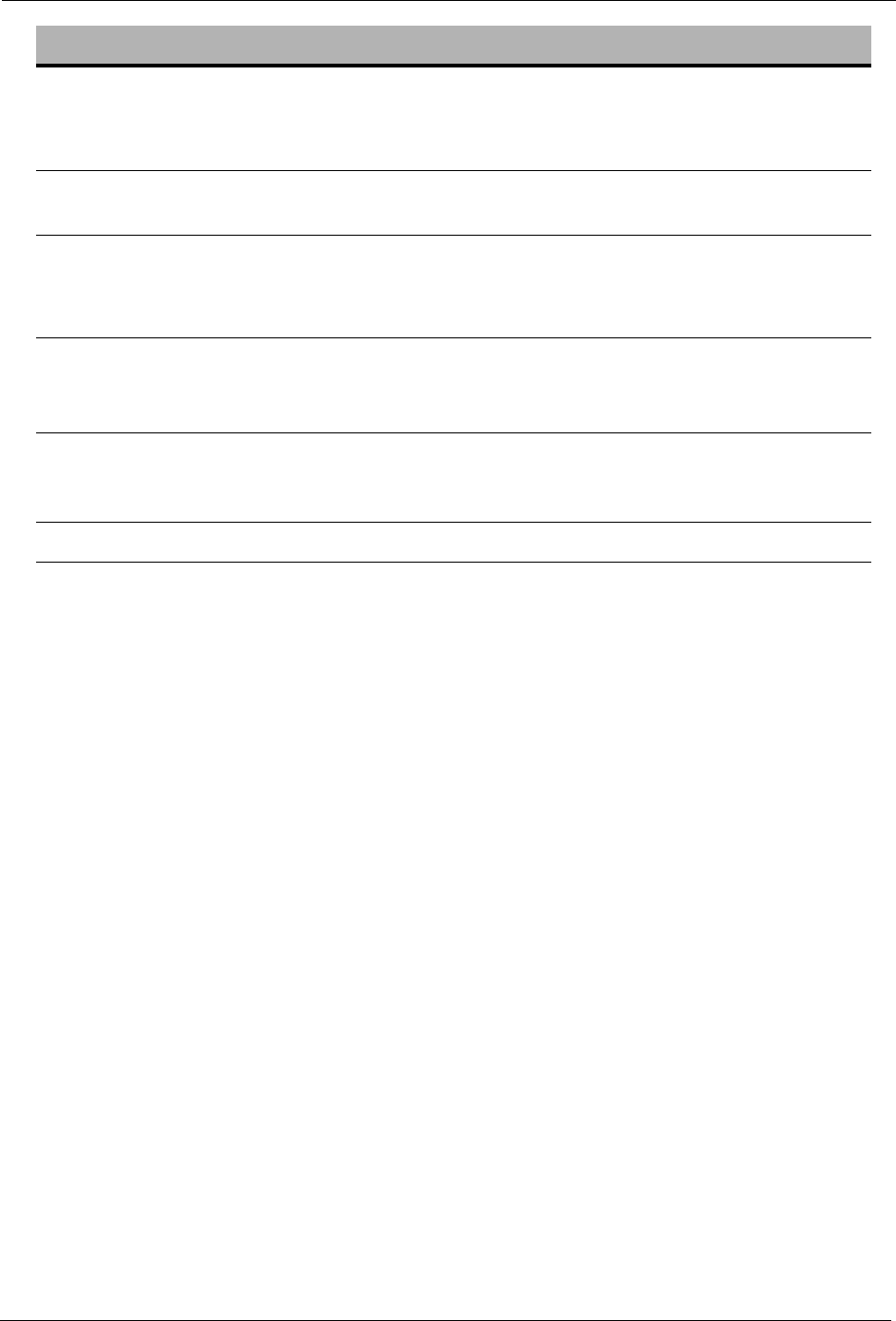
ARTIS Operator’s Manual
Cod. 6992200 - Rev. / 15-66
VENOUS PUMP COVER IS OPEN 149
Reason
for Alarm The Venous Pump Cover is open.
Machine
Actions • The Venous Pump is stopped.
Possible Cause Suggested Action
1. The Venous Pump Cover is open. 1. Close the Venous Pump Cover.
Be sure the Venous Pump Cover is
securely latched.
2. The magnet is dirty. 2. Carefully clean the magnet placed
behind the blood pump cover with a
cloth dipped in a disinfectant solution.
Call for Service if the alarm persists.

Chapter 15: Alarms and Troubleshooting
15-67 Cod. 6992200 - Rev. /
VENOUS PRESSURE OUT OF RANGE 153
Reason
for Alarm The measured venous pressure is outside the permitted range.
Machine
Actions • The Arterial and the Venous Pumps are stopped;
• The Venous Line Clamp is closed;
• The UF Rate is automatically set to minimum;
• The alarm limits are opened for both arterial and venous pressure.
Possible Cause Suggested Action
1. Restriction of blood flow to the Patient’s
Vascular Access or in the Venous
Patient Line.
1. Check for restriction of blood flow in the
Venous Patient Line, i.e. kinks, clamps,
clotted venous needle, poor flow to the
Patient’s Vascular Access;
When the pressure stabilizes, select the
alarm in the Alarm Area and press the
CONFIRM button to restart the blood
pump.
The alarm clears when the venous
pressure is in the proper range.
2. Venous pressure has increased
somewhat during a treatment due to
hemoconcentration and/or inadequate
heparin delivery to the patient, resulting
in a pressure increase for a given
needle at a fixed blood flow rate.
2. Attention should be given to revaluation
of the needle size, the blood flow rate
and the heparin dosage;
When the pressure stabilizes, select the
alarm in the Alarm Area and press the
CONFIRM button to restart the blood
pump.
Call for Service if the alarm persists.

ARTIS Operator’s Manual
Cod. 6992200 - Rev. / 15-68
VENOUS PRESSURE TOO HIGH 154
Reason
for Alarm The measured venous pressure is above the maximum venous treatment
limit.
Machine
Actions • The Arterial and the Venous Pumps are stopped;
• The Venous Line Clamp is closed;
• The UF Rate is automatically set to zero (typical value 100 ml/h);
• The alarm limits are opened for both arterial and venous pressure.
Possible Cause Suggested Action
1. Restriction of blood flow to the Patient’s
Vascular Access or in the Venous
Patient Line.
1. Carefully check the Blood Cassette
connections and assess the Patient’s
Vascular Access.
Check for restrictions, such as:
• kinks in the Venous Patient Line;
• closed clamps;
• clotted venous needle.
If necessary decrease the blood flow
per clinical policy.
When the pressure stabilizes, select the
alarm in the Alarm Area and press the
CONFIRM button to restart the blood
pump.
2. If the alarm persists:
• attach a sterile syringe to the Venous
Infusion Line;
• open the clamp on the Venous
Infusion Line to decrease the pressure;
• when the pressure stabilizes, close
the clamp on the Venous Infusion Line
and remove the syringe;
• select the alarm in the Alarm Area and
press the CONFIRM button to restart
the blood pump.

Chapter 15: Alarms and Troubleshooting
15-69 Cod. 6992200 - Rev. /
2. The venous pressure has increased
somewhat during a treatment due to
hemoconcentration and/or inadequate
heparin delivery to the patient, resulting
in a pressure increase for a given
needle at a fixed blood flow rate.
1. Attention should be given to the
revaluation of the needle size, the blood
flow rate and the heparin dosage;
When the pressure stabilizes, select the
alarm in the Alarm Area and press the
CONFIRM button to restart the blood
pump.
2. If the alarm persists:
• attach a sterile syringe to the Venous
Infusion Line;
• open the clamp on the Venous
Infusion Line to decrease the pressure;
• when the pressure stabilizes, close
the clamp on the Venous Infusion Line
and remove the syringe;
• select the alarm in the Alarm Area and
press the CONFIRM button to restart
the blood pump.
Call for Service if the alarm persists.
Possible Cause (Continued) Suggested Action (Continued)

ARTIS Operator’s Manual
Cod. 6992200 - Rev. / 15-70
VENOUS PRESSURE HIGH 155
Reason
for Alarm The venous pressure is above the Venous Pressure Threshold as
displayed in the Venous Pressure Alarm Window.
Machine
Actions • The Arterial and the Venous Pumps are stopped;
• The Venous Line Clamp is closed;
• The UF Rate is automatically set to zero;
• The alarm limits are opened for both arterial and venous pressure.
Possible Cause Suggested Action
1. The venous pressure is above the
allowed limit. 1. Carefully check the Patient’s Vascular
Access, the Cassette connections and
inspect for kinking of the Venous
Patient Line.
When the pressure stabilizes, select the
alarm in the Alarm Area and press the
CONFIRM button to restart the
treatment.
Press the “Close A/V Limits” button
when the arterial and venous pressures
are stable.
2. If the alarm persists:
• attach a sterile syringe to the Venous
Infusion Line;
• open the clamp on the Venous
Infusion Line to decrease the pressure;
• when the pressure stabilizes, close
the clamp on the Venous Infusion Line
and remove the syringe;
• select the alarm in the Alarm Area and
press the CONFIRM button to restart
the blood pump.
Call for Service if the alarm persists.

Chapter 15: Alarms and Troubleshooting
15-71 Cod. 6992200 - Rev. /
VENOUS PUMP SPEED ERROR 157
Reason
for Alarm The Venous Pump is not turning at the requested speed.
Machine
Actions • None.
Possible Cause Suggested Action
1. The pump segment is jamming the rotor
of the venous pump. 1. Verify the correct placement of the
pump segment into the rotor.
Press the CONFIRM button to restart
the venous pump.
Call for Service if the alarm persists.
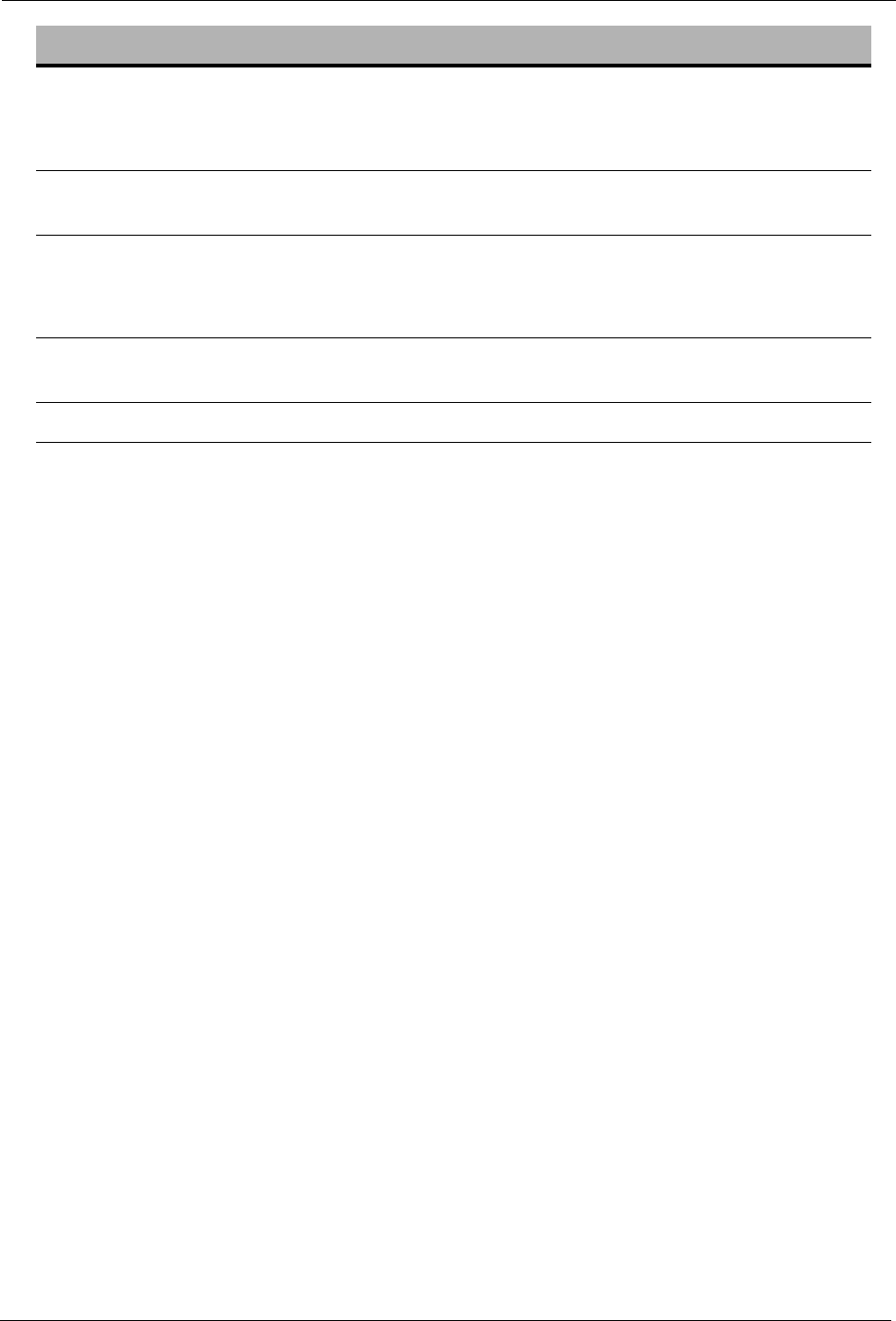
ARTIS Operator’s Manual
Cod. 6992200 - Rev. / 15-72
VENOUS PUMP ROTOR ERROR 158
Reason
for Alarm The venous hall sensor is not detected properly.
Machine
Actions • None.
Possible Cause Suggested Action
1. The Venous pump segment is not
correctly inserted into the rotor. 1. Verify that the Venous pump segment is
correctly inserted into the rotor.
Call for Service if the alarm persists.
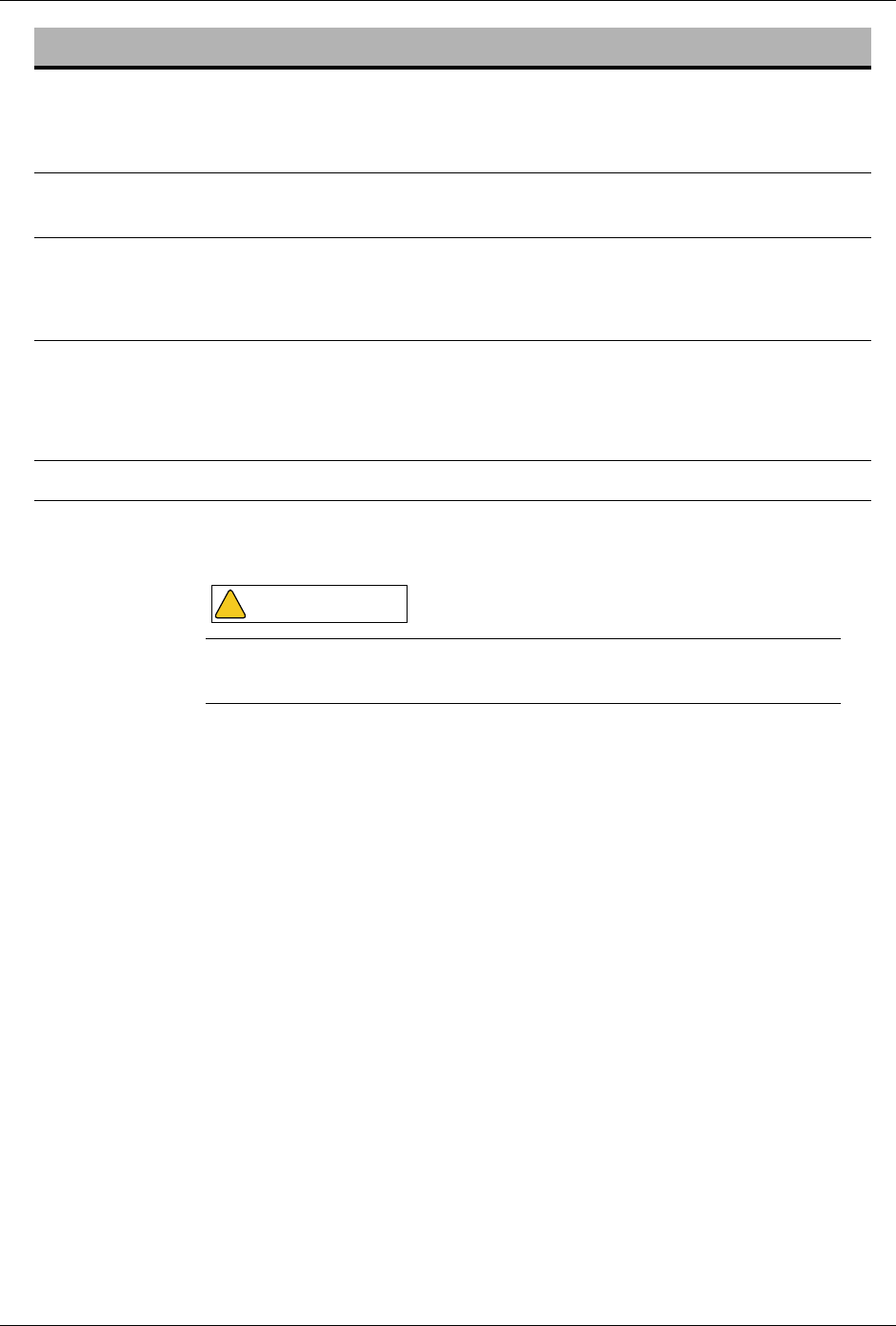
Chapter 15: Alarms and Troubleshooting
15-73 Cod. 6992200 - Rev. /
BLD SENSITIVITY LOSS 170
Reason
for Alarm Deposits and/or debris collected on the Blood Leak Detector (BLD) are
causing a loss of sensitivity.
Machine
Actions None.
Possible Cause Suggested Action
1. An excessively high value is present at
the receiver of the Optical Sensor, due
to deposits on the detector.
1. Press the CONFIRM button to remove
the alarm.
Perform a Chemical Disinfection
procedure to clean the Sensor.
Call for Service if the alarm persists.
After a “BLD Sensitivity Loss (#170)” alarm perform a Chemical
Disinfection program before starting a new treatment.
WARNING
!
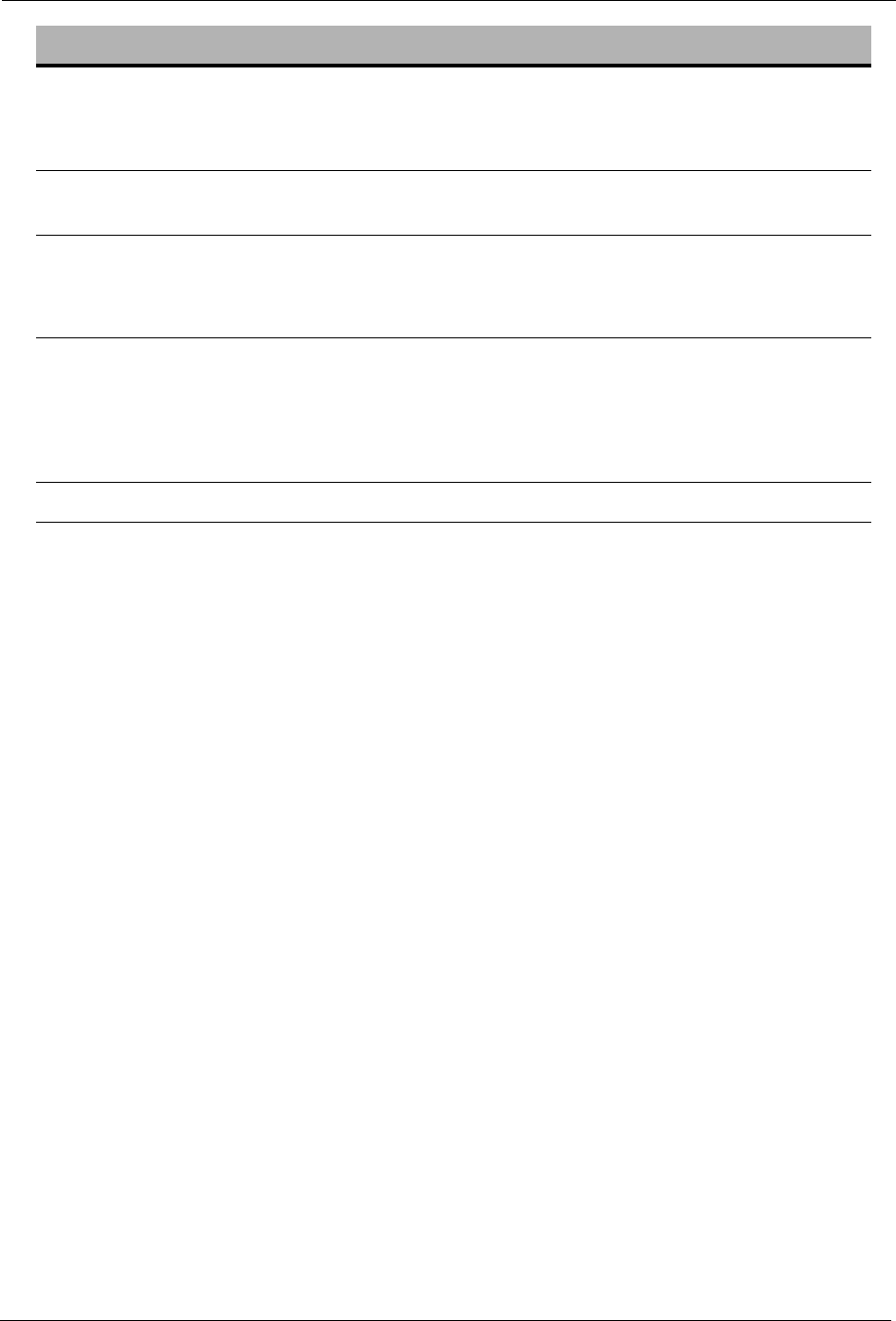
ARTIS Operator’s Manual
Cod. 6992200 - Rev. / 15-74
BACKUP BATTERY FAILURE 183
Reason
for Alarm The T1 test performed by the machine on the Backup Battery has failed.
Machine
Actions • None.
Possible Cause Suggested Action
1. The battery in the Battery Backup Kit
needs to be replaced. 1. Press the CONFIRM button and
continue with the treatment if the
Battery Backup Kit is not required for
this dialysis treatment.
Replace the Battery when appropriate.
Call for Service if the alarm persists.

Chapter 15: Alarms and Troubleshooting
15-75 Cod. 6992200 - Rev. /
SUPPLY VOLTAGE INCORRECT 187
Reason
for Alarm The Protection Module detects a difference between the reference values
and the Power Supply voltages after the Patient Connection.
Machine
Actions • GENERAL SAFE STATE.
Possible Cause Suggested Action
1. Power supply failure during preparation. 1. If the alarm persists until the end of the
function check/preparation phase, do
not start the dialysis treatment.
Call for Service if the alarm persists.
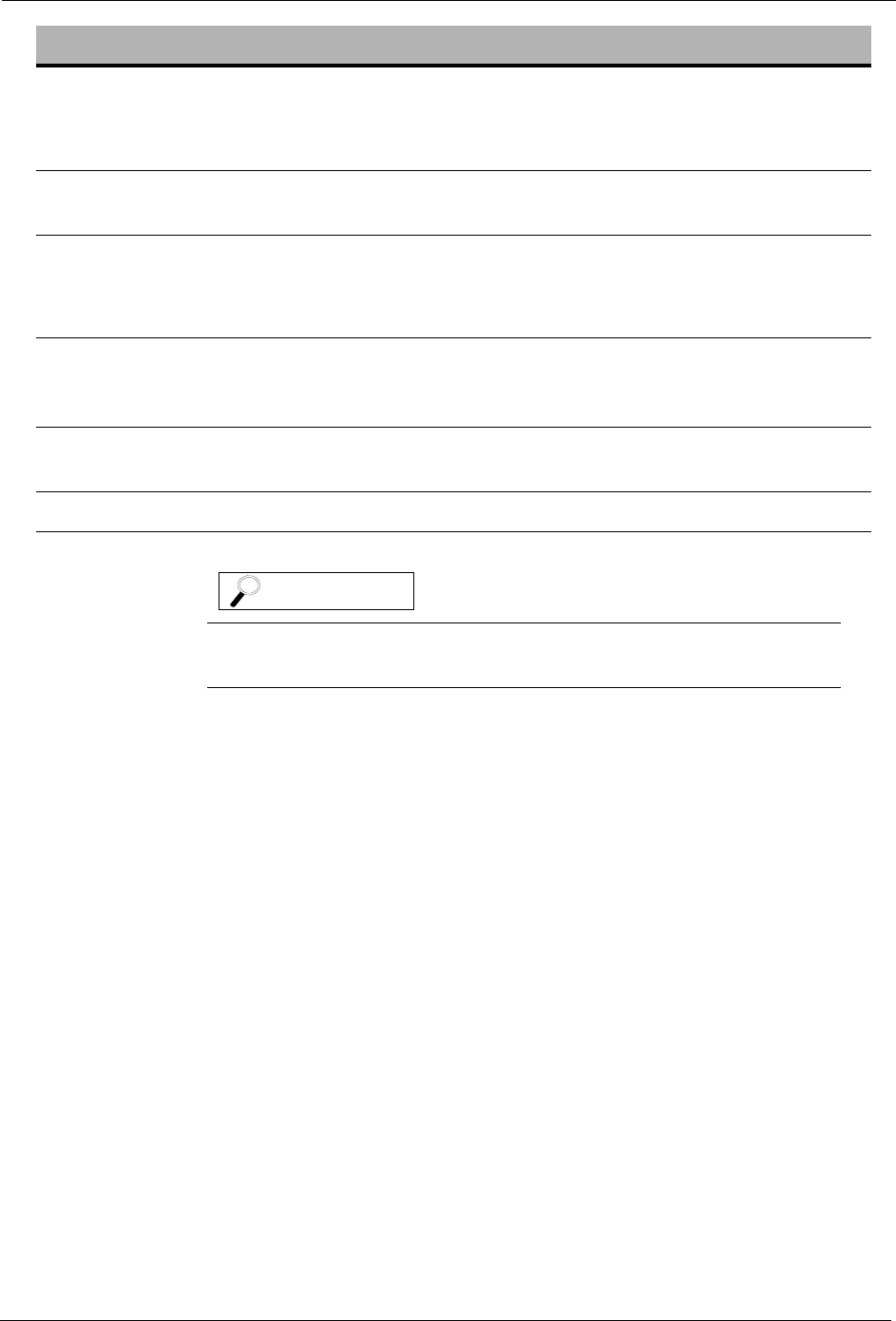
ARTIS Operator’s Manual
Cod. 6992200 - Rev. / 15-76
HEMOSCAN: MINIMUM BLOOD VOLUME 191
Reason
for Alarm The Hemoscan sensor detects blood volume lower than the “Alarm Limit”
set value.
Machine
Actions • The dialysis process continues (See NOTE);
Possible Cause Suggested Action
1. Great increase of the Hemoglobin
concentration in the patient’s blood
since the start of the treatment.
1. Take the appropriate clinical action.
2. The Hemoscan “Alarm Limit” value is
incorrect for this patient. 2. Change the “Alarm Limit” value in the
Hemoscan Settings sub-screen.
Call for Service if the alarm persists.
This alarm occurs in order to signal to the operator possible
patient’s health risk.
NOTE

Chapter 15: Alarms and Troubleshooting
15-77 Cod. 6992200 - Rev. /
LOW BLOOD PUMP SPEED 204
Reason
for Alarm The Blood Pump has been running at less than 50 ml/min for more than 30
sec.
Machine
Actions • None.
Possible Cause Suggested Action
1. The Blood pump speed is less than 50
ml/min for more than 30 sec. 1. Press the CONFIRM button to remove
the alarm.
Increase the blood pump speed to more
than 50 ml/min.
Call for Service if the alarm persists.
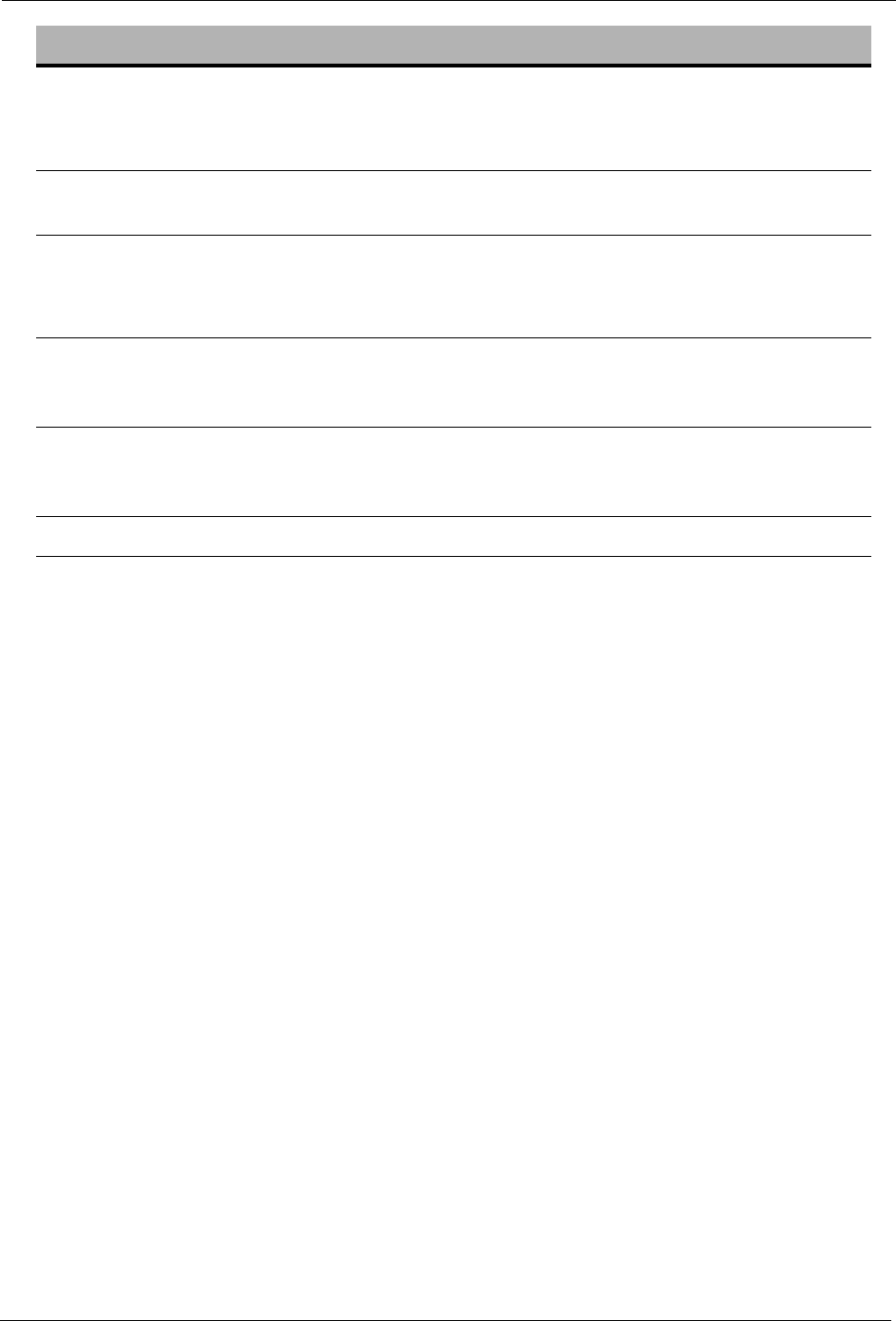
ARTIS Operator’s Manual
Cod. 6992200 - Rev. / 15-78
INCORRECT VENOUS OR ARTERIAL LINE POSITION IN CLAMP 205
Reason
for Alarm The Venous/Arterial Patient Line has been incorrectly inserted into the
Venous/Arterial Line Clamp.
Machine
Actions • None.
Possible Cause Suggested Action
1. The Venous Patient Line is not correctly
inserted into the Venous Line Clamp. 1. Remove and correctly re-insert the
Venous Patient Line into the Venous
Line Clamp.
2. The Arterial Patient Line is not correctly
inserted into the Arterial Line Clamp. 2. Remove and correctly re-insert the
Arterial Patient Line into the Arterial
Line Clamp.
Call for Service if the alarm persists.
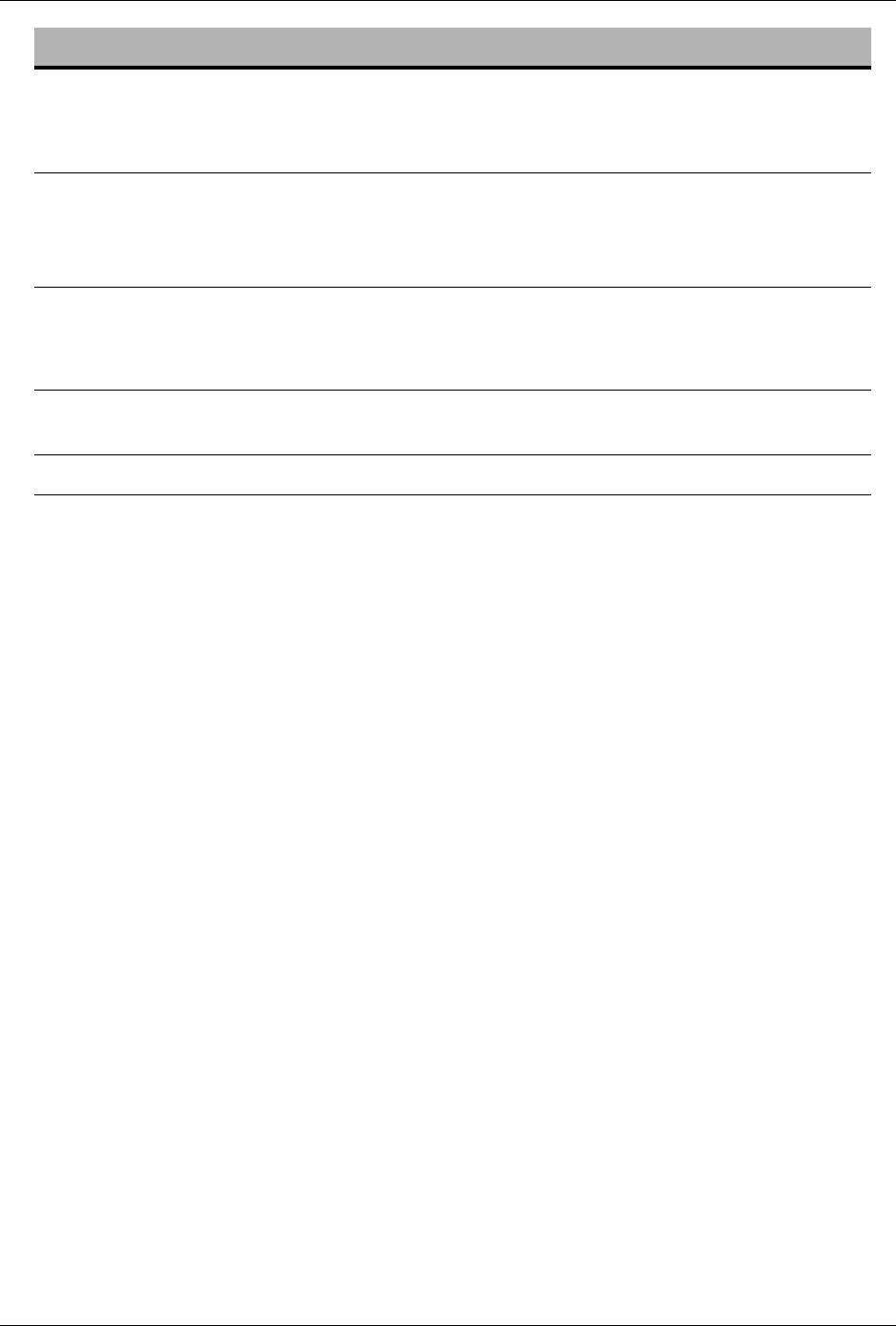
Chapter 15: Alarms and Troubleshooting
15-79 Cod. 6992200 - Rev. /
FLUID PATH OBSTRUCTION 206
Reason
for Alarm There is an excessive pressure in the Drain Tube. (Due to Drain Tube
kinking/obstruction or bad connection)
Machine
Actions • The dialysis fluid goes into Bypass;
• The heater is turned off;
• The phase currently running stops;
• All the pumps are stopped.
Possible Cause Suggested Action
1. Obstruction or kinking in the Drain
Tube. 1. Verify that the Drain Tube is not kinked
or obstructed in any way.
Call for Service if the alarm persists.
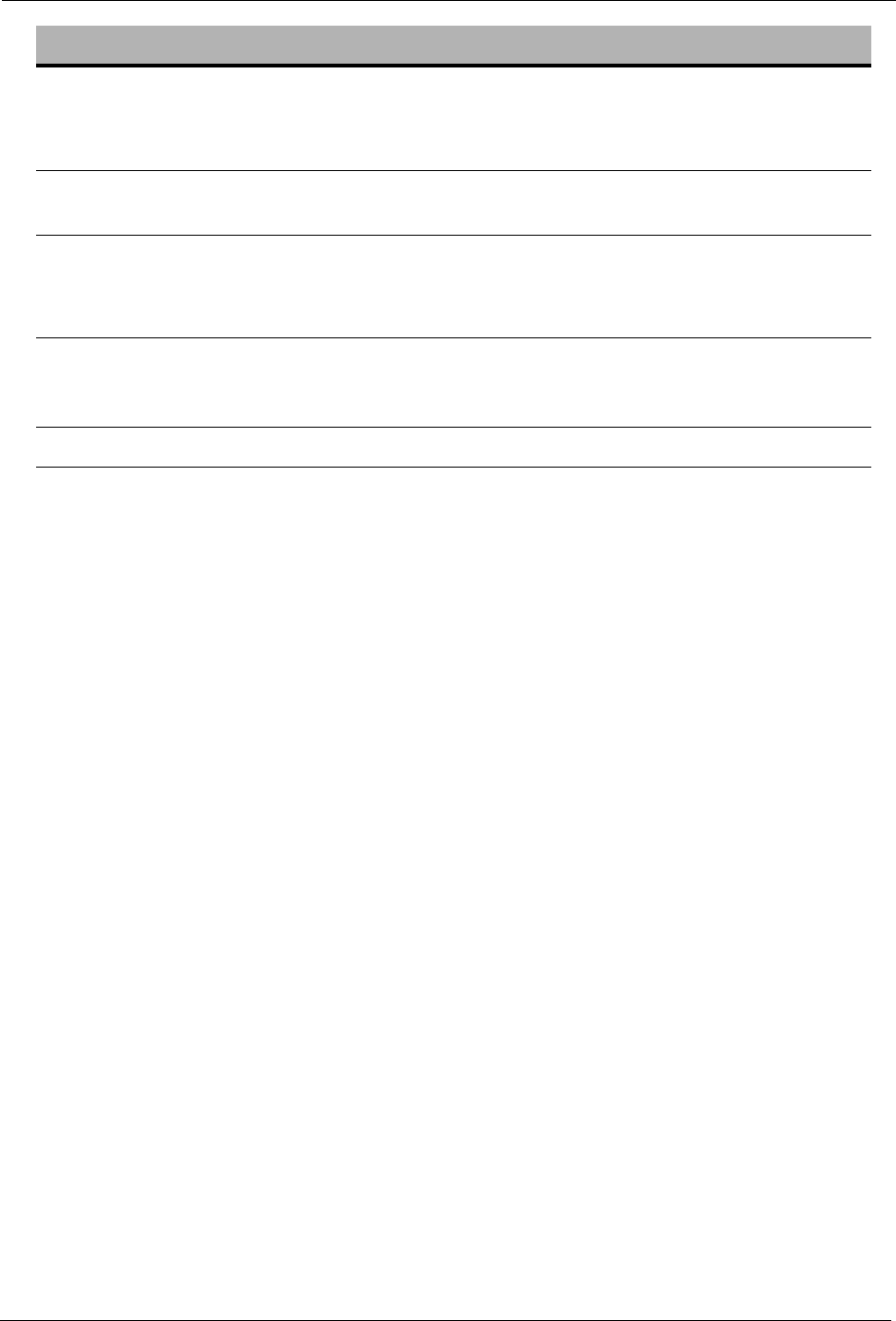
ARTIS Operator’s Manual
Cod. 6992200 - Rev. / 15-80
HEMOSCAN: DARK OUT OF RANGE 223
Reason
for Alarm Electronic malfunctioning of the Hemoscan Monitoring System.
Machine
Actions • None.
• Hemoscan Monitoring disabled.
Possible Cause Suggested Action
1. Internal malfunctioning of the
Hemoscan Monitoring System. 1. From the Hemoscan Settings sub-
screen, deactivate the Hemoscan
function.
Call for Service if the alarm persists.

Chapter 15: Alarms and Troubleshooting
15-81 Cod. 6992200 - Rev. /
HEMOSCAN: TEST OUT OF RANGE 225
Reason
for Alarm Electronic malfunctioning of the Hemoscan Monitoring System.
Machine
Actions • None.
• Hemoscan Monitoring disabled.
Possible Cause Suggested Action
1. Internal malfunctioning of the
Hemoscan Monitoring System. 1. From the Hemoscan Settings sub-
screen, deactivate the Hemoscan
function.
Call for Service if the alarm persists.
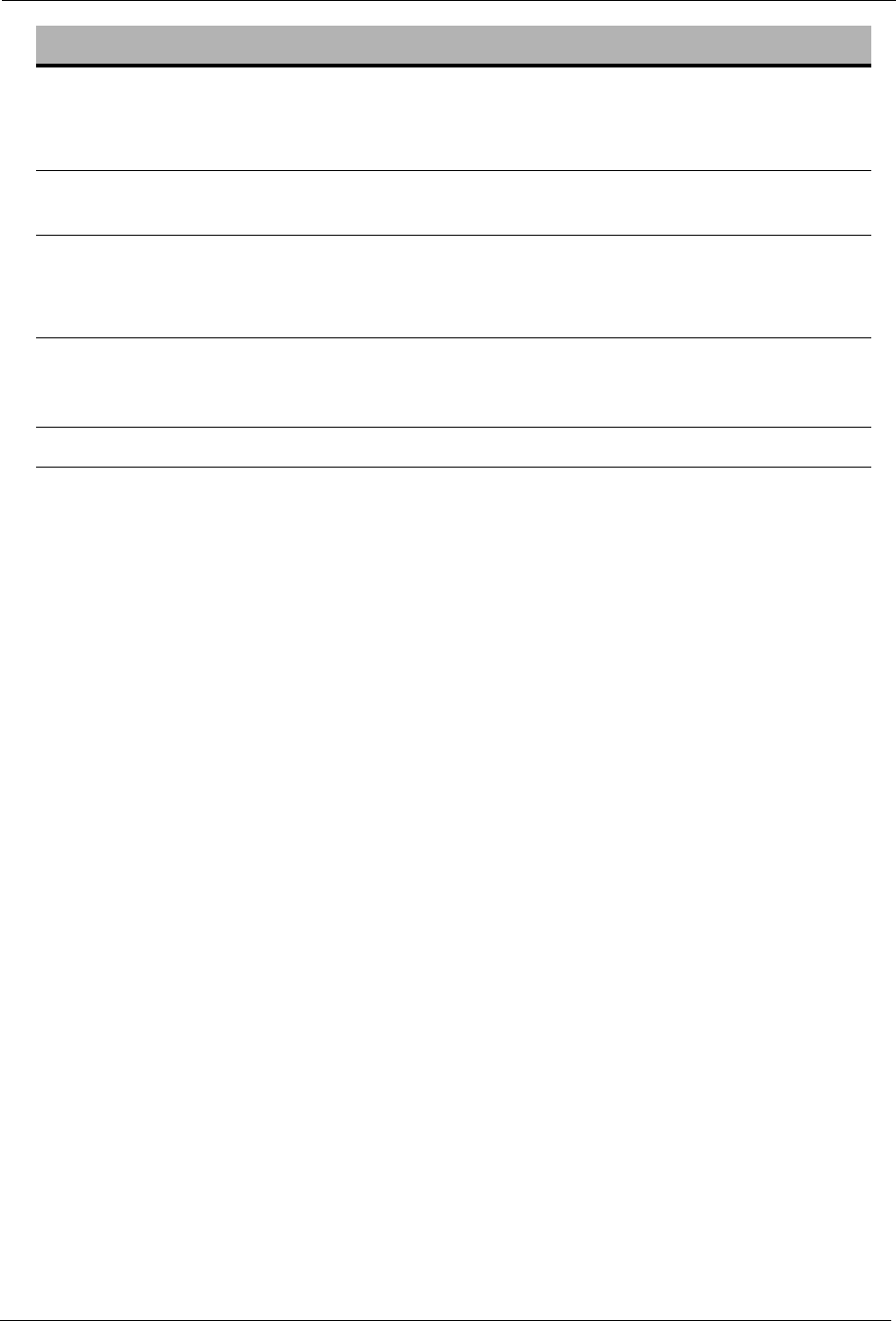
ARTIS Operator’s Manual
Cod. 6992200 - Rev. / 15-82
HEMOSCAN: L/H OUT OF RANGE 226
Reason
for Alarm Electronic malfunctioning of the Hemoscan Monitoring System.
Machine
Actions • None.
• Hemoscan Monitoring disabled.
Possible Cause Suggested Action
1. Internal malfunctioning of the
Hemoscan Monitoring System. 1. From the Hemoscan Settings sub-
screen, deactivate the Hemoscan
function.
Call for Service if the alarm persists.

Chapter 15: Alarms and Troubleshooting
15-83 Cod. 6992200 - Rev. /
HEMOCONTROL: LATE ON PRESCRIPTION 229
Reason
for Alarm A reduction in BV% has occurred, lower than expected and thus a lower
Accumulated UF volume (weight loss) is reached.
Machine
Actions • None.
Possible Causes Suggested Action
1. A reduction in BV% has occurred, lower
than expected and thus a lower
Accumulated UF volume (weight loss)
is reached.
1. Press the CONFIRM button to remove
the alarm message.
If the alarm persists, set a lower Final
BV value and/or a lower UF Volume
value.
Call for Service if the alarm persists.

ARTIS Operator’s Manual
Cod. 6992200 - Rev. / 15-84
HEMOCONTROL: EARLY ON PRESCRIPTION 230
Reason
for Alarm A reduction in BV% has occurred, lower than expected and thus a higher
Accumulated UF volume (weight loss) is reached.
Machine
Actions • None.
Possible Causes Suggested Action
1. A reduction in BV% has occurred, lower
than expected and thus a higher
Accumulated UF volume (weight loss)
is reached.
1. Press the CONFIRM button to remove
the alarm message.
If the alarm persists, set a greater Final
BV value and/or a greater UF Volume
value.
Call for Service if the alarm persists.

Chapter 15: Alarms and Troubleshooting
15-85 Cod. 6992200 - Rev. /
HEMOCONTROL: HIGH NA CONCENTRATION 231
Reason
for Alarm The actual value of equivalent dialysis fluid sodium concentration has
deviated from the path, calculated automatically by the system, by a
quantity higher than the Na tolerance set.
Machine
Actions • None.
Possible Causes Suggested Action
1. The actual value of equivalent dialysis
fluid sodium concentration has deviated
from the path, calculated automatically
by the system, by a quantity higher than
the Na limits set.
1. Press the CONFIRM button to clear the
alarm.
If the alarm persists, correct the Final
Na value in the Hemocontrol Settings
sub-screen, as suggested by the
indications displayed.
Call for Service if the alarm persists.

ARTIS Operator’s Manual
Cod. 6992200 - Rev. / 15-86
HEMOCONTROL: LOW NA CONCENTRATION 232
Reason
for Alarm The actual value of equivalent dialysis fluid sodium concentration has
deviated from the path, calculated automatically by the system, by a
quantity lower than the Na tolerance set.
Machine
Actions • None.
Possible Causes Suggested Action
1. The actual value of equivalent dialysis
fluid sodium concentration has deviated
from the path, calculated automatically
by the system, by a quantity lower than
the Na limits set.
1. Press the CONFIRM button to clear the
alarm.
If the alarm persists, correct the Final
Na value in the Hemocontrol Settings
sub-screen, as suggested by the
indications displayed.
Call for Service if the alarm persists.

Chapter 15: Alarms and Troubleshooting
15-87 Cod. 6992200 - Rev. /
HEMOCONTROL: BV% NOT AVAILABLE 234
Reason
for Alarm The HEMOSCAN™ is unable to supply a reliable Blood Volume.
Machine
Actions • None.
Possible Causes Suggested Action
1. The HEMOSCAN™ is unable to supply
a reliable Blood Volume. 1. Remove the causes which have
stopped the measuring of the Blood
Volume by the HEMOSCAN™ or wait.
Call for Service if the alarm persists.
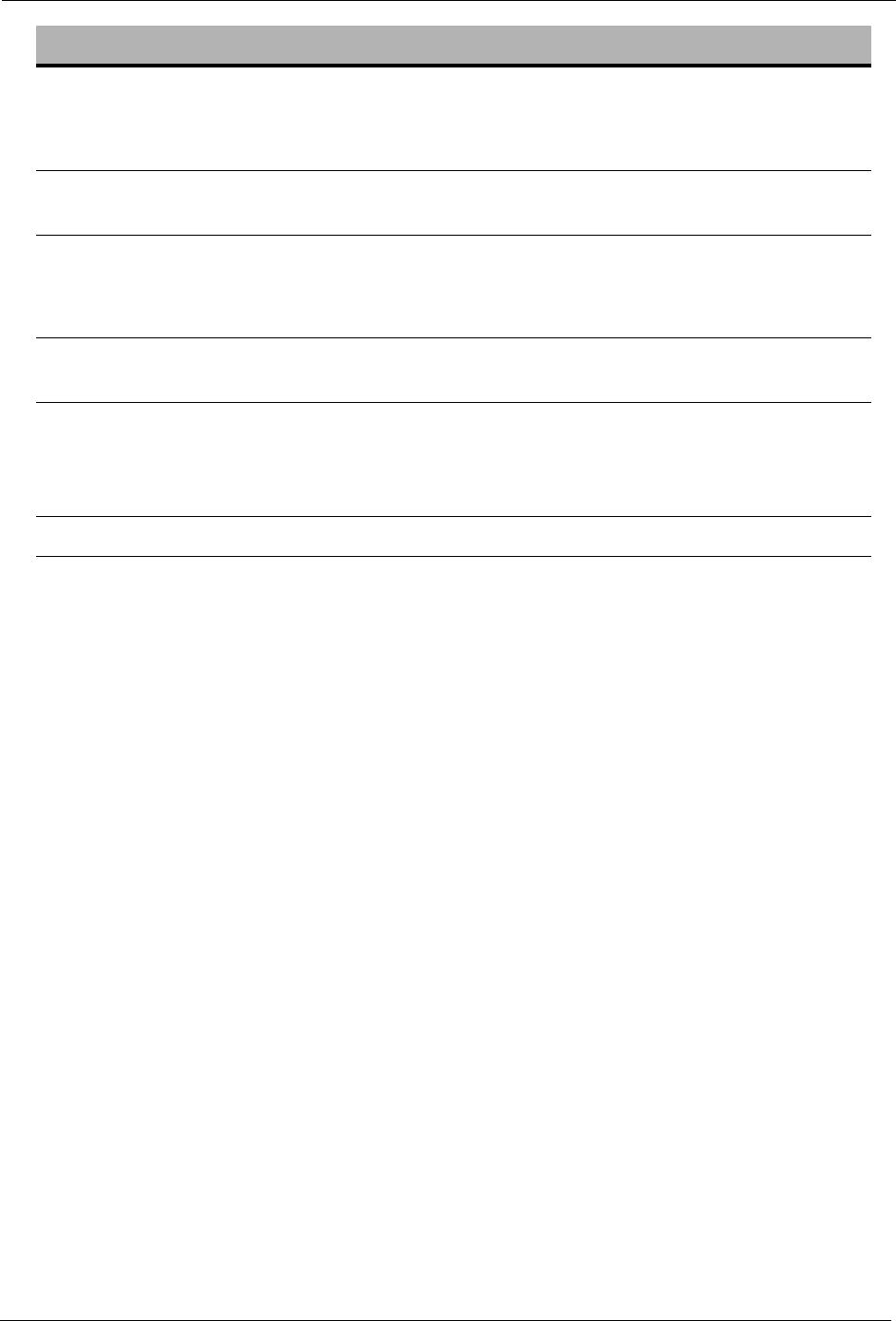
ARTIS Operator’s Manual
Cod. 6992200 - Rev. / 15-88
BIOSLAVE SUBSYSTEM COMMUNICATION ERROR 296
Reason
for Alarm An internal communication problem between the Master Module and the
Bio Module occurred.
Machine
Actions • None.
Possible Cause Suggested Action
1. Temporary communication problem. 1. Wait a few seconds for the alarm to be
cleared.
2. If the alarm persists and the machine
stops functioning. 2. Perform a Fast Recovery procedure
during a dialysis treatment as described
in the “7.4 Fast Recovery” section of
this Operator’s Manual.
Call for Service if the alarm persists.
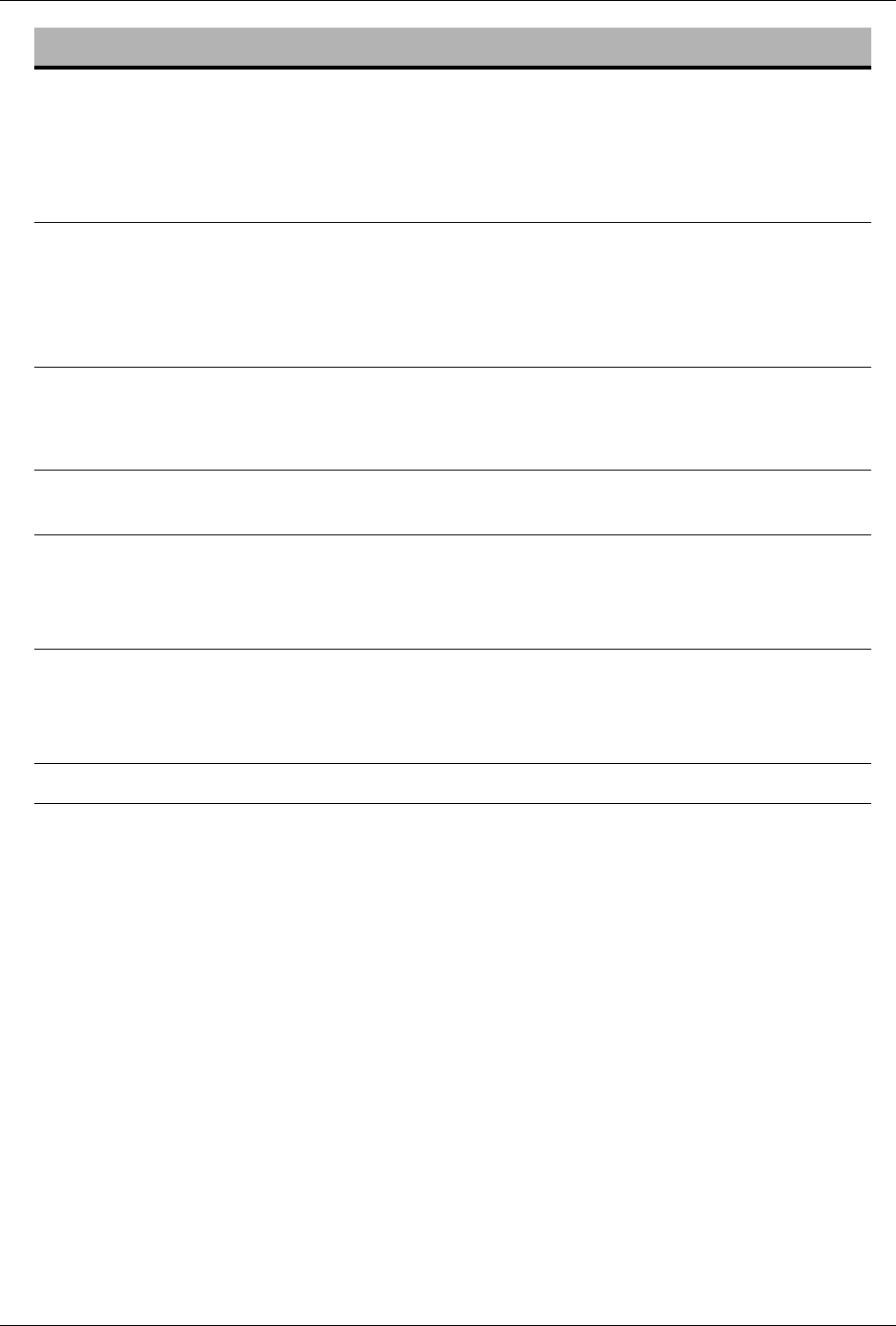
Chapter 15: Alarms and Troubleshooting
15-89 Cod. 6992200 - Rev. /
STILL IN BYPASS 302
Reason
for Alarm The machine has been in BYPASS for more than 6 minutes, either
because the operator has deselected the ”DIALYSIS FLUID” button, or due
to an internal machine malfunction that is blocking the machine in bypass
condition.
Machine
Actions • None.
In DIALYSIS: The alarm is active when the machine is in FULL
ACTIVITY with blood detected in the Venous Patient Line. The alarm
will be displayed on the Touch Screen 6 minutes after the machine is in
BYPASS.
Possible Cause Suggested Action
1. Bypass has been selected and not
cleared during the treatment. 1. Take the machine out of BYPASS by
selecting the ”DIALYSIS FLUID” button.
2. The machine is stuck in bypass. 2. Perform a Fast Recovery procedure
during a dialysis treatment as described
in the “7.4 Fast Recovery” section of
this Operator’s Manual.
3. The “Start Treatment” button has not
been pressed. 3. Confirm the mandatory parameters (UF
Volume and Treatment Time), if not
already done, and then press the “Start
Treatment” button.
Call for Service if the alarm persists.

ARTIS Operator’s Manual
Cod. 6992200 - Rev. / 15-90
ARTERIAL PRESSURE HIGH 305
Reason
for Alarm The measured arterial pressure is above the maximum arterial pressure
threshold as displayed in the Arterial Pressure Alarm Window.
Machine
Actions • The Arterial and the Venous Pumps are stopped;
• The Venous Line Clamp is closed;
• The UF Rate is automatically set to zero;
• The alarm limits are opened for both arterial and venous pressure
Possible Cause Suggested Action
1. The Arterial Pressure Alarm Window
needs to be set. 1. In the A/V Limit Settings sub-screen
adjust the arterial pressure alarm limits;
Press “Close A/V Limits” button: the
machine automatically centralize the
alarm window values around the
current patient’s arterial/venous
pressures;
When the pressure stabilizes, select the
alarm in the Alarm Area and press the
CONFIRM button to restart the blood
pump.
2. The Arterial Patient Line may have
become disconnected from the patient. 2. Carefully check the Cassette
connections and the Patient’s Vascular
Access;
When the pressure stabilizes, select the
alarm in the Alarm Area and press the
CONFIRM button to restart the blood
pump.
3. Loss of diaphragm pressure between
the Blood Cassette and the arterial
pressure cone.
3. Perform a Cassette Repositioning
Procedure, (Refer to the "Chapter 7:
Special Procedures", in this Operator’s
Manual).
When the pressure stabilizes, select the
alarm in the Alarm Area and press the
CONFIRM button to restart the blood
pump.
Call for Service if the alarm persists.

Chapter 15: Alarms and Troubleshooting
15-91 Cod. 6992200 - Rev. /
ARTERIAL PRESSURE BELOW TREATMENT MIN. LIMIT 306
Reason
for Alarm The measured arterial pressure is below the minimum arterial treatment
limit.
Machine
Actions • The Arterial and the Venous Pumps are stopped;
• The Venous Line Clamp is closed;
• The UF Rate is automatically set to zero;
• The alarm limits are opened for both arterial and venous pressure.
Possible Cause Suggested Action
1. The Arterial Pump speed is too fast. 1. Consider decreasing the blood flow if
this operation is not in disagreement
with the patient prescription.
When the pressure stabilizes, select the
alarm in the Alarm Area and press the
CONFIRM button to restart the blood
pump.
2. The Arterial Patient Line is kinked,
clamped or restricted. 2. Check the Arterial Patient Line and the
Patient’s Vascular Access for
restrictions, such as:
• kinks in the Arterial Patient Line;
• closed clamps;
• clotted arterial needle;
• poor flow from the Patient’s Vascular
Access.
When the pressure stabilizes, select the
alarm in the Alarm Area and press the
CONFIRM button to restart the blood
pump.
3. The arterial pressure decreased
somewhat during a treatment due to
hemoconcentration and/or inadequate
heparin delivery to the patient, resulting
in a reduced pressure for a given
needle at a fixed blood flow rate.
3. Attention should be given to the
revaluation of the needle size, the blood
flow rate and the heparin dosage;
When the pressure stabilizes, select the
alarm in the Alarm Area and press the
CONFIRM button to restart the blood
pump.
Call for Service if the alarm persists.
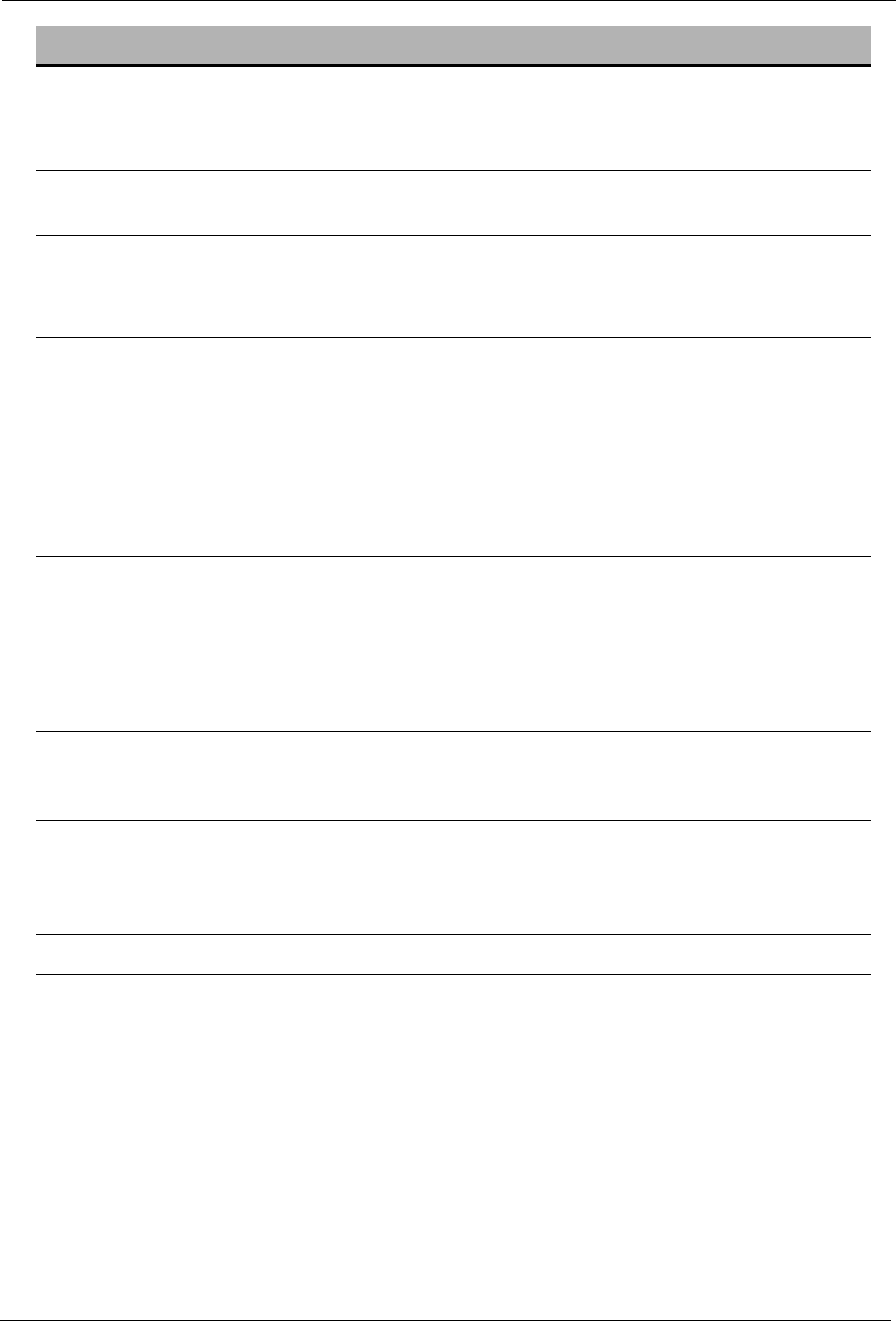
ARTIS Operator’s Manual
Cod. 6992200 - Rev. / 15-92
WRONG A/V OR SYSTEM PRESSURE OFFSET 319
Reason
for Alarm The initial Arterial and Venous Pressure offset are out of range or they
aren't yet been calculated.
Machine
Actions • The machine will stop at this point and will not proceed any further into
the test.
Possible Cause Suggested Action
1. If the Blood Cassette is filled with
saline, it is possible to have a pressure
different from 0 mmHg.
1. Clamp the prime line, the Arterial
infusion line and the Venous infusion
line.
Open the Venous infusion line and the
Arterial infusion line to the atmosphere.
The pressures displayed on the Touch
Screen should decrease toward 0
mmHg.
2. The Blood Cassette was installed
incorrectly during the Venous/Arterial
Pressure T1 Test.
2. The Venous Patient Line must be
inserted into the Air Detector and the
Sensor Bar door closed.
The Blood Pump Cover must be closed.
Reposition the Blood Cassette and
restart the T1 test.
3. The Blood Pump Cover is open. 3. Close the Blood Pump Cover. Be sure
the Blood Pump Cover is securely
latched.
4. The magnet is dirty. 4. Carefully clean the magnet located
behind the Blood Pump Cover, using a
soft cloth dipped in Ethyl Alcohol (90°)
or in Isopropyl Alcohol (70°).
Call for Service if the alarm persists.
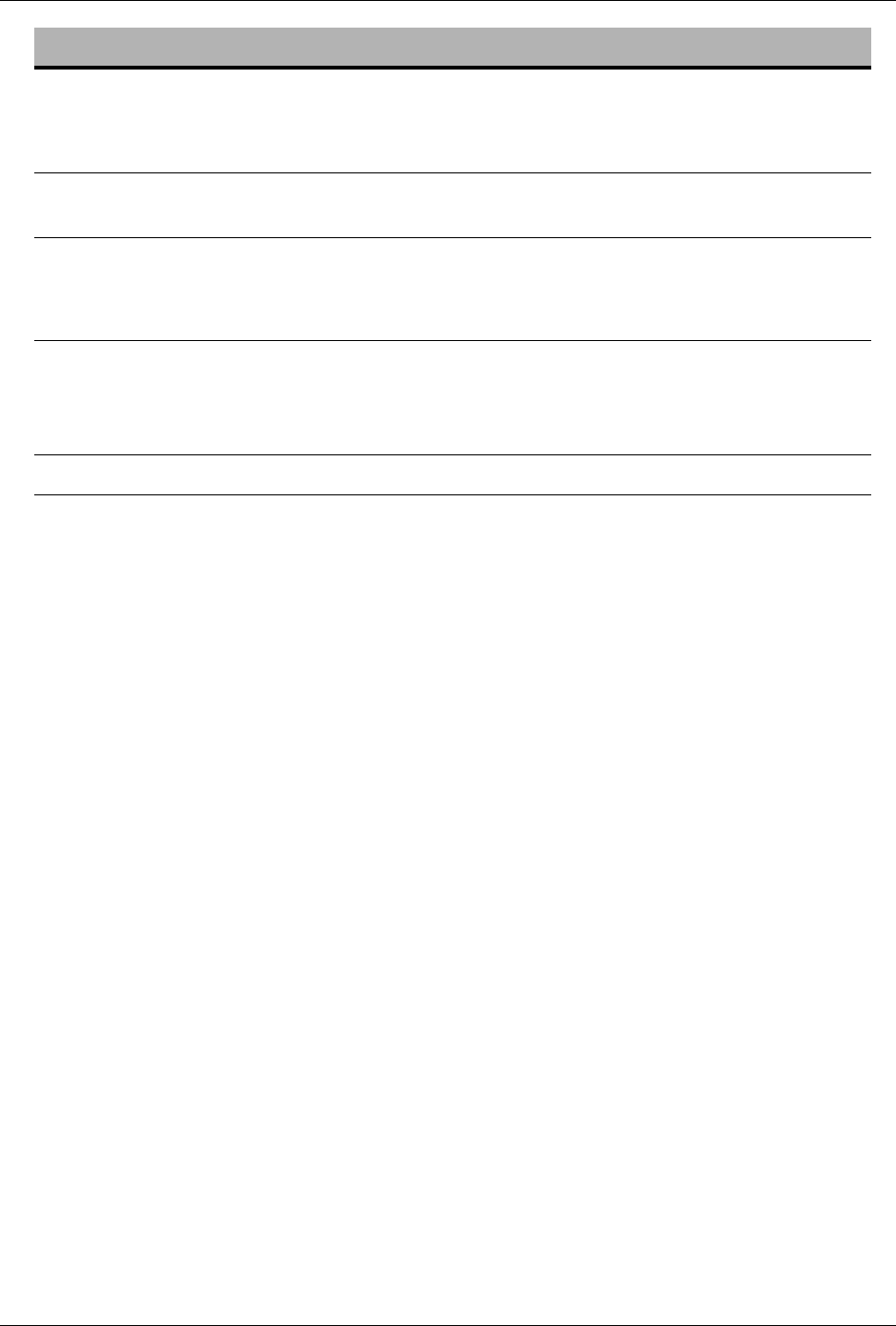
Chapter 15: Alarms and Troubleshooting
15-93 Cod. 6992200 - Rev. /
REMINDER - STILL IN PAUSE THERAPY 329
Reason
for Alarm The machine remains in PAUSE TREATMENT for more than 5 minutes.
Machine
Actions • None.
Possible Cause Suggested Action
1. The operator has maintained the
selection of PAUSE TREATMENT for
more than 5 minutes.
1. Press the CONFIRM button to remove
the alarm. Interrupt the PAUSE
TREATMENT procedure and continue
the treatment.
Call for Service if the alarm persists.
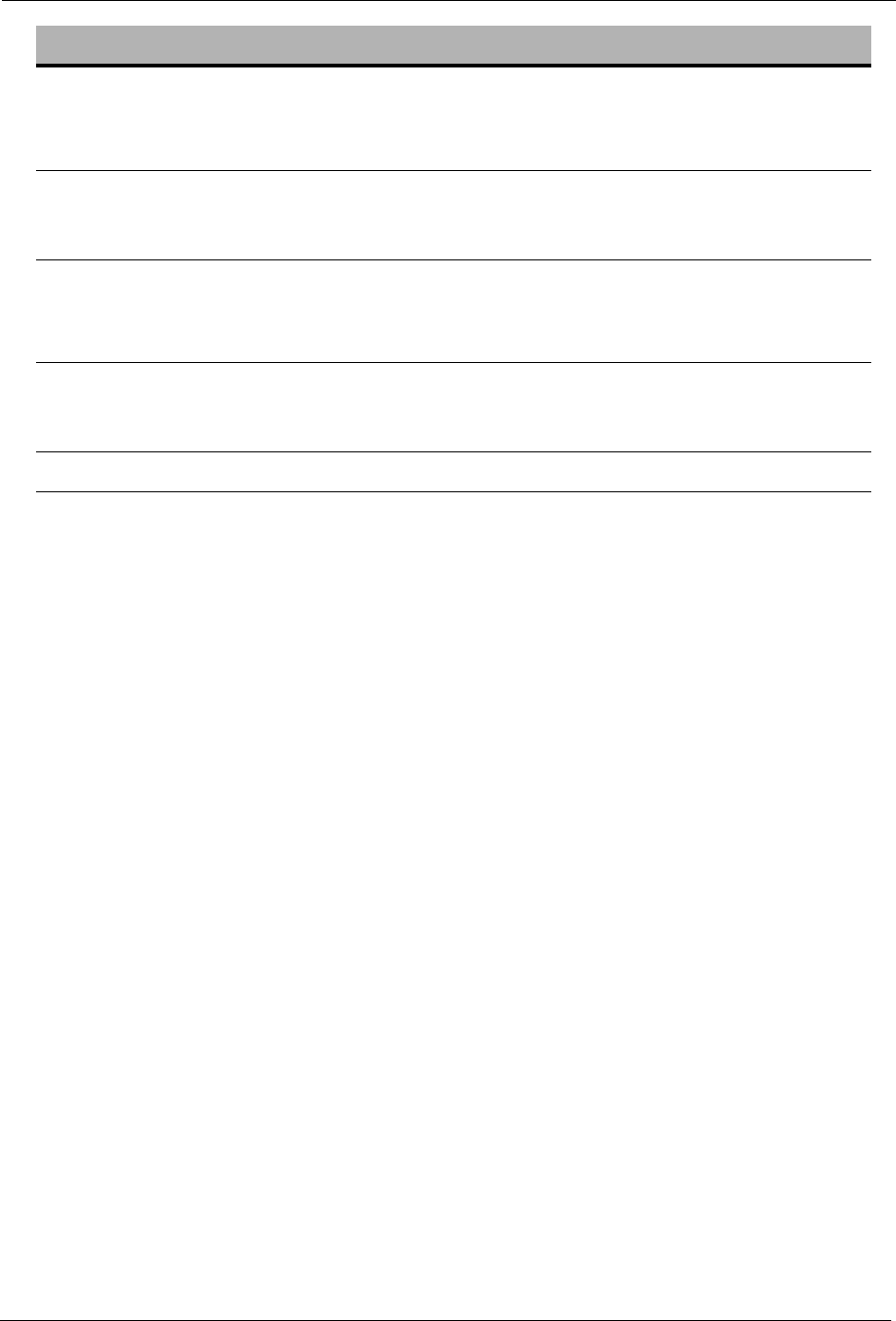
ARTIS Operator’s Manual
Cod. 6992200 - Rev. / 15-94
BLUE DIALYSIS FLUID TUBE INCORRECT POSITION 330
Reason
for Alarm The Blue Dialysis Fluid Tube Connector is not in the position required for
the current operating phase.
Machine
Actions • All the hydraulic pumps are stopped;
• Waits until the connector is in right position;
• The dialysis fluid goes into Bypass.
Possible Cause Suggested Action
1. The Blue Dialysis Fluid Tube Connector
is not in the position required for the
current operating phase.
1. Verify the correct position of the Blue
Dialysis Fluid Tube Connector for the
current operating phase.
Call for Service if the alarm persists.
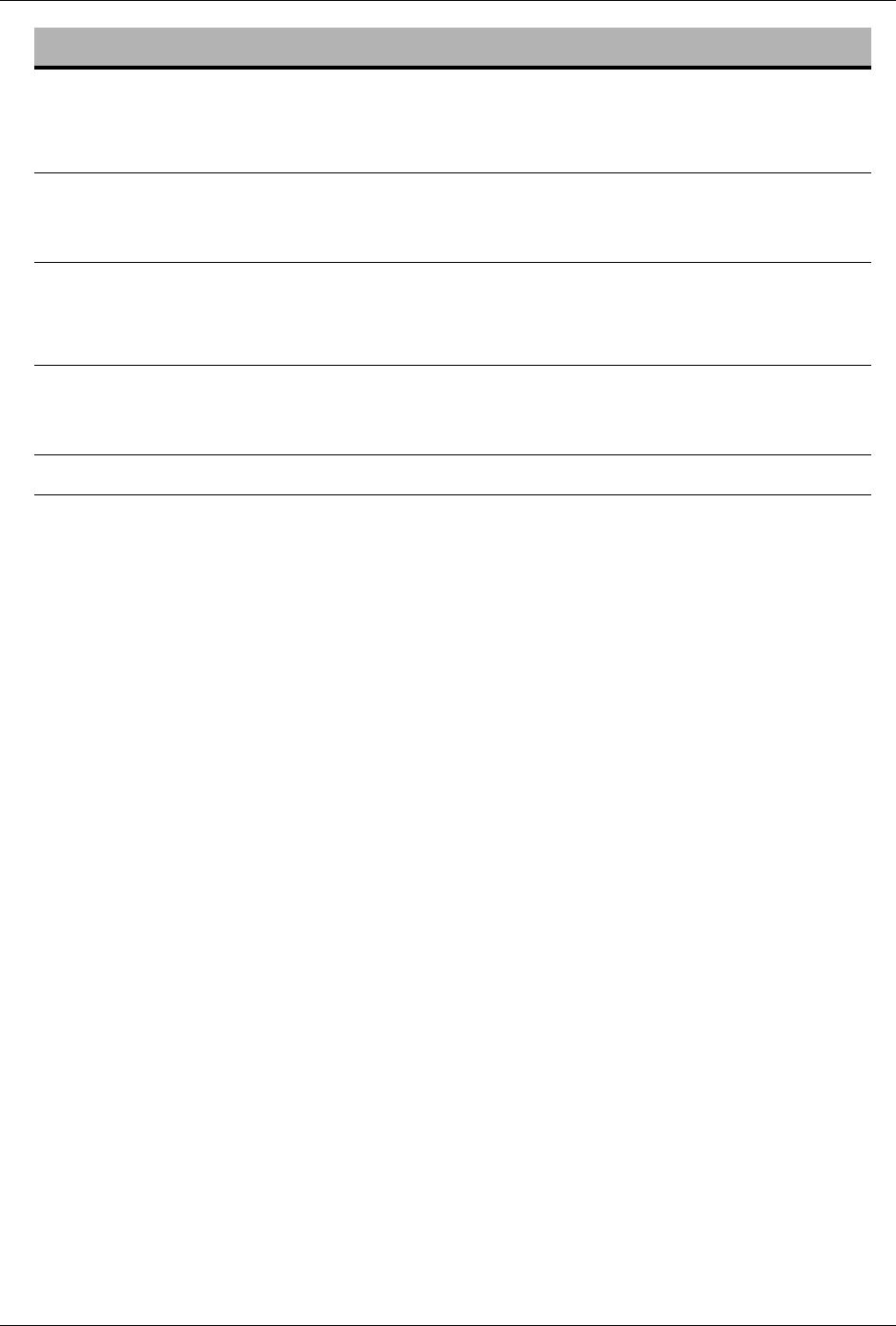
Chapter 15: Alarms and Troubleshooting
15-95 Cod. 6992200 - Rev. /
RED DIALYSIS FLUID TUBE INCORRECT POSITION 331
Reason
for Alarm The Red Dialysis Fluid Tube Connector is not in the position required for
the current operating phase.
Machine
Actions • All the hydraulic pumps are stopped;
• Waits until the connector is in right position;
• The dialysis fluid goes into Bypass.
Possible Cause Suggested Action
1. The Red Dialysis Fluid Tube Connector
is not in the position required for the
current operating phase.
1. Verify the correct position of the Red
Dialysis Fluid Tube Connector for the
current operating phase.
Call for Service if the alarm persists.
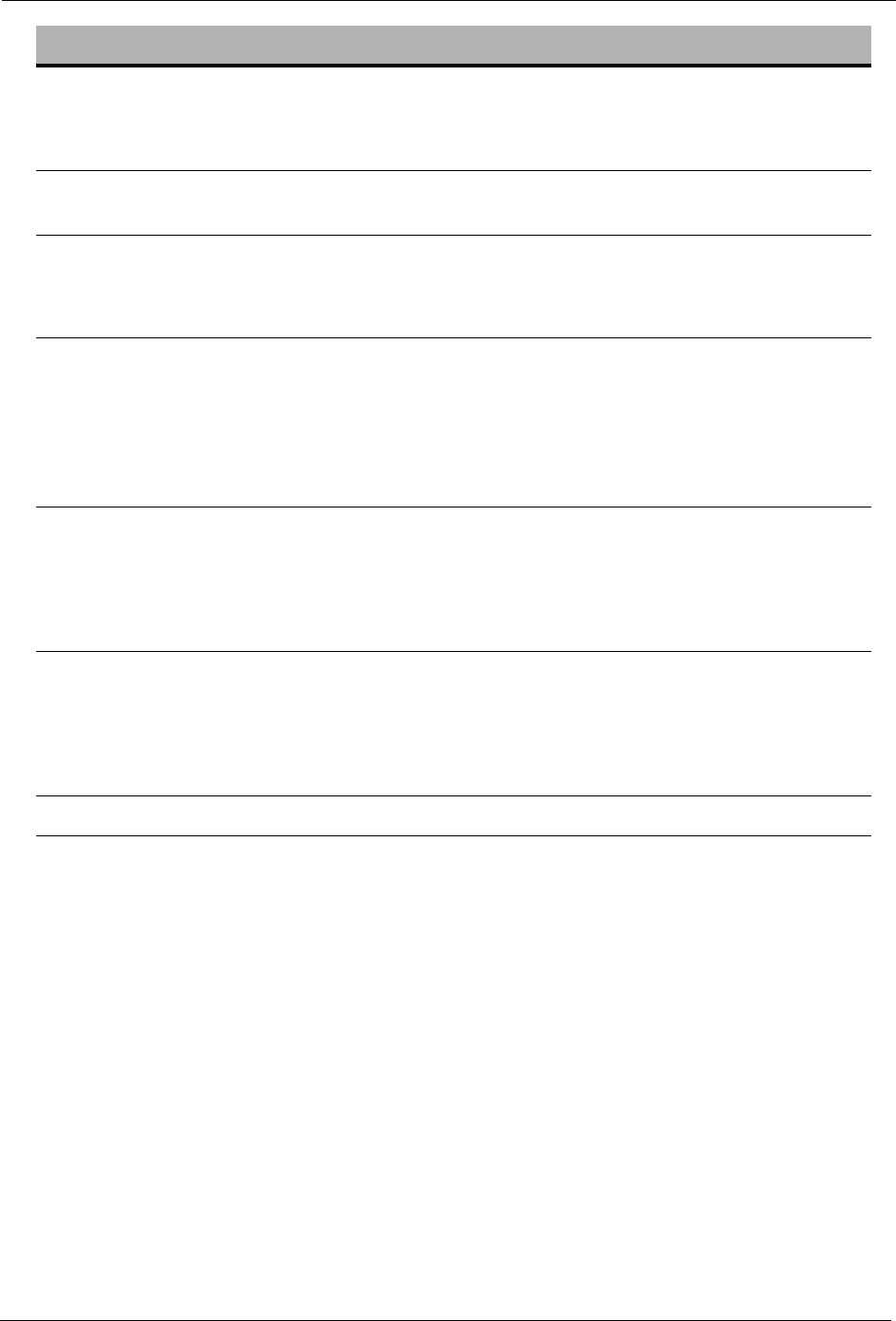
ARTIS Operator’s Manual
Cod. 6992200 - Rev. / 15-96
VENOUS PRESSURE NOT INCREASING 351
Reason
for Alarm In Single Needle Single Pump mode, during the venous phase the venous
pressure is not increasing as expected.
Machine
Actions • The Blood Pump is stopped.
Possible Cause Suggested Action
1. The venous pressure is not increasing
as expected. 1. Check if the Blood Cassette is properly
loaded on the Cassette holder and if it
is properly connected to the venous
pressure pod.
Press the CONFIRM button to restart
the Blood Pump and remove the alarm.
2. The Venous/Arterial Patient Line could
be kinked, clamped, restricted or have
some leakages.
2. Check the Venous/Arterial Patient Line
and the Patient’s Vascular Access for
kinks, clamps or other restrictions.
Press the CONFIRM button to restart
the Blood Pump and remove the alarm.
3. The Blood Cassette and/or the SNSP
conversion kit could have some
leakages.
3. Check the line connections to these
devices and ensure that the related
clamps are closed.
Press the CONFIRM button to restart
the Blood Pump and remove the alarm.
Call for Service if the alarm persists.
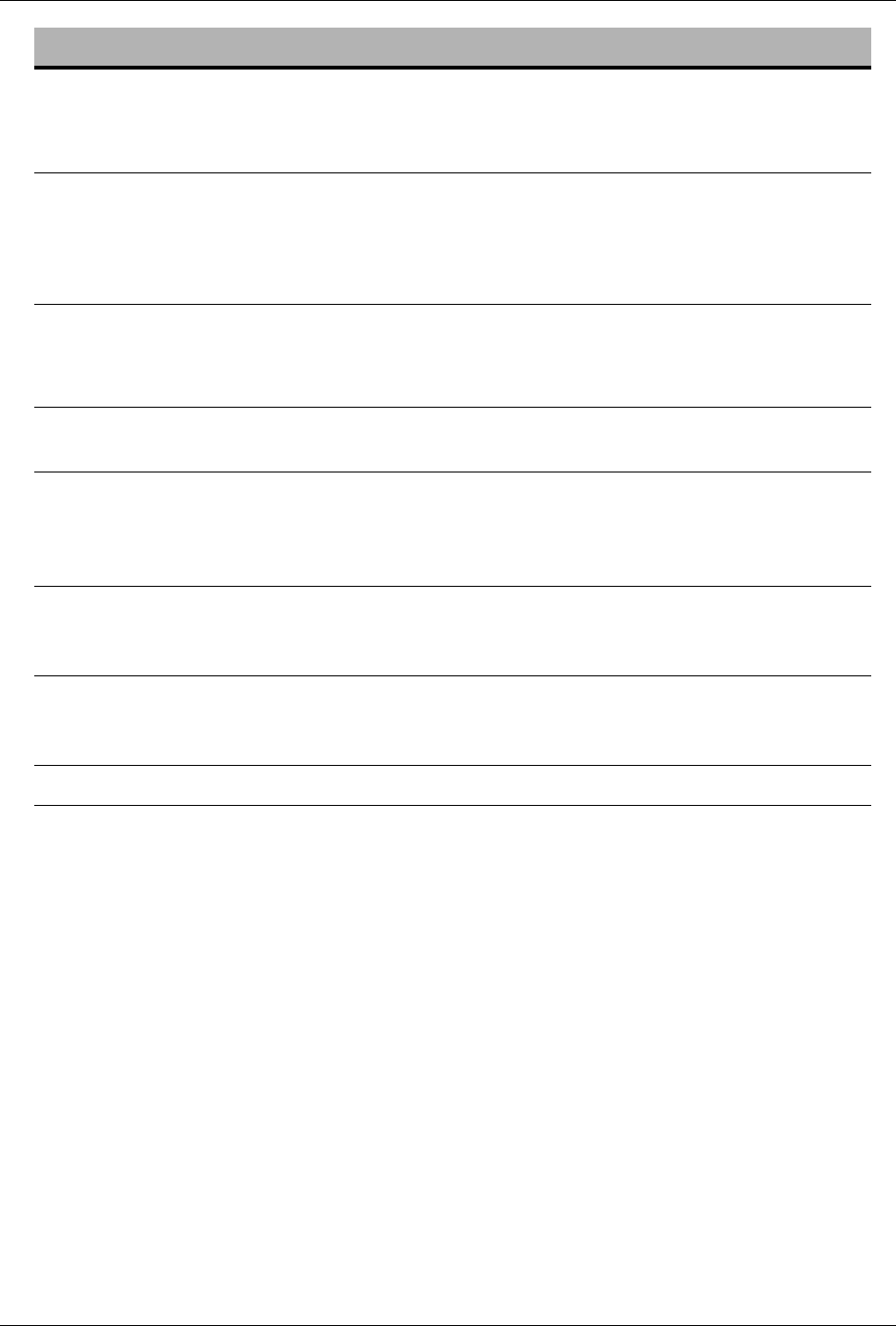
Chapter 15: Alarms and Troubleshooting
15-97 Cod. 6992200 - Rev. /
NO POWER - USING BATTERY BACKUP 353
Reason
for Alarm The AC supply voltage has been interrupted in a machine equipped with
the BATTERY BACKUP KIT.
Machine
Actions In RINSE:
• The machine automatically switches OFF after 5 minutes.
In DISINFECTION and in DIALYSIS:
• The heater is turned off.
Possible Cause Suggested Action
1. Interruption of the AC supply voltage in
RINSE or DISINFECTION. 1. Switch OFF the machine.
2. Interruption of the AC supply voltage in
DIALYSIS, during the Dialysis Fluid
Preparation phase until Patient
Connection.
2. Switch OFF the machine.
3. Interruption of the AC supply voltage in
DIALYSIS, during the treatment phase. 3. Perform RINSEBACK to return the
blood to the patient and then switch
OFF the machine.
4. Interruption of the AC supply voltage in
DIALYSIS, during EMPTYING or
DESCALING.
4. Switch OFF the machine.
Call for Service if the alarm persists.
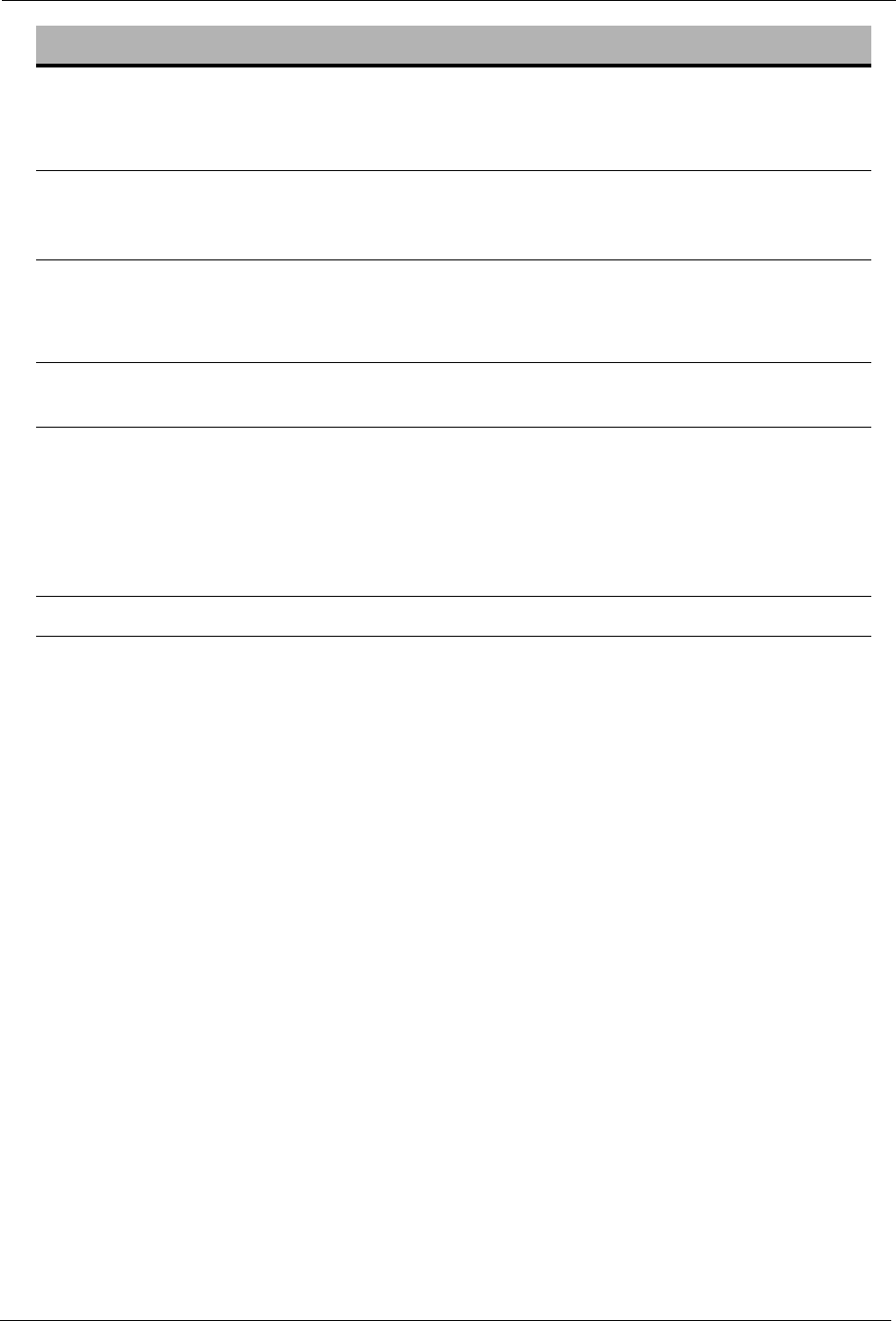
ARTIS Operator’s Manual
Cod. 6992200 - Rev. / 15-98
PUMP SPEED TOO LOW 362
Reason
for Alarm The Blood pump speed is lower than the set value.
Machine
Actions • The Arterial and the Venous pumps are stopped;
• The Venous Line Clamp is closed;
• The UF Rate is automatically set to zero.
Possible Cause Suggested Action
1. The Blood pump speed is incorrect. 1. Press the CONFIRM button to re-start
the Blood Pump.
2. The Blood Pump speed is too high for
the “SN Pressure Min” and “SN
Pressure Max” parameter values set by
the operator.
2. Decrease the Blood pump speed or
consider changing the “SN Pressure
Min” and “SN Pressure Max” parameter
values.
Press the CONFIRM button to re-start
the Blood Pump.
Call for Service if the alarm persists.

Chapter 15: Alarms and Troubleshooting
15-99 Cod. 6992200 - Rev. /
BLOOD PUMP ROTOR ERROR 363
Reason
for Alarm The Blood Pump is not functioning properly.
Machine
Actions • The Arterial and the Venous Pumps are stopped;
• The Venous Line Clamp is closed;
• The UF Rate is automatically set to zero.
Possible Cause Suggested Action
1. If the alarm is displayed for the first
time. 1. Press the CONFIRM button and
continue the process.
2. If the alarm persists. 2. Perform a Fast Recovery procedure
during a dialysis treatment as described
in the “7.4 Fast Recovery” section of
this Operator’s Manual.
Then call for Service.
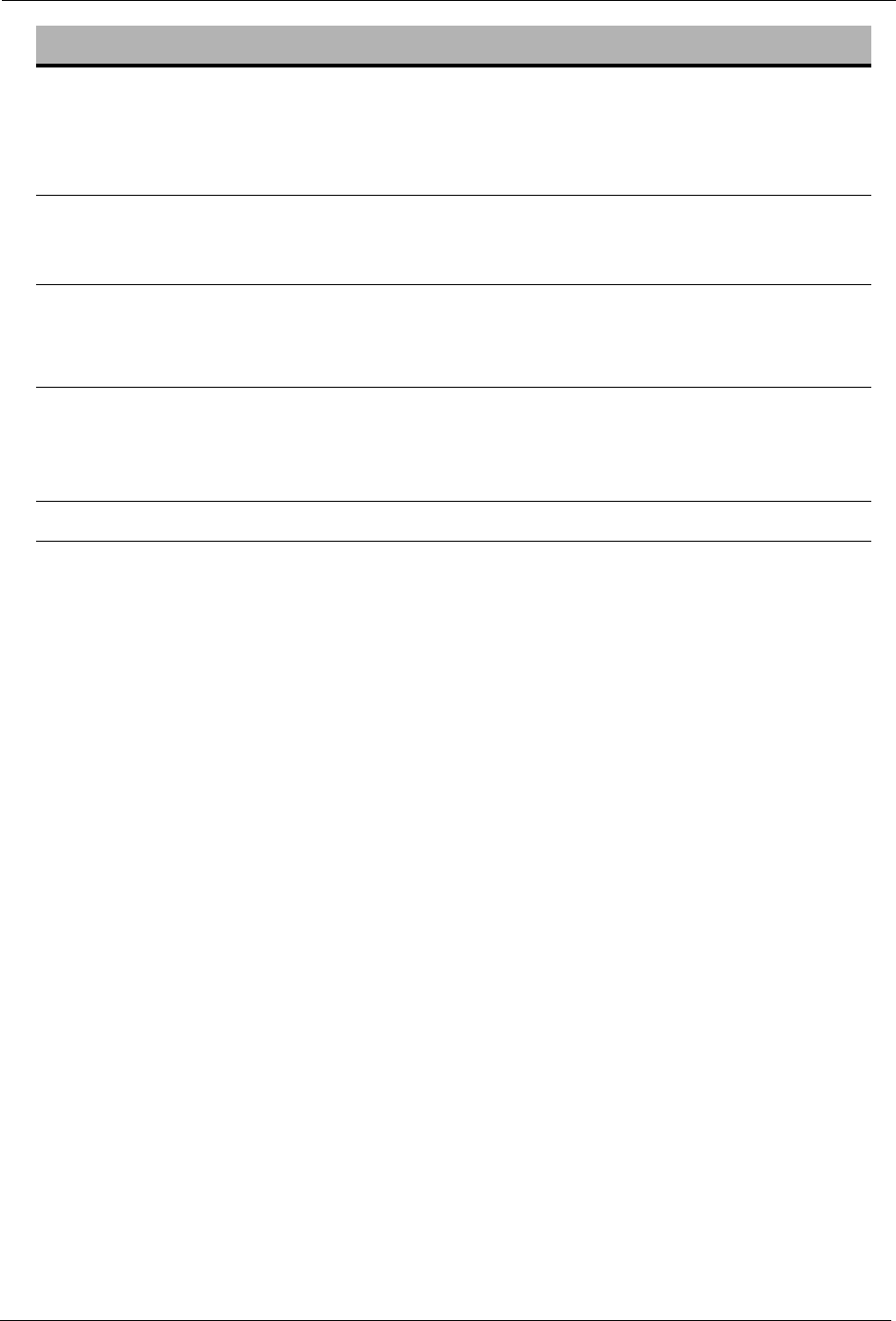
ARTIS Operator’s Manual
Cod. 6992200 - Rev. / 15-100
VENOUS LINE NOT IN PATIENT SENSOR 364
Reason
for Alarm The machine is not detecting that the Venous Patient Line is present into
the Air Detector housing or into the Venous Line Clamp (ONLY after
Patient Connection).
Machine
Actions • The Blood Pump is stopped;
• The UF Rate is automatically set to minimum;
• The Venous Line Clamp is closed.
Possible Cause Suggested Action
1. The Venous Patient Line is not properly
inserted into the Air Detector housing or
into the Venous Line Clamp.
1. Verify that the Venous Patient Line has
been inserted correctly into the Air
Detector housing and into the Venous
Line Clamp.
Call for Service if the alarm persists.
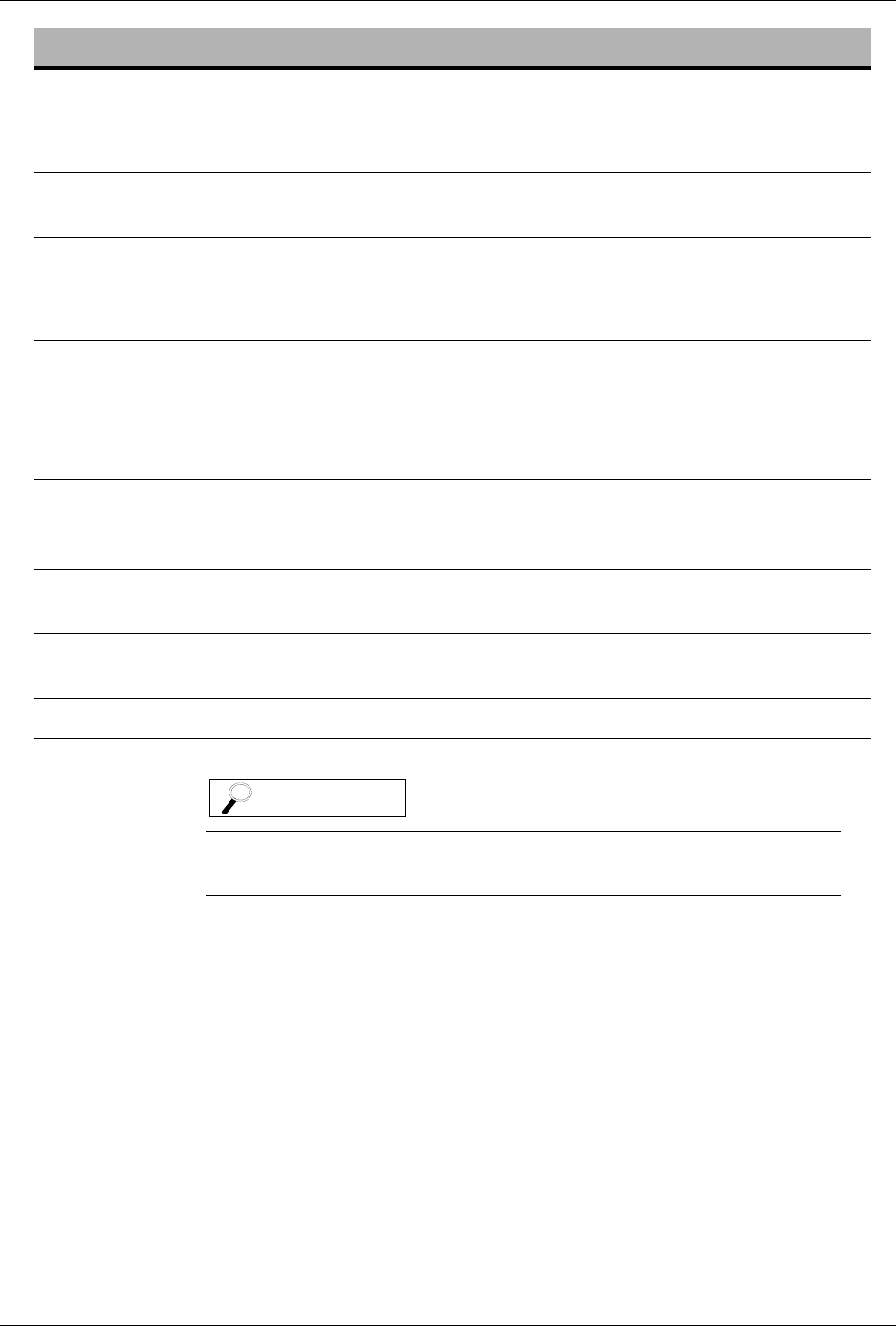
Chapter 15: Alarms and Troubleshooting
15-101 Cod. 6992200 - Rev. /
INCORRECT BICARBONATE CONCENTRATION 366
Reason
for Alarm The Bicarbonate conductivity is below the set or permitted range.
Machine
Actions • The dialysis fluid goes into Bypass.
Possible Cause Suggested Action
1. The Bicarbonate concentrate canister.
or the BiCart are almost empty. 1. Verify adequate levels of concentrates.
If BiCart, replace as described in the
related section of the "Chapter 7:
Special Procedures", in this Operator’s
Manual.
2. The Bicarbonate pick-up tube
connector is not well fitted to the
concentrate canister.
2. Verify that the Bicarbonate pick-up tube
connector is well fitted to the proper
concentrate canister.
3. Massive air leak from the Bicarbonate
concentrate canister. 3. Replace the Bicarbonate concentrate
canister.
4. The BiCart is not well positioned into its
holder. 4. Ensure the BiCart is securely placed
into its holder.
Call for Service if the alarm persists.
The use of liquid Bicarbonate concentrate is not currently
available.
NOTE

ARTIS Operator’s Manual
Cod. 6992200 - Rev. / 15-102
DIALYSATE PH LOW 368
Reason
for Alarm The dialysis fluid pH value is below the alarm threshold.
Machine
Actions • The dialysis fluid goes into Bypass;
• The Venous pump is stopped.
Possible Cause Suggested Action
1. The concentrate canisters are empty. 1. Verify that none of the concentrate
canisters are empty.
2. The solution in the concentrate canister
is not correct or diluted. 2. Verify that concentrates are being used
and are of the appropriate formulation
for the selected treatment type.
If using dialysis fluid concentrate
solutions, replace the concentrates as
needed, then wait a few seconds for the
machine to stabilize.
If using solutions other than
concentrates during the dialysis fluid
preparation:
• Stop the dialysis preparation;
• Replace the Blood Cassette and the
Dialyzer;
• Run a complete RINSE procedure;
• Replace solutions;
• Restart the dialysis fluid preparation.
3. Air leak from the Red/Blue pick-up tube
connectors or the Red/Blue pick-up
tube is not connected to the
Concentrate Canister or the Red/Blue
pick-up tube connector has
accumulated debris or salt crystals.
3. If the alarm persists, verify that:
• the Red and Blue pick-up tube
connectors and Red and Blue pick-up
tubes are free of leaks/holes and
debris.
• the Red/Blue pick-up tube connectors
are securely connected to the
appropriate concentrate connector port/
canister.
If necessary, rinse the accumulated
debris from the Connector(s).
Call for Service if the alarm persists.

Chapter 15: Alarms and Troubleshooting
15-103 Cod. 6992200 - Rev. /
ACID/ACETATE CONCENTRATE ERROR 369
Reason
for Alarm A discrepancy is indicated between the conductivity of the dialysis fluid
both for the dialysis fluid flow and the rotation speed of the associated
Pump(s). The actual Pump(s) speed does not match with the actual
concentrate(s) used.
Machine
Actions • The dialysis fluid goes into Bypass.
• The Venous Pump is stopped.
Possible Cause Suggested Action
1. The type/dilution of the Acid
Concentrate used is incorrect. 1. Verify that the correct type/dilution of
Acid Concentrate is being used.
Replace the Acid Concentrate as
needed, press the CONFIRM button,
then wait a few seconds for the
machine to stabilize.
2. The concentrate Connector is not
securely connected to its port/canister. 2. Verify that the Connector is securely
connected to the appropriate port/
canister.
3. The Acid Pump speed is incorrect. 3. If the machine does not stabilize, or if
the machine has been switched from
the Central Concentrate to an individual
Concentrate Canister, then perform an
Acid Pump Auto-calibration procedure.
Call for Service if the alarm persists.
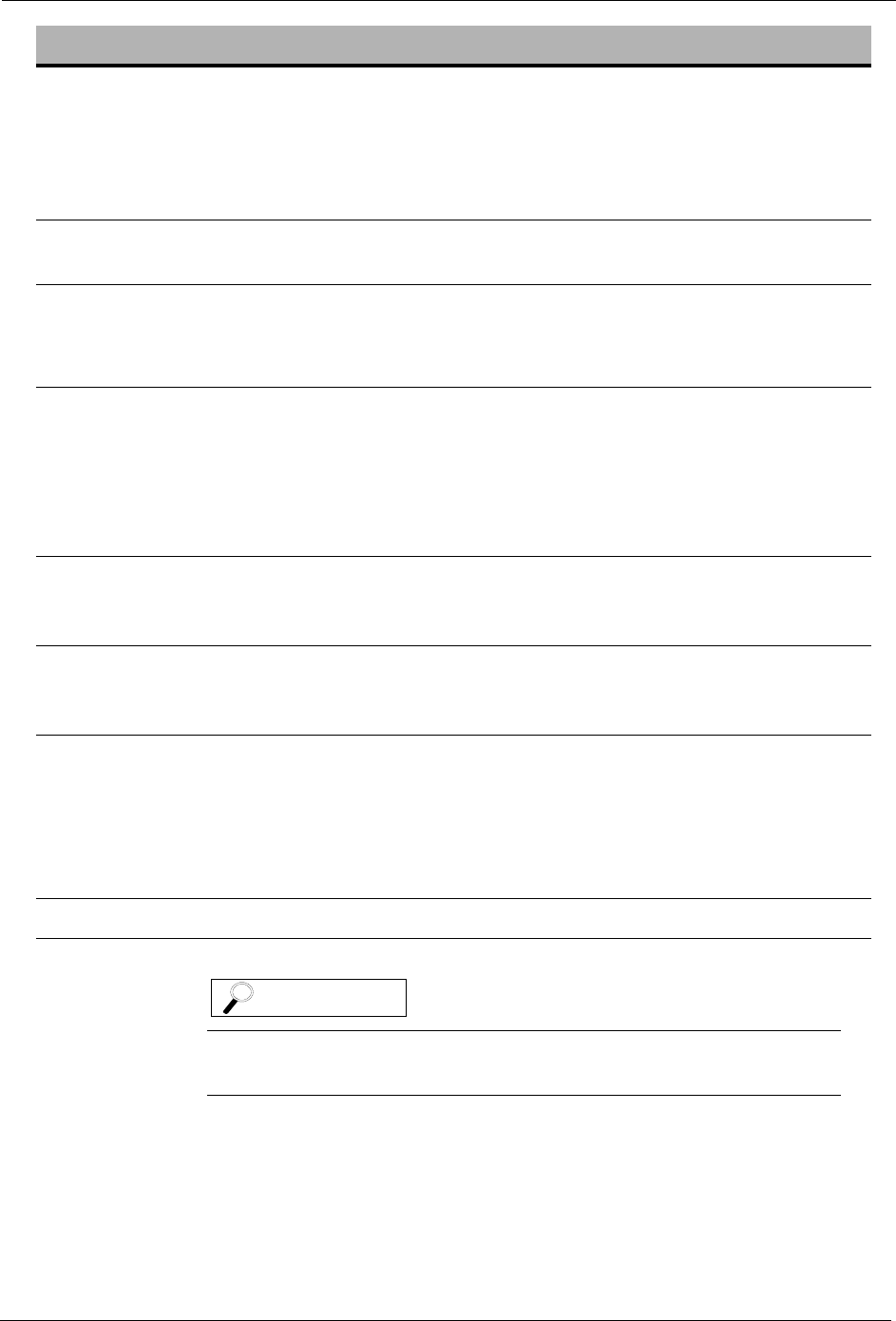
ARTIS Operator’s Manual
Cod. 6992200 - Rev. / 15-104
BICARBONATE CONCENTRATE ERROR 370
Reason
for Alarm A discrepancy is indicated between the conductivity of the dialysis fluid
both for the dialysis fluid flow and the rotation speed of the associated
Pump/Pumps. The actual Pump(s) speed does not match with the actual
concentrate(s) used.
Machine
Actions • The dialysis fluid goes into Bypass.
Possible Cause Suggested Action
1. The type/dilution of Bicarbonate
Concentrate used is incorrect. 1. Verify that the correct type/dilution of
Bicarbonate Concentrate is being used.
Replace the Bicarbonate Concentrate
as needed, press the CONFIRM button,
then wait a few seconds for the
machine to stabilize.
2. The Concentrate Connector is not
securely connected to its port/canister. 2. Verify that the Connector is securely
connected to the appropriate port/
canister.
3. The dialysis fluid type selected in the
“Fluid Settings“ subscreen is incorrect. 3. Ensure that the correct type of dialysis
fluid has been selected on the “Fluid
Settings“ subscreen.
4. The Bicarbonate Pump speed is
incorrect. 4. If the machine does not stabilize, or if
the machine has been switched from
the Central Concentrate to an individual
Concentrate Canister, then perform a
Bicarbonate Pump Auto-calibration
procedure.
Call for Service if the alarm persists.
The use of liquid Bicarbonate concentrate is not currently
available.
NOTE

Chapter 15: Alarms and Troubleshooting
15-105 Cod. 6992200 - Rev. /
DIALYSIS FLUID FLOW LOW 373
Reason
for Alarm The dialysis fluid flow is lower than the set value or than the minimum
permitted flow.
Machine
Actions • The dialysis fluid goes into Bypass;
• The Venous pump is stopped.
Possible Cause Suggested Action
1. There are deposits or debris inside the
flowmeters of the machine. 1. Perform a Chemical Disinfection.
Call for Service if the alarm persists.
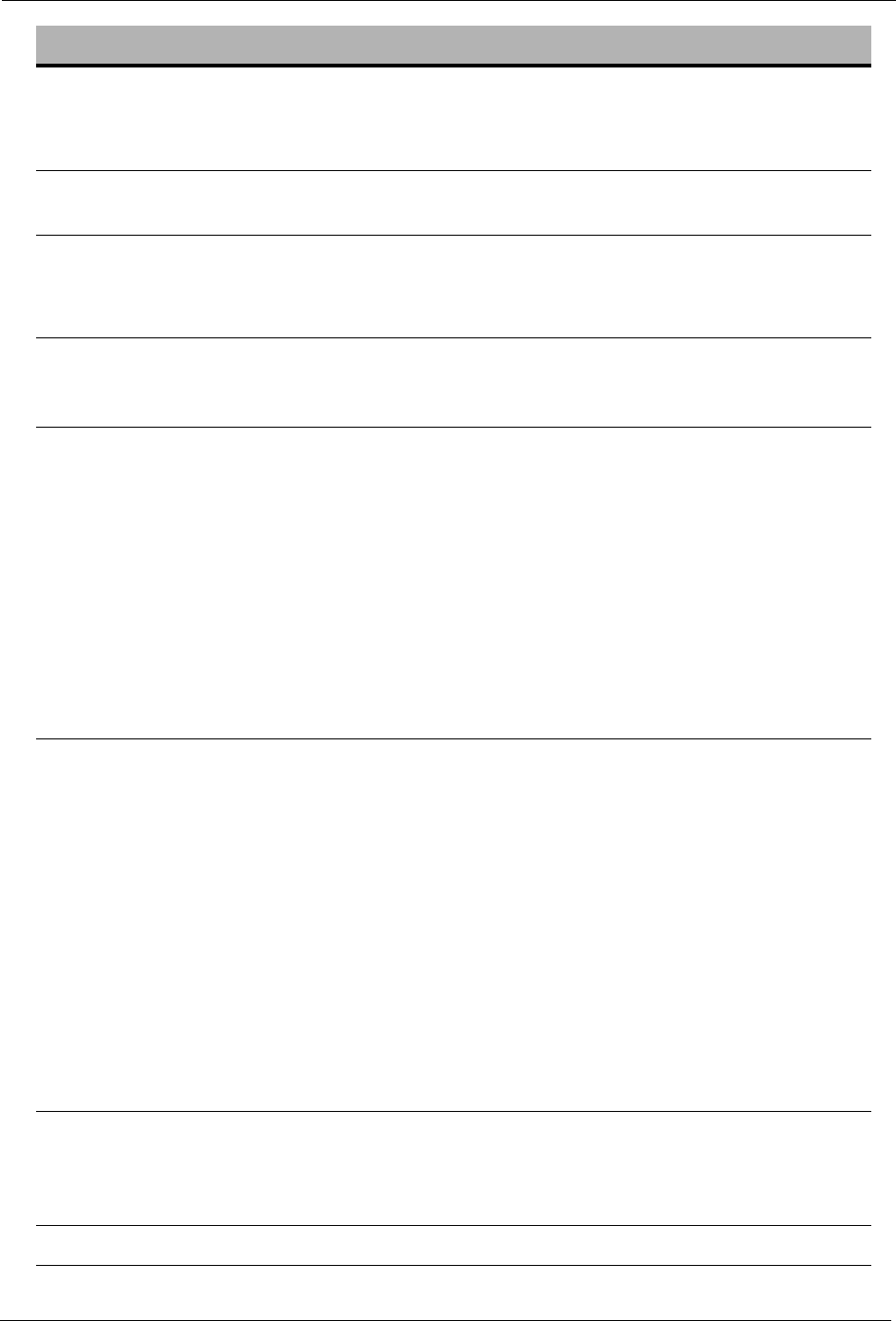
ARTIS Operator’s Manual
Cod. 6992200 - Rev. / 15-106
INCORRECT CONDUCTIVITY MEASURED 375
Reason
for Alarm The conductivity of the dialysis fluid is below the allowed limit.
Machine
Actions • The dialysis fluid goes into Bypass;
• The Venous Pump is stopped.
Possible Cause Suggested Action
1. Inappropriate solution in the Acid
Concentrate Canister. 1. Verify that appropriate concentrate has
been used for the selected treatment
type.
2. Massive air leak from Concentrate
Canisters/Connectors/Tubes or the
Connectors are not securely connected
to their Canisters/Ports or the
Canisters/Connectors have
accumulated debris or salt crystals.
2. If the alarm persists:
• verify that Concentrate Canisters,
Connectors and Tubes are free of
leaks/holes and debris;
• verify that the Connectors are securely
connected to the appropriate Canisters/
Ports;
• if necessary, rinse the accumulated
debris from the Canister(s)/
Connector(s);
• massive air leaks affect conductivity
readings.
3. Inadequate Concentrates are being
used. 3. If using dialysis fluid concentrate
solutions, replace concentrates as
needed then wait a few seconds for the
machine to stabilize.
If using solutions other than
concentrates during dialysis fluid
preparation:
• stop the dialysis fluid preparation;
• replace the Blood Cassette and the
dialyzer;
• run a complete ADR: RINSE
procedure;
• replace the solutions;
• re-start the dialysis fluid preparation.
4. The Acid or Bicarbonate Connector is
not properly positioned into the Central
Concentrate port.
4. Verify that the Acid or Bicarbonate
Connector is properly positioned into
the Central Concentrate port on the
front panel.
Call for Service if the alarm persists.
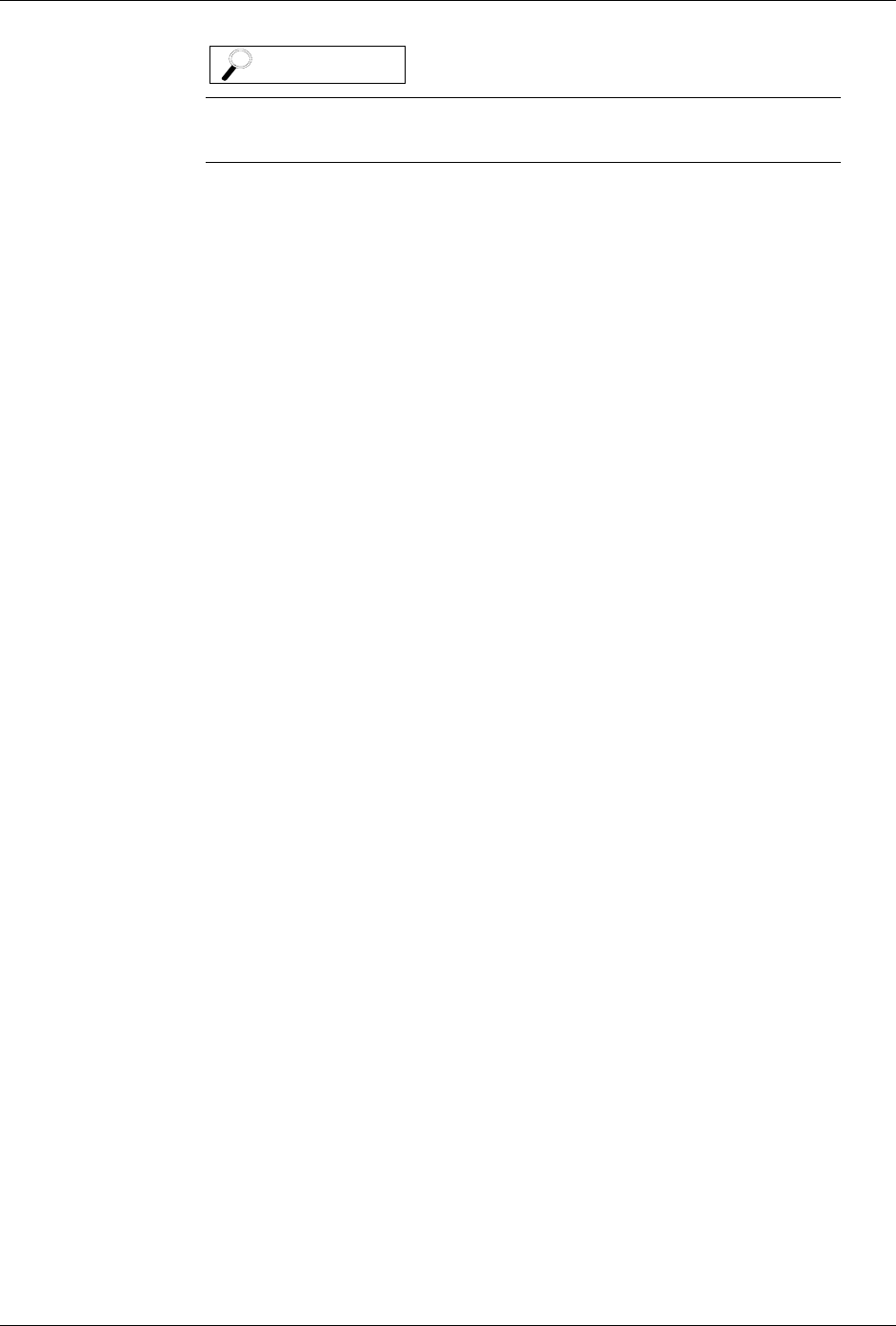
Chapter 15: Alarms and Troubleshooting
15-107 Cod. 6992200 - Rev. /
The use of liquid Bicarbonate concentrate is not currently
available.
NOTE

ARTIS Operator’s Manual
Cod. 6992200 - Rev. / 15-108
DIALYSIS FLUID TEMPERATURE LOW 377
Reason
for Alarm The temperature of the dialysis fluid is 2°C below the value set by the
operator.
Machine
Actions • The dialysis fluid goes into Bypass;
• The Venous pump is stopped.
Possible Cause Suggested Action
1. A temporary instability of dialysis fluid
flow. 1. Wait a few seconds for the system to
stabilize.
2. The temperature of the dialysis fluid
has exceeded the safe limits. 2. Verify that the incoming water
temperature is between 5.0°C - 32.2°C
(41-90 degrees F).
If the incoming water temperature
exceeds the specified range, then
adjust the temperature of the water
source per clinical policy.
If this alarm persists, then discontinue
the dialysis treatment.
Call for Service if the alarm persists.
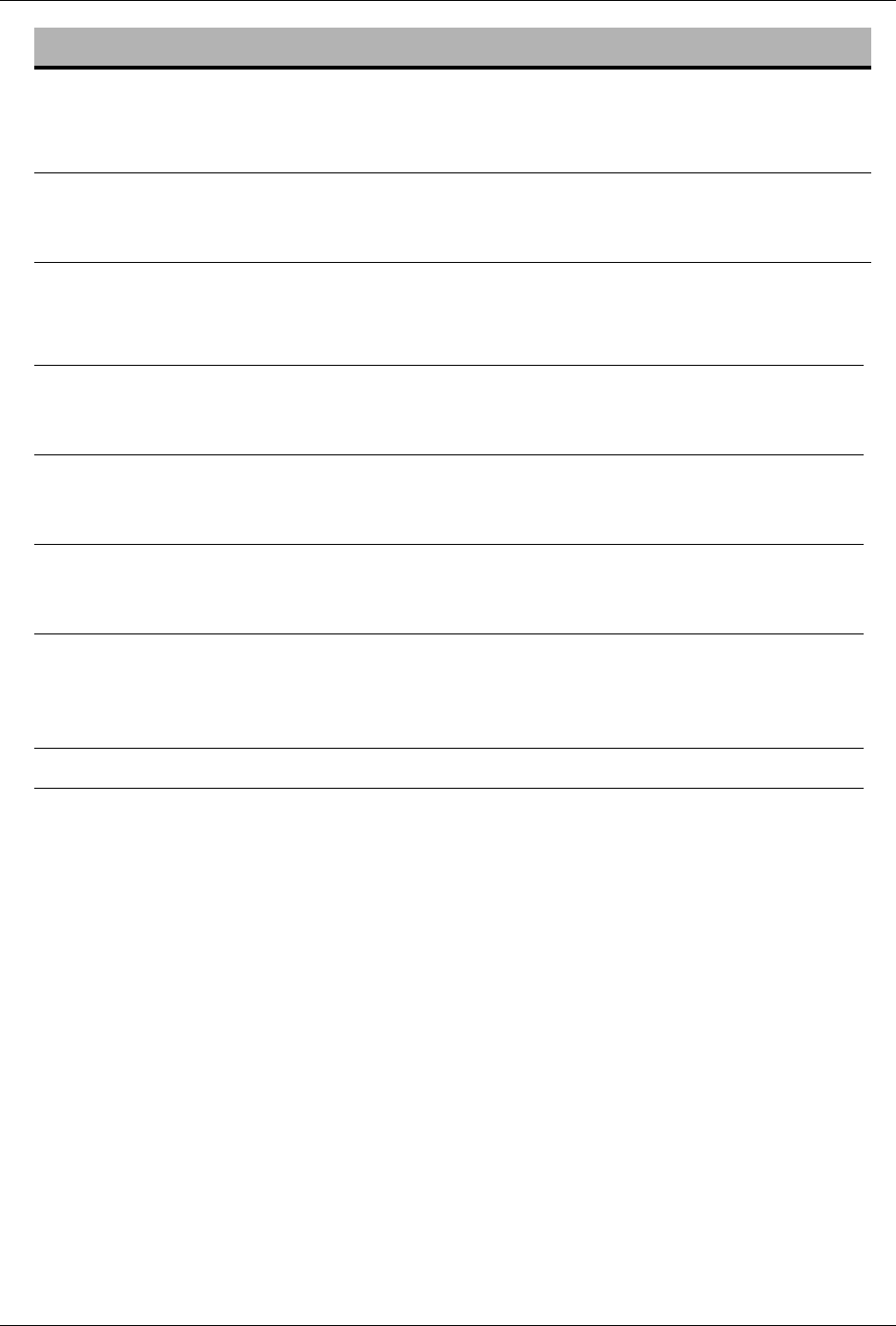
Chapter 15: Alarms and Troubleshooting
15-109 Cod. 6992200 - Rev. /
UF RATE LOWER THAN EXPECTED 379
Reason
for Alarm The ultrafiltration rate (UFR) is below the value confirmed by the operator
or the minimum permitted value.
Machine
Actions • The Venous Pump is stopped;
• The dialysis fluid goes into Bypass;
• Calibration request.
Possible Cause Suggested Action
1. Error in the Ultrafiltration Mass Balance
in the Hydraulic Module, due to
incorrect valves control.
1. Press the CONFIRM button and
continue the treatment.
2. Error in the Ultrafiltration Mass Balance
in the Hydraulic Module, due to
incorrect flowmeter reading.
2. Press the CONFIRM button and
continue the treatment.
3. Error in the Ultrafiltration Mass Balance
in the Hydraulic Module, due to
incorrect P2 pump flow or P2 reading.
3. Press the CONFIRM button and
continue the treatment.
4. The machine could not perform an
alignment of the D2 flowmeter during
the treatment and the Ultrafiltration
Mass Balance could be incorrect.
4. Press the CONFIRM button and
continue the treatment.
Call for Service if the alarm persists.

ARTIS Operator’s Manual
Cod. 6992200 - Rev. / 15-110
VENOUS PRESSURE LOW 382
Reason
for Alarm The measured venous pressure is either below +10 mmHg or below the
venous pressure threshold as displayed in the Venous Pressure Alarm
Window.
Machine
Actions • The Arterial and the Venous Pumps are stopped;
• The Venous Line Clamp is closed;
• The UF Rate is automatically set to zero;
• The alarm limits are opened for both arterial and venous pressure.
Possible Cause Suggested Action
1. If <10 mmHg, the Venous Patient Line
may have become disconnected from
the patient.
1. Carefully check the Patient’s Vascular
Access, the Cassette connections and
inspect for kinking of the Venous
Patient Line.
When the pressure stabilizes, select the
alarm in the Alarm Area and press the
CONFIRM button to restart the blood
pump.
Call for Service if the alarm persists.

Chapter 15: Alarms and Troubleshooting
15-111 Cod. 6992200 - Rev. /
ARTERIAL PRESSURE LOW 384
Reason
for Alarm The measured arterial pressure is below the minimum arterial pressure
threshold, as displayed in the Arterial Pressure Alarm Window.
Machine
Actions • The Arterial and the Venous Pumps are stopped;
• The Venous Line Clamp is closed;
• The UF Rate is automatically set to zero;
• The alarm limits are opened for both arterial and venous pressure.
Possible Cause Suggested Action
1. The Arterial pressure alarm window
needs to be set. 1. In the A/V Limit Settings sub-screen
adjust the arterial pressure alarm limits;
Press “Close A/V Limits” button: the
machine automatically centralize the
alarm window values around the
current patient’s arterial/venous
pressures.
When the pressure stabilizes, select the
alarm in the Alarm Area and press the
CONFIRM button to restart the blood
pump.
2. The Arterial Patient Line may have
become disconnected from the patient. 2. Carefully check the Cassette
connections and the Patient's Vascular
Access.
When the pressure stabilizes, select the
alarm in the Alarm Area and press the
CONFIRM button to restart the blood
pump.
3. The Arterial Patient Line is kinked,
clamped or restricted. 3. Check the Arterial Patient Line and the
Patient's Vascular Access for
restrictions, such as:
• kinks in the Arterial Patient Line;
• closed clamps;
• clotted arterial needle;
• poor flow from the Patient’s Vascular
Access.
When the pressure stabilizes, select the
alarm in the Alarm Area and press the
CONFIRM button to restart the blood
pump.

ARTIS Operator’s Manual
Cod. 6992200 - Rev. / 15-112
4. Loss of diaphragm pressure between
the Blood Cassette and the arterial
pressure cone.
4. Perform a Cassette Repositioning
Procedure (Refer to the "Chapter 7:
Special Procedures", in this Operator’s
Manual).
When the pressure stabilizes, select the
alarm in the Alarm Area and press the
CONFIRM button to restart the blood
pump.
Call for Service if the alarm persists.
Possible Cause (Continued) Suggested Action (Continued)

Chapter 15: Alarms and Troubleshooting
15-113 Cod. 6992200 - Rev. /
AIR IN BLOOD T0 FAILURE 385
Reason
for Alarm The T0 Test, related to the Air Detector sensor, has failed.
Machine
Actions • The Blood Pump is stopped;
• The Venous Line Clamp is closed;
• The UF Rate is automatically set to minimum.
Possible Cause Suggested Action
1. The T0 Test failed. 1. Press the CONFIRM button to remove
the alarm.
Call for Service if the alarm persists.
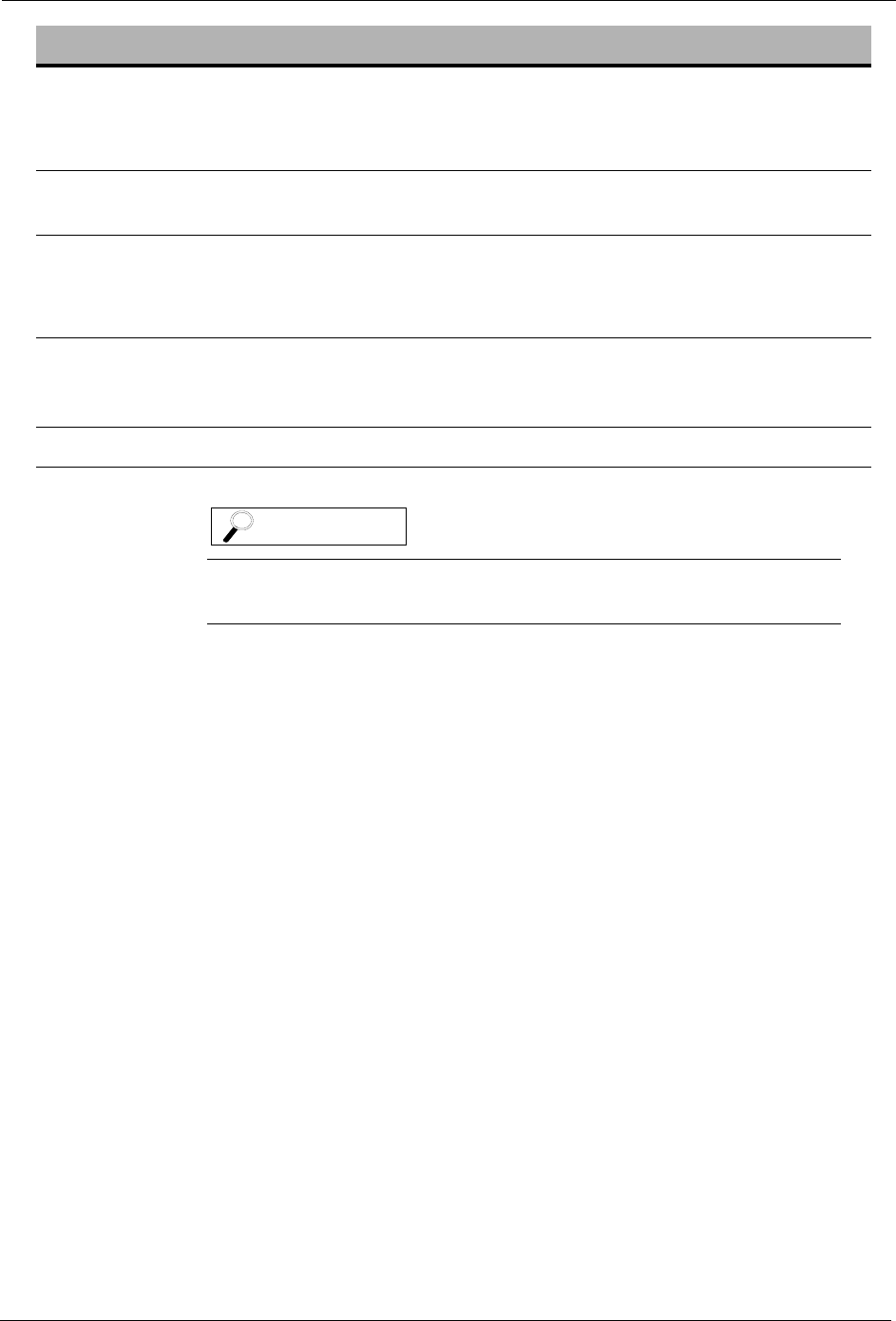
ARTIS Operator’s Manual
Cod. 6992200 - Rev. / 15-114
NA OR BIC SETTINGS RESULT IN CONDUCTIVITY OUT OF RANGE 401
Reason
for Alarm The Sodium or Bicarbonate Settings result in conductivity out of range.
Machine
Actions • The machine continues the treatment with the previous conductivity set;
• The new set conductivity is not stored in the machine memory.
Possible Cause Suggested Action
1. One of the formula input (Na set, HCO3
set, Concentrate set) causes the results
out of range.
1. Change the value of the formula input.
Call for Service if the alarm persists.
The use of liquid Bicarbonate concentrate is not currently
available.
NOTE
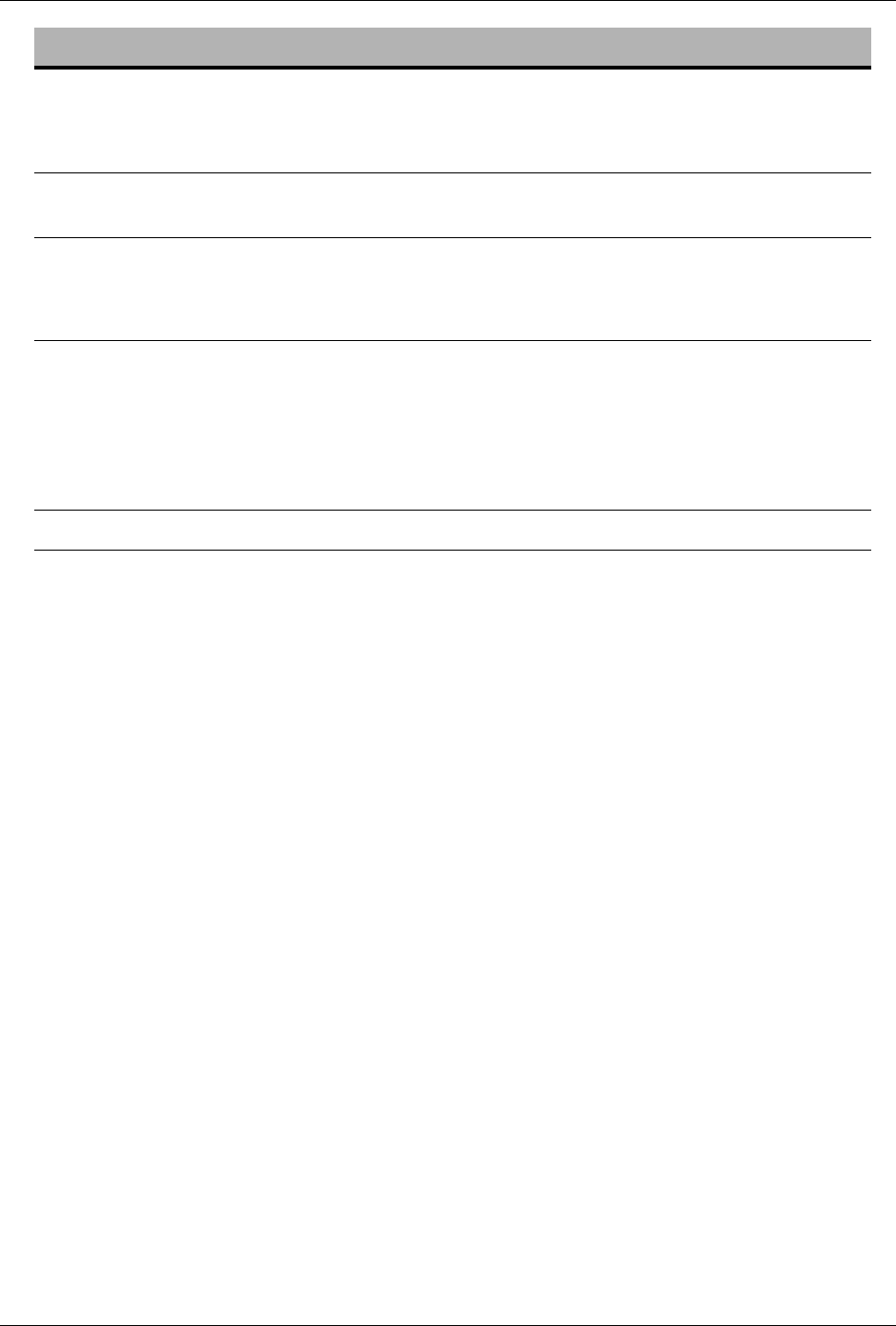
Chapter 15: Alarms and Troubleshooting
15-115 Cod. 6992200 - Rev. /
ULTRAFILTER REPLACEMENT REMINDER 402
Reason
for Alarm The machine notifies that the ultrafilters should be replaced.
Machine
Actions • The dialysis fluid goes into Bypass.
Possible Cause Suggested Action
1. The ultrafilters should be replaced. 1. Press the CONFIRM button to remove
the alarm.
If needed, replace the ultrafilters with
new ones (Refer to the “7.18 Ultrafilter
Change Procedure” section of this
Operator’s Manual).
Call for Service if the alarm persists.
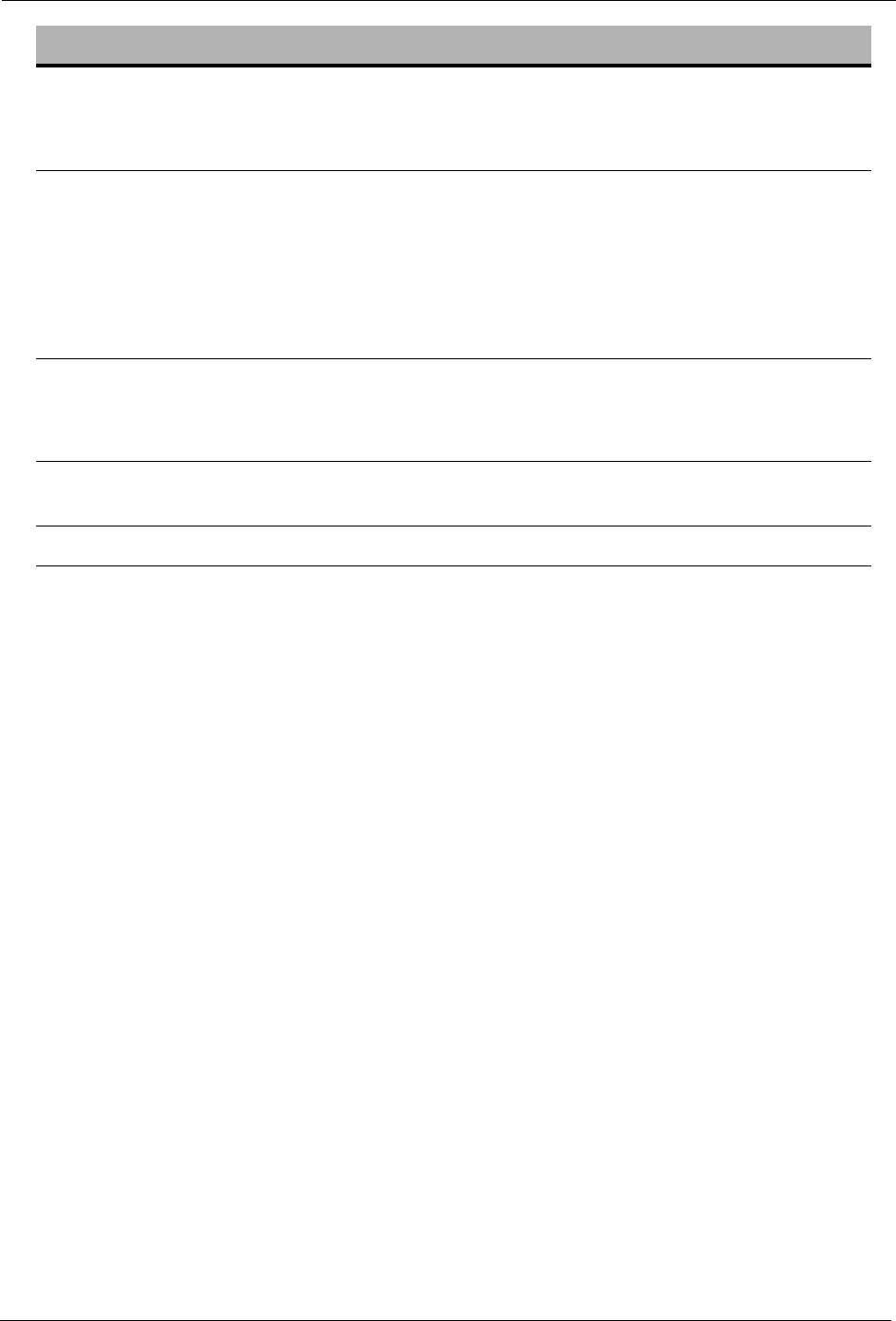
ARTIS Operator’s Manual
Cod. 6992200 - Rev. / 15-116
SELECT BAG HOLDER INCORRECT POSITION 411
Reason
for Alarm The Select Bag holder is in the wrong position.
Machine
Actions In DIALYSIS:
• All hydraulic module pumps are stopped;
• The dialysis fluid goes into Bypass;
• Waits until the connector is in right position.
In ADR:
• The phase currently running stops;
• All the pumps are stopped.
Possible Cause Suggested Action
1. The Select Bag holder is in the wrong
position. 1. Check the position of the Select Bag
holder.
Call for Service if the alarm persists.

Chapter 15: Alarms and Troubleshooting
15-117 Cod. 6992200 - Rev. /
VENOUS FLOW MINIMUM 412
Reason
for Alarm The venous blood flow is lower than the expected set value.
Machine
Actions • The Venous Pump is stopped.
Possible Cause Suggested Action
1. The Venous Pump speed is different
from the set value. 1. Press the CONFIRM button to restart
the Blood Pump.
Call for Service if the alarm persists.
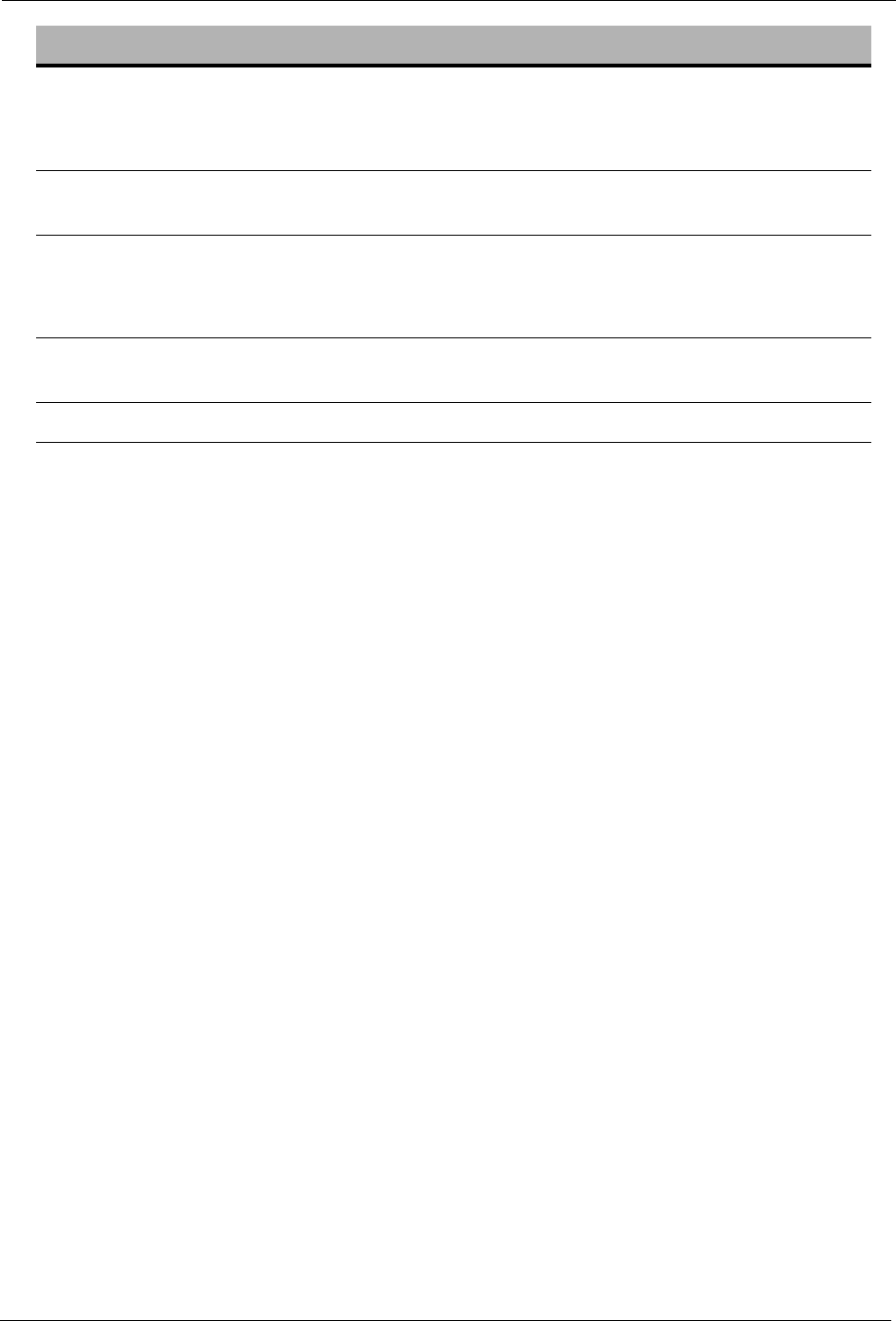
ARTIS Operator’s Manual
Cod. 6992200 - Rev. / 15-118
VENOUS FLOW MAXIMUM 413
Reason
for Alarm The venous blood flow is greater than the expected set value.
Machine
Actions • The Venous Pump is stopped.
Possible Cause Suggested Action
1. The Venous Pump speed is different
from the set value. 1. Press the CONFIRM button to restart
the Blood Pump.
Call for Service if the alarm persists.
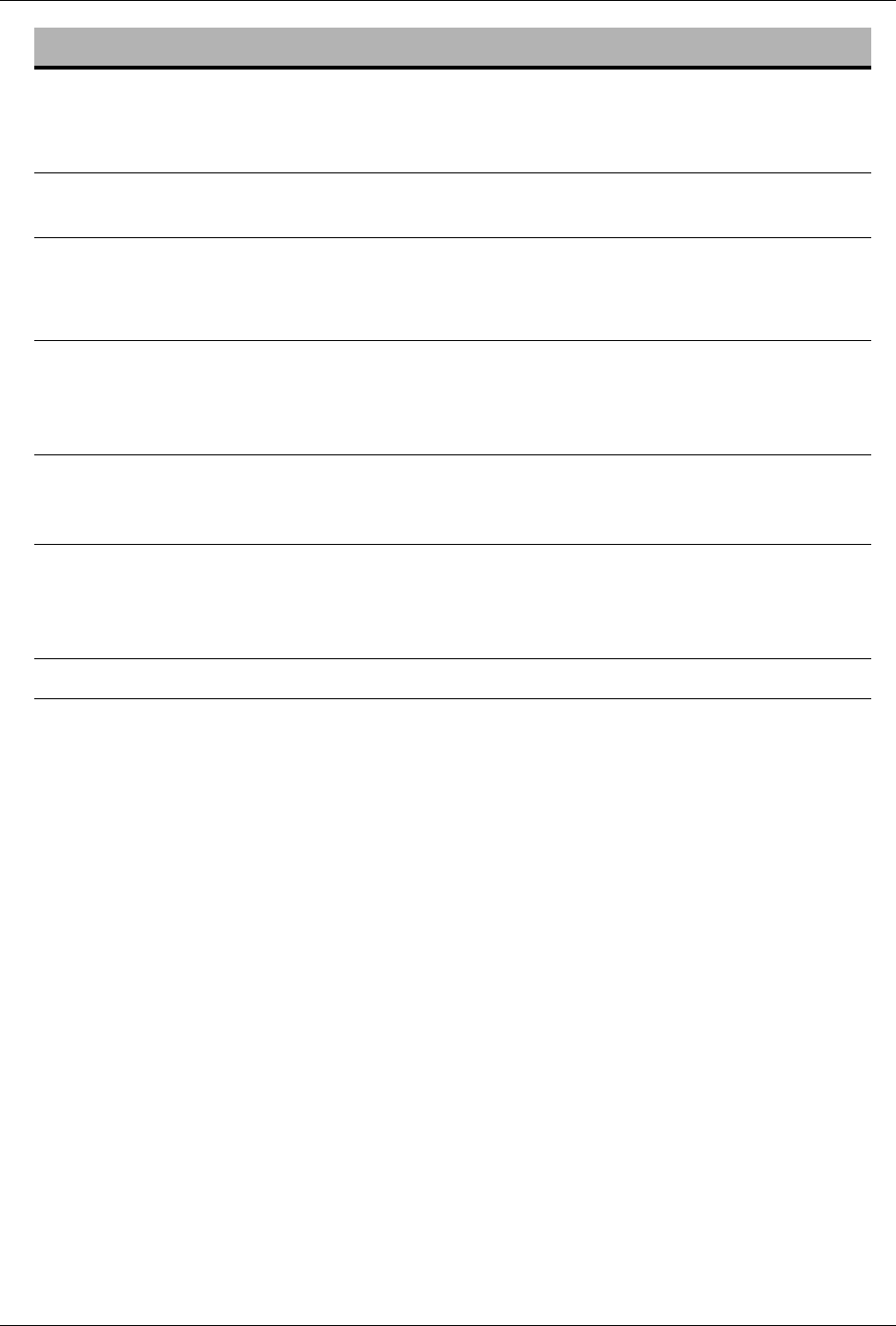
Chapter 15: Alarms and Troubleshooting
15-119 Cod. 6992200 - Rev. /
NO POWER - USING BATTERY BACKUP 415
Reason
for Alarm A power failure occurred and therefore the battery back-up is used.
Machine
Actions • The phase currently running stops;
• All the pumps are stopped.
Possible Cause Suggested Action
1. Interruption of the AC supply voltage in
DIALYSIS, during the Dialysis fluid
Preparation phase until Patient
Connection.
1. Switch OFF the machine.
2. Interruption of the AC supply voltage in
DIALYSIS, during the treatment phase. 2. Perform RINSEBACK to return the
blood to the patient and then switch
OFF the machine.
3. Interruption of the AC supply voltage in
DIALYSIS, before the patient
connection or after the patient
disconnection.
3. Switch OFF the machine.
Call for Service if the alarm persists.
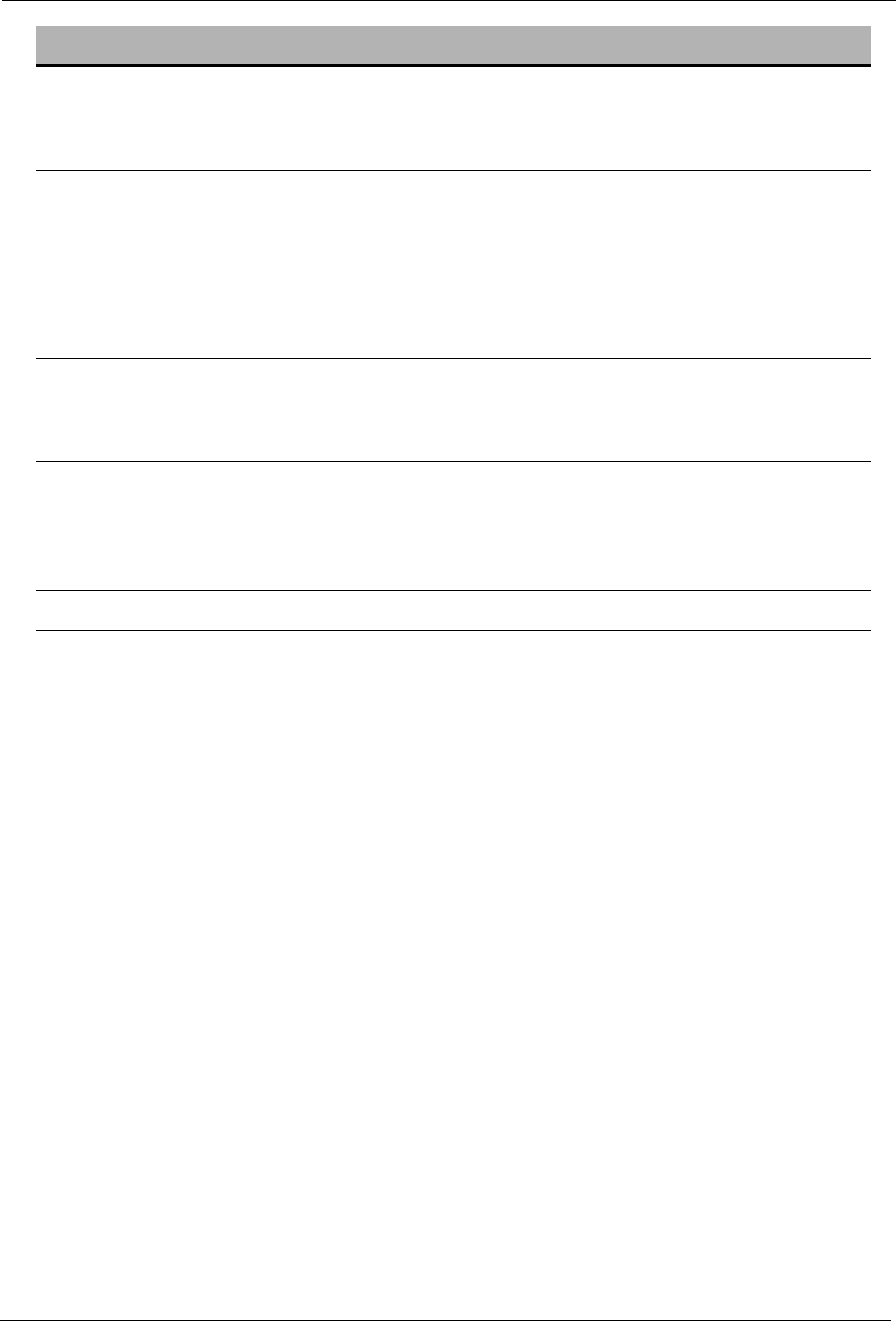
ARTIS Operator’s Manual
Cod. 6992200 - Rev. / 15-120
LEFT BLUE EVACLEAN DOOR INCORRECT POSITION 416
Reason
for Alarm The Left Blue EvaClean door position is wrong.
Machine
Actions The machine waits until the EvaClean Door is closed, in the meantime:
In DIALYSIS:
• All hydraulic module pumps are stopped;
• The dialysis fluid goes into Bypass.
In ADR:
• The phase currently running stops;
• All the pumps are stopped.
Possible Cause Suggested Action
1. The Left Blue EvaClean door is open
when it should be closed. 1. Verify that the door is closed.
2. The Left Blue EvaClean door is closed
when it should be opened. 2. Verify that the door is opened.
Call for Service if the alarm persists.
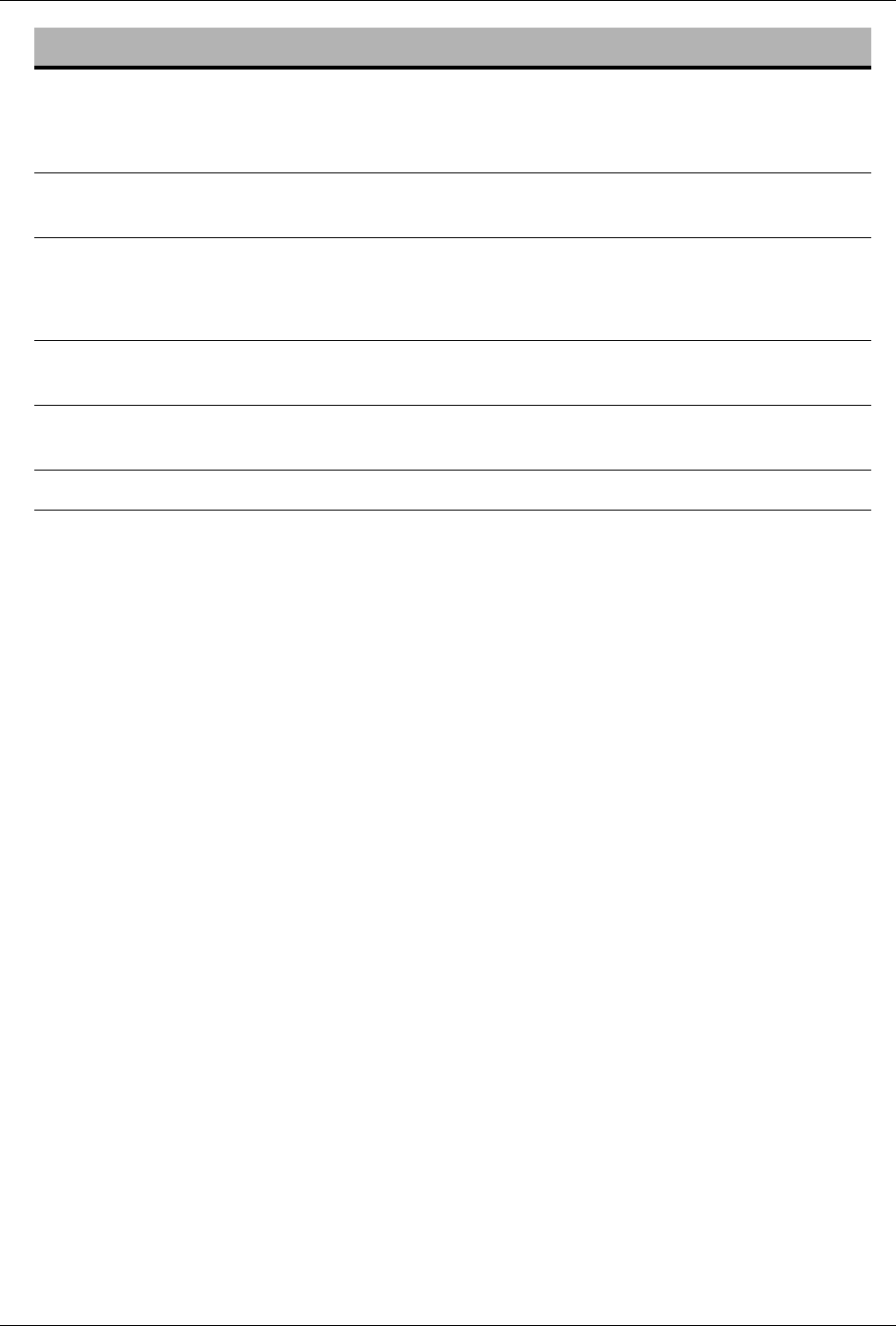
Chapter 15: Alarms and Troubleshooting
15-121 Cod. 6992200 - Rev. /
RIGHT RED EVACLEAN DOOR INCORRECT POSITION 417
Reason
for Alarm The Right Red EvaClean door position is wrong.
Machine
Actions • The machine stops and waits for the EvaClean Door to be closed.
Possible Cause Suggested Action
1. The Right Red EvaClean door is open
when it should be closed. 1. Verify that the door is closed.
2. The Right Red EvaClean door is closed
when it should be opened. 2. Verify that the door is opened.
Call for Service if the alarm persists.
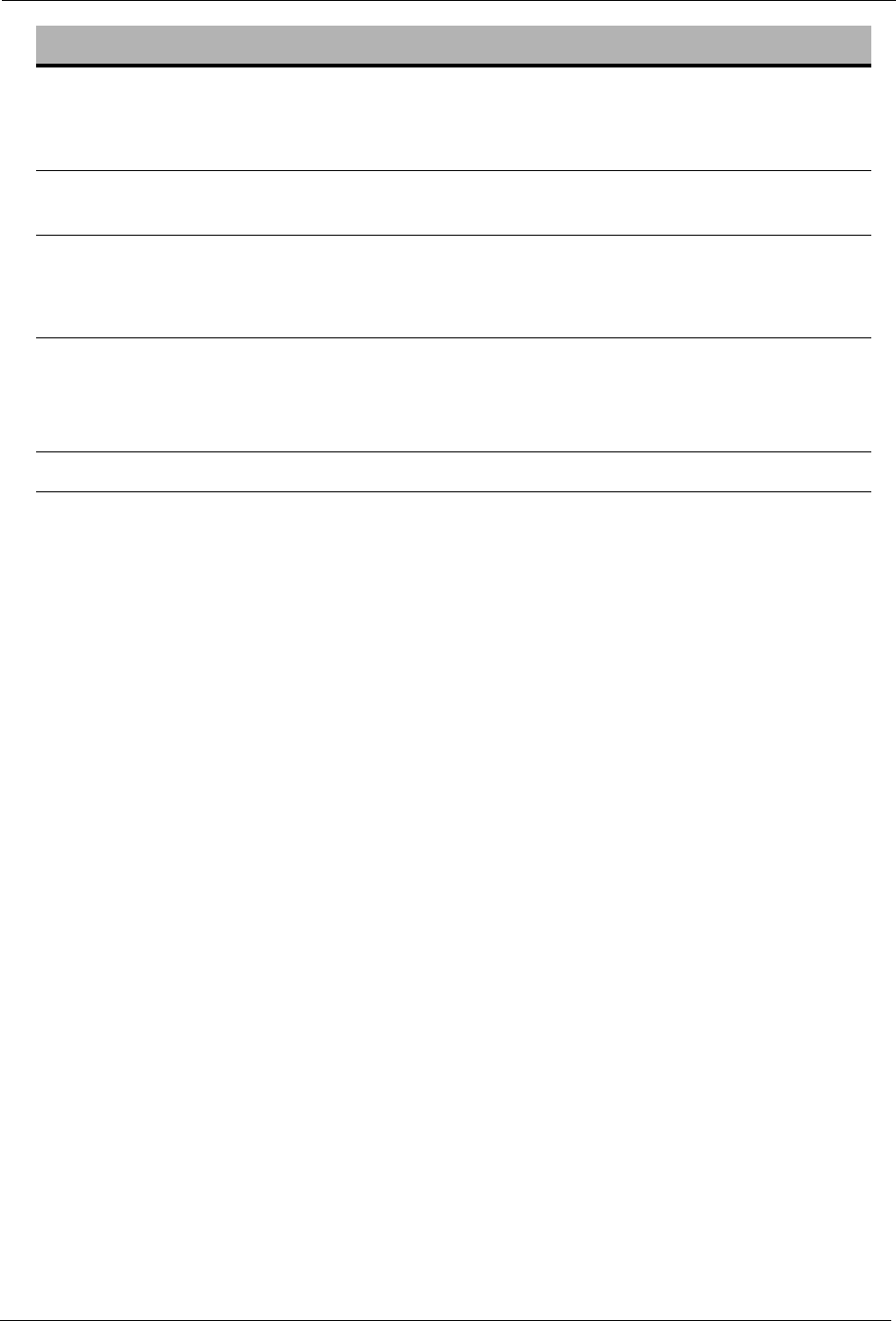
ARTIS Operator’s Manual
Cod. 6992200 - Rev. / 15-122
T1 TEST PRE FILTER PRESSURE 418
Reason
for Alarm The acquired inlet pressure value is out of range respect to the set point.
Machine
Actions • None.
Possible Cause Suggested Action
1. The T1 test failed during preparation. 1. Verify that the dialysis fluid connectors
are properly positioned to their bypass
ports. Repeat the dialysis fluid
preparation.
Call for Service if the alarm persists.
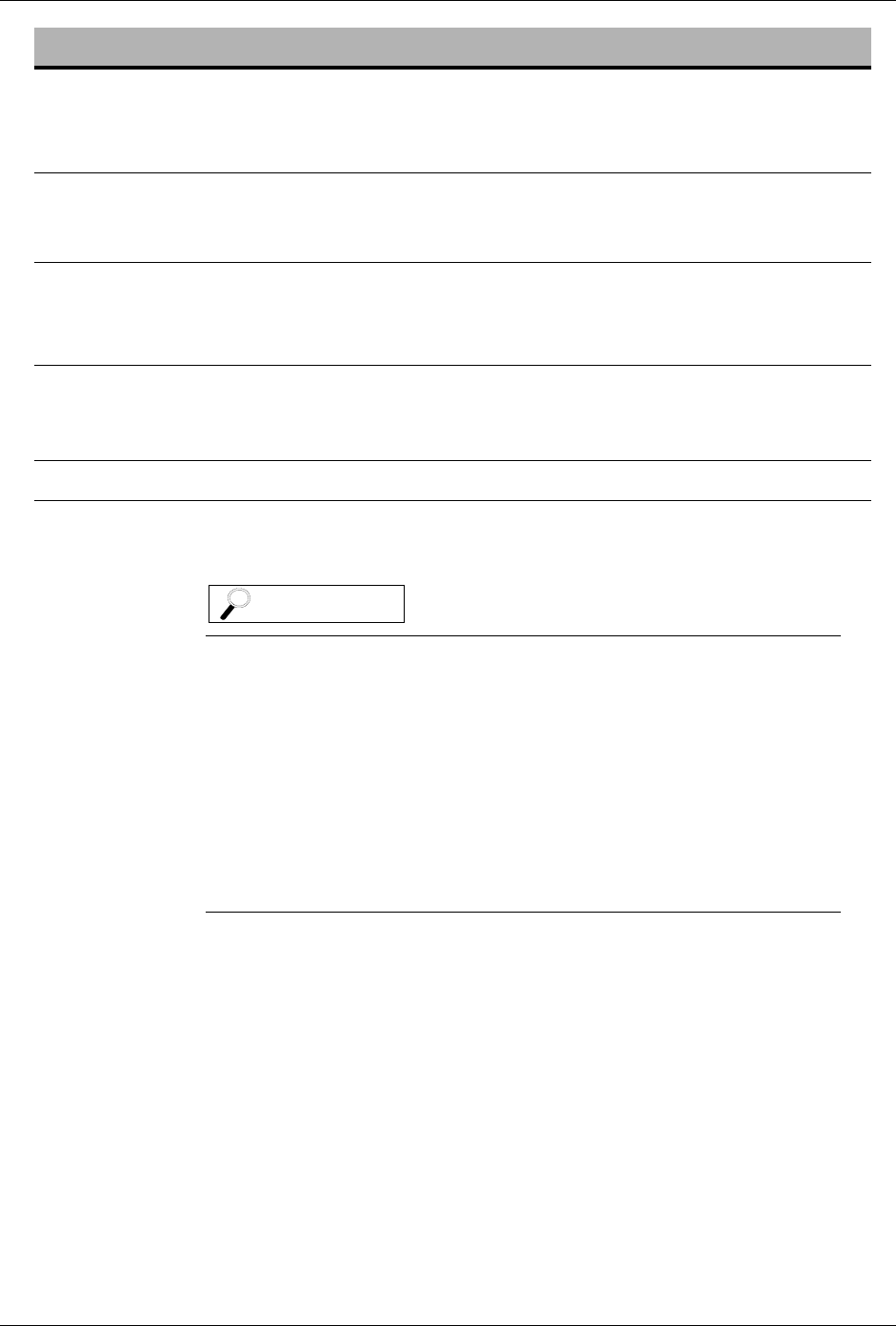
Chapter 15: Alarms and Troubleshooting
15-123 Cod. 6992200 - Rev. /
T1 TEST ARTERIAL PUMP/ABD 419
Reason
for Alarm The acquired flow value is out of range respect to the set point.
Machine
Actions • None.
• If the alarm condition persists after the preparation phase, it will not be
possible to start the treatment.
Possible Cause Suggested Action
1. The T1 test failed during preparation. 1. Press the CONFIRM button to remove
the alarm.
Perform an Extra Priming procedure.
Call for Service if the alarm persists.
This alarm appears also in case the Arterial Pump cover is opened
and then closed while the machine is performing the T1 Arterial
Pump/ABD test. In this case, pressing the CONFIRM button, the
alarm message is removed but if the “Reset Prime” button is
pressed, the priming procedure gets stuck.
To restore the priming procedure, proceed as follows:
1. Open the Arterial Pump Cover;
2. Close the Arterial Pump Cover;
3. Press the “Auto-Prime” button to start again the priming
procedure.
NOTE
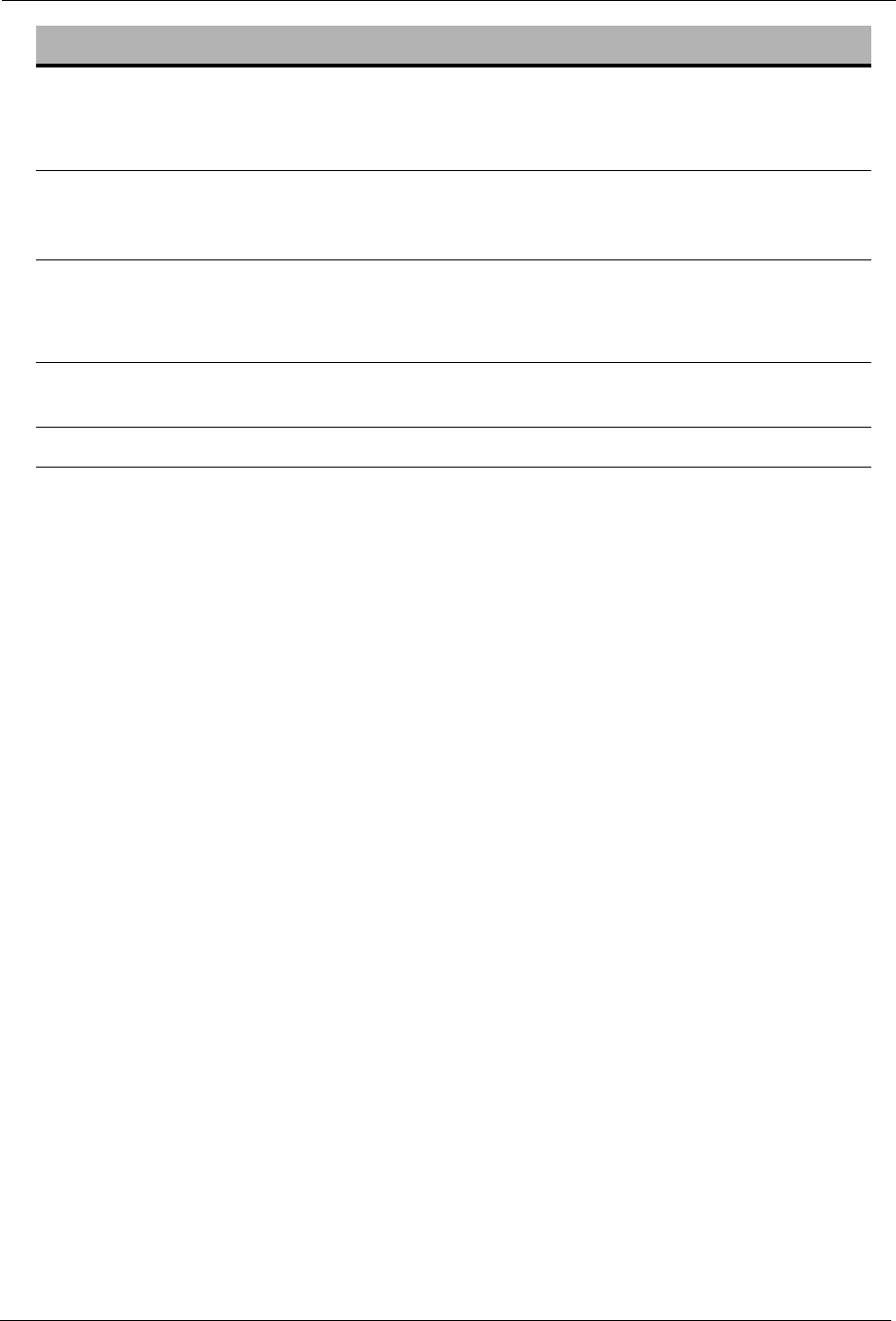
ARTIS Operator’s Manual
Cod. 6992200 - Rev. / 15-124
T1 TEST FLOW METERS 422
Reason
for Alarm The T1 test performed by the machine on the T1 Test Flow Meters has
failed or it has exceeded the maximum allowed time for the execution.
Machine
Actions • None.
• If the alarm condition persists after the preparation phase, it will not be
possible to start the treatment.
Possible Cause Suggested Action
4. The T1 test Flowmeter failed. 1. Press the CONFIRM button and wait for
the new flowmeter test.
Call for Service if the alarm persists.
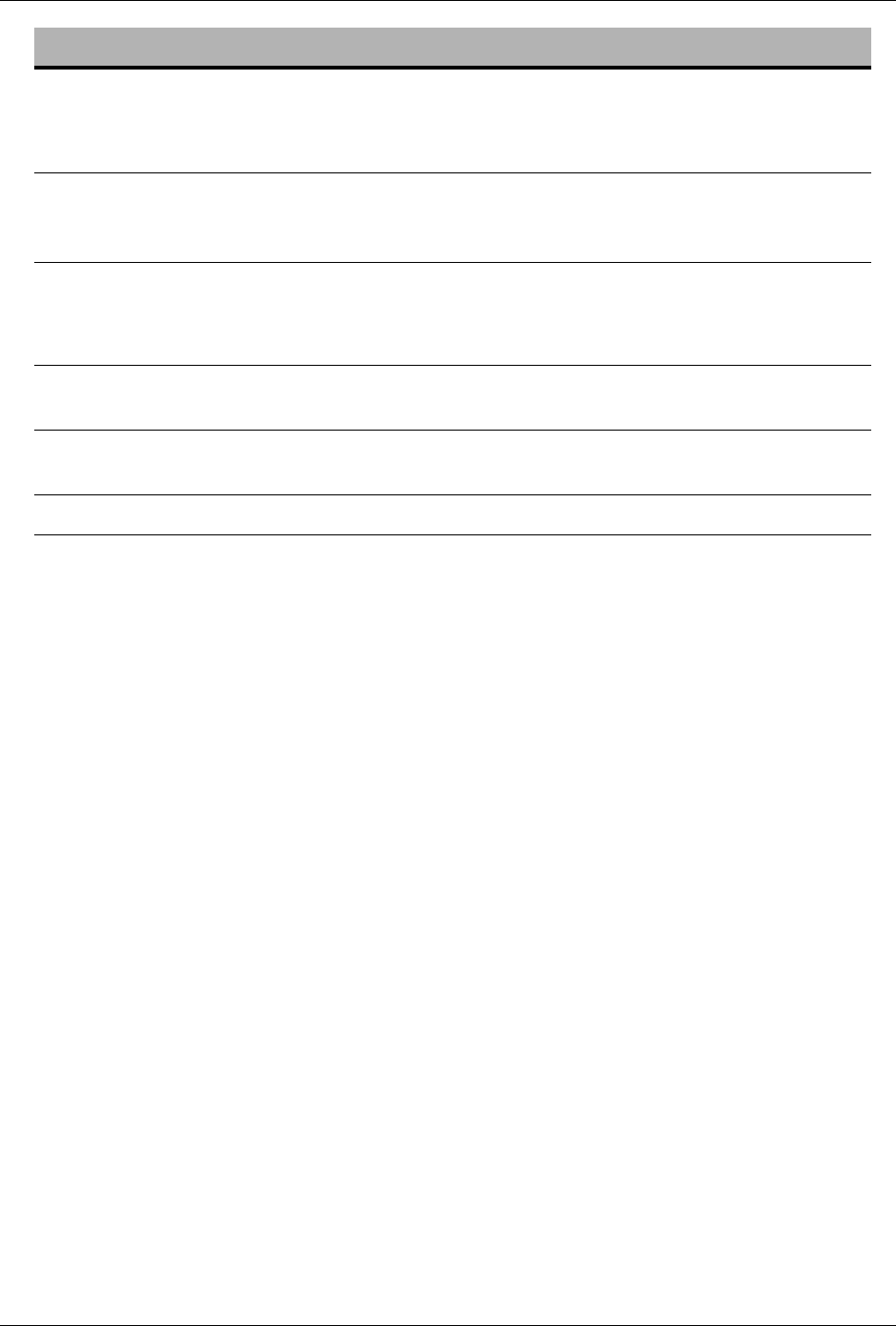
Chapter 15: Alarms and Troubleshooting
15-125 Cod. 6992200 - Rev. /
ON-LINE DOOR INCORRECT POSITION 423
Reason
for Alarm The Ultra Door position is wrong.
Machine
Actions • The phase currently running stops;
• All the pumps are stopped;
• The dialysis fluid goes into Bypass.
Possible Cause Suggested Action
1. The Ultra Door is open when it should
be closed. 1. Verify that the door is closed.
2. The Ultra Door is closed when it should
be opened. 2. Verify that the door is opened.
Call for Service if the alarm persists.
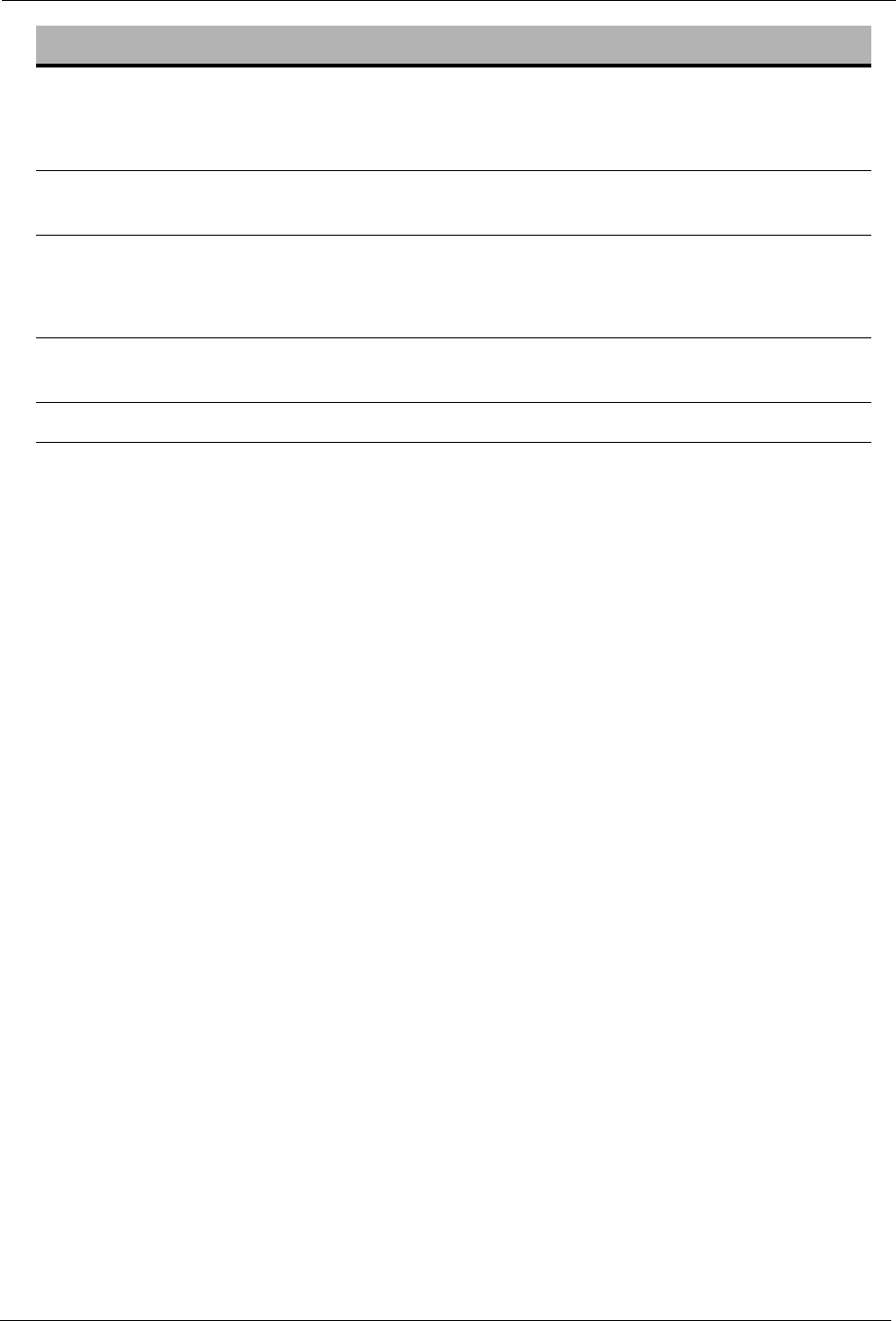
ARTIS Operator’s Manual
Cod. 6992200 - Rev. / 15-126
SENSOR BAR DOOR OPEN 424
Reason
for Alarm The sensor detected that the Sensor Bar Door is open.
Machine
Actions • The phase currently running stops;
• All the pumps are stopped.
Possible Cause Suggested Action
1. The Sensor Bar Door is open when it
should be closed. 1. Verify that the door is closed.
Call for Service if the alarm persists.

Chapter 15: Alarms and Troubleshooting
15-127 Cod. 6992200 - Rev. /
DIALYSIS FLUID FLOW TOO LOW 425
Reason
for Alarm The dialysis fluid flow is lower than the set value or than the minimum
permitted flow.
Machine
Actions • The phase currently running stops;
• All the pumps are stopped;
• The dialysis fluid goes into Bypass.
Possible Cause Suggested Action
1. There are deposits or debris inside the
flowmeters of the machine. 1. Perform a Chemical Disinfection.
Call for Service if the alarm persists.
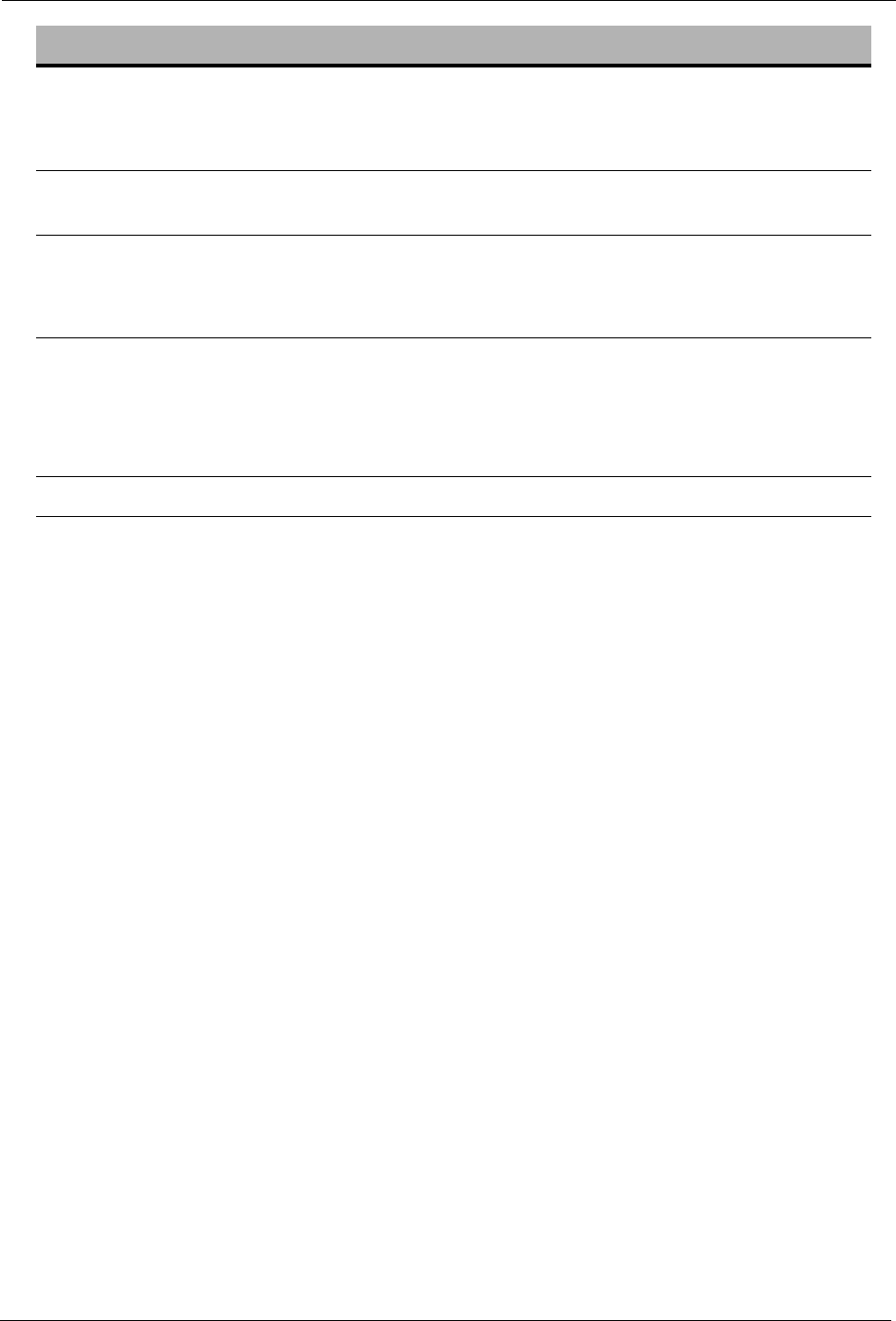
ARTIS Operator’s Manual
Cod. 6992200 - Rev. / 15-128
NOT PERFORMING UF 443
Reason
for Alarm The UF button has been deselected during treatment.
Machine
Actions • None.
Possible Cause Suggested Action
1. During treatment the operator has
deselected the UF button (the machine
doesn't apply UF for six consecutive
minutes, so an alarm message will be
displayed).
1. Press the CONFIRM button to remove
the alarm message (pay attention that
UF doesn't restart automatically).
Call for Service if the alarm persists.
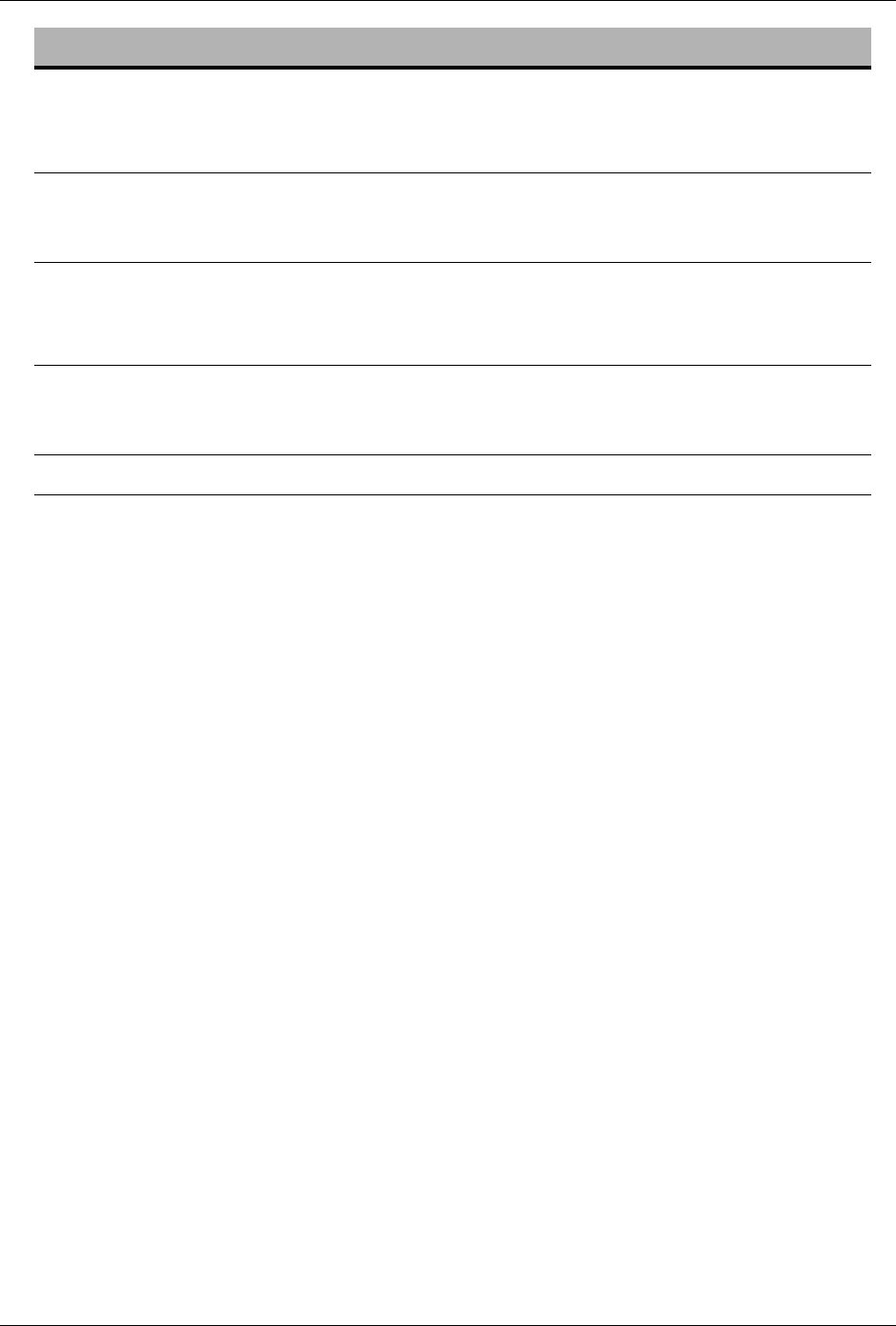
Chapter 15: Alarms and Troubleshooting
15-129 Cod. 6992200 - Rev. /
T1 TEST TEMPERATURE FAILED 444
Reason
for Alarm The T1 test performed by the machine on the Temperature has failed.
Machine
Actions • None.
• If the alarm condition persists after the preparation phase, it will not be
possible to start the treatment.
Possible Cause Suggested Action
1. The T1 test Temperature failed. 1. Press the CONFIRM button and wait
the machine to perform another
Temperature test.
Call for Service if the alarm persists.
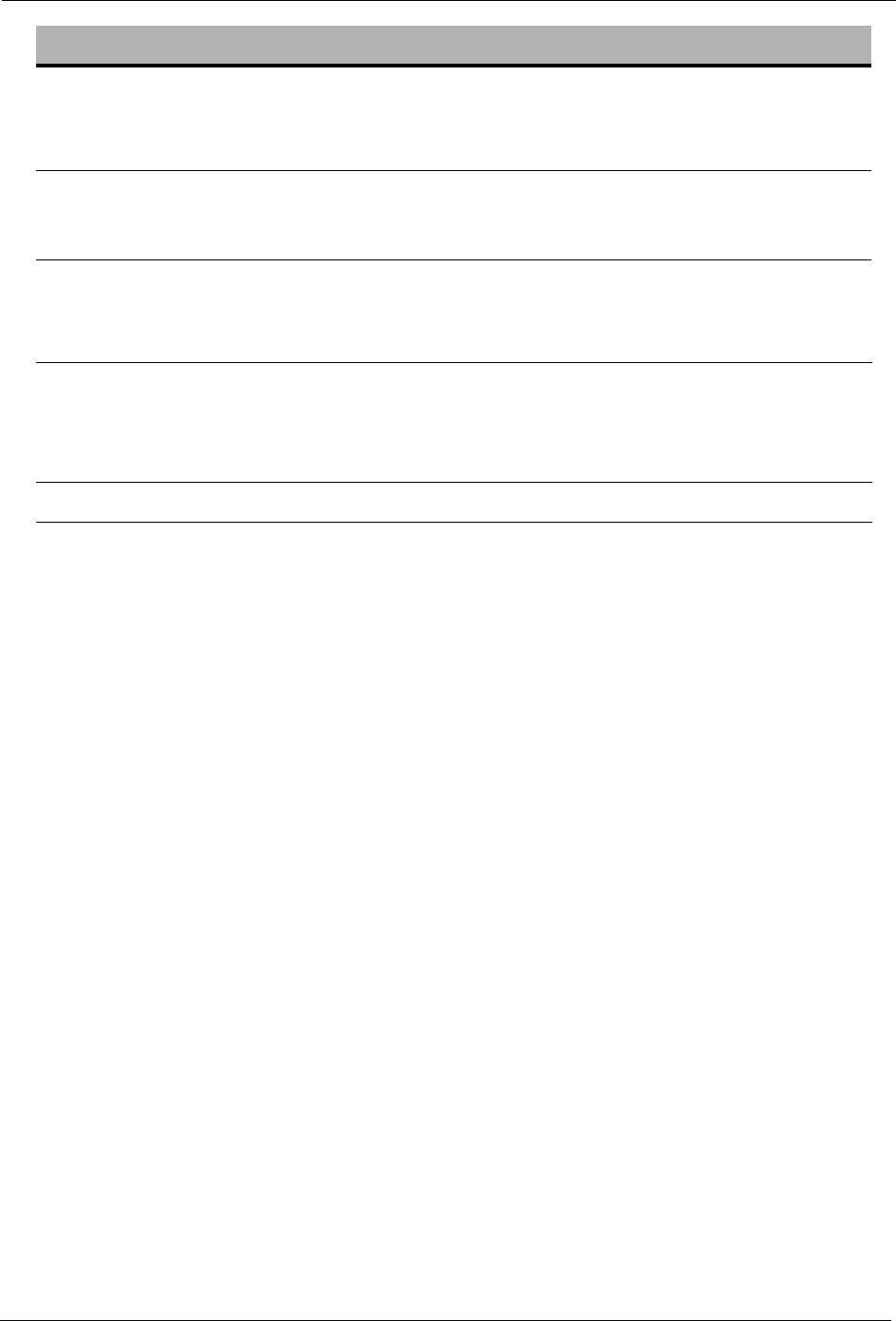
ARTIS Operator’s Manual
Cod. 6992200 - Rev. / 15-130
T1 TEST CONDUCTIVITY CELL FAILED 445
Reason
for Alarm The T1 test performed by the machine on the Conductivity cells has failed.
Machine
Actions • None.
• If the alarm condition persists after the preparation phase, it will not be
possible to start the treatment.
Possible Cause Suggested Action
1. The T1 test Conductivity failed. 1. Press the CONFIRM button and wait
the machine to perform another
Conductivity test.
If the alarm persists, call for service.
Call for Service if the alarm persists.
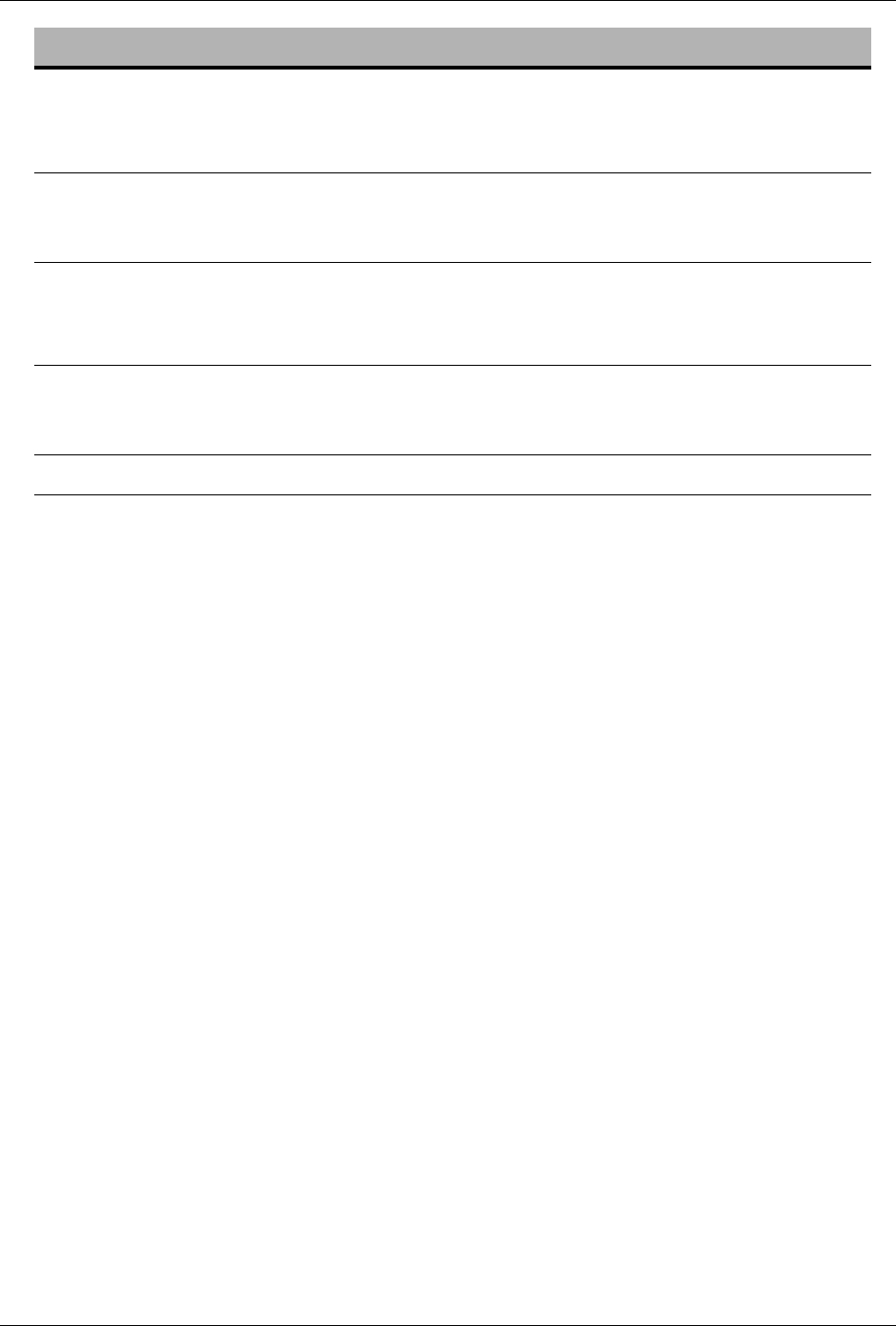
Chapter 15: Alarms and Troubleshooting
15-131 Cod. 6992200 - Rev. /
T1 TEST VENOUS PRESSURE 446
Reason
for Alarm The T1 test performed by the machine on the Venous pressure has failed.
Machine
Actions • None.
• If the alarm condition persists after the preparation phase, it will not be
possible to start the treatment.
Possible Cause Suggested Action
1. The T1 test Venous pressure failed. 1. Press the CONFIRM button and
perform unload/load cassette for a new
Venous pressure test.
Call for Service if the alarm persists.
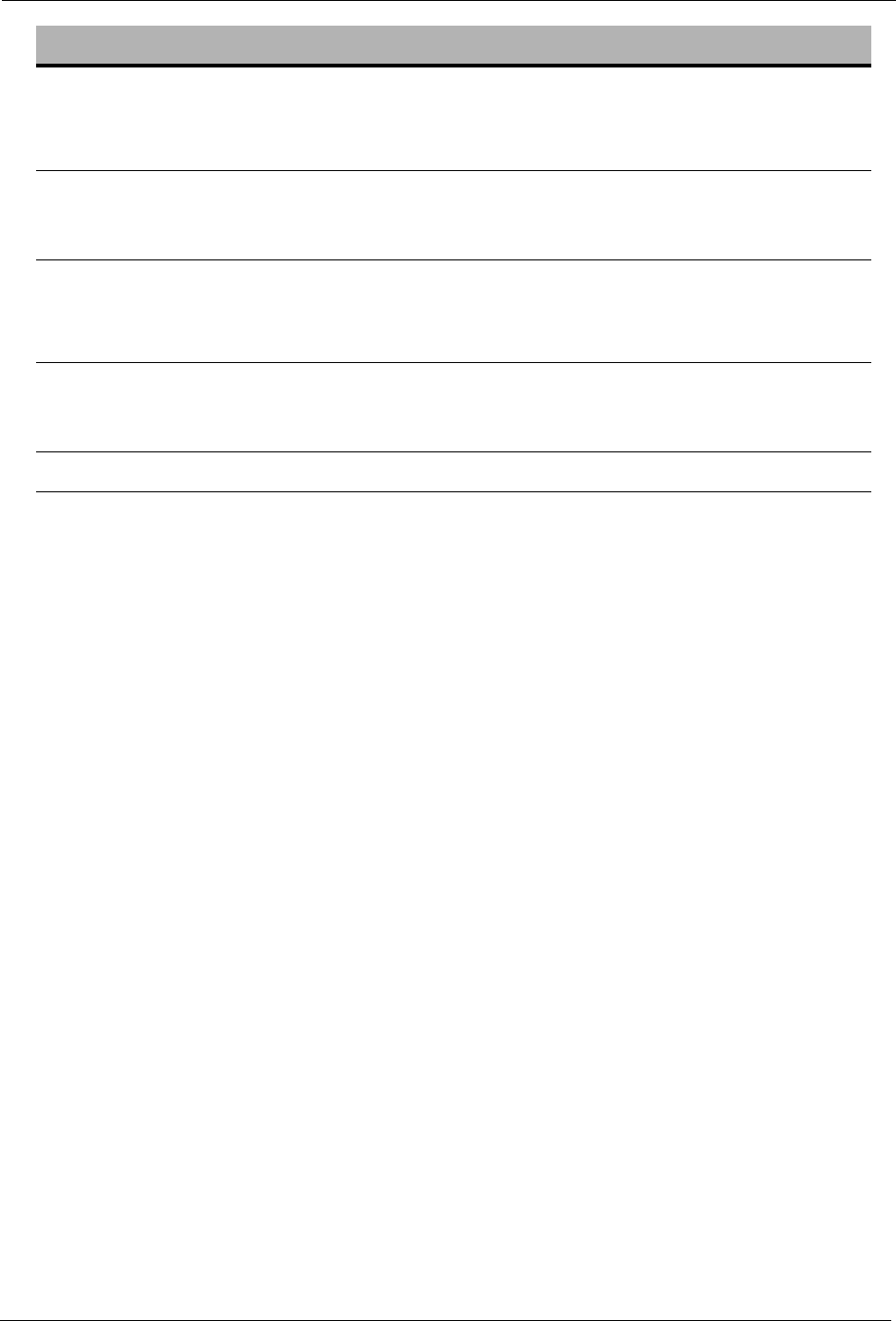
ARTIS Operator’s Manual
Cod. 6992200 - Rev. / 15-132
T1 TEST ARTERIAL PRESSURE 447
Reason
for Alarm The T1 test performed by the machine on the Arterial pressure has failed.
Machine
Actions • None.
• If the alarm condition persists after the preparation phase, it will not be
possible to start the treatment.
Possible Cause Suggested Action
1. The T1 test Arterial pressure failed. 1. Press the CONFIRM button and
perform unload/load cassette for a new
Arterial pressure test.
Call for Service if the alarm persists.

Chapter 15: Alarms and Troubleshooting
15-133 Cod. 6992200 - Rev. /
COMMUNICATION PROTECTIVE COND. CELL STOPPED 449
Reason
for Alarm The communication between the Protective System and the conductivity
cell Γp has failed.
Machine
Actions • None.
Possible Cause Suggested Action
1. Temporary problem. 1. Press the CONFIRM button to remove
the alarm.
If the problem persists, disconnect the
patient.
Call for Service if the alarm persists.
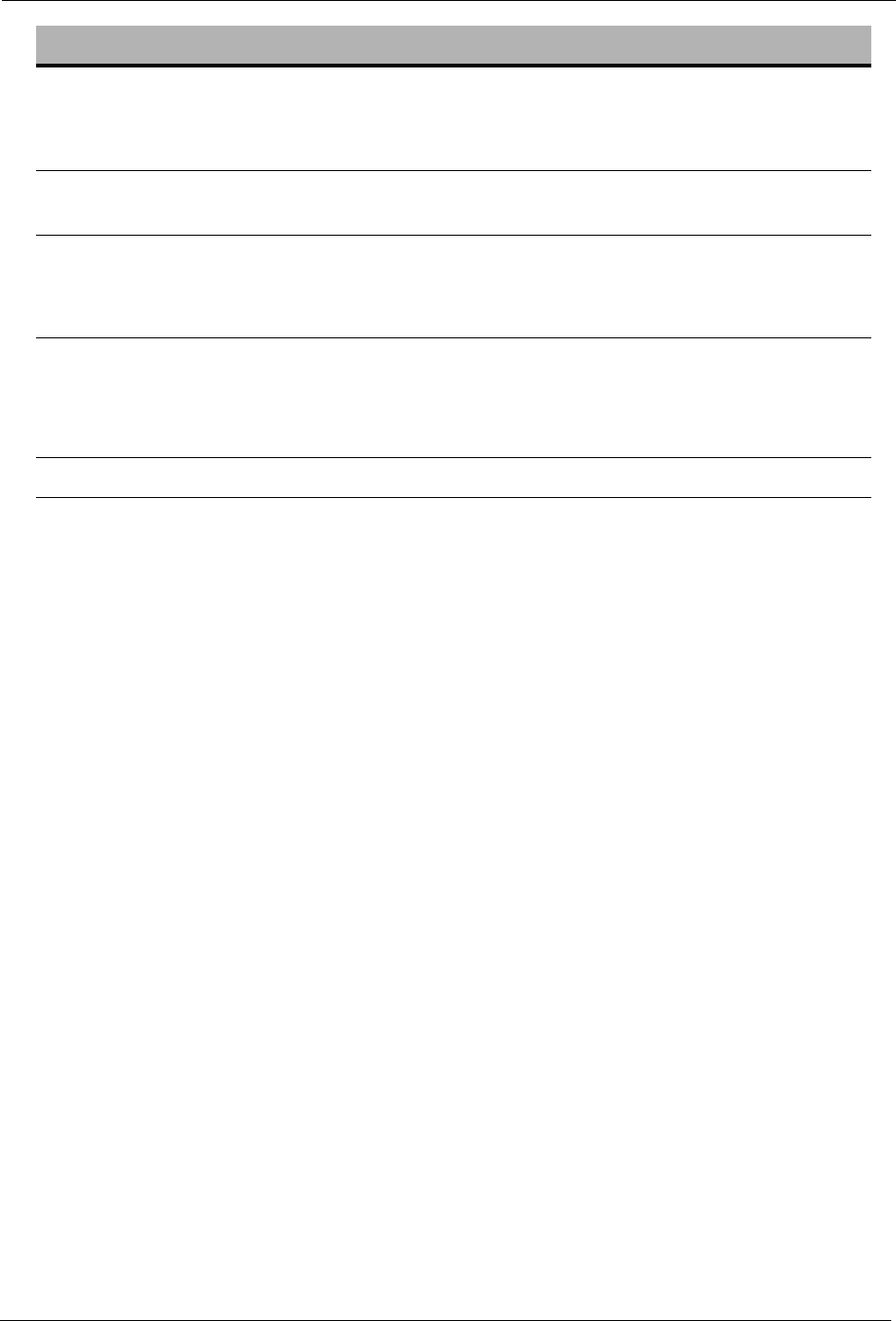
ARTIS Operator’s Manual
Cod. 6992200 - Rev. / 15-134
COMMUNICATION SELECT COND. CELL STOPPED 450
Reason
for Alarm The communication between the Protective System and the conductivity
cell GcP has failed.
Machine
Actions • None.
Possible Cause Suggested Action
1. Temporary problem. 1. Press the CONFIRM button to remove
the alarm.
If the problem persists, disconnect the
patient.
Call for Service if the alarm persists.

Chapter 15: Alarms and Troubleshooting
15-135 Cod. 6992200 - Rev. /
PDR PRESSURE HIGH 452
Reason
for Alarm The pressure of the dialysis fluid that is going to the drain, measured by the
PD pressure sensor, is higher than the permitted value.
Machine
Actions • The phase currently running stops;
• All the pumps are stopped;
• The dialysis fluid goes into Bypass.
Possible Cause Suggested Action
1. Temporary problem. 1. Press the CONFIRM button to remove
the alarm.
Call for Service if the alarm persists.
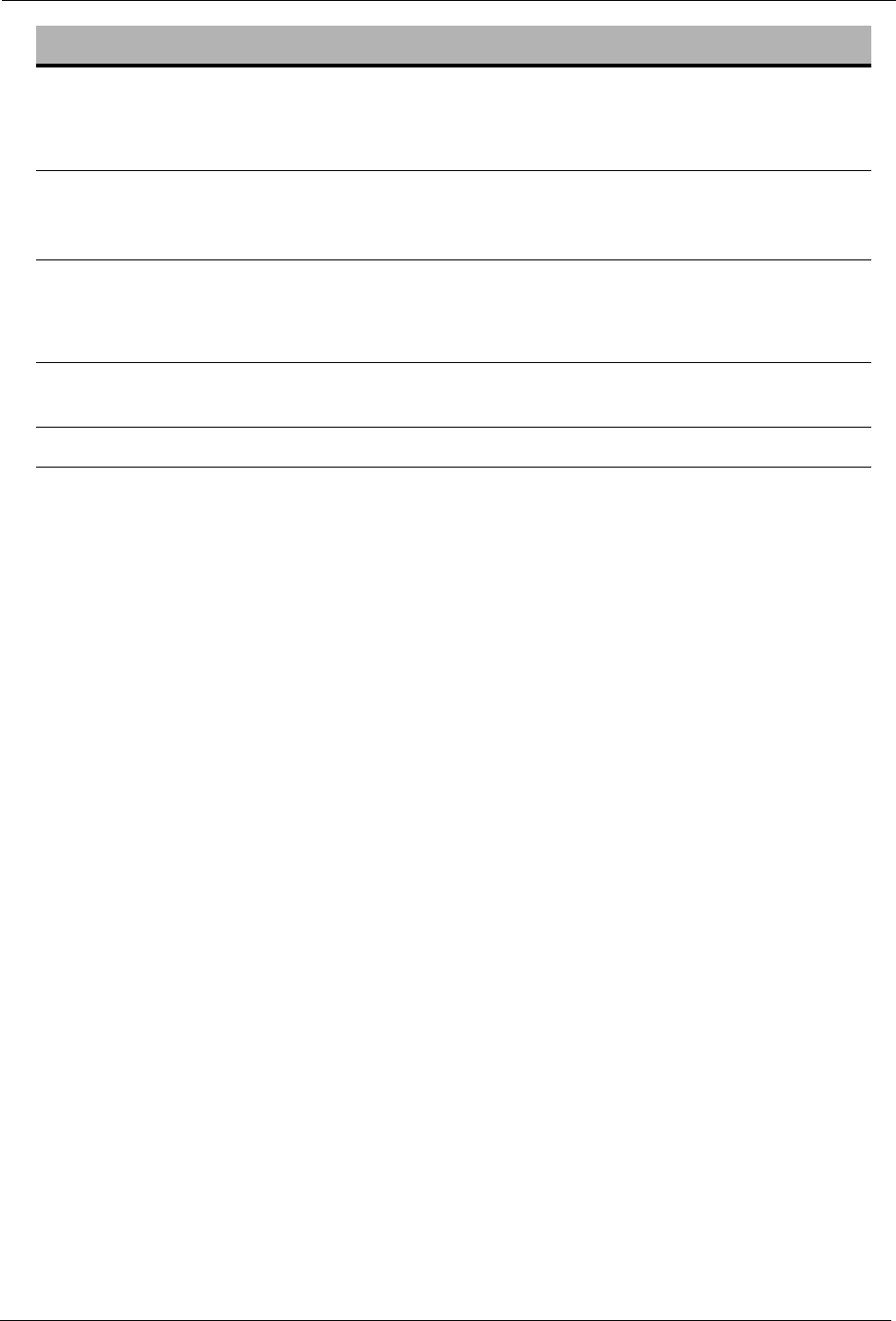
ARTIS Operator’s Manual
Cod. 6992200 - Rev. / 15-136
PDR PRESSURE LOW 453
Reason
for Alarm The pressure of the dialysis fluid that is going to the drain, measured by the
PD pressure sensor, is lower than the permitted value.
Machine
Actions • The phase currently running stops;
• All the pumps are stopped;
• The dialysis fluid goes into Bypass.
Possible Cause Suggested Action
1. Temporary problem. 1. Press the CONFIRM button to remove
the alarm.
Call for Service if the alarm persists.

Chapter 15: Alarms and Troubleshooting
15-137 Cod. 6992200 - Rev. /
INSERT THE HEMOSCAN CUVETTE 454
Reason
for Alarm The Hemoscan Cuvette is not inserted into the Sensor Bar door.
Machine
Actions • The appearance of the Auto-Prime Action button has been delayed.
• None.
Possible Cause Suggested Action
1. The cassette is loaded and the cover is
open and/or the cuvette is not present. 1. Insert the Arterial Patient Line with the
Hemoscan cuvette into the Sensor Bar.
Firmly close the Sensor Bar door.
Call for Service if the alarm persists.

ARTIS Operator’s Manual
Cod. 6992200 - Rev. / 15-138
ARTERIAL PRESSURE HIGH 457
Reason
for Alarm The measured arterial pressure is above the maximum arterial treatment
limit.
Machine
Actions • The Arterial and the Venous Pumps are stopped;
• The Venous Line Clamp is closed;
• The UF Rate is automatically set to zero;
• The alarm limits are opened for both arterial and venous pressure.
Possible Cause Suggested Action
1. The Arterial Patient Line may have
become disconnected from the patient. 1. Carefully check the Cassette
connections and the Patient’s Vascular
Access.
When the pressure stabilizes, select the
alarm in the Alarm Area and press the
CONFIRM button to restart the blood
pump.
2. The Arterial Pump speed is too low. 2. Consider increasing the blood flow if
this operation is not in disagreement
with the patient prescription.
When the pressure stabilizes, select the
alarm in the Alarm Area and press the
CONFIRM button to restart the blood
pump.
Call for Service if the alarm persists.

Chapter 15: Alarms and Troubleshooting
15-139 Cod. 6992200 - Rev. /
VENOUS PRESSURE BELOW TREATMENT MIN. LIMIT 459
Reason
for Alarm The measured venous pressure is below the minimum venous treatment
limit.
Machine
Actions • The Arterial and the Venous Pumps are stopped;
• The Venous Line Clamp is closed;
• The UF Rate is automatically set to zero (typical value 100 ml/h);
• The alarm limits are opened for both arterial and venous pressure.
Possible Cause Suggested Action
1. Restriction of blood flow to the Patient’s
Vascular Access or in the Venous
Patient Line.
1. Carefully check the Blood Cassette
connections and assess the Patient’s
Vascular Access.
Check for restrictions, such as:
• kinks in the Venous Patient Line;
• closed clamps;
• clotted venous needle.
If necessary decrease the blood flow
per clinical policy.
When the pressure stabilizes, select the
alarm in the Alarm Area and press the
CONFIRM button to restart the blood
pump.
2. The venous pressure has decreased
somewhat during a treatment due to
hemoconcentration and/or inadequate
heparin delivery to the patient, resulting
in a pressure decrease for a given
needle at a fixed blood flow rate.
2. Attention should be given to the
revaluation of the needle size, the blood
flow rate and the heparin dosage;
When the pressure stabilizes, select the
alarm in the Alarm Area and press the
CONFIRM button to restart the blood
pump.
Call for Service if the alarm persists.
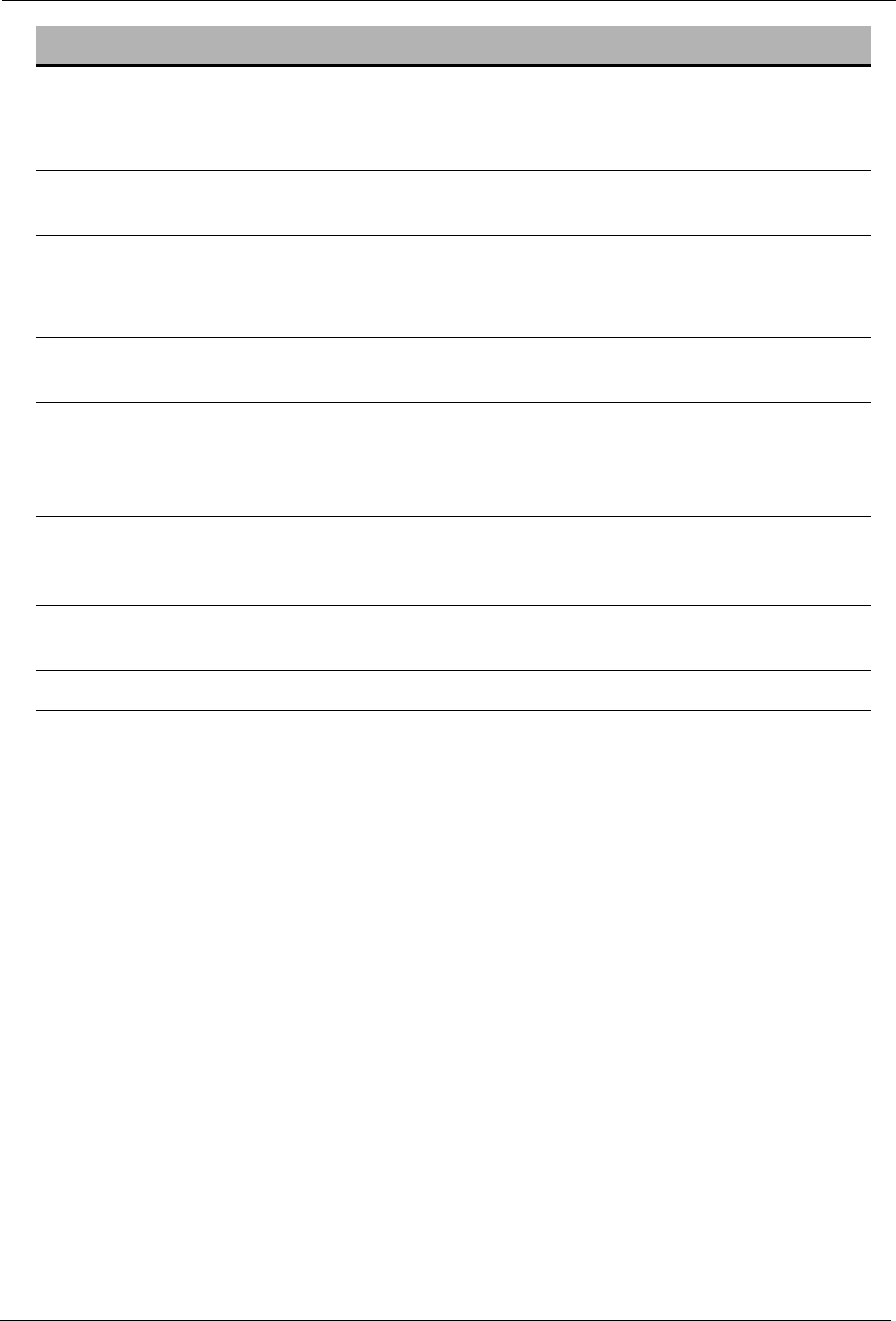
ARTIS Operator’s Manual
Cod. 6992200 - Rev. / 15-140
DIALYSIS FLUID TEMP TOO HIGH 460
Reason
for Alarm The temperature of the dialysis fluid measured by the ΓP conductivity cell
is greater than 41°C.
Machine
Actions • The dialysis fluid goes into Bypass;
• The Venous Pump is stopped.
Possible Cause Suggested Action
1. A temporary instability of dialysis fluid
flow. 1. Wait for stability of the system.
2. The temperature of the dialysis fluid
has exceeded the safe limits. 2. Check the incoming water temperature
(Refer to the "Chapter 16:
Specifications" in this Operator’s
Manual).
3. The machine has recently been turned
on and has not yet reached the
operating temperature.
3. If the machine temperature remains
high or low for more than 10 minutes,
discontinue the DIALYSIS.
4. The machine has an internal
malfunction. 4. Discontinue the DIALYSIS.
Call for Service if the alarm persists.

Chapter 15: Alarms and Troubleshooting
15-141 Cod. 6992200 - Rev. /
DIALYSIS FLUID TEMP TOO LOW 461
Reason
for Alarm The temperature of the dialysis fluid measured by the ΓP conductivity cell
is lower than 32°C
Machine
Actions • The dialysis fluid goes into Bypass;
• The Venous Pump is stopped.
Possible Cause Suggested Action
1. There are deposits or debris inside the
flowmeters of the machine. 1. Perform a Chemical Disinfection.
Call for Service if the alarm persists.
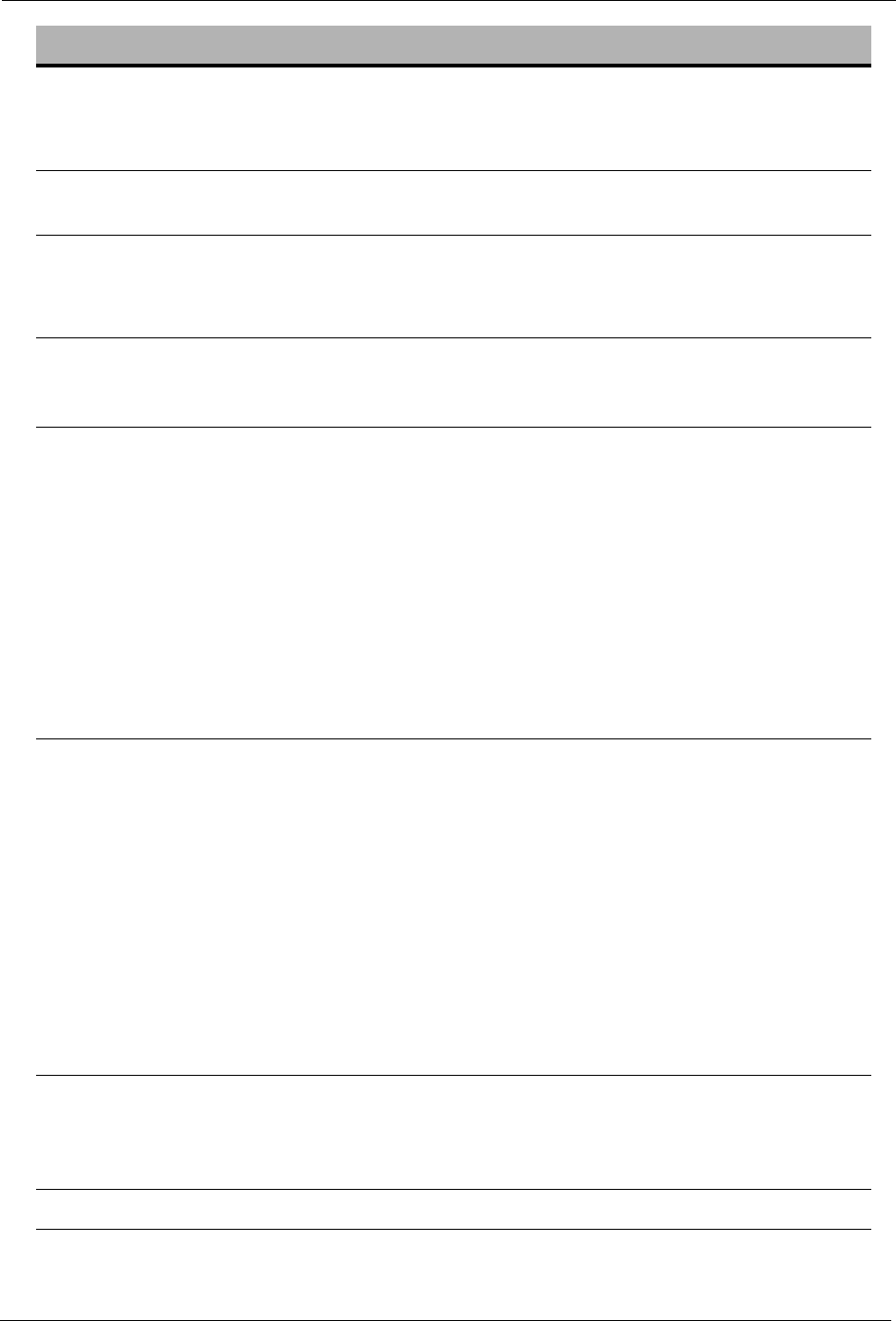
ARTIS Operator’s Manual
Cod. 6992200 - Rev. / 15-142
CONDUCTIVITY TOO LOW 462
Reason
for Alarm The measured conductivity is below the desired set point.
Machine
Actions • The dialysis fluid goes into Bypass;
• The Venous Pump is stopped.
Possible Cause Suggested Action
1. Inappropriate solution in the Acid
Concentrate Canister. 1. Verify that concentrates are being used
and are of the appropriate formulation
for the selected treatment type.
2. Massive air leak from Concentrate
Canisters/Connectors/Tubes or the
Connectors are not securely connected
to their Canisters/Ports or the
Canisters/Connectors have
accumulated debris or salt crystals.
2. If the alarm persists:
• verify that Concentrate Canisters,
Connectors and Tubes are free of
leaks/holes and debris;
• verify that the Connectors are securely
connected to the appropriate
Canisters/Ports;
• If necessary, rinse the accumulated
debris from the Canister(s)/
Connector(s);
• massive air leaks affect the
conductivity readings.
3. Inadequate Concentrates are being
used. 3. If using dialysis fluid concentrate
solutions, replace the concentrates as
needed, then wait a few seconds for the
machine to stabilize. If using solutions
other than concentrates during the
dialysis fluid preparation:
• stop the dialysis fluid preparation;
• replace the Blood Cassette and the
dialyzer;
• run a complete ADR: RINSE
procedure;
• replace the solutions;
• re-start the dialysis fluid preparation.
4. The Acid or Bicarbonate pick-up tube
connector is not properly positioned
into the Central Concentrate port.
4. Verify that the Acid or Bicarbonate pick-
up tube connector is properly
positioned into the Central Concentrate
port on the front panel.
Call for Service if the alarm persists.
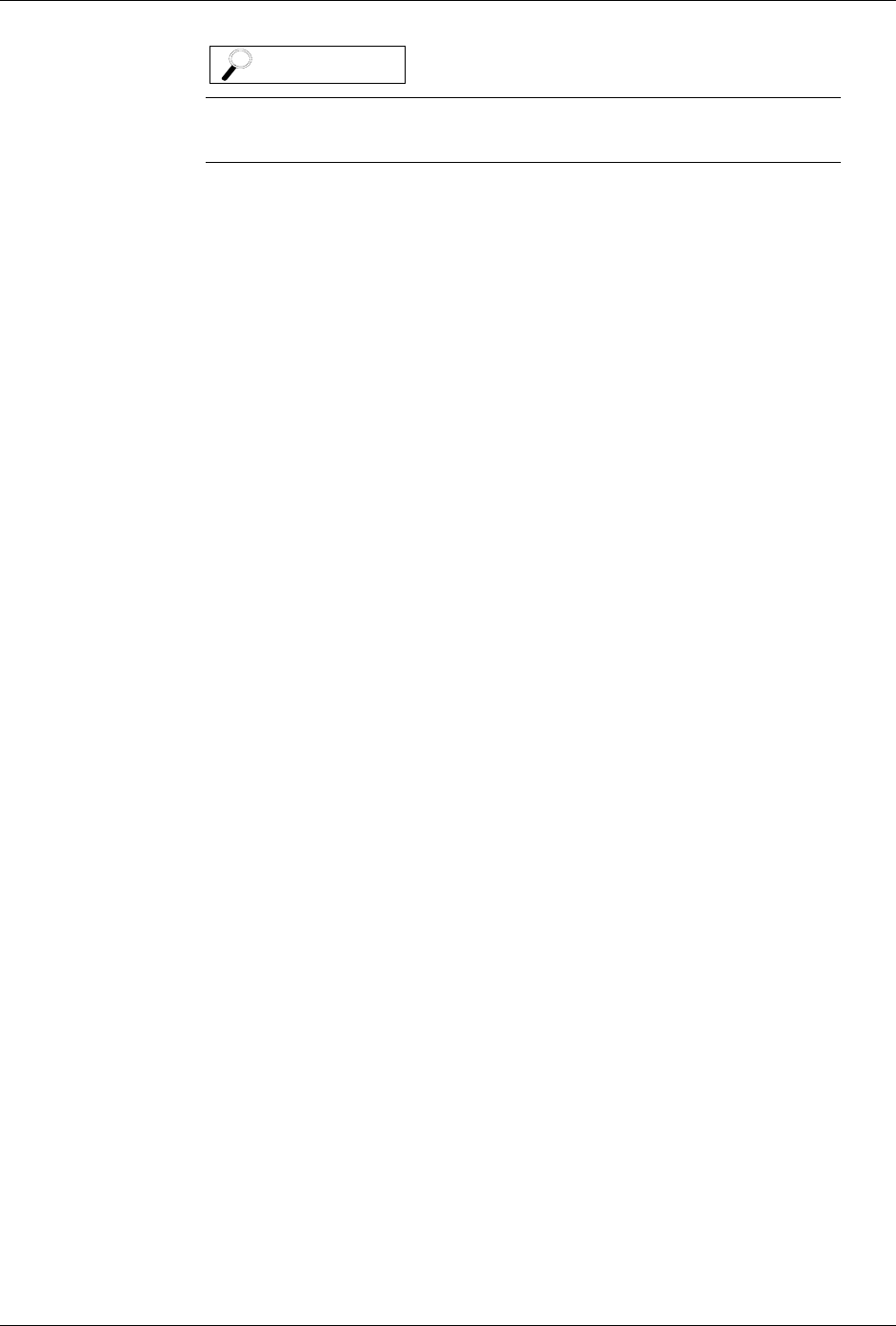
Chapter 15: Alarms and Troubleshooting
15-143 Cod. 6992200 - Rev. /
The use of liquid Bicarbonate concentrate is not currently
available.
NOTE
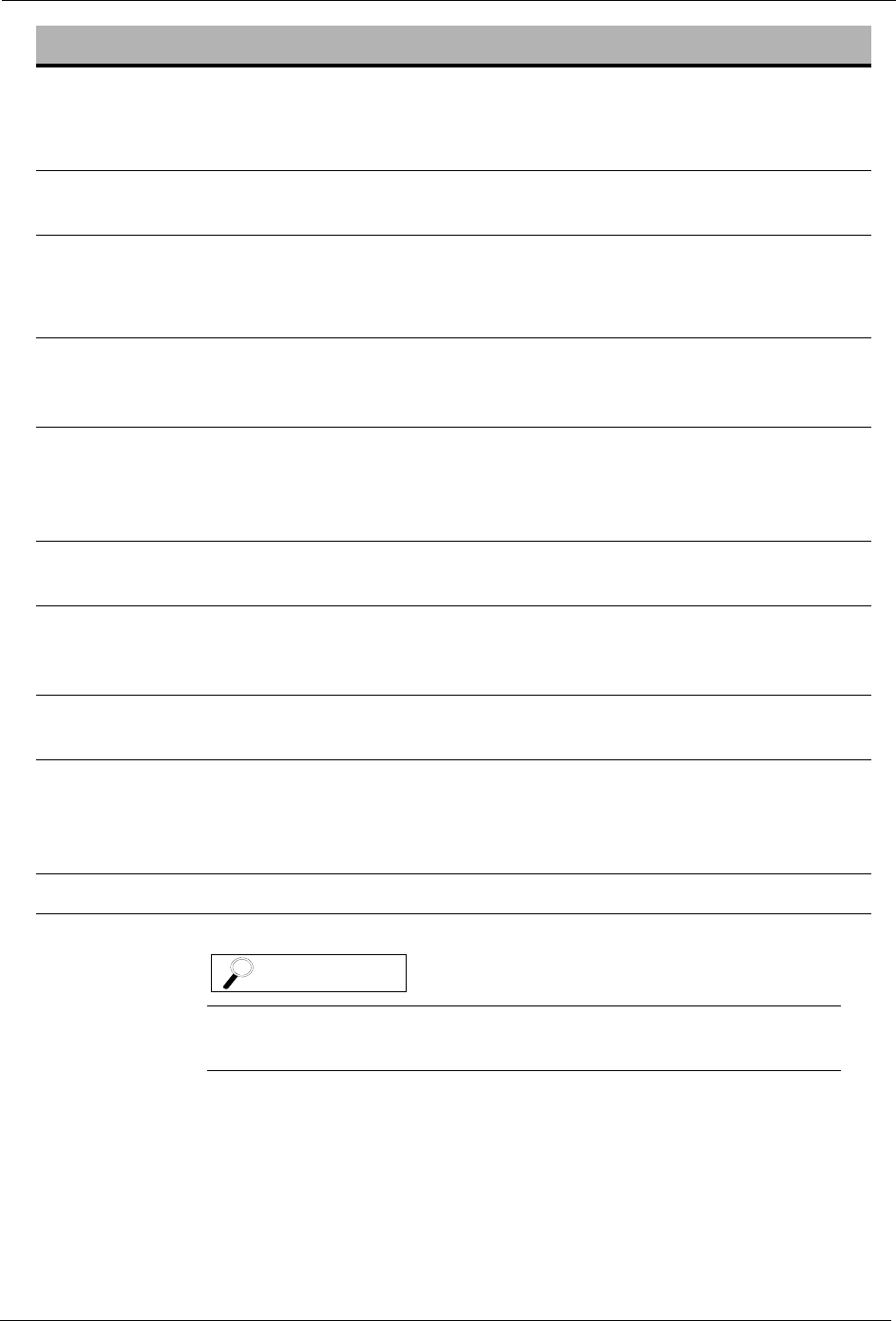
ARTIS Operator’s Manual
Cod. 6992200 - Rev. / 15-144
CONDUCTIVITY TOO HIGH 463
Reason
for Alarm The measured conductivity is above the desired set point.
Machine
Actions • The dialysis fluid goes into Bypass;
• The Venous Pump is stopped.
Possible Cause Suggested Action
1. The Acid or Bicarbonate Concentrate
canister is empty. 1. Supply appropriate concentrate to the
relevant inlet connector. Wait for
stability of the dialysis fluid flow.
2. The Acid or Bicarbonate pick-up tube
connector(s) are not properly
positioned to the concentrate
Canister(s).
2. Verify the connector(s) are properly
positioned to the proper Canister(s).
Wait for stability of the dialysis fluid
flow.
3. Massive air leak from the concentrate
canister. 3. Replace the concentrate canister. Wait
for stability of the dialysis fluid flow.
4. The Acid or Bicarbonate pick-up tube
connector(s) has accumulated debris or
salt crystals.
4. Rinse the accumulated debris from the
connector(s).
5. Inappropriate solution in the Acid
concentrate canister. 5. Verify that appropriate concentrate has
been used.
6. When using central delivery acid, the
Acid or Bicarbonate pick-up tube
connector is not securely connected
into its concentrate connector port.
6. Verify that the Acid or Bicarbonate pick-
up tube connector is properly
positioned in its concentrate connector
port.
Call for Service if the alarm persists.
The use of liquid Bicarbonate concentrate is not currently
available.
NOTE
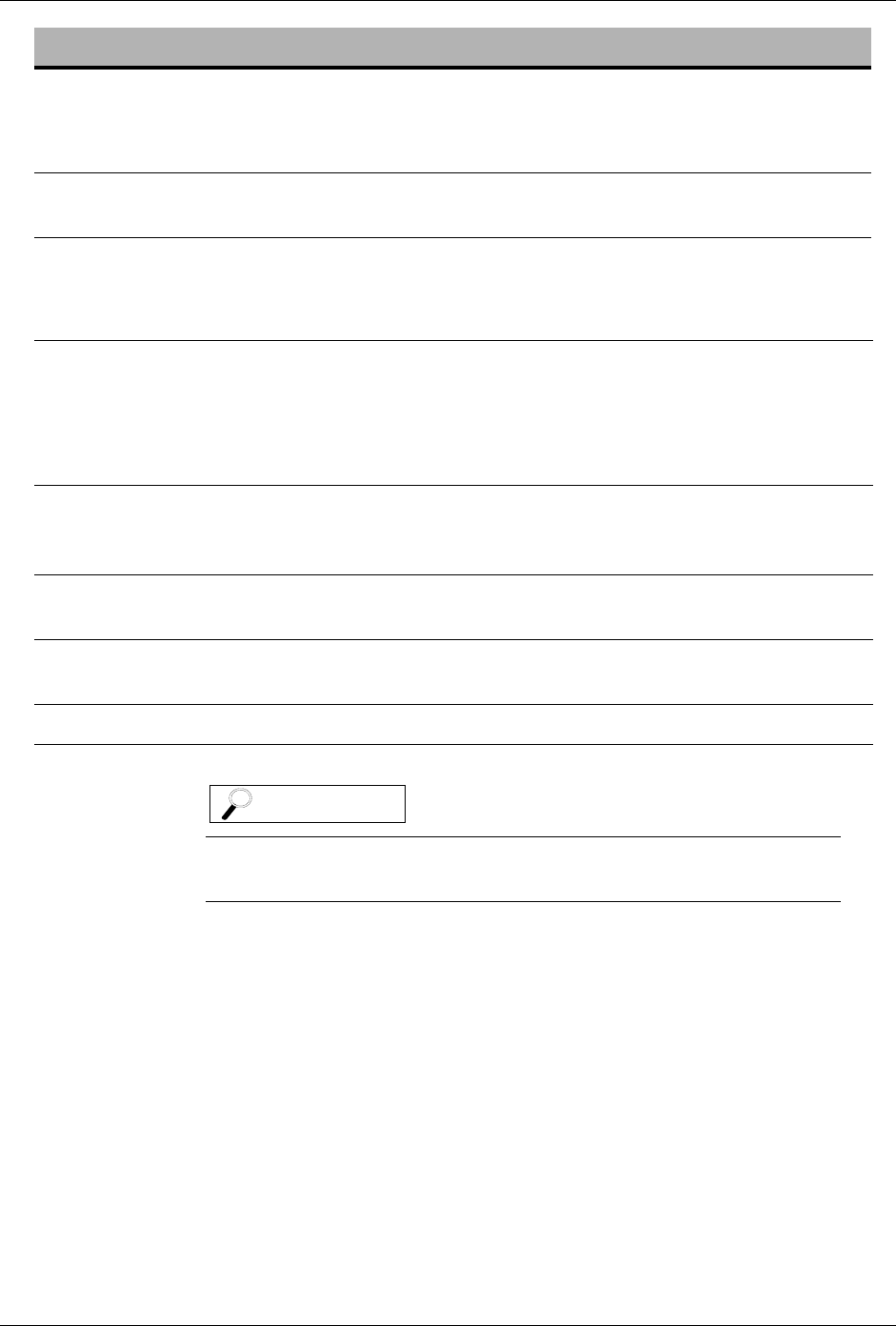
Chapter 15: Alarms and Troubleshooting
15-145 Cod. 6992200 - Rev. /
INCORRECT BICARBONATE CONCENTRATION 464
Reason
for Alarm The conductivity of the solution after the mixing of the bicarbonate and the
select bag is below the setpoint fixed by the operator.
Machine
Actions • The dialysis fluid goes into Bypass;
• The Venous Pump is stopped.
Possible Cause Suggested Action
1. The Bicarbonate Concentrate Canister
or BiCart are almost empty. 1. Verify adequate levels of concentrates.
If BiCart, replace as described in the
related section of the "Chapter 7:
Special Procedures", in this Operator’s
Manual.
2. The Bicarbonate pick-up tube connector
is not well fitted to the Concentrate
Canister.
2. Verify the Bicarbonate pick-up tube
connector is well fitted to the proper
Canister.
3. Massive air leak from the Bicarbonate
Concentrate Canister. 3. Replace the Bicarbonate Concentrate
Canister.
4. The BiCart is not well positioned into its
holder. 4. Ensure the BiCart is securely placed
into its holder.
Call for Service if the alarm persists.
The use of liquid Bicarbonate concentrate is not currently
available.
NOTE

ARTIS Operator’s Manual
Cod. 6992200 - Rev. / 15-146
INCORRECT BICARBONATE CONCENTRATION 465
Reason
for Alarm The conductivity of the solution after the mixing of bicarbonate and select
bag is above the setpoint fixed by the operator.
Machine
Actions • The dialysis fluid goes into Bypass;
• The Venous Pump is stopped.
Possible Cause Suggested Action
1. The Bicarbonate pick-up tube
connector is not well fitted to the
Concentrate Canister.
1. Verify the Bicarbonate pick-up tube
connector is well fitted to the proper
Canister.
2. Massive air leak from the Bicarbonate
Concentrate Canister. 2. Replace the Bicarbonate Concentrate
Canister.
3. The BiCart is not well positioned into its
holder. 3. Ensure the BiCart is securely placed
into its holder.
Call for Service if the alarm persists.
The use of liquid Bicarbonate concentrate is not currently
available.
NOTE

Chapter 15: Alarms and Troubleshooting
15-147 Cod. 6992200 - Rev. /
LEAKAGES TEST (A) FAILURE 467
Reason
for Alarm Failure of the leakages test on the PO, PFS, PD pressure sensors:
pressure sensor out of calibration.
Machine
Actions • The phase currently running stops;
• All the pumps are stopped.
Possible Cause Suggested Action
1. The Red and Blue Dialysis Fluid Tubes
are not properly connected. 1. Verify that the Red and Blue Dialysis
Fluid Tubes are properly connected.
Press the CONFIRM button to repeat
the current leakages test.
Call for Service if the alarm persists.
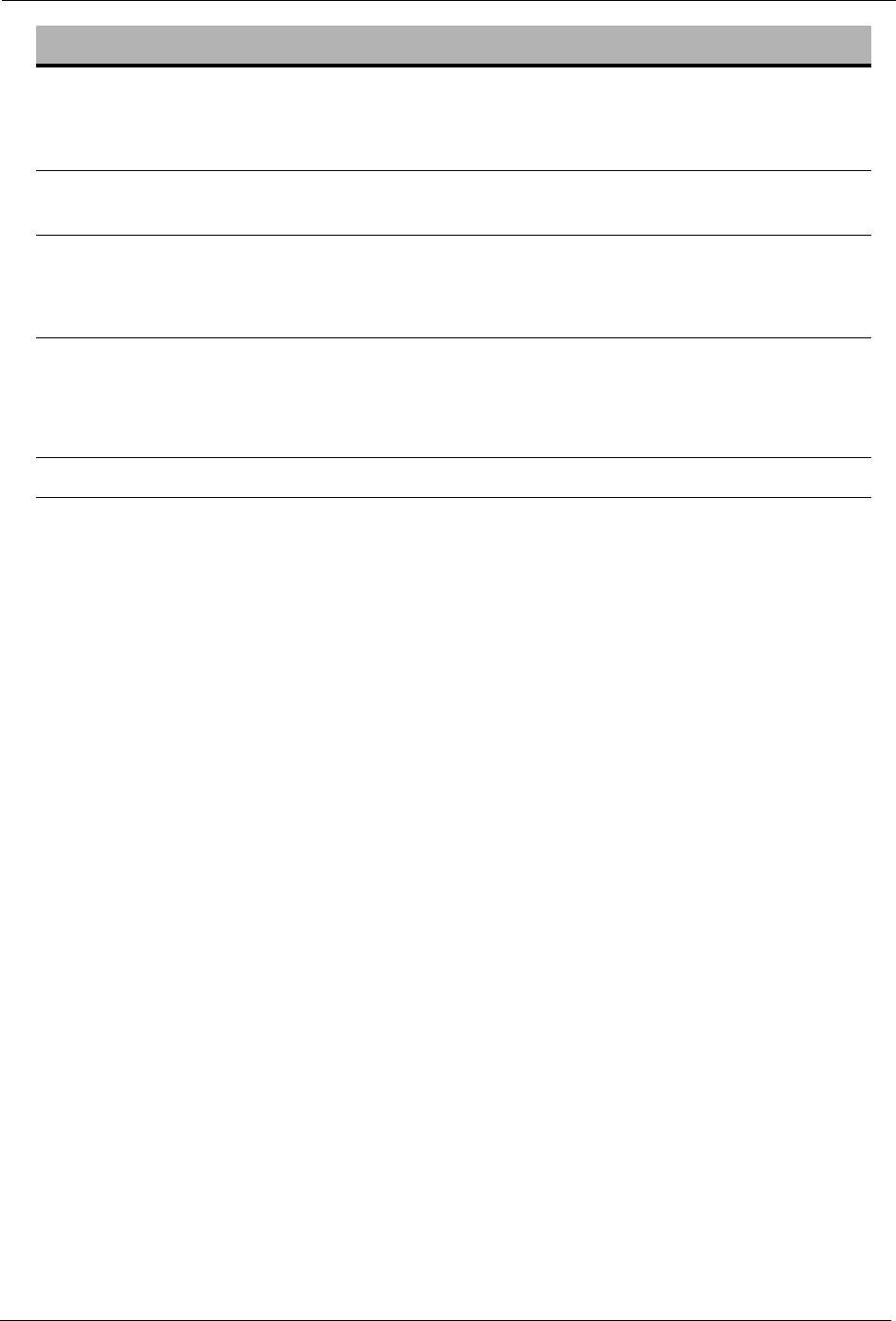
ARTIS Operator’s Manual
Cod. 6992200 - Rev. / 15-148
LEAKAGES TEST (B) FAILURE 468
Reason
for Alarm Failure of the leakages test on the R1 pressure regulator: pressure
regulator out of calibration.
Machine
Actions • The phase currently running stops;
• All the pumps are stopped.
Possible Cause Suggested Action
1. The Red and Blue Dialysis Fluid Tubes
are not properly connected. 1. Verify that the Red and Blue Dialysis
Fluid Tubes are properly connected.
Press the CONFIRM button to repeat
the current leakages test.
Call for Service if the alarm persists.

Chapter 15: Alarms and Troubleshooting
15-149 Cod. 6992200 - Rev. /
LEAKAGES TEST (C) FAILURE 469
Reason
for Alarm Failure of the leakages test on the PDrain, PFS or PO pressure sensors:
pressure failure.
Machine
Actions • The phase currently running stops;
• All the pumps are stopped.
Possible Cause Suggested Action
1. The Red and Blue Dialysis Fluid Tubes
are not properly connected. 1. Verify that the Red and Blue Dialysis
Fluid Tubes are properly connected.
Press the CONFIRM button to repeat
the current leakages test.
Call for Service if the alarm persists.
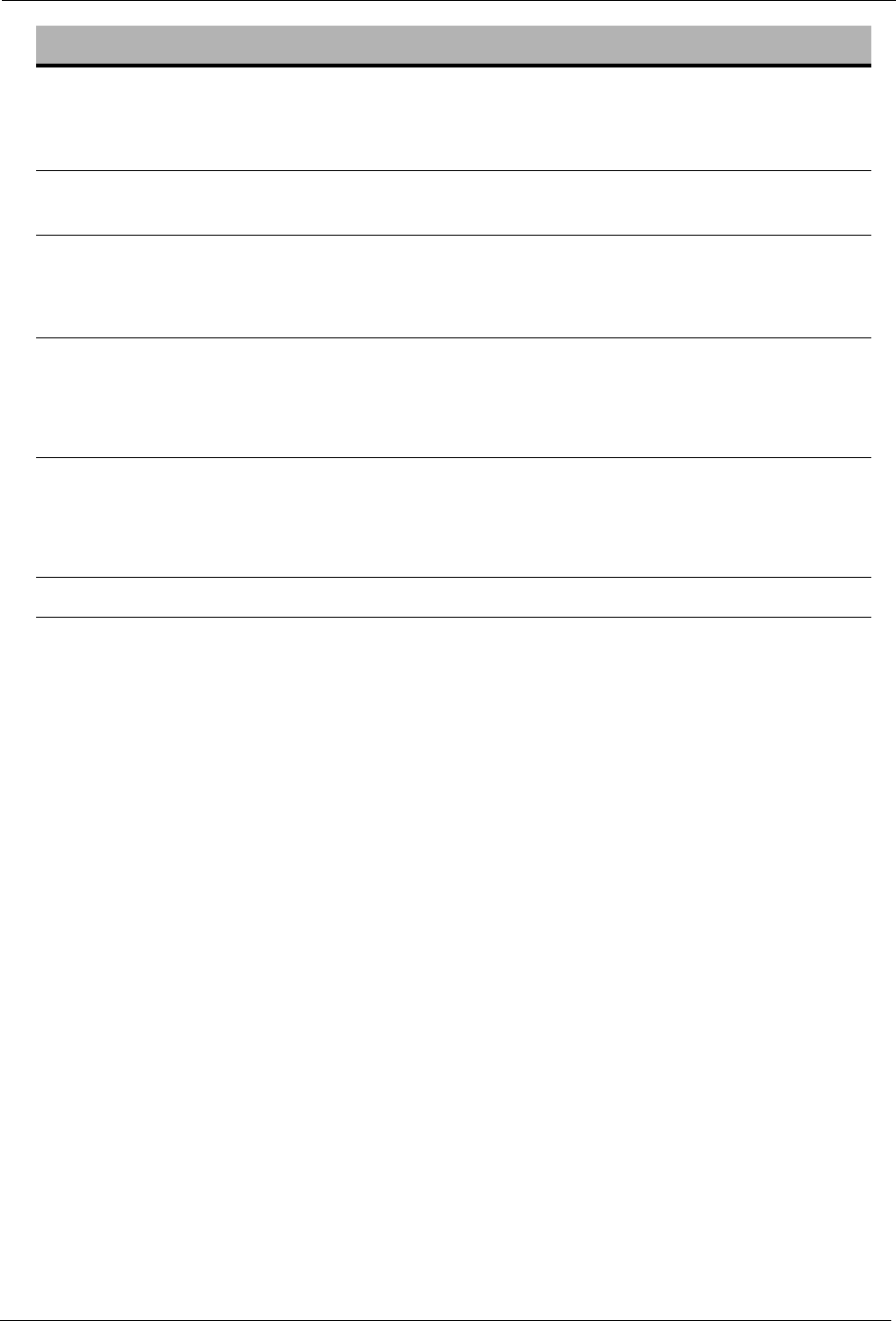
ARTIS Operator’s Manual
Cod. 6992200 - Rev. / 15-150
LEAKAGES TEST (D) FAILURE 470
Reason
for Alarm Failure of the leakages test on the PO, PFS and PD pressure sensors:
negative calibration of pressure sensor.
Machine
Actions • The phase currently running stops;
• All the pumps are stopped.
Possible Cause Suggested Action
1. The Red and Blue Dialysis Fluid Tubes
are not properly connected. 1. Verify that the Red and Blue Dialysis
Fluid Tubes are properly connected.
Press the CONFIRM button to repeat
the current leakages test.
2. The Venous and Arterial Patient Lines
are not properly connected to the
EvaClean port.
2. Verify that the Venous and Arterial
Patient Lines are properly connected.
Press the CONFIRM button to repeat
the current leakage test.
Call for Service if the alarm persists.

Chapter 15: Alarms and Troubleshooting
15-151 Cod. 6992200 - Rev. /
VENOUS PRESSURE NOT DECREASING 472
Reason
for Alarm In Single Needle Single Pump mode, during the venous phase the venous
pressure is not decreasing as expected.
Machine
Actions • None.
Possible Cause Suggested Action
1. The venous pressure is not decreasing
as expected. 1. Check if the Blood Cassette is properly
loaded on the Cassette holder and if it
is properly connected to the venous
pressure pod.
Press the CONFIRM button to remove
the alarm.
2. The Venous/Arterial Patient Line could
be kinked, clamped, restricted or have
some leakages.
2. Check the Venous/Arterial Patient line
and the Patient’s Vascular Access for
kinks, clamps or other restrictions.
Press the CONFIRM button to remove
the alarm.
Call for Service if the alarm persists.
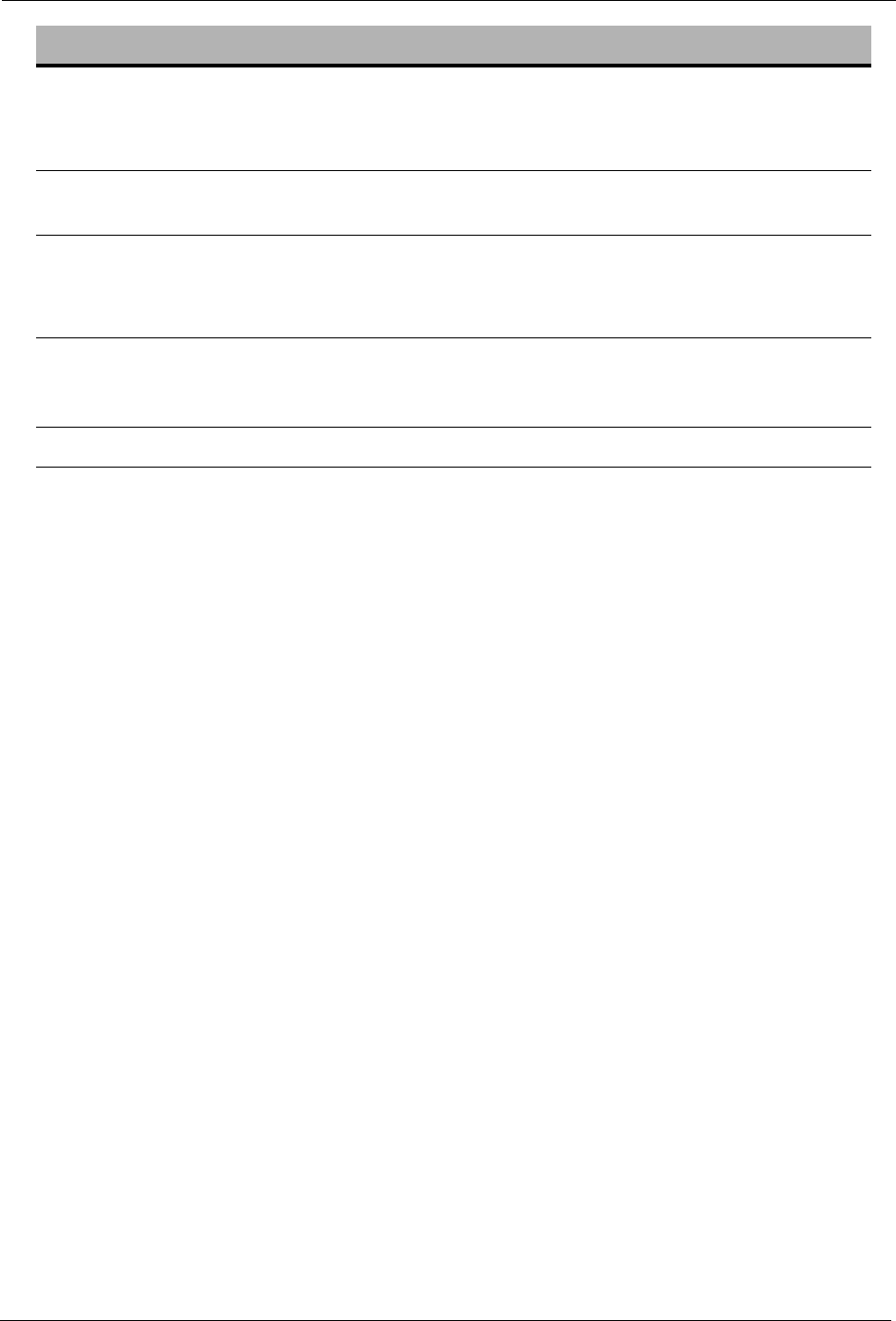
ARTIS Operator’s Manual
Cod. 6992200 - Rev. / 15-152
HEMOSCAN AUTOCALIBRATION FAILURE 473
Reason
for Alarm Failure of the Hemoscan Autocalibration.
Machine
Actions • None.
Possible Cause Suggested Action
1. Problem in the calculated coefficients in
the autocalibration process of the
Hemoscan.
1. Deactivate the Hemoscan.
Call for Service if the alarm persists.
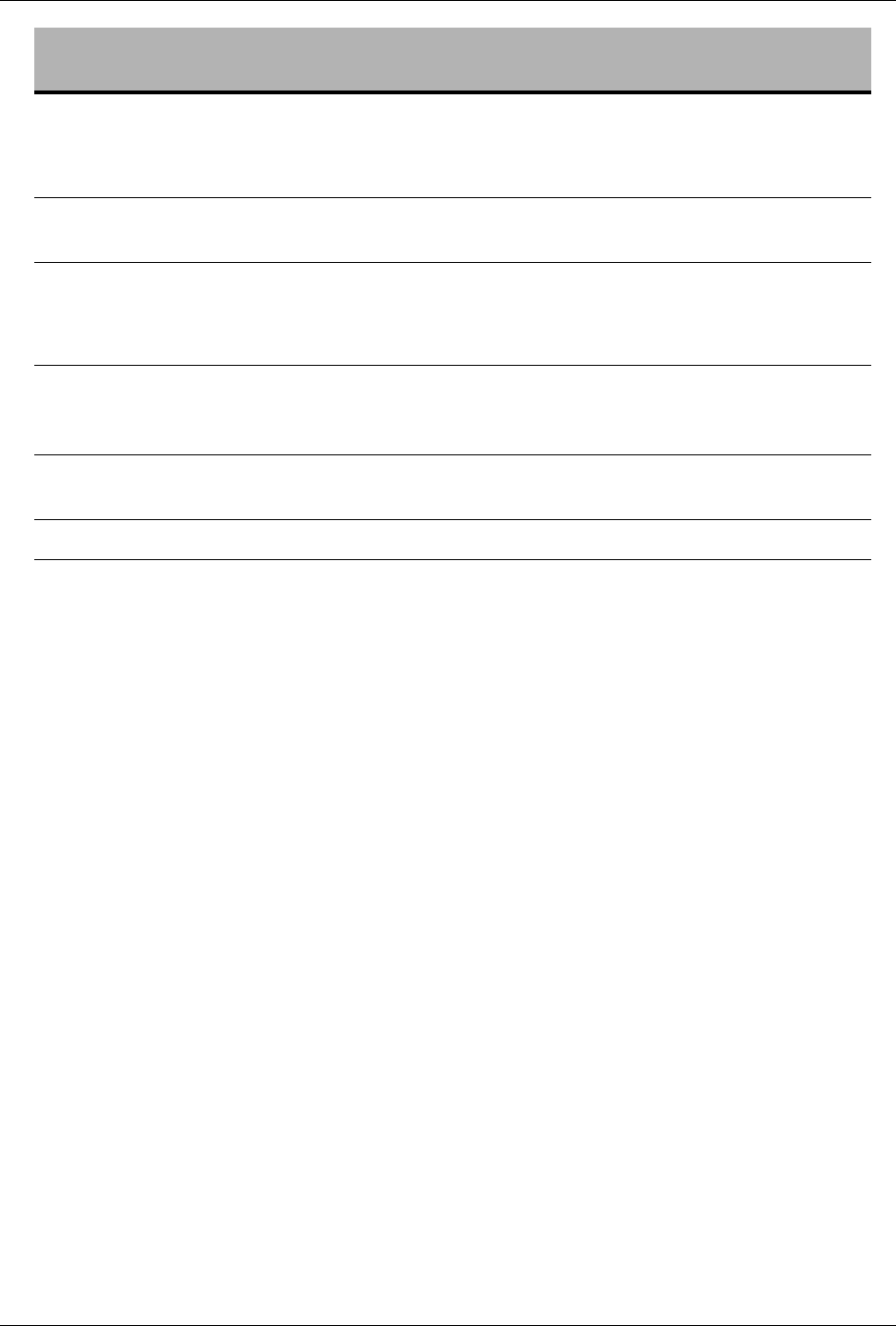
Chapter 15: Alarms and Troubleshooting
15-153 Cod. 6992200 - Rev. /
PREPARATION NOT COMPLETED - INCORRECT CONDITION ON D1 FLOW RATE
474
Reason
for Alarm During preparation, the flow of the D1Control Flowmeter is not stable.
Machine
Actions • None.
Possible Cause Suggested Action
1. Massive air in the hydraulic circuit. 1. Check that all the connectors are
inserted in the machine. Then press the
CONFIRM button.
2. Probable tubing popping upstream the
D1 Control Flowmeter. 2. Switch off the machine.
Call for Service if the alarm persists.

ARTIS Operator’s Manual
Cod. 6992200 - Rev. / 15-154
PREPARATION NOT COMPLETED - INCORRECT CONDITION ON TCA 475
Reason
for Alarm During preparation, the flow of the TcA Control Sensor is not stable.
Machine
Actions • None.
Possible Cause Suggested Action
1. Probable drift of the Tp or TcA
temperature sensor. 1. Press the CONFIRM button. If the
problem persist, switch off the machine
and call for service.

Chapter 15: Alarms and Troubleshooting
15-155 Cod. 6992200 - Rev. /
PREPARATION NOT COMPLETED - INCORRECT CONDITION ON ACETATE
DISTRIBUTION 476
Reason
for Alarm The dialysis fluid cannot reach the condition required on the acetate
conductivity.
Machine
Actions • None.
Possible Cause Suggested Action
1. Massive air leak from the Acid Pick-up
Tube. 1. Check the Acid Pick-up Tube. Then
press the CONFIRM button.
Call for Service if the alarm persists.
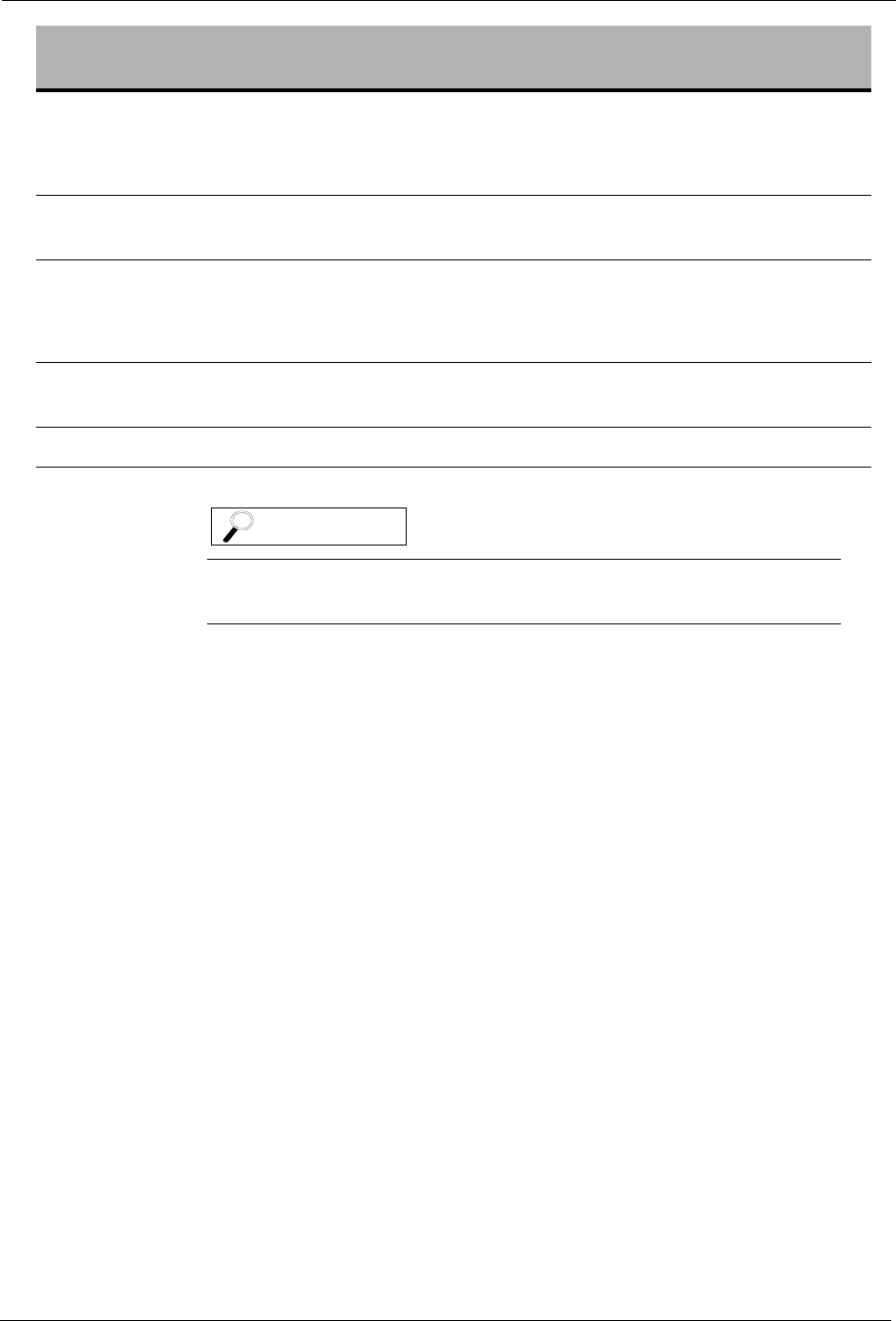
ARTIS Operator’s Manual
Cod. 6992200 - Rev. / 15-156
PREPARATION NOT COMPLETED - INCORRECT CONDITION ON BICARBONATE
DISTRIBUTION 477
Reason
for Alarm The dialysis fluid cannot reach the condition required on the bicarbonate
conductivity.
Machine
Actions • None.
Possible Cause Suggested Action
1. Massive air leak from the Bicarbonate
Pick-up Tube. 1. Check the Bicarbonate Pick-up Tube.
Then press the CONFIRM button.
Call for Service if the alarm persists.
The use of liquid Bicarbonate concentrate is not currently
available.
NOTE
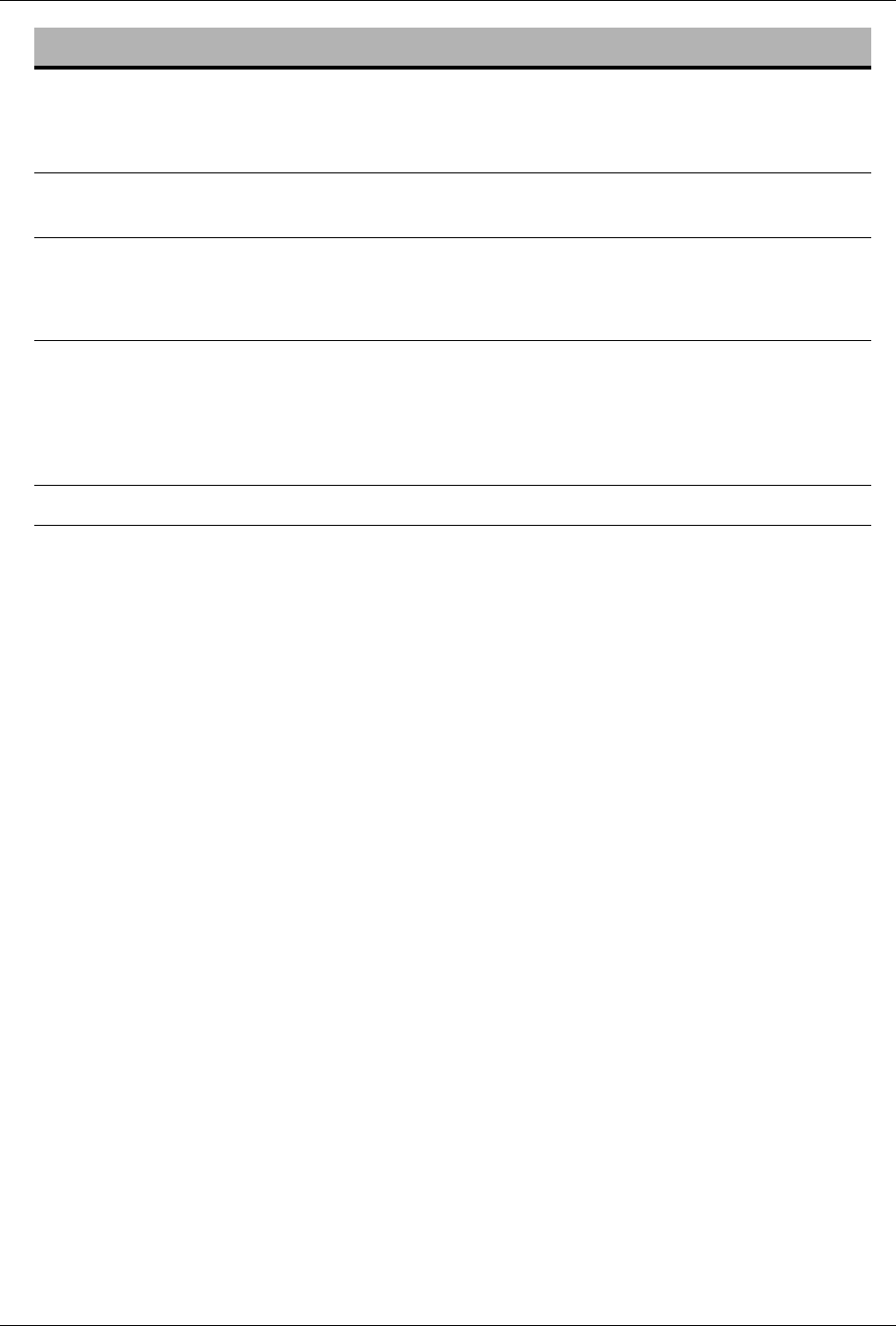
Chapter 15: Alarms and Troubleshooting
15-157 Cod. 6992200 - Rev. /
REMINDER - STILL IN ISOLATED UF 479
Reason
for Alarm The simplified “Isolated UF” action button has been activated.
Machine
Actions • None.
Possible Cause Suggested Action
1. More than 2 minutes have elapsed
since the "Isolated UF" action button
has been selected.
1. If the Isolated UF functionality is still
desired press the CONFIRM button.
Otherwise deactivate the function by
pressing the activated "Isolated UF"
action button.
Call for Service if the alarm persists.
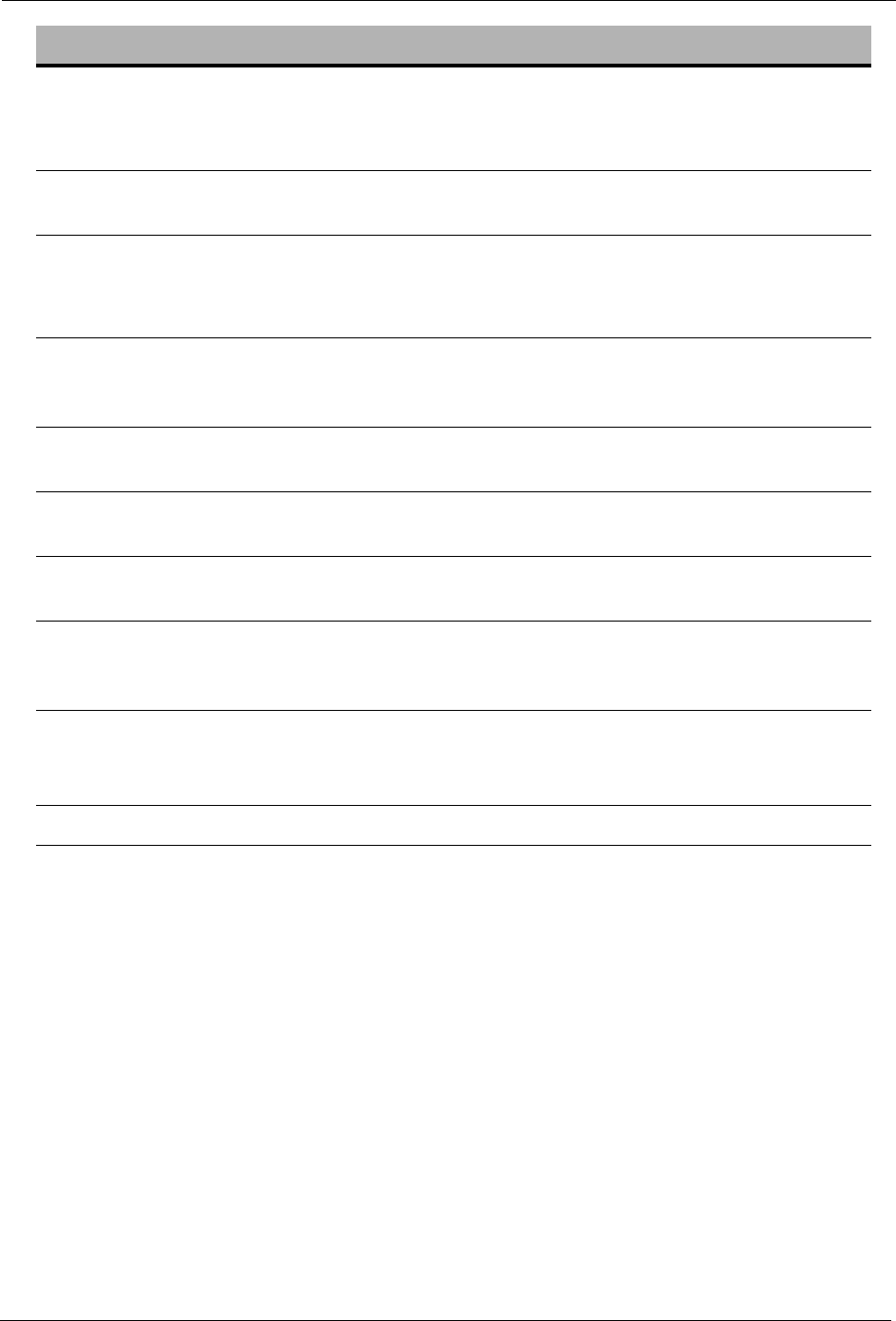
ARTIS Operator’s Manual
Cod. 6992200 - Rev. / 15-158
INCORRECT FLUID CONDUCTIVITY DETECTED 496
Reason
for Alarm The measured conductivity is outside the safety range limits.
Machine
Actions • The dialysis fluid goes into Bypass.
Possible Cause Suggested Action
1. Acid concentrate not correctly supplied. 1. Supply appropriate concentrate to the
relevant inlet connector. Wait for stable
condition.
2. Massive air leak from the Acid
Concentrate Canister. 2. Check and if necessary replace the
Acid Concentrate Canister.
3. Acid pick-up tube connector not
connected to the Concentrate Canister. 3. Verify the Acid pick-up tube connector
is well fitted into the proper Canister.
4. Bicarbonate not correctly supplied. 4. Replace the BiCart according to the
BiCart Change procedure.
5. The Bicarbonate powder is not well
distributed in the BiCart Cartridge. 5. Tap the bottom of the BiCart Cartridge
to evenly distribute the powder. Wait for
stable condition.
6. The BiCart Cartridge is in the wrong
position. 6. Ensure the BiCart is securely placed
into its holder.
Repeat the BiCart Change procedure.
Call for Service if the alarm persists.
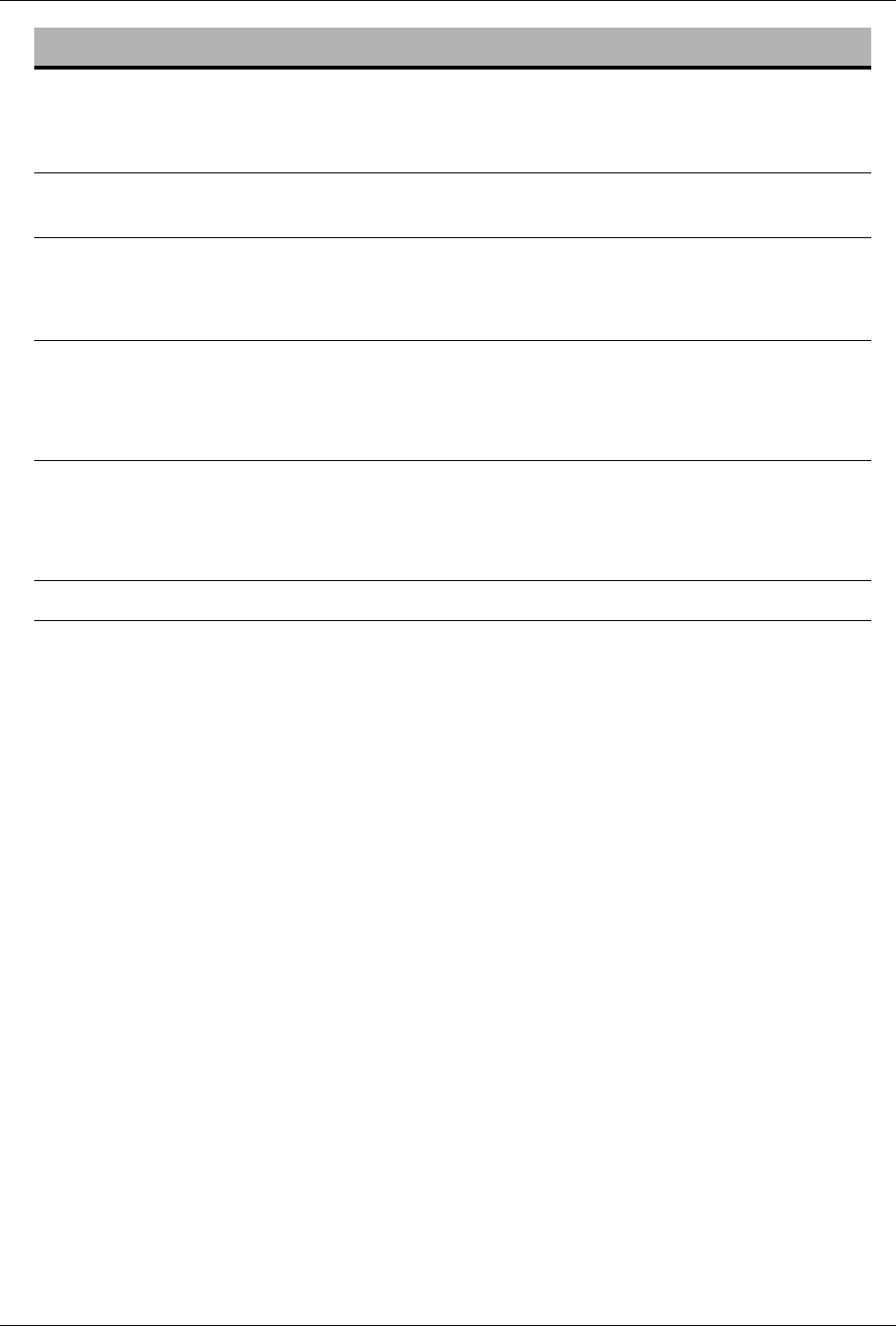
Chapter 15: Alarms and Troubleshooting
15-159 Cod. 6992200 - Rev. /
LEAKAGES TEST (E) FAILURE 498
Reason
for Alarm Failure of the leakages test on delivery of dialysis fluid in the hydraulic
circuit and control of the patient weight loss.
Machine
Actions • The phase currently running stops;
• All the pumps are stopped.
Possible Cause Suggested Action
1. The Red and Blue Dialysis Fluid Tubes
are not properly connected. 1. Verify that the Red and Blue Dialysis
Fluid Tubes are properly connected.
Press the CONFIRM button to repeat
the current leakages test.
2. The Venous and Arterial Patient Lines
are not properly connected to the
EvaClean port.
2. Verify that the Venous and Arterial
Patient Lines are properly connected.
Press the CONFIRM button to repeat
the current leakage test.
Call for Service if the alarm persists.
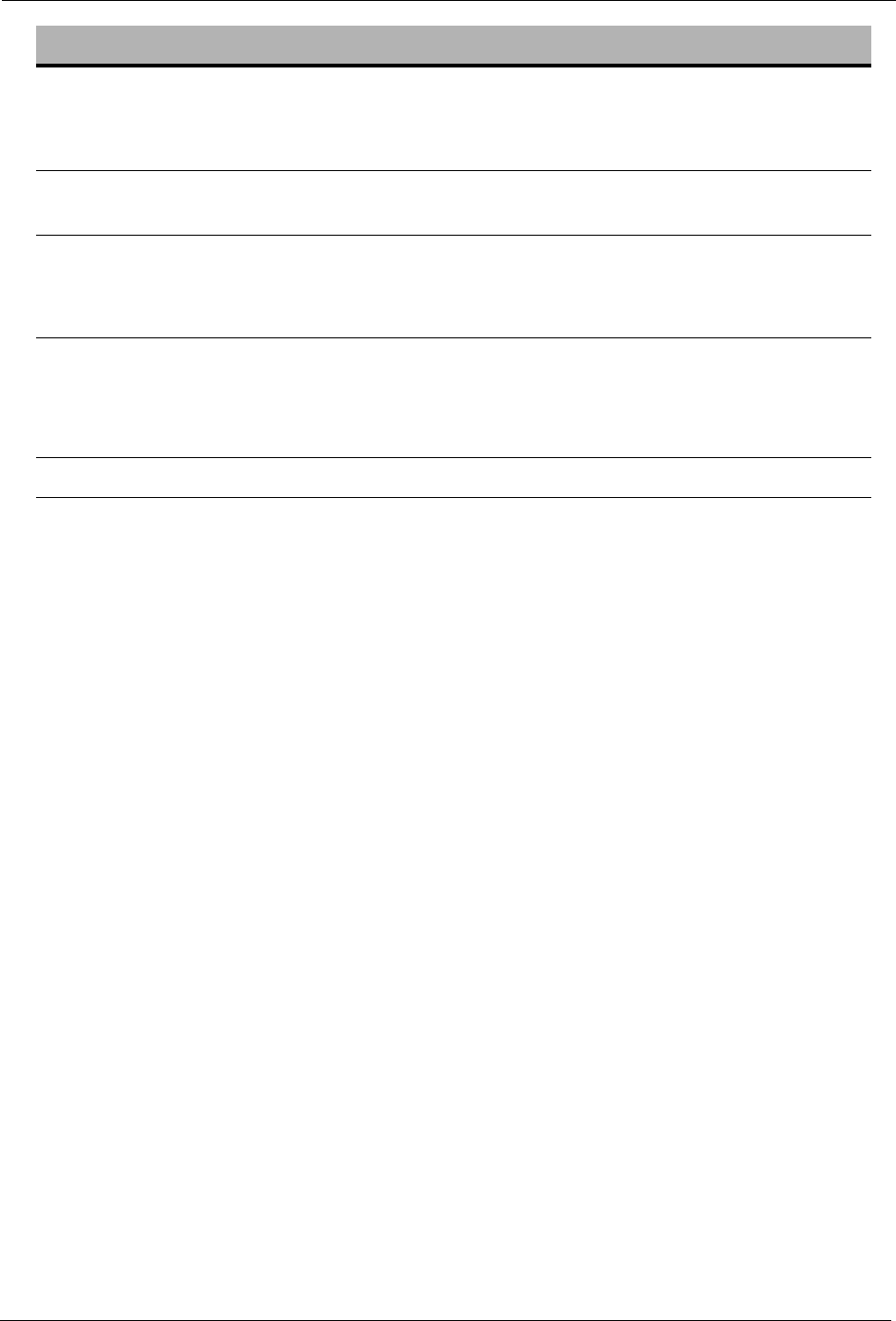
ARTIS Operator’s Manual
Cod. 6992200 - Rev. / 15-160
LEAKAGES TEST (F) FAILURE 499
Reason
for Alarm Failure of the leakages test on delivery of dialysis fluid in the hydraulic
circuit and control of the patient weight loss.
Machine
Actions • The phase currently running stops;
• All the pumps are stopped.
Possible Cause Suggested Action
1. The Red and Blue Dialysis Fluid Tubes
are not properly connected. 1. Verify that the Red and Blue Dialysis
Fluid Tubes are properly connected.
Press the CONFIRM button to repeat
the current leakages test.
Call for Service if the alarm persists.

Chapter 15: Alarms and Troubleshooting
15-161 Cod. 6992200 - Rev. /
LEAKAGES TEST (G) FAILURE 500
Reason
for Alarm Failure of the leakages test on the PDrain, PFS or PO pressure sensors:
negative pressure failure.
Machine
Actions • The phase currently running stops;
• All the pumps are stopped.
Possible Cause Suggested Action
1. The Red and Blue Dialysis Fluid Tubes
are not properly connected. 1. Verify that the Red and Blue Dialysis
Fluid Tubes are properly connected.
Press the CONFIRM button to repeat
the current leakages test.
Call for Service if the alarm persists.

ARTIS Operator’s Manual
Cod. 6992200 - Rev. / 15-162
REMINDER - WRONG DIP SWITCHES 502
Reason
for Alarm The Dip Switch configuration detected by the machine is incorrect.
Machine
Actions • None.
Possible Cause Suggested Action
1. The machine is not properly configured. 1. Press the CONFIRM button. If the
alarm persists, switch off the machine
and call for service.

Chapter 15: Alarms and Troubleshooting
15-163 Cod. 6992200 - Rev. /
WRONG ARTERIAL AND VENOUS TREATMENT LIMITS 503
Reason
for Alarm This alarm occurs after that the alarm #525 has been triggered and not
resolved within the due time (after 30 seconds in HD; 60 seconds in HDF).
The arterial and venous pressure treatment limits are open for a long time
interval.
Machine
Actions • None.
Possible Cause Suggested Action
1. The “Close A/V Limits” button has not
been pressed within the due time. 1. Press the CONFIRM button to remove
the alarm message.
2. The A/V pressure limits have not been
automatically closed within the due
time.
2. Carefully check the Patient’s Vascular
Access and inspect the Arterial and
Venous Patient Lines;
Press the CONFIRM button to remove
the alarm message.
3. The A/V pressures have exceeded the
upper/lower intervals. 3. Carefully check the Patient’s Vascular
Access and inspect the Arterial and
Venous Patient Lines;
Press the CONFIRM button to remove
the alarm message.
Call for Service if the alarm persists.

ARTIS Operator’s Manual
Cod. 6992200 - Rev. / 15-164
LOW DISINFECTANT LEVEL IN LAST CLEAN CART PROCESS 504
Reason
for Alarm The Clean Cart C dilution is not properly performed.
Machine
Actions • The phase currently running stops;
• All the pumps are stopped.
Possible Cause Suggested Action
1. The Clean Cart Holder Arms are in the
wrong position or not securely closed. 1. Verify the correct position of the
CleanCart Holder Arms in relation to
the machine phase.
Press the CONFIRM button.
Switch the machine OFF, wait at least
five seconds, switch it ON again and
repeat the procedure to perform.
Call for Service if the alarm persists.
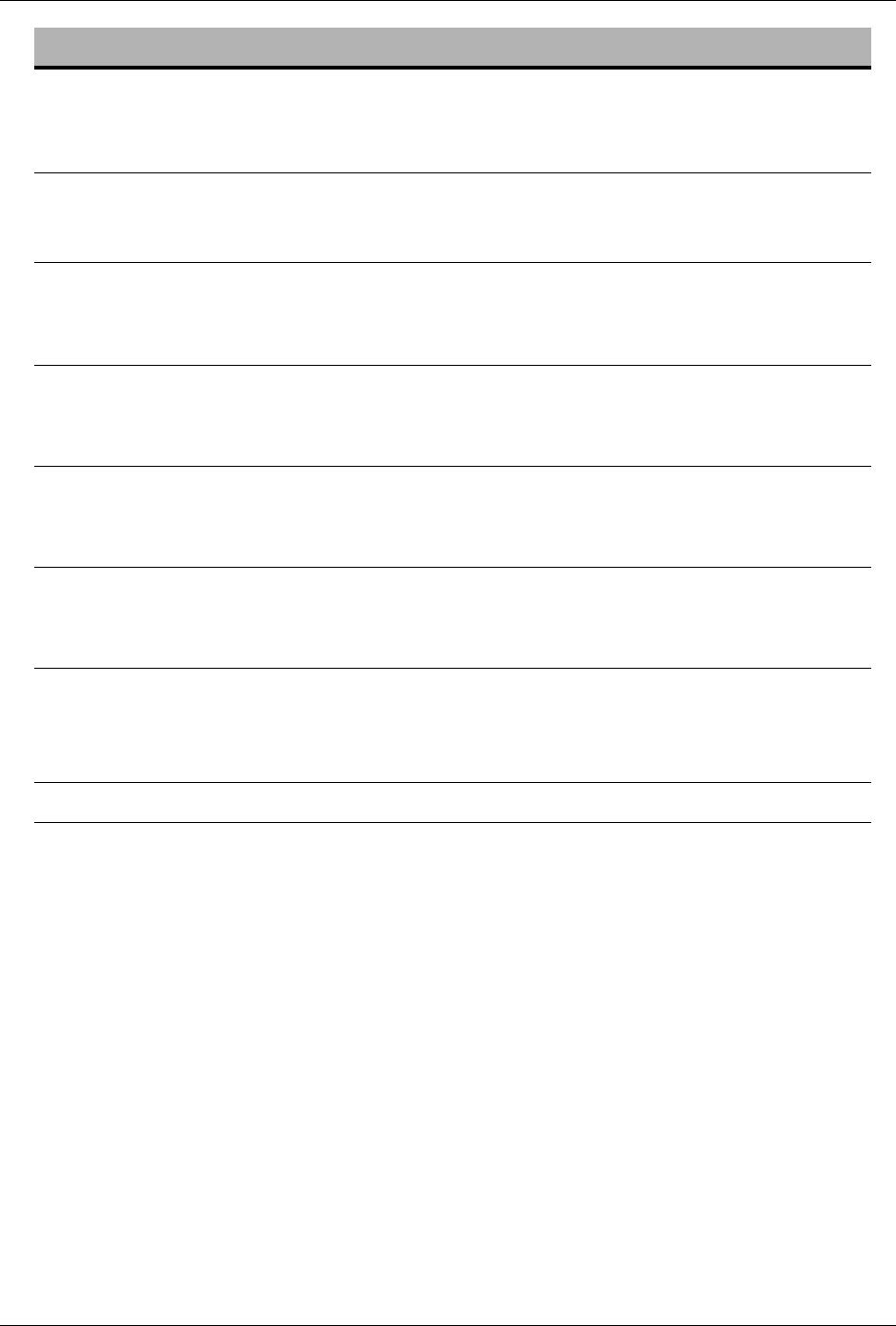
Chapter 15: Alarms and Troubleshooting
15-165 Cod. 6992200 - Rev. /
UF DEVIATION 505
Reason
for Alarm The machine has detected an incorrect weight loss management.
Machine
Actions • The dialysis fluid goes into Bypass;
• The Venous Pump is stopped;
• Calibration request.
Possible Cause Suggested Action
1. Error in the Ultrafiltration Mass Balance
in the Hydraulic Module, due to
incorrect valves control.
1. Press “Stop Treatment”;
Perform a rinseback;
Disconnect the patient.
2. Error in the Ultrafiltration Mass Balance
in the Hydraulic Module, due to
incorrect flowmeter reading.
2. Press “Stop Treatment”;
Perform a rinseback;
Disconnect the patient.
3. Error in the Ultrafiltration Mass Balance
in the Hydraulic Module, due to
incorrect P2 pump flow or P2 reading.
3. Press “Stop Treatment”;
Perform a rinseback;
Disconnect the patient.
4. The machine could not perform an
alignment of the D2 flowmeter during
the treatment and the Ultrafiltration
Mass Balance could be incorrect.
4. Press “Stop Treatment”;
Perform a rinseback;
Disconnect the patient.
Call for Service if the alarm persists.
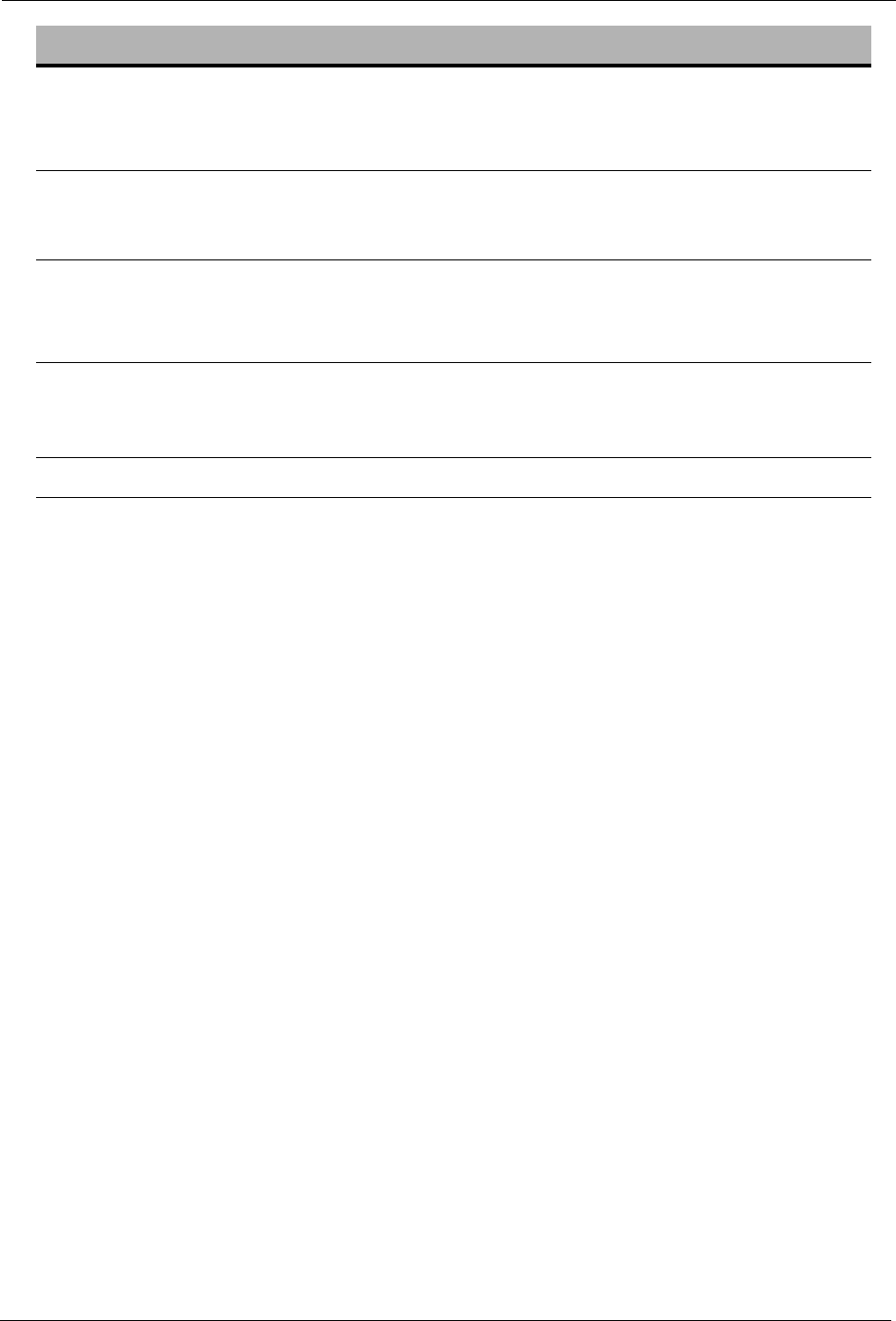
ARTIS Operator’s Manual
Cod. 6992200 - Rev. / 15-166
FLOWMETER ALIGNMENT FAILED 506
Reason
for Alarm Error in the Ultrafiltration Mass Balance in the Hydraulic Module.
Machine
Actions • The dialysis fluid goes into Bypass;
• The Venous Pump is stopped;
• Calibration request.
Possible Cause Suggested Action
1. Temporary problem. 1. Press the CONFIRM button.
If the problem persists disconnect the
patient.
Call for Service if the alarm persists.
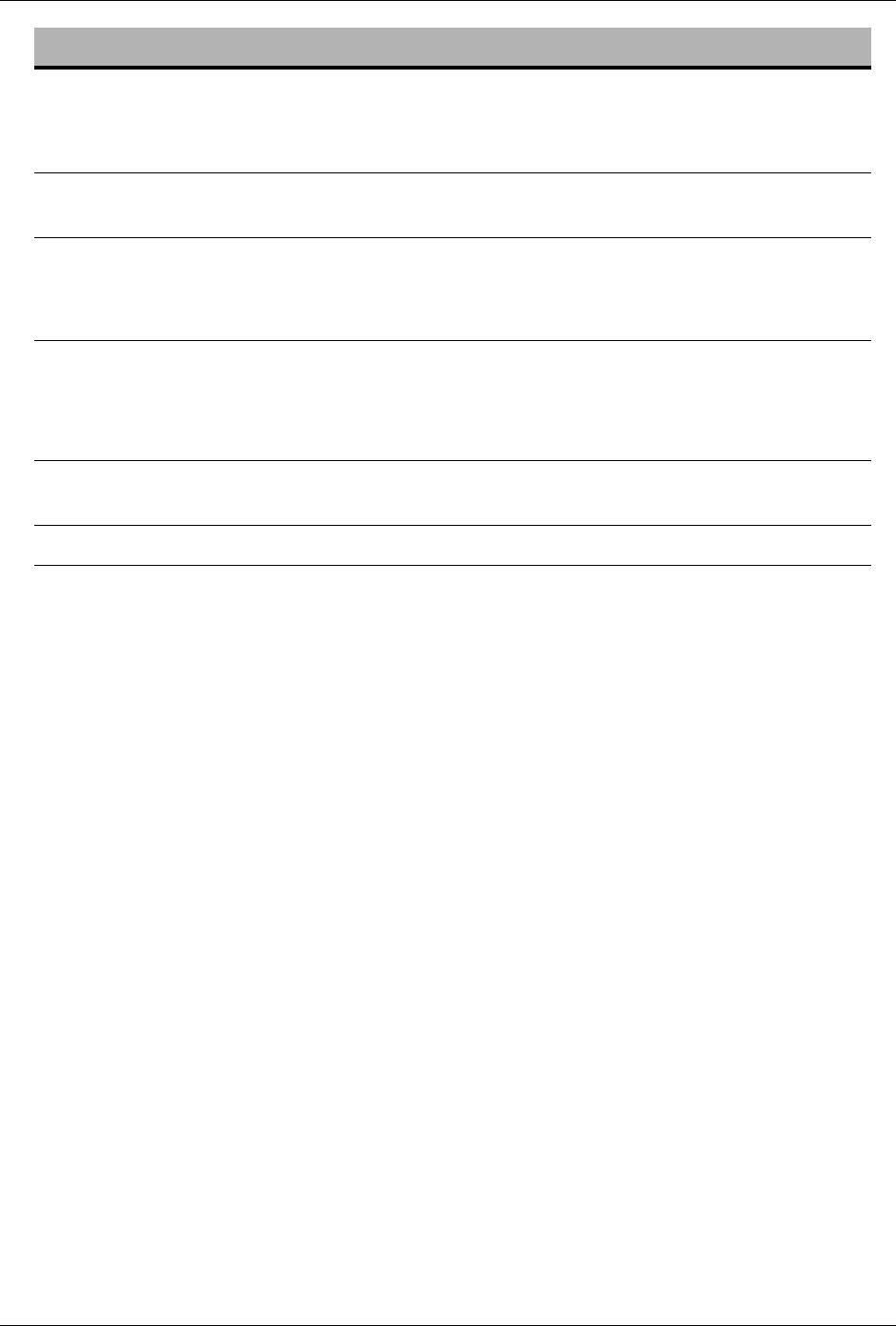
Chapter 15: Alarms and Troubleshooting
15-167 Cod. 6992200 - Rev. /
BLOOD CASSETTE PRESENCE REQUIRED 507
Reason
for Alarm The Blood Cassette is not detected by the presence switch.
Machine
Actions • None.
Possible Cause Suggested Action
1. The Blood Cassette was not loaded
properly by the operator. 1. Load the Blood Cassette.
If after the loading of the Blood
Cassette the error persists, call for
Service.
2. The Blood Cassette does not fit the
pressure transducer. 2. Repeat the loading procedure for the
Blood cassette.
Call for Service if the alarm persists.
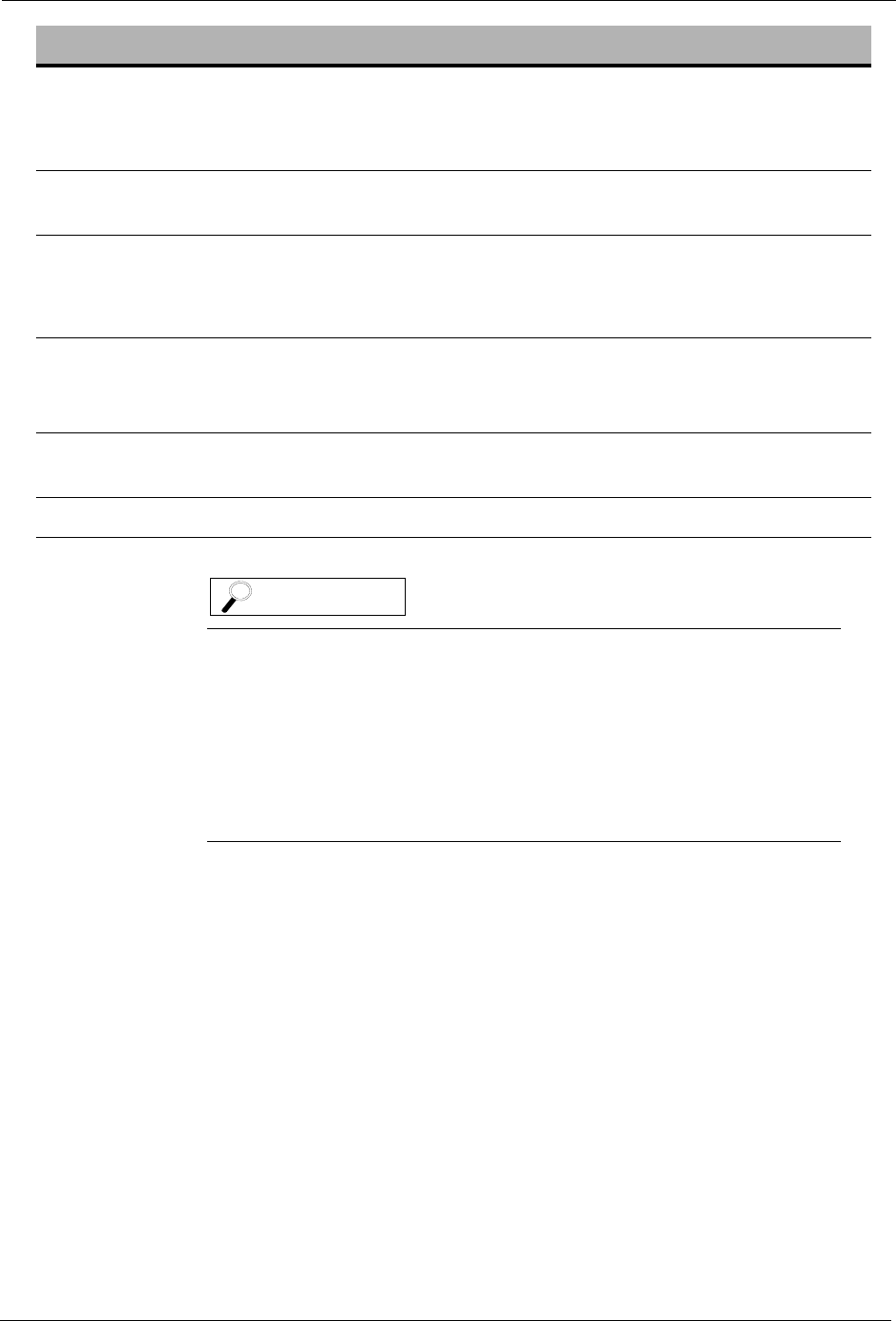
ARTIS Operator’s Manual
Cod. 6992200 - Rev. / 15-168
WRONG DISPOSABLE CONFIGURATION ON ULTRA CASSETTE HOLDER 508
Reason
for Alarm The Ultra Cassette is not detected by the presence switch.
Machine
Actions • None.
Possible Cause Suggested Action
1. The Ultra Cassette was not loaded
properly by the operator. 1. Load the Ultra Cassette.
If after the loading of the Ultra Cassette
the error persists, call for Service.
2. The Ultra Cassette does not fit the
pressure transducer. 2. Repeat the loading procedure for the
Ultra cassette.
Call for Service if the alarm persists.
This alarm can be triggered also if the following sequence is
performed:
1. “Switch to HD” special procedure;
2. “Change Circuit” special procedure;
3. Blood Cassette priming;
4. Reset Priming.
In this case, the machine gets stuck and to solve the problem it is
necessary to switch the machine OFF and then ON again.
NOTE

Chapter 15: Alarms and Troubleshooting
15-169 Cod. 6992200 - Rev. /
BLOOD LINES CLAMPED 509
Reason
for Alarm The Blood lines are clamped or kinked.
Machine
Actions • The Arterial Pump is stopped;
• The UF Rate is automatically set to zero;
• The dialysis fluid goes into bypass.
Possible Cause Suggested Action
1. The Blood lines are clamped or kinked. 1. Verify that the blood lines are not
clamped or kinked, then press the
CONFIRM button to continue the
process.
Call for Service if the alarm persists.
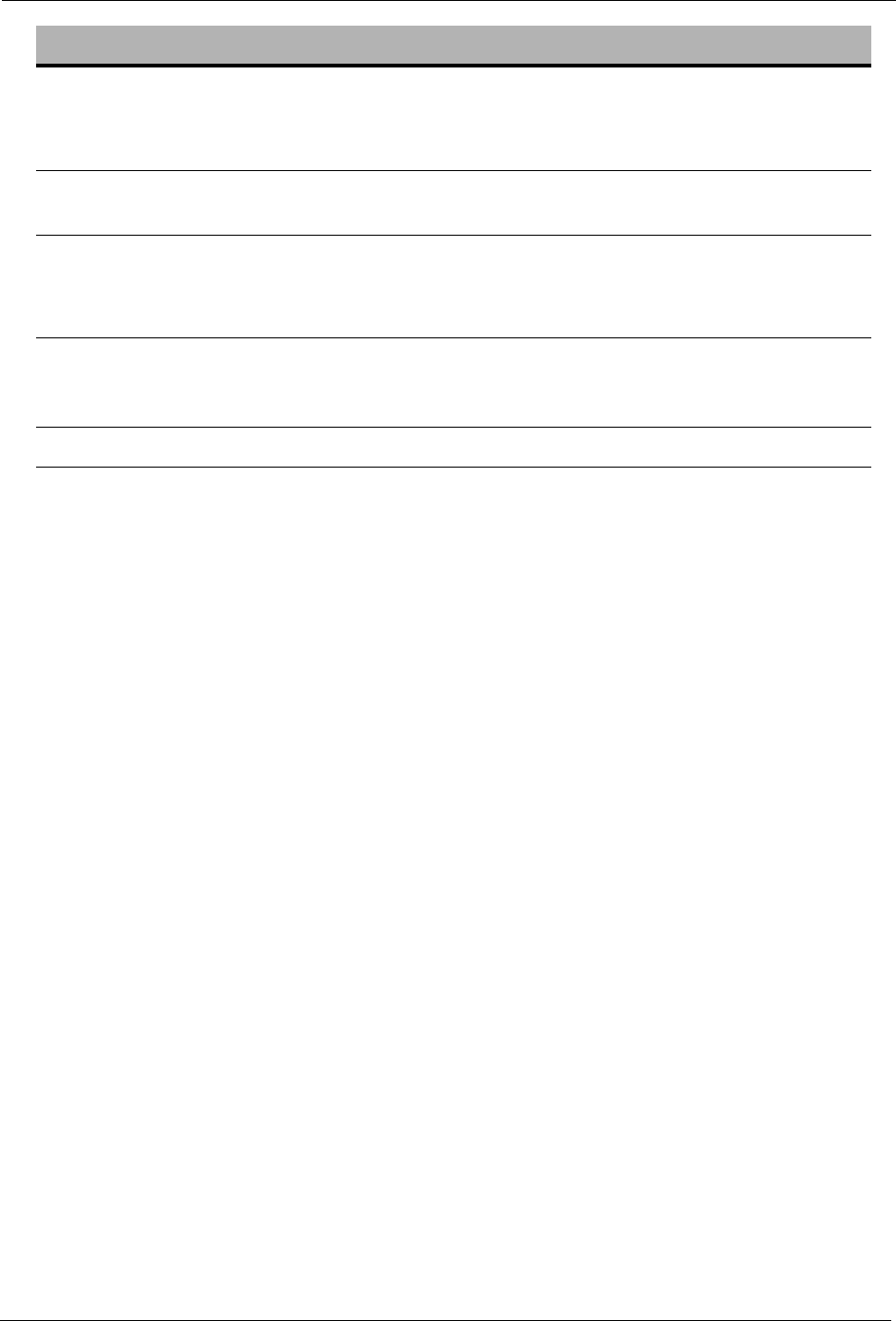
ARTIS Operator’s Manual
Cod. 6992200 - Rev. / 15-170
SMART SCAN - LOW QB 512
Reason
for Alarm The average blood flow rate (QB) value, measured during the last 5
minutes, is lower than 50 ml/min.
Machine
Actions • None.
Possible Cause Suggested Action
1. The QB value, measured during the last
5 minutes, is lower then 50 ml/min. 1. Verify that the set QB value is the
desired one; then press the CONFIRM
button.
Call for Service if the alarm persists.
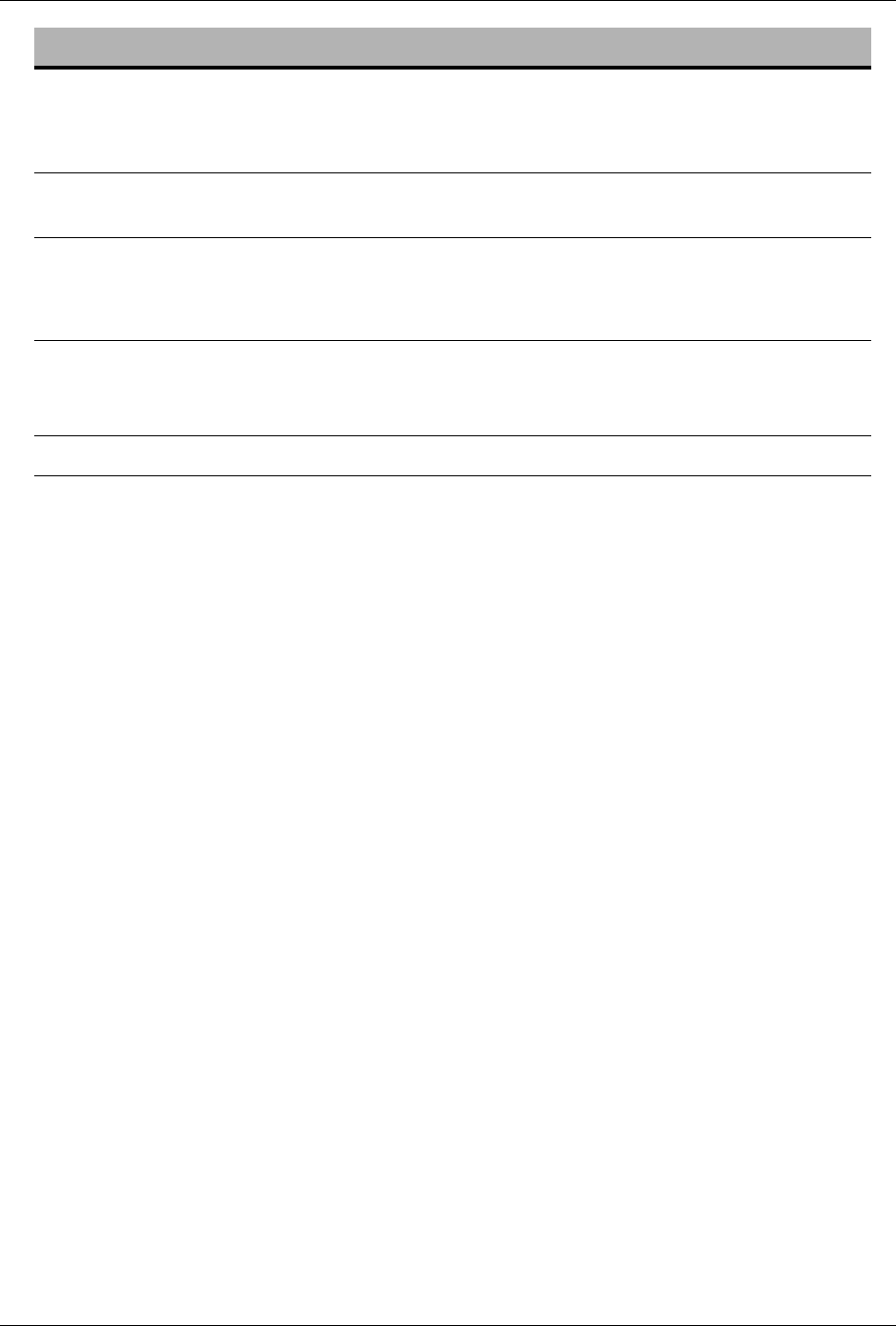
Chapter 15: Alarms and Troubleshooting
15-171 Cod. 6992200 - Rev. /
SMART SCAN - LOW QD 513
Reason
for Alarm The ratio Dialysis fluid flow rate/Blood flow rate (QD/QB) has been lower
than 1.5 during the last 10 minutes.
Machine
Actions • None.
Possible Cause Suggested Action
1. The ratio Dialysis fluid flow rate/Blood
flow rate (QD/QB) has been lower than
1.5 during the last 10 minutes.
1. Increase the QD value in order to keep
the ratio QD/QB between 1.5 and 3.
Then press the CONFIRM button.
Call for Service if the alarm persists.
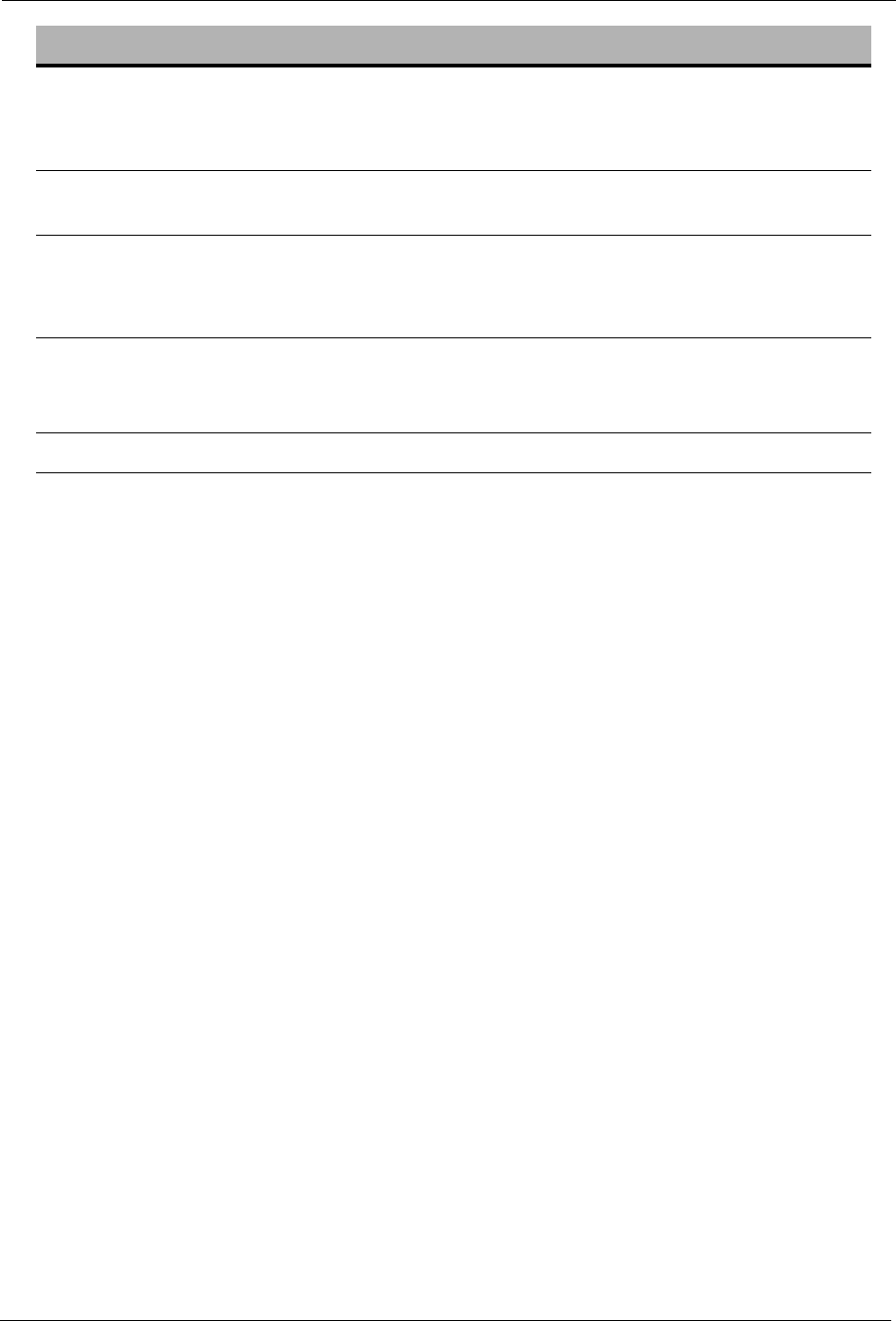
ARTIS Operator’s Manual
Cod. 6992200 - Rev. / 15-172
SMART SCAN - HIGH QD 514
Reason
for Alarm The ratio Dialysis fluid flow rate/Blood flow rate (QD/QB) has been higher
than 3 during the last 10 minutes.
Machine
Actions • None.
Possible Cause Suggested Action
1. The ratio Dialysis fluid flow rate/Blood
flow rate (QD/QB) has been higher than
3 during the last 10 minutes.
1. Decrease the QD value in order to keep
the ratio QD/QB between 1.5 and 3.
Then press the CONFIRM button.
Call for Service if the alarm persists.
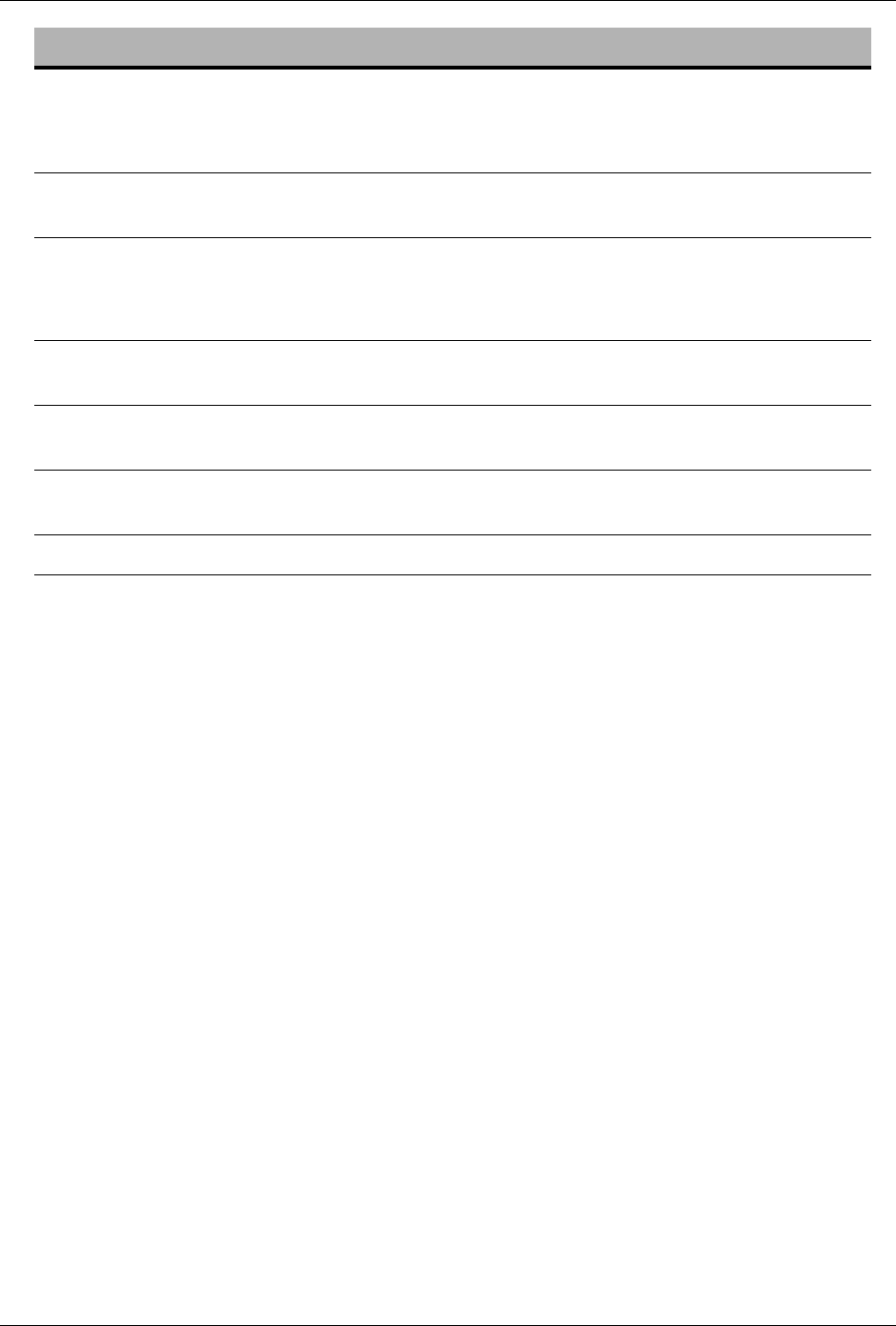
Chapter 15: Alarms and Troubleshooting
15-173 Cod. 6992200 - Rev. /
SALINE BAG NOT CONNECTED 515
Reason
for Alarm The machine does not detect saline solution inside the Venous Patient
Line during priming phase.
Machine
Actions • The phase currently running stops.
Possible Cause Suggested Action
1. The machine does not detect saline
inside the Venous Patient Line. 1. Check the Saline Bag clamp is open,
then press the CONFIRM button.
2. The machine does not detect saline
inside the Venous Patient Line. 2. Check that the Venous Line Clamp is
open, then press the CONFIRM button.
3. The machine does not detect saline
inside the Venous Patient Line. 3. Check that the pin of the Saline Bag is
correctly broken.
Call for Service if the alarm persists.
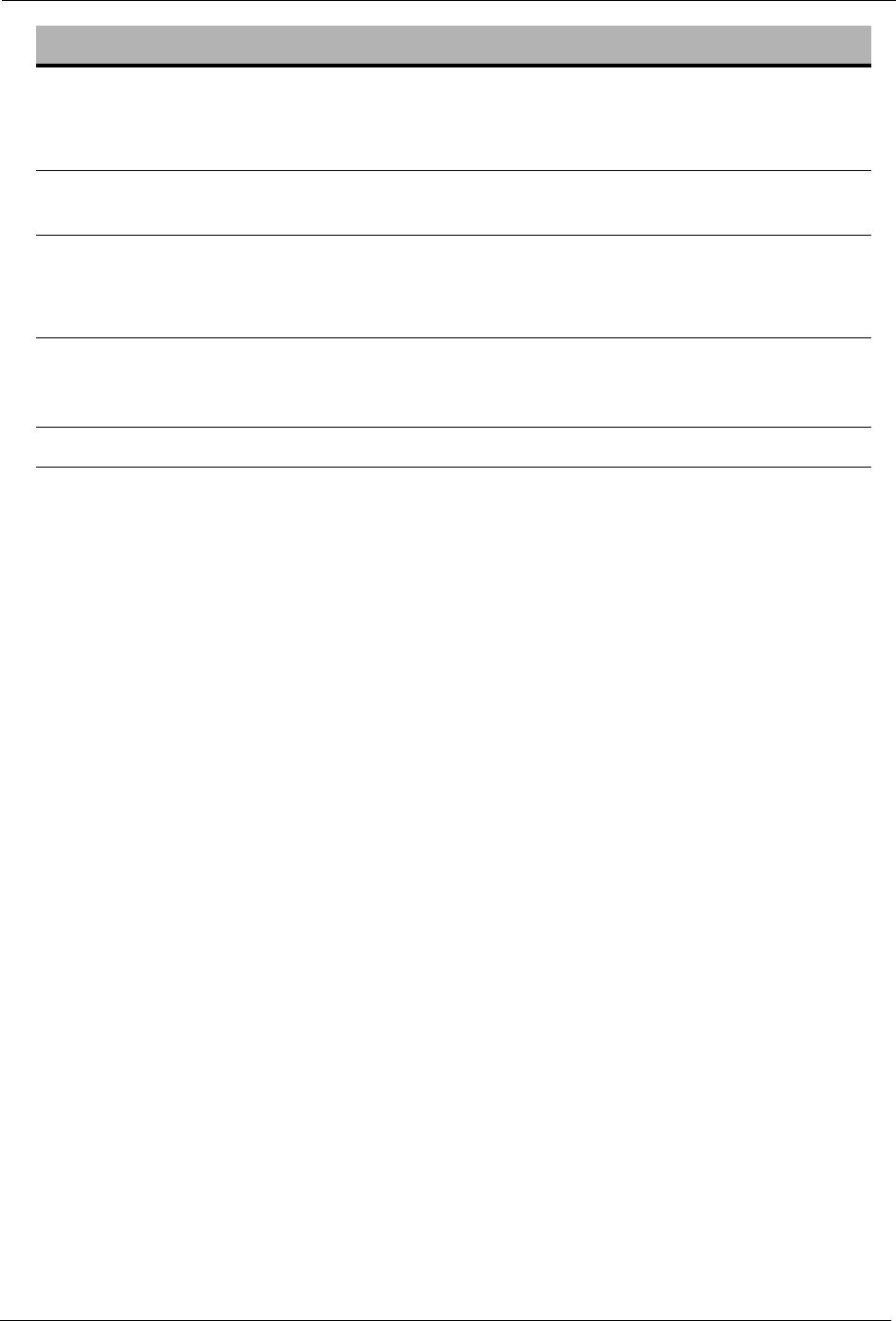
ARTIS Operator’s Manual
Cod. 6992200 - Rev. / 15-174
VENOUS LINE CLAMPED 516
Reason
for Alarm The Venous Patient Line is clamped or kinked.
Machine
Actions • The phase currently running stops.
Possible Cause Suggested Action
1. The Venous Patient Line is clamped or
kinked. 1. Check that the Venous Patient Line is
not clamped or kinked, then press the
CONFIRM button.
Call for Service if the alarm persists.

Chapter 15: Alarms and Troubleshooting
15-175 Cod. 6992200 - Rev. /
ARTERIAL LINE CLAMPED 517
Reason
for Alarm The Arterial Patient Line is clamped or kinked.
Machine
Actions • The phase currently running stops.
Possible Cause Suggested Action
1. The Arterial Patient Line is clamped or
kinked. 1. Check that the Arterial Patient Line is
not clamped or kinked, then press the
CONFIRM button.
Call for Service if the alarm persists.
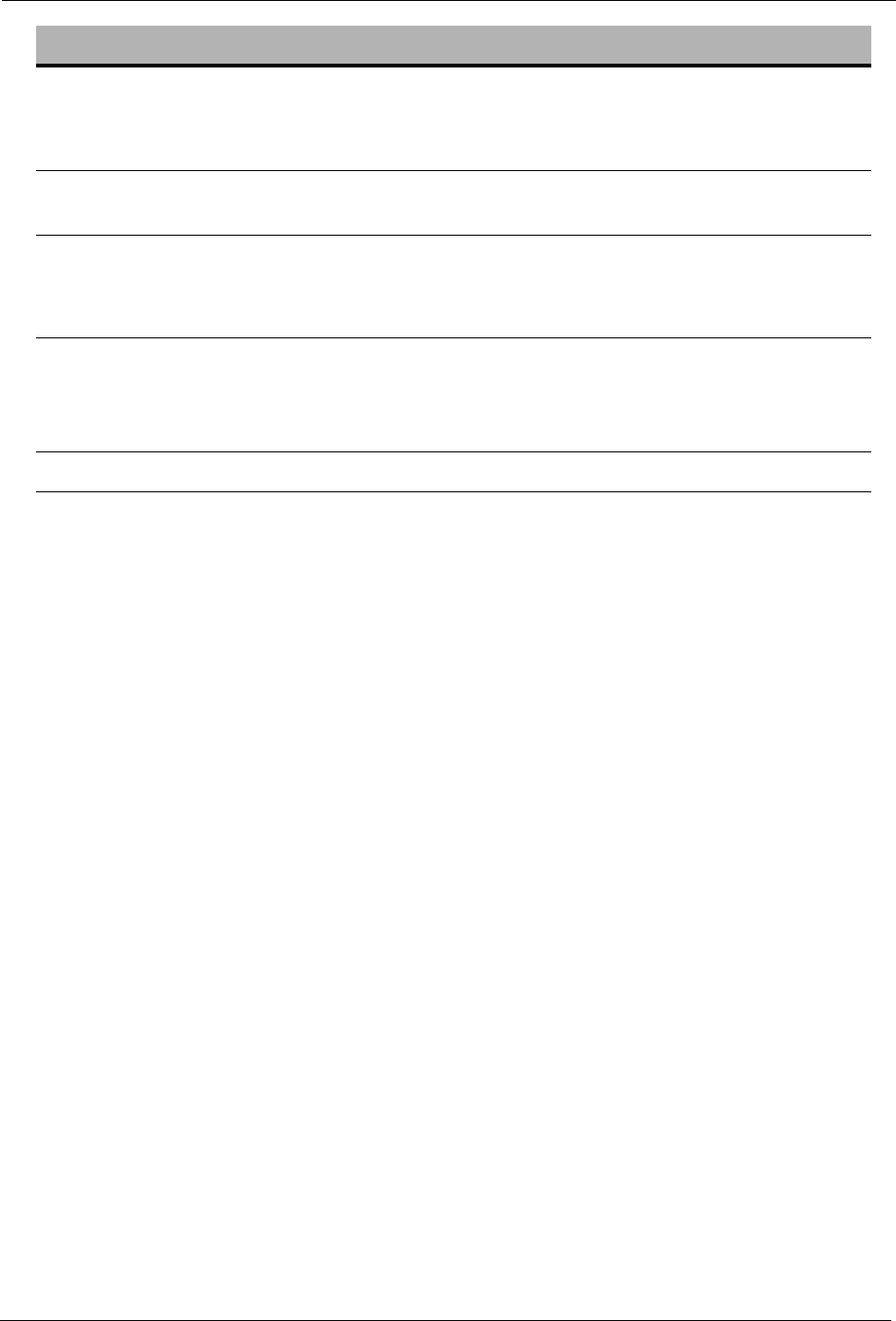
ARTIS Operator’s Manual
Cod. 6992200 - Rev. / 15-176
LINE NOT CONNECTED IN EVACLEAN PORT OR ACCESS LINE OPEN 518
Reason
for Alarm Line not connected or not correctly connected to the EvaClean Ports.
Machine
Actions • The phase currently running stops.
Possible Cause Suggested Action
1. Line Not Connected to the EvaClean
Ports. 1. Check that the arterial and Venous
Patient Lines are correctly connected to
the EvaClean port, then press the
CONFIRM button.
Call for Service if the alarm persists.

Chapter 15: Alarms and Troubleshooting
15-177 Cod. 6992200 - Rev. /
ARTERIAL INFUSION LINE OPEN 519
Reason
for Alarm The clamp on the Arterial Infusion Line is open.
Machine
Actions • The phase currently running stops.
Possible Cause Suggested Action
1. One of the clamps on the Arterial
Infusion Lines is open. 1. Check that the clamps on the Arterial
Infusion Lines are securely closed, then
press the CONFIRM button.
Call for Service if the alarm persists.

ARTIS Operator’s Manual
Cod. 6992200 - Rev. / 15-178
VENOUS PUMP ROTOR ERROR 521
Reason
for Alarm The Venous Pump is in failure.
Machine
Actions • None.
Possible Cause Suggested Action
1. The Venous Pump is stopped. 1. Press the CONFIRM button to remove
the alarm. .
Call for Service if the alarm persists.
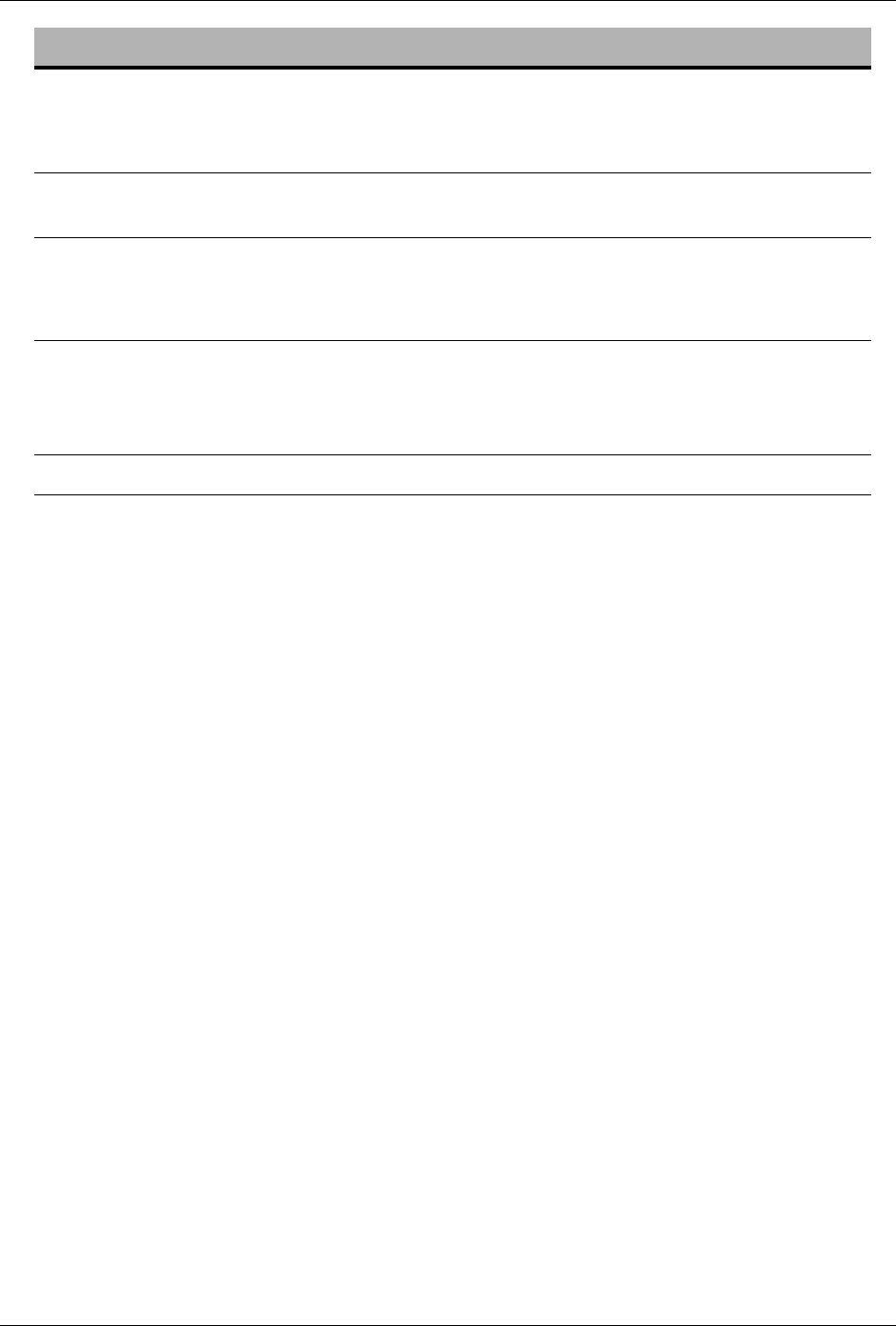
Chapter 15: Alarms and Troubleshooting
15-179 Cod. 6992200 - Rev. /
SYSTEM PRESSURE OUT OF RANGE 522
Reason
for Alarm The system pressure is beyond the upper or lower limit of the sensor.
Machine
Actions • None.
Possible Cause Suggested Action
1. A safety condition has not been
satisfied when an alarm occurred. 1. Perform a Fast Recovery procedure
during dialysis treatment (Refer to the
“7.4 Fast Recovery” section of this
Operator’s Manual).
Call for Service if the alarm persists.
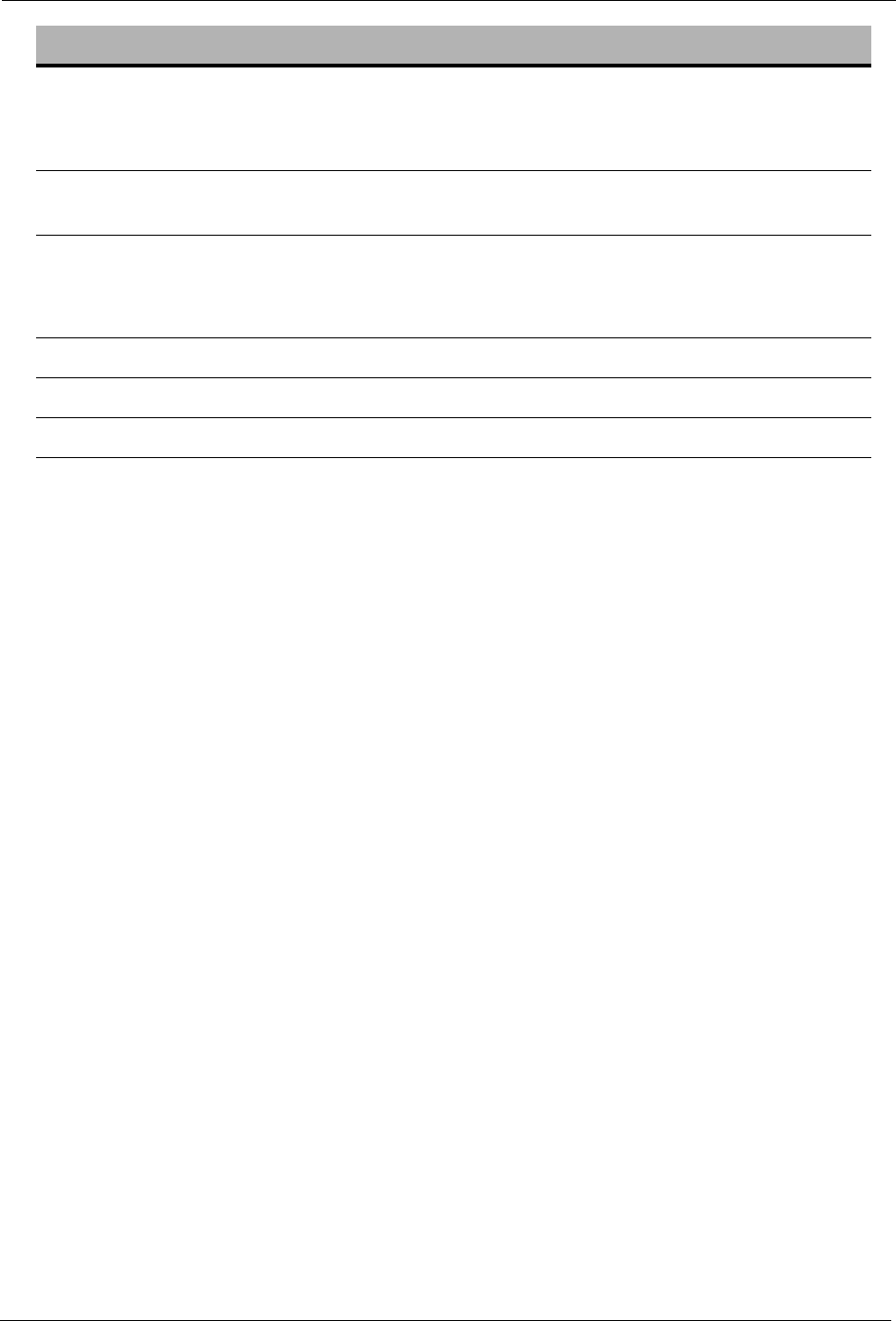
ARTIS Operator’s Manual
Cod. 6992200 - Rev. / 15-180
HEMOCONCENTRATION RISK 524
Reason
for Alarm The filtration ratio exceeds the allowed range.
Machine
Actions • None.
Possible Cause Suggested Action
1. Filtration Ratio Out of Range. 1. Increase the Arterial pump speed.
2. Filtration Ratio Out of Range. 2. Decrease the Venous pump speed.
Call for Service if the alarm persists.

Chapter 15: Alarms and Troubleshooting
15-181 Cod. 6992200 - Rev. /
PRESSURE ALARM LIMITS STILL EXPANDED 525
Reason
for Alarm • The operator has not pressed the “Close A/V Limits” button to close the
pressure alarm limits within the due time (30 seconds in HD; 120 second
in HDF).
• After a change of the blood flow rate, the machine was not able to
automatically close the A/V pressure limits within the due time (30s in HD;
120s in HDF) because the new A/V pressure values set are not
consistent with the change of the blood flow rate, compared to the
previous A/V pressure values set.
Machine
Actions • None.
Possible Cause Suggested Action
1. The “Close A/V Limits” button has not
been pressed within the due time. 1. Press the “Close A/V Limits” button: the
machine automatically centralizes the
alarm window values around the
current patient’s arterial/venous
pressures.
2. The A/V pressure limits have not been
automatically closed within the due
time.
2. Carefully check the Patient’s Vascular
Access and inspect the Arterial and
Venous Patient Lines;
Press the “Close A/V Limits” button: the
machine automatically centralizes the
alarm window values around the
current patient’s arterial/venous
pressures.
3. The arterial or venous pump has been
stopped by the operator or due to an
alarm condition and restarted again.
The A/V pressures have therefore
exceeded the upper/lower intervals.
3. Carefully check the Patient’s Vascular
Access and inspect the Arterial and
Venous Patient Lines;
Press the “Close A/V Limits” button: the
machine automatically centralizes the
alarm window values around the
current patient’s arterial/venous
pressures.
Call for Service if the alarm persists.
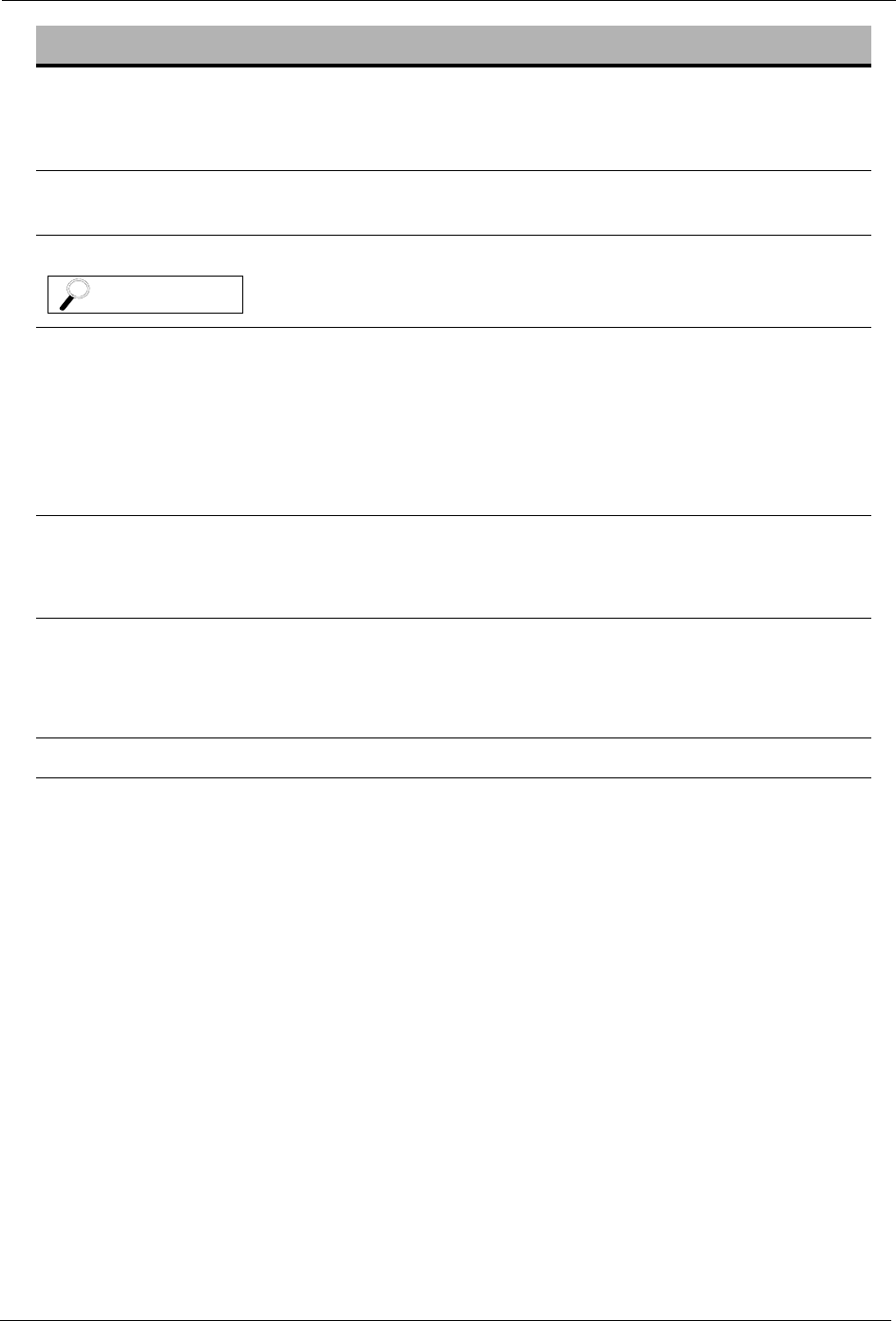
ARTIS Operator’s Manual
Cod. 6992200 - Rev. / 15-182
REMINDER - HDF SUBSTITUTION STILL DISABLED 526
Reason
for Alarm During On Line treatment phases, the HDF Substitution button remains Off
for more than 5 min.
Machine
Actions • None.
This alarm is triggered in the following cases:
• At the beginning of the HDF Treatment, if the HDF Substitution button is not pressed
within five minutes. When the alarm is confirmed the alarm disappears even if the HDF
Substitution button is not activated.
• Each time the HDF Substitution button is activated and then deactivated if it remains
deactivated for 5 minutes. The alarm disappears when the CONFIRM button is pressed
to confirm the alarm.
Possible Cause Suggested Action
1. HDF Substitution still disabled. 1. Press the CONFIRM button to confirm
the alarm;
Press the HDF Substitution button to
restart the infusion of substitution fluid.
Call for Service if the alarm persists.
NOTE

Chapter 15: Alarms and Troubleshooting
15-183 Cod. 6992200 - Rev. /
TMP MAXIMUM LIMIT 527
Reason
for Alarm During On Line treatment phases, the TMP value exceeds the permitted
max value.
Machine
Actions • None.
Possible Cause Suggested Action
1. The TMP value is beyond the permitted
max value. 1. Stop the UF and wait the TMP to drop.
Check the pre dialyzer pressure.
Call for Service if the alarm persists.
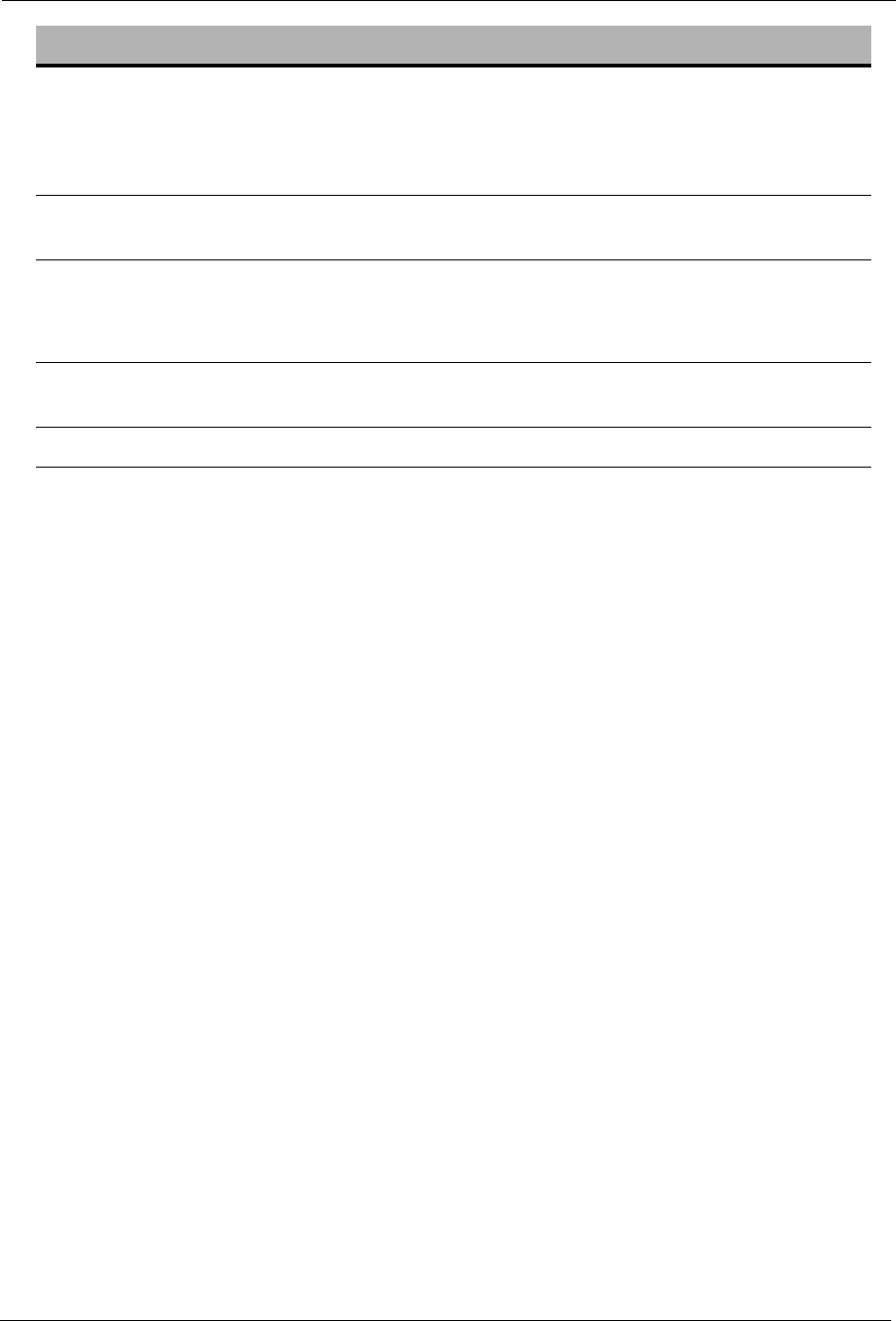
ARTIS Operator’s Manual
Cod. 6992200 - Rev. / 15-184
DIASCAN: AUTOCALIBRATION FAILURE 528
Reason
for Alarm The DIASCAN autocalibration has failed: the autocalibration coefficient is
out of the allowed range or the autocalibration has been interrupted
because of prime start.
Machine
Actions • None.
Possible Cause Suggested Action
1. There is a flowmeter instability. 1. Disable the Diascan deselecting the
Diascan button.
Call for Service if the alarm persists.
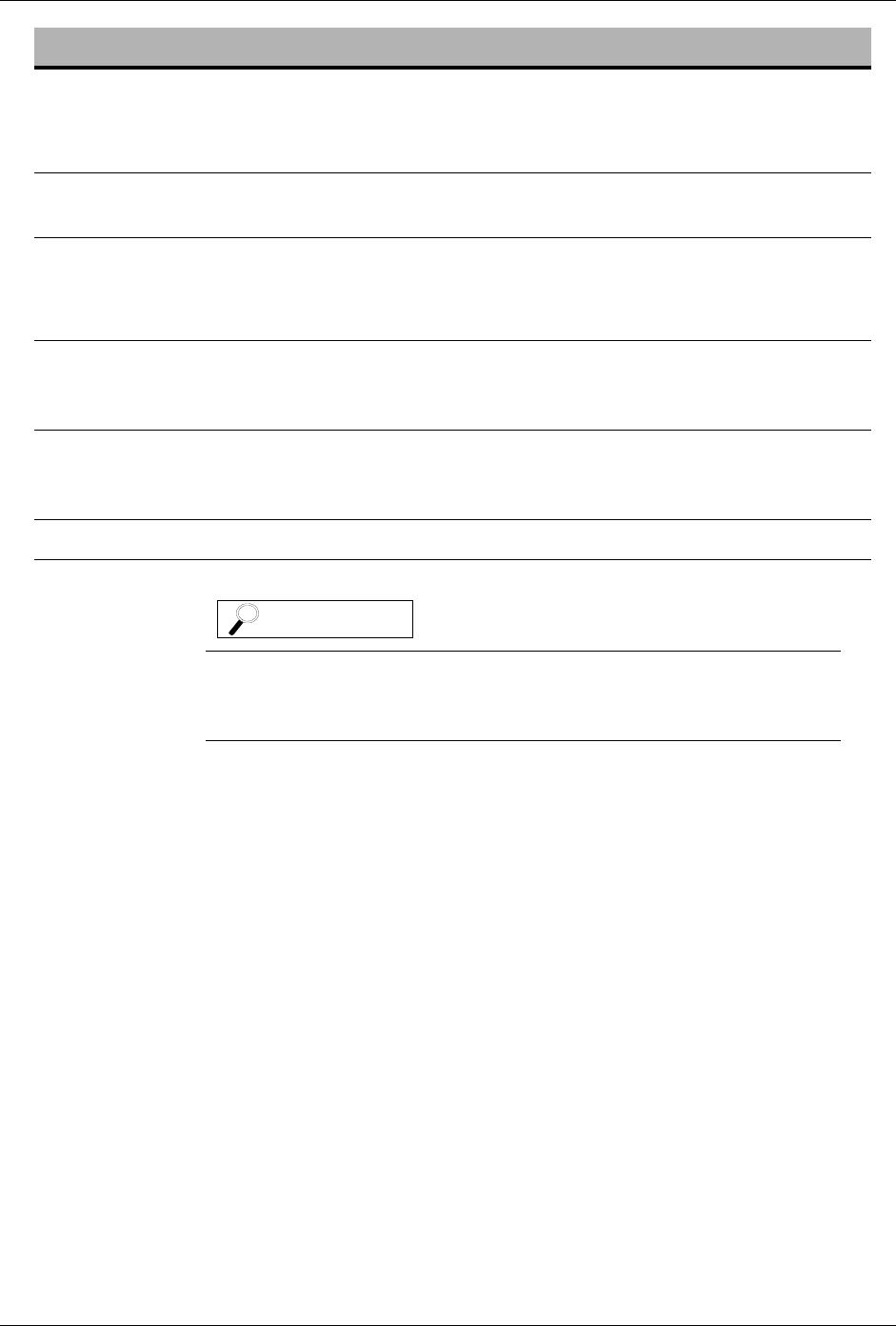
Chapter 15: Alarms and Troubleshooting
15-185 Cod. 6992200 - Rev. /
DIASCAN: MEASUREMENT FAILURE 529
Reason
for Alarm The DIASCAN has not been able to complete a measurement.
Machine
Actions • None.
Possible Cause Suggested Action
1. The Diascan has not been able to
complete a measurement. 1. To proceed with the Diascan
measurement, press the CONFIRM
button.
2. The Diascan has not been able to
complete a measurement. 2. To stop the Diascan measurement,
disable the Diascan deselecting the
Diascan button.
Call for Service if the alarm persists.
The “Diascan: Measurement Failure (#529)“ alarm will be
automatically reset if a Special Procedure is selected and
confirmed.
NOTE
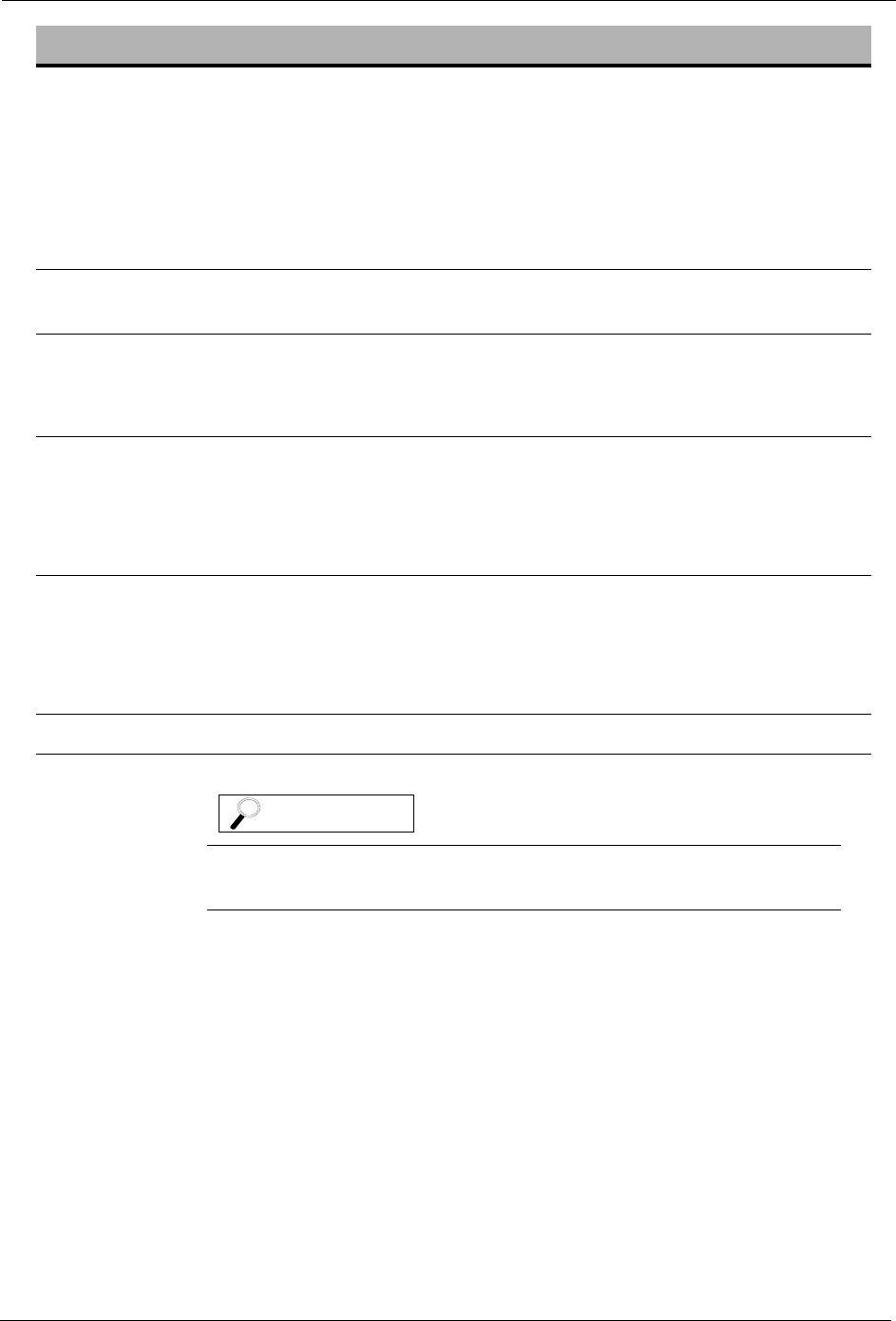
ARTIS Operator’s Manual
Cod. 6992200 - Rev. / 15-186
DIASCAN: LOW CLEARANCE 530
Reason
for Alarm This alarm wil be triggered in the following conditions:
• If the Clearance Low Limit alarm threshold is active, the alarm wil be
triggered whenever the Clearance value is below its threshold value;
• If the Clearance Low Limit alarm threshold is not active, the alarm wil
be triggered whenever the Clearance value is lower than 55% of Blood
Flow.
Machine
Actions • None.
Possible Cause Suggested Action
1. The clearance measured by the
DIASCAN is below the threshold value
set by the operator or the Clearance
value is lower than 55% of Actual Blood
Flow.
1. To proceed with the Diascan
measurement, press the CONFIRM
button.
2. The clearance measured by the
DIASCAN is below the threshold value
set by the operator or the Clearance
value is lower than 55% of Actual Blood
Flow.
2. To stop the Diascan measurement,
disable the Diascan deselecting the
Diascan button.
Call for Service if the alarm persists.
The “Diascan: Low Clearance (#530)“ alarm will be automatically
reset if a Special Procedure is selected and confirmed.
NOTE
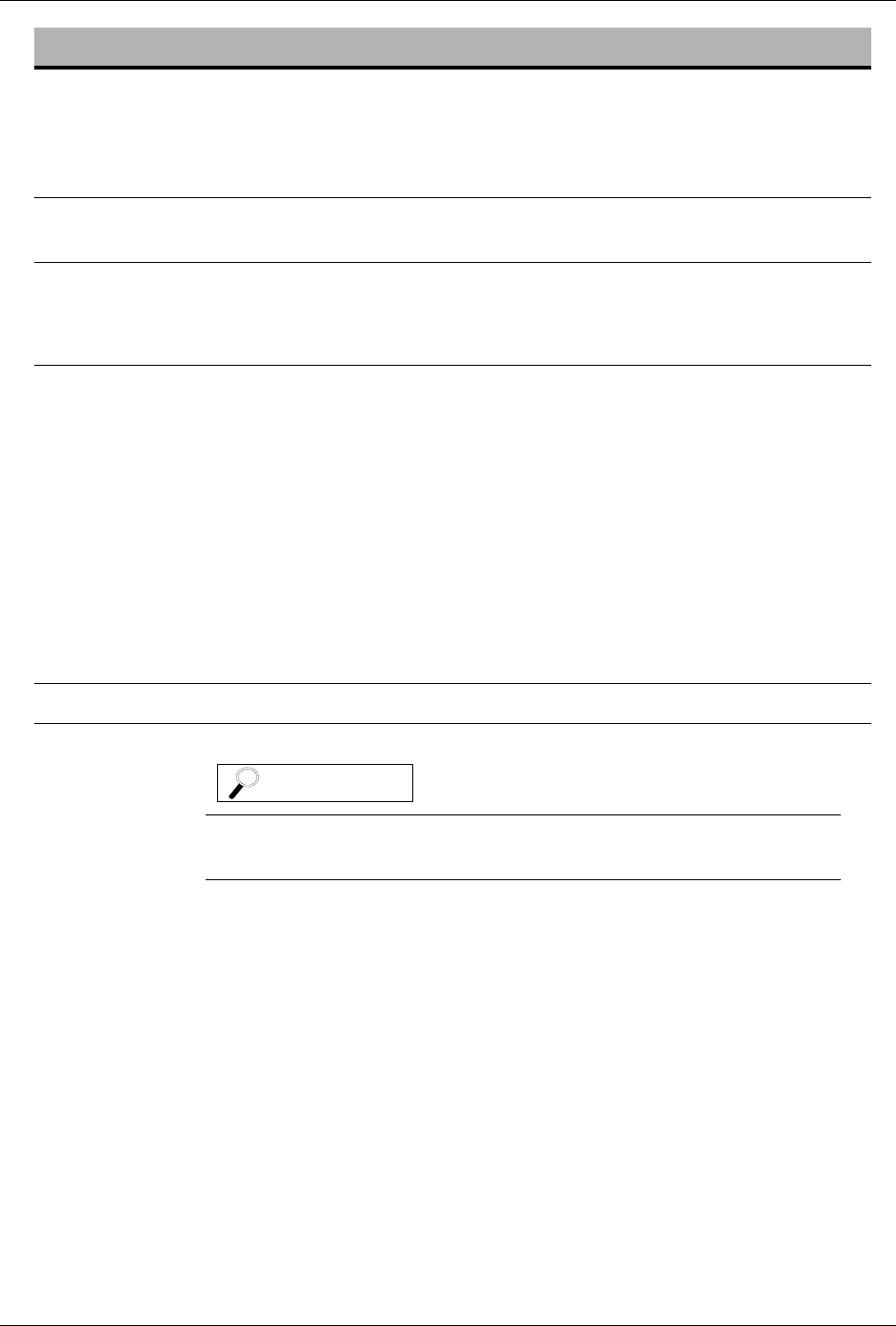
Chapter 15: Alarms and Troubleshooting
15-187 Cod. 6992200 - Rev. /
DIASCAN: LOW KT/V 531
Reason
for Alarm The Forecast KT/V value is below the “Target Kt/V” value set by the
operator (This alarm can be activated only when the distribution volume
has been set).
Machine
Actions • None.
Possible Cause Suggested Action
1. The Forecast KT/V value is below the
“Target Kt/V” value set by the operator. 1. Check that:
• The “Distribution Volume” value is
properly set for the patient;
• The current “Clearance” value is
adequate to the treatment, according to
the dialyzer used and to the patient’s
vascular access;
2. Increase the “Treatment Time” in order
to achieve the set “Target Kt/V” value or
set a new value for “Target Kt/V”
parameter.
Then press the CONFIRM button.
Call for Service if the alarm persists.
The “Diascan: Low Kt/V (#531)“ alarm will be automatically reset if
a Special Procedure is selected and confirmed.
NOTE
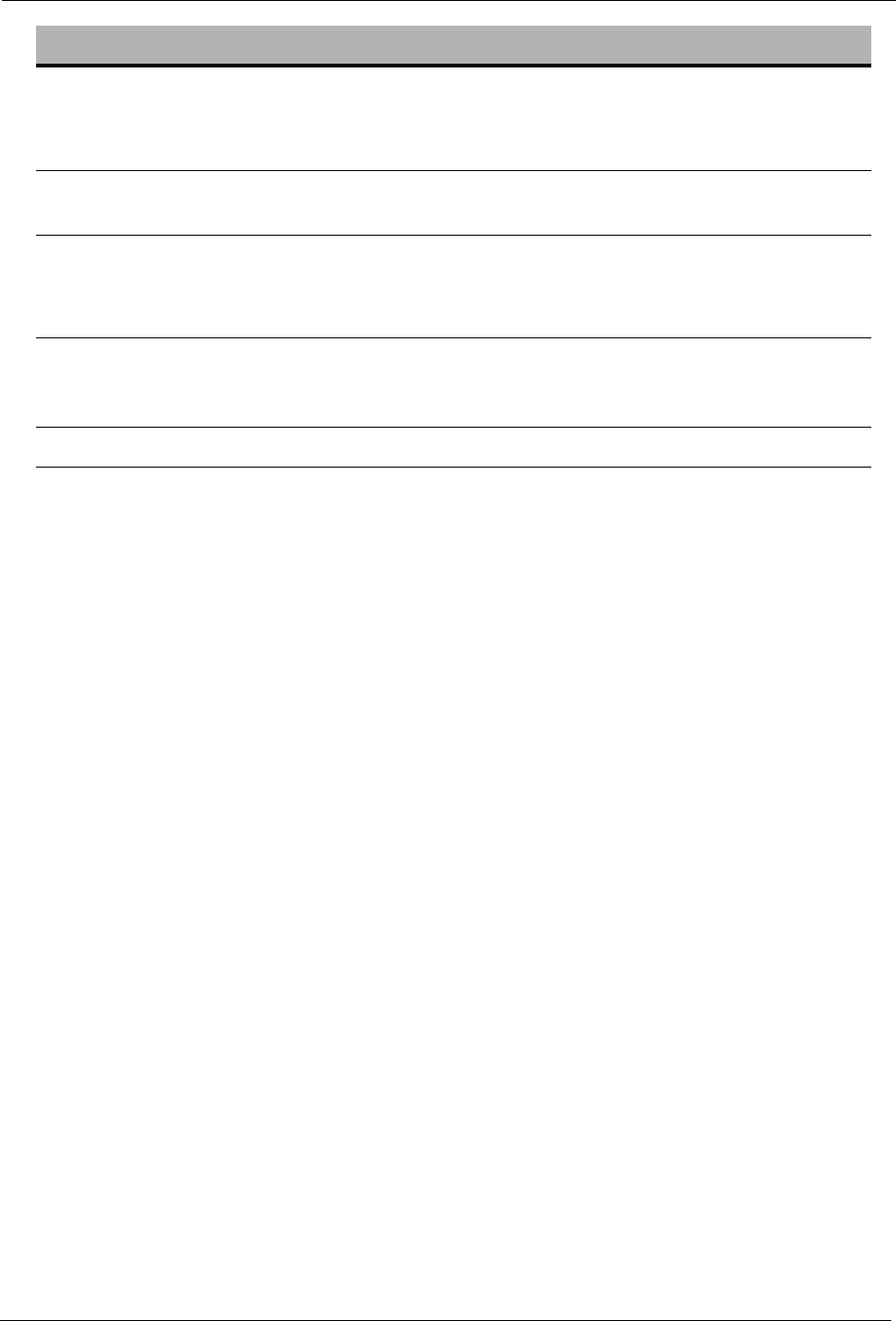
ARTIS Operator’s Manual
Cod. 6992200 - Rev. / 15-188
TIMEOUT ON DATA RECEPTION 532
Reason
for Alarm Temporary problem with the network.
Machine
Actions • None.
Possible Cause Suggested Action
1. Temporary problem with the network. 1. Reload the prescription, then press the
CONFIRM button. If the alarm persists,
switch off the machine.
Call for Service if the alarm persists.
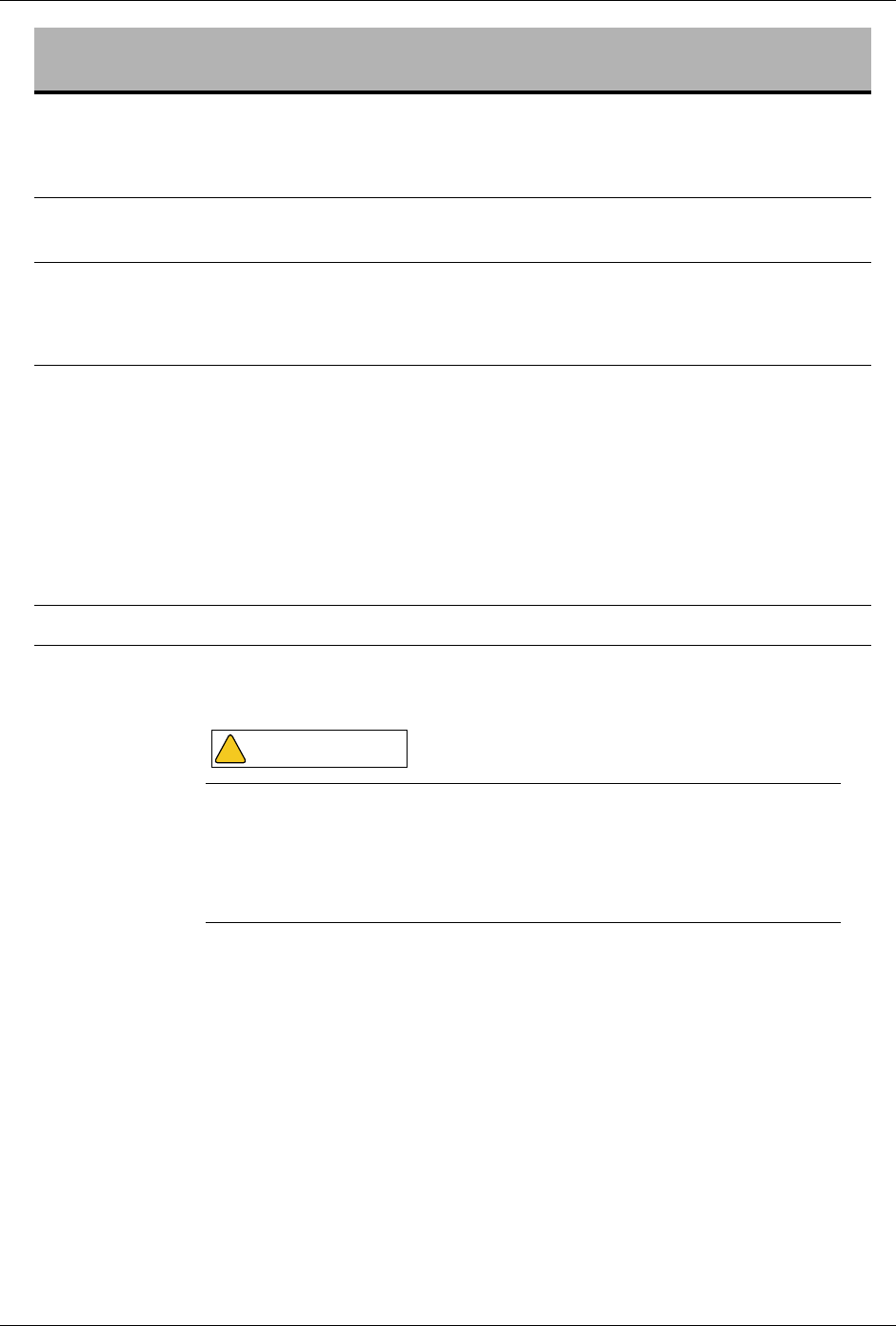
Chapter 15: Alarms and Troubleshooting
15-189 Cod. 6992200 - Rev. /
CHEMICAL PROCESS NOT PROPERLY PERFORMED: DISINFECTANT TANK
EMPTY 533
Reason
for Alarm Chemical Disinfection process not correctly performed because the
disinfectant tank is empty. Repeat the Chemical Disinfection process.
Machine
Actions • None.
Possible Cause Suggested Action
1. The disinfectant tank is empty. 1. Check the level of the disinfectant tank:
• If the disinfectant tank is empty, press
the CONFIRM button and, at the and of
the chemical disinfection procedure,
replace the disinfectant tank with a new
one. Repeat the disinfection procedure.
• If the disinfectant tank is full, press the
CONFIRM button and call for service.
Call for Service if the alarm persists.
When this alarm is triggered, the Chemical Disinfection process
has not been correctly performed because the disinfectant tank is
empty.
Repeat the Chemical Disinfection process using a tank containing
enough disinfectant solution.
WARNING
!
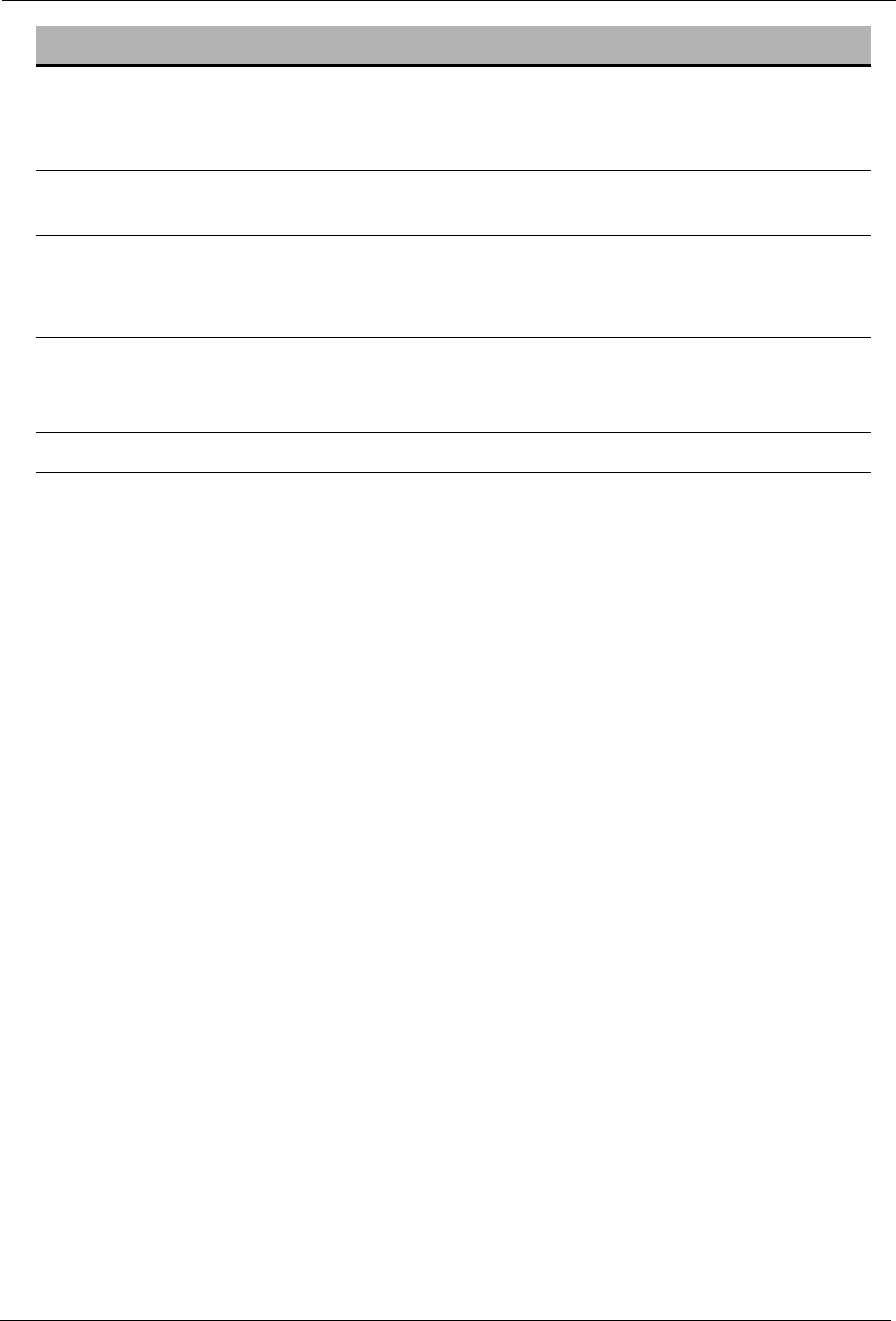
ARTIS Operator’s Manual
Cod. 6992200 - Rev. / 15-190
DISINFECTION NOT PROPERLY PERFORMED 534
Reason
for Alarm The programmed chemical process set by the operator has been
interrupted before the process completion.
Machine
Actions • None.
Possible Cause Suggested Action
1. The disinfection process needs to be
completed. 1. Press the CONFIRM button and start
the process.
If the alarm persists, call for service.
Call for Service if the alarm persists.

Chapter 15: Alarms and Troubleshooting
15-191 Cod. 6992200 - Rev. /
DIASCAN MEASUREMENT ERROR 536
Reason
for Alarm The DIASCAN has not been able to complete a measurement.
Machine
Actions • None.
Possible Cause Suggested Action
1. The DIASCAN has not been able to
complete a measurement. 1. Press the CONFIRM button and wait for
the next Diascan measurement.
Call for Service if the alarm persists.
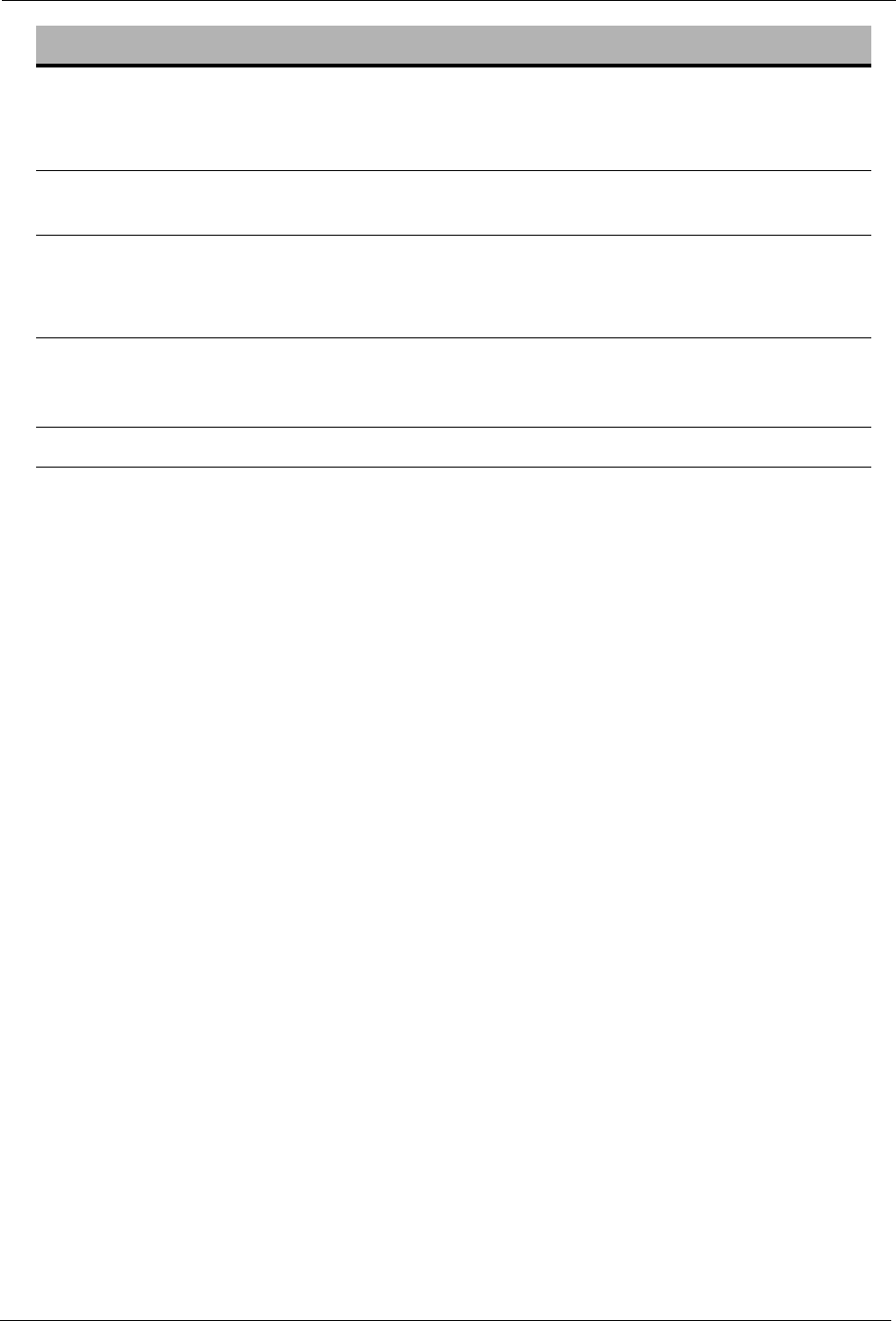
ARTIS Operator’s Manual
Cod. 6992200 - Rev. / 15-192
WATER LEAKAGE 539
Reason
for Alarm A leakage was detected by the Water Leakage sensor in the hydraulic
circuit.
Machine
Actions • The dialysis fluid goes into Bypass.
Possible Cause Suggested Action
1. A water leakage was detected in the
hydraulic circuit. 1. If possible, start with the Rinseback
procedure, otherwise switch off the
machine.
Call for Service if the alarm persists.

Chapter 15: Alarms and Troubleshooting
15-193 Cod. 6992200 - Rev. /
DIALYSATE PRESSURE LOW 540
Reason
for Alarm The pressure in the Ultrafilter is lower than the permitted limit.
Machine
Actions • All the pumps are stopped;
• The dialysis fluid goes into Bypass.
Possible Cause Suggested Action
1. The Ultrafilter is clogged. 1. If in treatment, the dialysis process in
progress can be continued by
decreasing the dialysis fluid flow rate
and pressing the CONFIRM button to
restart the current operation of the
machine.
When the treatment is complete,
replace the Ultrafilter according to the
procedure.
2. The Dialysis fluid connectors are not
properly positioned. 2. Verify that the Dialysis fluid connectors
are properly positioned to the dialyzer
or to the machine, depending upon the
phase of the machine at that time.
Press the CONFIRM button to restart
the current operation of the machine.
Call for Service if the alarm persists.
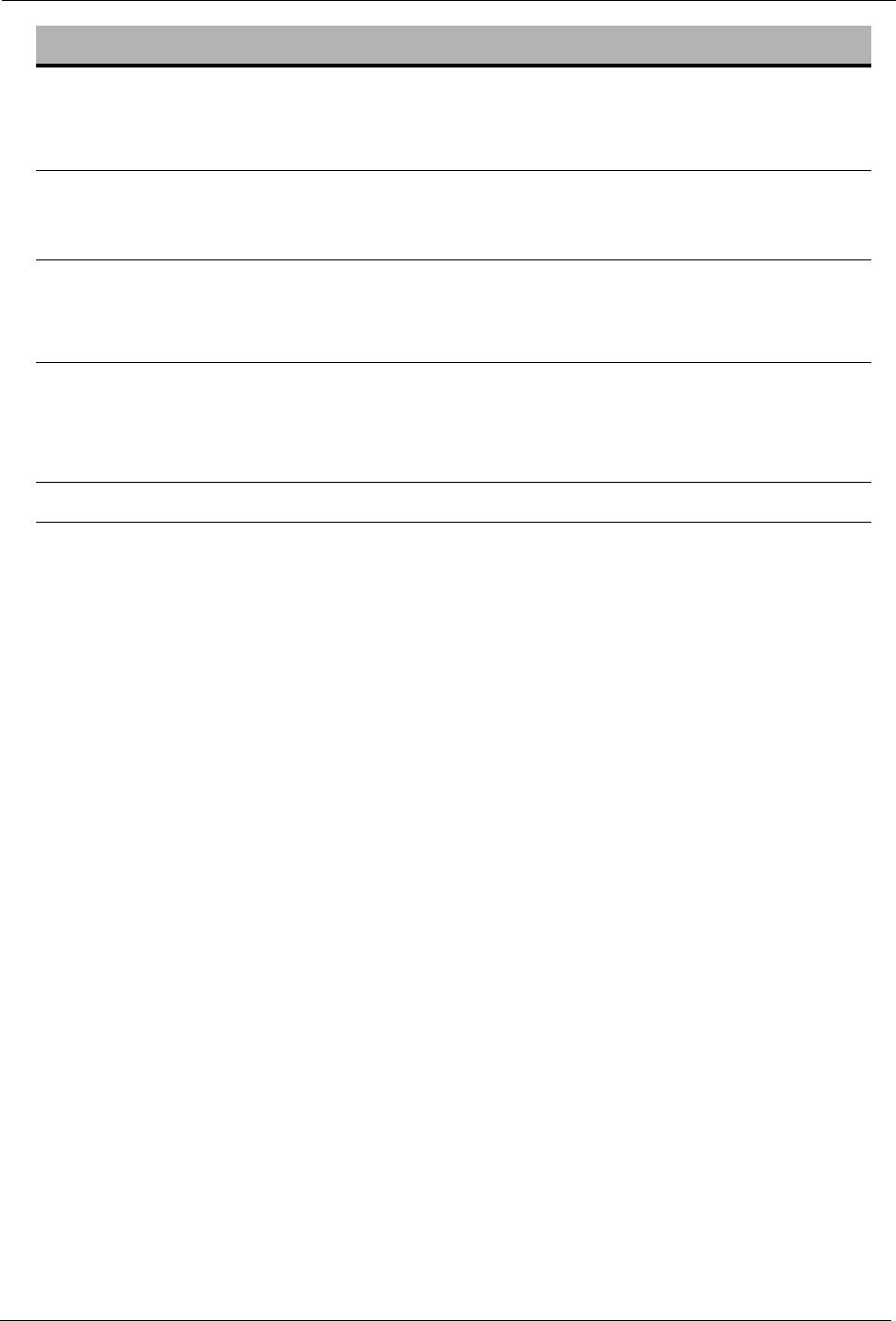
ARTIS Operator’s Manual
Cod. 6992200 - Rev. / 15-194
PRE FILTER PRESSURE HIGH 541
Reason
for Alarm The Pre Filter Pressure is higher than the allowed limit.
Machine
Actions • The UF Rate is automatically set to zero;
• The Arterial Pump is stopped;
• The Venous Line Clamp is closed.
Possible Cause Suggested Action
1. The Venous Patient Line is clamped or
kinked. 1. Check that the Venous Patient Line is
not clamped or kinked.
Carefully check the Venous Patient
Line connections.
Call for Service if the alarm persists.
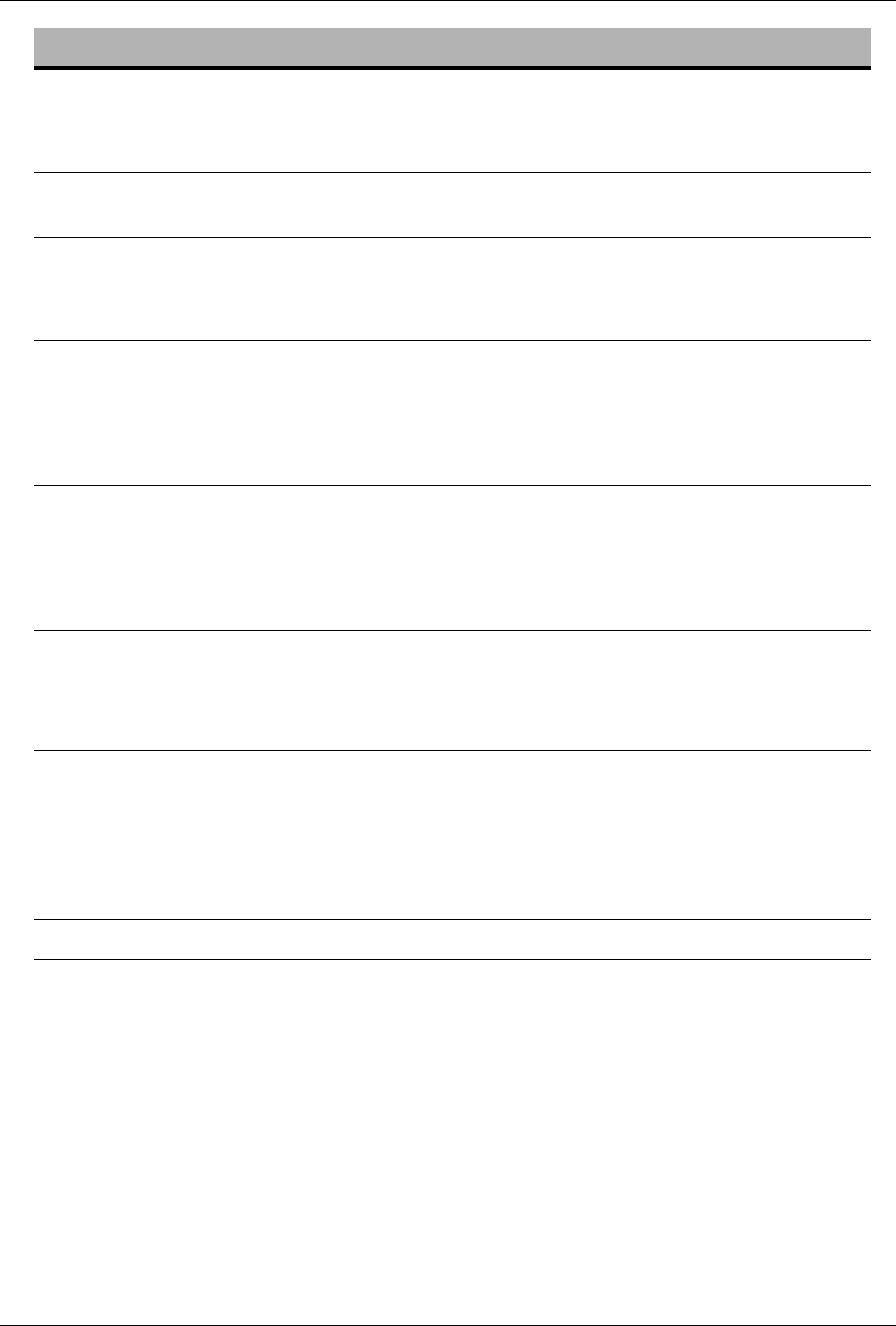
Chapter 15: Alarms and Troubleshooting
15-195 Cod. 6992200 - Rev. /
INCORRECT CASSETTE LINE CONNECTIONS OR CLAMPS STATUS 542
Reason
for Alarm The Ultra/Blood Cassette Line connections or the Ultra/Blood Cassette
Line Clamps status is incorrect.
Machine
Actions • All the pumps are stopped.
Possible Cause Suggested Action
1. The Venous/Arterial Patient Lines have
not been inserted in the EvaClean
Ports.
1. Check that the Venous/Arterial Patient
Lines are inserted in the EvaClean
Ports.
Then press the CONFIRM button to
remove the alarm.
2. The Venous/Arterial Dialyzer Line is not
securely connected to the dialyzer. 2. Check that the Venous/Arterial Dialyzer
Lines are firmly connected to the
dialyzer.
Then press the CONFIRM button to
remove the alarm.
3. The Ultra Inlet Line is not securely
connected to the Ultra Port. 3. Check that the Ultra Inlet Line is firmly
connected to the Ultra Port.
Then press the CONFIRM button to
remove the alarm.
4. A line on the Ultra/Blood Cassette
(Ultra Service Line, Rinseback Service
Line or Venous/Arterial Infusion Lines)
may be unclamped.
4. Check that the clamps on the Ultra
Service Line, Rinseback Service Line
and Venous/Arterial Infusion Lines are
securely closed.
Then press the CONFIRM button to
remove the alarm.
Call for Service if the alarm persists.
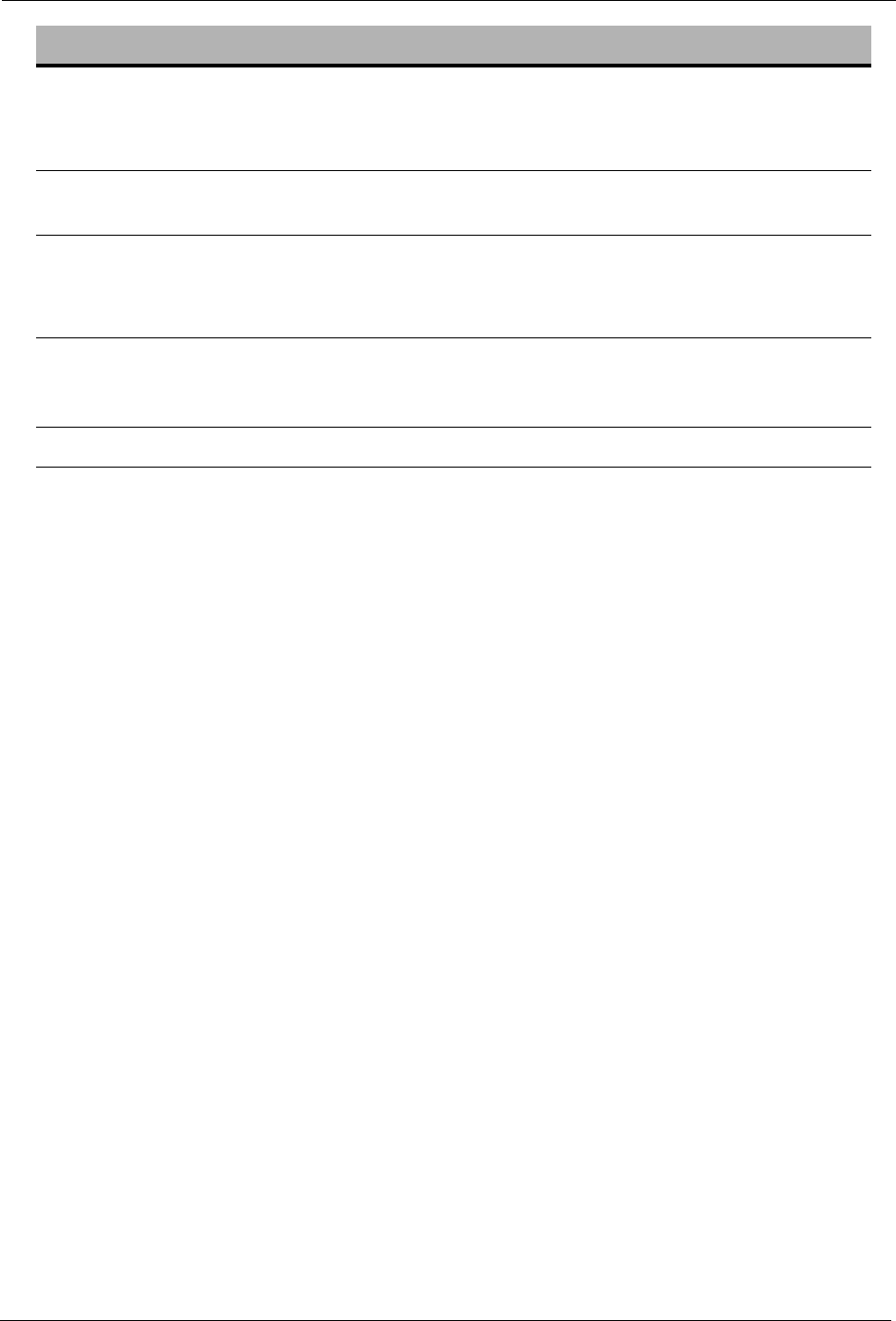
ARTIS Operator’s Manual
Cod. 6992200 - Rev. / 15-196
ULTRA SCAN ABORTED: TMP SET AND UPPER LIMIT UPDATED 543
Reason
for Alarm The Ultra Scan has been aborted: the TMP Set and the Upper Limit have
been consequently updated.
Machine
Actions • None.
Possible Cause Suggested Action
1. The Ultra Scan has been aborted: the
TMP set and the Upper Limit have been
consequently up-dated.
1. Press the CONFIRM button to remove
the alarm.
Call for Service if the alarm persists.

Chapter 15: Alarms and Troubleshooting
15-197 Cod. 6992200 - Rev. /
ULTRA SCAN COMPLETED: TMP SET AND UPPER LIMIT UPDATED 544
Reason
for Alarm The Ultra Scan has been completed: the TMP Set and the Upper Limit
have been consequently updated.
Machine
Actions • None.
Possible Cause Suggested Action
1. The Ultra Scan has been completed:
the TMP set and the Upper Limit have
been consequently up-dated.
1. Press the CONFIRM button to remove
the alarm.
Call for Service if the alarm persists.
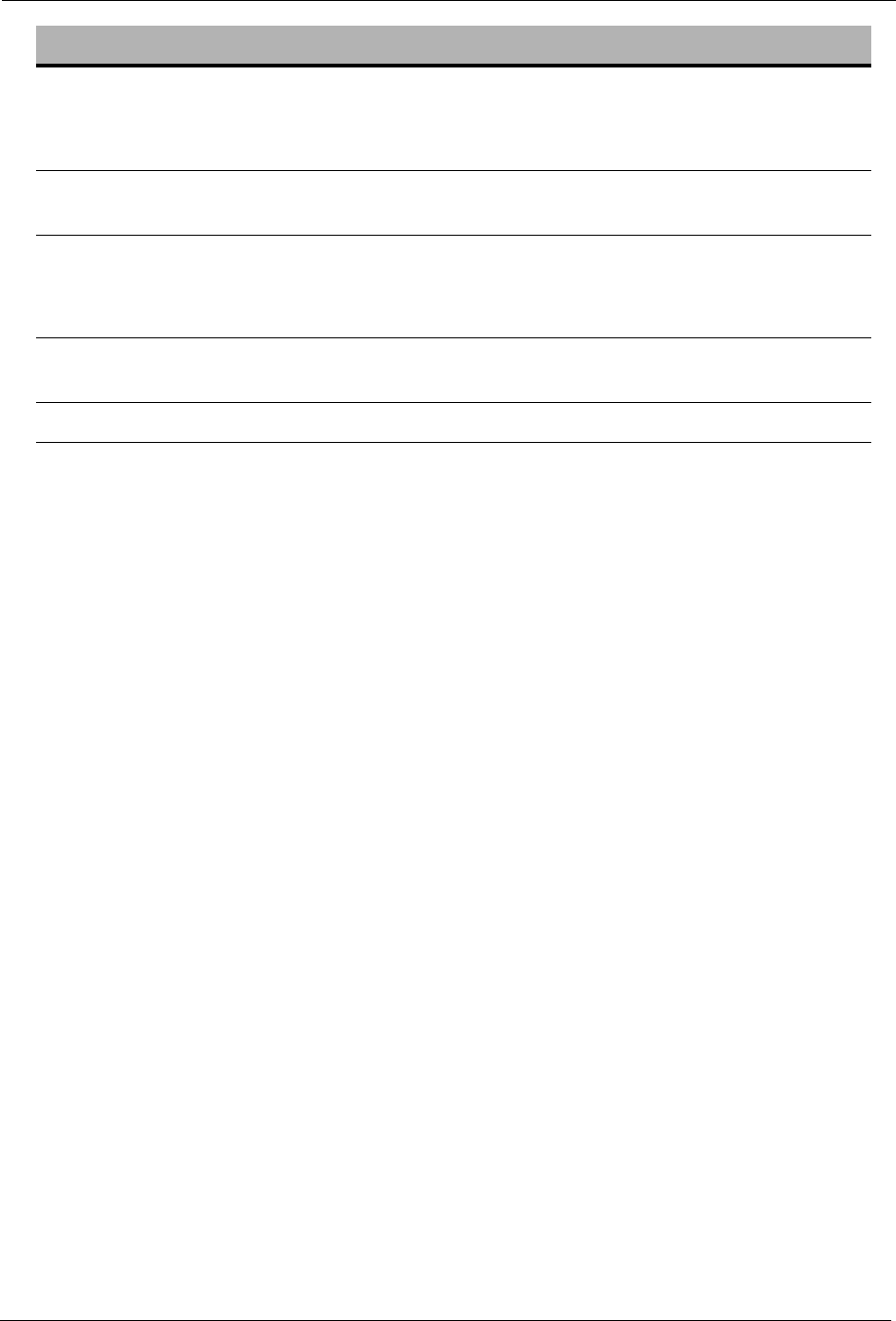
ARTIS Operator’s Manual
Cod. 6992200 - Rev. / 15-198
NEW ULTRA SCAN IS SUGGESTED 545
Reason
for Alarm Notification: the Ultra Scan has been completed.
Machine
Actions • None.
Possible Cause Suggested Action
1. The Ultra Scan has been completed. 1. Perform a new scan and press the
CONFIRM button to remove the alarm.
Call for Service if the alarm persists.

Chapter 15: Alarms and Troubleshooting
15-199 Cod. 6992200 - Rev. /
MAXIMUM SUBSTITUTION VOLUME REACHED 546
Reason
for Alarm The Maximum Substitution Volume has been reached: one liter has been
saved for performing on-line restitution.
Machine
Actions • The HDF button is locked.
Possible Cause Suggested Action
1. The Maximum Substitution Volume has
been reached: one liter has been saved
for performing on-line restitution.
1. Press the CONFIRM button to remove
the alarm.
Call for Service if the alarm persists.
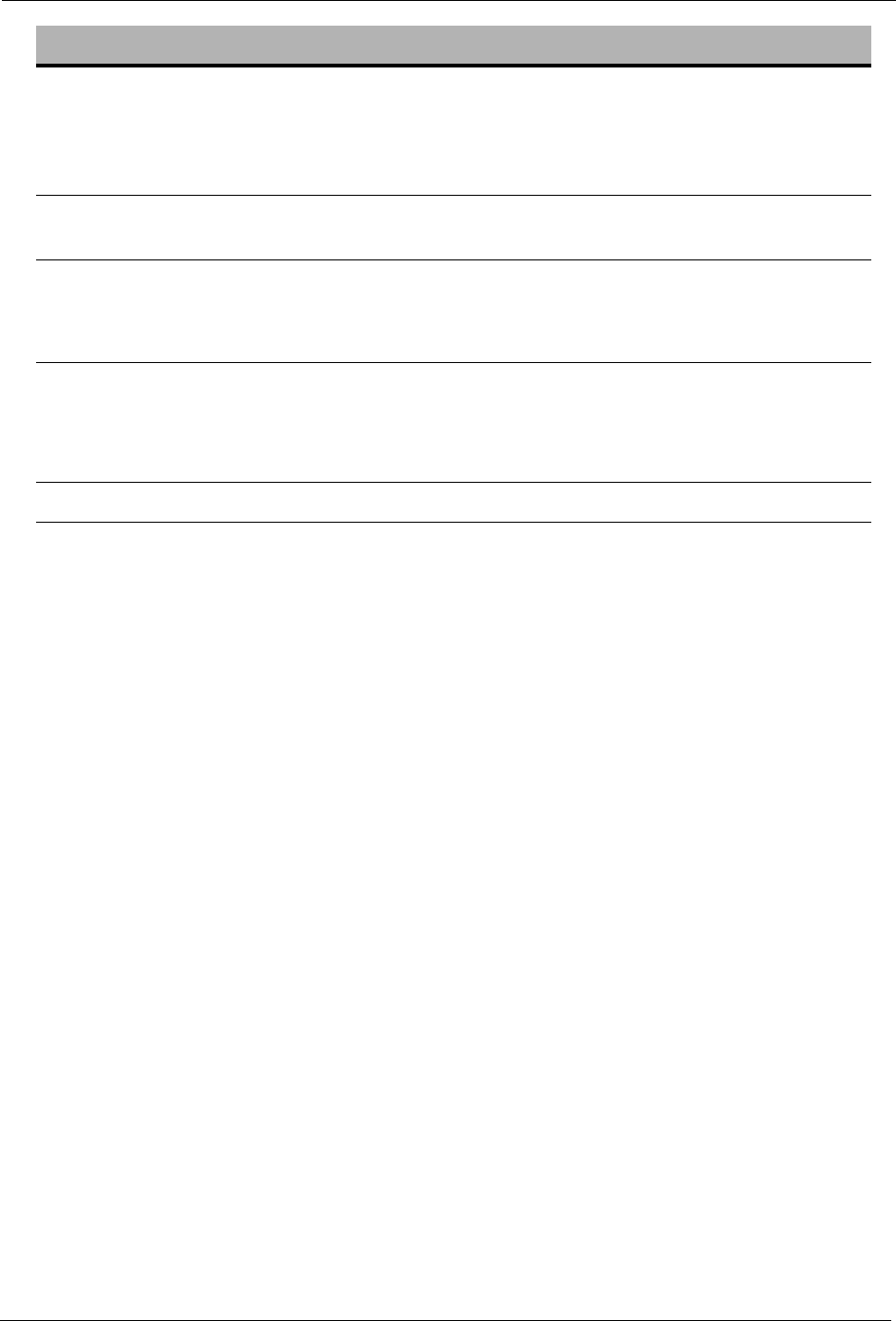
ARTIS Operator’s Manual
Cod. 6992200 - Rev. / 15-200
PATIENT VENOUS LINE INCORRECT POSITION 547
Reason
for Alarm The position of the Venous Patient Line is incorrect. Probably during
priming the Venous Patient Line has not been inserted under the Venous
Line Clamp.
Machine
Actions • The dialysis fluid goes into Bypass.
Possible Cause Suggested Action
1. The Venous Patient Line has not been
inserted under the Venous Line Clamp. 1. Carefully check that the Venous Patient
Line is under the Venous Line Clamp.
Then press the CONFIRM button and
continue the process.
Call for Service if the alarm persists.
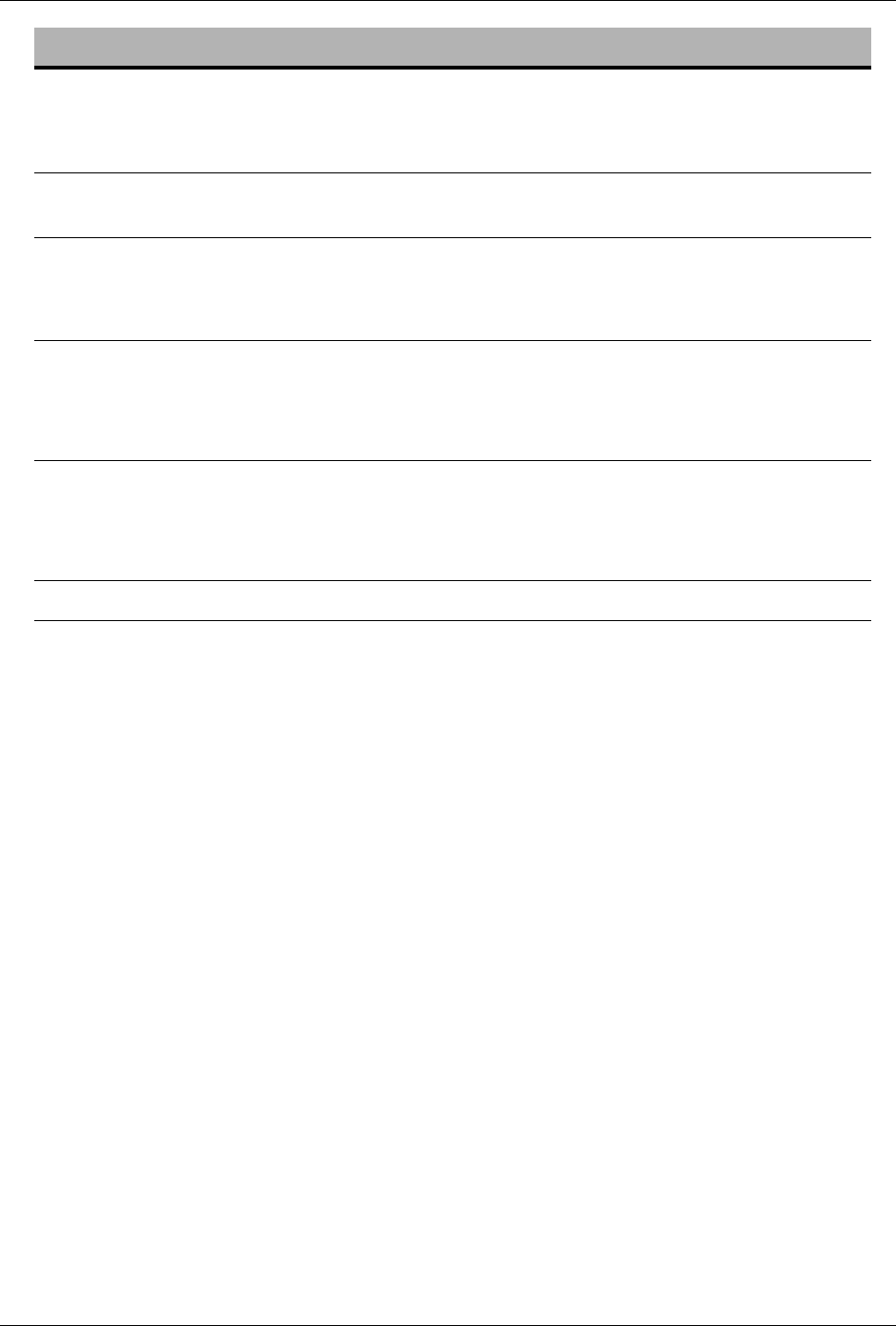
Chapter 15: Alarms and Troubleshooting
15-201 Cod. 6992200 - Rev. /
LEAKAGES H 548
Reason
for Alarm Failure of the leakages test on the PDrain, PFS or PO: negative pressure
failure on the internal bypass circuit.
Machine
Actions • The phase currently running stops;
• All the pumps are stopped.
Possible Cause Suggested Action
1. The Red and Blue Dialysis Fluid Tubes
are not properly connected. 1. Verify that the Red and Blue Dialysis
Fluid Tubes are properly connected.
Press the CONFIRM button to repeat
the current leakages test.
2. The Venous and Arterial Patient Lines
are not properly connected to the
EvaClean port.
2. Verify that the Venous and Arterial
Patient Lines are properly connected.
Press the CONFIRM button to repeat
the current leakage test.
Call for Service if the alarm persists.
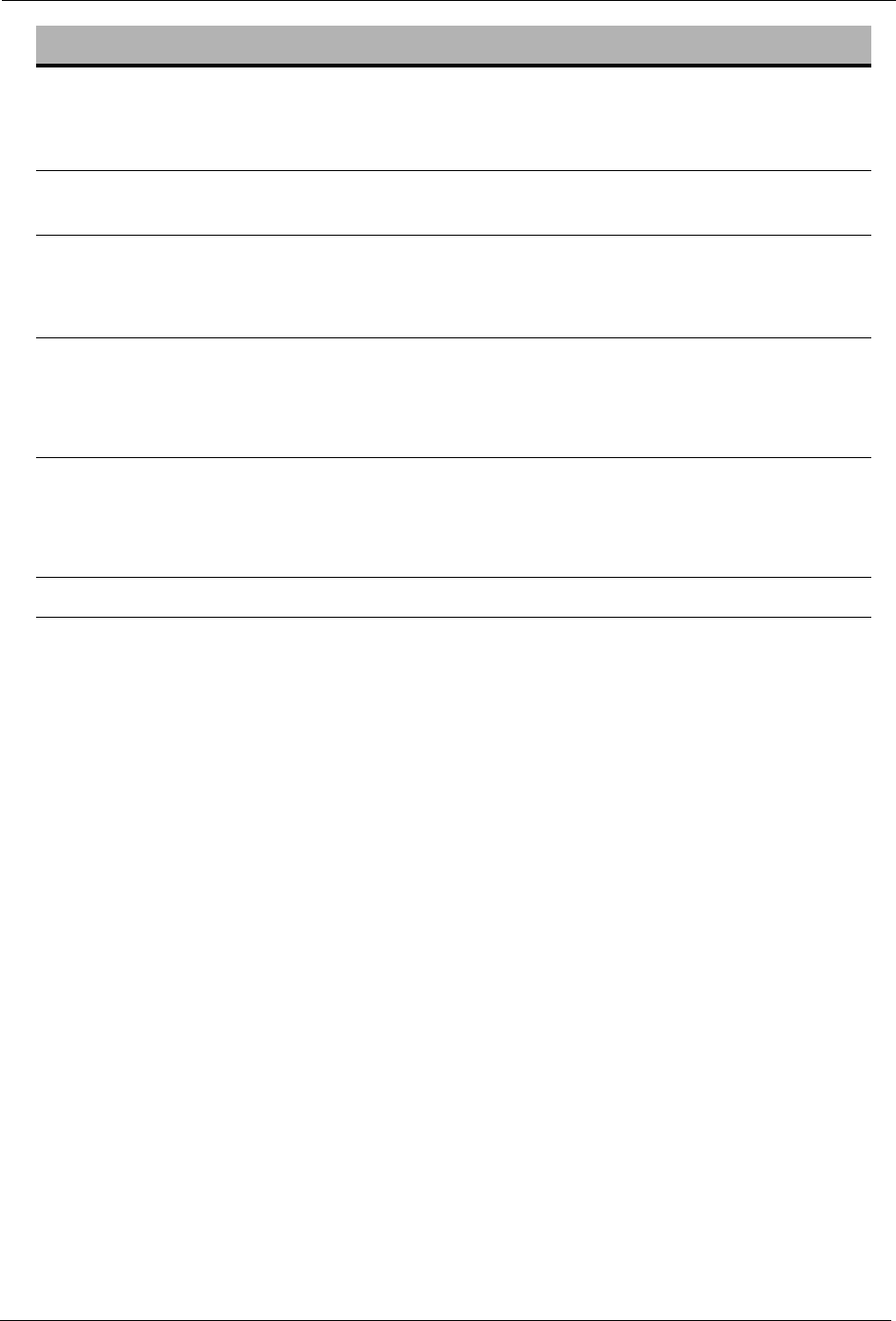
ARTIS Operator’s Manual
Cod. 6992200 - Rev. / 15-202
LEAKAGES I 549
Reason
for Alarm Failure of the leakages test on delivery of dialysis fluid in the hydraulic
circuit and control of the patient weight loss.
Machine
Actions • The phase currently running stops;
• All the pumps are stopped.
Possible Cause Suggested Action
1. The Red and Blue Dialysis Fluid Tubes
are not properly connected. 1. Verify that the Red and Blue Dialysis
Fluid Tubes are properly connected.
Press the CONFIRM button to repeat
the current leakages test.
2. The Venous and Arterial Patient Lines
are not properly connected to the
EvaClean port.
2. Verify that the Venous and Arterial
Patient Lines are properly connected.
Press the CONFIRM button to repeat
the current leakage test.
Call for Service if the alarm persists.

Chapter 15: Alarms and Troubleshooting
15-203 Cod. 6992200 - Rev. /
POWER FAILURE: CHECK POWER SUPPLY 550
Reason
for Alarm A Power Failure occurred during on-line treatment.
Machine
Actions • None.
Possible Cause Suggested Action
1. A Power Failure occurred during on-line
treatment. 1. Check the power supply, in case no
recovery is possible:
• Press the CONFIRM button to remove
the alarm.
• Switch to HD treatment;
• Perform a rinseback procedure;
• Switch off the machine.
Call for Service if the alarm persists.
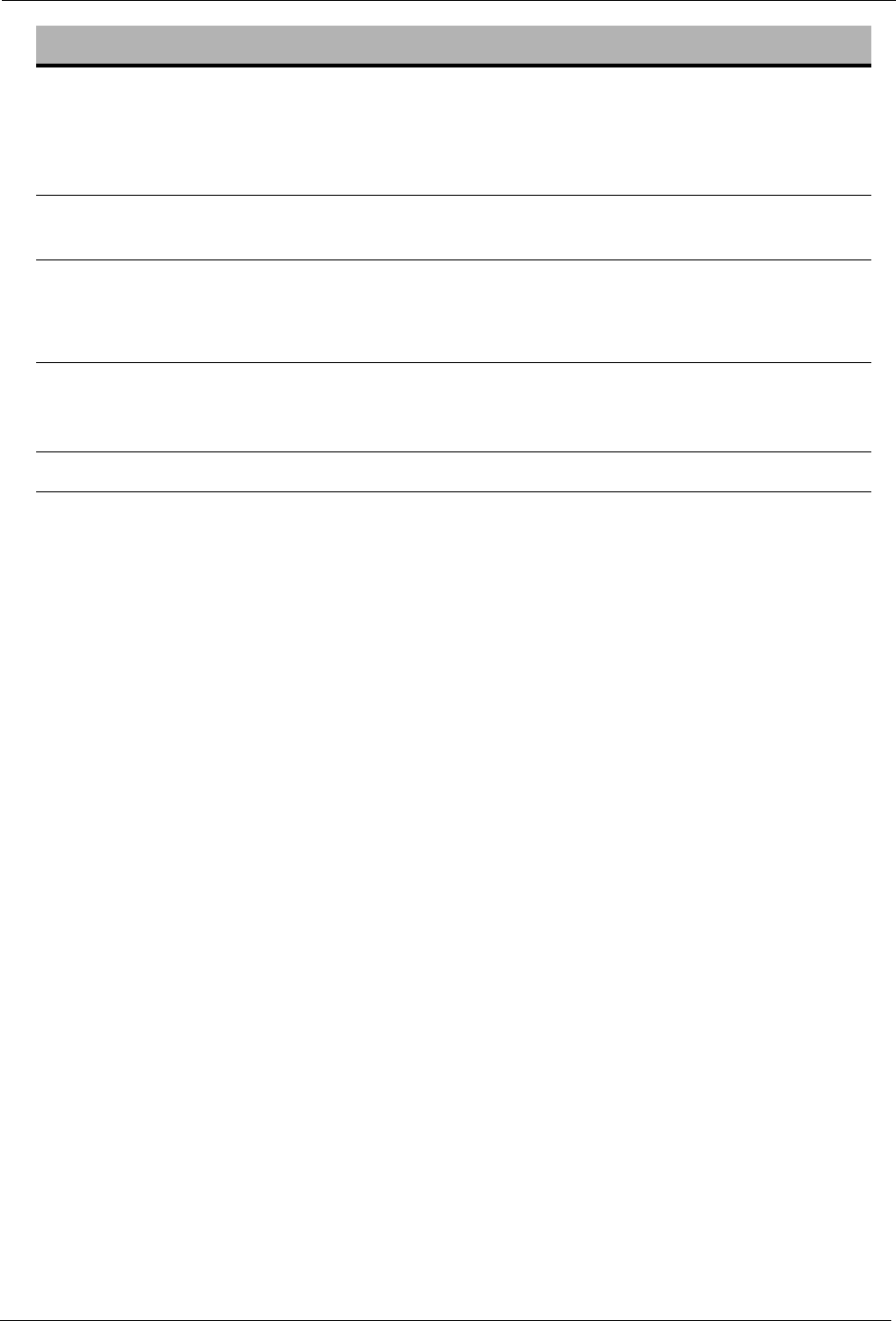
ARTIS Operator’s Manual
Cod. 6992200 - Rev. / 15-204
80% MAXIMUM SUBSTITUTION VOLUME REACHED 551
Reason
for Alarm The maximum substitution volume has been reached (allowed by the
U2000 ultrafilter): the actual value reaches 80% of the maximum limit
(150L).
Machine
Actions • None.
Possible Cause Suggested Action
1. The maximum substitution volume has
been reached: the actual value reaches
80% of the maximum limit (150L).
1. Press the CONFIRM button to remove
the alarm.
Call for Service if the alarm persists.
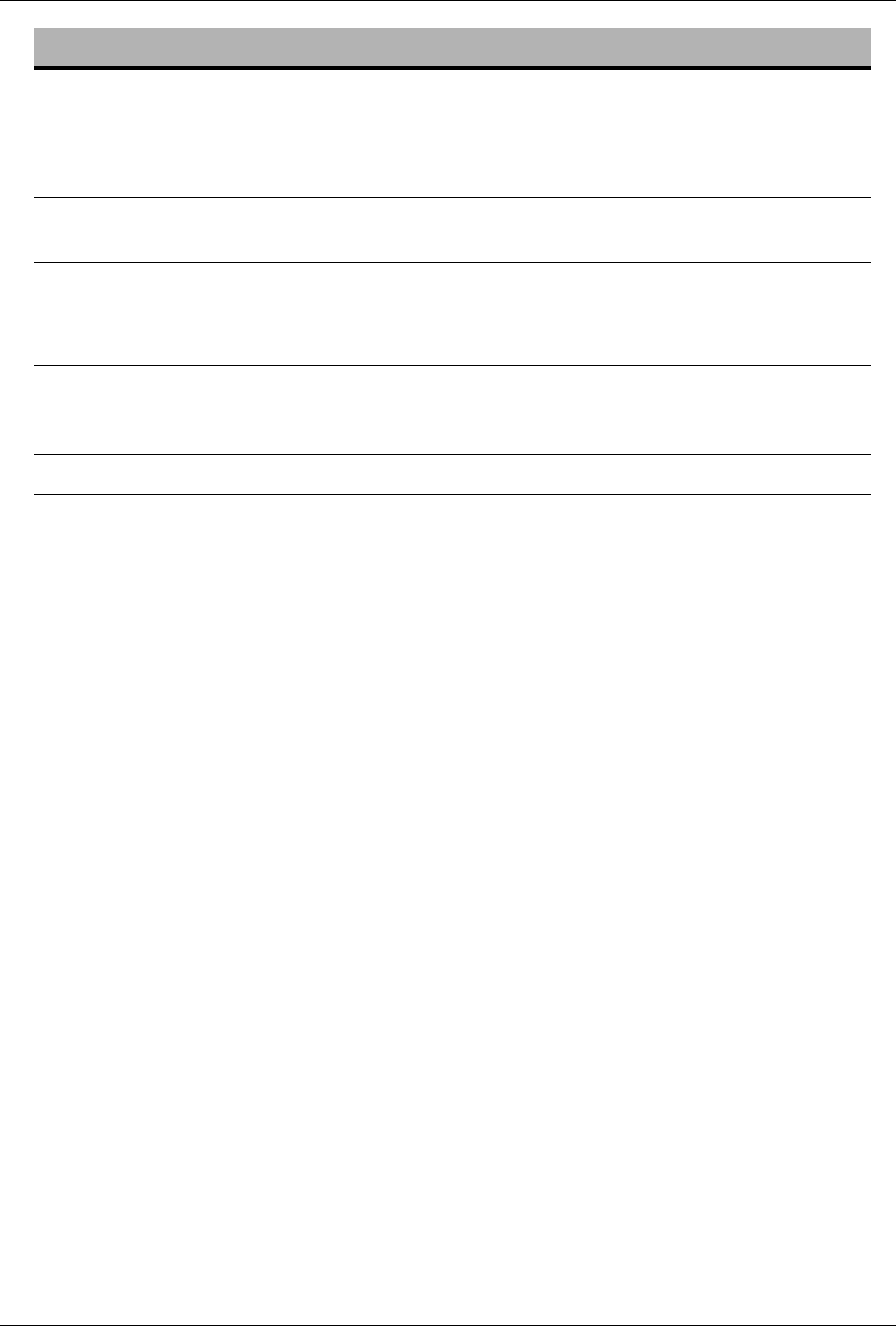
Chapter 15: Alarms and Troubleshooting
15-205 Cod. 6992200 - Rev. /
90% MAXIMUM SUBSTITUTION VOLUME REACHED 552
Reason
for Alarm The maximum substitution volume has been reached (allowed by the
U2000 ultrafilter): the actual value reaches 90% of the maximum limit
(150L).
Machine
Actions • None.
Possible Cause Suggested Action
1. The maximum substitution volume has
been reached: the actual value reaches
90% of the maximum limit (150L).
1. Press the CONFIRM button to remove
the alarm.
Call for Service if the alarm persists.
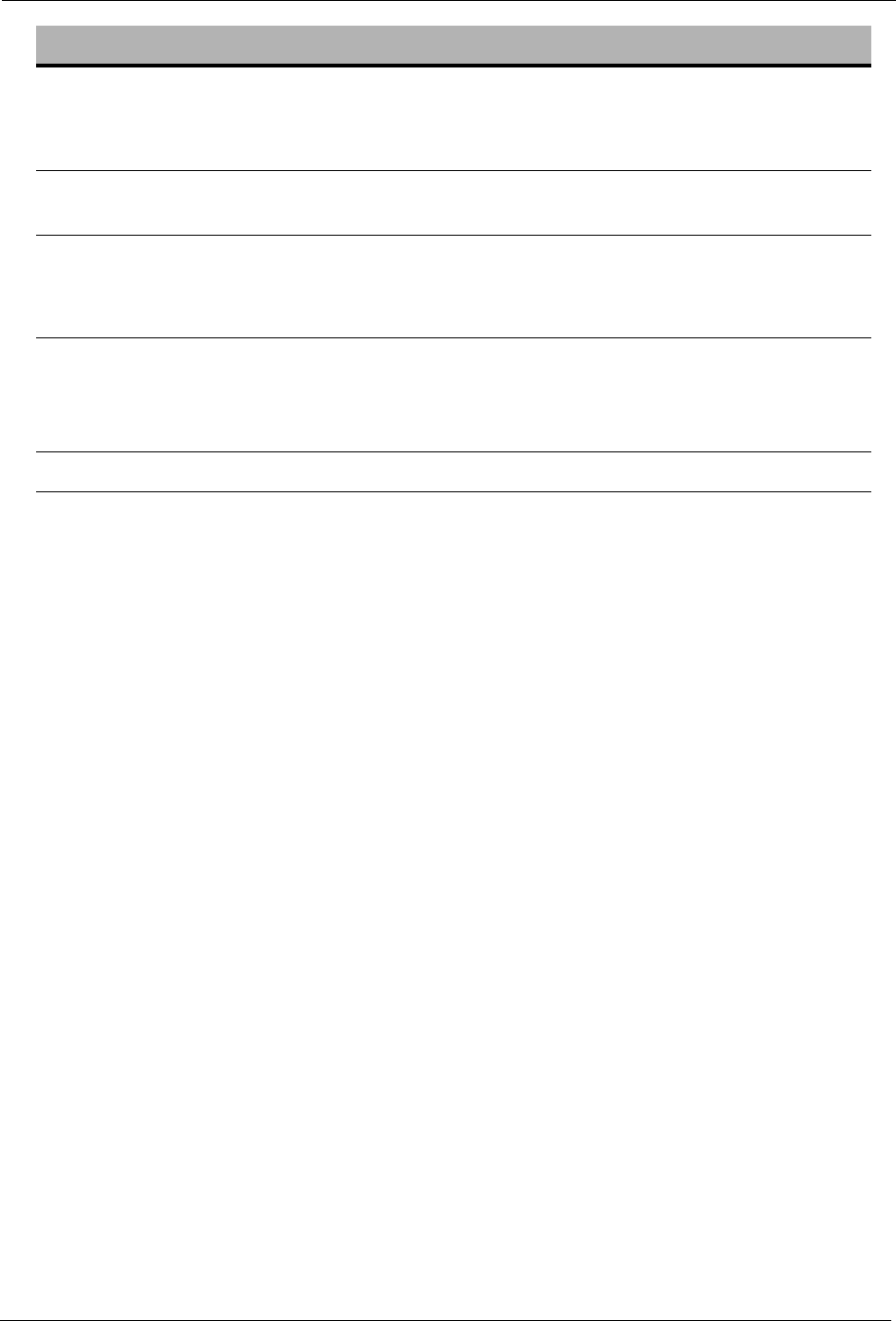
ARTIS Operator’s Manual
Cod. 6992200 - Rev. / 15-206
MAXIMUM SUBSTITUTION VOLUME REACHED 553
Reason
for Alarm Notification: the machine has stopped the substitution process in order to
save the remaining one liter for performing on-line restitution.
Machine
Actions • The HDF button is locked.
Possible Cause Suggested Action
1. The machine has stopped the
substitution process in order to save the
remaining one liter for performing on-
line restitution.
1. Press the CONFIRM button to remove
the alarm.
Call for Service if the alarm persists.

Chapter 15: Alarms and Troubleshooting
15-207 Cod. 6992200 - Rev. /
HEMOCONTROL ERROR 554
Reason
for Alarm A failure on the Hemocontrol has been verified.
Machine
Actions The dialysis fluid goes into Bypass.
Possible Cause Suggested Action
1. A failure on the Hemocontrol has been
verified. 1. Deactivate the Hemocontrol, then press
the CONFIRM button.
Call for Service if the alarm persists.
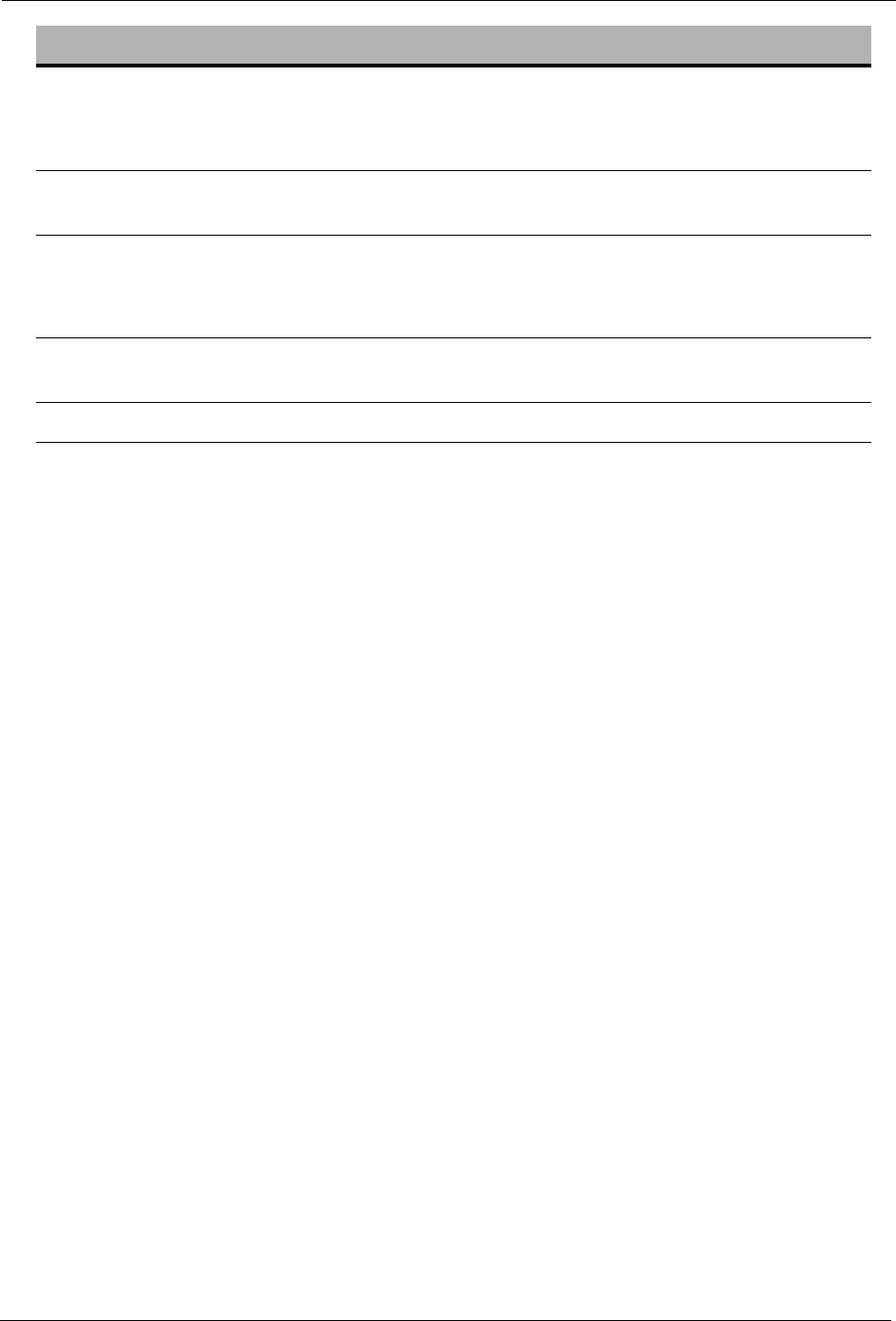
ARTIS Operator’s Manual
Cod. 6992200 - Rev. / 15-208
ULTRA INLET TUBE CLAMPED 556
Reason
for Alarm The Ultra Inlet Line is clamped when it should not be.
Machine
Actions • None.
Possible Cause Suggested Action
1. The Ultra Inlet Line is clamped. 1. Check the Ultra Inlet Line and remove
any clamps.
Call for Service if the alarm persists.

Chapter 15: Alarms and Troubleshooting
15-209 Cod. 6992200 - Rev. /
CASSETTE REPOSITIONING FAILED 557
Reason
for Alarm In HDF mode, the Ultra Cassette Repositioning Procedure has failed.
Machine
Actions • None.
Possible Cause Suggested Action
1. In HDF mode, the Ultra Cassette
Repositioning Procedure has failed. 1. Press the CONFIRM button to remove
the alarm and to restart the Arterial
Pump.
Call for Service if the alarm persists.
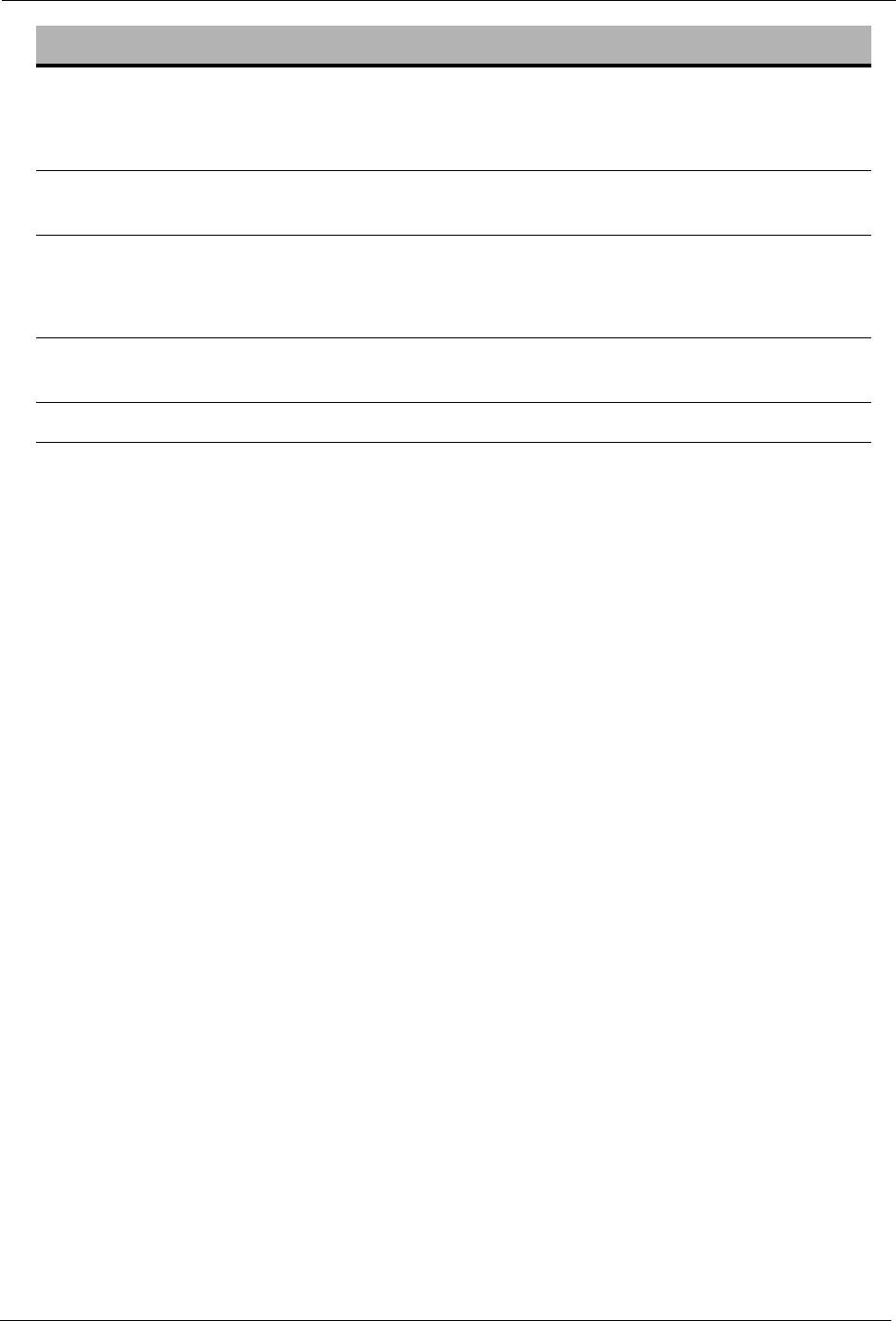
ARTIS Operator’s Manual
Cod. 6992200 - Rev. / 15-210
REMINDER: 558
Reason
for Alarm Notification: the set time has elapsed for the note entered on the keyboard
window.
Machine
Actions • None.
Possible Cause Suggested Action
1. The set time has elapsed for the note
entered on the keyboard window. 1. Press the CONFIRM button to remove
the alarm.
Call for Service if the alarm persists.

Chapter 15: Alarms and Troubleshooting
15-211 Cod. 6992200 - Rev. /
PREPARATION COMPLETED 559
Reason
for Alarm Notification: the preparation process has been completed.
Machine
Actions • None.
Possible Cause Suggested Action
1. The preparation process has been
completed. 1. Press the CONFIRM button to remove
the alarm.
Call for Service if the alarm persists.
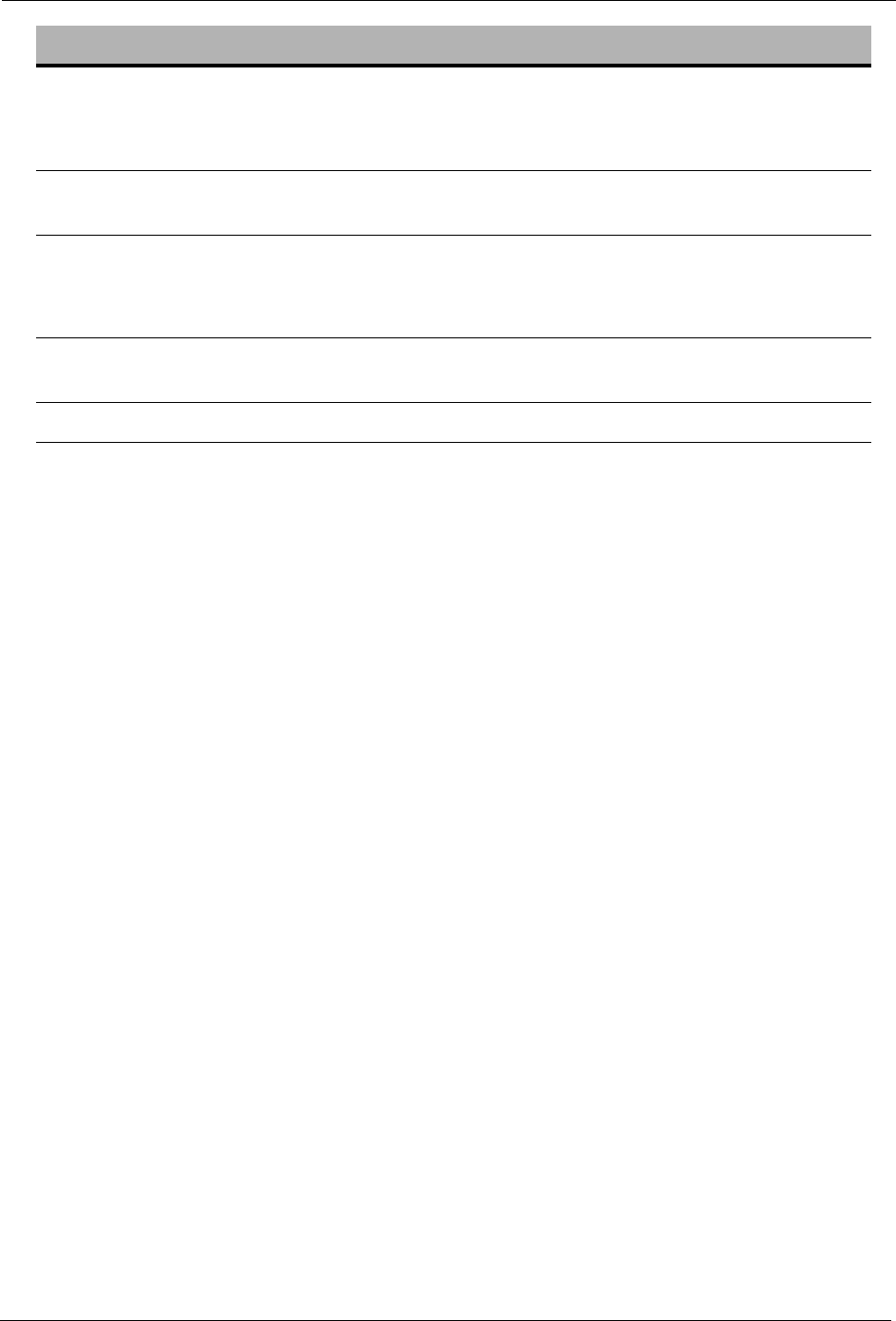
ARTIS Operator’s Manual
Cod. 6992200 - Rev. / 15-212
PRIMING COMPLETED 560
Reason
for Alarm Notification: the Priming sub-process has been completed.
Machine
Actions • None.
Possible Cause Suggested Action
1. The Priming sub-process has been
completed. 1. Press the CONFIRM button to remove
the alarm.
Call for Service if the alarm persists.
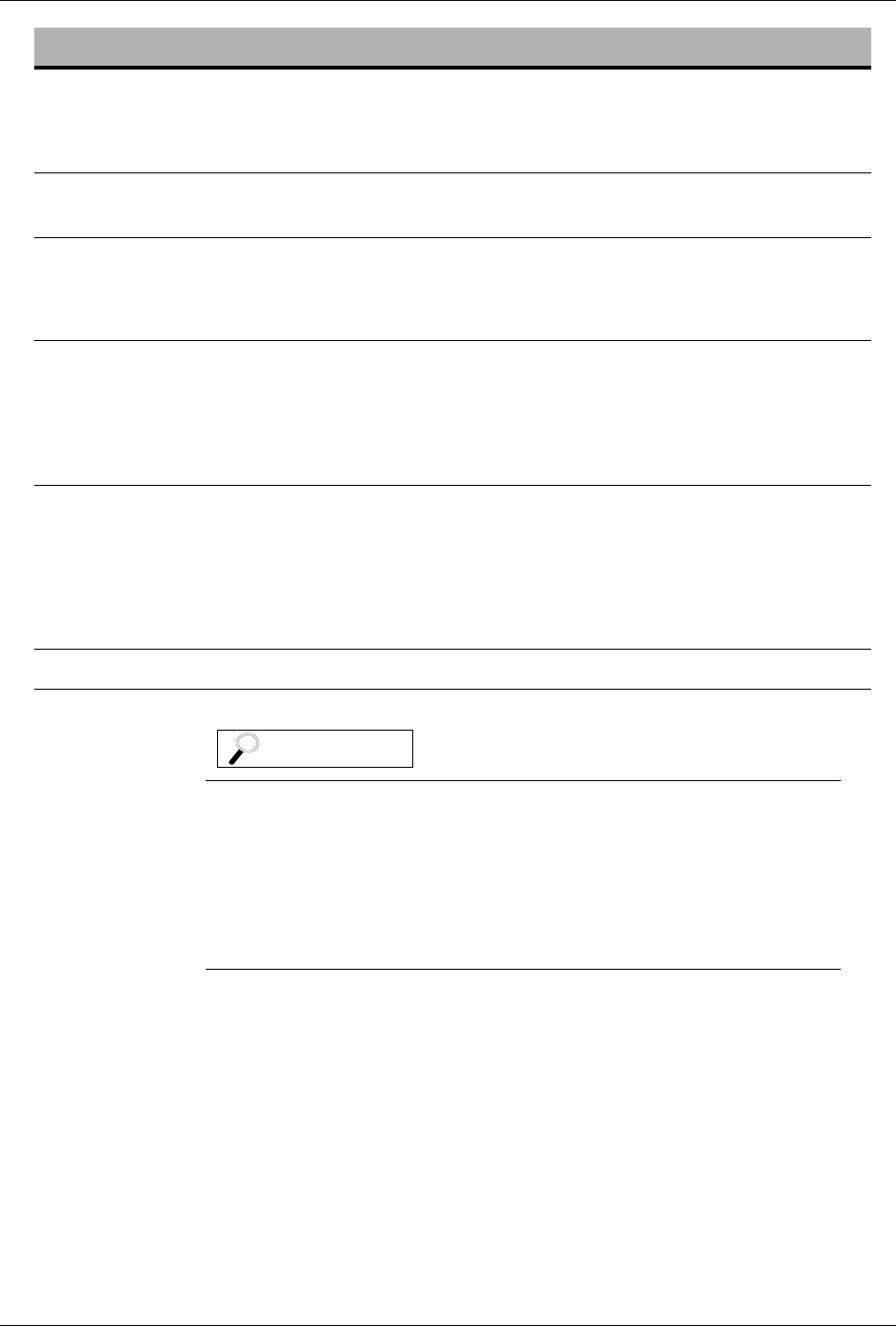
Chapter 15: Alarms and Troubleshooting
15-213 Cod. 6992200 - Rev. /
AUTOSCHEDULED DISINFECTION/RINSE PROGRAM NOT PERFORMED 562
Reason
for Alarm The autoscheduled disinfection/rinse program has not been performed.
Machine
Actions • None.
Possible Cause Suggested Action
1. The autoscheduled disinfection/rinse
program has not been performed. 1. Press the CONFIRM button to remove
the alarm message.
Make sure that a Disinfection/Rinse
program has been performed before
starting a new treatment.
2. Following a Bacteriostatic Chemical
disinfection, the scheduled Disinfection/
Rinse program has not been performed
because the machine has automatically
performed a Rinse process instead of
the program scheduled.
2. Press the CONFIRM button to remove
the alarm.
Call for Service if the alarm persists.
This alarm will be triggered each time the machine is switched on
during the day in which the scheduled process has not been
performed (although the alarm message has been confirmed).
The alarm will be definitely removed the day after the one the
process has been scheduled, only if the alarm message has been
confirmed, otherwise it will continue to be triggered also in the
subsequent days.
NOTE
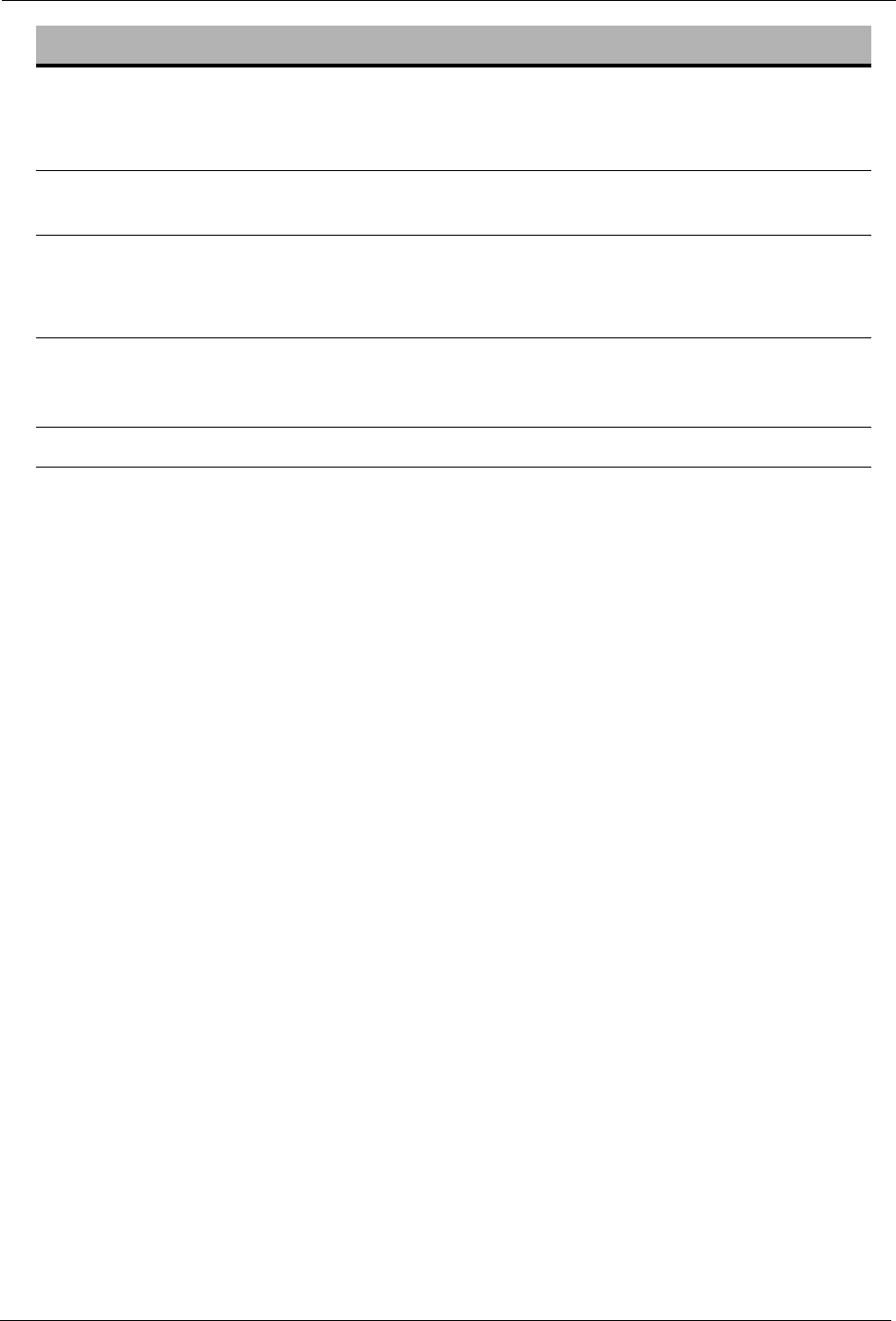
ARTIS Operator’s Manual
Cod. 6992200 - Rev. / 15-214
CDF2 ULTRAFILTER LOWER SWITCH ERROR 563
Reason
for Alarm The CDF2 second ultrafilter lower connector microswitch (SWLOWUF2) is
indicating an error condition.
Machine
Actions In ADR:
• The phase currently running stops.
Possible Cause Suggested Action
1. The CDF2 ultrafilter lower connector
microswitch is indicating an error
condition.
1. Check the correct position of the
ultrafilter.
Call for Service if the alarm persists.

Chapter 15: Alarms and Troubleshooting
15-215 Cod. 6992200 - Rev. /
ULTRAFILTER COVER ERROR 564
Reason
for Alarm The ultrafilter cover is not placed correctly.
Machine
Actions In ADR:
• The phase currently running stops.
Possible Cause Suggested Action
1. The ultrafilter cover is not placed
correctly. 1. Check the correct position of the
ultrafilter cover.
Call for Service if the alarm persists.
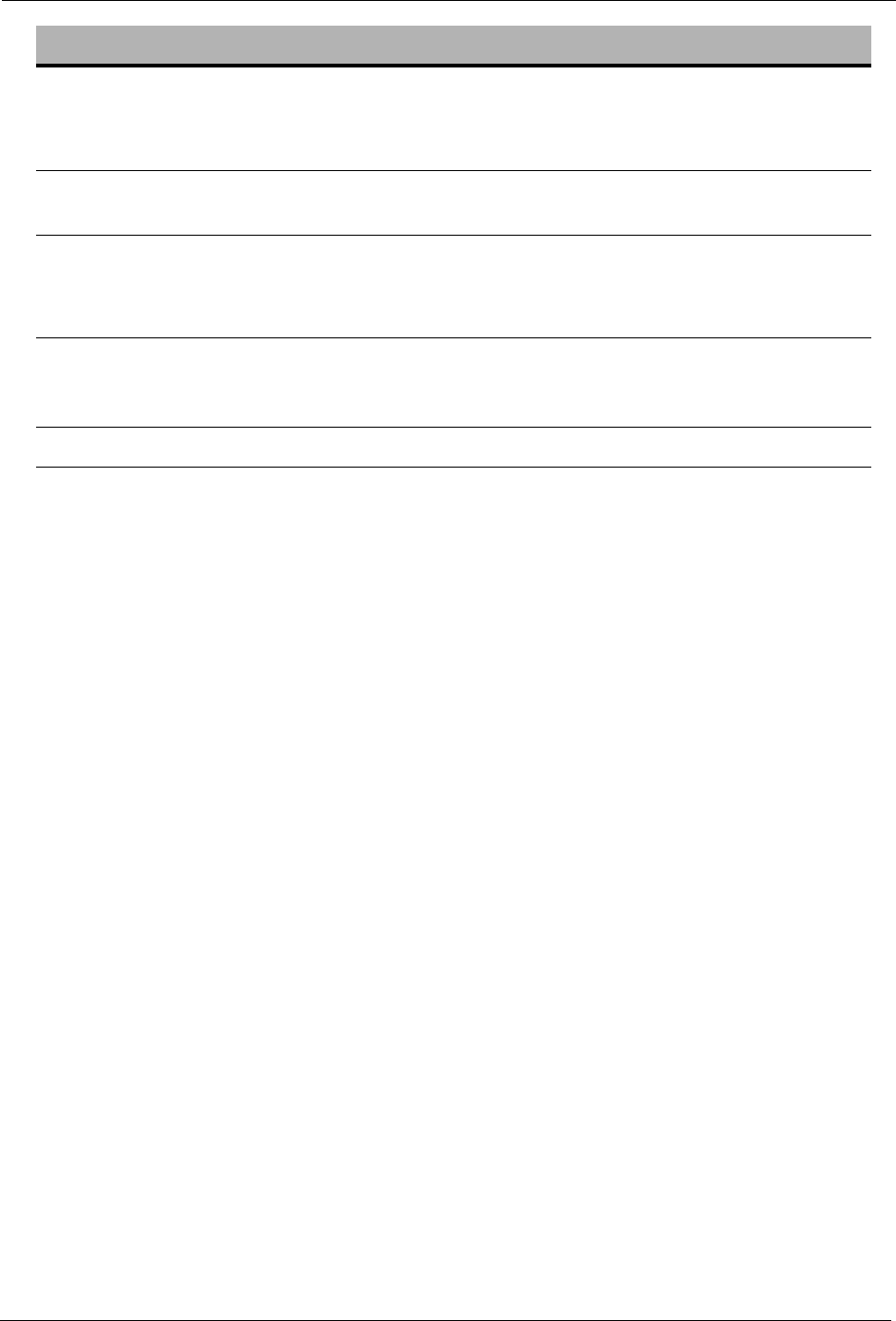
ARTIS Operator’s Manual
Cod. 6992200 - Rev. / 15-216
HYDRAULIC CENTRALISE ACETATE CONNECTOR TYPE ONE 565
Reason
for Alarm The Hydraulic Centralise Acetate Connector Type One is not placed
correctly.
Machine
Actions In ADR:
• The phase currently running stops.
Possible Cause Suggested Action
The Hydraulic Centralise Acetate
Connector Type One is not placed
correctly.
1. Check the correct position of the
Hydraulic Centralise Acetate Connector
Type One.
Call for Service if the alarm persists.

Chapter 15: Alarms and Troubleshooting
15-217 Cod. 6992200 - Rev. /
HYDRAULIC CENTRALISE ACETATE CONNECTOR TYPE TWO 566
Reason
for Alarm The Hydraulic Centralise Acetate Connector Type Two is not placed
correctly.
Machine
Actions In ADR:
• The phase currently running stops.
Possible Cause Suggested Action
1. The Hydraulic Centralise Acetate
Connector Type Two is not placed
correctly.
1. Check the correct position of the
Hydraulic Centralise Acetate Connector
Type Two.
Call for Service if the alarm persists.
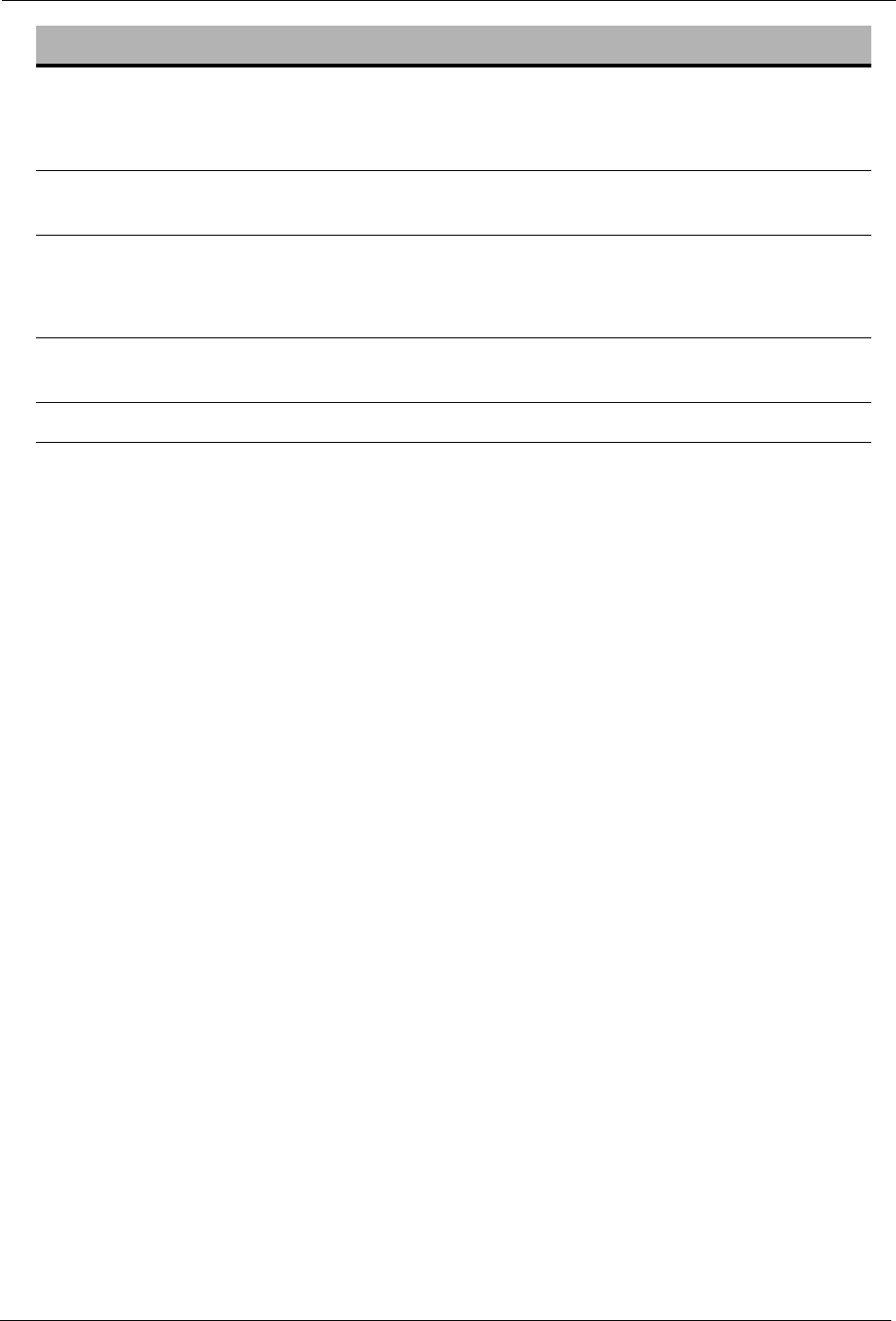
ARTIS Operator’s Manual
Cod. 6992200 - Rev. / 15-218
TMP SET TOO LOW 567
Reason
for Alarm During dialysis, the TMP set is lower than the actual TMP measured.
Machine
Actions • The Venous Pump is stopped.
• If the machine is performing UC scan, the procedure fails.
Possible Cause Suggested Action
1. The TMP set is lower than the actual
TMP measured. 1. Increase the TMP set value.
Call for Service if the alarm persists.

Chapter 15: Alarms and Troubleshooting
15-219 Cod. 6992200 - Rev. /
WRONG ACID/ACETATE CONNECTOR 568
Reason
for Alarm The position of the Acid Pick-up Tube Connector detected by the
Protective Subsystem is wrong (probably there is a misalignment with the
Hydraulic Subsystem).
Machine
Actions In ADR:
• The phase currently running stops.
Possible Cause Suggested Action
1. The Acid Pick-up Tube Connector is not
placed correctly. 1. Check the correct position of the Acid
Pick-up Tube Connector.
Call for Service if the alarm persists.
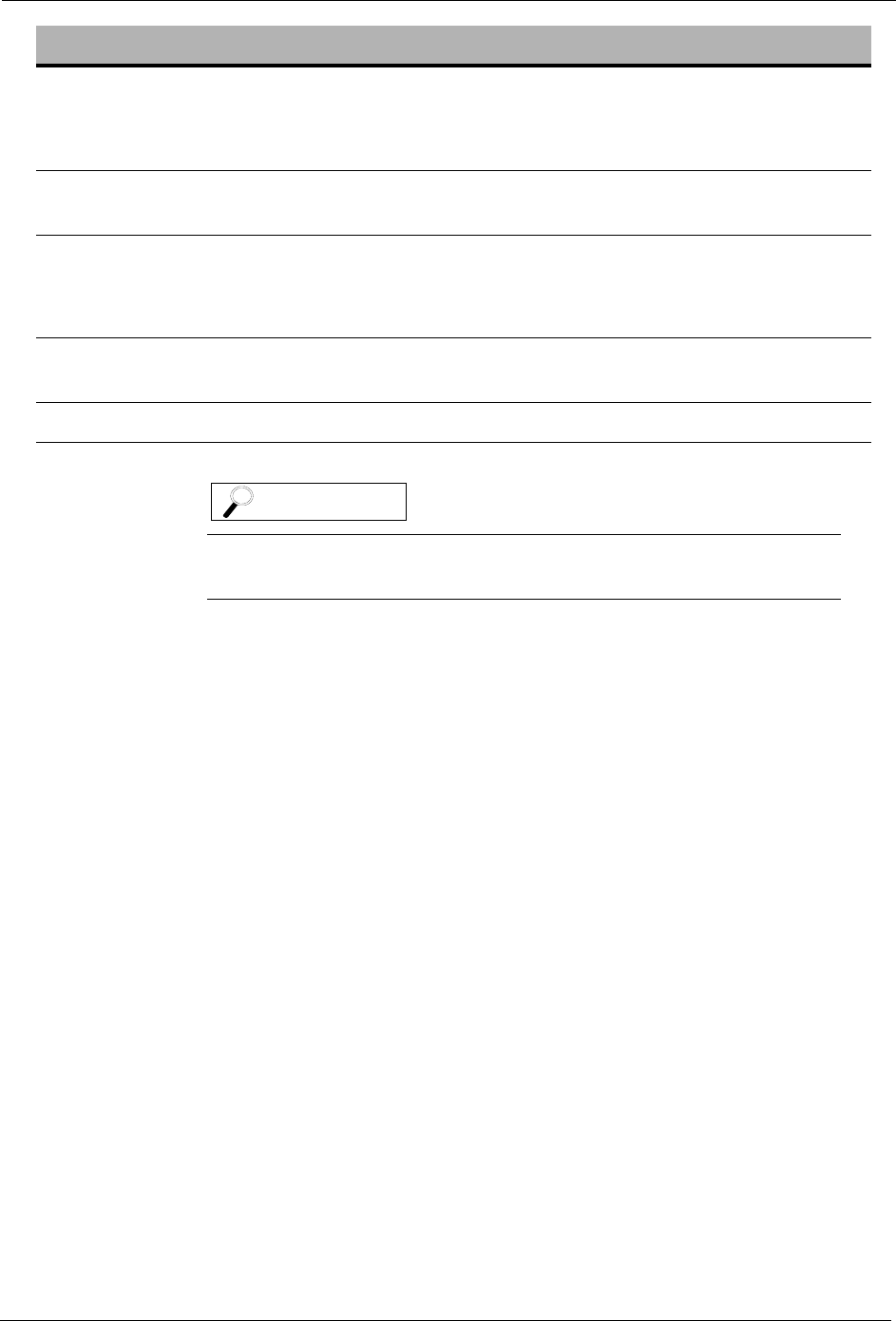
ARTIS Operator’s Manual
Cod. 6992200 - Rev. / 15-220
WRONG BICARBONATE CONNECTOR 569
Reason
for Alarm The position of the Bicarbonate Pick-up Tube Connector is wrong.
Machine
Actions In ADR:
• The phase currently running stops.
Possible Cause Suggested Action
1. The Bicarbonate Pick-up Tube
Connector is not placed correctly. 1. Check the correct position of the
Bicarbonate Pick-up Tube Connector.
Call for Service if the alarm persists.
The use of liquid Bicarbonate concentrate is not currently
available.
NOTE

Chapter 15: Alarms and Troubleshooting
15-221 Cod. 6992200 - Rev. /
ISOLATED UF COMPLETED 570
Reason
for Alarm The machine notifies that the Isolated UF process has been completed.
Machine
Actions • The machine remains in Isolated UF with deactivated “UF” button.
Possible Cause Suggested Action
1. The Isolated UF process has been
completed. 1. Press the CONFIRM button to proceed
with the next phase.
Call for Service if the alarm persists.

ARTIS Operator’s Manual
Cod. 6992200 - Rev. / 15-222
TREATMENT CAN NOT BEGIN UNTIL THE ULTRAFILTERS HAVE BEEN
REPLACED 571
Reason
for Alarm The machine notifies that the ultrafilters have to be replaced, otherwise the
treatment cannot be performed.
Machine
Actions • None.
Possible Cause Suggested Action
1. The ultrafilters have to be replaced. 1. Replace the ultrafilters with new ones
(Refer to the “7.18 Ultrafilter Change
Procedure” section of this Operator’s
Manual).
Call for Service if the alarm persists.

Chapter 15: Alarms and Troubleshooting
15-223 Cod. 6992200 - Rev. /
LOW HEPARINIZATION 573
Reason
for Alarm The volume of the Heparin infused is lower than the expected value.
Machine
Actions • None.
Possible Cause Suggested Action
1. The volume of the Heparin infused is
lower than the expected value. 1. Press the CONFIRM button to remove
the alarm.
Call for Service if the alarm persists.
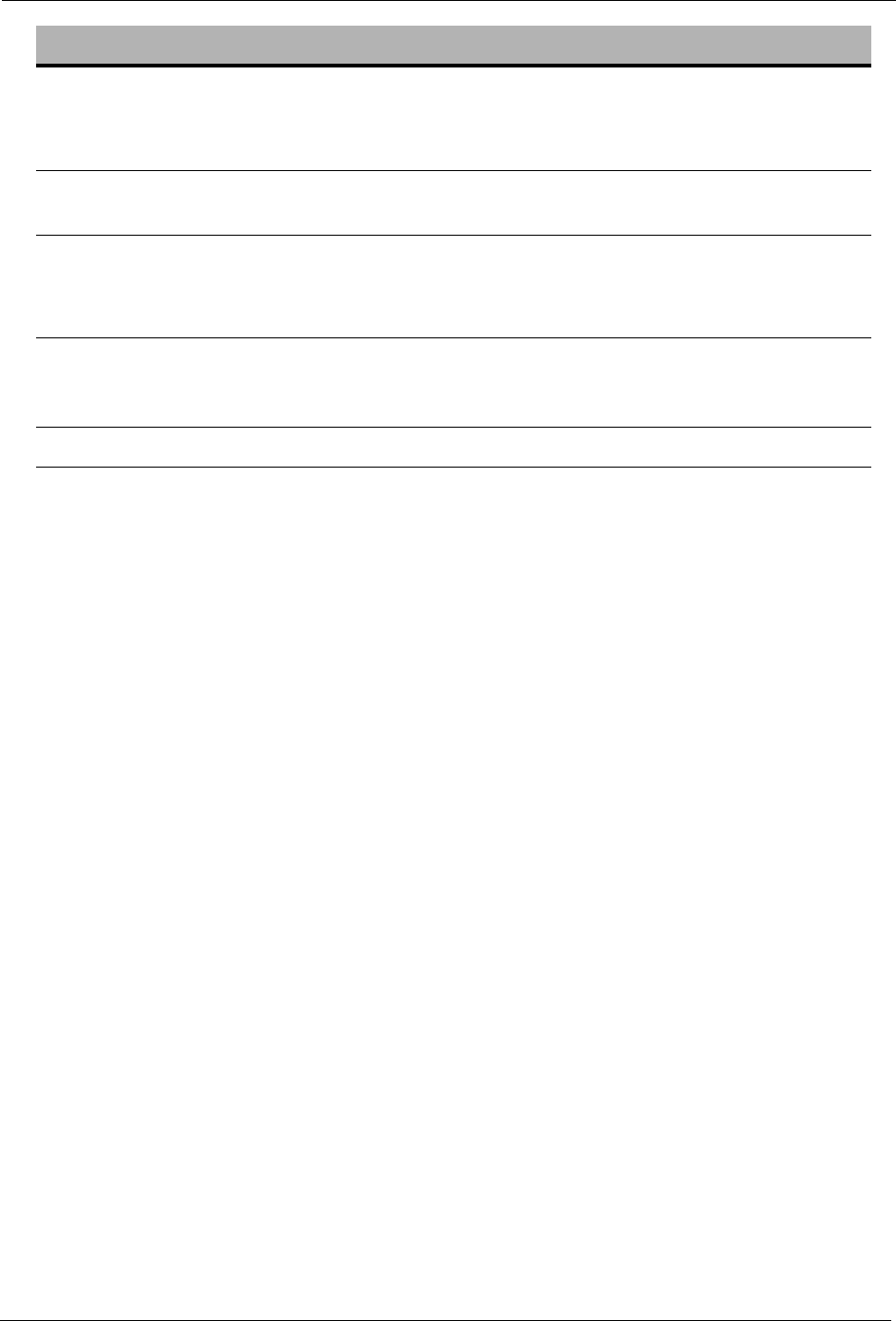
ARTIS Operator’s Manual
Cod. 6992200 - Rev. / 15-224
WRONG SINGLE NEEDLE CLAMPS POSITION 574
Reason
for Alarm The Protective Subsystem has detected the Arterial and Venous line
clamps open at the same time.
Machine
Actions • None.
Possible Cause Suggested Action
1. The Protective Subsystem has
detected the Arterial and Venous line
clamps open at the same time.
1. Press the CONFIRM button to remove
the alarm.
Call for Service if the alarm persists.

Chapter 15: Alarms and Troubleshooting
15-225 Cod. 6992200 - Rev. /
PREPARATION CAN NOT PROCEED UNTIL DRESSING IS COMPLETE 576
Reason
for Alarm The preparation can not proceed until the machine dressing procedure has
been completed.
Machine
Actions • None.
Possible Cause Suggested Action
1. The machine dressing procedure is not
been completed. 1. Complete the machine dressing
procedure, then press the CONFIRM
button on the Confirm window.
Call for Service if the alarm persists.

ARTIS Operator’s Manual
Cod. 6992200 - Rev. / 15-226
SMART SCAN – LOW REAL QB 577
Reason
for Alarm The actual Blood Flow rate value is less than 90% of the Pump speed set
value for more than three minutes.
Machine
Actions • None.
Possible Cause Suggested Action
1. The actual Blood Flow rate value is less
than 90% of the Pump speed set value
for more than three minutes.
1. Verify the set Arterial Pump speed and
the arterial pressure.
Decrease the arterial pressure or
decrease the Arterial Pump speed.
Press the CONFIRM button to remove
the alarm.
Call for Service if the alarm persists.

Chapter 15: Alarms and Troubleshooting
15-227 Cod. 6992200 - Rev. /
WRONG DISINFECTANT USED IN CHEMICAL DISINF. 578
Reason
for Alarm A wrong conductivity has been detected during a Chemical disinfection
process with peracetic/low peracetic. The machine assumes that a
disinfection with hypochlorite has been performed and the “Next
Installation of Rear Ultrafilter”, “Date of Installation” and “Remaining
Hypchlrt Disinfs” parameter values are reset.
Machine
Actions • When the machine is switched ON again, an “Ultrafilter Change”
procedure will be forced.
Possible Cause Suggested Action
1. A wrong conductivity has been detected
during a Chemical disinfection program
with peracetic/low peracetic.
1. Press the CONFIRM button to remove
the alarm. and let the disinfection
program end.
When the machine is switched ON
again, the “Treatment can not begin
until the ultrafilters have been replaced
(#571)” alarm will be displayed. Solve
the alarm as described in the related
troubleshooting of this chapter.
Call for Service if the alarm persists.
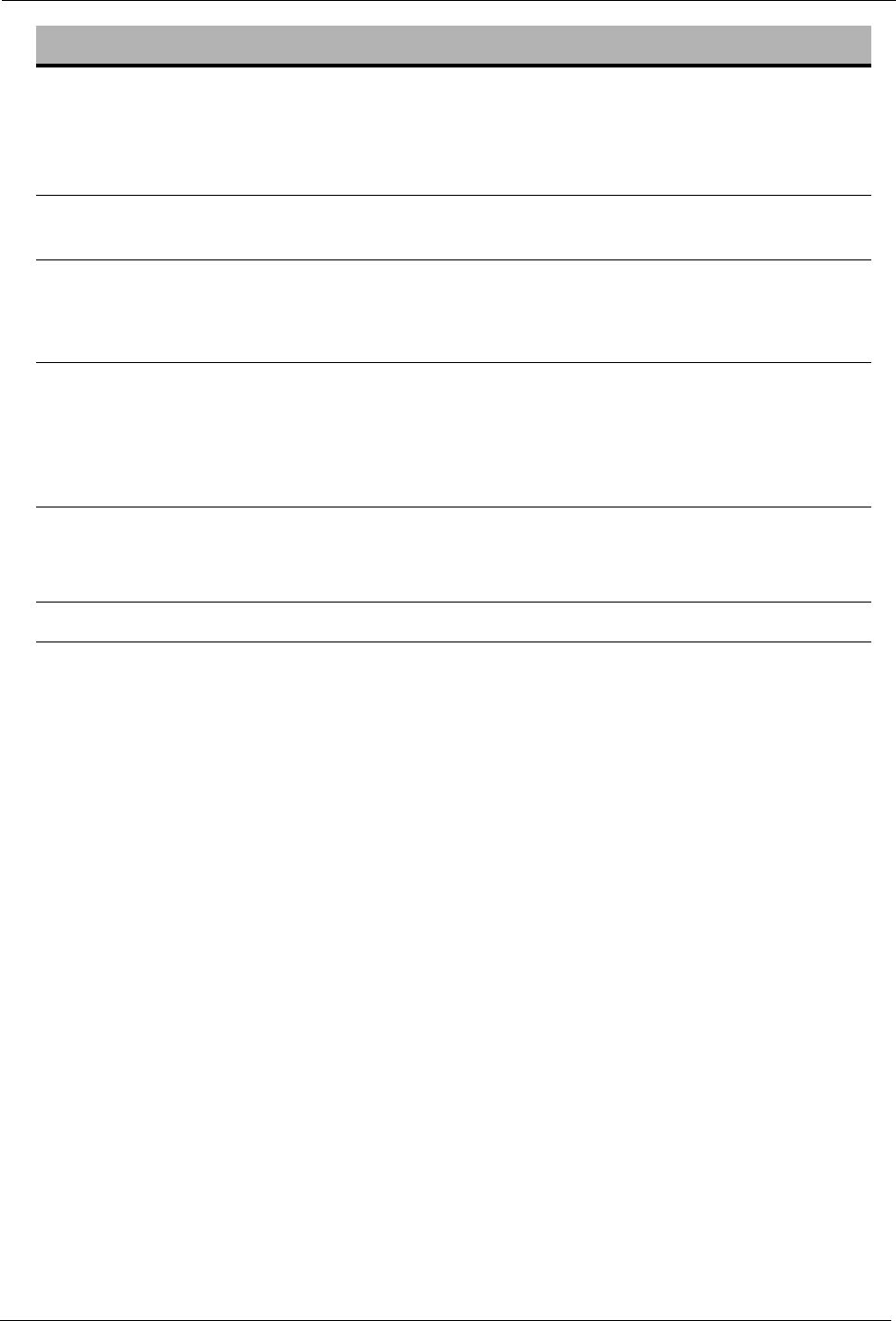
ARTIS Operator’s Manual
Cod. 6992200 - Rev. / 15-228
ON LINE BLOOD RESTITUTION: WRONG ULTRA CASSETTE CONFIGURATION 579
Reason
for Alarm During the On Line Rinseback the Ultra or Blood cassette is not properly
configured (Incorrect Ultra or Blood Cassette line connections or clamps
status).
Machine
Actions • The dialysis fluid goes into Bypass.
Possible Cause Suggested Action
1. Incorrect Ultra or Blood Cassette line
connections. 1. The Arterial patient line shall be
connected to the Rinseback Service
Line and the Clamp on the Rinseback
Service Line shall be opened.
Press the CONFIRM button.
2. Incorrect clamps status. 2. The clamps of the Arterial infusion lines
shall be closed.
Press the CONFIRM button.
Call for Service if the alarm persists.

Chapter 15: Alarms and Troubleshooting
15-229 Cod. 6992200 - Rev. /
ON LINE PRIME - INCORRECT ULTRA OR BLOOD CASSETTE CONFIGURATION 580
Reason
for Alarm During the On Line Priming the Ultra or Blood cassette is not properly
configured (Incorrect Ultra or Blood Cassette line connections or clamps
status).
Machine
Actions • The phase currently running stops.
Possible Cause Suggested Action
1. During the On Line Priming the Ultra or
Blood cassette is not properly
configured.
1. Check that:
• the Ultra Service Line clamp is closed
and the cap is totally screwed;
• the Rinseback Service Line clamp is
closed and the cap is totally screwed;
• the Venous and Arterial Infusion Line
clamps are closed and the caps are
totally screwed;
• the Arterial and Venous Dialyzer Lines
are properly connected to the dialyzer;
• the Arterial and Venous Patient Lines
are unclamped and properly connected
to the EvaClean ports with the
connector totally screwed;
• the dialyzer, Ultra and Blood cassette
are not re-used.
Press the CONFIRM button.
Call for Service if the alarm persists.
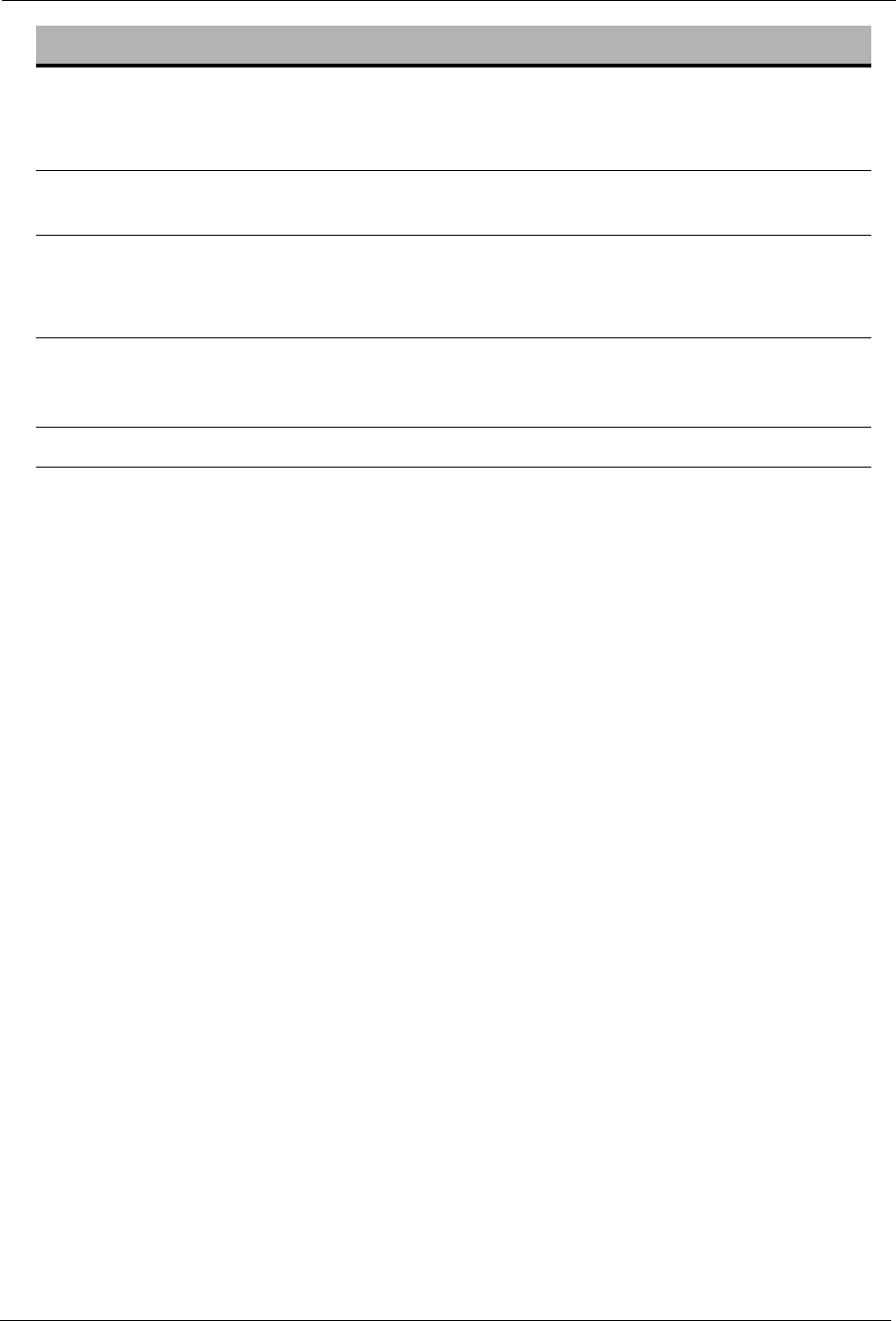
ARTIS Operator’s Manual
Cod. 6992200 - Rev. / 15-230
ISOLATED UF TARGET LOSS WILL NOT BE ACHIEVED 581
Reason
for Alarm The remaining Isolated UF time is not sufficient in order to be reached the
programmed Isolated UF target loss.
Machine
Actions • None.
Possible Cause Suggested Action
1. The Isolated UF target loss will not be
achieved. 1. Press the “Isolated UF” action button.
2. Reduce the Isolated UF parameter
values: “Time” and/or “Volume”.
Call for Service if the alarm persists.

Chapter 15: Alarms and Troubleshooting
15-231 Cod. 6992200 - Rev. /
RESIDUAL CHECK REMINDER 582
Reason
for Alarm Notification: A test for residues of disinfectant has to be performed while
setting up the machine for the next treatment.
Machine
Actions • None.
Possible Cause Suggested Action
1. After chemical disinfection and before
attaching the concentrates to the
machine, a test for residues of
disinfectant on the dialysis fluid has to
be performed.
1. Perform a test for residues of
disinfectant on the dialysis fluid (Refer
to the “7.17 Residual Test after
Chemical Disinfection” section of this
Operator’s Manual).
Call for Service if the alarm persists.

ARTIS Operator’s Manual
Cod. 6992200 - Rev. / 15-232
AIR DETECTOR CLEANING REQUIRED 583
Reason
for Alarm The Air Detector does not work with the maximum sensitivity because the
Venous Patient line or the Air Detector is dirty.
Machine
Actions • None.
Possible Cause Suggested Action
1. The Venous Patient Line is dirty or the
Air Detector is defective. 1. Open the Sensor Bar door;
2. Remove the Venous Patient line from
the air detector/patient sensor: an “Air
in venous line (#4)” alarm will be
triggered;
3. Carefully check that there is not air in
the Venous Patient line;
4. Clean the Venous Patient line and the
air detector/patient sensor;
5. Route again the Venous Patient line
through the air detector/patient sensor;
6. Close the Sensor Bar door;
7. Press the CONFIRM button to clear the
“Air Detector Cleaning Required
(#583)” alarm;
8. Solve the “Air in Venous Line (#4)”
alarm as described in the related
troubleshooting of this chapter;
9. If the “Air Detector Cleaning Required
(#583)” alarm persists, stop the
treatment and perform a Manual
Rinseback procedure.
Call for Service if the alarm persists.

Chapter 15: Alarms and Troubleshooting
15-233 Cod. 6992200 - Rev. /
AIR DETECTOR INSPECTION REQUIRED 584
Reason
for Alarm The Air Detector does not work with the maximum sensitivity because the
Venous Patient line or the Air Detector is dirty.
Machine
Actions • None.
Possible Cause Suggested Action
1. The Venous Patient Line is dirty or the
Air Detector is defective. 1. Open the Sensor Bar door;
2. Remove the Venous Patient line from
the air detector/patient sensor: an “Air
in venous line (#4)” alarm will be
triggered;
3. Carefully check that there is not air in
the Venous Patient line;
4. Clean the Venous Patient line and the
air detector/patient sensor;
5. Route again the Venous Patient line
through the air detector/patient sensor;
6. Close the Sensor Bar door;
7. Press the CONFIRM button to clear the
“Air Detector Inspection Required
(#584)” alarm;
8. Solve the “Air in Venous Line (#4)”
alarm as described in the related
troubleshooting of this chapter;
9. If the “Air Detector Inspection Required
(#584)” alarm persists, stop the
treatment and perform a Manual
Rinseback procedure.
Call for Service if the alarm persists.
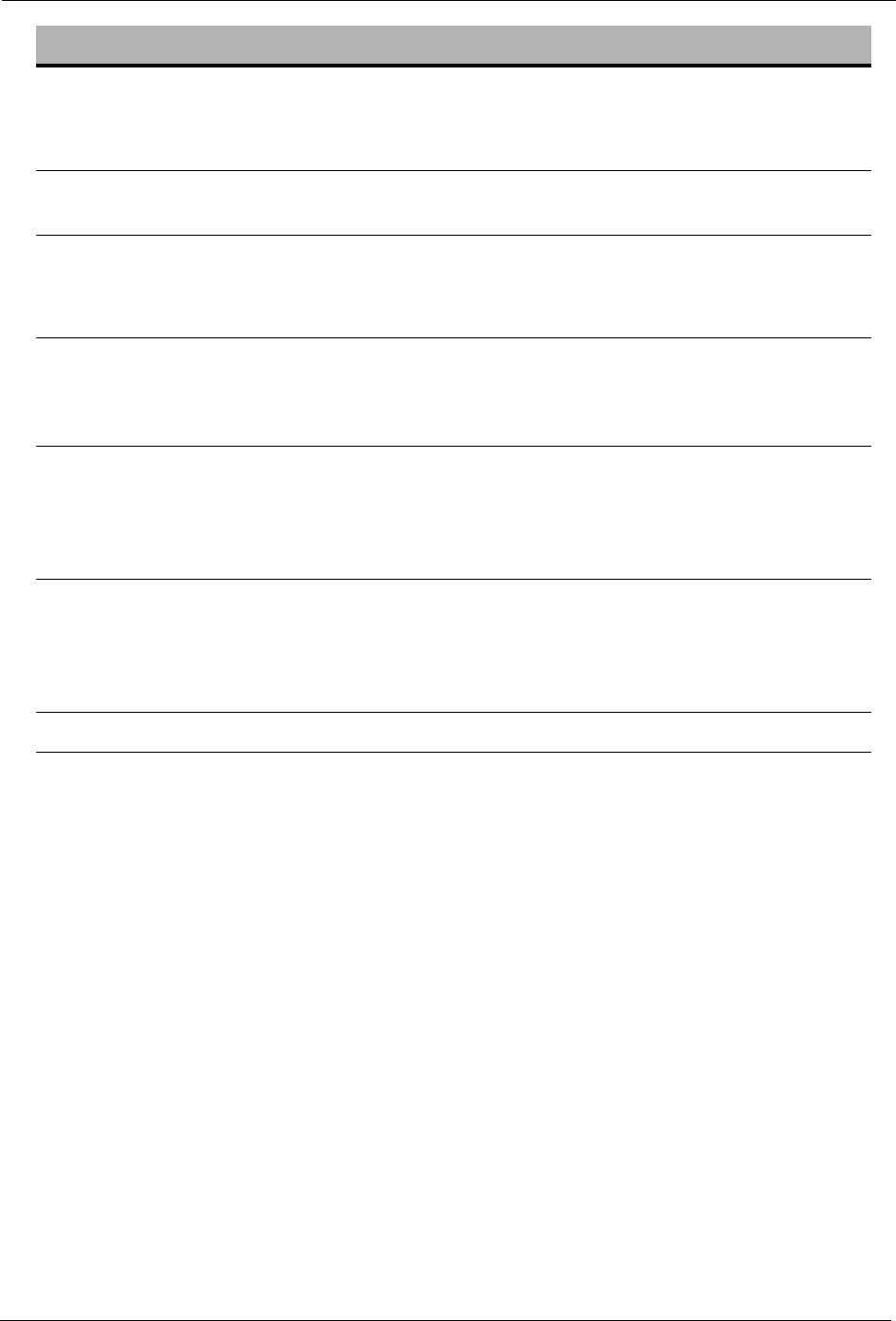
ARTIS Operator’s Manual
Cod. 6992200 - Rev. / 15-234
SALINE BAG EMPTY 585
Reason
for Alarm The Saline Bag is empty or the Venous Infusion Line is clamped or the
Prime Line is closed or obstructed.
Machine
Actions • None.
Possible Cause Suggested Action
1. The Saline Bag is empty. 1. Change the Saline Bag;
2. Press the CONFIRM button to clear the
alarm.
2. The Venous Infusion line is clamped or
the clamp on the Prime Line is closed. 1. Open the clamp on the Venous Infusion
line or on the Prime line;
2. Press the CONFIRM button to clear the
alarm.
3. The Prime Line is obstructed. 1. Adjust the Prime Line position to avoid
obstructions;
2. Press the CONFIRM button to clear the
alarm.
Call for Service if the alarm persists.

Chapter 15: Alarms and Troubleshooting
15-235 Cod. 6992200 - Rev. /
ARTERIAL PUMP SEGMENT NOT CORRECTLY LOADED 586
Reason
for Alarm The Arterial Pump Segment has not been properly loaded in the pump
rotor or the clamp on the Arterial Infusion line is open.
Machine
Actions • None.
Possible Cause Suggested Action
1. The Arterial Pump Segment has not
been properly loaded in the pump rotor. 1. Press the CONFIRM button to clear the
alarm;
2. Press the “Unload Cassette” button;
3. Press the CONFIRM button to start the
unloading procedure;
4. Unload the cassette;
5. Perform again the loading cassette
procedure.
2. The clamp on the Arterial Infusion line
is open. 1. Close the clamp on the Arterial Infusion
line;
2. Press the CONFIRM button to clear the
alarm.
Call for Service if the alarm persists.
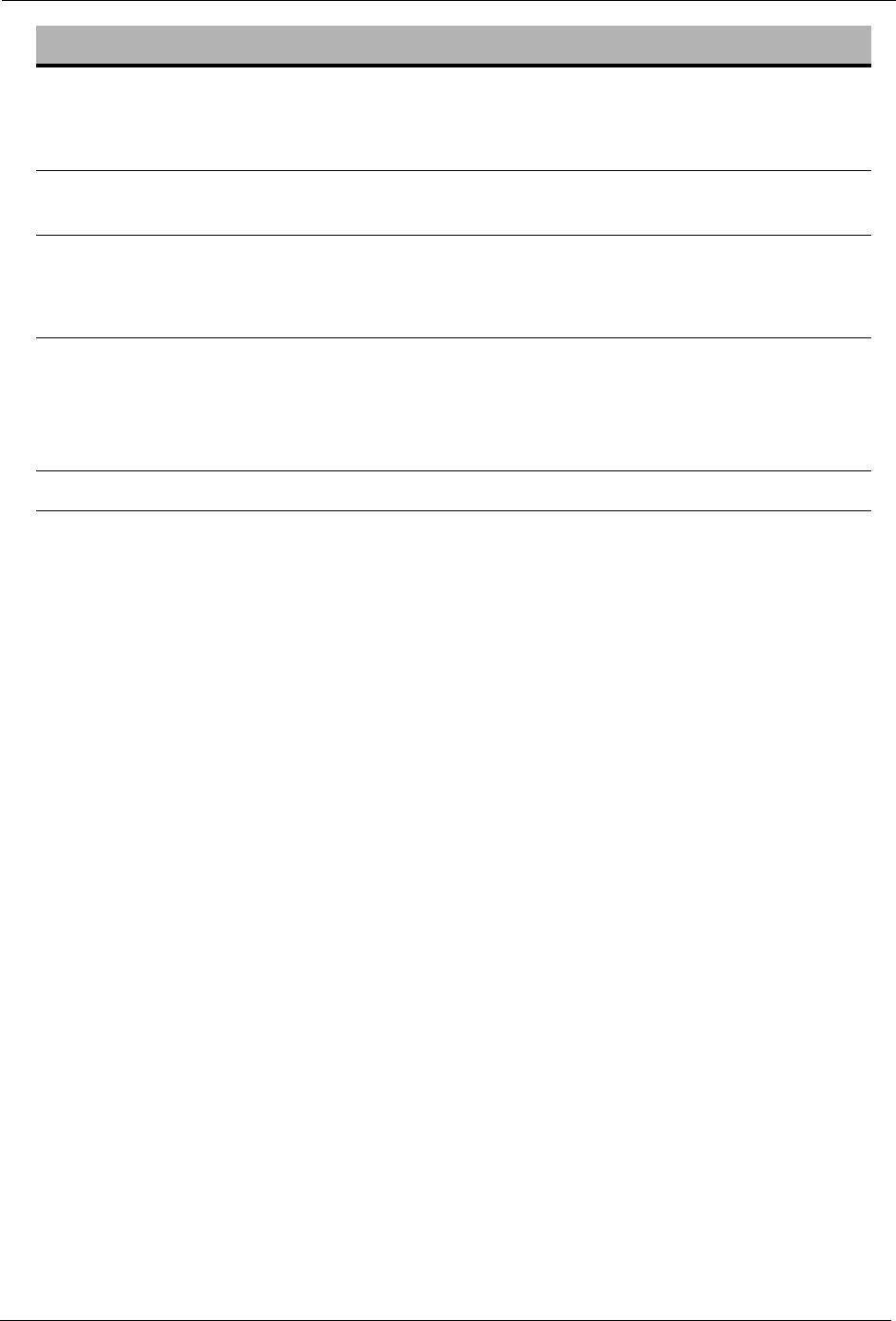
ARTIS Operator’s Manual
Cod. 6992200 - Rev. / 15-236
VENOUS INFUSION LINE OPEN 587
Reason
for Alarm The clamp on the Venous Infusion line is open.
Machine
Actions • None.
Possible Cause Suggested Action
1. The clamp on the Venous Infusion line
is open. 1. Close the clamp on the Venous Infusion
line;
2. Press the CONFIRM button to clear the
alarm.
Call for Service if the alarm persists.
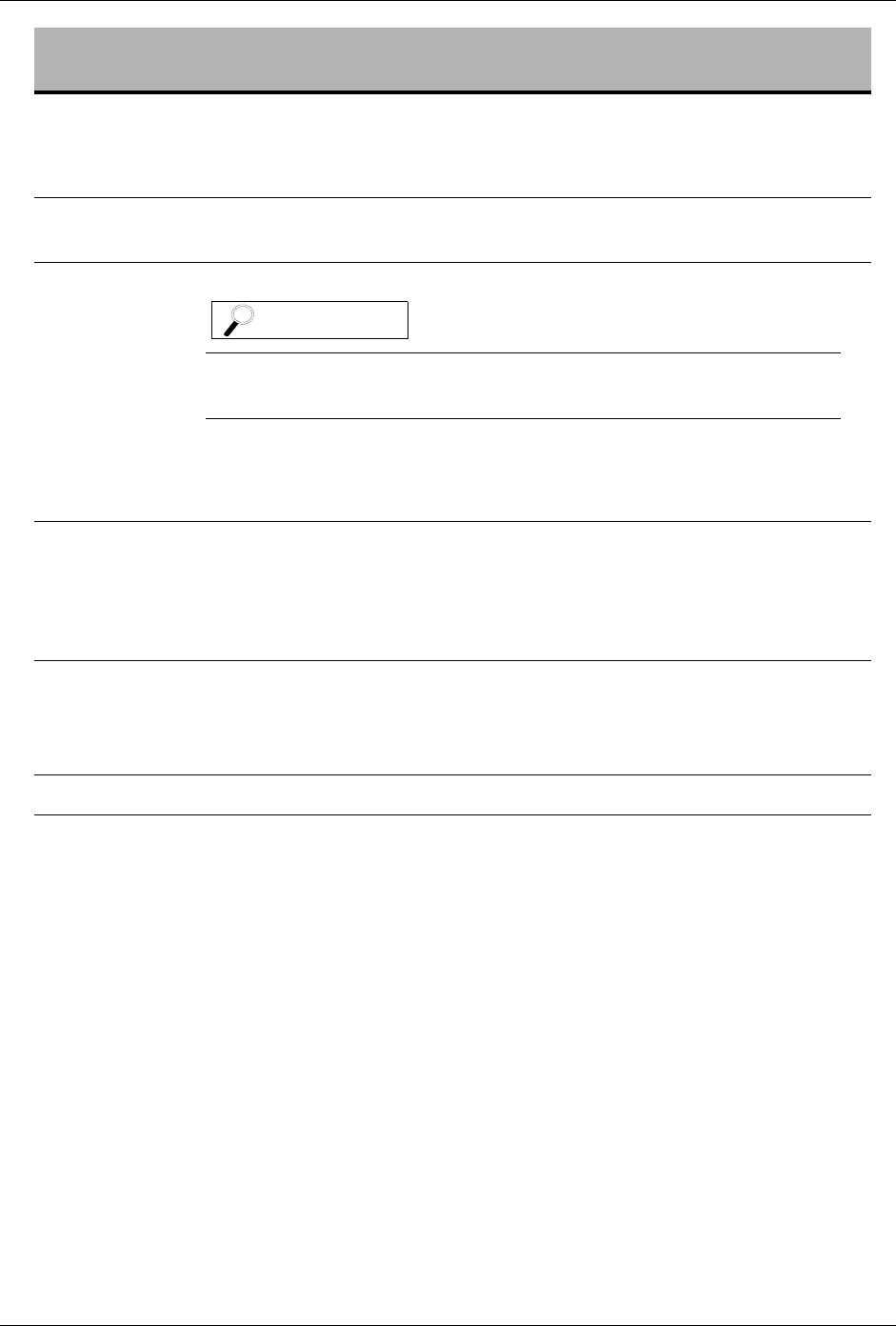
Chapter 15: Alarms and Troubleshooting
15-237 Cod. 6992200 - Rev. /
<< GENERAL SYSTEM FAILURE >>
System Blocking XXX
Reason
for Alarm This is a special alarm.
The Main Board is blocked
Machine
Actions • GENERAL SAFE STATE
• The Touch Screen is blocked
In the alarm name, "xxx" means the internal code related to the
alarm condition.
Possible Cause Suggested Action
1. Main Board internal error. 1. If the alarm occurs during a disinfection/
rinse program, during the set-up or
during the priming procedure, switch
the machine OFF and after few
seconds turn it ON again.
2. Main Board internal error. 2. If the alarm occurs during a tretament,
perform a Fast Recovery procedure as
described in the “7.4 Fast Recovery”
section of this Operator’s Manual.
Call for Service if the alarm persists.
NOTE
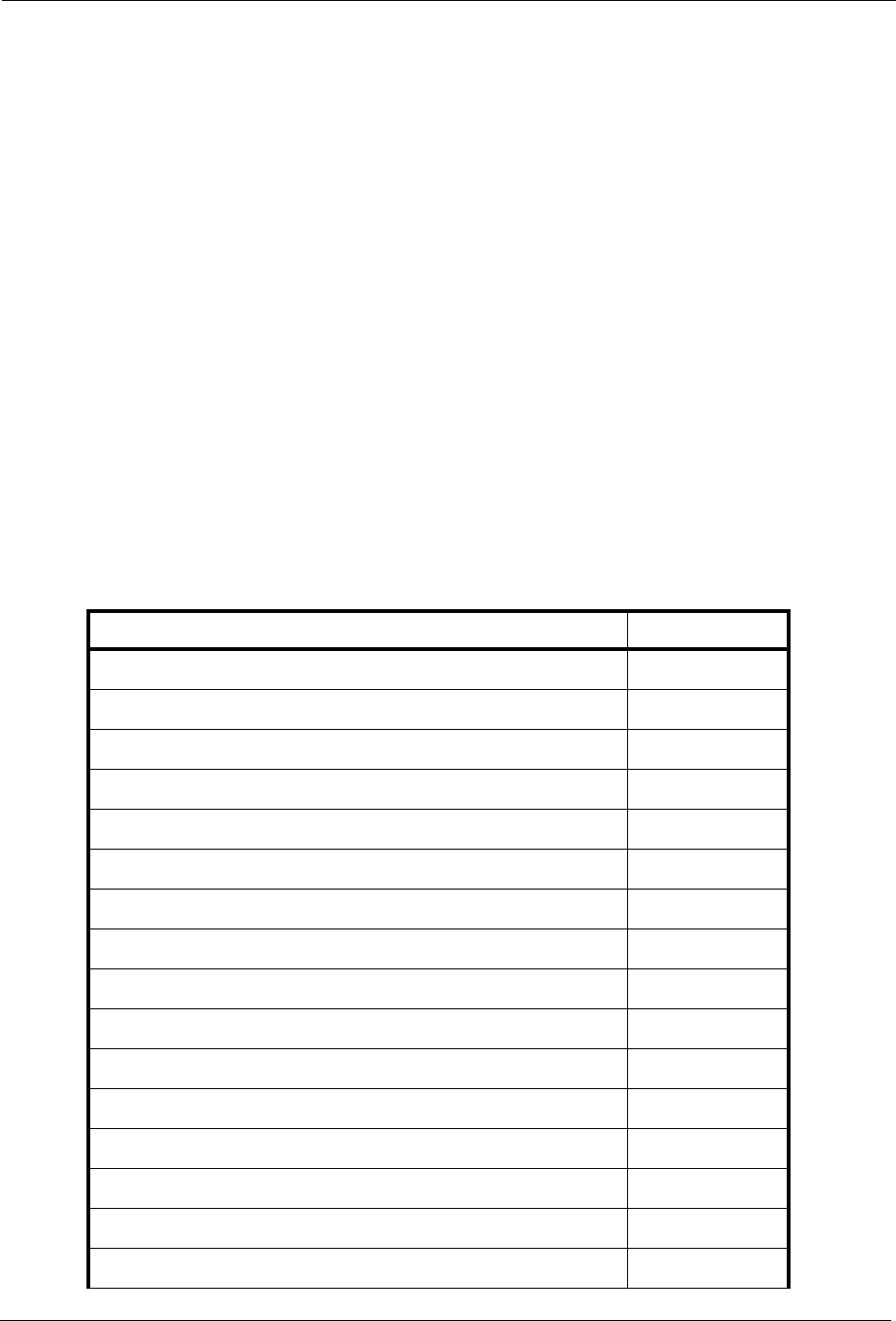
ARTIS Operator’s Manual
Cod. 6992200 - Rev. / 15-238
15.7 Machine Malfunction Alarms
When a malfunction alarm occurs the following message is displayed in
the Alarm Area
MALFUNCTION
together with the Numerical Code of the alarm.
If one of the malfunction alarm listed in the table below occurs:
• during a treatment: perform a Fast Recovery procedure as described
in the “7.4 Fast Recovery” section of this Operator’s Manual. If the
alarm persists, take note of the alarm code, switch the machine OFF
and call for Service.
• during a disinfection/rinse program: take note of the alarm code,
switch the machine OFF and call for Service.
Below is a list of all the machine malfunction alarms in alphabetic order,
indicating:
•The name of the alarm;
•The Numerical Code.
MALFUNCTION CODE
ADR PROCESS NOT INITIATED 63
ADR Process Timed Out 190
Air compressor failure 466
ARTERIAL PRESSURE DATA ERROR 307
Arterial Pressure Negative Offset Data Error 430
Arterial Pressure Offset Data Error 431
ARTERIAL SENSOR ERROR 6
BIC CONC DATA ERROR 398
Bicarbonate pump failure 110
!BIO FLOW data error 25
Blood flow data error 27
BLOOD LEAK DETECTOR CALIBRATION ERROR 167
Blood leak detector data error 26
BLOOD SLAVE COMMUNICATION ERROR 295
BLOOD SLAVE ERROR 130
Bubble Trap T1 Test 493
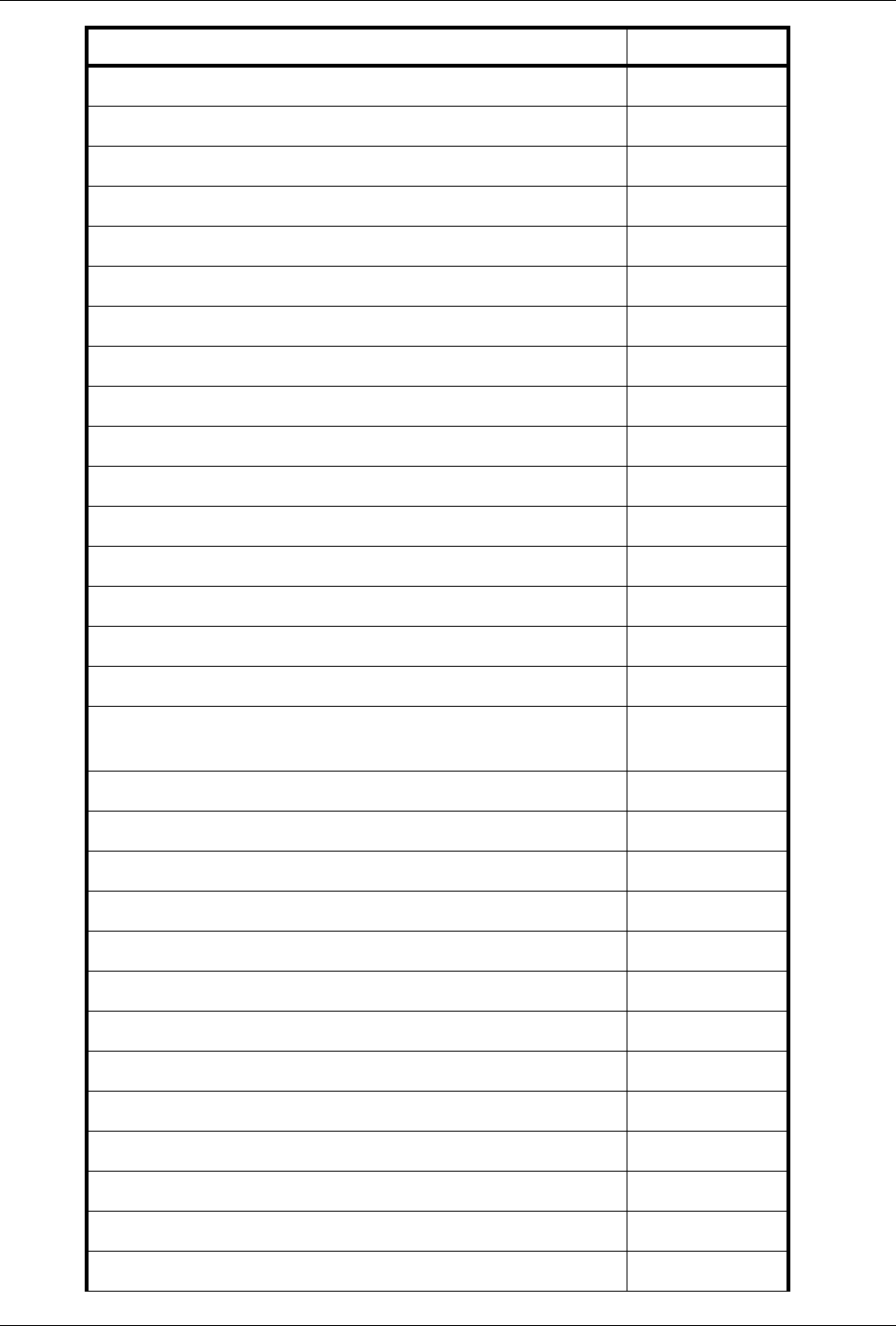
Chapter 15: Alarms and Troubleshooting
15-239 Cod. 6992200 - Rev. /
Concentrate pump failure 108
CONCENTRATION UM DATA ERROR 399
CONTROL DATA ERROR 327
Control Flowmeters Test Failed 497
CRC MESSAGE CHECK 471
D1 FLOWMETER FAILURE 300
D2 FLOWMETER FAILURE 301
DATA ERROR 43
Dialysate flow data error 45
Disinfection timeout error 67
EEPROM BLOOD ERROR 48
EEPROM CRC ERROR 173
EEPROM HYDRAULIC ERROR 49
Flow Meters Alignment Failure 535
Flowmeters alignment timeout 484
> GENERAL SAFE STATE < 64
HEATER PROTECTION ERROR
(See the NOTE below) 59
Hydraulic slave error 131
Incorrect Arterial Clamp Position 7
Incorrect disinfectant 112
Incorrect disinfectant 113
Incorrect Rinsing or Disinfection 510
Incorrect Venous Clamp Position 148
Invalid Rinsing or Disinfection 511
Low Flow In Degasser 84
Maximum Arterial Pressure Data Error 432
MAXIMUM BLOOD FLOW DATA ERROR 312
Maximum Blood Volume Reached 481
Maximum Venous Pressure Data Error 458
Min UF rate data error 164
MALFUNCTION CODE
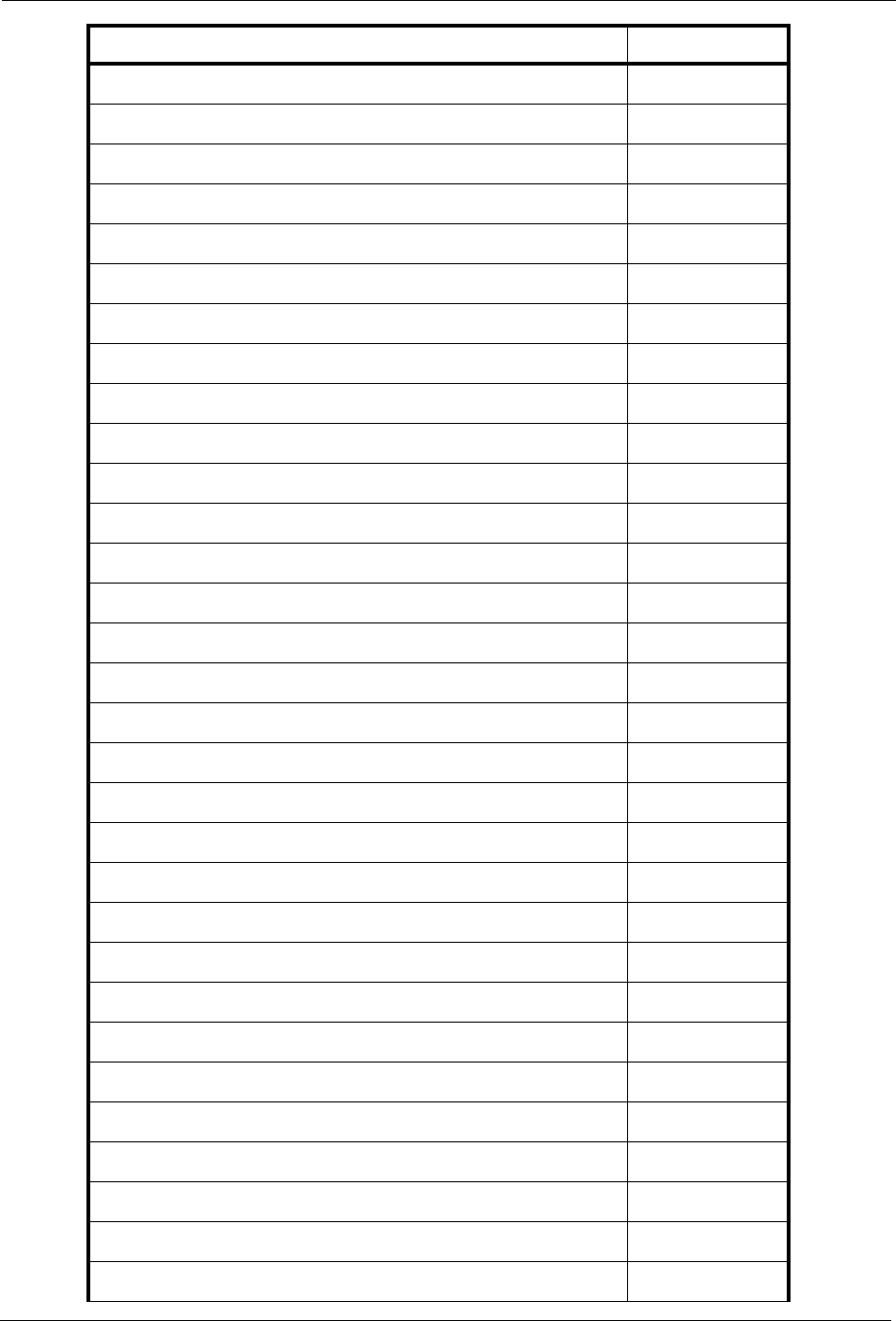
ARTIS Operator’s Manual
Cod. 6992200 - Rev. / 15-240
Minimum Arterial Pressure Data Error 393
Minimum Venous Pressure Data Error 429
P1 Pump failure 104
P2 Pump failure 106
PAUSE THERAPY DATA ERROR 313
PC Pump failure 111
Pinch Calibration Edge Error 491
Pinch Calibration Out of Range 490
Pinch Calibration Time Out 492
Pinch Position Error 488
Pinch Position Out of Range 487
Pinch Position Time Out 489
Pinch valve wrong position optical sensor 1 494
Pinch valve wrong position optical sensor 2 495
PROTECTION MODULE DATA ERROR 185
PROTECTION MODULE SOFTWARE ERROR 182
PROTECTION SYSTEM FAILURE 120
PRSS Start Up Message Missing 480
Ps Out of Order 410
PWHO Out of Order 426
Select pump failure 486
Set value out of range 395
!S/N MAX PRESSURE Data Error 209
!S/N MIN PRESSURE Data Error 208
SODIUM CONC DATA ERROR 397
System Pressure Sensor Error 523
T1 Test BLD 434
T1 Test Cut 24 Volts Failed 440
T1 Test FPGA failed 485
T1 Test Pinch Valve 572
T1 Test Valves Command Failed 442
MALFUNCTION CODE
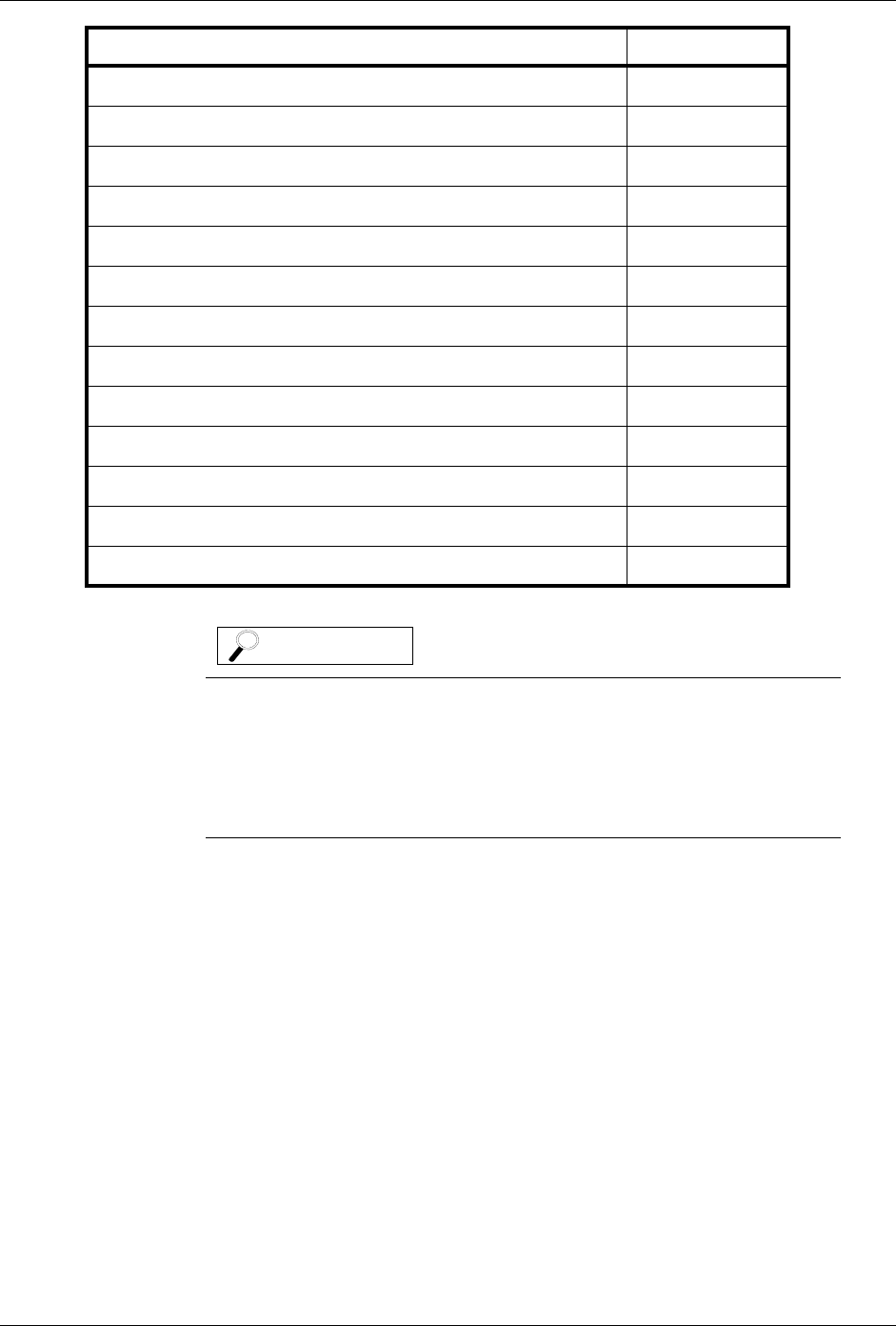
Chapter 15: Alarms and Troubleshooting
15-241 Cod. 6992200 - Rev. /
T1 Test Venous Clamp 441
T1 Test Water Presence Sensor Failure 537
Temperature data error 135
Temperature mismatch between Tp and Tca 538
Timeout on messages acknowledge 396
Treatment time data error 239
UF data error 143
UF data error 240
ULTRAFILTER PRESSURE SENSOR ERROR 147
Venous pressure data error 150
Venous Pressure Negative Offset Data Error 427
Venous Pressure Positive Offset Data Error 428
VENOUS SENSOR ERROR 159
If this alarm occurs during treatment:
1. Switch the machine OFF;
2. Perform a Manual Rinseback procedure as described in the
“7.2 Manual Rinseback procedure in HD and HDF treatments”
section of this Operator’s Manual.
MALFUNCTION CODE
NOTE
This page is left intentionally blank
Cod. 6992200 - Rev. / 15-242
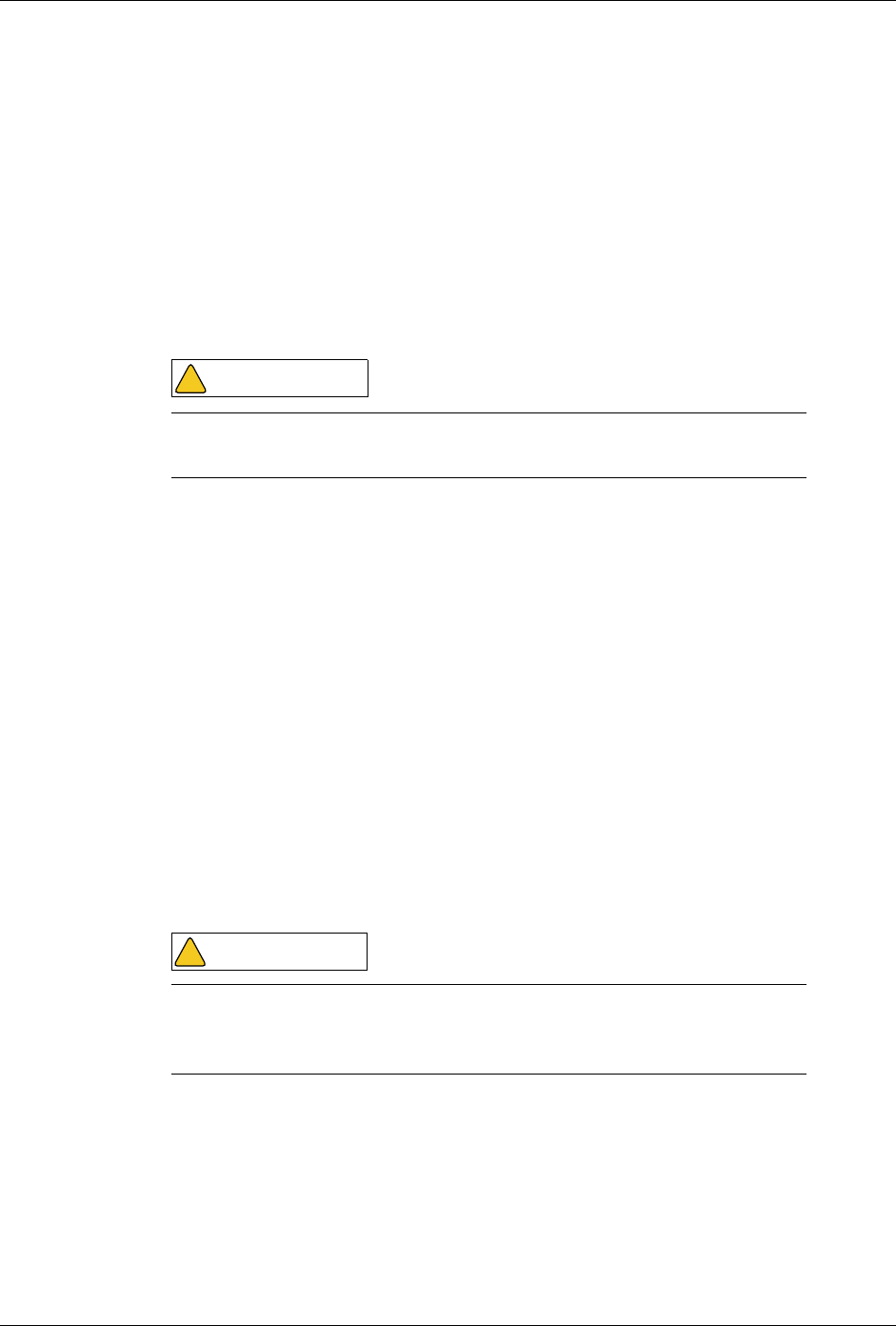
16-1
Chapter 16: Specifications
Chemical Disinfection with hypochlorite is not currently available.
16.1 General Specifications
Following the main specifications related to Artis Dialysis System general
characteristics are reported.
16.1.1 Name
Artis Dialysis System.
16.1.2 Standards and Classifications
The Artis Dialysis System complies with the following classifications and
standards.
Equipment Classifications
• Class IIb (MDD 93/42/EEC)
• Class I, Applied Part Type B (EN 60601-1)
• Protection Class: IP21 (IEC 60529)
• Not suitable for use in the presence of flammable anesthetics, or
anesthetic mixtures with air or with oxygen or nitrous oxide. (EN
60601-1)
• Continuous Operation (EN 60601-1)
CE Marking
• European Council Directive 93/42/EEC of 14 June 1993 concerning
medical devices.
Notified body: British Standards Institution (BSI) with the notified body
number 0086.
The Artis Dialysis System must be used under the supervision of a
physician.
Do not use the Artis Dialysis System near flammable gas or
flammable anesthetic mixtures with air, with oxygen or with nitrous
oxide.
WARNING
!
WARNING
!
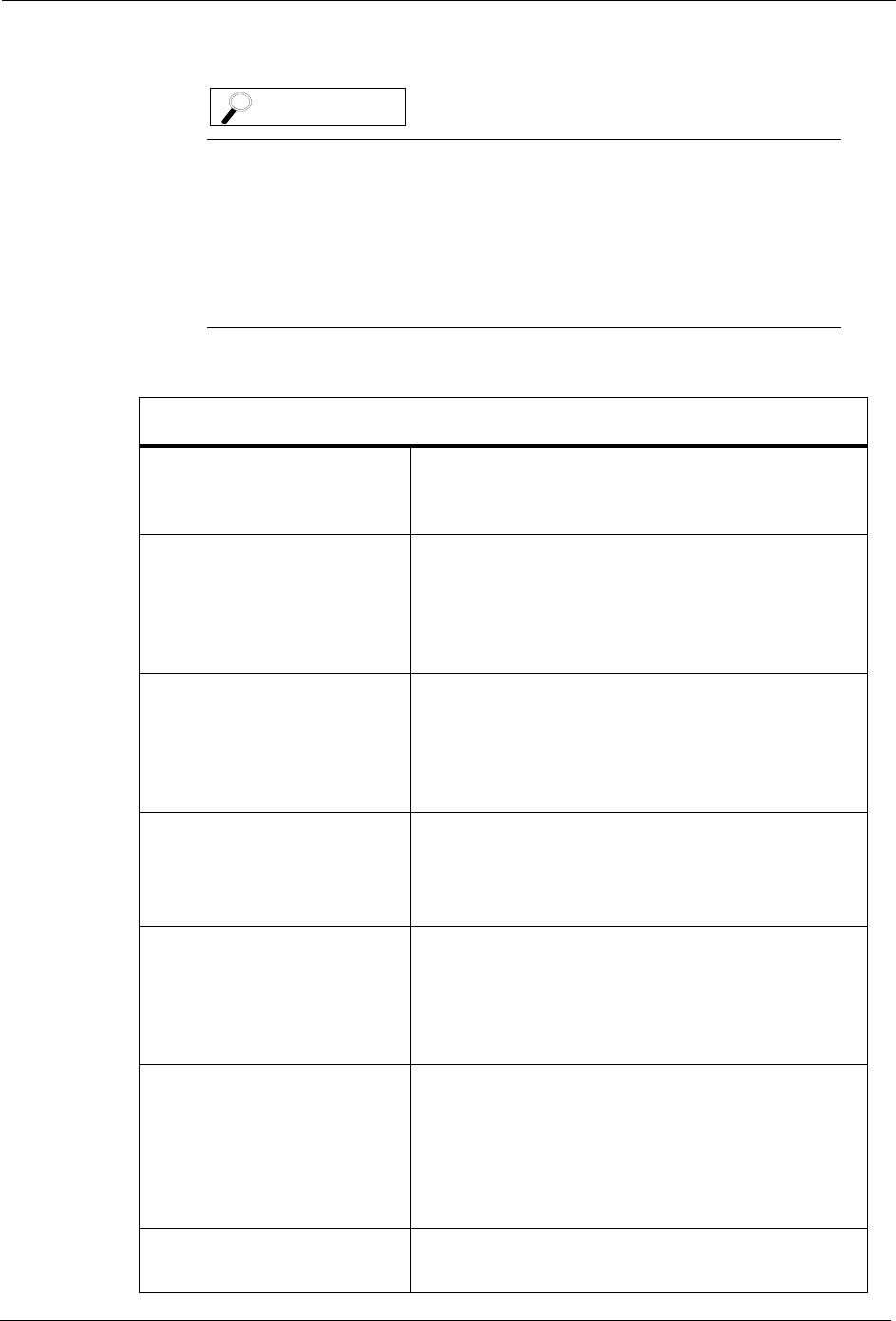
ARTIS Operator’s Manual
Cod. 6992200 - Rev. / 16-2
International Standards
• The CE marking by the manufacturer GAMBRO S.p.A. covers
the equipment.
• The compatibility of the Artis Dialysis System with the other
accessories and disposables listed in this operator’s manual has
been verified during product validation.
• The CE-marking of this manual is only valid if the device which it
describes is CE-marked.
Medical Equipment Standardsa
IEC 60601-1 • MEDICAL ELECTRICAL EQUIPMENT - Part
1: General Requirements for safety
(Equivalent to EN 60601-1)
IEC 60601-1-2 • MEDICAL ELECTRICAL EQUIPMENT - Part
1-2: General Requirements for safety
- Collateral standard: Electromagnetic
Compatibility - Requirements and tests
(Equivalent to EN 60601-1-2)
IEC 60601-1-4 • MEDICAL ELECTRICAL EQUIPMENT - Part
1-4: General Requirements for safety -
Collateral standard: Programmable electrical
medical systems (Equivalent to EN 60601-1-
4)
IEC 60601-1-6 • MEDICAL ELECTRICAL EQUIPMENT - Part
1-6: General Requirements for safety -
Collateral standard: Usability (Equivalent to
Harmonized standard EN 60601-1-6)
IEC 60601-2-16 • MEDICAL ELECTRICAL EQUIPMENT - Part
2-16: Particular Requirements for the safety
of hemodialysis, haemodiafiltration and
haemofiltration equipment (Equivalent to EN
60601-2-16)
IEC 60601-2-30 • MEDICAL ELECTRICAL EQUIPMENT - Part
2-30: Particular Requirements for safety,
including essential performance, of automatic
cycling non-invasive blood pressure
monitoring equipment. (Equivalent to
Harmonized standard EN 60601-2-30)
EN 980 • Graphical Symbols for Use in the Labelling of
Medical Devices
NOTE
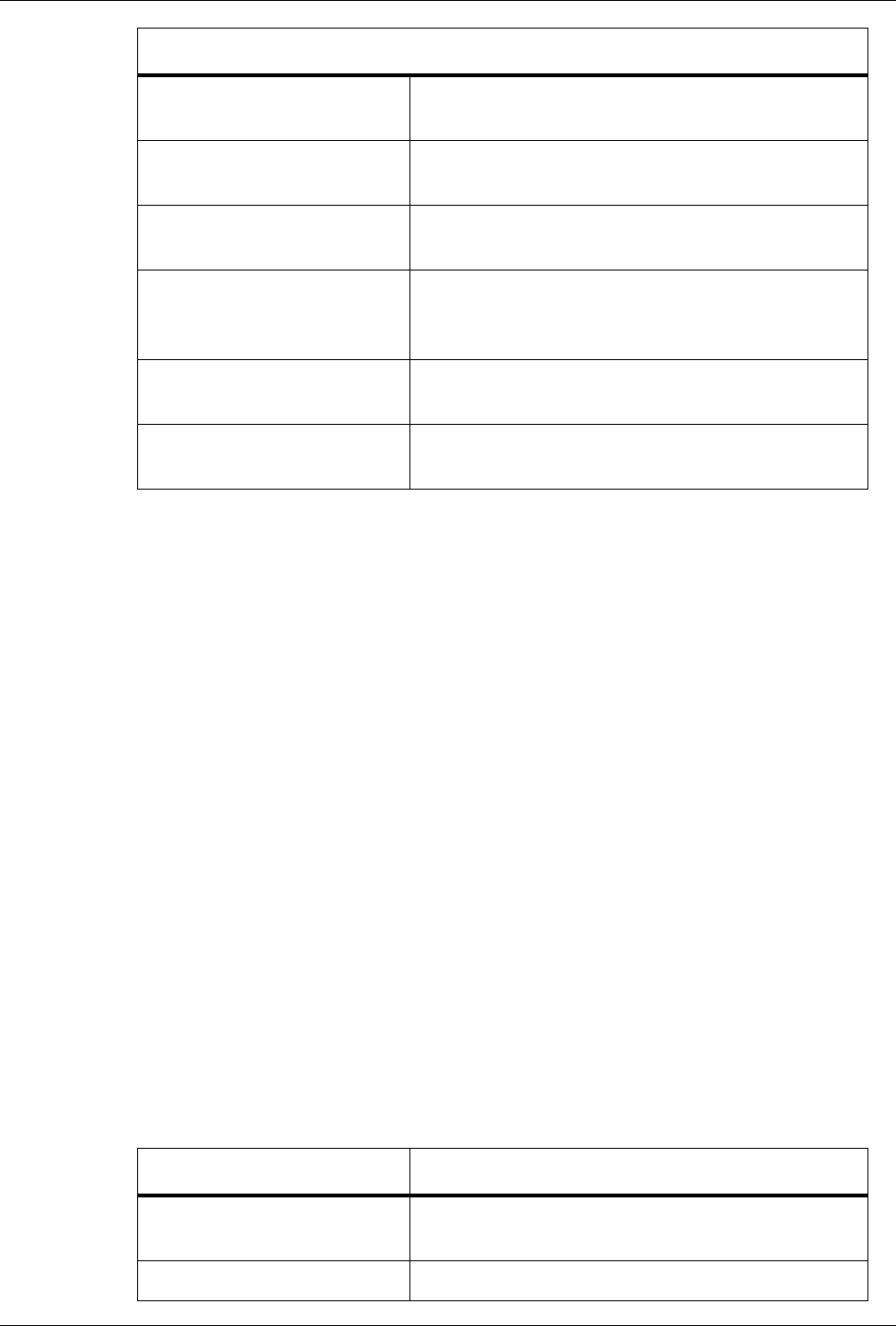
Chapter 16: Specifications
16-3 Cod. 6992200 - Rev. /
Radio Frequency Interference and Electromagnetic Environment
Requirements
The Artis Dialysis System needs special precautions regarding EMC and needs to
be installed and put into service according to the EMC information provided in the
Appendix A, of this operator’s manual.
FCC / Canada Radio Certification
The Artis Dialysis System has embedded a module approved with FCC ID: XD3-
RFMOD, IC: 8313A-RFMOD.
These devices comply with part 15 of the FCC rules.
Changes or modifications not expressly approved by the party responsible for
compliance could void user’s authority to operate the equipment.
Operation is subject to the following two conditions: (1) This device may not cause
harmful interference, and (2) This device must accept any interference received,
including interference that may cause undesired operation. Changes or
modifications not expressly approved by the party responsible for compliance
could void the user’s authority to operate the equipment.
16.1.3 Power Supply
Main Characteristics
EN ISO 10993-1 • Biological evaluation of medical devices - Part
1: Evaluation and testing
EN ISO 10993-4 • Biological evaluation of medical devices - Part
4: Selection of tests for interactions with blood
EN ISO 10993-5 • Biological evaluation of medical devices - Part
5: Tests for in vitro cytotoxicity
EN ISO 10993-10 • Biological evaluation of medical devices - Part
10: Tests for irritation and delayed type
hypersensitivity.
EN ISO 10993-11 • Biological evaluation of medical devices - Part
11: Tests for systemic toxicity.
ANSI/AAMI SP10 • Electronic or automated
sphygmomanometers.
a. Independent internationally recognized experts have rigorously checked
conformity with these standards.
Parameter Values
Mains Voltage • 230/240 VAC (±10%)
• 115 VAC (±10%)
Frequency • 50/60 Hz (±5 Hz)
Medical Equipment Standardsa (Continued)
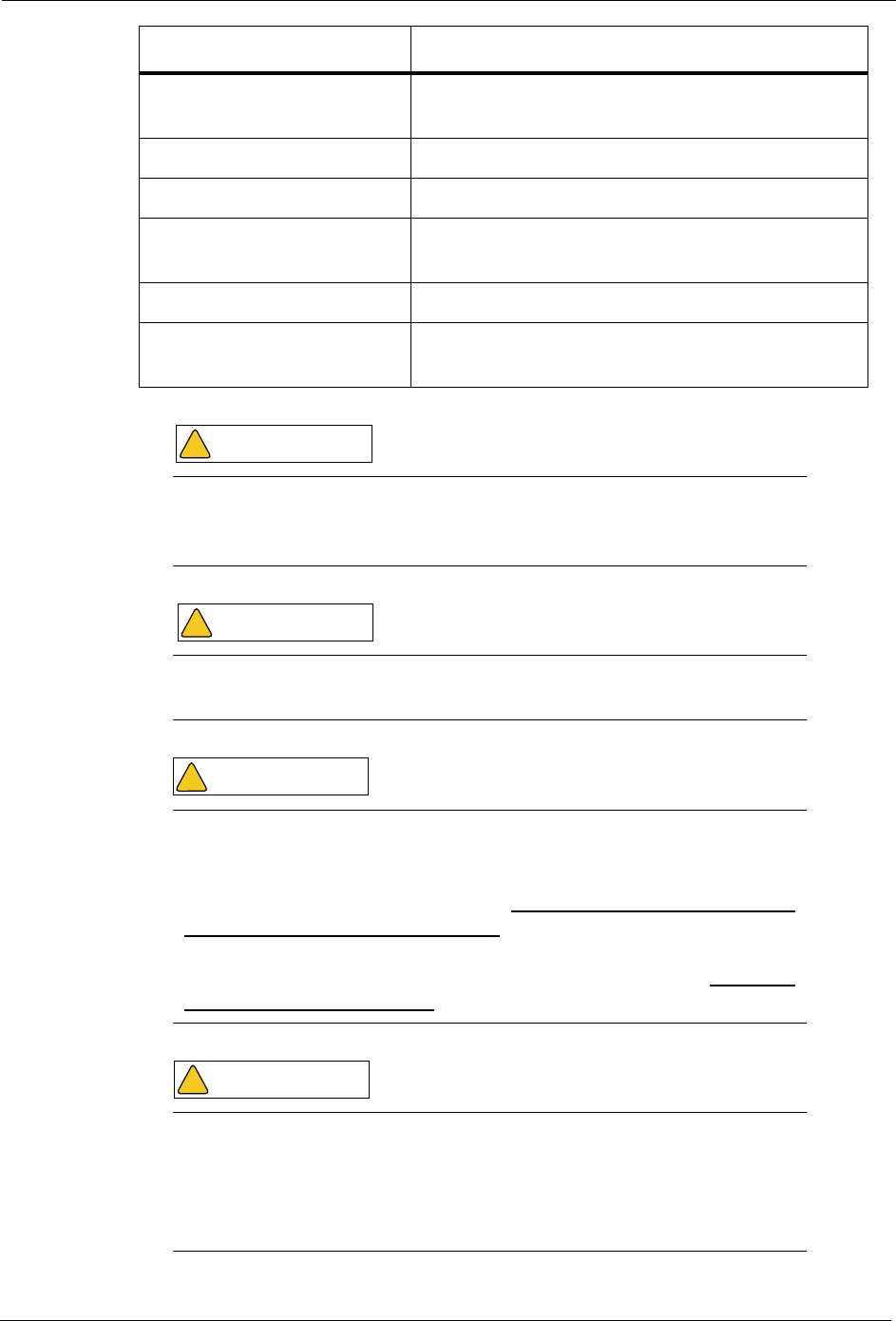
ARTIS Operator’s Manual
Cod. 6992200 - Rev. / 16-4
Power Consumption • Max. 10 A at 230/240 VAC
• Max. 16 A at 115 VAC
Power Supply Cord • Max. length 3 m.
Mains Connector • Certified to IEC 60320/C19
Mains Plug • Earthed plug, 250 V AC (10-16 A),
• Earthed plug 125 VAC (20 A)
Dielectric Strength • Complying with clause 20 of IEC 60601-1
Battery Back-up • Voltage 24 volt, 7.2 Ah
• Fuse: T 12 A
Possible hazards may arise from equipment (other than the
accessories listed below) being connected to the machine, which
may cause the permitted leakage current to be exceeded.
Wait at least 5 seconds after switching OFF the machine before
turning it ON again.
The correct installation of a MEDICAL ELECTRICAL SYSTEM
requires that each SYSTEM component be individually connected
to the main power.
It is strongly recommended: NOT TO USE MULTIPLE
PORTABLE SOCKET-OUTLETS.
However, if using multiple portable socket-outlets, they must
comply with the IEC 60601-1-1 Standard and must NOT BE
PLACED ON THE FLOOR.
• Check that the Artis Dialysis System is properly grounded.
• Do not remove the panels. If necessary, ask qualified staff to
open panels.
• Disconnect the machine from the main power supply before
every cleaning, checking or maintenance operation.
Parameter Values
WARNING
!
WARNING
!
WARNING
!
WARNING
!
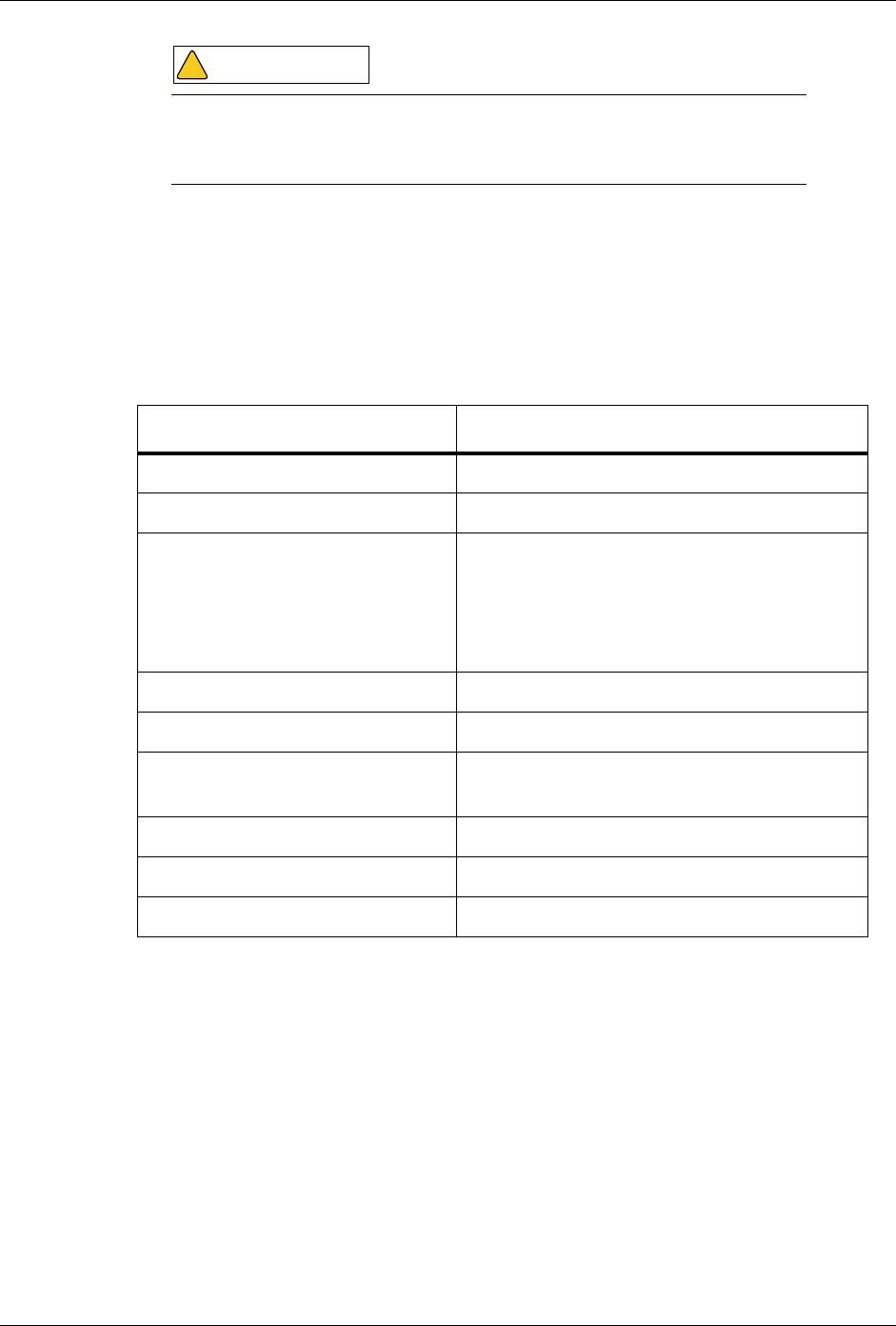
Chapter 16: Specifications
16-5 Cod. 6992200 - Rev. /
Power failure
In case of a mains power failure, an audible alarm is triggered and the red lamp is
illuminated.
16.1.4 Physical Data
The physical data reported below must be considered approximated.
Wheels and Portability
The Artis Dialysis System is provided with 4 double wheels: two lockable wheels
on the front side and two wheels without brake on the rear side.
The locks are foot-operated:
• to brake the machine, press the two locks completely down;
• to release the brake, pull the two locks completely up.
The Artis Dialysis System is provided with energy cells (batteries).
When replacing these components, follow local regulations for
proper disposal.
Parameter Dimensions
Height (without Infusion Pole) • 1550 mm
Infusion Pole Height • 1500 to 2000 mm. Max. load 10 Kg
Width • 500 mm (excluded the EvaClean
connector and dialyzer holder)
• 660 mm (when the dialyzer holder is
turned in the position used for
transportation)
Width of the base • 700 mm (included back-tray)
Depth • 600 mm
Depth of the base • 900 mm (included back-tray)
• 700 mm (excluded back-tray)
Floor Area • 0.405231 m2
Dry Weight • < 130 Kg
Transportation • in horizontal position
WARNING
!
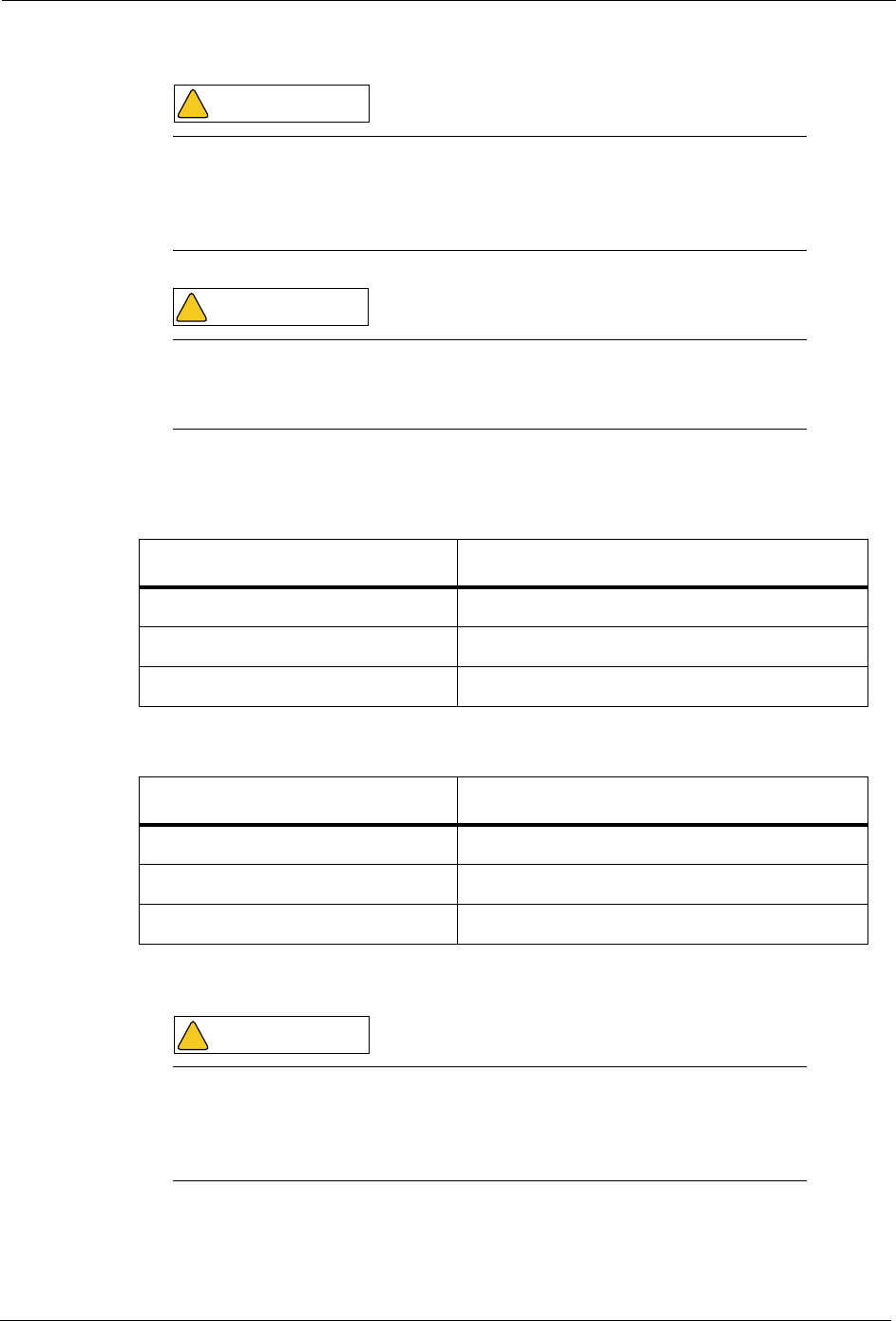
ARTIS Operator’s Manual
Cod. 6992200 - Rev. / 16-6
16.1.5 Environmental Data
Operational Mode
Storage and Transportation
Before moving the Artis Dialysis System, check that the two locks
are released and remove infusion bags or any other weights or
hanging objects from the Infusion Pole or from the concentrate
container tray.
To avoid jolting, carefully move the Artis Dialysis System by using
the handles on the rear panel.
The machine could be damaged if handled in an improper way.
Parameter Values
Ambient Temperature Range • +18°C to +35°C (65°F to 94°F).
Relative Humidity Range • 30 to 85 % rh
Air Pressure Range • 795 to 1060 HPa
Parameter Values
Ambient Temperature Range • -20°C to +70°Ca
a. Temperatures above +50° C are allowed ONLY for maximum 12 hours
Relative Humidity Range • 10 to 95% rh (non-condensing)
Air Pressure Range • 500 to 1060 HPa
If condensation of Artis Dialysis System occurs when moving it
between locations with different temperatures and high relative
humidity (e.g. outdoor and indoor locations), the inside of the
machine shall be allowed to dry before switching it on.
WARNING
!
WARNING
!
WARNING
!
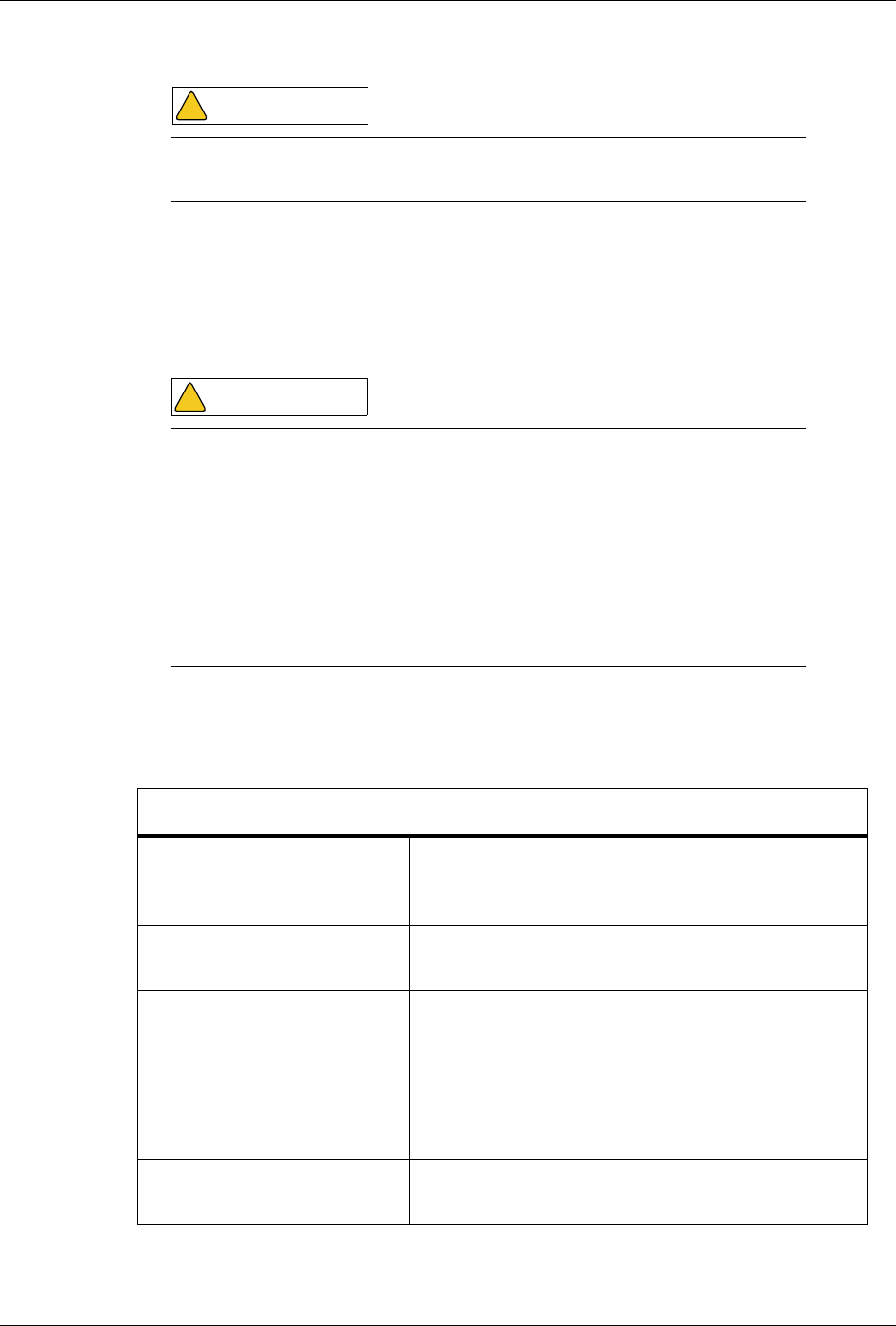
Chapter 16: Specifications
16-7 Cod. 6992200 - Rev. /
16.1.6 Software revision
This operator’s manual revision is related to the 6.04.11 software revision.
16.1.7 Connection of external equipment
The Artis Dialysis System is provided with a Connectivity Panel (see "Figure 16-1.
Connectivity Panel") for connection of external equipments, including the following
ports:
During transportation and storage the Artis Dialysis System has to
be kept in its original packing.
• All external equipments connected to the Artis Dialysis System
must be compliant with IEC 60950 or IEC 60601 series.
Equipment not complying with IEC 60601 shall be kept outside
the patient environment, as defined in the standard.
• Any person who connects external equipments to signal input,
signal output or other connectors has formed a Medical Electrical
system and is therefore responsible for the system to comply
with the requirements of IEC 60601-1-1. If in doubt, contact
qualified technician or your local representative.
Connectivity Panel
10/100 Base T Ethernet
Port • Used for connecting the machine to a
Personal Computer to interface with the
Communication System
RS232 Serial Port
(Not currently available) • Used for connecting the machine to a bed
scale, WRO300 or WRO300H
USB Port • Used for flash memories
(only for service interventions)
BPM Port • Used for connecting the BPM device
Remote Alarm • Max voltage: 24 V AC
• Max current: 500 mA
External Water Valve
(Not currently available) • Max voltage: 24 V DC
• Max current: 500 mA
WARNING
!
WARNING
!
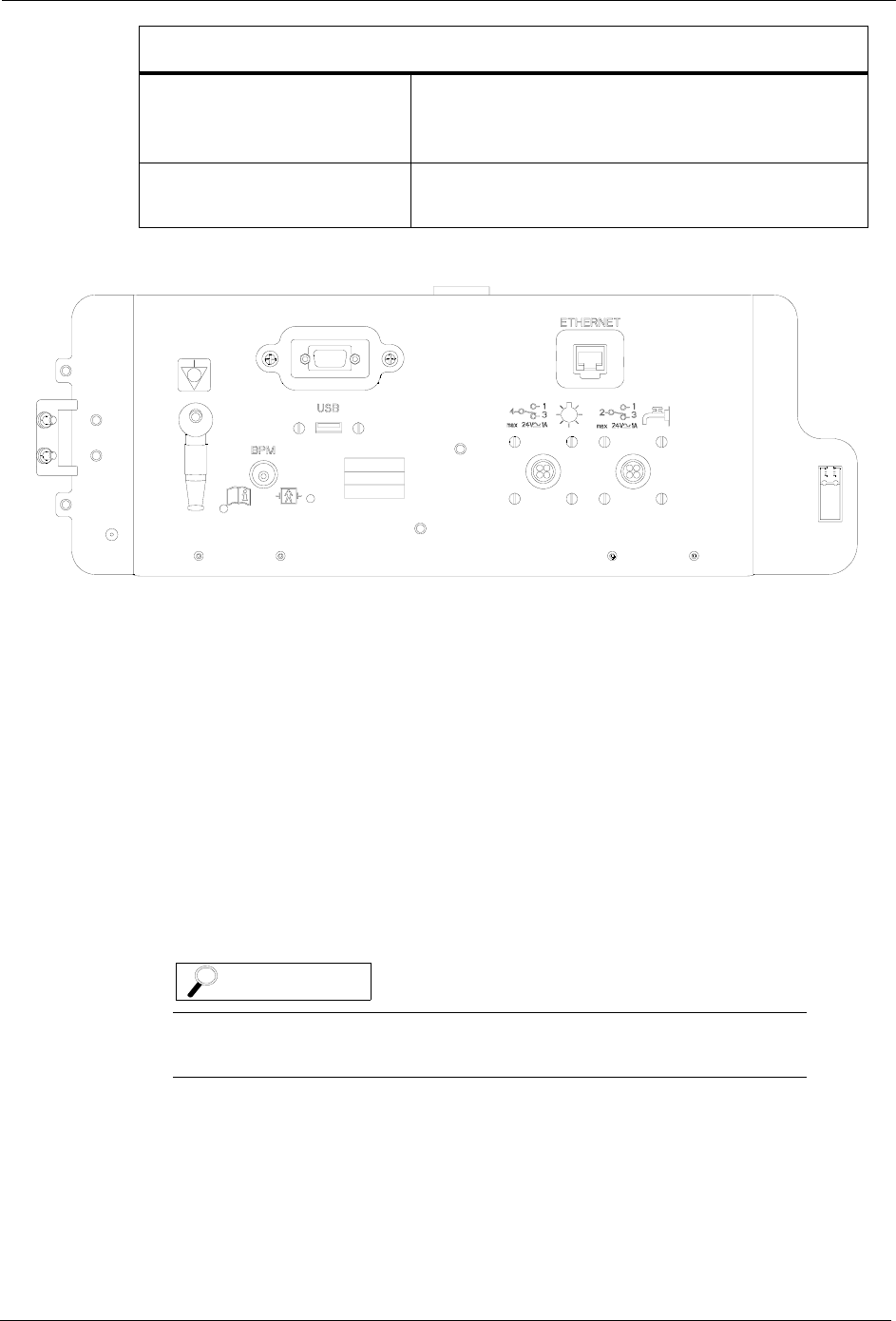
ARTIS Operator’s Manual
Cod. 6992200 - Rev. / 16-8
Figure 16-1. Connectivity Panel
16.1.8 Shipping List
The machine packaging contains the following components:
• Artis Dialysis System
• CD ROM of Artis operator’s manual
• Installation Checklist
• Water Inlet and Drain Tubes
• Infusion pole (maximum load: 10 Kg or 22 lb)
• Concentrate Wand
• pH probe assembly
• BPM Cuff
• Top Tray
• Chemical Container Shelf
Hour Meter • Displays the cumulative hours of machine
operation (total time that power to the
machine has been on)
Potential Equalization
Connector • Used for connecting a Potential Equalization
Conductor to the machine
Adjustement of the infusion pole height must be done without bags
on the hooks.
Connectivity Panel (Continued)
NOTE
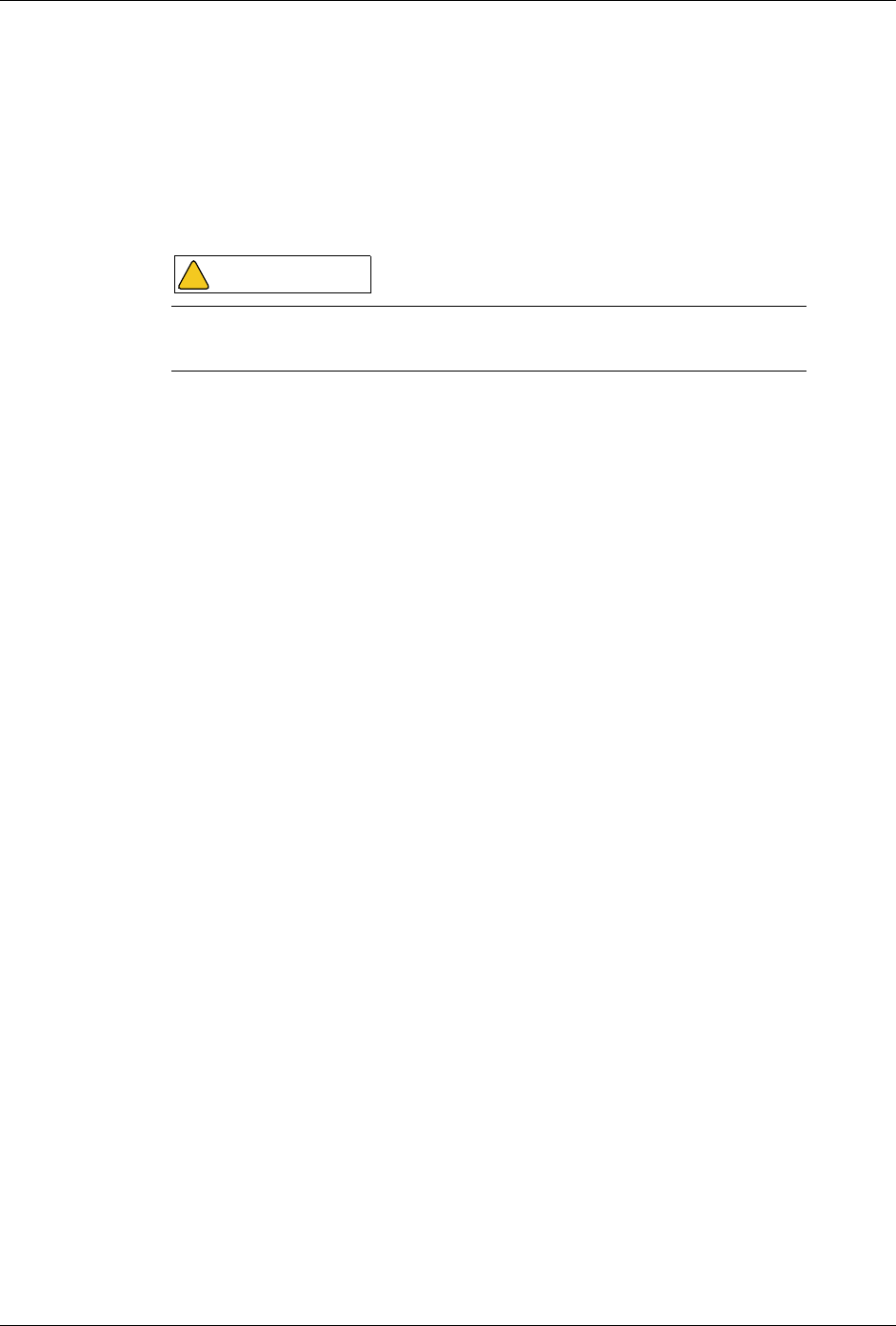
Chapter 16: Specifications
16-9 Cod. 6992200 - Rev. /
• BPM (Blood Pressure Monitoring)
• Central Concentrate Supply Kit
Accessories
• SNSP Expansion Chamber Holder
• CWP Adapter Kit
Do not assemble, install or use the Artis Dialysis System before
having carefully read this operator’s manual.
WARNING
!
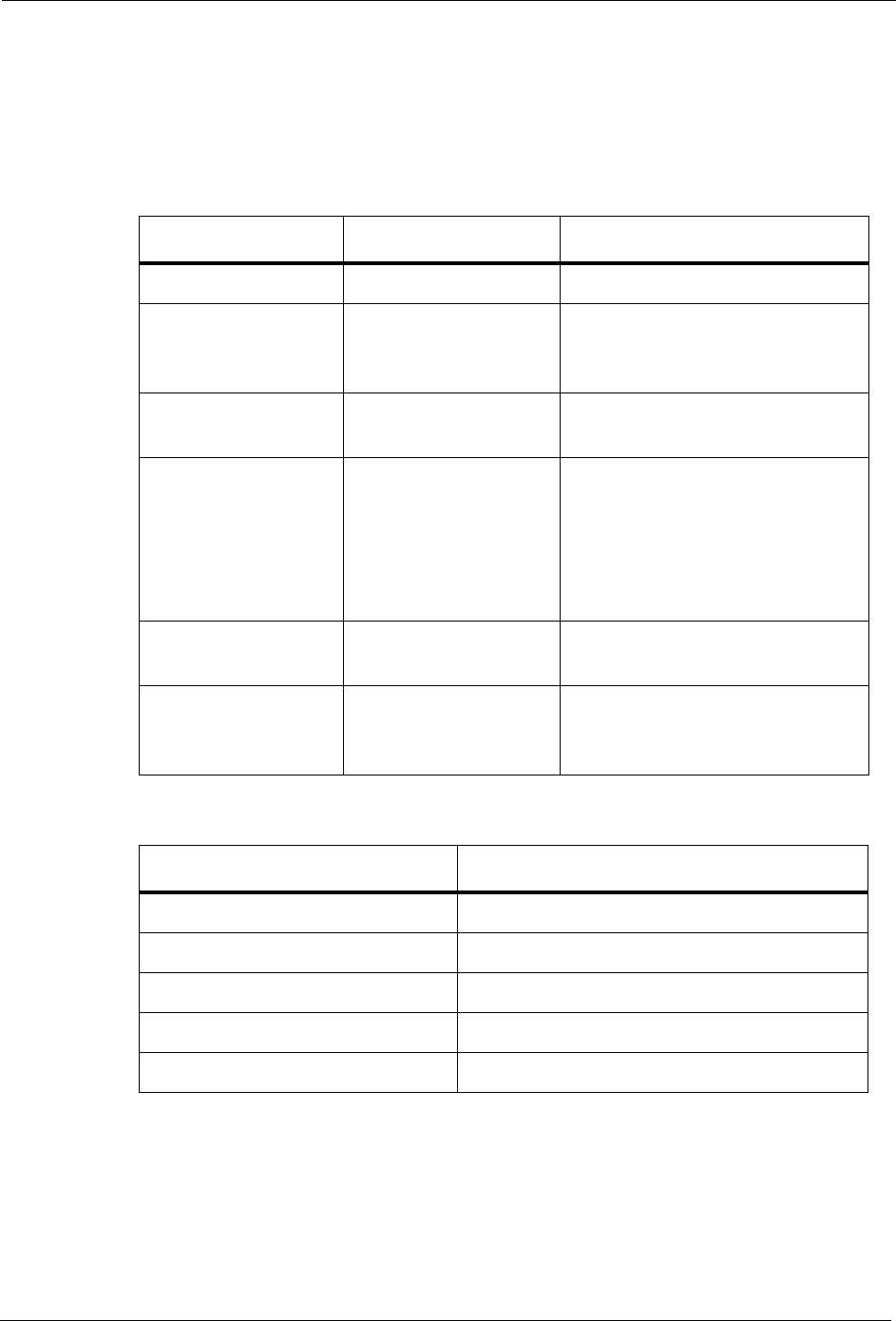
ARTIS Operator’s Manual
Cod. 6992200 - Rev. / 16-10
16.2 Hydraulic Circuit Specifications
16.2.1 Water Supply
The quality of the incoming water used by the Artis Dialysis System must comply
with local standards and ISO 13959 standard.
Main Requirements
Drain
Make the connection of the drain, as described in applicable local and
international standards, with an external pressure connector to avoid back flow.
Mantain an air clearance between the drain connector of the machine and the
drain itself.
Parameter Value Conditions
Pressure • 150 to 800 kPa /
Inlet Water
Demand
(Flow Rate)
• < 1 l/min /
Inlet Water
Conductivity • 0 to 0.5 mS/cm /
Temperature
(Treatment) • +5°C to +35°C
• +10°C to +35°C
• +16°C to +35°C
• Dialysis Fluid Flow Rate:
300 to 800 ml/min (230V)
• Dialysis Fluid Flow Rate: 300
to 750 ml/min (115V)
• Dialysis Fluid Flow Rate:
750 to 800 ml/min (115V)
Temperature
(Heat Disinfection) • +5°C to +93°C /
Inlet Tube • Length: 5 m
• Internal diameter: 8
mm
/
Parameter Value
Drain Flow Rate • Max. 1.2 l/min
Drain Fluid Temperature • Max. 90°C
Pressure • 0 to 13 kPa
Drain Tube Length • Max. 5 m
Drain Outlet Height • Max. 1.3 m above floor level
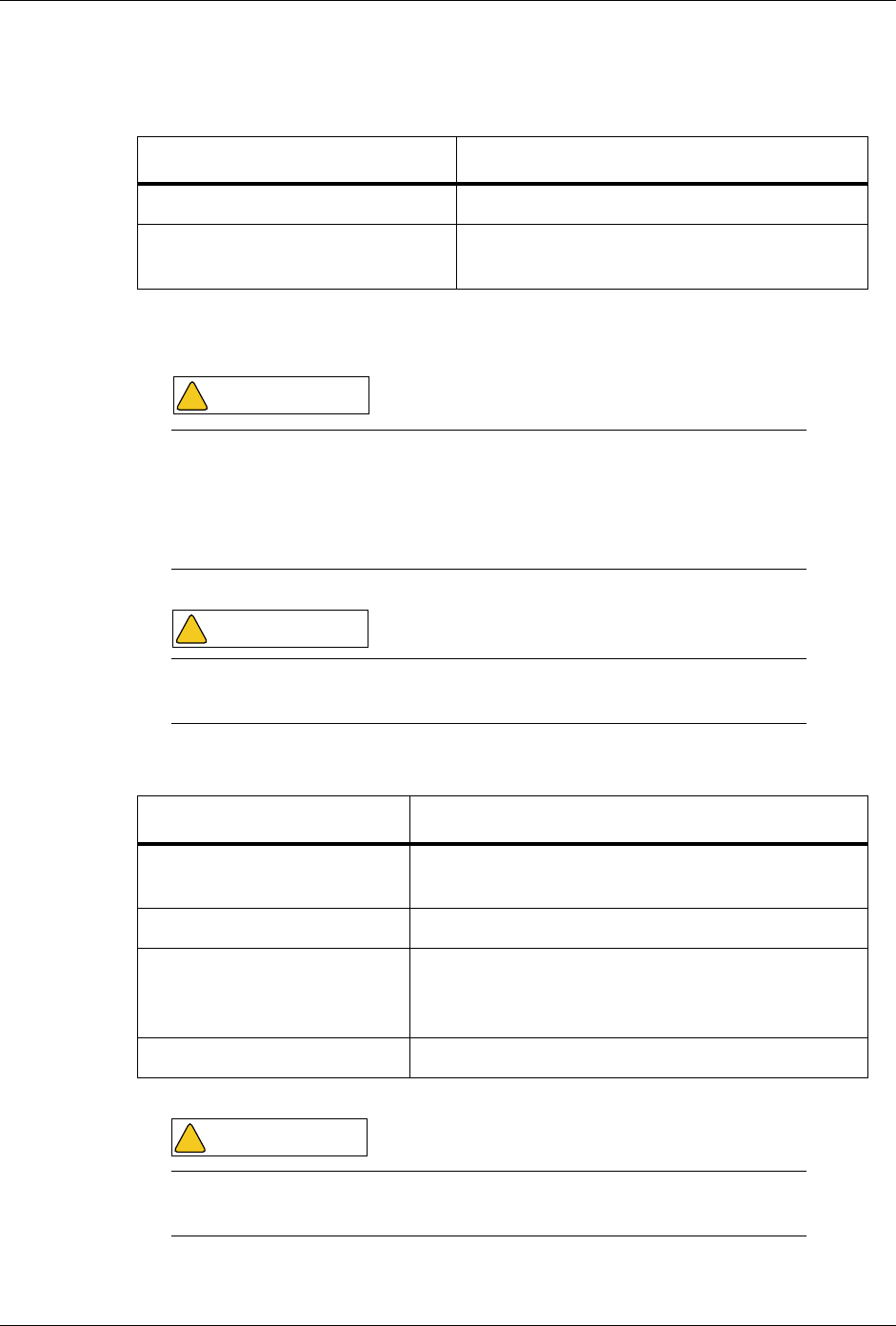
Chapter 16: Specifications
16-11 Cod. 6992200 - Rev. /
16.2.2 Concentrate Connectors
The concentrate and disinfectant connectors on the Artis Dialysis System are
colour-coded as follows:
16.2.3 Dialysis Fluid
Dialysis Fluid Temperature
Connector Colour
Acid Tube Connector • Red, located on the machine front side
Disinfectant Tubes • Yellow and Clear, located on the
machine rear side
It is recommended to use concentrates which conform to the
requirements of the European Pharmacological Standards.
The control of alarm threshold and dialysis fluid conductivity
precision is of major medical importance in ensuring a safe
dialysis treatment.
Attention must be given to the safety hazards related to incorrect
choice of dialysis fluid concentrates.
Parameter Values
Range • +35.5°C (or +2°C above the inlet water
temperature, whichever is greater) to +39.5°C
Accuracy • +0.5°C/-1.8°C of the set value
Alarm Limits • ±2 °C (±0.5°C) of the set value
• Min. +34.5 °C (±0.5°C)
• Max. +41 °C (±0.5°C)
Protection system type • Monitoring of the dialysis fluid temperature
When the temperature of the dialysis fluid exceeds the alarm
threshold, the audible and visual alarms are triggered.
WARNING
!
WARNING
!
WARNING
!
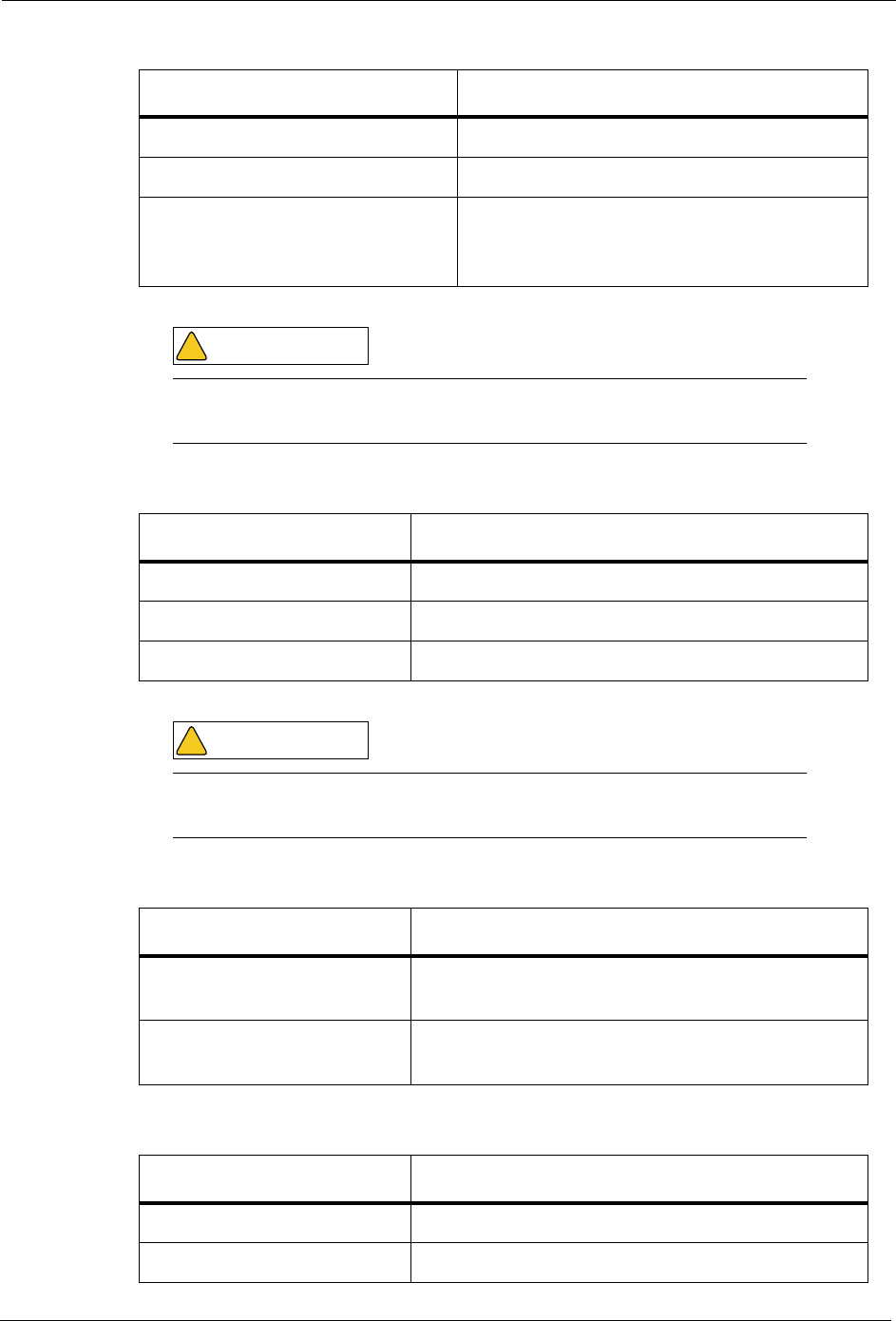
ARTIS Operator’s Manual
Cod. 6992200 - Rev. / 16-12
Dialysis Fluid Flow
Dialysis Fluid Pressure
Degassing
pH Supervision
Parameter Values
Dialysis Fluid Flow Rate • 300 to 800 ml/min, in steps of 50 ml/min
Accuracy • ± 2% of the set value
Alarm Limits • ±10% (accuracy ±1%) of the set value
• Min. 250 ml/min (±10 ml/min)
• Max. 900 ml/min (±10 ml/min)
When the dialysis fluid flow exceeds the alarm threshold, the
audible and visual alarms are triggered.
Parameter Values
Permitted Values • -350 to +480 mmHg
Accuracy • ± 25 mmHg
Alarm Limits • -350 to +480 mmHg
When the dialysis fluid pressure exceeds the alarm threshold, the
audible and visual alarms are triggered.
Parameter Values
Method of Degassing • Heating in combination with vacuum
pumping.
Pressure • < 150 mmHg (±10 mmHg) or dissolved gas in
dialysis fluid < 7.0 mg/l .
Parameter Values
Range • 1.0 to 13.0 ph units
Accuracy • ±0.2 ph units
WARNING
!
WARNING
!
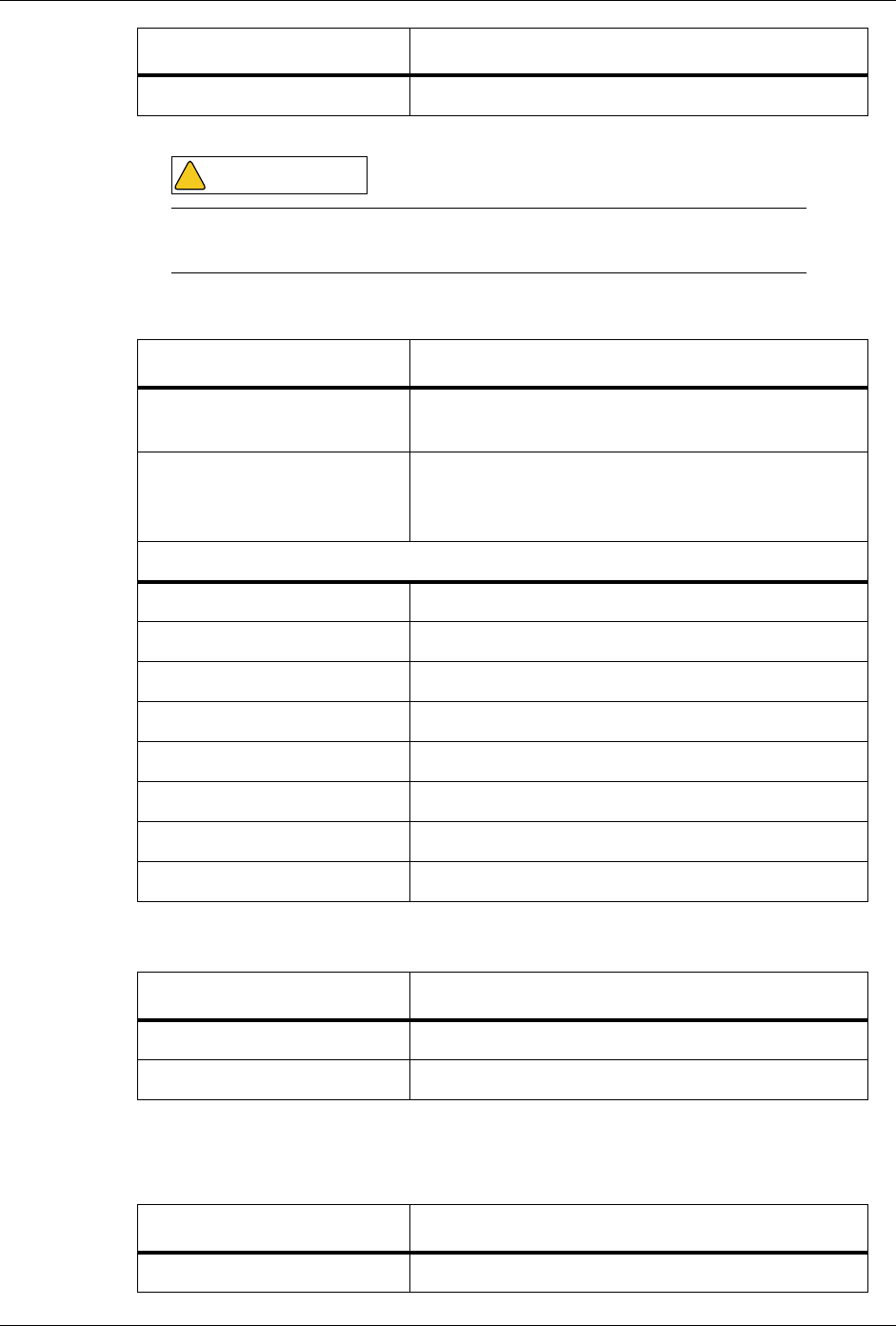
Chapter 16: Specifications
16-13 Cod. 6992200 - Rev. /
Supported Concentrates
Ions Concentration
Concentrate Supply Pressure
Alarm Limits • 6.5 to 7.6 ph units (±0.1 ph units)
When the pH of the dialysis fluid exceeds the alarm threshold, the
audible and visual alarms are triggered.
Parameter Values
Liquid concentrates • Acidic (A) concentrate for preparation of 8.4%
bicarbonate dialysis fluid
Dry concentrates • BiCart® Cartridge: Sodium Bicarbonate 8.4%
concentrate for preparation of 8.4 %
bicarbonate dialysis fluid
Ions Concentration
Na+ (Sodium) • 138 to 140 mmol/l (±2.5%)
HCO3- (Bicarbonate) • 24 to 38 mmol/l (± 5%)
K+• 0 to 4 mmol/l (± 5%)
Ca2+ • 1 to 1,75 mmol/l (± 5%)
Mg2+ • 0,375 to 0,75 mmol/l (± 5%)
Cl-• 103,80 to 110,5 mmol/l (± 5%)
CH3COO-• 2 to 3 mmol/l (± 5%)
Glucose • 0 to 5,55 g/l (± 5%)
Parameter Values
Na+ (Sodium)a
a.Can be set by the operator
• 130 to 160 mmol/l (±2.5%)
HCO3- (Bicarbonate)a• 24 to 38 mmol/l (± 5%)
Parameter Values
Range • -20 kPa to +50 kPa
Parameter Values
WARNING
!
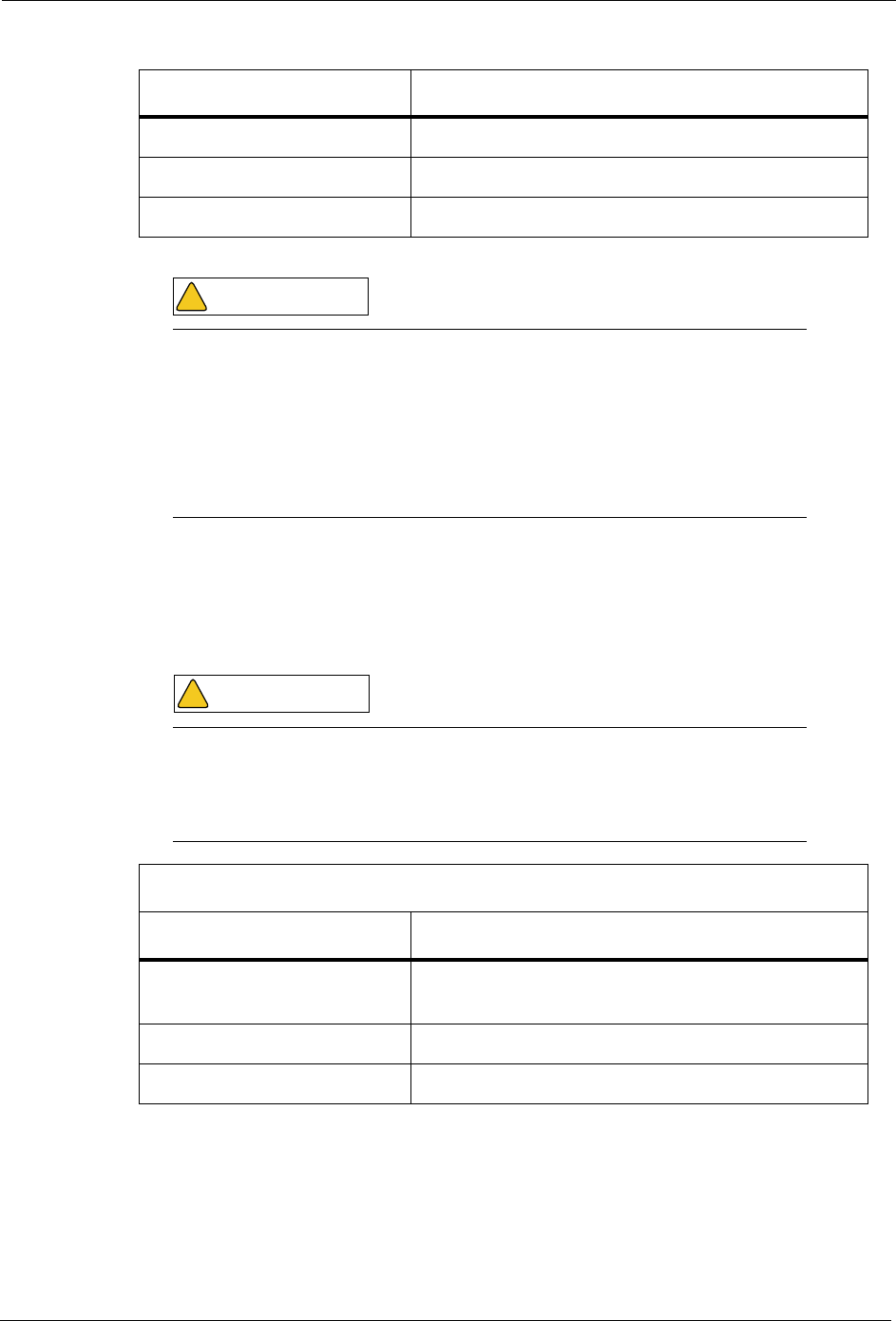
ARTIS Operator’s Manual
Cod. 6992200 - Rev. / 16-14
Total Conductivity
Conductivity of the Bicarbonate Solution
BiCart Cartridges (sodium bicarbonate cartridge - see specific instruction sheet)
can be used with the Artis Dialysis System.
Dialysis Fluid Pump Monitoring for Concentrate Exchange
The reference values for the speed of the acid/acetate and bicarbonate ceramic
pumps are defined during the corresponding calibration processes and represent
the 0% functioning point.
Parameter Values
Conductivity measurings • 13.3 to 15.7 mS/cm
Accuracy • ± 0.2 mS/cm
Alarm Limits • 13.1 to 15.9 mS/cm
It is responsibility of the user to determine the correspondence
between the dialysis fluid conductivity, displayed by the machine
and the dialysis fluid solute content, verified by clinical laboratory
results, for each concentrate used for dialysis treatment.
This can be done by taking dialysis fluid samples at different
conductivity values (e.g. 13, 14, 15 mS/cm) and sending them to a
laboratory for analysis.
Carefully read the BiCart Cartridge Instructions for Use before
using the device. BiCart Cartridge may only be used by staff, who
are specially trained for hemodialysis treatments, using the Artis
Operator’s Manual.
BiCart Solution Conductivity Monitor
Parameter Value
Conductivity values
allowed • 2.2 to 3.8 mS/cm
Average accuracy • ±0.1 mS/cm
Alarms • ±5% of the conductivity value
WARNING
!
WARNING
!
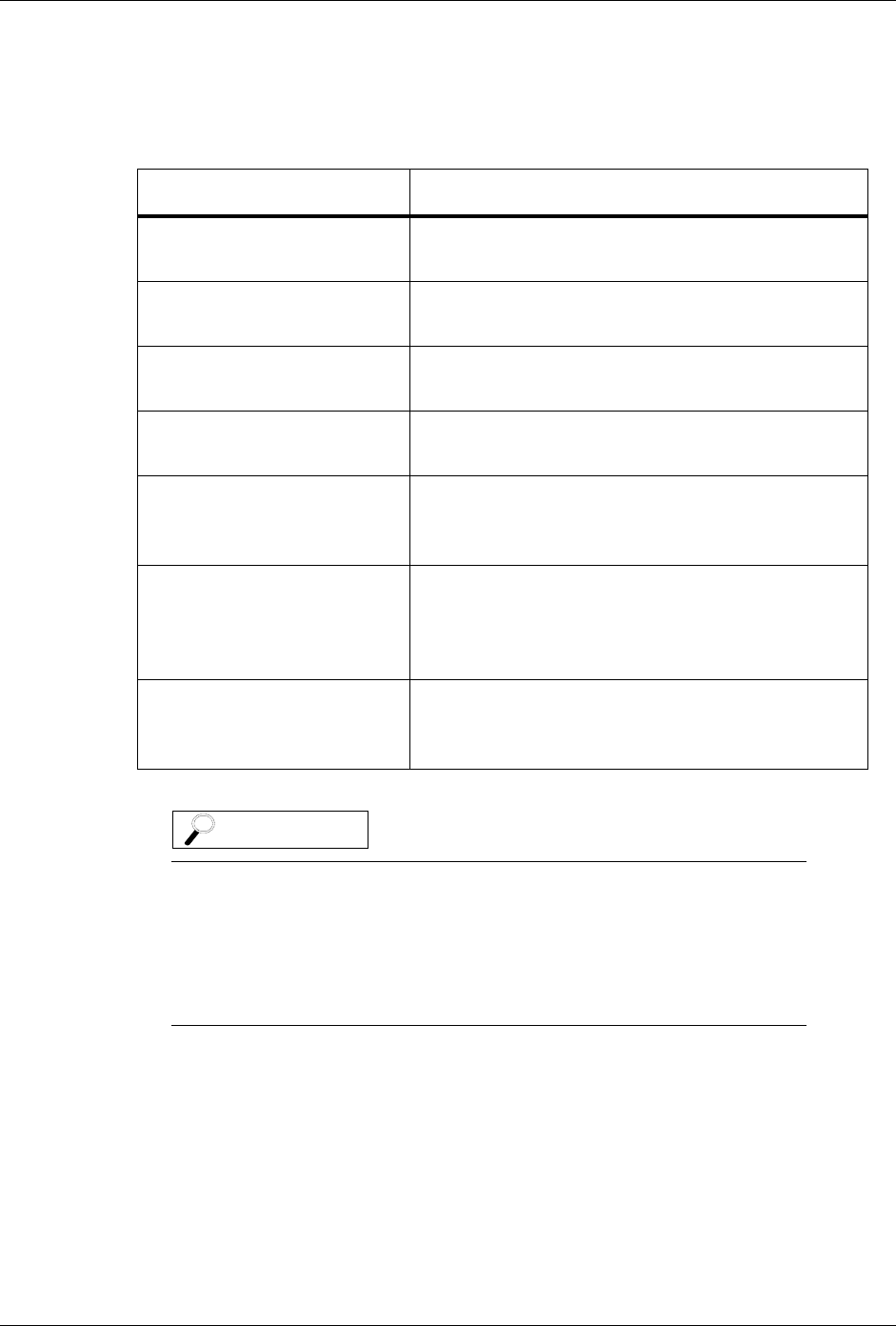
Chapter 16: Specifications
16-15 Cod. 6992200 - Rev. /
A safety system is present to prevent concentrate exchange errors, by generating
an alarm in case the pump speeds are measured outside a range of ±10% to
±17% of the reference value.
16.2.4 Substitution Fluid
Volume Control Mode
Hemodiafiltration treatments performed by the Artis Dialysis System can be
controllable in Volume Control Mode (Post dilution): the total weight loss, the
Substitution Fluid Flow Rate and Treatment Time are set by the user while the
TMP pressure varies accordingly to the total Ultra-filtration rate (weight loss rate +
substitution fluid flow rate).
Parameter Value
Substitution Fluid Flow
Rate • 1.2 to 19.8 l/h
Online Produced
Substitution Fluid • Max. 100 litres, in post-dilution (99L for
treatment, 1L for restitution)
Alarm Limits • 10% of the set substitution fluid flow rate or ±5
mL/min, whichever is greater
OnLine Bolus
(default) • 50 mL to 1000 mL, in steps of 10 mL (default
150 mL)
OnLine Bolus Rate
(default)
Preset
• 20 mL/min to 330 mL/min, in steps of 5 mL/
min (150 mL/min)
QF/QB (in Post-dilution)
Preset • 30% to 50%, in steps of 1%, in Volume
Control Mode. Default:40%
• 30% to 60%, in steps of 1%, in Pressure
Control Mode. Default:40%
QF/QB (in Pre-dilution)
Preset
(not currently available)
• 80% to 120%, in steps of 1%
The On-line Substitution Fluid, prepared with inlet water
conforming to ISO 13959 and concentrates conforming to
European Pharmacopea, will have a microbiological fluid quality
of:
• Bacterial content less than 10E-6 CFU/ml,
• Endotoxin content < 0.03 IU/ml measured with an LAL assay.
NOTE

ARTIS Operator’s Manual
Cod. 6992200 - Rev. / 16-16
In online volume control treatments, the following ratios will always be displayed:
• Ratio between the total Ultra-filtration rate (weight loss rate +
substitution fluid flow rate) and the Real Blood Flow Rate (QF/QB) in
POST dilution mode
• Ratio between the Substitution Fluid Flow Rate and the Real Blood
Flow Rate (Qi/Qb) in PRE dilution mode
TMP in Volume Control Mode
The operator will be able to set the maximum alarm limit for the TMP, during an
Online treatment in volume control mode, in the following range:
• 0 mmHg to Absolute Maximum TMP, in steps of 10 mmHg
where the Absolute Maximum TMP is a pre-defined value set by a Service
technician in the following range:
• 0 mmHg to +500 mmHg in steps of 10 mmHg
Pressure Control Mode
Hemodiafiltration treatments performed by the Artis Dialysis System can be
controllable in Pressure Control Mode (Post dilution): the Total Weight Loss, the
TMP and the Treatment Time are set by the user while the Substitution Pump
Fluid Flow Rate varies accordingly to the TMP.
In online pressure control treatments, the following ratios will always be displayed:
• Ratio between the total Ultra-filtration rate (weight loss rate + substitu-
tion fluid flow rate) and the Real Blood Flow Rate (QF/QB) in POST
dilution mode
• Ratio between the Substitution Fluid Flow Rate and the Real Blood
Flow Rate (Qi/Qb) in PRE dilution mode
Pressure Control Mode with Ultra Control
Hemodiafiltration treatments performed by the Artis Dialysis System can be
controllable in Pressure Control Mode (Post dilution) with Ultra Control: if the
related functionality has been selected in the Preset, then during the treatment,
the machine allows manual Ultra Scans or automatic Ultra scans. During an Ultra
Scan, the machine automatically increases the TMP from the initial value to the
value that maximizes the total Ultra-filtration.
In case of manual Ultra Scans, the Ultra Scan process is activated by the user and
automatically stopped by the machine as the optimum TMP is reached. A manual
Ultra Scan can also be stopped by the user.
In case of automatic Ultra Scans, three Ultra Scan processes are automatically
activated by the machine with a fixed timing and automatically stopped by the
machine as the optimum TMP is reached. An automatic Ultra Scan can also be
stopped by the user.
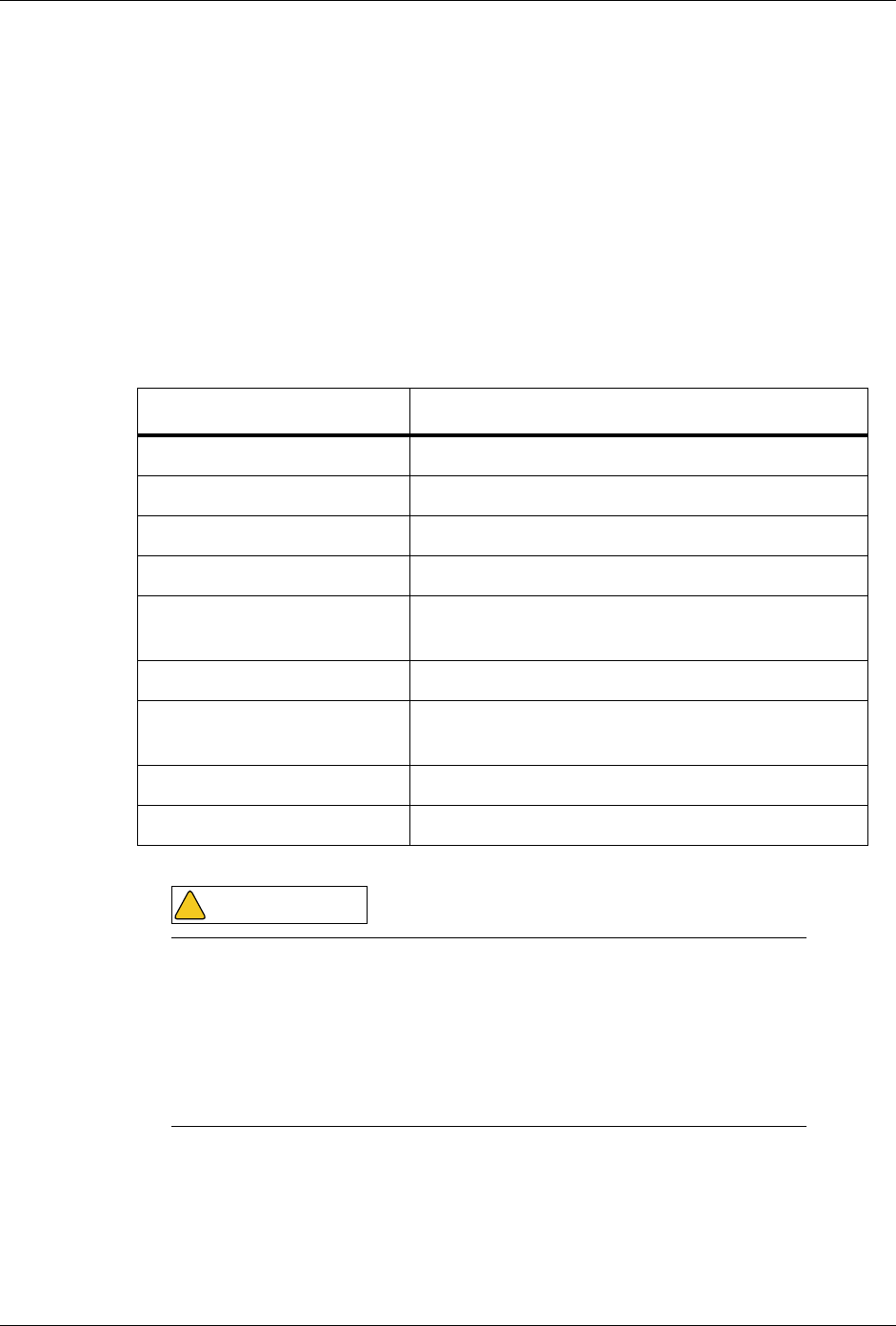
Chapter 16: Specifications
16-17 Cod. 6992200 - Rev. /
TMP in Pressure Control Mode
The operator will be able to set the maximum alarm limit for the TMP, during an
Online treatment in volume control mode, in the following range:
• 0 mmHg to Absolute Maximum TMP, in steps of 10 mmHg
where the Absolute Maximum TMP is a pre-defined value set by a Service
technician in the following range:
• 0 mmHg to +350 mmHg in steps of 10 mmHg
16.2.5 Ultrafiltration system
The accuracy of the Ultrafiltration system will be guaranteed in the following
operating ranges:
Parameter Values
Dialysis Fluid Flow • 300 to 800 ml/min
UF Rate • 0 to 3.0 l/h
UF Rate Accuracy • ±50 ml/h
UF Volume • 0 to 24 litres, in steps of 0.05 litres
UF Volume Accuracy • ± 2.5% or ±50 ml/h * total treatment time,
whichever is greater.
TMP • -200 to +600 mmHg (±15 mmHg)
Treatment Time • 00.30 to 08.00 (hour.minute), in steps of 5
minutes
Protein Content • 0 to 120 mg/l
Protection System Type • Monitoring of the ultrafiltration rate
If the difference between the accumulated weight loss rate
measured by the Ultrafiltration System and the accumulated
weight loss rate measured by the Protective System of the
machine is greater than ±80 ml an audible and visual alarm is
triggered.
When this alarm is activated the Venous Pump is stopped and the
dialysis fluid goes into bypass.
WARNING
!
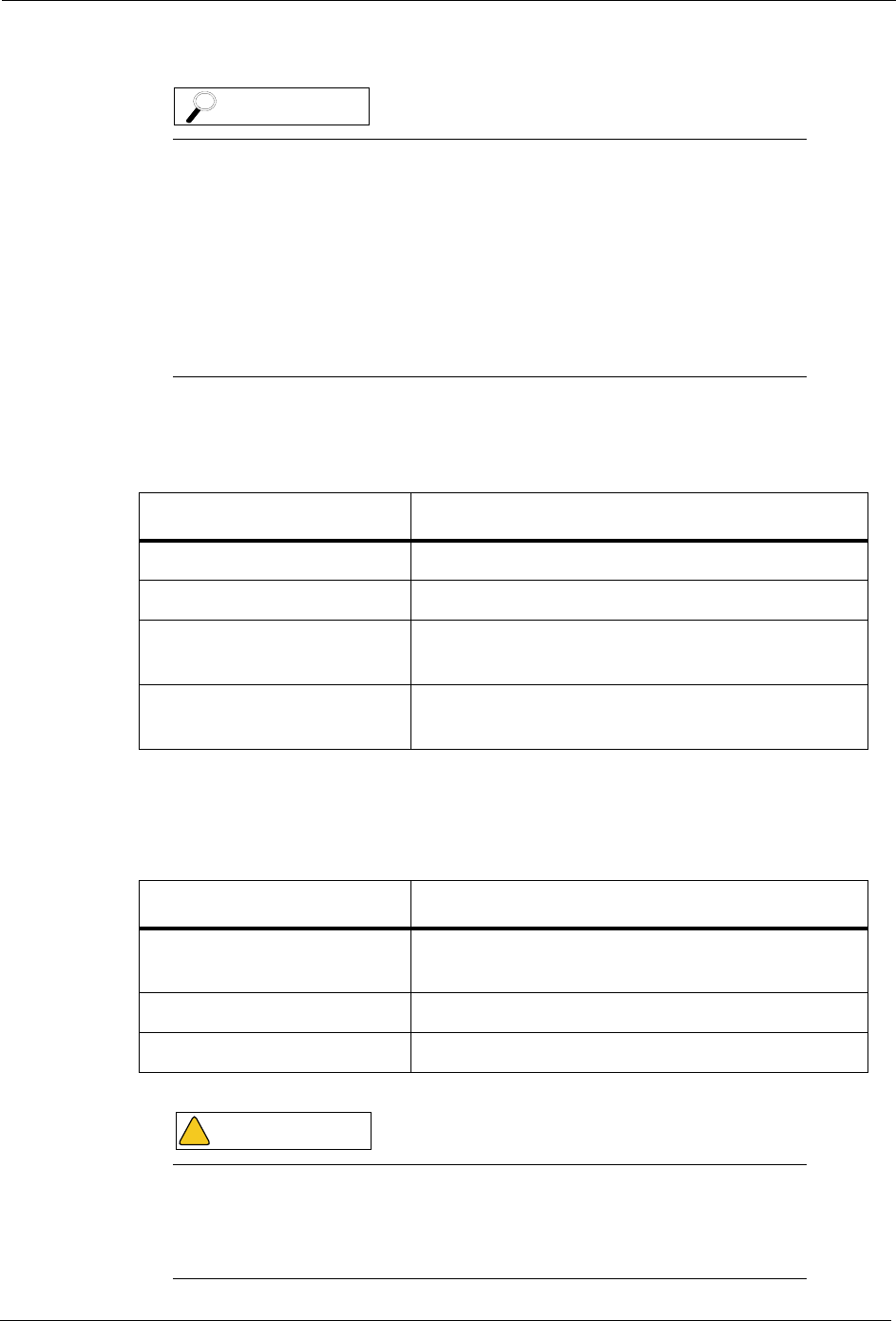
ARTIS Operator’s Manual
Cod. 6992200 - Rev. / 16-18
Ultrafiltration Supervision
Following the alarm limits for the Ultrafiltration System control:
16.2.6 Blood Leak Detection
Besides the ultrafiltration, the patient’s weight change during
treatment is affected by other factors such as fluid and food intake,
perspiration, drug administration, infusion priming and rinseback
volumes, amongst others.
In addition, precise pre- and post-treatment weight are critical for
the proper assesment of the ultrafiltration during the treatment. If
these measurements are not accurate a discrepancy between the
achieved ultrafiltration during treatment and the patient’s weight
changes will occur.
Parameter Values
UF Volume Supervisiona
a. It is defined as the difference between the Actual UF Volume and the UF Vol-
ume set by the operator.
• < 540 ml
UF Rate Alarm Limits • ±80 ml of the set value
Accumulated UF Volume
Alarm limit • ±0.10 -2.0 I or ±0.10 l/h*passed treatment
time (h), can be preset
UF Rate Measurement • 0 to +3.0 l/h
• Accuracy: ±5 ml/min verified at the Start-up
Parameter Values
Sensitivity • > 0.35 ml/min (0.05 ml/min) , haematocrit
32%, ±2%
Alarm response time • 5 seconds (±0.5 seconds)
Detection Method • Optical Infrared System
A Safety Test of the Blood Leak Optical Sensor is automatically
performed each time the machine enters the Preparation mode.
When the Blood Leak sensor test fails audible and visual alarms
are triggered .
NOTE
WARNING
!
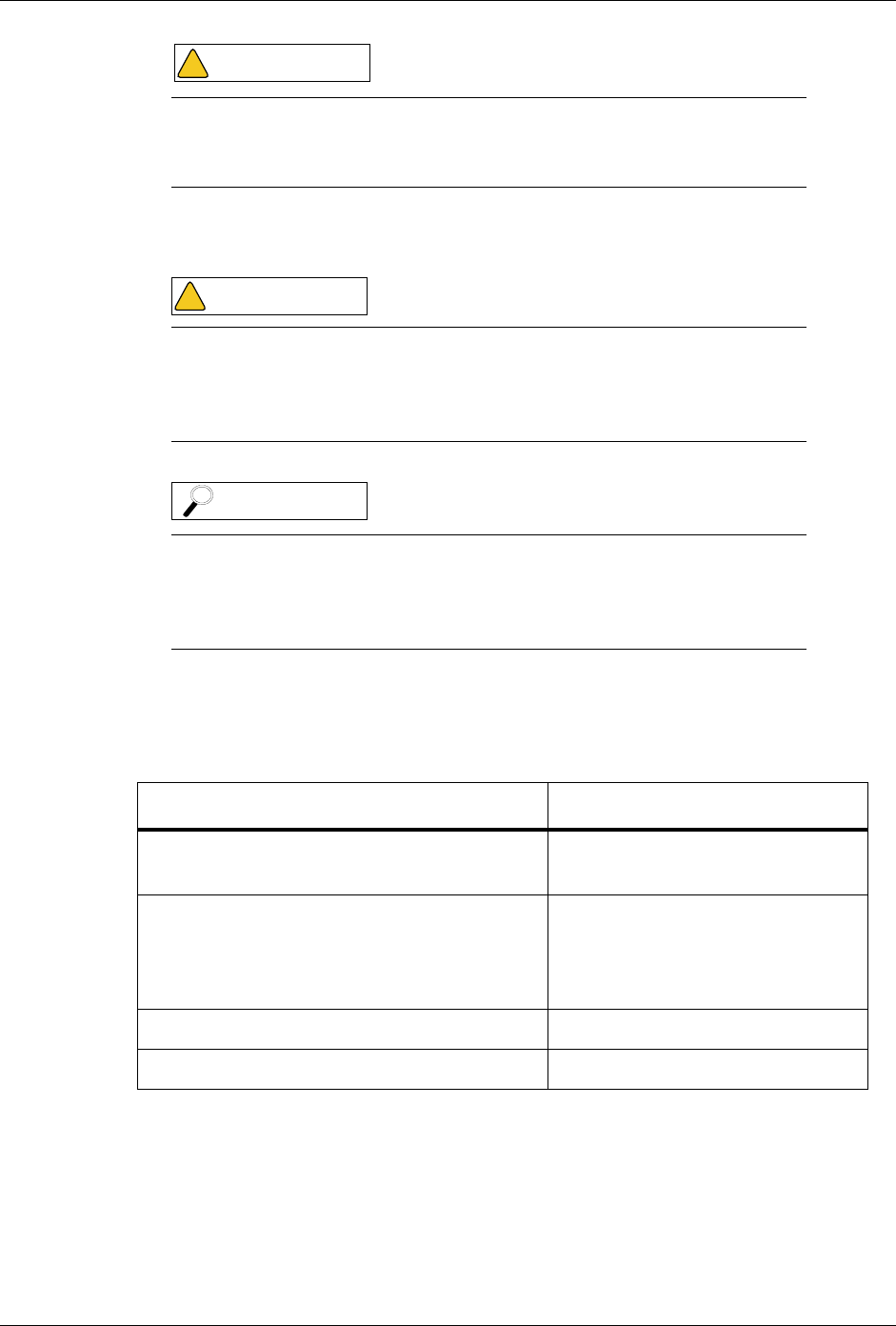
Chapter 16: Specifications
16-19 Cod. 6992200 - Rev. /
16.2.7 Disinfection
16.2.7.1 Chemical Disinfectants
Following a list of the main chemical solutions that may be used with the Artis
Dialysis System for chemical disinfection:
In the “Isolated UF” process or with the hydraulic circuit in bypass,
the Blood Leak Alarm may be delayed, due to operating conditions
and dialyzer characteristics.
Contact with cleaning and/or disinfection chemicals may pose a
risk of burns, skin irritation or other adverse reactions. Always
follow the chemical manufacturer's instructions when handling
these products or cleaning spills.
It is recommended to alternate the disinfection methods and/or the
disinfectants, in order to optimize cleaning, descaling and
disinfection of the machine.
For additional information contact your local representative.
Active Ingredient Trade Names
Sodium Hypochlorite • Bleach® 5%
• Amuchina™ 1.1%
Peracetic Acid • Dialox™ 0,35%
• Actril 0,06%
• Renalin 4%
• Oxagal 0,5%
Sodium Carbonate • CleanCart A
Citric Acid • CleanCart C
WARNING
!
WARNING
!
NOTE
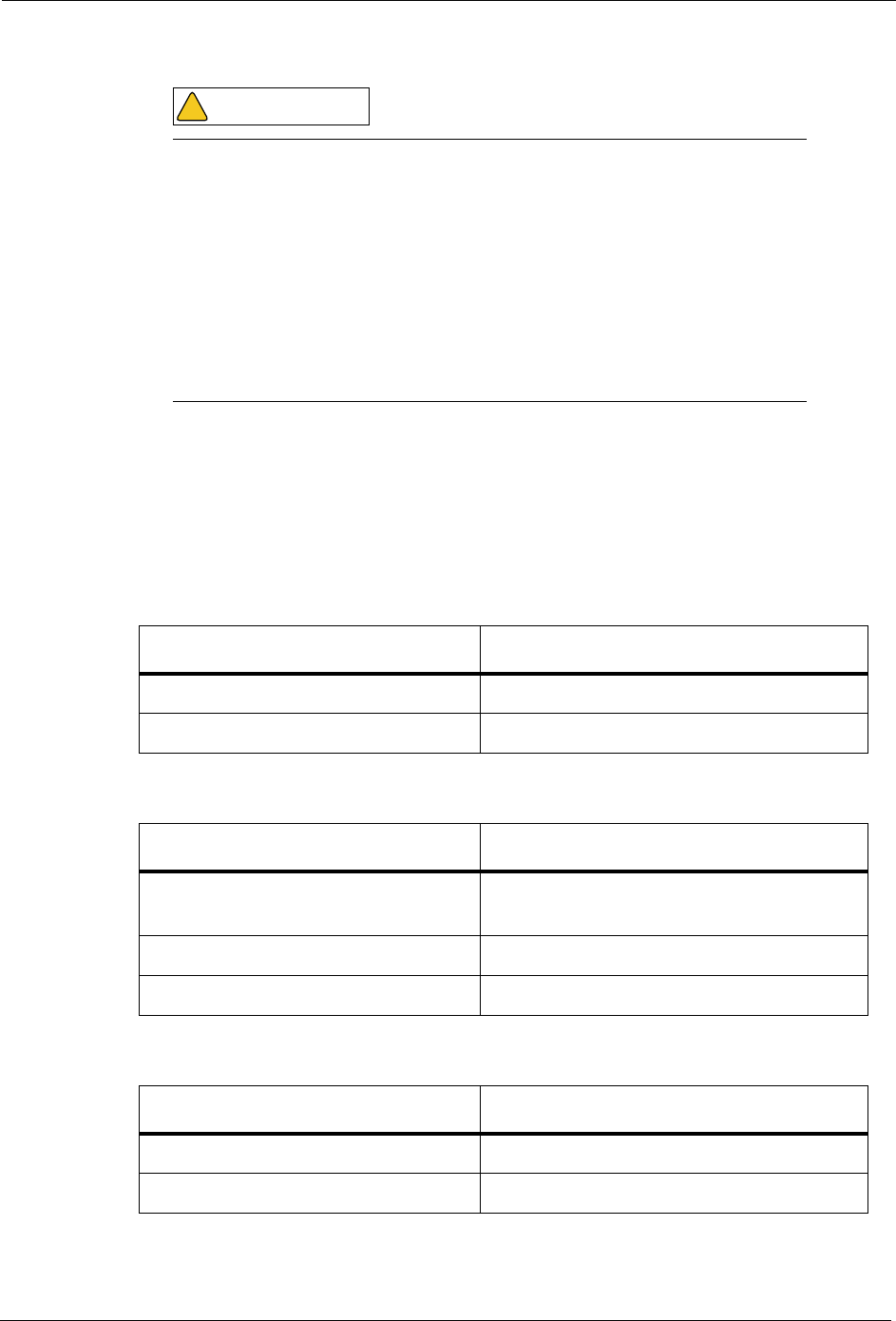
ARTIS Operator’s Manual
Cod. 6992200 - Rev. / 16-20
16.2.7.2 Disinfection Programs
Following a list of the main disinfection programs allowable with the Artis Dialysis
System.
The indicated “Total Time” parameter includes all the phases of the different
disinfection processes (fill-up, circulation, drain and cooling).
Heat Disinfection
Heat Disinfection with CleanCarts
Central Heat Disinfection
To prevent damaging the machine, do not leave disinfectant
solutions in the machine for periods over the following limits:
• 20 min for Sodium Hypochlorite based solutions at Disinfectant
strength (Max. 0.2% concentration)
• 20 min for Citric Acid based solutions at Disinfectant strength
(Max. 2% concentration)
• 20 min for Sodium Carbonate based solution at Disinfectant
strength (Max. 0.5% concentration)
• 72 hours for Peracetic Acid based solutions at Disinfectant
strength (Max. 0.10% concentration)
Parameter Values
Temperature • Max 99°C
Total Time • 34 min
Parameter Values
Heated Solution Concentration • Max. 2%, CleanCart-C
• Max. 0.5% CleanCart-A
Temperature • Max. 99°C
Total Time • 44 min
Parameter Values
Temperature • Max 99° C
Total Time • 34 min
WARNING
!
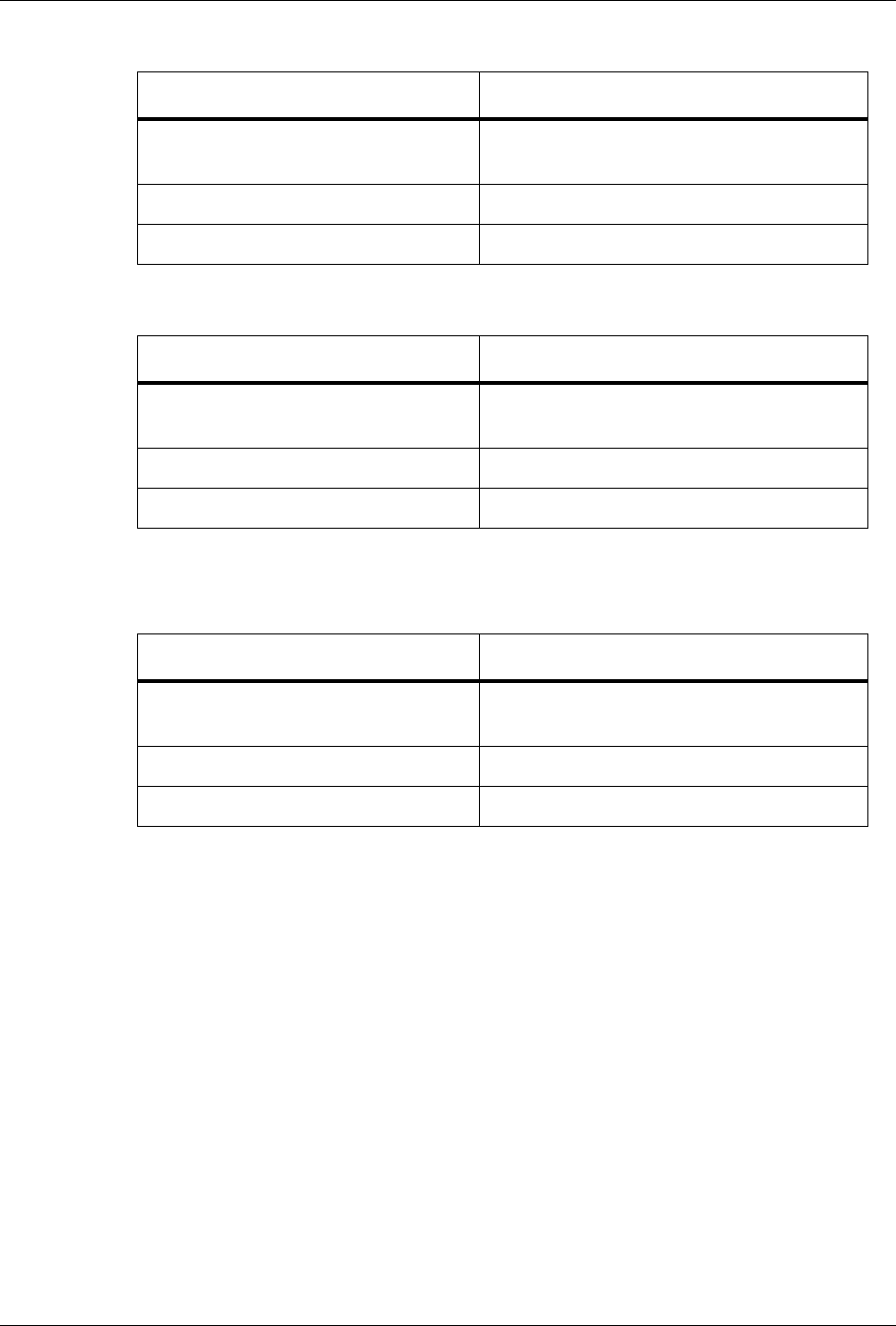
Chapter 16: Specifications
16-21 Cod. 6992200 - Rev. /
Chemical Disinfection - Peracetic Acid
Chemical Disinfection - Low Peracetic Acid
Chemical Disinfection - Sodium Hypochlorite
(Not currently available)
16.2.7.3 Rinsing
The Artis Dialysis System will automatically perform a Rinse process after any
Chemical Disinfection Program and a drain of the circuit after any Rinse process.
It is also possible to manually activate a rinsing process after a dialysis treatment.
The effectiveness of Rinsing (measured at a point in the hydraulic circuit just prior
to the dialyzer connection) conforms to international standards for residual
concentrations of disinfectant (European Pharmacological Standards and the
ANSI - AAMI RD62):
• Peracetic maximum 1 ppm
• Sodium Hypochlorite maximum 0.1 ppm
Parameter Values
Disinfectant Solution
Concentration after 1:35 dilution • Max. 0.10%
Disinfection Time • 16 min.
Rinse Time • 38 min.
Parameter Values
Disinfectant Solution
Concentration after 1:35 dilution • Max. 0.01%
Disinfection Time • 16 min.
Rinse Time • 27 min.
Parameter Values
Disinfectant Solution
Concentration after 1:35 dilution • Max. 0.2%
Disinfection Time • 16 min.
Rinse Time • 66 min.
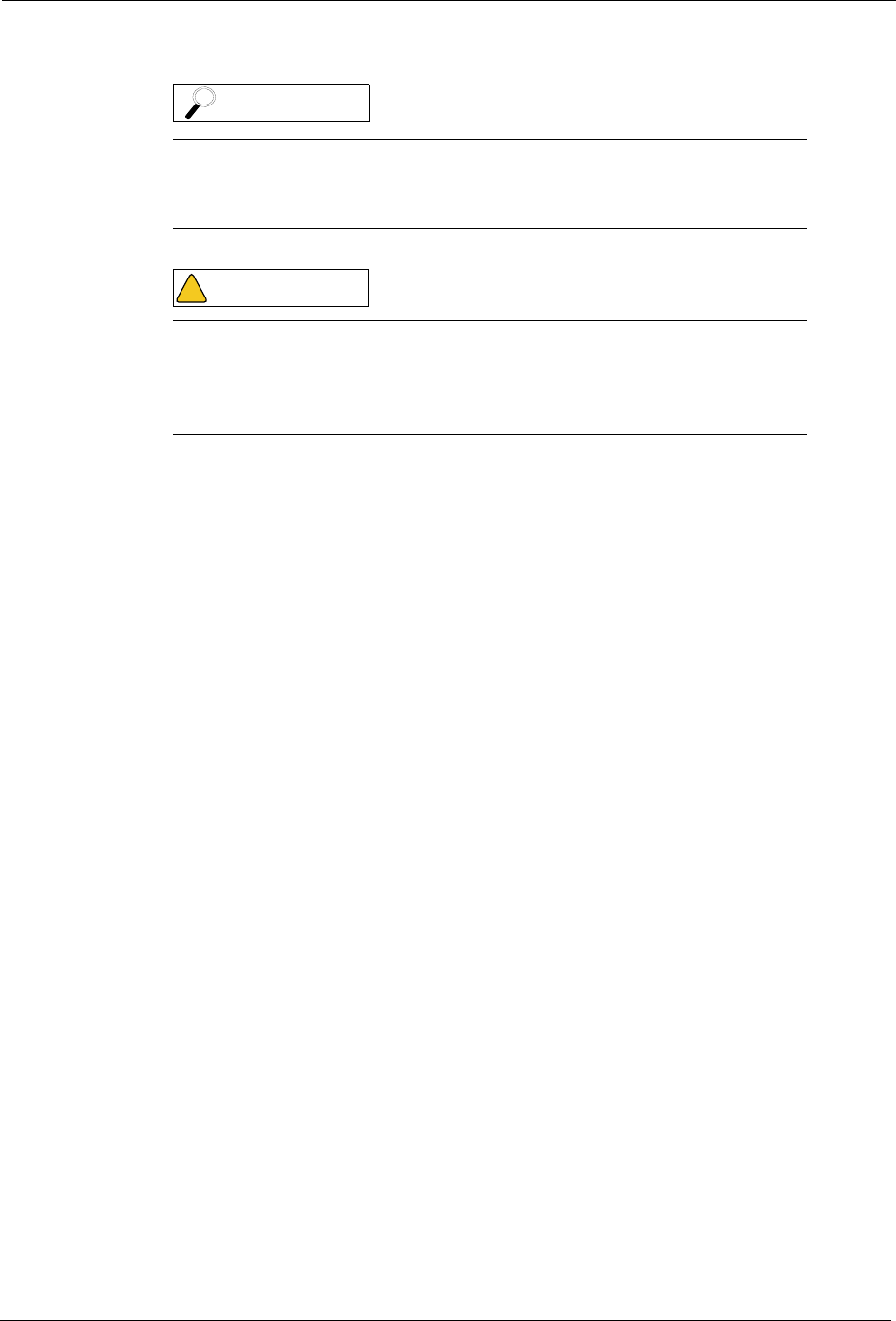
ARTIS Operator’s Manual
Cod. 6992200 - Rev. / 16-22
16.2.7.4 External Cleaning
It is possible to clean the Artis Dialysis System externally without affecting the
original surface appearance using the following products:
• Isopropanol 60%
• Liquid soap
• Ethanol 70%
• Sodium Hypochlorite of 1.5% available chlorine
The test procedures for the measurement of disinfection and
rinsing efficiency are available, upon request, from the
manufacturer’s quality control department.
After a Chemical Disinfection program, a test for residues of
disinfectant must be performed before attaching the concentrates
to the machine to avoid the risk of blood hemolysis due to the
exposure of the patient to the chemical residues.
NOTE
WARNING
!
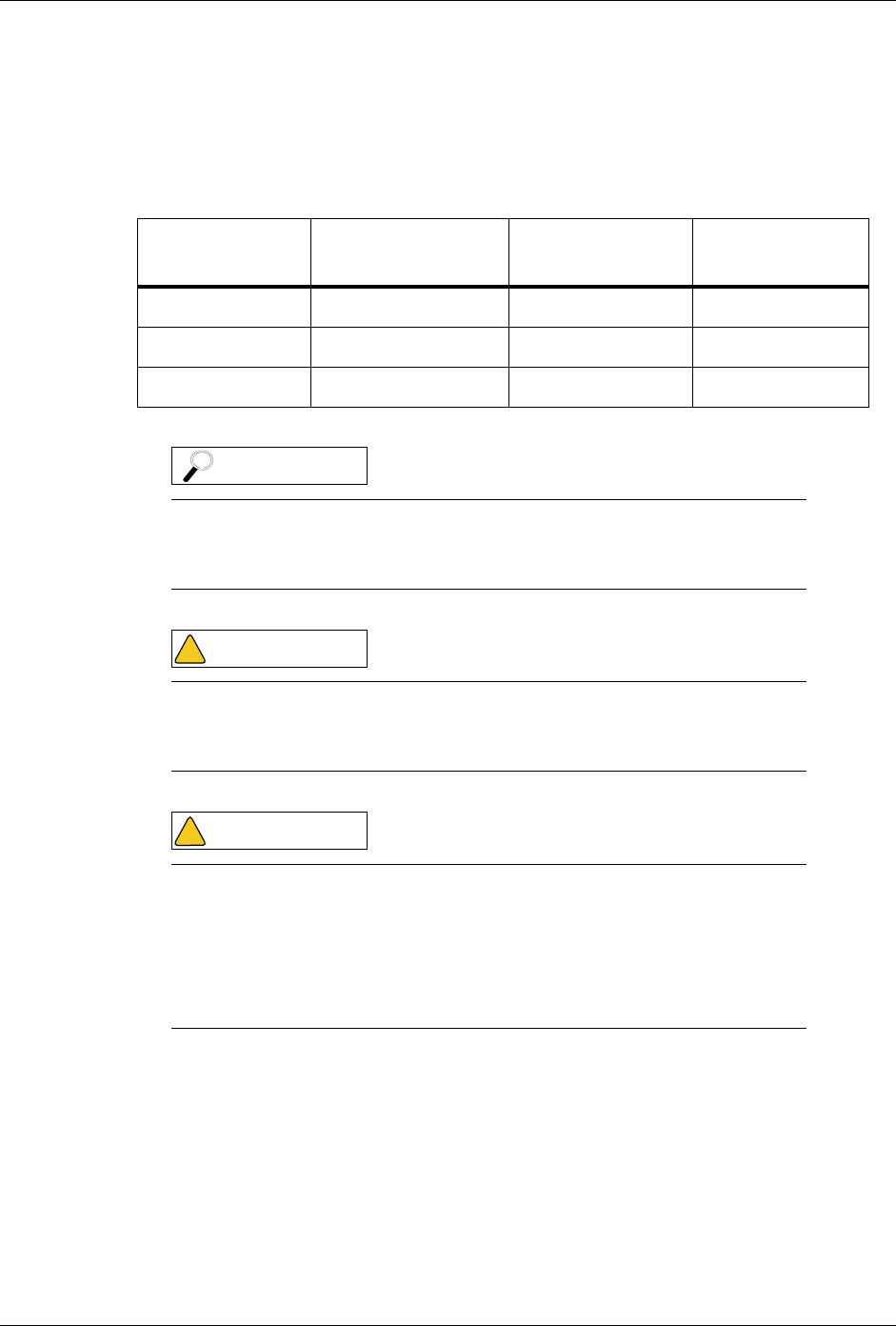
Chapter 16: Specifications
16-23 Cod. 6992200 - Rev. /
16.3 Extracorporeal Blood Circuit
16.3.1 ArtiSet Blood Tubing System
The Blood Cassettes will allow the bloodlines to be positioned in a way designed
to ensure a simple and effective system.
The following Blood Cassettes are available for the Artis Dialysis System:
Code Application Prime Line Patient Line
Length
113201 Double Needle NO about 235 cm
107472 Prime Line / N/A
112559 HDF Online NO about 235 cm
• Refer to the Blood Cassette labeling for priming volume data.
• Further information on suitable Blood Cassettes can be obtained
by contacting your local representative.
The use of the Blood Cassettes designed for Artis Dialysis System
has been tested and validated to provide safe and proper
functioning of the system.
The appropriate Dialyzer and Blood cassette must be selected
according to the patient’s size and weight and to the treatment
type.
The decision must be taken by a physician.
Before installing Gambro/Hospal Dialyzers and Blood Cassettes
carefully read the related Instructions for Use.
NOTE
WARNING
!
WARNING
!
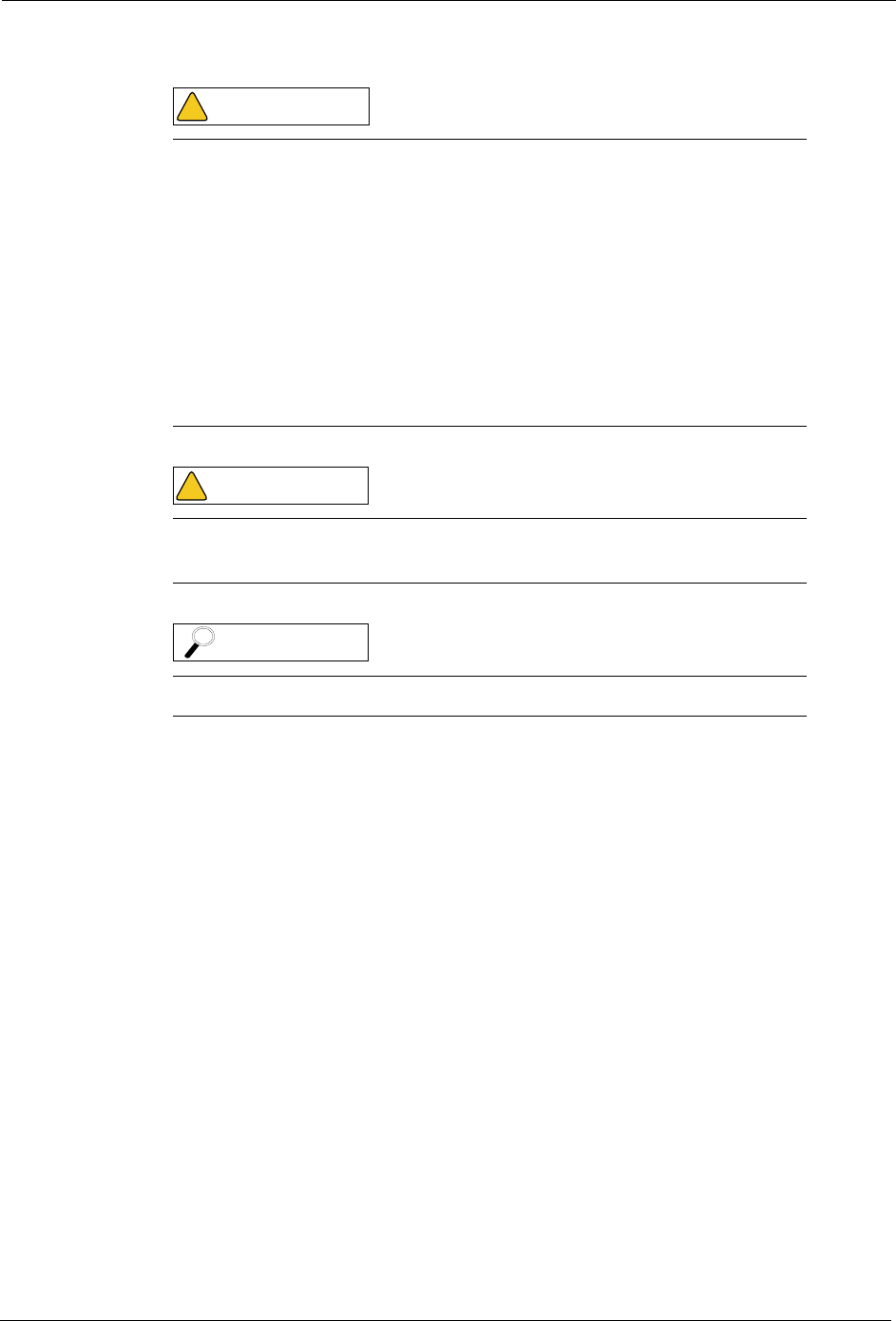
ARTIS Operator’s Manual
Cod. 6992200 - Rev. / 16-24
16.3.2 Blood Pumps
The Artis Blood Module is made up of two peristaltic pumps designed for dialysis,
with pump segment inserts of 6.36 x 9.54 mm (0.25x0.38 in).
To control the Blood Pumps, the Blood Module is provided with:
• An Electronic Speed Control System to keep the speed constant, inde-
pendently of load variations;
• A light on the Hard Key Panel illuminated when the pumps are turning
on (or when they are about to turn on, for example, after an automatic
stop caused by an alarm);
• A Pump Direction Monitor;
• A system to automatically stop the Blood Pumps and close the Venous
Line Clamp in case of air or foam detection;
• A Safety Control when the Blood Pump Covers are opened;
• Two cranks, one for each pump, for manual turning of the blood
pumps;
• A Protective System to prevent overloads.
This operator’s manual contains a number of references to
accessories and disposables for use with Artis Dialysis System.
The Artis Dialysis System has been tested and validated for use
with accessories and disposables listed in this manual. The
manufacturer has not validated the use of accessories or
disposables other than those specified in this manual. The
Manufacturer does not accept responsibility or liability for use of
accessories or disposables other than those specified in this
manual. Depending on the circumstances, use of accessories or
disposables other than those specified may also reduce the
Manufacturer’s warranties for the Artis Dialysis System.
The Manufacturer recommends the use of a dialyzer with dialysis
fluid and blood connections that comply with ISO 8637.
Do not use plate-type dialyzer.
WARNING
!
WARNING
!
NOTE
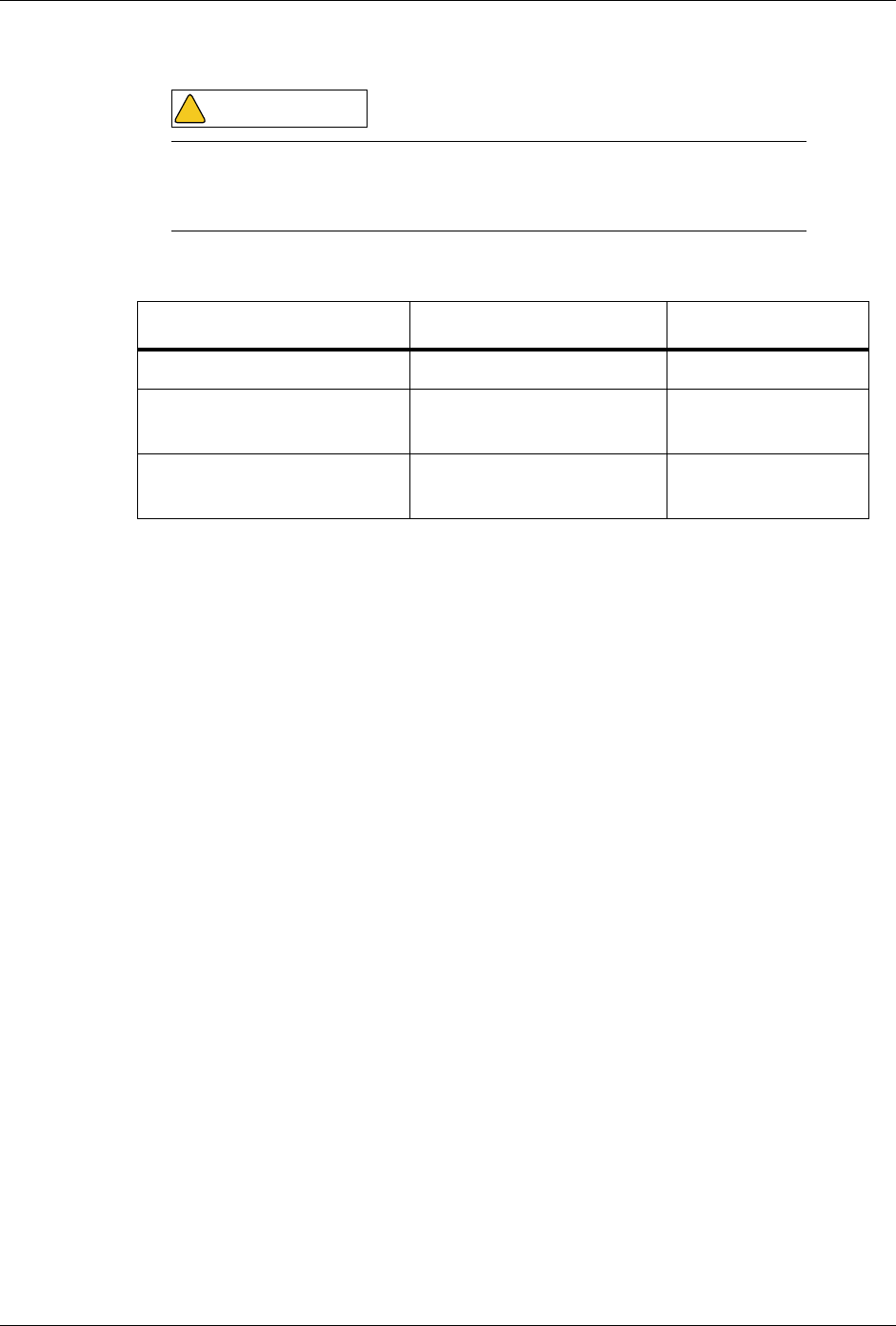
Chapter 16: Specifications
16-25 Cod. 6992200 - Rev. /
Blood Pump Technical Characteristics
16.3.3 Blood Flow
The Artis Dialysis System displays the following values related to the blood flow:
• The blood flow set value
• The blood flow actual value.
The blood flow set value represents the theoretical blood flow rate in the extra-
corporeal circuit calculated from the speed of the blood pump rotor and the
geometric characteristics of the pump segment.
The blood flow actual value is the actual blood flow rate in the extra-corporeal
circuit. The actual value is usually lower than the set value due to the negative
pressure in the access line at the inlet to the pump. The negative pressure is
caused by the rotation of the pump itself and pressure drop linked to the motion of
blood in the line. The actual value coincides with the set value when the pump
inlet pressure (arterial pressure) is zero.
The accuracy on the estimate, using GAMBRO Blood Cassette, is typically within
±10% in the following conditions:
• the pressure before the pump, given by the pressure in the arterial
chamber of the cassette, is higher (less negative) than –150 mmHg
and in the Actual Blood Flow range from 100 ml/min to 500 ml/min.
The blood flow actual value is estimated by means of a mathematical algorithm
taking into account the pump segment characteristics of GAMBRO Blood
Cassette, the current pump speed and the pressure values in the extra-corporeal
circuit.
When using the Artis Dialysis System, stop the Blood Pumps
before touching the Blood Pump Rotors.
Do not touch the blocking system.
Parameter Value Condition
Speed of Pump Rotor • 0 to 76 rpm approx. /
Blood Flow Ramping Up
Can be preset • 25, 50 or 100 ml/min,
per second /
Max actual Blood Flow (at
max rpm) • 500 ml/min • Arterial Pressure:
0 to -250 mmHg
WARNING
!
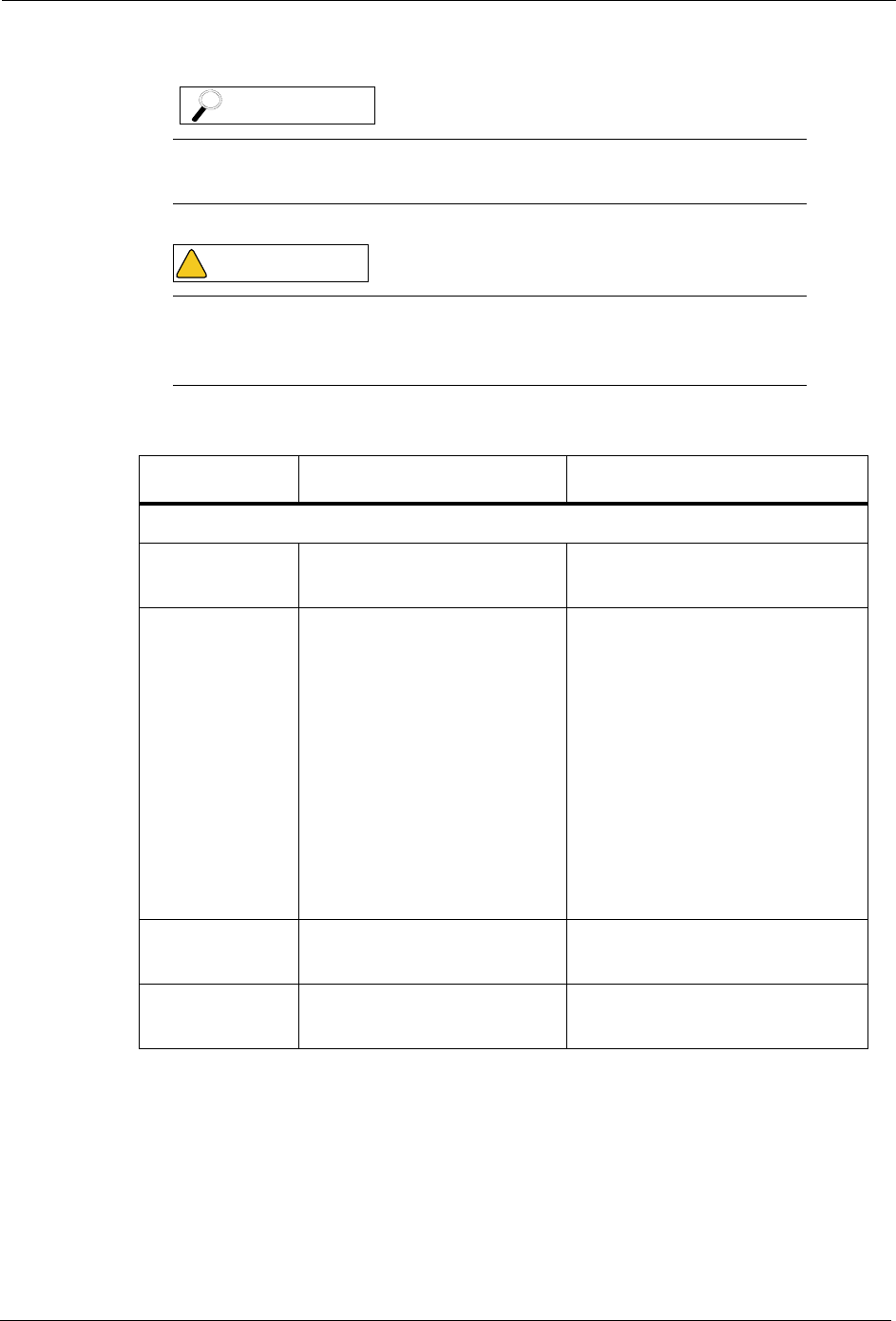
ARTIS Operator’s Manual
Cod. 6992200 - Rev. / 16-26
Double Needle
The Artis Dialysis System will be able to calculate and display the
accumulated blood volume in the range 0 to 999 liters.
A dedicated warning (Low Blood Pump Speed #204) exists in
order to avoid blood loss due to coagulation resulting from
interruption of blood flow.
Parameter Values Conditions
Adult Blood Cassette
Actual Blood
Flow • 10 to 500 ml/min • Arterial Pressure: 0 to -250
mmHg
Accuracy • ±10%
• ±20% or ±20 ml/min,
whichever is greater
• Arterial Pressure: 0 to -150
mmHg
• Total Treated Blood Volume:
120 liters
• Actual Blood Flow: 100 to
500 ml/min
• Arterial Pressure: 0 to -150
mmHg
• Total Treated Blood Volume:
120 to 200 liters
• Actual Blood Flow: 100 to
500 ml/min
Blood Pump
Speed • 10 to 580 ml/min, in
steps of 10 ml/min /
Accumulated
Blood Volume • 0 to 999 litres /
NOTE
WARNING
!
≤
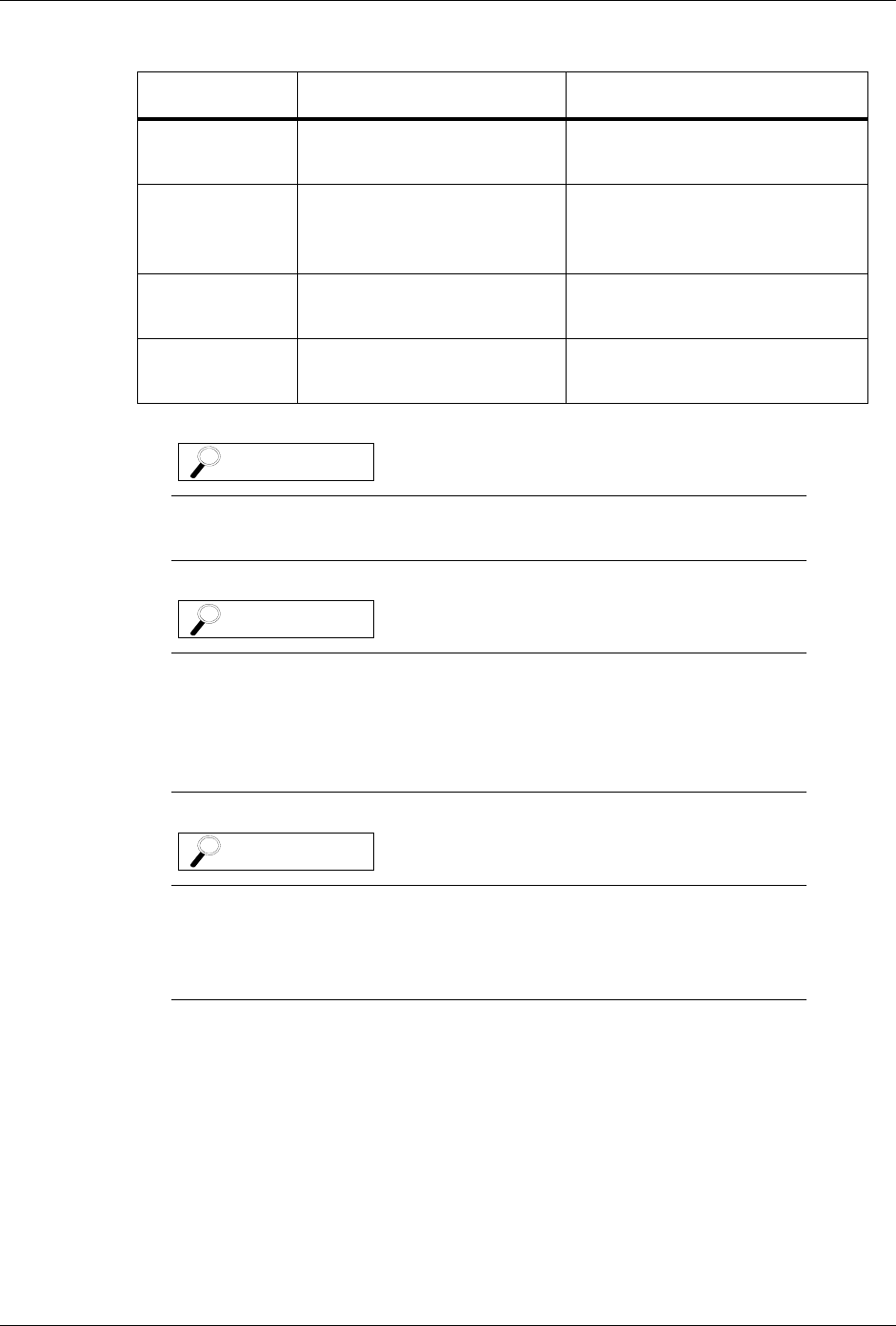
Chapter 16: Specifications
16-27 Cod. 6992200 - Rev. /
Single Needle Single Pump
Parameter Values Conditions
Average Blood
Flow • 10 to 220 ml/min, in
steps of 10 ml/min /
Accuracy • ±10 ml/min or ±20%
whichever is greater • Arterial Pressure: 0 to -150
• Treated Blood Volume:
120 L
SN Pressure
Min • 150 to 360 mmHg /
SN Pressure
Max • 190 to 400 mmHg /
In Single Needle mode the stroke volume for each cycle is
approximately 20 ml.
During a Single Needle Single Pump mode, the Artis Dialysis
System will be able to automatically control the Arterial/Venous
phase commutation according to pressure measurement in the
Venous Patient Line (see "Single Needle Pressure Monitoring"
section in this chapter).
In Single Needle mode, the blood recirculation rate at the level of
the patient’s vascular access is influenced by the needle type or
catheter used. The blood recirculation rate is not due to the single
needle cassette characteristics.
≤
NOTE
NOTE
NOTE
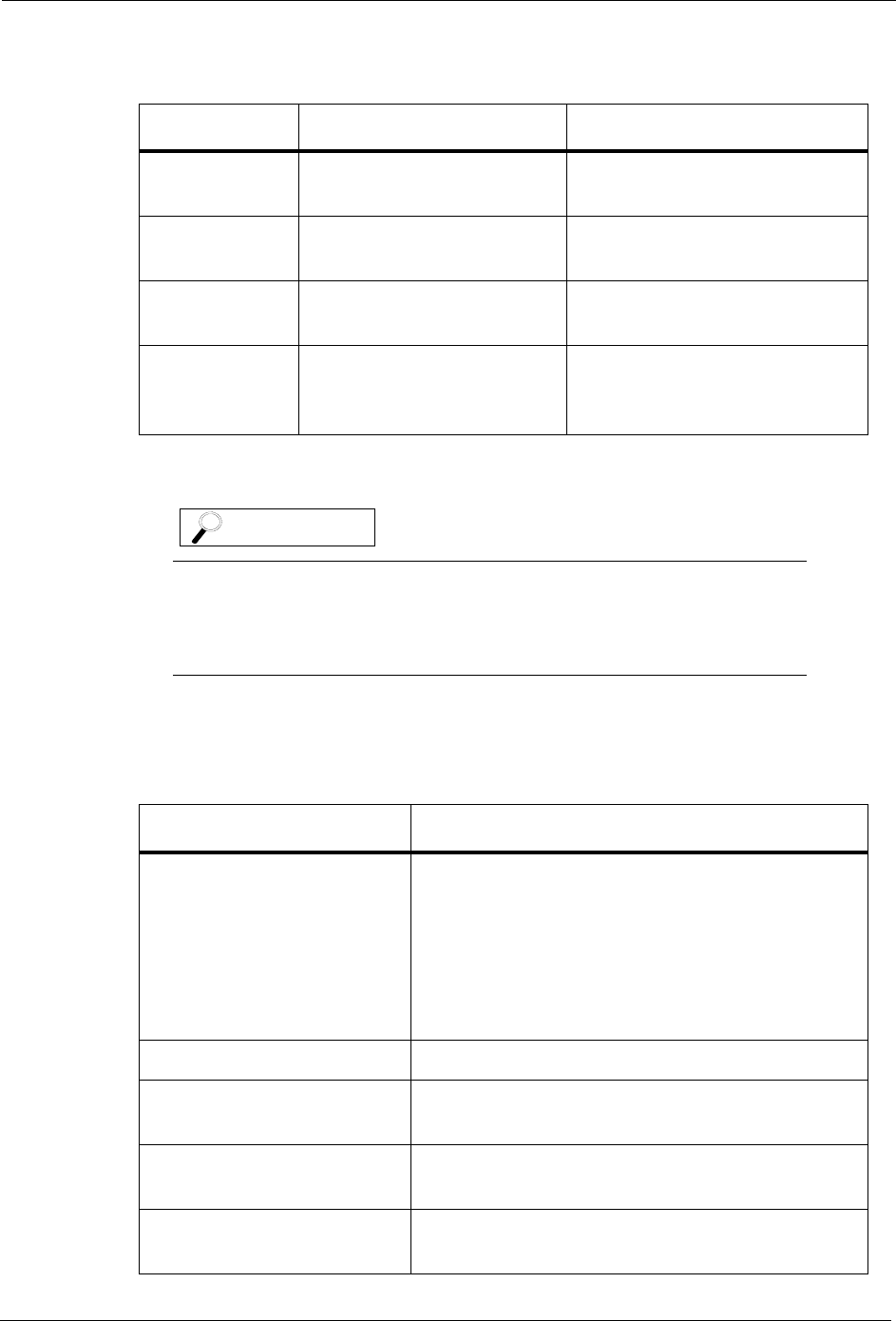
ARTIS Operator’s Manual
Cod. 6992200 - Rev. / 16-28
Single Needle Double Pump
(Not currently available)
16.3.4 Heparin Delivery
The Artis Dialysis System may be supplied with a syringe type infusion pump
which delivers heparin with a standard 30 ml syringe.
Parameter Values Conditions
Average Blood
Flow • 10 to 220 ml/min /
Accuracy • ±10 ml/min
• ±10% • Blood Flow 100 ml/min
• Blood Flow >100 ml/min
Stroke
Volumea
a. The Stroke Volume value is calculated from Pump Flow Rate and Time.
• 20 to 50 ml (±15%), in
steps of 1 ml • Cycle time: < 20 sec.
Accumulated
Blood Volume • 0 to 99.9 litres (+/-0.6 l *
treatment time (h) or +/-
15%)
/
During a Single Needle Double Pump therapy, the Artis Dialysis
System will be able to automatically control the Arterial/Venous
phase commutation according to pressure measurement and
stroke volume achieved.
Parameter Values
Heparin Delivery
Management • Linear: bolus delivered at a constant flow
• Intermittent: bolus delivery at a set interval of
time
• Manual: single bolus delivered when the
button is pressed
• Extra Bolus: a bolus is delivered when the
“Extra Bolus” Action button is pressed.
Syringe Size • 30 ml
Heparin Delivery
Rate (Linear Mode) • 0 ml/h or 1.5 ml/h to 10.0ml/h, in steps of 0.1
ml/h
Accuracy (on Accumulated
Volume) • ±1 ml or ±0.2 ml/h * heparinization time (h) or
±10% whichever is greater
Bolus Amounts
(default) • 0.5 to 10 ml, in steps of 0.5 mL (0.5 mL)
≤
NOTE
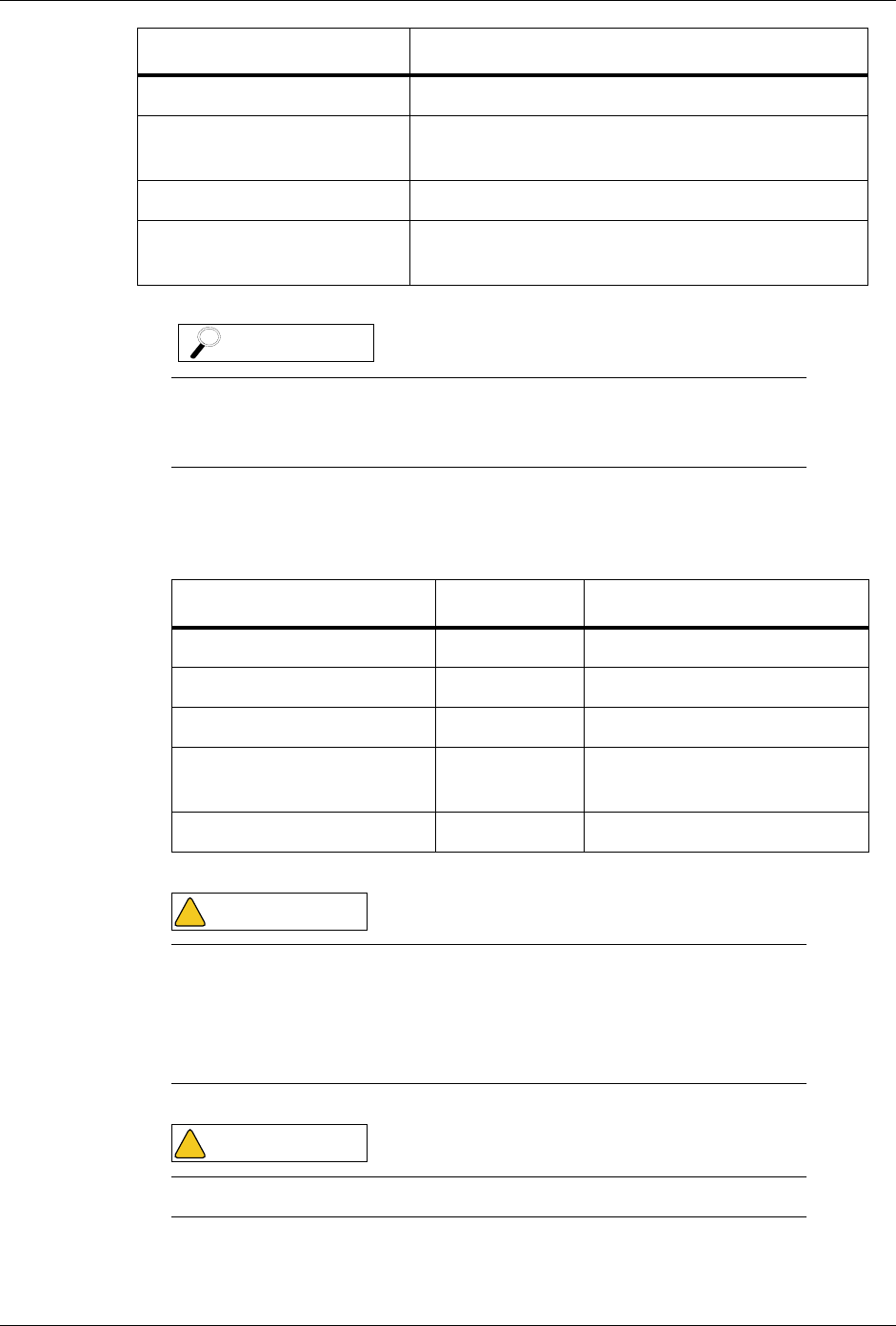
Chapter 16: Specifications
16-29 Cod. 6992200 - Rev. /
Heparin Syringes
Following a list of the main syringes allowed on the Artis Dialysis System:
Bolus Delivery Rate • 0.08 ml/s
Stop Time (default) • 0 to total treatment time, in steps of 1 minute
(30 min)
Max. Counter Pressure • +900 mmHg
Heparin Delivery
Alarm Limits • Accumulated Heparin Volume: ±40% of the
set Heparin Volume
To prime the Heparin line, 0.6 ml of heparin will be injected into the
Blood Cassette. This will happen regardless of the type of heparin
delivery program selected.
Syringe Name Volume (ml) Internal Diameter
TERUMO 30 23.1 mm (0.909 in)
BD 30 PLASTIPAK 30 21.6 mm (0.850 in)
PIC 30 LL 30 23.6 mm (0.929 in)
ICO GAMMA PLUS/
MONOSTERIL 30 23.9 mm (0.941 in)
PENTA 30 30 21.8 mm (0.858 in)
These diameters have been taken from samples from many
countries and are correct at the time of printing. However, the
manufacturer cannot be held responsible for changes in syringe
dimensions that may occur. The user should periodically check the
correlation between the stated and the actual diameters.
DO NOT USE syringes without luer lock connection.
Parameter Values
NOTE
WARNING
!
WARNING
!
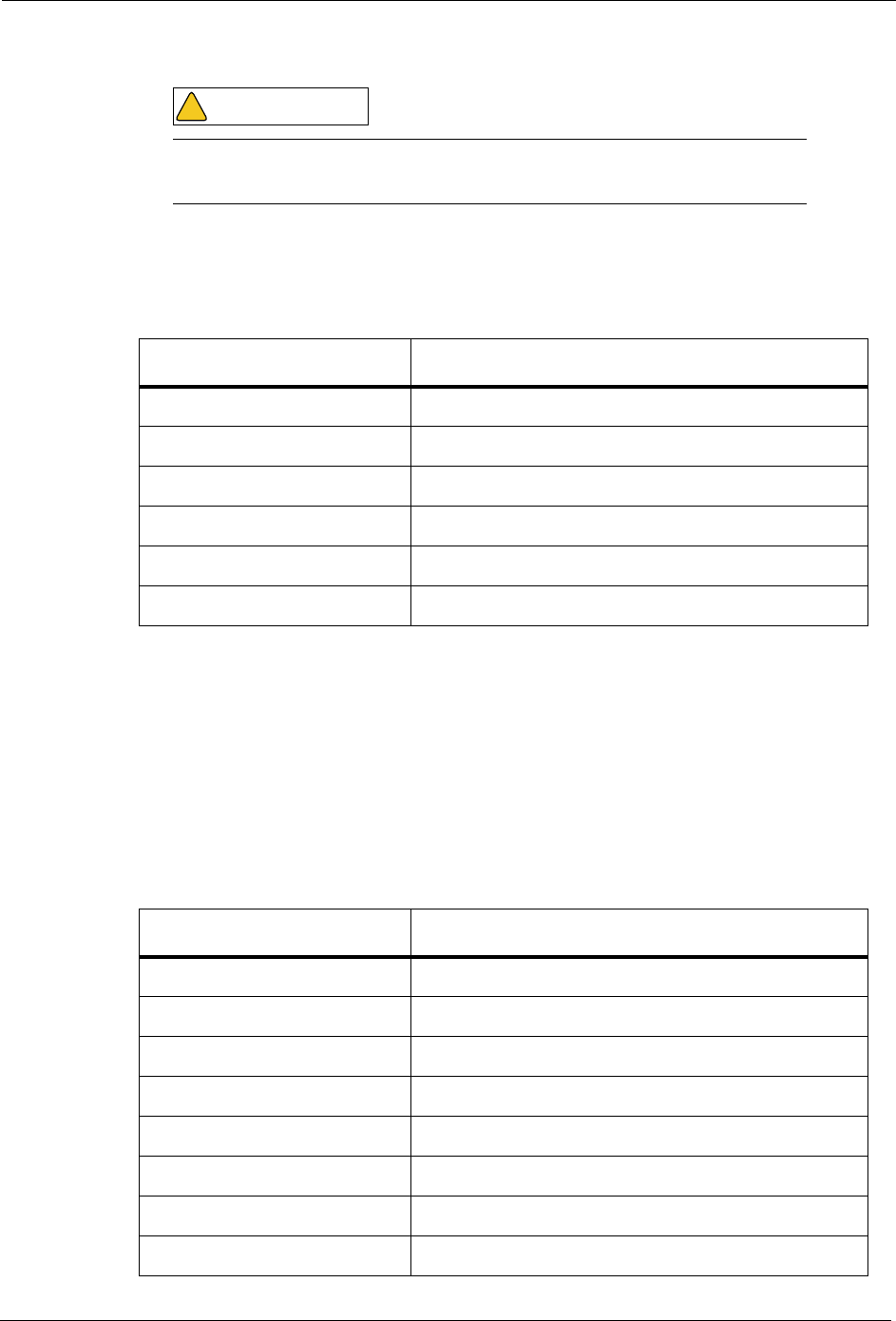
ARTIS Operator’s Manual
Cod. 6992200 - Rev. / 16-30
16.3.5 Hemoscan Sensor
The Artis Dialysis System provides a non-invasive mechanism to perform blood
volume measurements, according to the following specifications:
16.3.6 Blood Pressure Monitor (BPM)
The Blood Pressure Monitor is a non-invasive system to read the patient’s blood
pressure during a treatment (refer to the "Chapter 8: BPM" of this operator’s
manual).
In the table below the main specifications related to the blood pressure monitor
option are reported.
The alarm limits below can be preset. The value put in brackets and in italics is the
default value.
The syringe infusion pump described above must be used ONLY
for the infusion of heparin.
Parameter Values
Blood Flow Rate • 180 to 500 ml/min
Blood Temperature • 30 to 40°C
Relative Blood Volume • -40% to +10%
Accuracy (standard error) • ±3%
Resolution • 0.1%
Hemoglobin Value Range • 6 to 16 g/dl
Parameter Values
Systolic pressure rangea• +60 to +255 mmHg
Low alarm limit • 60-255 mmHg (90 mmHg)
High alarm limit • 60-255 mmHg (200 mmHg)
Diastolic pressure rangea• +30 to +195 mmHg
Low alarm limit • +30 to +195 mmHg (50 mmHg)
High alarm limit • +30 to +195 mmHg (100 mmHg)
Heart rate rangeb• 30 to 200 bpm
Low alarm limit • 30 to 200 bpm (40 bpm)
WARNING
!
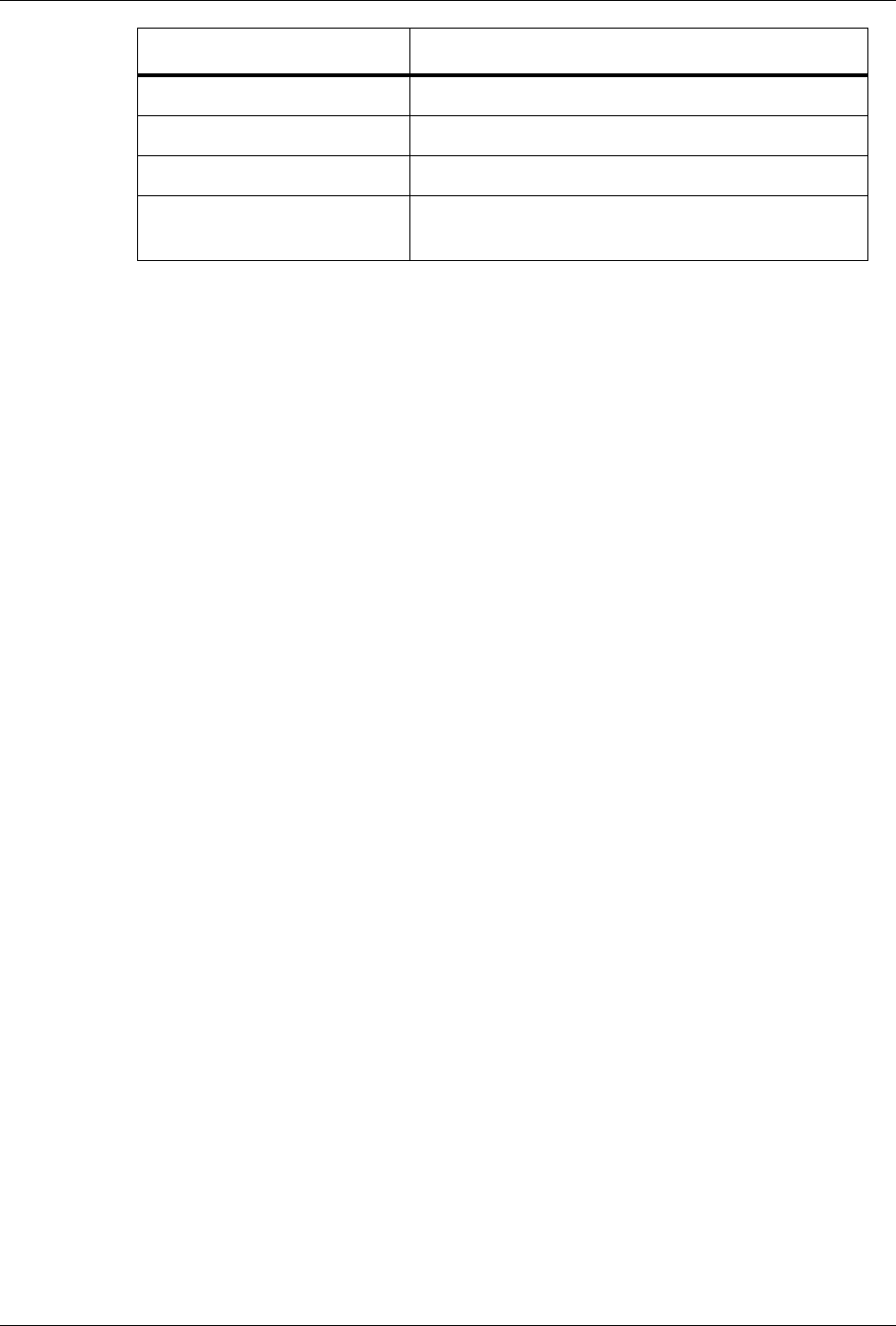
Chapter 16: Specifications
16-31 Cod. 6992200 - Rev. /
16.3.7 Automatic Functions
The following automatic functions are available with the Artis Dialysis System:
1. Single Needle Single Pump: arterial/venous cycles occur through auto-
matic blood pump transition when preprogrammed venous pressure
thresholds are reached.
2. Linear or Intermittent Heparin Delivery: through programming of the
rate and timing of delivery.
3. Heparin Bolus Injection Characteristics
4. Blood Sensor before Venous Line Clamp: before blood detection by the
Blood Sensor or before starting the dialysis treatment, some alarms are
bypassed to allow easier filling of the extracorporeal and hydraulic circuits.
5. Ultra Control: in online treatments with Pressure control mode, it is
possible to activate the Ultra Control functionality (ref to “16.2.4
Substitution Fluid” section of this chapter)
6. Automatic Pump control: in online treatments with Volume or Pressure
control mode, each time that the substitution pump is stopped due to any
reasons, the machine automatically decreases the blood pump speed in
order to avoid venous pressure peaks.
16.3.8 Main Surveillance Devices
Following the specifications related to the main surveillance devices available with
the Artis Dialysis System.
Ultrasonic Air Detector
The Blood Module has an Air Detector consisting of:
• An Ultrasonic Sensor located into the right Sensor Bar;
• A Transducer which carries out the auto-test every 250 ms;
• A Visual and Audible Alarm which is activated if air is detected.
High alarm limit • 30 to 200 bpm (120 bpm)
Heart rate resolution • 1 bpm
Cuff Pressure • Max.: 300 mmHg
Cycle Time • Typical cycle time: 35 s.
• Max.: < 160 s.
a. Meets ANSI/AAMI SP-10. Mean error ±5 mmHg. Standard deviation 8
mmHg.
b. Heart Rate Accuracy: ±2% or ±3 bpm, whichever is greater
Parameter Values
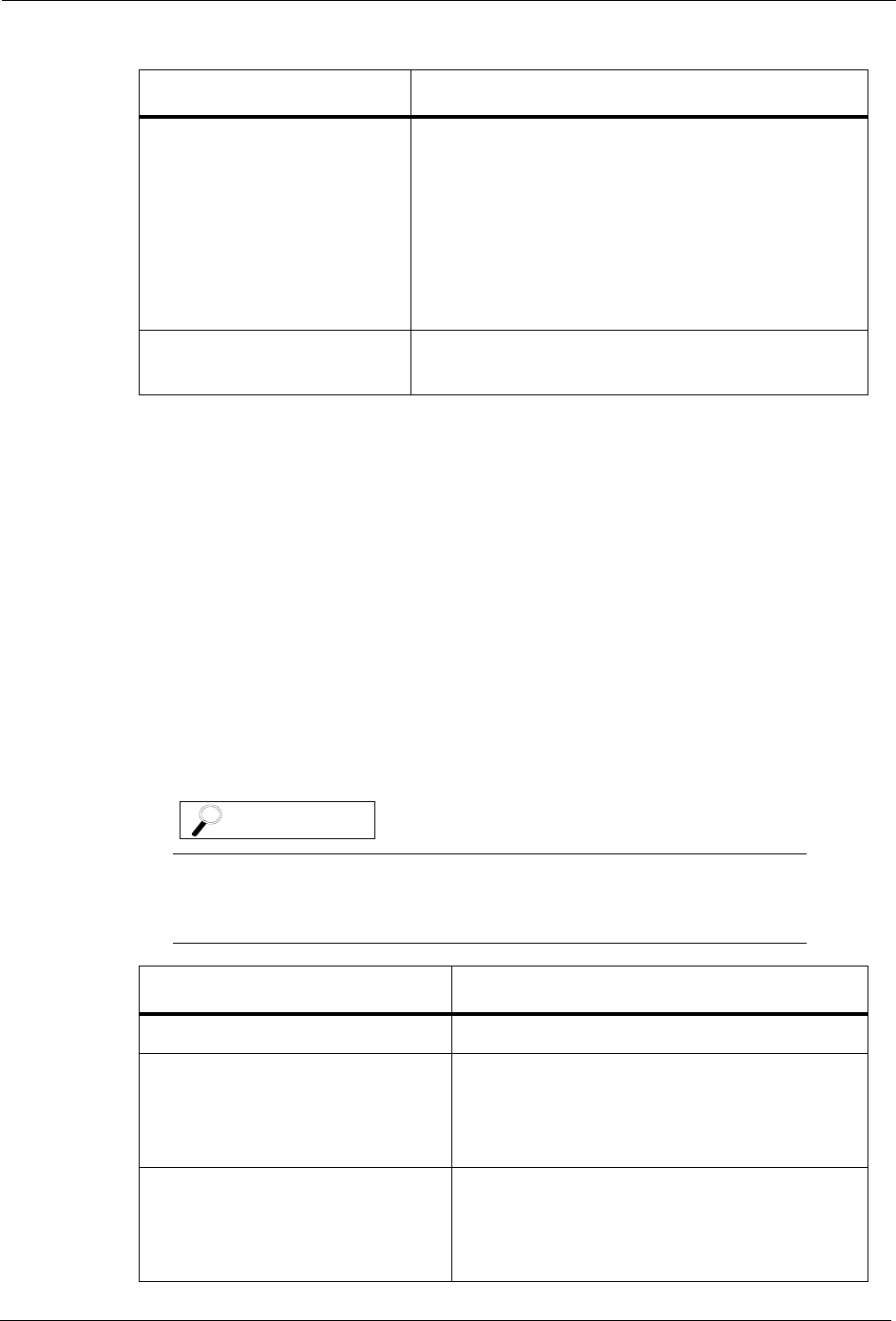
ARTIS Operator’s Manual
Cod. 6992200 - Rev. / 16-32
Arterial Pressure Monitoring
The Arterial Pressure Sensor is used for measuring pre-pump arterial pressure in
order to protect the patient from high negative arterial pressures between the
patient and the Arterial pump.
During a treatment, an Arterial Pressure alarm will be triggered if the pressure
measurements are not within the following ranges:
• Minimum and Maximum treatment limits;
• Minimum and Maximum Arterial pressure limits, calculated as:
Max Arterial Limit = Operating value + Arterial Positive Offset
Min Arterial Limit = Operating value - Arterial Negative Offset .
Parameter Values
Detection Method • An ultrasonic wave band crosses the fluid in
the blood line. When air is present in the line,
the signal received by the detector is modified
in proportion to the volume of air present.
When the signal goes above a fixed
threshold, the microprocessor triggers a
signal, which causes the Venous Line Clamp
to close and the Blood Pumps to stop.
Sensitivity • Bubble volume 20 micro liters (±1 micro
liter), at max. flow rate
In case of recovery procedures, the Artis Dialysis System will
automatically set the Extreme Alarm limits as the Minimum and
Maximum Arterial pressure limits.
Parameter Values
Operating Range • -400 to +150 mmHg
Accuracy • ±10 mmHg or ±10%, whichever is greater
(in the range -400 mmHg to +20 mmHg)
• ±20 mmHg (in the range +20 mmHg to
+150 mmHg)
Offset Values (Default)a• Positive: 10 to 100 mmHg, in steps of 5
mmHg (80 mmHg)
• Negative: 10 to 80 mmHg, in steps of 5
mmHg (40 mmHg)
≥
NOTE
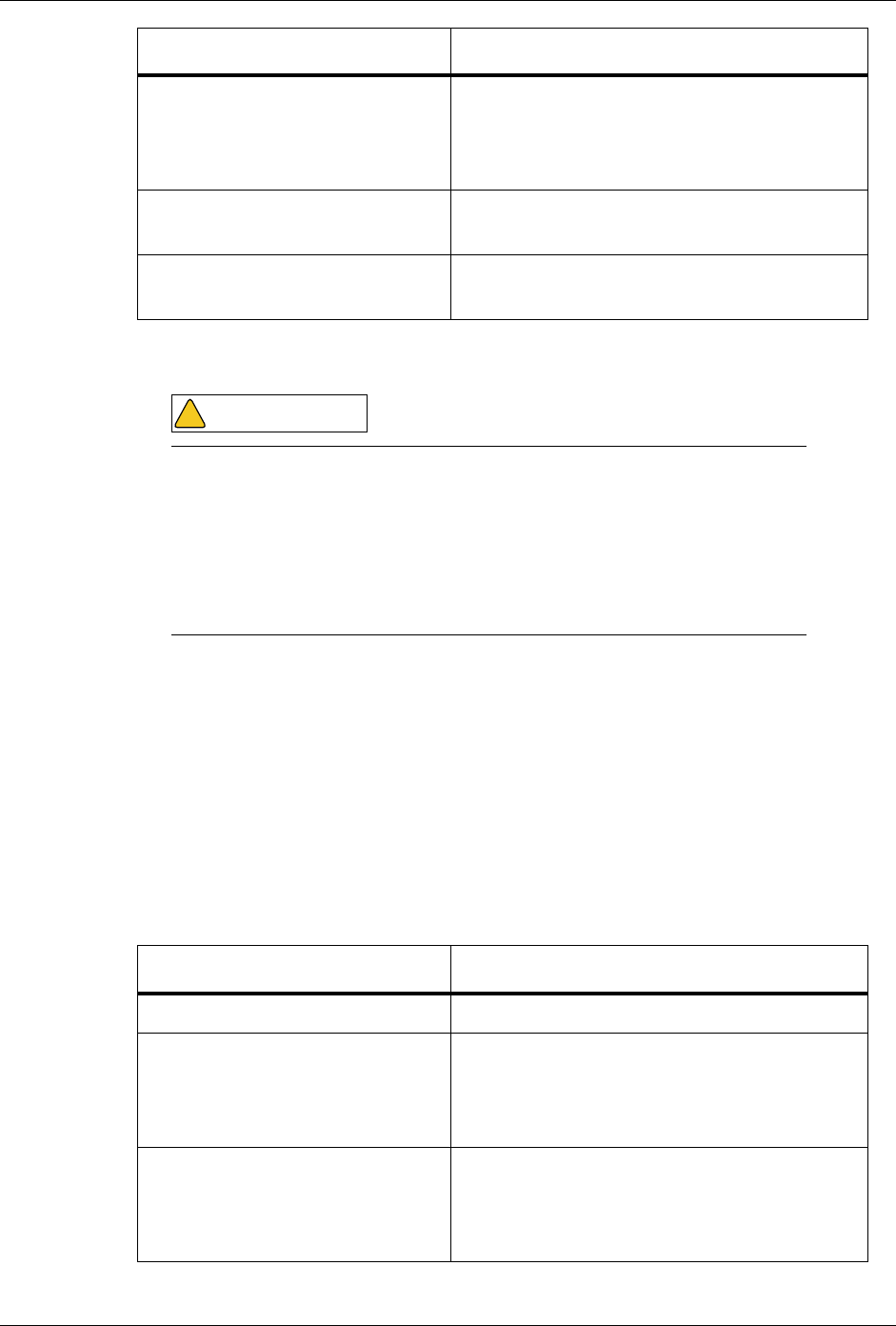
Chapter 16: Specifications
16-33 Cod. 6992200 - Rev. /
Venous Pressure Monitoring (Double Needle Mode)
During a treatment, a Venous Pressure alarm will be triggered if the pressure
measurements are not within the following ranges:
• Minimum and Maximum treatment limits;
• Minimum and Maximum Venous pressure limits, calculated as:
Max Venous Limit = Operating value + Venous Positive Offset
Min Venous Limit = Operating value - Venous Negative Offset
Treatment Limits(Default)a• Min: -300 to -100 mmHg, in steps of 10
mmHg (-300 mmHg)
• Max: -100 to +150 mmHg, in steps of 10
mmHg (0 mmHg)
Extreme Alarm Limits (outside
the treatment mode) • Min: -500 mmHg
• Max: +300 mmHg
Maximum Arterial Alarm Limita• -100 to +150 mmHg, in steps of 10
mmHg
a. Can be preset
Modification of the Blood Flow Rate causes a fluctuation in the
Arterial Pressure and therefore an alarm may be triggered.
To prevent such an effect, following any start/stop of the Arterial
pump or change in the Blood Flow Rate the Arterial pressure
Alarm Window is automatically set wider for 30 seconds, in HD
treatments, or for 120 seconds, in HDF treatments. Its lower value
is set to -400 mmHg while the upper value is set to +150 mmHg.
Parameter Values
Operating Range • -100 to +450 mmHg
Accuracy • ±10 mmHg or ±10%, whichever is greater
(in the range -20 mmHg to +450 mmHg)
• ±20 mmHg (in the range -100 mmHg to -
20 mmHg)
Offset Values (Default)a• Positive: 10 to 70 mmHg in steps of 5
mmHg (70 mmHg)
• Negative:10 to 40 mmHg in steps of 5
mmHg (40 mmHg)
Parameter Values
WARNING
!
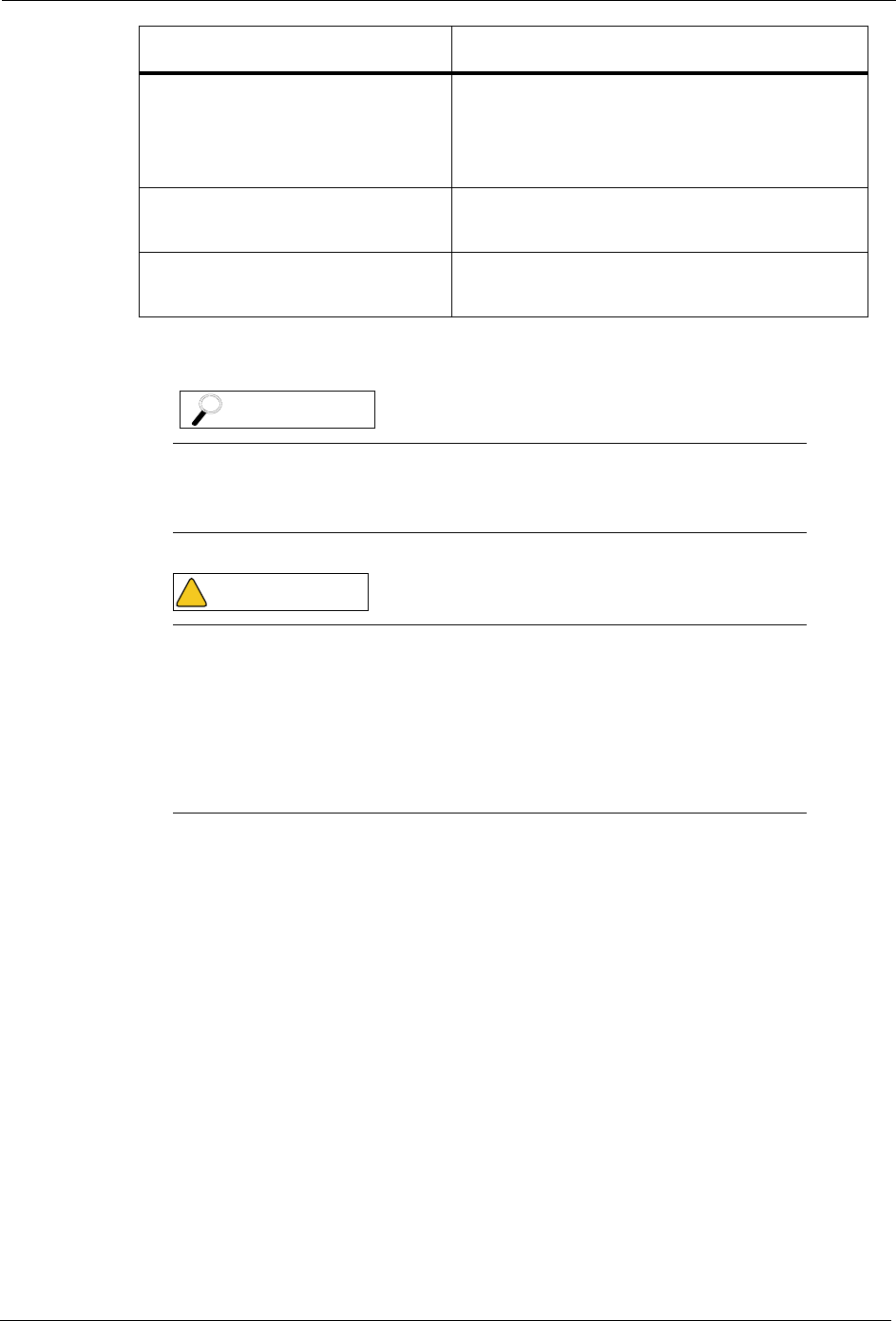
ARTIS Operator’s Manual
Cod. 6992200 - Rev. / 16-34
Treatment Limits(Default)a• Min: 10 to 100 mmHg, in steps of 10
mmHg (10 mmHg)
• Max: 150 to 350 mmHg, in steps of 10
mmHg (300 mmHg)
Extreme Alarm Limits (outside
the treatment mode) • Min: -300 mmHg
• Max: +450 mmHg
Maximum Venous Pressure
Alarm Limit (Default)a• +150 to +350 mmHg, in steps of 10
mmHg (300 mmHg)
a. Can be preset
A Safety Test of the Venous Pressure Monitoring System is
automatically performed each time the machine enters the
Preparation mode.
Modification of the Blood Flow Rate causes a fluctuation in the
Venous Pressure and therefore an alarm may be triggered.
To prevent such an effect, following any start/stop of the Arterial
pump or change in the Blood Flow Rate the Venous Pressure
Alarm Window is automatically set wider for 30 seconds, in HD
treatments, or for 120 seconds, in HDF treatments. Its lower value
is set to -50 mmHg, while the upper limit is set to +450 mmHg.
Parameter Values
NOTE
WARNING
!
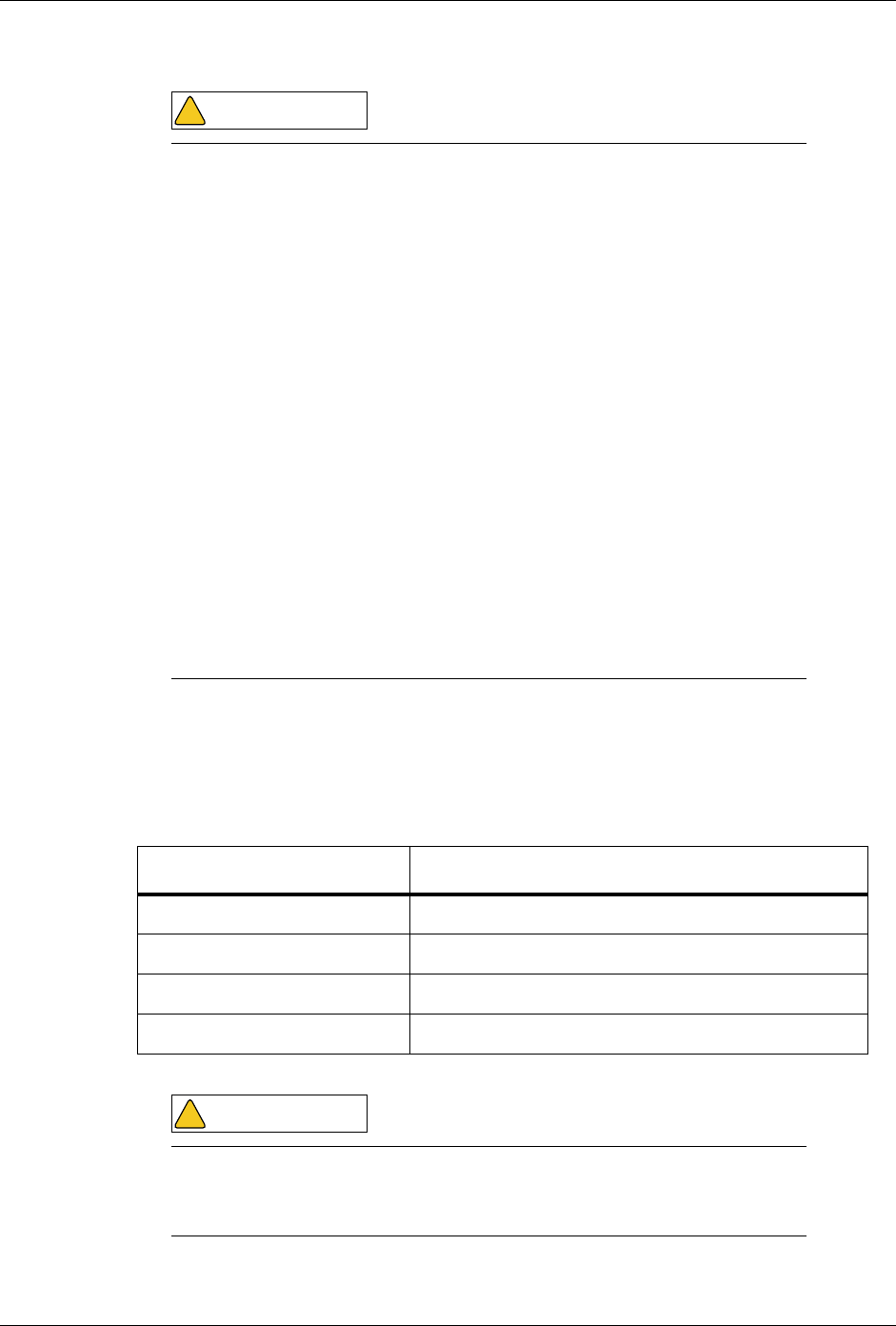
Chapter 16: Specifications
16-35 Cod. 6992200 - Rev. /
Single Needle Pressure Monitoring
In Single Needle mode, the Venous Pressure Sensor is used for measuring the
blood pressure in the Venous chamber for blood pump activation and
deactivation, according to set venous pressure values:
Monitoring of the Venous Pressure could not always detect the
disconnection of a venous needle from its access site, which may
result in extracorporeal blood loss to the environment. When a
venous needle disconnects from its access, pressure at the
venous monitoring side may only decrease by the pressure
maintained within the patient’s vascular access. This pressure
drop may be less than the width of the machine’s venous pressure
alarm window: in this particular case the disconnection of a
venous needle from its access site is not detectable by the
machine, even if pressure alarms and alarm windows are properly
set.
To reduce the risk of needles disconnection:
• ensure that venous needle and line are firmly secured to the
access site area according to your clinic's protocol;
• ensure that the patient's access is visible at all times during the
dialysis treatment;
• inspect frequently the patient's access;
• adjust properly the venous pressure alarm window: the venous
pressure alarm lower limit should be set as closely as practical to
the actual patient’s venous pressure value without generating
excessive nuisance alarms.
Parameter Values
Operating Range • +150 to 400 mmHg, in steps of 10 mmHg
SN Pressure Min • 150 to 360 mmHg
SN Pressure Max • 190 to 400 mmHg
Alarm Limits • +10 mmHg to +450 mmHg
The user must take precautions against the hazard of cross-
contamination between patients by using only extracorporeal
circuits that are not damaged.
WARNING
!
WARNING
!
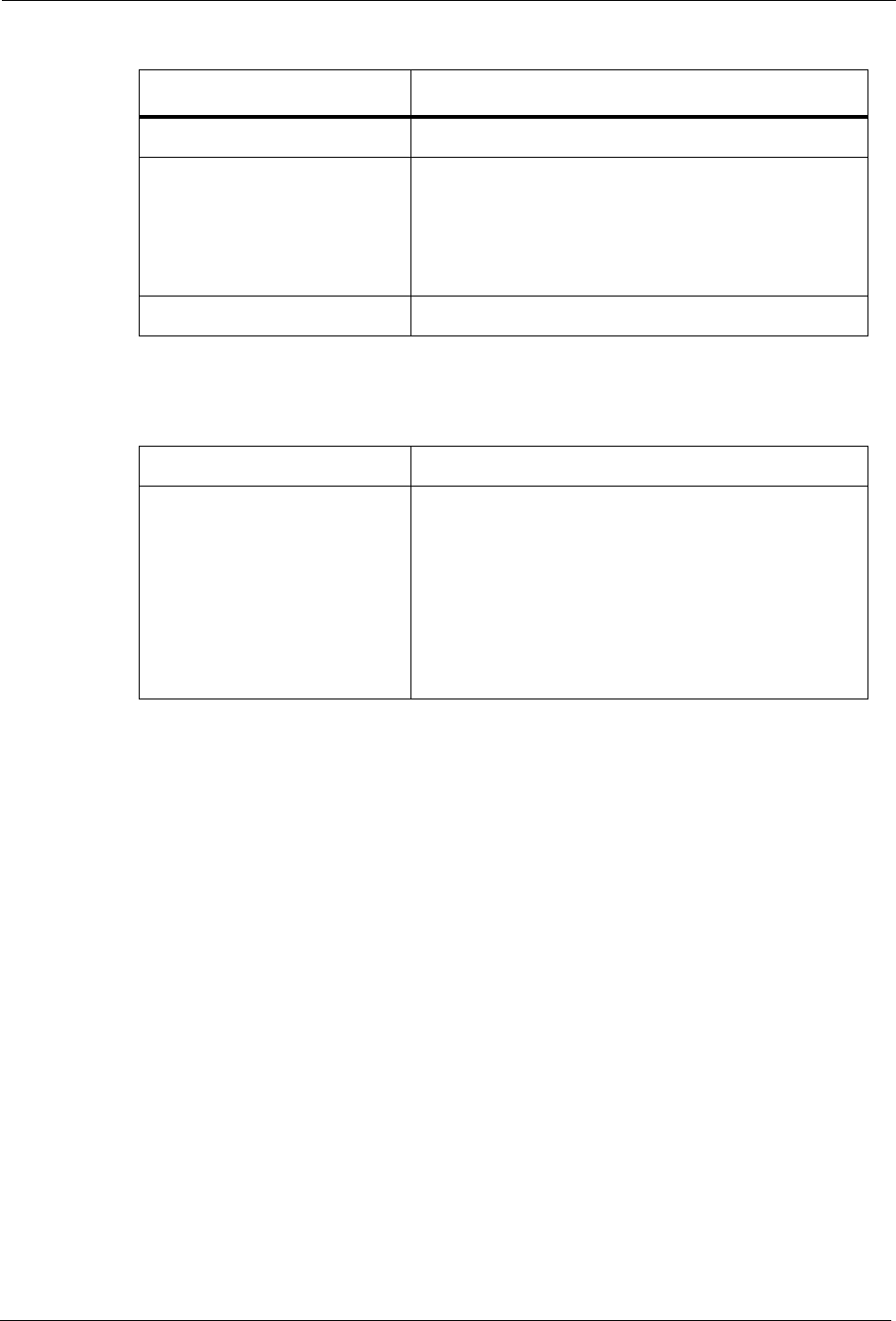
ARTIS Operator’s Manual
Cod. 6992200 - Rev. / 16-36
Pre-Dialyzer Pressure
16.3.9 Safety system actuators
The Artis Dialysis System is supplied with the following safety system actuators:
Parameter Values
Operating Range • -100 to +800 mmHg
Accuracy • ±10 mmHg (in the Operating Range +300
mmHg to +800 mmHg)
• ±20 mmHg or ±10%, whichever is greater (in
the Operating Range -100 mmHg to +300
mmHg)
Alarm Limits • 0 to +800 mmHg
Arterial Line Clamp • Used for Single Needle modes
Venous Line Clamp • Automatic closure when required by an alarm
as part of a specific safety state;
• Closure in Single Needle modes to reduce
recirculation;
• The Venous Line Clamp is fitted with a
position sensor to ensure proper functioning
of the clamp, and to assure that the Arterial
Pump is stopped.

Chapter 16: Specifications
16-37 Cod. 6992200 - Rev. /
16.4 Protective system
The Protection System controls fault conditions which may be dangerous for the
patient, by placing the machine in a Safe State, as required by international
regulations.
For each of these conditions, an independent safety chain is implemented. The
conditions controlled are:
• Final Dialysis Fluid Conductivity
• Blood Pumps
• Bicarbonate Dialysis Fluid conductivity
• Degassing Pump Flow
• Presence of blood in the Hydraulic Circuit
• Concentrate Container Error
• Dialysis Fluid Flow
• Heparin Pump
• Error in the Single Needle Mode (optional)
•Maximum Dialyzer Pressure at the Dialyzer Inlet and Outlet
• Minimum Dialyzer Pressure at the Dialyzer Inlet and Outlet
• Heater Protection
• Voltage Drop of greater than 20 seconds and less than 4 minutes
• Voltage Drop of less than 20 seconds
• Presence of Air in the Venous Patient Line
• Profiling of Final Conductivity Activity
(Not currently available)
• Profiling of Ultrafiltration Rate Activity
(Not currently available)
• Temperature of the Dialysis Fluid
• Ultrafiltration Flow
• Ultrafiltrate Mass Balance
• Venous Pressure higher than the maximum permitted
• Venous Pressure outside the interval selected or less than the
minimum permitted
• Arterial Pressure lower than the minimum permitted

ARTIS Operator’s Manual
Cod. 6992200 - Rev. / 16-38
• Arterial Pressure outside the interval selected or more than the maxi-
mum permitted
• Ultra Pure Water
• Incorrect Voltage
• Activity in Profiling Mode
(Not currently available)
• Activity of Diascan System
• Control System Communication checking
• Correct Sequence of T1 Tests
• Power Failure
• Long Bypass
If, on encoutering a fault, the relevant safety state is not correctly configured, the
protection system places the machine in a General Safe State:
1. The Venous Line Clamp is activated;
2. The Power Supply to all other actuators, except those for visual and audi-
ble alarms, is turned OFF.

Chapter 16: Specifications
16-39 Cod. 6992200 - Rev. /
16.5 Disposal of discarded equipment
Discarded electromedical equipment may not be disposed of together with
municipal waste but must be collected separately in order to guarantee
ecologically correct disposal to prevent dispersion of potential pollutants into the
environment.
Pay attention to the fact that some components of the machine (display, batteries,
circuit boards, etc.) may contain toxic substances which, if released into the
environment, pose a risk to the health of living organisms and the environment
itself.
When discarding electromedical equipment used at or through healthcare
facilities, it may be returned directly to the local representative/distributor who has
supplied it.
When discarding electromedical equipment used in private households, it may be:
• returned free of charge to the distributor at the time of purchasing new
equipment
• sent to the specialized collection centres free of charge.
Users who return electromedical equipment to the subjects identified above
actively contribute to reuse, recycling and recovery of potentially still useable
materials and components and to reduction of the potential risks to the
environment and human health.
Abusive disposal of discarded equipment may be punishable by law.
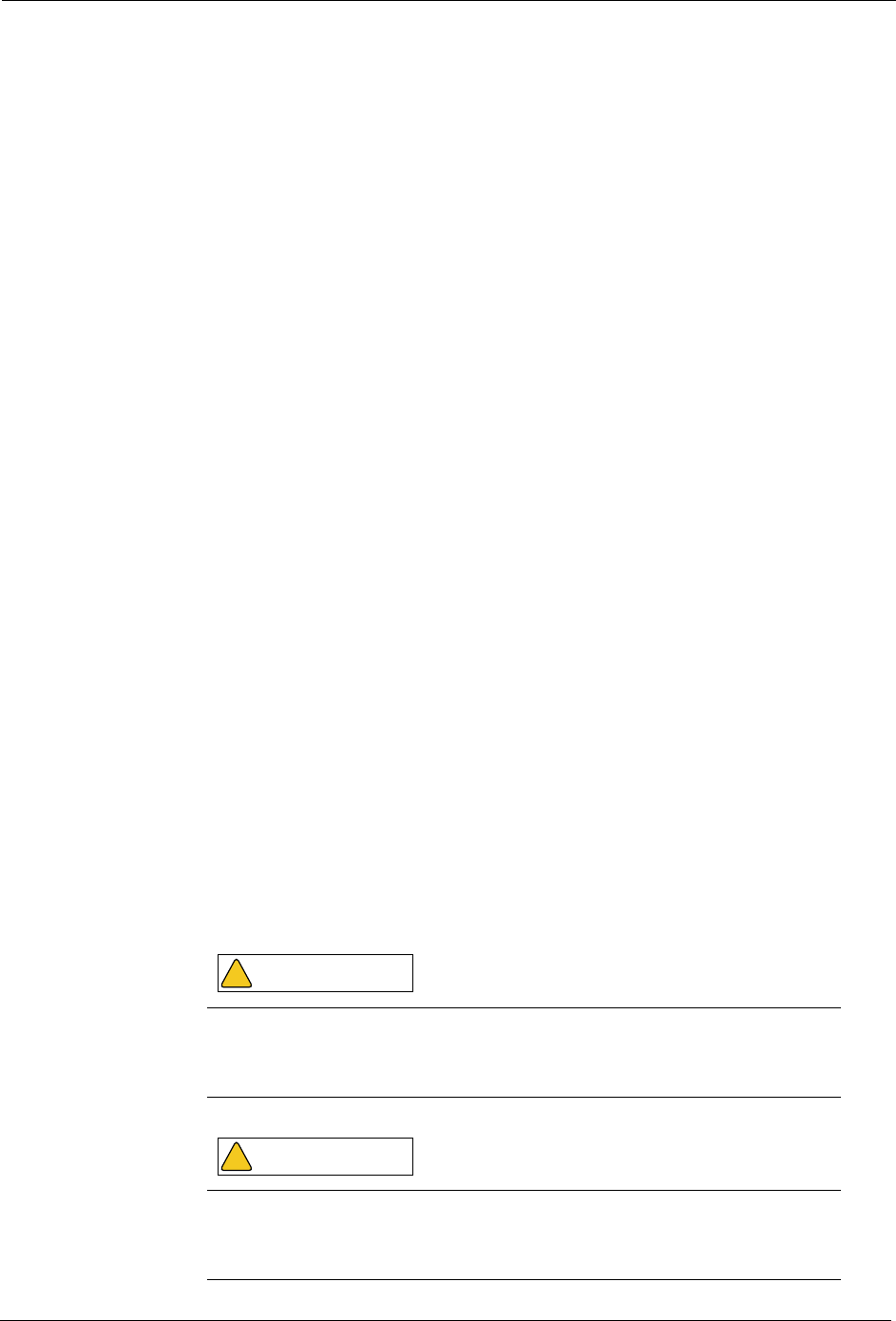
ARTIS Operator’s Manual
Cod. 6992200 - Rev. / 16-40
16.6 Preventive maintenance
To keep the machine in good and safe working order, a periodical
preventive maintenance of the Artis Dialysis System must be performed
both by the operator and by an authorized service technician.
The operator is responsible for a regular preventive maintenance of the
solely machine external surface, whereas the machine internal
components preventive maintenance must be performed exclusively by an
authorized service technician.
16.6.1 Preventive Maintenance performed by the operator
Depending on the ambient conditions, the frequency and the average
duration of daily use of the Artis Dialysis System, the operator is required
to perform periodical preventive maintenance procedures on the machine
external surface. In particular, the operator has to perform:
• External cleaning of the machine surface and outside components.
Refer to the “12.9 External Cleaning” section of this Operator’s Man-
ual for the procedures and agents to be used.
• External disinfection of the water inlet tube. Refer to the “12.8 Water
Inlet Tube disinfection” section of this Operator’s Manual for the
related procedure.
• External cleaning of the Touch Screen. Refer to the “12.9 External
Cleaning” section of this Operator’s Manual for the related procedure.
• Visual Inspection of the machine. Refer to the “12.11 Visual inspec-
tion” section of this Operator’s Manual for the related procedure.
• Cassette Panel O-Rings Inspection and Greasing. Refer “12.12 Cas-
sette Panel O-Rings Inspection and Greasing” section Inspection and
Greasing” of this Operator’s Manual for the related procedure.
• Replacement of the U9000 ultrafilters. Please refer to “7.18 Ultrafilter
Change Procedure” section of the Operator’s Manual.
No other maintenance procedures than those mentioned above
will be performed by the operator of the machine. The machine
panels must ONLY be opened by a fully trained service technician.
Stagnant water may contaminate the machine. If the machine is
stored for more than 7 days, the water tube should be disinfected
and rinsed before using it for treatment.
WARNING
!
WARNING
!
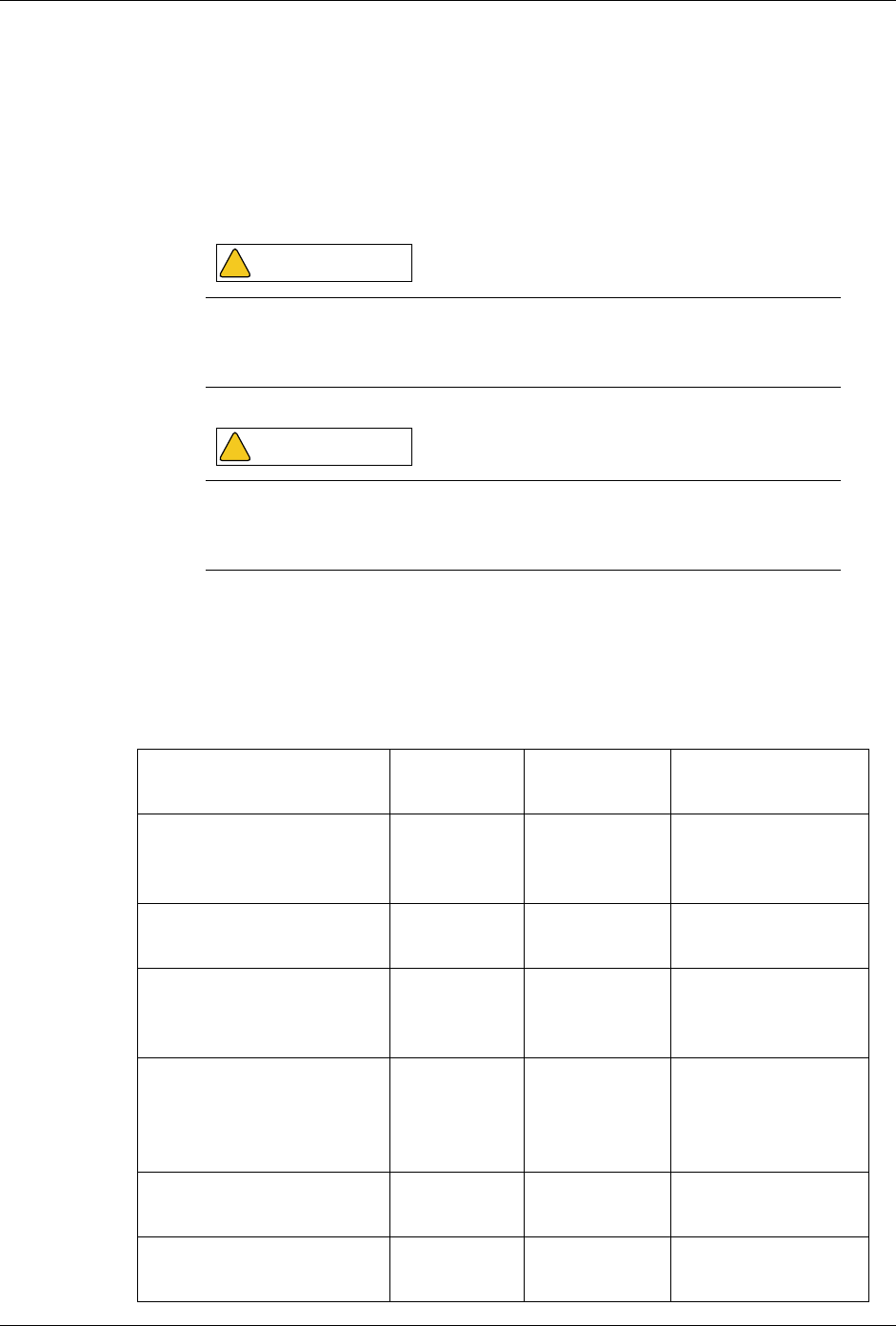
Chapter 16: Specifications
16-41 Cod. 6992200 - Rev. /
16.6.2 Preventive Maintenance performed by an authorized
service technician
The ambient conditions, the frequency and the average duration of daily use of
the Artis Dialysis System determine the maintenance frequency of the internal
machine components; however when a maximum of 4,000 working hours has
elapsed (or at least once a year) a technical preventive maintenance is required.
For a complete description of all the Technical Preventive Maintenance
Procedures as well as the replacement frequency of the single components, refer
to the “Preventive Maintenance” Section of the Artis Service Manual.
Please find below the list of the spare parts that have to be compulsorily replaced
at least once a year:
The manufacturer does not accept any responsibility for damages
caused by any operation carried out on the machine by
unauthorized staff.
Before replacing or checking any component in the Hydraulic
Circuit, a Descaling procedure (i.e. a Heat with CleanCart-C
disinfection) must be performed.
Part/Assembly Sparepart
code SparePart
Reference Replacement
Frequency
Acid and Bicarbonate
pick-up tube connectors
(male and female)
6987762 “Acid/Bic
Tube Conn
AE”
Once a year
Air filter 6988430 “Filter 50
Micron AE” Once a year
Blood Cassette pressure
pods
o-rings
6987747 “External O-
ring kit” Once a year
Electrovalves (EVC,
EVD, EV1S) 6962468 “2 Way
solenoid
Valve
Peek”
Once a year
EvaClean gasket 6987671 “EvaClean
Assy AE” Once a year
Filter (250u) 6988158 “Filter 250
Micron AE” Once a year
WARNING
!
WARNING
!
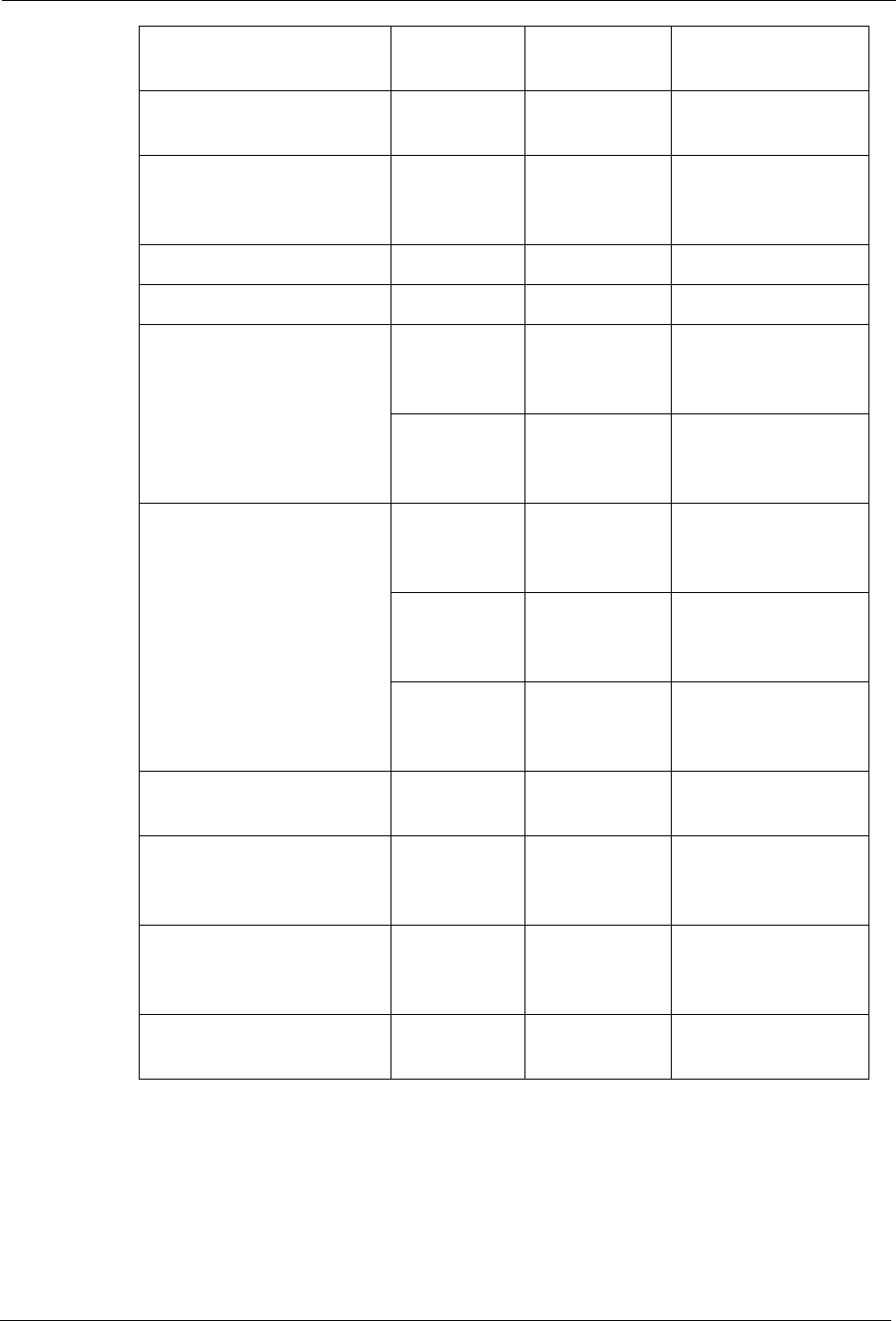
ARTIS Operator’s Manual
Cod. 6992200 - Rev. / 16-42
Filter (50u) 6988430 “Filter 50
Micron AE” Once a year
Heparin syringe plunger
lock 6988869 “Syringe
plung. lock
AE”
Once a year
pH probe 6985089 “pH probe” Once a year
PRV Pressure regulator 6987978 “PRV AE” Once a year
Red and Blue dialysis
fluid tube connectors
(male and female)
6988950 “Dial.
connectors
male AE”
Once a year
6988117 “Dial.
connectors
AE”
Once a year
Ultrafilter holder O-rings 6989537 “Ultrafilter
back holder
AE”
Once a year
6987903 “Ultrafilter
lower arms
AE”
Once a year
6988984 “Ultrafilter
upper holder
AE”
Once a year
BiCart Holder arms
Lower O-ring BiCart 6988125 “BiCart
Holder AE” Once a year
Ultra Port gasket 6987366 “Sensor Bar
Ultra Assy
AE”
Once a year
Yellow and clear
disinfectant connectors 6988026 “Yell/Clear
Disinf Conn
AE”
Once a year
SelectCart Holder arms
(not currently available) 6988786 “SelectCart
Holder AE” Every two years
Part/Assembly Sparepart
code SparePart
Reference Replacement
Frequency
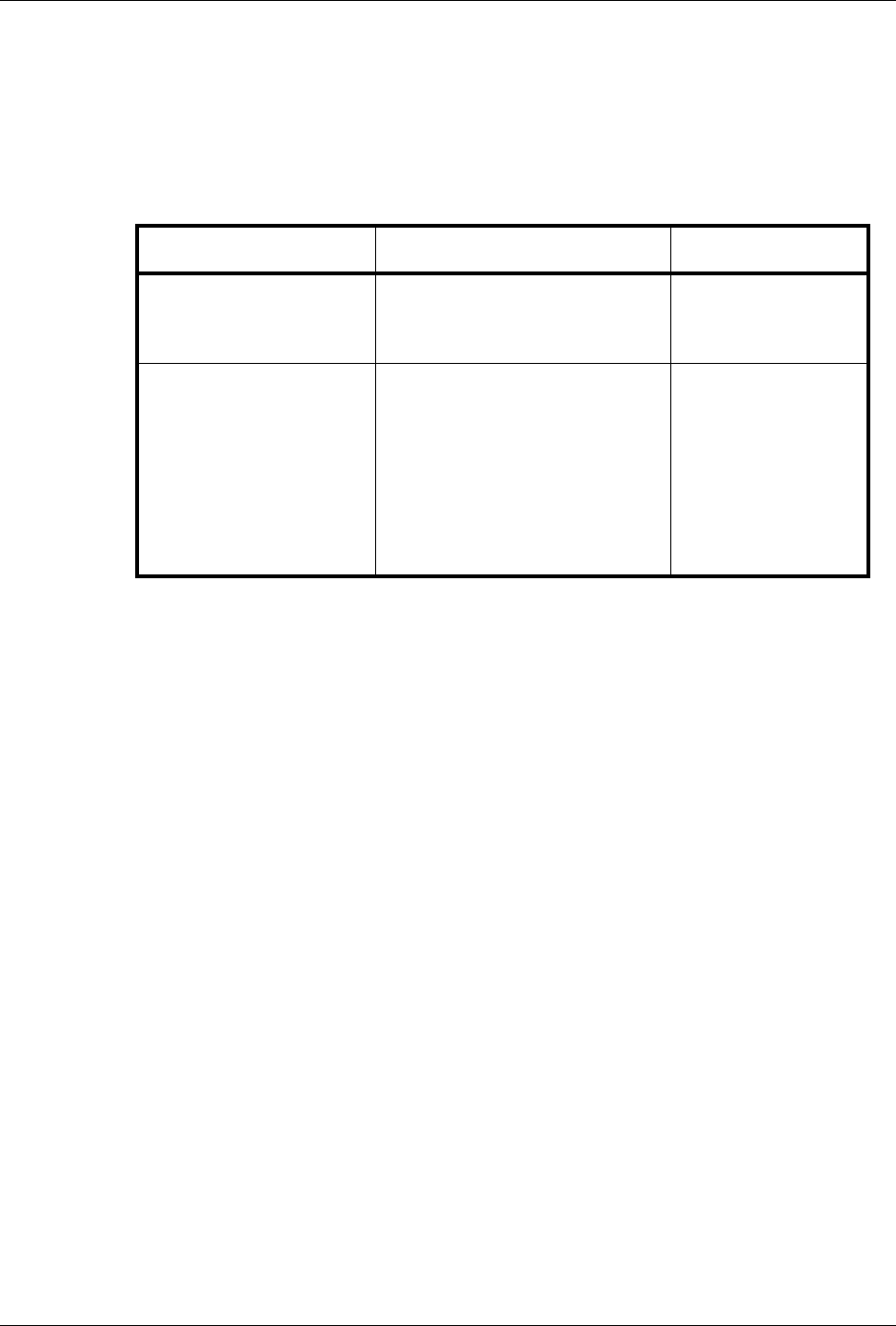
Chapter 16: Specifications
16-43 Cod. 6992200 - Rev. /
Periodic Safety Inspection
A safety inspection of the Artis Dialysis System is required at least once a year
and according to the local policies. Only trained and qualified technicians are
authorized to perform the safety inspection procedures. The inspection consists of
the following tests:
Parameter Performance Conditions
Earth Leakage Current
230/240V version
230/240V version < 300 uA (typically = 250 uA)
< 300 uA (typically = 180 uA)
Normal condition
Protective Earthing 0.2 ohm maximum Between the
protective earth
pin in the mains
plug and any
accessible metal
part that is
protectively
earthed.

ARTIS Operator’s Manual
Cod. 6992200 - Rev. / 16-44
16.7 Materials in contact with water, concentrates and dialysis fluid
AISI 303 steel PES (Polyetheresulphone)
AISI 304 steel PEX (Polyethylene)
AISI 904 L Platinum
Carbon Polycarbonate
Ceramic, Aluminium oxide (Al2O3) Polyurethane
Ceramic, Steatite 221 PP (Polypropylene reinforced with talcum)
Ceramic, Zirconium oxide (ZrO2) PP (Polypropylene)
Epoxy resin PPS (Polyphenysulphide)
Ethylene propylene PSU (Polysulphone)
Ferrite (Barium-Strontium-Ferrit) PTFE
Fiberglas reinforced polyamide PTFE (Polytetrafluoro ethylene)
Fiberglas reinforced polypropylene PVC (Polyvinylchloride)
Glass PVDF (Polyvinylidene fluoride)
Graphite Santroprene
LCP Silicon rubber
NBR Stainless steel SS2343
PEEK (Polyetherketone) Stainless steel SS2353
Peek + CF Stainless steel SS2562
Peek + GF Titanium
PPE + PS
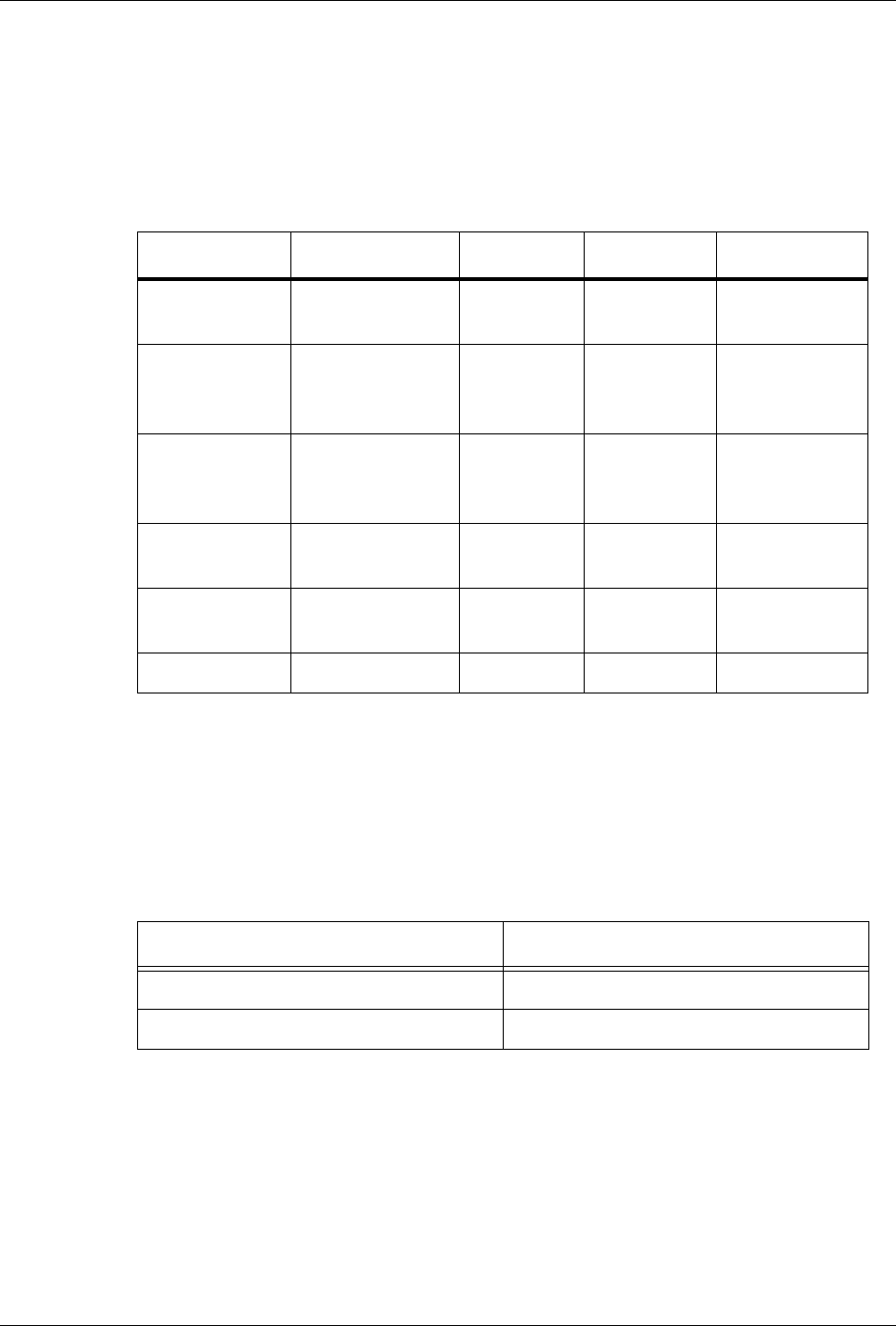
Chapter 16: Specifications
16-45 Cod. 6992200 - Rev. /
16.8 Diascan
The Diascan™ system will be available in the following treatment modes:
• Hemodialysis (DN)
• Isolated UF
Following the main specifications related to this functionality:
Accuracy is valid in HD double needle and on-line HDF postdilution, for blood
flows 200 to 500 ml/min and dialysis fluid flows 500 to 800 ml/min.
The conductivity of the dialysis fluid can be measured by the DIASCAN™ system
only if the following parameters fall in the indicated ranges:
Parameter Range Accuracy Resolution Conductivity
Ionic
Dialysance 0 to 500 ml/
min ±7 ml/mina
a.Accuracy Standard Error for a 4 hour dialysis.
1 ml/min /
Plasma
Sodium
Concentration
130 to 160
mmol/l ±3 mmol/la 1 mmol/l /
Plasma
Conduct. 13 to 16 mS/cm ± 0.05 mS/
cmb0.01 mS/
cm 13 to 16 mS/
cm (0.05 mS/
cm)
Ionic
Mass Bal -800 to 800
mmol (HD)b
b.Positive values correspond to solutes removed from the patient.
±25 mmola5 mmol -
Depurated
Vol 0 to 200 litres ±2 litresa 1.0 litres /
KT/V 0 to 3 - 0.1 /
Parameter Range
Temperature Range 30-45 °C
Conductivity Range 13 to 16 mS/cm (0.05 mS/cm)
This page is left intentionally blank
Cod. 6992200 - Rev. / 16-46
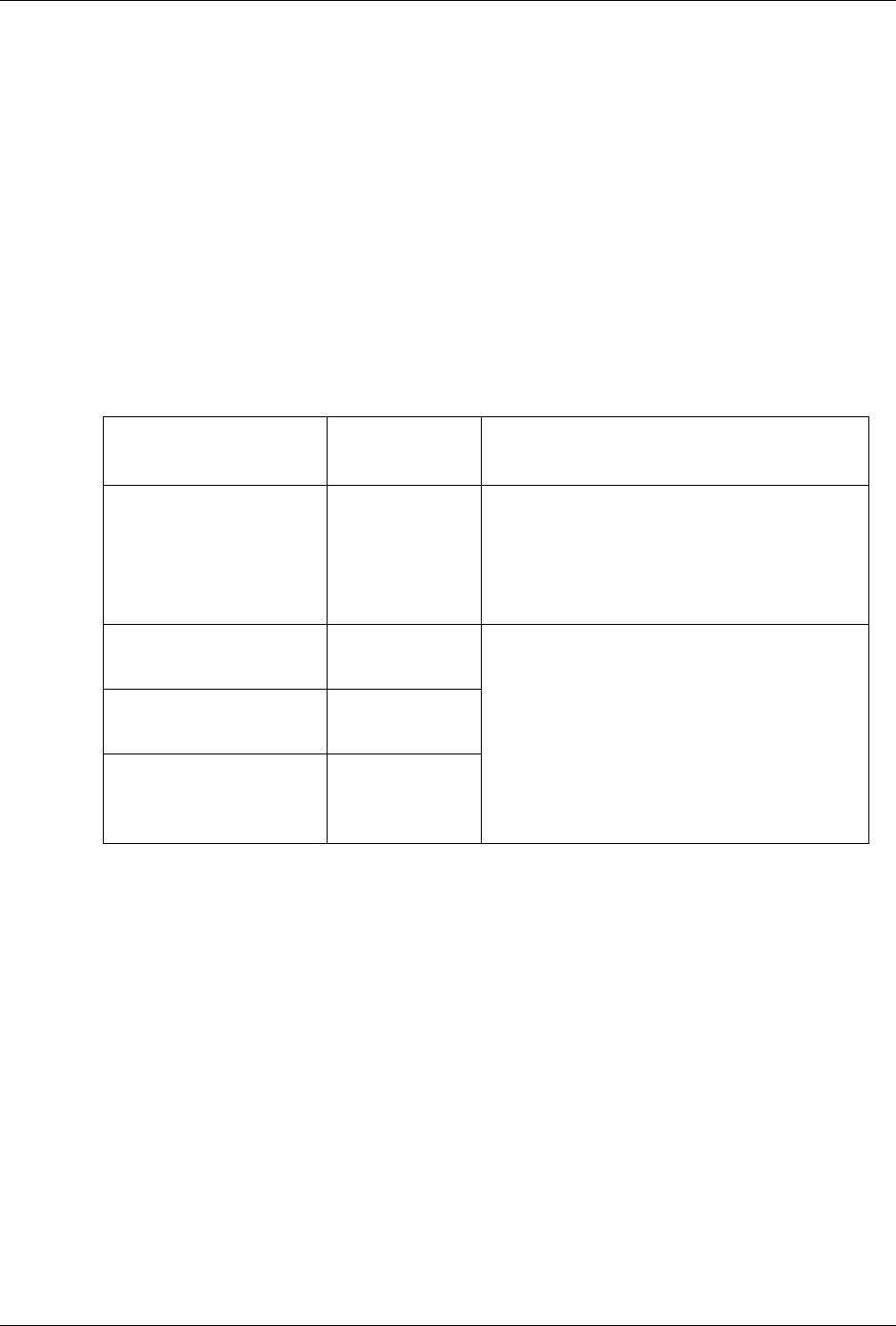
A-1
Appendix A: Guidelines and Manufacturer's
Declaration - Electromagnetic Emissions and
Immunity
A.1 Guidance and manufacturer's declaration
A.1.1 Electromagnetic emissions
The Artis Dialysis System is intended for use in the electromagnetic environment
specified in the table below.
The customer or the user of the Artis Dialysis System should assure that it is used
in such an environment.
Emission test Compliance Electromagnetic environment -
guidance
RF emission
CISPR 11 Group 1 Artis Dialysis System uses RF energy
only for its internal function. Therefore,
its RF emissions are very low and are
not likely to cause any interference in
nearby electronic equipment.
RF emission
CISPR 11 Class B The Artis Dialysis System is suitable for
use in all establishments, including
domestic establishments and those
directly connected to the public low-
voltage power supply network that
supplies buildings used for domestic
purposes.
Harmonic emissions
IEC 61000-3-2 Class A
Voltage fluctuations/
flicker emissions
IEC 61000-3-3
Complies

ARTIS Operator’s Manual
Cod. 6992200 - Rev. / A-2
A.1.2 Electromagnetic immunity
The Artis Dialysis System is intended for use in the electromagnetic environment
specified in the table below.
The customer or the user of the Artis Dialysis System should assure that it is used
in such an environment.
Electromagnetic immunity
Immunity test IEC 60601
test level Compliance
level Electromagnetic
environment -
guidance
Electrostatic
discharge (ESD)
IEC 61000-4-2
• ±6 KV contact
• ±8 KV air • ±6 KV contact
• ±8 KV air Floors should be wood,
concrete or ceramic tile.
If floors are covered with
synthetic material, the
relative humidity should
be at least 30%.
Electrical fast
transient / burst
IEC 61000-4-4
• ±2 KV for
power supply
lines
• ±1 KV for
input / output
lines
• ±2 KV for
power supply
lines
• ±1 KV for
input / output
lines
Mains power quality
should be that of a
typical commercial or
hospital environment.
Surge
IEC 61000-4-5 • 1 KV line(s) to
line(s)
• 2 KV line(s) to
earth
• 1 KV line(s) to
line(s)
• 2 KV line(s) to
earth
Mains power quality
should be that of a
typical commercial or
hospital environment.
Voltage dips,
short
interruptions
and voltage
variations on
power supply
input lines
IEC 61000-4-11
• <5 % UT (>95
% dip in UT)
for 0.5
cyclesa
• 40 % UT (60
% dip in UT)
for 5 cyclesa
• 70 % UT (30
% dip in UT)
for 25 cyclesa
• <5 % UT (>95
% dip in UT)
for 5 sa
• <5 % UT (>95
% dip in UT)
for 0.5 cyclesa
• 40 % UT (60
% dip in UT)
for 5 cyclesa
• 70 % UT (30
% dip in UT)
for 25 cyclesa
• <5 % UT (>95
% dip in UT)
for 5 sa
Mains power quality
should be that of a
typical commercial or
hospital environment. If
the user of the Artis
Dialysis System requires
continued operation
during power mains
interruptions, it is
recommended that the
Artis Dialysis System be
powered from an
uninterruptible power
supply or a battery.

Appendix A: Guidelines and Manufacturer's Declaration - Electromagnetic Emissions and
Immunity
A-3 Cod. 6992200 - Rev. /
Power
frequency (50/
60 Hz) magnetic
field
IEC 61000-4-8
• 3 A/m • 30 A/m Power frequency
magnetic fields should
be at levels
characteristic of a typical
location in a typical
commercial or hospital
environment.
a. UT is the a.c. mains voltage prior to application of the test level.
Electromagnetic immunity
Immunity test IEC 60601
test level Compliance
level Electromagnetic
environment -
guidance
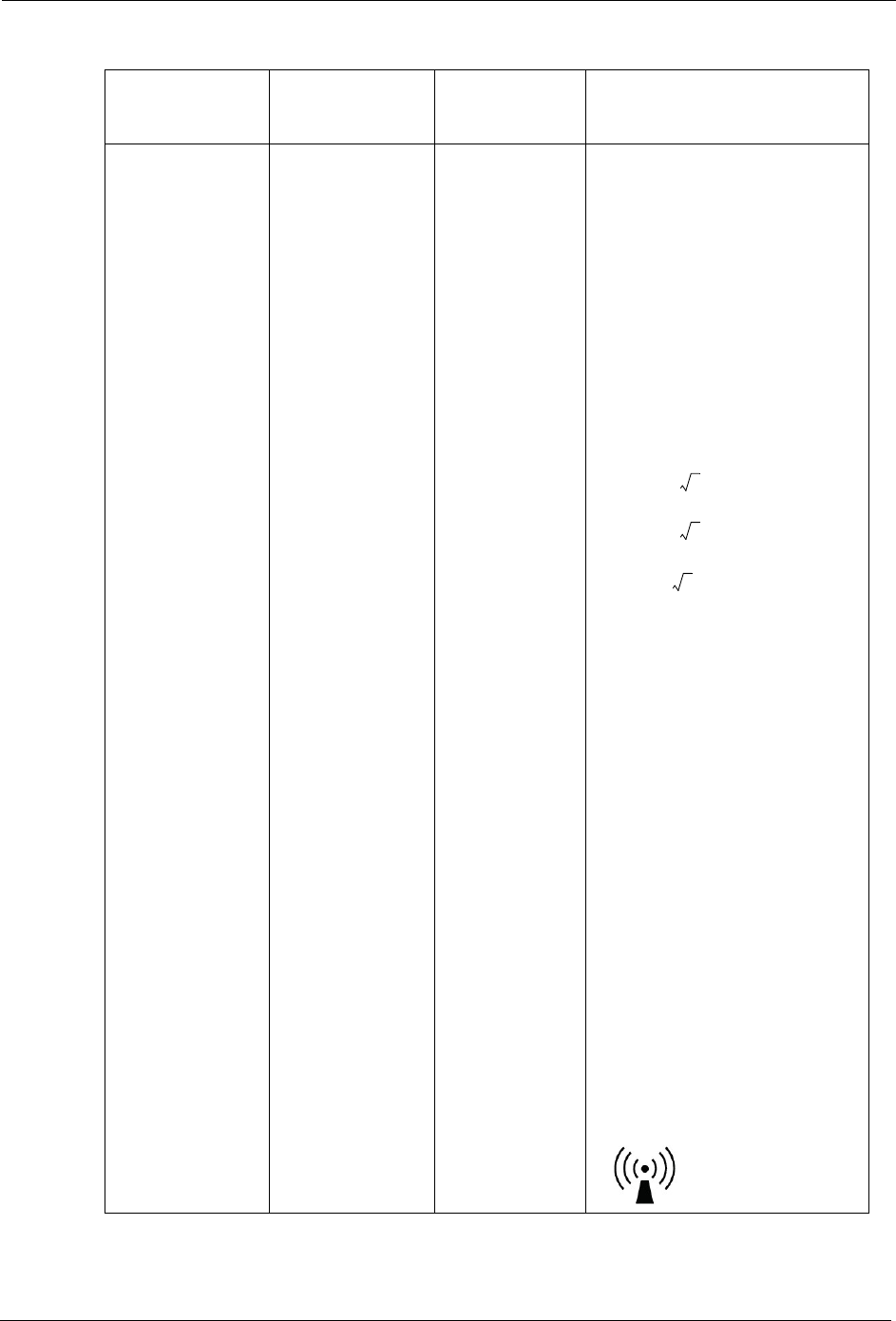
ARTIS Operator’s Manual
Cod. 6992200 - Rev. / A-4
Immunity test IEC 60601
test level Compliance
level Electromagnetic
environment guidance
Conducted RF
IEC 61000-4-6
Radiated RF
IEC 61000-4-3
• 3 Vrms
• 150 KHz to
80 MHz
• 3 V/m
• 80 MHz to 2.5
GHz
• 10 Vrms
• 10 V/m
Portable and mobile RF
communications equipment
should be used no closer to
any part of the Artis Dialysis
System including cables,
than the recommended
separation distance
calculated from the equation
applicable to frequency of
the transmitter.
Recommended separation
distance
d = 0.35
d = 0.35 80 MHz to 800
MHz
d = 0.7 800 MHz to 2.5
GHz
where P is the maximum
output power rating of the
transmitter in watts (W)
according to the transmitter
manufacturer and d is the
recommended separation
distance in metres (m).
Field strengths from fixed
RF transmitters, as
determined by an
electromagnetic site
surveya, should be less than
the compliance level in each
frequency rangeb.
Interference may occur in
the vicinity of equipment
marked with the following
symbol:
P
P
P
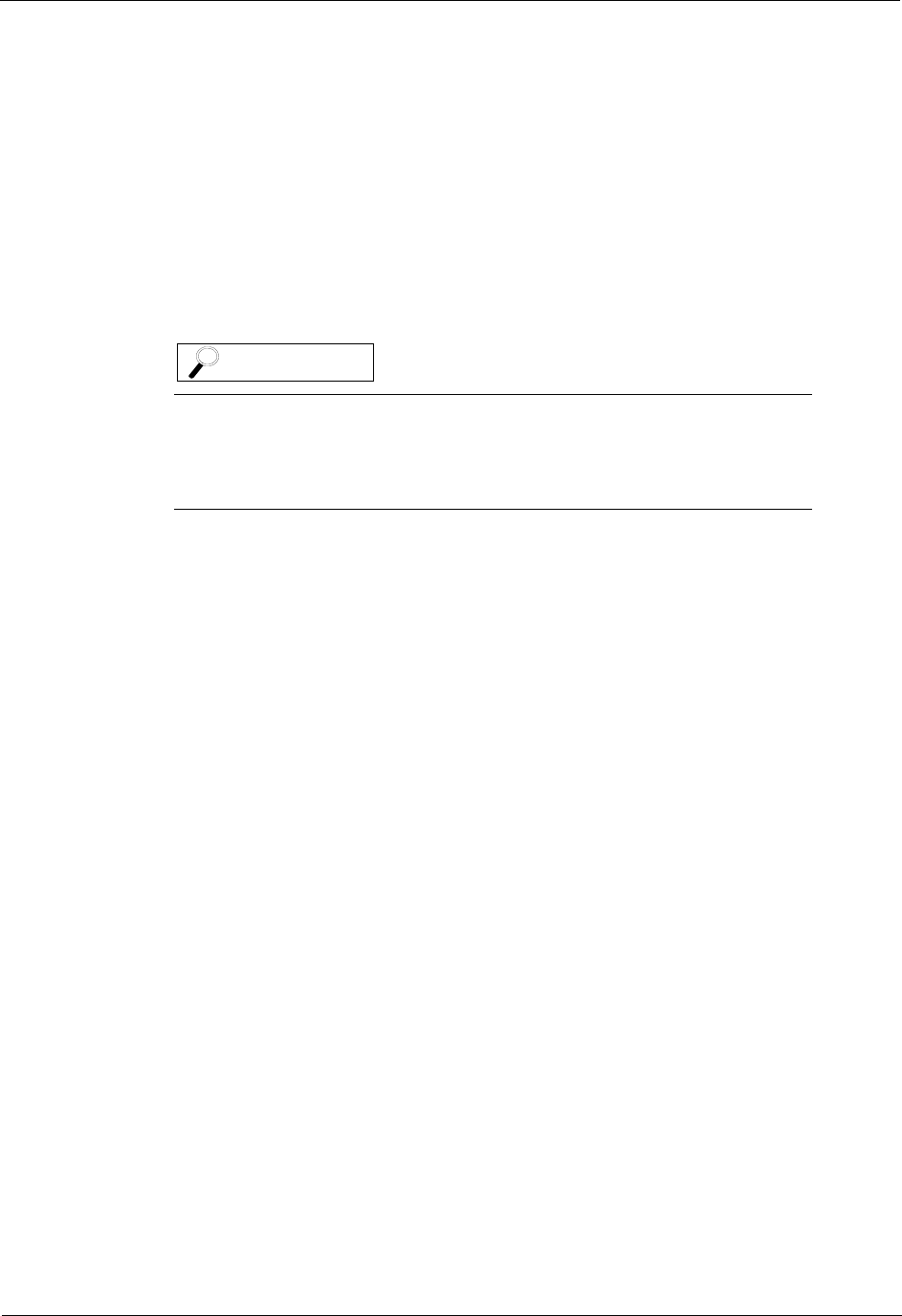
Appendix A: Guidelines and Manufacturer's Declaration - Electromagnetic Emissions and
Immunity
A-5 Cod. 6992200 - Rev. /
a. Field strengths from fixed transmitters, such as base stations for radio (cellular/
cordless) telephones and land mobile radios, amateur radio, AM and FM radio
broadcast and TV broadcast cannot be predicted theoretically with accuracy. To
asses the electromagnetic environment due to fixed transmitters, an
electromagnetic site survey should be considered. If the measured field strength
in the location in which the Artis Dialysis System is used exceeds the applicable
RF compliance level above, the Artis Dialysis System should be observed to
verify normal operation. If abnormal performance is observed, additional
measures may be necessary, such as reorienting or relocating the Artis Dialysis
System.
b. Over the frequency range 150 KHz to 80 MHz, field strength should be less than
10 V/m.
• At 80 MHz and 800 MHz, the higher frequency range applies.
• These guidelines may not apply in all situations. Electromagnetic
propagation is affected by absorption and reflection from
structures, objects and people.
NOTE
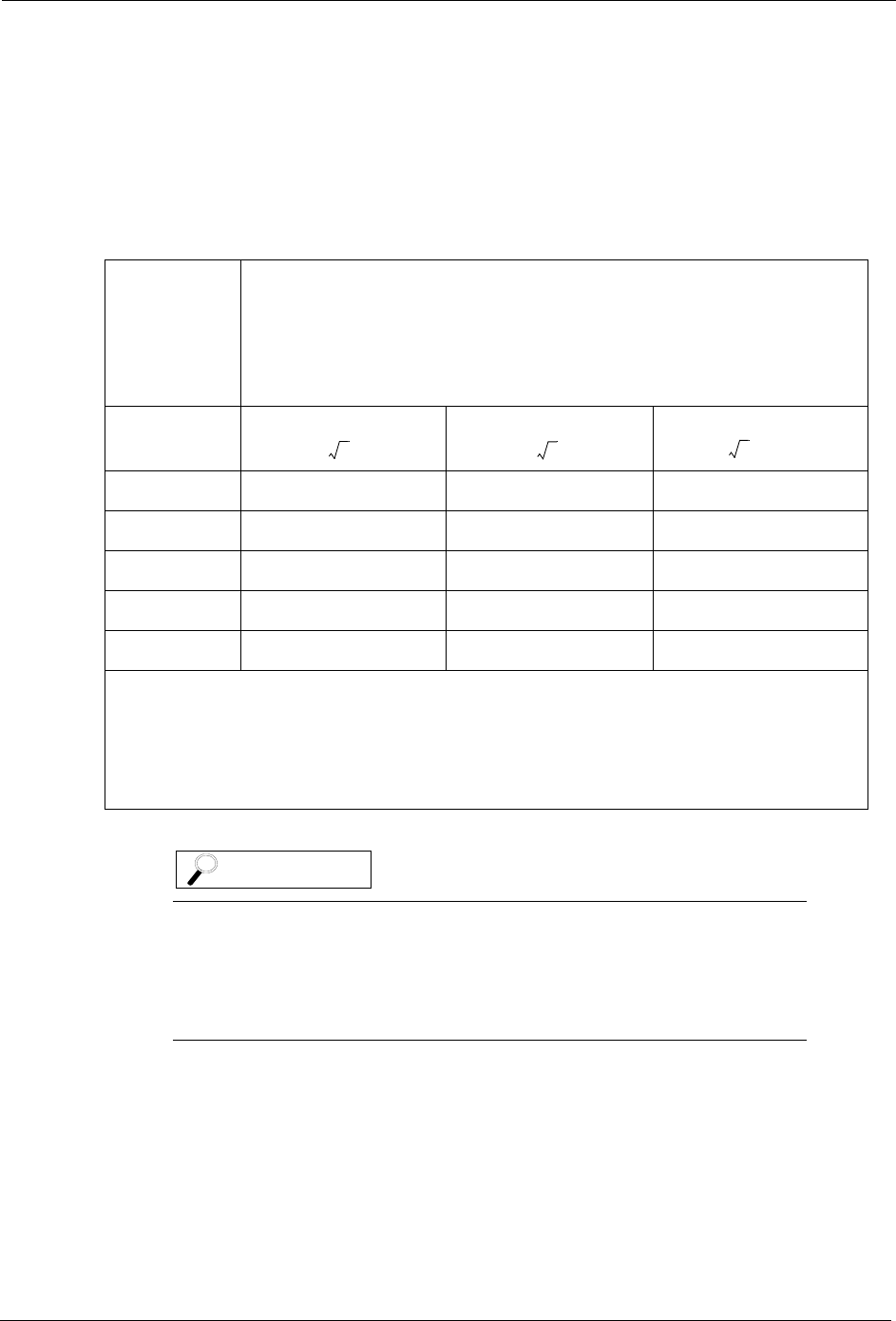
ARTIS Operator’s Manual
Cod. 6992200 - Rev. / A-6
A.2 Recommended separation distances between portable and
mobile RF communications equipment and Artis Dialysis System
Artis Dialysis System is intended for use in the electromagnetic environment
where radiated RF disturbances are controlled. The customer or the user of Artis
Dialysis System can help prevent electromagnetic interference by maintaining a
minimum distance between portable and mobile RF communications equipment
(transmitters) and Artis Dialysis System as recommended below, according to the
maximum output power of the communications equipment.
Rated
maximum
output
power of
transmitter
Separation distances according to frequency of transmitter
(m)
W150 KHz to 80 MHz
d = 0.35 80 MHz to 800 MHz
d = 0.35 800 MHz to 2.5 GHz
d = 0.7
0,01 0.04 0.04 0.07
0,1 0.11 0.11 0.22
1 0.35 0.35 0.70
10 1.11 1.11 2.21
100 3.50 3.50 7.00
For transmitters rated at maximum output power not listed above, the
recommended separation distance d in metres (m) can be estimated using the
equation applicable to the frequency of the transmitter, where P is the maximum
output power rating of the transmitter in watts (W) according to the transmitter
manufacturer.
• At 80 MHz and 800 MHz, the separation distance for the higher
frequency range applies.
• These guidelines may not apply in all situations. Electromagnetic
propagation is affected by absorption and reflection from
structures, object and people.
NOTE
PPP